Collective Investment
Schemes

COLL Contents
Collective Investment Schemes
COLL 1 Introduction
1.1 Applications and purpose
1.2 Types of authorised fund
COLL 2 Authorised fund applications
2.1 Authorised fund applications
COLL 3 Constitution
3.1 Introduction
3.2 The instrument constituting the fund
3.3 Units
COLL 4 Investor Relations
4.1 Introduction
4.2 Pre-sale notifications
4.3 Approvals and notifications
4.4 Meetings of Unitholders and service of notices
4.5 Reports and accounts
4.6 Simplified Prospectus provisions [deleted]
4.7 Key investor information and marketing communications
4.8 Notifications for UCITS master-feeder arrangements
4 Annex 1 Total expense ratio calculation [deleted]
4 Annex 2 Portfolio turnover calculation [deleted]
COLL 5 Investment and borrowing powers
5.1 Introduction
5.2 General investment powers and limits for UCITS schemes
5.3 Derivative exposure
5.4 Stock lending
5.5 Cash, borrowing, lending and other provisions
5.6 Investment powers and borrowing limits for non-UCITS retail schemes
5.7 Investment powers and borrowing limits for NURS operating as FAIFs
5.8 Investment powers and borrowing limits for feeder UCITS
■ Release 39 ● Aug 2024www.handbook.fca.org.ukCOLL–i

COLL Contents
COLL 6 Operating duties and responsibilities
6.1 Introduction and Application
6.2 Dealing
6.3 Valuation and pricing
6.4 Title and registers
6.5 Appointment and replacement of the authorised fund manager and the
depositary
6.6 Powers and duties of the scheme, the authorised fund manager, and the
depositary
6.6A Duties of AFMs in relation to UCITS schemes
6.6B UCITS depositaries
6.7 Payments
6.8 Income: accounting, allocation and distribution
6.9 Independence, names and UCITS business restrictions
6.10 Senior personnel responsibilities
6.11 Risk control and internal reporting
6.12 Risk management policy and risk measurement
6.13 Record keeping
6 Annex 2 UK UCITS management company of UCITS schemes: Derivative Use
Report (FSA042: UCITS)
6 Annex 3 Guidance notes on UK UCITS management company of UCITS schemes:
Derivative Use Report (FSA042: UCITS)
COLL 7 Suspension of dealings, termination of authorised funds and side
pockets
7.1 Introduction
7.2 Suspension and restart of dealings
7.3 Winding up a solvent ICVC and terminating or winding up a sub-fund of
an ICVC
7.4 Winding up an AUT and terminating a sub-fund of an AUT
7.4A Winding up a solvent ACS and terminating a sub-fund of a co-ownership
scheme
7.5 Schemes or sub-funds that are not commercially viable
7.6 Schemes of arrangement
7.7 UCITS mergers
7.8 Side pockets
7 Annex 1 Matters to be considered by the authorised fund manager before
creating a side pocket class
COLL 8 Qualified investor schemes
8.1 Introduction
8.2 Constitution
8.3 Investor relations
8.4 Investment and borrowing powers
8.5 Powers and responsibilities
8.6 Termination, suspension, and schemes of arrangement
8 Annex 2 ACS Qualified Investor Schemes: eligible investors
■ Release 39 ● Aug 2024 www.handbook.fca.org.uk COLL–ii

COLL Contents
COLL 9 Recognised schemes
9.1 Application and general information
9.3 Section 272 recognised schemes
9.4 Facilities in the United Kingdom for schemes recognised under section
272 of the Act
9.5 OFR recognised schemes
COLL 10 Fees
COLL 11 Master-feeder arrangements for UCITS schemes
11.1 Introduction
11.2 Approval of a feeder UCITS
11.3 Co-ordination and information exchange for master and feeder UCITS
11.4 Depositaries
11.5 Auditors
11.6 Winding up, merger and division of master UCITS
11 Annex 1 Contents of the standard master-feeder agreement
11 Annex 2 Contents of the internal conduct of business rules
COLL 12 Management company and product passports under the UCITS
Directive [deleted]
COLL 13 Operation of feeder NURS
13.1 Introduction
13.2 Operational requirements for feeder NURS
COLL 14 Charity authorised investment funds
14.1 Introduction
14.2 Registration with the Charity Commission
14.3 Advisory committee
14.4 Income allocation and distribution
COLL 15 Long-term asset funds
15.1 Introduction
15.2 Eligibility to act as the authorised fund manager
15.3 Constitution
15.4 Prospectus and other pre-sale notifications
15.5 Annual report and investor relations
15.6 Investment and borrowing powers
15.7 Powers and responsibilities of the authorised fund manager and the
depositary
■ Release 39 ● Aug 2024www.handbook.fca.org.ukCOLL–iii

COLL Contents
15.8 Valuation, pricing, dealing and income
15.9 Operational requirements for feeder LTAFs
15.10 Termination, suspension, and schemes of arrangement
15 Annex 1 ACS Long-term asset funds: Eligible investors
COLL
Appendix KII Regulation
Appendix 1UK
KII Regulation
COLL
Appendix 2 Modifications to the KII Regulation for KII-compliant NURS
Appendix 2 Modifications to the KII Regulation for KII-compliant NURS
Transitional provisions and Schedules
TP 1 Transitional Provisions
Sch 1 Record keeping requirements
Sch 2 Notification requirements
Sch 3 Fees and other required payments
Sch 4 Powers exercised
Sch 5 Rights of action for damages
Sch 6 Rules that can be waived
■ Release 39 ● Aug 2024 www.handbook.fca.org.uk COLL–iv

COLL Contents
■ Release 39 ● Aug 2024www.handbook.fca.org.ukCOLL–v

Collective Investment Schemes
Chapter 1
Introduction
■ Release 39 ● Aug 2024 www.handbook.fca.org.uk COLL 1/1
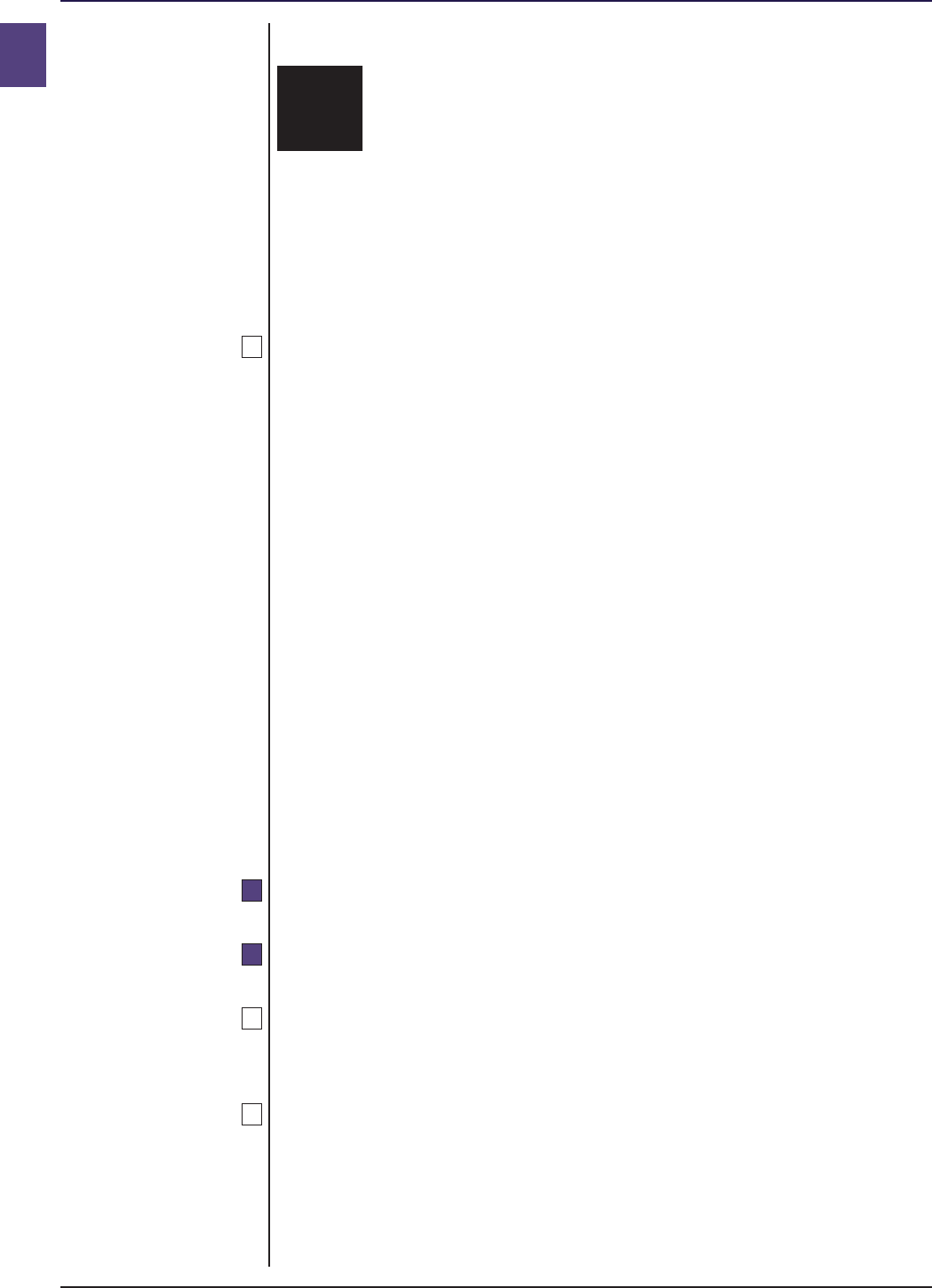
COLL 1 : Introduction Section 1.1
1
G1.1.1
R1.1.1A
R1.1.1B
G1.1.1C
G1.1.2
■ Release 39 ● Aug 2024www.handbook.fca.org.ukCOLL 1/2
1.1 Applications and purpose
Application
.....................................................................................................
(1) This sourcebook, except for ■ COLL 9 (Recognised schemes), applies to:
(a) investment companies with variable capital (ICVCs);
(b) ACDs, other directors and depositaries of ICVCs;
(c) managers and trustees of authorised unit trust schemes (AUTs);
and
(cA) authorised fund managers, depositaries and nominated partners
of authorised contractual schemes (ACSs).
(d) [deleted]
(2) ■ COLL 9 applies to operators of schemes that are recognised schemes
and to those seeking to secure recognised status for such schemes.
(3) ■ COLL 11.5 (Auditors) also applies to auditors of master UCITS and
feeder UCITS which are UCITS schemes.
(4) [deleted]
(5) ■ COLL TP 1.1(48) contains transitional provisions that apply in relation
to any scheme that will need to become a regulated money market
fund in accordance with the Money Market Funds Regulation, and
which operates as a scheme prior to 21 July 2018.
[deleted]
[deleted]
[deleted]
Purpose
.....................................................................................................
(1) The general purpose of this sourcebook is to contribute to the FCA
meeting its statutory objectives of the protection of consumers. It
provides a regime of product regulation for authorised funds, which
sets appropriate standards of protection for investors by specifying a
number of features of those products and how they are to be
operated.

COLL 1 : Introduction Section 1.1
1
G1.1.2A
G1.1.3
■ Release 39 ● Aug 2024 www.handbook.fca.org.uk COLL 1/3
(2) In addition, this sourcebook implemented part of the requirements of
the UCITS Directive relevant to authorised funds and management
companies, along with other requirements implemented in other
parts of the Handbook.
UCITS management company and product passport
.....................................................................................................
[deleted]
The Collective Investment Schemes Information Guide
.....................................................................................................
The Collective Investment Schemes Information Guide COLLG provides some
general background material on the regulatory structure surrounding
scheme regulation in the UK.

COLL 1 : Introduction Section 1.2 : Types of authorised fund
1
R1.2.1
G1.2.1A
G1.2.2
■ Release 39 ● Aug 2024www.handbook.fca.org.ukCOLL 1/4
1.2 Types of authorised fund
Types of authorised fund
.....................................................................................................
An application for an authorisation order must propose that the scheme be
one of the following types:
(1) a UCITS scheme;
(2) a non-UCITS retail scheme, including:
(a) a non-UCITS retail scheme operating as a fund of alternative
investment funds (FAIF); and
(b) a non-UCITS retail scheme which is an umbrella with sub-funds
operating as:
(i) FAIFs;
(ii) standard non-UCITS retail schemes; or
(iii) a mixture of (i) and (ii);
(3) a qualified investor scheme; or
(4) a long-term asset fund.
Umbrella schemes
.....................................................................................................
Any authorised fund, except for an ACS that is a limited partnership scheme,
may be structured as an umbrella with separate sub-funds.
[Note: article 1(2) second paragraph of the UCITS Directive]
Types of authorised fund - explanation
.....................................................................................................
(1) UCITS schemes must in particular comply with:
(a) ■ COLL 3.2.8 R (UCITS obligations); and
(b) the investment and borrowing powers rules for UCITS schemes set
out in ■ COLL 5.2 to ■ COLL 5.5 .
(2) (a) Non-UCITS retail schemes are schemes that do not comply with all
the conditions necessary to be a UCITS scheme.
(b) A non-UCITS retail scheme is an AIF and must be managed by an
AIFM.
(c) The UK may, under the legislation which implemented article 43
of AIFMD, impose stricter requirements on

COLL 1 : Introduction Section 1.2 : Types of authorised fund
1
■ Release 39 ● Aug 2024 www.handbook.fca.org.uk COLL 1/5
an AIFM or an AIF marketed to retail clients than the
requirements that apply to an AIF marketed only to professional
clients.
(d) This sourcebook contains the stricter requirements for an AIF
which is a non-UCITS retail scheme.
(e) A full-scope UK AIFM must also comply with the requirements in
FUND and any other applicable provisions of AIFMD.
(f) Non-UCITS retail schemes could become UCITS schemes, provided
they are changed, so as to comply with the necessary conditions.
(g) Non-UCITS retail schemes operating as FAIFs have wider powers
to invest in collective investment schemes than other non-UCITS
retail schemes.
(2A) A non-UCITS retail scheme may also be structured as an umbrella with
sub-funds operating as:
(a) FAIFs;
(b) standard non-UCITS retail schemes; or
(c) a mixture of (a) and (b).
In these cases, rules relating to investment powers and
borrowing limits apply to each sub-fund as they would to a
scheme.
(3) (a) Qualified investor schemes may be promoted only to:
(i) professional clients; and
(ii) retail clients who are sophisticated investors,
on the same terms as non-mainstream pooled investments (see
■ COBS 4.12B (Promotion of non-mass market investments)).
(b) A qualified investor scheme is an AIF and must be managed by an
AIFM.
(c) [deleted]
(d) This sourcebook contains the stricter requirements for an AIF
which is a qualified investor scheme.
(e) A full-scope UK AIFM must also comply with the requirements in
FUND and any other applicable provisions of AIFMD.
(f) Qualified investor schemes could change to become non-UCITS
retail schemes or UCITS schemes.
(3A) (a) A long-term asset fund may be promoted only to:
(i) professional clients; and
(ii) retail clients who are sophisticated investors, certified high
net worth investors, and those other retail clients to whom
units in long-term asset funds can be promoted without
contravening the rules in ■ COBS 4.12A (Promotion of
restricted mass market investments).
(b) A long-term asset fund is an AIF and must be managed by a full-
scope UK AIFM (see ■ COLL 15.2.2R (Authorised fund manager to
be a full-scope UK AIFM)).

COLL 1 : Introduction Section 1.2 : Types of authorised fund
1
R1.2.3
R1.2.4
G1.2.5
■ Release 39 ● Aug 2024www.handbook.fca.org.ukCOLL 1/6
(c) Under the Act and the UK AIFM regime, the FCA is able to
impose stricter requirements on an AIFM or an AIF marketed to
retail clients than the requirements that apply to an AIF
marketed only to professional clients. This sourcebook contains
stricter requirements for an AIF which is a long-term asset fund.
(d) A full-scope UK AIFM must also comply with the requirements in
FUND and any other applicable provisions of the UK AIFM
regime.
(e) A long-term asset fund could change to become a qualified
investor scheme, a non-UCITS retail scheme or a UCITS scheme,
provided it complies with the necessary conditions. The
authorised fund manager of an LTAF may need to make
significant changes to the LTAF’s constitution, objectives and
investment powers for it to become a UCITS scheme or a non-
UCITS retail scheme.
(f) A qualified investor scheme could become authorised as a long-
term asset fund if the authorised fund manager operates, or
proposes to operate, the scheme in accordance with the rules in
■ COLL 15 (Long-term asset funds).
(g) The nature of the assets that are held (or expected to be held) by
a long-term asset fund means that it will not be able to seek
authorisation as a regulated money market fund, or to have the
characteristics of such a fund without significant changes to its
constitution, objectives and investment powers. See also article 6
of the Money Market Funds Regulation.
(4) The changes referred to in (2), (3) and (3A) require approval by the
FCA.
UCITS schemes
.....................................................................................................
A UCITS scheme is deemed to be established in the United Kingdom,
irrespective of whether it has been established under the laws of England
and Wales, Scotland or Northern Ireland.
[Note: article 4 of the UCITS Directive]
Master UCITS
.....................................................................................................
A master UCITS that has two or more feeder UCITS as its only unitholders
satisfies the requirement that a UCITS scheme must invest capital raised from
the public.
[Note: article 58(4) of the UCITS Directive]
Pension feeder funds
.....................................................................................................
(1) Except for (2), all provisions of the Handbook that apply:
(a) to a feeder UCITS are also applicable to a pension feeder fund
that is constituted as a UCITS scheme; and

COLL 1 : Introduction Section 1.2 : Types of authorised fund
1
■ Release 39 ● Aug 2024 www.handbook.fca.org.uk COLL 1/7
(b) to a feeder NURS are also applicable to a pension feeder fund
that is constituted as a non-UCITS retail scheme.
(2) A pension feeder fund may not invest in units of an EEA UCITS
scheme unless that scheme is a recognised scheme (see ■ COLL 5.6.27R
and ■ COLL 5.8.2AR).

COLL 1 : Introduction Section 1.2 : Types of authorised fund
1
■ Release 39 ● Aug 2024www.handbook.fca.org.ukCOLL 1/8

Collective Investment Schemes
Chapter 2
Authorised fund applications
■ Release 39 ● Aug 2024 www.handbook.fca.org.uk COLL 2/1

COLL 2 : Authorised fund Section 2.1 : Authorised fund applications
applications
2
R2.1.1
G2.1.2
G2.1.3
D2.1.4
■ Release 39 ● Aug 2024www.handbook.fca.org.ukCOLL 2/2
2.1 Authorised fund applications
Application
.....................................................................................................
This chapter applies to any person seeking to arrange for the authorisation
of a scheme.
Purpose
.....................................................................................................
This chapter helps in achieving the statutory objectives of protecting
consumers by ensuring that any application for authorisation of a fund
meets certain standards.
Explanation
.....................................................................................................
(1) This chapter sets out the requirements that a person must follow in
applying for an authorisation order for a scheme under regulation 12
of the OEIC Regulations (Applications for authorisation), section 242
of the Act (Applications for authorisation of unit trust schemes) or
section 261C of the Act (Applications for authorisation of contractual
schemes).
(2) ■ COLLG 3A (The FCA’s responsibilities under the Act) and ■ COLLG 4A
(The FCA’s responsibilities under the OEIC Regulations) provide more
information on what the Act and the OEIC Regulations require in
relation to ongoing notifications to the FCA.
Specific requirements on application
.....................................................................................................
An application for an authorisation order in respect of an authorised fund
must be:
(1) in writing in the manner directed and contain the information
required in the application form available from the FCA;
(2) addressed for the attention of a member of FCA staff responsible for
collective investment scheme authorisation matters; and
(3) delivered to the FCA'saddress by one of the following methods:
(a) posting; or
(b) leaving it at the FCA's address and obtaining a time-stamped
receipt; or
(c) delivery by hand to a member of FCA staff responsible for
collective investment scheme authorisation matters.

COLL 2 : Authorised fund Section 2.1 : Authorised fund applications
applications
2
G2.1.5
■ Release 39 ● Aug 2024 www.handbook.fca.org.uk COLL 2/3
[deleted]

COLL 2 : Authorised fund Section 2.1 : Authorised fund applications
applications
2
■ Release 39 ● Aug 2024www.handbook.fca.org.ukCOLL 2/4

Collective Investment Schemes
Chapter 3
Constitution
■ Release 39 ● Aug 2024 www.handbook.fca.org.uk COLL 3/1

COLL 3 : Constitution Section 3.1 : Introduction
3
R3.1.1
G3.1.2
■ Release 39 ● Aug 2024www.handbook.fca.org.ukCOLL 3/2
3.1 Introduction
Application
.....................................................................................................
This chapter applies to:
(1) an authorised fund manager of an AUT, ACS or an ICVC;
(2) any other director of an ICVC;
(3) a depositary of an AUT, ACS or an ICVC; and
(4) an ICVC,
where the AUT, ACS or ICVC is a UCITS scheme or a non-UCITS retail scheme.
Purpose
.....................................................................................................
This chapter assists in achieving the statutory objective of protecting
consumers. In particular:
(1) ■ COLL 3.2 (The instrument constituting the fund) contains
requirements about provisions which must be included in the
instrument constituting the fund to give a similar degree of
protection for investors in an ICVC, AUT or ACS; and
(2) ■ COLL 3.3 (Units) provides rules and guidance which deal with the
classes of units to ensure that investors in each class are treated
equally.

COLL 3 : Constitution Section 3.2 : The instrument constituting the
fund
3
R3.2.1
R3.2.2
R3.2.3
■ Release 39 ● Aug 2024 www.handbook.fca.org.uk COLL 3/3
3.2 The instrument constituting the
fund
Application
.....................................................................................................
This section applies to:
(1) an authorised fund manager of an AUT, ACS or ICVC;
(2) any other director of an ICVC;
(3) a depositary of an AUT, ACS or an ICVC;
(4) an ICVC; and
(5) a nominated partner;
except ■ COLL 3.2.8 R(UCITS obligations), which applies only to an ICVC or to
the authorised fund manager of an AUT or ACS where the ICVC, AUT or ACS
is a UCITS scheme.
Relationship between the instrument constituting the fund and
the rules
.....................................................................................................
(1) The instrument constituting the fund must not contain any provision
that:
(a) conflicts with any applicable rule;
(b) prevents units in the scheme being marketed in the United
Kingdom; or
(c) is unfairly prejudicial to the interests of unitholders generally or
to the unitholders of any class of units.
(2) Any power conferred by the rules on the ICVC, the authorised fund
manager, any other director of the ICVC, or the depositary, whether
in a sole or joint capacity, is subject to any restriction in the
instrument constituting the fund.
The trust deed for AUTs
.....................................................................................................
An AUT must be constituted by a trust deed made between the manager
and the trustee.

COLL 3 : Constitution Section 3.2 : The instrument constituting the
fund
3
R3.2.3A
R3.2.4
G3.2.5
R3.2.6
■ Release 39 ● Aug 2024www.handbook.fca.org.ukCOLL 3/4
The contractual scheme deed for ACSs
.....................................................................................................
An ACS must be constituted by a contractual scheme deed made between
the authorised contractual scheme manager and:
(1) the depositary, in the case of a co-ownership scheme; or
(2) the nominated partner, in the case of a limited partnership scheme.
Matters which must be included in the instrument constituting
the fund
.....................................................................................................
The statements and provisions required by ■ COLL 3.2.6 R (Table: contents of
the instrument constituting the fund) must be included in the instrument
constituting the fund, where appropriate.
The instrument constituting the fund: OEIC Regulations,
Contractual Scheme Regulations and trust law requirements
.....................................................................................................
(1) Several of the matters set out in ■ COLL 3.2.6 R are required to be
included in the instrument constituting the fund under the OEIC
Regulations, Contractual Scheme Regulations or as a consequence of
relevant trust law. In addition, further statements are required if the
scheme or the authorised fund manager are to take advantage of the
powers under the rules in this sourcebook.
(2) Additional matters which are not contained in ■ COLL 3.2.6 R may be
required to be included in the instrument constituting the fund in
order to comply with the OEIC Regulations, (particularly Schedule 2 -
Instrument of Incorporation), Contractual Scheme Regulations and for
the purposes of making the scheme eligible under relevant tax,
pensions, or charities legislation.
Table: contents of the instrument constituting the fund
.....................................................................................................
This table belongs to ■ COLL 3.2.4 R (Matters which must be included in the
instrument constituting the fund).
Name of scheme
1 A statement of:
(1) the name of the authorised fund; and
(2) whether the authorised fund is a UCITS scheme or a non-UC-
ITS retail scheme.
Investment powers in eligible markets
2 A statement that, subject to any restriction in the rules in this
sourcebook or the instrument constituting the fund, the scheme
has the power to invest in any eligible securities market or deal on
any eligible derivatives market to the extent that power to do so is
conferred by COLL 5 (Investment and borrowing powers).
Unitholder's liability to pay
3 A provision that a unitholder in an AUT, ICVC or co-ownership
scheme is not liable to make any further payment after he has
paid the price of his units and that no further liability can be im-
posed on him in respect of the units which he holds.

COLL 3 : Constitution Section 3.2 : The instrument constituting the
fund
3
■ Release 39 ● Aug 2024 www.handbook.fca.org.uk COLL 3/5
3A A provision that a unitholder in a limited partnership scheme is
not liable for the debts or obligations of the limited partnership
scheme beyond the amount of the scheme property which is avail-
able to the authorised contractual scheme manager to meet such
debts or obligations, provided that the unitholder does not take
part in the management of the partnership business.
3B A provision that the exercise of rights conferred on limited part-
ners by FCA rules does not constitute taking part in the manage-
ment of the partnership business.
Base currency
4 A statement of the base currency of the scheme.
Valuation and pricing
5 A statement setting out the basis for the valuation and pricing of
the scheme.
Duration of the scheme
6 If the scheme is to be wound up after a particular period expires, a
statement to that effect.
Object of the scheme
7 A statement:
(1) as to the object of the scheme, in particular the types of in-
vestments and assets in which it and each sub-fund (where
applicable) may invest; and
(2) that the object of the scheme is to invest in property of
that kind with the aim of spreading investment risk and giv-
ing unitholders the benefits of the results of the manage-
ment of that property.
7A Where the authorised fund is a qualifying money market fund, a
statement to that effect and a statement that the authorised
fund's investment objectives and policies will meet the conditions
specified in the definition of qualifying money market fund.
[deleted]
Government and public securities: investment in one issuer
8 Where relevant, for a UCITS scheme, a statement in accordance
with COLL 5.2.12 R (Spread: government and public securities) with
the names of the individual states, local authorities or public inter-
national bodies issuing or guaranteeing the transferable securities
or approved money-market instruments in which more than 35%
in value of the scheme property may be invested.
Classes of unit
9 A statement:
(1) specifying the classes of unit that may be issued, and for a
scheme which is an umbrella, the classes that may be issued
in respect of each sub-fund; and
(2) if the rights of any class of unit differ, a statement describ-
ing those differences in relation to the differing classes.
Authorised fund manager's charges and expenses
10 A statement setting out the basis on which the authorised fund
manager may make a charge and recover expenses out of the
scheme property.
Issue or cancellation directly through the ICVC or depositary of an
AUT or ACS

COLL 3 : Constitution Section 3.2 : The instrument constituting the
fund
3
■ Release 39 ● Aug 2024www.handbook.fca.org.ukCOLL 3/6
11 Where relevant, a statement authorising the issue or cancellation
of units to take place through the ICVC or depositary of an AUT or
ACS directly.
In specie issue and cancellation
12 Where relevant, a statement authorising payment for the issue or
cancellation of units to be made by the transfer of assets other
than cash.
Restrictions on sale and redemption
13 Where relevant, the restrictions which will apply in relation to the
sale and redemption of units under COLL 6.2.16 R (Sale and re-
demption).
Voting at meetings
14 The manner in which votes may be given at a meeting of unithold-
ers under COLL 4.4.8 R (Voting rights).
Certificates
15 A statement authorising the person responsible for the register to
charge for issuing any document recording, or for amending, an
entry on the register, other than on the issue or sale of units.
Income
16 A statement setting out the basis for the distribution or re-invest-
ment of income.
Income equalisation
17 Where relevant, a provision for income equalisation.
Redemption or cancellation of units on breach of law or rules
18 A statement that where any holding of units by a unitholder is (or
is reasonably considered by the authorised fund manager to be) an
infringement of any law, governmental regulation or rule, those
units must be redeemed or cancelled.
ICVCs: larger and smaller denomination shares
19 A statement of the proportion of a larger denomination share rep-
resented by a smaller denomination share for any relevant unit
class.
ICVCs: resolution to remove a director
20 A statement that the ICVC may (without prejudice to the require-
ments of regulation 21 of the OEIC Regulations (The Authority's ap-
proval for certain changes in respect of a company), by a resolu-
tion passed by a simple majority of the votes validly cast for and
against the resolution at a general meeting of unitholders, remove
a director before his period of office expires, despite anything else
in the ICVC's instrument of incorporation or in any agreement be-
tween the ICVC and that director.
ICVCs: unit transfers
21 A statement that the person designated for the purposes of para-
graph 4 of Schedule 4 to the OEIC Regulations (Share transfers) is
the person who, for the time being, is the ACD of the ICVC.
ICVCs and ACSs: Charges and expenses
22 A statement that charges or expenses of the ICVCor ACS may be
taken out of the scheme property.

COLL 3 : Constitution Section 3.2 : The instrument constituting the
fund
3
■ Release 39 ● Aug 2024 www.handbook.fca.org.uk COLL 3/7
ICVCs: Umbrella schemes - principle of limited recourse
22A For an ICVC which is an umbrella, a statement that the assets of a
sub-fund belong exclusively to that sub-fund and shall not be used
to discharge directly or indirectly the liabilities of, or claims
against, any other person or body, including the umbrella, or any
other sub-fund, and shall not be available for any such purpose.
Co-ownership schemes: umbrella schemes - principle of limited
recourse
22B For a co-ownership scheme which is an umbrella, a statement that
the property subject to a sub-fund is beneficially owned by the par-
ticipants in that sub-fund as tenants in common (or, in Scotland, is
the common property of the participants in that sub-fund) and
must not be used to discharge any liabilities of, or meet any claims
against, any person other than the participants in that sub-fund.
AUTs: governing law for a trust deed
23 A statement that the trust deed is made under and governed by
the law of England and Wales, Wales or Scotland or Northern
Ireland.
AUTs: trust deed to be binding and authoritative
24 A statement that the trust deed:
(1) is binding on each unitholder as if it had been a party to it
and that it is bound by its provisions; and
(2) authorises and requires the trustee and the manager to do
the things required or permitted of them by its terms.
AUTs: declaration of trust
25 A declaration that, subject to the provisions of the trust deed and
all rules made under section 247 of the Act (Trust scheme rules)
and for the time being in force:
(1) the scheme property (other than sums standing to the
credit of the distribution account) is held by the trustee on
trust for the unitholders according to the number of units
held by each unitholder or, where relevant, according to
the number of undivided shares in the scheme property rep-
resented by the units held by each unitholder; and
(2) the sums standing to the credit of the distribution account
are held by the trustee on trust to distribute or apply them
in accordance with COLL 6.8 (Income: accounting, allocation
and distribution).
AUTs: trustee's remuneration
26 Where relevant, a statement authorising payments to the trustee
by way of remuneration for its services to be paid (in whole or in
part) out of the scheme property.
AUTs: responsibility for the register
27 A statement identifying the person responsible under the rules for
the maintenance of the register.
ACSs: governing law for a contractual scheme deed
27A A statement that the contractual scheme deed is made under and
governed by the law of England and Wales, or Scotland or North-
ern Ireland.
ACSs: contractual scheme deed to be binding and authoritative
27B A statement that the contractual scheme deed:
(1) is binding on each unitholder as if it had been a party to it
and that it is bound by its provisions; and

COLL 3 : Constitution Section 3.2 : The instrument constituting the
fund
3
■ Release 39 ● Aug 2024www.handbook.fca.org.ukCOLL 3/8
(2) authorises and requires the depositary and the authorised
contractual manager to do the things required or permitted
of them by its terms.
ACSs: ownership of scheme property
27C A statement that, subject to the provisions of the contractual
scheme deed and all rules made under section 261I of the Act (Con-
tractual scheme rules) and for the time being in force:
(1) the scheme property (other than sums standing to the
credit of the distribution account) is held by, or to the order
of, the depositary for and on behalf of the unitholders ac-
cording to the number of units held by each unitholder or,
where relevant, according to the number of undivided
shares in the scheme property represented by the units held
by each unitholder;
(2) the sums standing to the credit of the distribution account
are held by the depositary to distribute or apply them in ac-
cordance with COLL 6.8 (Income: accounting, allocation and
distribution); and
(3) the scheme property of a co-ownership scheme is benefi-
cially owned by the participants as tenants in common (or,
in Scotland, is the common property of the participants).
ACSs: responsibility for the register
27D A statement identifying the person responsible under the rules for
the maintenance of the register.
ACSs: UCITS and NURS eligible investors
27E For an ACS which is a UCITS scheme or a non-UCITS retail scheme,
a statement that units may not be issued to a person other than a:
(1) professional ACS investor;
(2) large ACS investor; or
(3) person who already holds units in the scheme.
27F A statement that the authorised contractual scheme manager must
redeem units as soon as practicable after becoming aware that
those units are vested in anyone (whether as a result of subscrip-
tion or transfer of units) other than a person meeting the criteria
in paragraph 27E.
ACSs: UCITS and NURS transfer of units
27G (1) A statement whether the transfer of units in the ACS
scheme is either:
(a) prohibited; or
(b) allowed
(2) Where transfer of units is allowed in accordance with (1)(b),
a statement that units may only be transferred in accord-
ance with the conditions specified by FCA rules, including
that units may not be transferred to a person other than a:
(a) professional ACS investor;
(b) large ACS investor; or
(c) person who already holds units in the scheme.
(3) For a co-ownership scheme which is an umbrella, a state-
ment in accordance with (1)(a) or (1)(b) and, where appro-
priate, a statement in accordance with (2), must also be
made for the sub-funds. Where individual sub-funds have
differing policies in relation to transfer of units, separate
statements are required.

COLL 3 : Constitution Section 3.2 : The instrument constituting the
fund
3
■ Release 39 ● Aug 2024 www.handbook.fca.org.uk COLL 3/9
Co-ownership schemes: constitution
27H For a co-ownership scheme, a statement that the arrangements
constituting the scheme are intended to constitute a co-ownership
scheme as defined in section 235A(2) of the Act.
Co-ownership schemes: operator's powers
27I A statement that the operator of a co-ownership scheme is au-
thorised to:
(1) acquire, manage and dispose of the scheme property; and
(2) enter into contracts which are binding on unitholders for
the purposes of, or in connection with, the acquisition, man-
agement or disposal of scheme property.
Co-ownership schemes: winding-up
27J A statement that the operator and depositary of a co-ownership
scheme are required to wind up the scheme if directed to do so by
the FCA in exercise of its power under section 261X (Directions) or
section 261Z (Winding up or merger of master UCITS) of the Act.
Limited partnership schemes: participants
27K A statement that the limited partners, other than the nominated
partner, are to be the participants in the scheme.
Limited partnership schemes: resignation of limited partners
27L A statement that the scheme is not dissolved on any person ceas-
ing to be a limited partner or nominated partner provided that
there remains at least one limited partner.
Limited partnership schemes: inability to operate as an umbrella
27M A statement that the limited partnership scheme prohibits pooling
as is mentioned in section 235(3)(a) of the Act in relation to separ-
ate parts of the scheme property, with the effect that the scheme
cannot be an umbrella.
Investment in overseas property through an intermediate holding
vehicle
28 If investment in an overseas immovable is to be made through an
intermediate holding vehicle or a series of intermediate holding
vehicles, a statement that the purpose of that intermediate hold-
ing vehicle or series of intermediate holding vehicles will be to en-
able the holding of overseas immovables by the scheme.
Transfers to a dormant asset fund operator
29 (1) Where relevant, a statement that the authorised fund man-
ager and (if applicable) the depositary may transfer an eli-
gible CIS amount which is a dormant asset to a dormant as-
set fund operator, specifying the particular types of eligible
CIS amounts which may be so transferred.
(2) Where relevant, a statement detailing the power of the au-
thorised fund manager and (if applicable) the depositary to
convert one or more units into a right to payment of an
amount for transfer to a dormant asset fund operator, and
a description of a person’s right to make a repayment claim
in relation to the amount transferred.
(3) Where relevant, a statement that the authorised fund man-
ager and (if applicable) the depositary may transfer un-
wanted asset money to a dormant asset fund operator, and
a description of the circumstances in which such money
may be transferred.
[Note: In relation to transfers to a dormant asset fund oper-
ator, see COLL 3.2.6AR.]

COLL 3 : Constitution Section 3.2 : The instrument constituting the
fund
3
R3.2.6A
R3.2.7
R3.2.8
■ Release 39 ● Aug 2024www.handbook.fca.org.ukCOLL 3/10
Transfers to a dormant asset fund operator
.....................................................................................................
If the authorised fund manager or (where relevant) the depositary intends to
make transfers of eligible CIS amounts that are dormant assets or unwanted
asset money to a dormant asset fund operator, or intends to take a power of
the type referred to in ■ COLL 3.2.6R(29)(2), the applicable statements in
■ COLL 3.2.6R(29)(1), ■ (2) and ■ (3) must be included.
[deleted]
UCITS obligations
.....................................................................................................
(1) The instrument constituting a UCITS scheme may not be amended in
such a way that it ceases to be a UCITS scheme.
(2) [deleted]
(3) [deleted]

COLL 3 : Constitution Section 3.3 : Units
3
R3.3.1
G3.3.2
G3.3.3
R3.3.4
■ Release 39 ● Aug 2024 www.handbook.fca.org.uk COLL 3/11
3.3 Units
Application
.....................................................................................................
This section applies to an authorised fund manager, an ICVC and the
depositary of an AUT or ACS.
Classes of units
.....................................................................................................
(1) The instrument constituting the fund may provide for different classes
of unit to be issued in an authorised fund and, for a scheme which is
an umbrella, provide that classes of units may be issued for each sub-
fund.
(2) In order to be satisfied that ■ COLL 3.2.2 R (Relationship between the
Instrument constituting the fundand the rules) is complied with, the
FCA will take into account the principles in (a) to (c) when
considering proposals for unit classes:
(a) a unit class should not provide any advantage for that class if
that would result in prejudice to unitholders of any other class;
(b) the nature, operation and effect of the new unit class should be
capable of being explained clearly to prospective investors in the
prospectus; and
(c) the effect of the new unit class should not appear to be contrary
to the purpose of any part of this sourcebook.
Currency class units
.....................................................................................................
A currency class unit differs from other units mainly in that its price, having
been calculated initially in the base currency, will be quoted, and normally
paid for, in the currency of the designation of the class. Income distributions
will also be paid in the currency of designation of the class.
Currency class units: requirements
.....................................................................................................
For a currency class unit:
(1) the currency of the class concerned must not be the base currency (or,
in the case of a sub-fund which, in accordance with a statement in
the prospectus, is to be valued in some other currency, the currency of
the class may be in the base currency, but must not be in that other
currency);
(2) the price must be expressed in the currency of the class concerned;

COLL 3 : Constitution Section 3.3 : Units
3
R3.3.5
R3.3.5A
■ Release 39 ● Aug 2024www.handbook.fca.org.ukCOLL 3/12
(3) any distribution must be paid in the currency of the class concerned;
and
(4) statements of amounts of money or values included in statements
and in tax certificates must be given in the currency of the class
concerned (whether or not also given in the base currency).
Rights of unit classes
.....................................................................................................
(1) If any class of units in an authorised fund has different rights from
another class of units in that fund, the instrument constituting the
fund must provide how the proportion of the value of the scheme
property and the proportion of income available for allocation
attributable to each such class must be calculated.
(2) For an authorised fund which is not an umbrella, the instrument
constituting the fund must not provide for any class of units in
respect of which:
(a) the extent of the rights to participate in the capital property,
income property or distribution account would be determined
differently from the extent of the corresponding rights for any
other class of units; or
(b) payments or accumulation of income or capital would differ in
source or form from those of any other class of units.
(3) For a scheme which is an umbrella, the provisions in (2)(a) apply to
classes of units in respect of each sub-fund as if each sub-fund were a
separate scheme.
(4) Paragraphs (2) and (3) do not prohibit a difference between the
rights attached to one class of units and to another class of units that
relates solely to:
(a) the accumulation of income by way of periodical credit to capital
rather than distribution; or
(b) charges and expenses that may be taken out of the scheme
property or payable by the unitholders; or
(c) the currency in which prices or values are expressed or payments
made; or
(d) the use of derivatives and forward transactions entered into for
the purpose of reducing the effect of fluctuations in the rate of
exchange between the currency of a class of units and either the
base currency of the scheme or any currency in which all or part
of the scheme property is denominated or valued (in this section
referred to as a " class hedging transaction").
Hedging of unit classes
.....................................................................................................
A class hedging transaction must:
(1) be undertaken in accordance with the requirements of ■ COLL 5
(Investment and borrowing powers); and

COLL 3 : Constitution Section 3.3 : Units
3
G3.3.5B
R3.3.6
■ Release 39 ● Aug 2024 www.handbook.fca.org.uk COLL 3/13
(2) (for the purposes of valuing scheme property and calculating the
price of units in accordance with ■ COLL 6.3 (Valuation and pricing)) be
attributed only to the class of units for which it is undertaken.
Guidance on hedging of unit classes
.....................................................................................................
(1) Before undertaking a class hedging transaction for a class of units,
the authorised fund manager should:
(a) ensure that the relevant prospectus clearly:
(i) states that such a transaction may be undertaken for the
relevant class of units; and
(ii) explains the nature of the risks that such a transaction may
pose to investors in all classes;
(b) consult the depositary about the adequacy of the systems and
controls it uses to ensure compliance with ■ COLL 3.3.5A R
(Hedging of unit classes); and
(c) consult the scheme auditor and, where appropriate, depositary to
determine how:
(i) the transaction will be treated in the scheme's accounts; and
(ii) any consequential tax liability will be met;
(in each case) without prejudice to unitholders of classes other
than the relevant hedged class.
(2) Class hedging transactions should be entered into for the purpose of
reducing risk by limiting the effect of movements in exchange rates
on the value of a unit. Such transactions are not limited to currency
class units. The authorised fund manager should ensure that the total
value of the hedged position does not exceed the value of the
relevant class of units unless there is adequate cover and it is
reasonable for it to do so on a temporary basis for reasons of
efficiency (for example, to avoid the need to make small and
frequent adjusting transactions). In such cases, the difference
between the value of the hedged position and the value of the class
of units should not be so large as to be speculative or to constitute an
investment strategy.
Requirement: larger and smaller denomination shares in an
ICVC
.....................................................................................................
(1) This rule applies whenever the instrument of incorporation of an ICVC
provides, in relation to any class, for smaller denomination shares and
larger denomination shares.
(2) Whenever a registered holding includes a number of smaller
denomination shares that can be consolidated into a larger
denomination share of the same class, the ACD must consolidate the
relevant number of those smaller denomination shares into a larger
denomination share.
(3) The ACD may, to effect a transaction in shares, substitute for a larger
denomination share the relevant number of smaller denomination
shares, in which case (2) does not apply to the resulting smaller

COLL 3 : Constitution Section 3.3 : Units
3
G3.3.7
R3.3.8
R3.3.9
G3.3.10
■ Release 39 ● Aug 2024www.handbook.fca.org.ukCOLL 3/14
denomination shareholding or holdings until immediately after the
completion of the transaction.
Characteristics of larger and smaller denomination shares in
an ICVC
.....................................................................................................
Regulation 45 of the OEIC Regulations (Shares) allows the rights attached to
a share in an ICVC of any class to be expressed in two denominations, in
which case the 'smaller' denomination must be such proportion of the
'larger' denomination (a standard share) as is fixed by the ICVC's instrument
of incorporation as described in ■ COLL 3.2.6R (19). This will enable holdings to
consist of more or less than a complete number of larger denomination
shares.
Sub-division and consolidation of units
.....................................................................................................
(1) The directors of an ICVC or the authorised fund manager of an AUT
or ACS may, unless expressly forbidden to do so by the instrument
constituting the fund, determine that:
(a) each unit of any class is to be subdivided into two or more units;
or
(b) units of any class are to be consolidated.
(2) The ICVC or theauthorised fund manager of an AUT or ACS must
(unless it has done so before the sub-division or consolidation became
effective) immediately give notice to each unitholder (or the first
named of joint unitholders) of any sub-division or consolidation
under (1).
Guarantees and capital protection
.....................................................................................................
If there is any arrangement intended to result in a particular capital or
income return from a holding of units in an authorised fund, or any
investment objective of giving protection to the capital value of, or income
return from, such a holding:
(1) that arrangement or protection must not be such as to cause the
possibility of a conflict of interest as between:
(a) unitholders and the authorised fund manager or depositary; or
(b) unitholders intended and not intended to benefit from the
arrangement; and
(2) where, in accordance with any statement required by
■ COLL 4.2.5R (27)(c)(iv) (Table: contents of the prospectus), action is
required by the unitholders to obtain the benefit of any guarantee,
the authorised fund manager must provide reasonable notice in
writing to unitholders before such action is required.
Switching rights: umbrella schemes
.....................................................................................................
(1) In accordance with section 235(4) of the Act (Collective investment
schemes), the participants in a scheme which is an umbrella are
entitled to exchange rights in one sub-fund for rights in another sub-
fund of the umbrella.

COLL 3 : Constitution Section 3.3 : Units
3
■ Release 39 ● Aug 2024 www.handbook.fca.org.uk COLL 3/15
(2) To satisfy (1), where any sub-fund in a scheme which is an umbrella
has provisions in its prospectus limiting the issue of units in that sub-
fund, the authorised fund manager should ensure that at least two
sub-funds are able to issue units at any time. In the case of an
umbrella consisting of a single sub-fund that limits the issue of units,
where the ICVC or the authorised fund manager of an AUT or co-
ownership scheme of such an umbrella intends to offer additional
sub-funds, it should ensure that unitholders will have the right to
switch at all times between two or more sub-funds in that umbrella.

COLL 3 : Constitution Section 3.3 : Units
3
■ Release 39 ● Aug 2024www.handbook.fca.org.ukCOLL 3/16

Collective Investment Schemes
Chapter 4
Investor Relations
■ Release 39 ● Aug 2024 www.handbook.fca.org.uk COLL 4/1

COLL 4 : Investor Relations Section 4.1 : Introduction
4
R4.1.1
G4.1.2
■ Release 39 ● Aug 2024www.handbook.fca.org.ukCOLL 4/2
4.1 Introduction
Application
.....................................................................................................
This chapter applies to:
(1) an authorised fund manager of an AUT, ACS or an ICVC;
(2) any other director of an ICVC;
(3) a depositary of an AUT, ACS or an ICVC; and
(4) an ICVC,
where such AUT, ACS or ICVC is a UCITS scheme or a non-UCITS retail scheme.
Purpose
.....................................................................................................
This chapter helps in achieving the statutory objective of protecting
consumers by ensuring consumers have access to up-to-date detailed
information about an authorised fund particularly before buying units and
thereafter an appropriate level of investor involvement exists by providing a
framework for them to:
(1) participate in the decisions on key issues concerning the authorised
fund; and
(2) be sent regular and relevant information about the authorised fund.
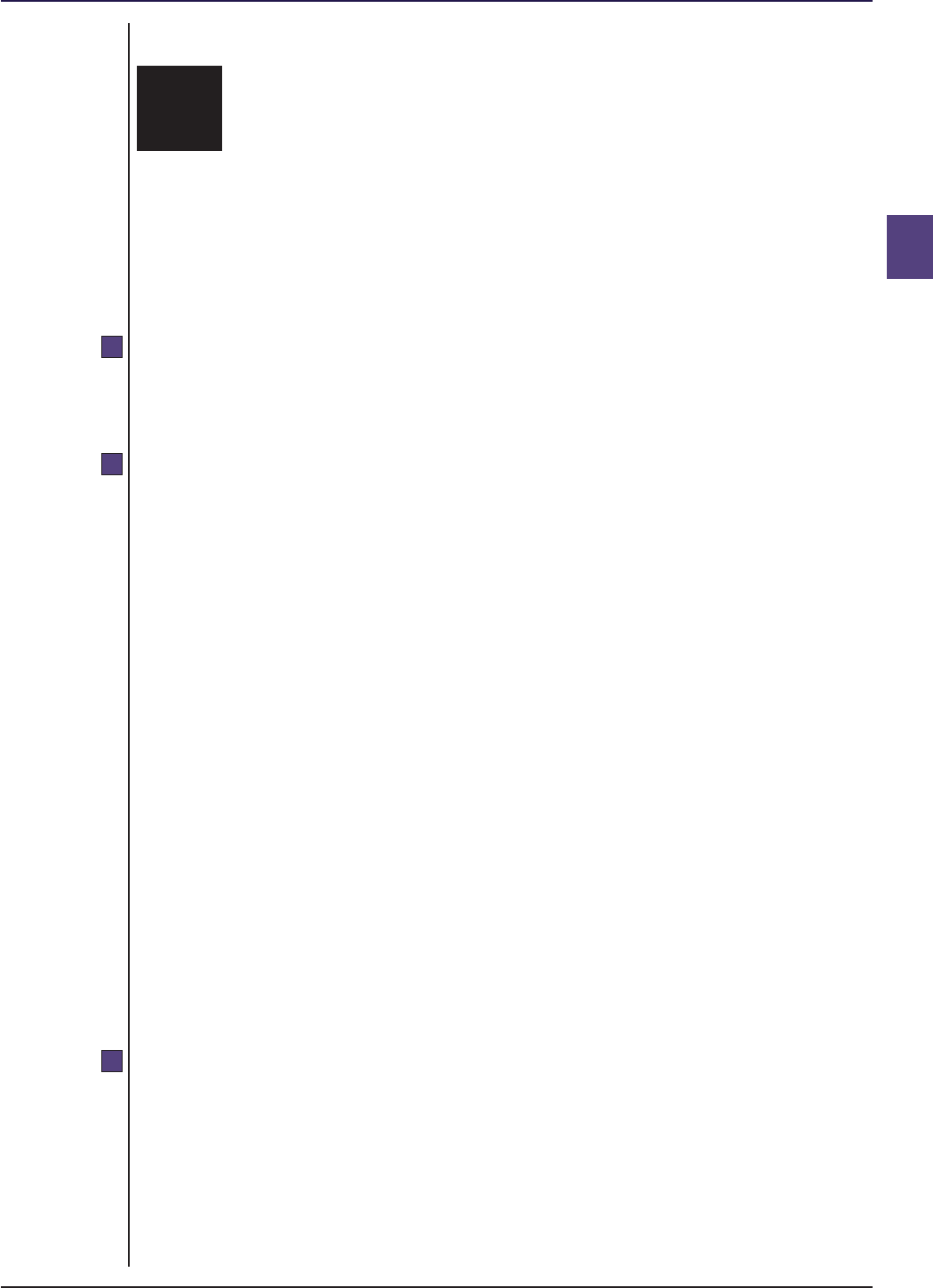
COLL 4 : Investor Relations Section 4.2 : Pre-sale notifications
4
R4.2.1
R4.2.2
R4.2.3
■ Release 39 ● Aug 2024 www.handbook.fca.org.uk COLL 4/3
4.2 Pre-sale notifications
Application
.....................................................................................................
This section applies to an authorised fund manager, an ICVC and any other
director of an ICVC
Publishing the prospectus
.....................................................................................................
(1) A prospectus must be drawn up in English and published as a
document by the authorised fund manager and, for an ICVC, it must
be approved by the directors.
(2) The authorised fund manager must ensure that the prospectus:
(a) contains the information required by ■ COLL 4.2.5 R (Table:
contents of the prospectus);
(aa) for a non-UCITS retail scheme managed by a full-scope UK AIFM,
contains the information required by:
(i) ■ FUND 3.2.2R and ■ FUND 3.2.3R (Prior disclosure of
information to investors); and
(ii) ■ FUND 3.2.5R and ■ FUND 3.2.6R (Periodic disclosure), unless
the up-to-date information has been published in the
scheme’s most recent annual report or half-yearly report;
(b) does not contain any provision which is unfairly prejudicial to the
interests of unitholders generally or to the unitholders of any
class of units;
(c) does not contain any provision that conflicts with any applicable
rule; and
(d) is kept up-to-date and that revisions are made to it, whenever
appropriate.
Provision and filing of the prospectus
.....................................................................................................
(1) The authorised fund manager of an AUT, ACS or an ICVC must:
(a) provide a copy of the scheme's most recent prospectus drawn up
and published in accordance with ■ COLL 4.2.2 R (Publishing the
prospectus) free of charge to any person on request; and
(b) file a copy of the scheme's original prospectus, together with all
revisions thereto, with the FCA.
(1A) Except where an investor requests a paper copy or the use of
electronic communications is not appropriate, the prospectus may be

COLL 4 : Investor Relations Section 4.2 : Pre-sale notifications
4
R4.2.3A
R4.2.3B
R4.2.4
■ Release 39 ● Aug 2024www.handbook.fca.org.ukCOLL 4/4
provided in a durable medium or by means of a website that meets
the website conditions.
(2) [deleted]
(3) An authorised fund manager must, upon the request of a unitholder
in a UCITS scheme that it manages, provide information
supplementary to the prospectus of that scheme relating to:
(a) the quantitative limits applying to the risk management of that
scheme;
(b) the methods used in relation to (a); and
(c) any recent development of the risk and yields of the main
categories of investment.
[Note: articles 74, 75(1) and 75(2) of the UCITS Directive]
Provision and filing of the prospectus of a master UCITS
.....................................................................................................
(1) The authorised fund manager of a UCITS scheme that is a feeder
UCITS must:
(a) where requested by an investor, provide a copy of the prospectus
of its master UCITS free of charge; and
(b) file a copy of the prospectus of its master UCITS and any
amendments thereto with the FCA.
(2) Except where an investor requests a paper copy or the use of
electronic communications is not appropriate, the prospectus of the
master UCITS may be provided in a durable medium other than paper
or by means of a website that meets the website conditions.
[Note: articles 63(3), 63(5), 75(1) and 75(2) of the UCITS Directive]
Feeder NURS: provision of the prospectus of the qualifying
master scheme
.....................................................................................................
(1) The authorised fund manager of a feeder NURS must, where
requested by an investor or the FCA , provide such person with a copy
of the prospectus of its qualifying master scheme free of charge.
(2) Except where an investor requests a paper copy or the use of
electronic communications is not appropriate, the prospectus of the
qualifying master scheme may be provided in a durable medium
other than paper, or by means of a website that meets the website
conditions.
False or misleading prospectus
.....................................................................................................
(1) The authorised fund manager:
(a) must ensure that the prospectus of the authorised fund does not
contain any untrue or misleading statement or omit any matter
required by the rules in this sourcebook to be included in it; and

COLL 4 : Investor Relations Section 4.2 : Pre-sale notifications
4
R4.2.5
■ Release 39 ● Aug 2024 www.handbook.fca.org.uk COLL 4/5
(b) is liable to pay compensation to any person who has acquired any
units in the authorised fund and suffered loss in respect of them
as a result of such statement or omission; this is in addition to
any liability incurred apart from under this rule.
(2) The authorised fund manager is not in breach of (1)(a) and is not
liable to pay compensation under (1)(b) if, at the time when the
prospectus was made available to the public, it had taken reasonable
care to determine that the statement was true and not misleading, or
that the omission was appropriate, and that:
(a) it continued to take such reasonable care until the time of the
relevant acquisition of units in the scheme; or
(b) the acquisition took place before it was reasonably practicable to
bring a correction to the attention of potential purchasers; or
(c) it had already taken all reasonable steps to ensure that a
correction was brought to the attention of potential purchasers;
or
(d) the person who acquired the units was not materially influenced
or affected by that statement or omission in making the decision
to invest.
(3) The authorised fund manager is also not in breach of (1)(a) and is not
liable to pay compensation under (1)(b) if:
(a) before the acquisition a correction had been published in a
manner calculated to bring it to the attention of persons likely to
acquire the units in question; or
(b) it took all reasonable steps to secure such publication and had
reasonable grounds to conclude that publication had taken place
before the units were acquired.
(4) The authorised fund manager is not liable to pay compensation under
(1)(b) if the person who acquired the units knew at the time of the
acquisition that the statement was untrue or misleading or knew of
the omission.
(5) For the purposes of this rule a revised prospectus will be treated as a
different prospectus from the original one.
(6) References in this rule to the acquisition of units include references to
contracting to acquire them.
Table: contents of the prospectus
.....................................................................................................
This table belongs to ■ COLL 4.2.2 R (Publishing the prospectus).
Document status
1 A statement that the document is the prospectus of the authorised
fund valid as at a particular date (which shall be the date of the
document).
Authorised fund
2 A description of the authorised fund including:
(a) its name;
(aa) its FCA product reference number (PRN);

COLL 4 : Investor Relations Section 4.2 : Pre-sale notifications
4
■ Release 39 ● Aug 2024www.handbook.fca.org.ukCOLL 4/6
(b) whether it is an ICVC, ACS or an AUT;
(ba) whether it is a UCITS scheme or a non-UCITS retail scheme;
(bb) a statement that unitholders in an AUT, ICVC or co-ownership
scheme are not liable for the debts of the authorised fund;
(bc) a statement that the scheme property of a co-ownership
scheme is beneficially owned by the participants as tenants in
common (or, in Scotland, is the common property of the par-
ticipants);
(bd) a statement that a unitholder in a limited partnership scheme
is not liable for the debts or obligations of the limited part-
nership scheme beyond the amount of the scheme property
which is available to the authorised contractual scheme man-
ager to meet such debts or obligations, provided that the un-
itholder does not take part in the management of the part-
nership business;
(be) a statement that the exercise of rights conferred on limited
partners by FCA rules does not constitute taking part in the
management of the partnership business;
(c) for an ICVC, the address of its head office and the address of
the place in the United Kingdom for service on the ICVC of
notices or other documents required or authorised to be
served on it;
(ca) for an ACS that is a limited partnership scheme, the address
of the proposed principal place of business of the limited
partnership scheme;
(d) the effective date of the authorisation order made by the
FCA and relevant details of termination, if the duration of
the authorised fund is limited;
(e) its base currency;
(f) for an ICVC, the maximum and minimum sizes of its capital;
(g) the circumstances in which it may be wound up under the
rules and a summary of the procedure for, and the rights of
unitholders under, such a winding up; and
(h) if it is not an umbrella, a statement that it is a feeder UCITS,
a feeder NURS, a fund of alternative investment funds or a
property authorised investment fund, where that is the case.
Umbrella ICVCs or co-ownership schemes
2A The following statements for an ICVC or a co-ownership scheme
which is an umbrella:
(a) for an ICVC, a statement thatits sub-funds are segregated
portfolios of assets and, accordingly, the assets of a sub-fund
belong exclusively to that sub-fund and shall not be used to
discharge directly or indirectly the liabilities of, or claims
against, any other person or body, including the umbrella, or
any other sub-fund, and shall not be available for any such
purpose;
(aa) for a co-ownership scheme, a statement that the property
subject to a sub-fund is beneficially owned by the particip-
ants in that sub-fund as tenants in common (or, in Scotland, is
the common property of the participants in that sub-fund)
and must not be used to discharge any liabilit

COLL 4 : Investor Relations Section 4.2 : Pre-sale notifications
4
■ Release 39 ● Aug 2024 www.handbook.fca.org.uk COLL 4/7
ies of, or meet any claims against, any person other than the
participants in that sub-fund; and
(b) for an ICVC or a co-ownership scheme, a statement that
while the provisions of the OEIC Regulations, and section
261P (Segregated liability in relation to umbrella co-owner-
ship schemes) of the Act in the case of co-ownership schemes,
provide for segregated liability between sub-funds, the con-
cept of segregated liability is relatively new. Accordingly,
where claims are brought by local creditors in foreign courts
or under foreign law contracts, it is not yet known how those
foreign courts will react to regulations 11A and 11B of the
OEIC Regulations or, as the case may be, section 261P of the
Act.
Umbrella Schemes
2B For a UCITS scheme or non-UCITS retail scheme which is an
umbrella:
(a) a statement detailing whether each specific sub-fund
is a feeder UCITS, a feeder NURS, a fund of alternat-
ive investment funds or a property authorised invest-
ment fund, as appropriate; and
(b) the FCA product reference number (PRN) of each sub-
fund.
Investment objectives and policy
3 The following particulars of the investment objectives and policy of
the authorised fund:
(a) the investment objectives, including its financial objectives;
(b) the authorised fund's investment policy for achieving those in-
vestment objectives, including the general nature of the port-
folio and, if appropriate, any intended specialisation;
(c) an indication of any limitations on that investment policy;
(c-b) where:
(i) a target for a scheme’s performance has been set, or
a payment out of scheme property is permitted, by
reference to a comparison of one or more aspects of
the scheme property or price with fluctuations in the
value or price of an index or indices or any other sim-
ilar factor (a “target benchmark”); or
(ii) without being a target benchmark, arrangements are
in place in relation to the scheme according to which
the composition of the portfolio of the scheme is, or
is implied to be, constrained by reference to the
value, the price or the components of an index or in-
dices or any other similar factor (a “constraining
benchmark”); or
(iii) without being a target benchmark or a constraining
benchmark, the scheme’s performance is compared
against the value or price of an index or indices or
any other similar factor (a “comparator benchmark”),
a statement providing sufficient information for investors to
understand the choice and use of any target benchmark, con-
straining benchmark or comparator benchmark in relation to
the scheme;

COLL 4 : Investor Relations Section 4.2 : Pre-sale notifications
4
■ Release 39 ● Aug 2024www.handbook.fca.org.ukCOLL 4/8
(c-a) where no target benchmark, constraining benchmark or com-
parator benchmark is used, a statement to that effect and an
explanation of how investors can assess the performance of
the scheme;
(ca) for an authorised fund that has indicated in its name, invest-
ment objectives or fund literature (including in any financial
promotions for the fund), through use of descriptions such as
'absolute return', 'total return' or similar, an intention to de-
liver positive returns in all market conditions (and where
there is no actual guarantee of such returns), additional state-
ments in the authorised fund's investment objectives
specifying:
(i) that capital is in fact at risk;
(ii) the investment period over which the authorised
fund aims to achieve a positive return; and
(iii) there is no guarantee that this will be achieved over
that specific, or any, time period;
(d) the description of assets which the capital property may con-
sist of;
(e) the proportion of the capital property which may consist of
an asset of any description;
(f) the description of transactions which may be effected on be-
half of the authorised fund and an indication of any tech-
niques and instruments or borrowing powers which may be
used in the management of the authorised fund;
(g) a list of the eligible markets through which the authorised
fund may invest or deal in accordance with COLL 5.2.10 R (2)(b)
(Eligible markets: requirements);
(h) for an ICVC, a statement as to whether it is intended that the
scheme will have an interest in any immovable property or
movable property ((in accordance with COLL 5.6.4 R (2) (Invest-
ment powers: general) or COLL 5.2.8 R (2) (UCITS schemes: gen-
eral)) for the direct pursuit of the ICVC's business;
(i) where COLL 5.2.12 R (3) (Spread: government and public securit-
ies) applies:
(i) a prominent statement as to the fact that more than
35% in value of the scheme property is or may be in-
vested in transferable securities or approved money-
market instruments issued or guaranteed by a single
state, local authority or public international body;
and
(ii) the names of the individual states, local authorities
or public international bodies issuing or guaran-
teeing the securities in which more than 35% in
value of the scheme property may be invested;
(k) for an authorised fund which may invest in other schemes,
the extent to which the scheme property may be invested in
the units of schemes which are managed by the authorised
fund manager or by its associate;

COLL 4 : Investor Relations Section 4.2 : Pre-sale notifications
4
■ Release 39 ● Aug 2024 www.handbook.fca.org.uk COLL 4/9
(ka) where a scheme is a feeder scheme (other than a feeder UC-
ITS or a feeder NURS), which (in respect of investment in un-
its in collective investment schemes) is dedicated to units in a
single collective investment scheme, details of the master
scheme and the minimum (and, if relevant, maximum) invest-
ment that the feeder scheme may make in it;
(l) where a scheme invests principally in scheme units, deposits
or derivatives, or replicates an index in accordance with COLL
5.2.31 R or COLL 5.6.23 R (Schemes replicating an index), a prom-
inent statement regarding this investment policy;
(m) where derivatives transactions may be used in a scheme, a
prominent statement as to whether these transactions are for
the purposes of efficient portfolio management (includ-
inghedging) or meeting the investment objectives or both
and the possible outcome of the use of derivatives on the risk
profile of the scheme;
(n) information concerning the profile of the typical investor for
whom the scheme is designed;
(o) information concerning the historical performance of the
scheme, comparing in particular its historical performance
against each target benchmark and each constraining
benchmark used in relation to the scheme, presented in ac-
cordance with COBS 4.6.2R (the rules on past performance);
(p) for a non-UCITS retail scheme which invests in immovables, a
statement of the countries or territories of situation of land
or buildings in which the authorised fund may invest;
(pa) for a fund investing in inherently illiquid assets at least the
following (see FUND 3.2.2R(8) (Prior disclosure of information
to investors)):
(i) an explanation of the risks associated with the
scheme investing in inherently illiquid assets and how
those risks might crystallise;
(ii) a description of the tools and arrangements the au-
thorised fund manager would propose using, includ-
ing those required by FCA rules, to mitigate the risks
referred to in (i); and
(iii) an explanation of the circumstances in which those
tools and arrangements would typically be deployed
and the likely consequences for investors;
(q) for a UCITS scheme which invests a substantial portion of its
assets in other schemes, a statement of the maximum level of
management fees that may be charged to that UCITS scheme
and to the schemes in which it invests;
(qa) where the authorised fund is a qualifying money market
fund, a statement identifying it as such a fund and a state-
ment that the authorised fund's investment objectives and
policies will meet the conditions specified in the definition of
qualifying money market fund;
(r) where the net asset value of a UCITS scheme is likely to have
high volatility owing to its portfolio composition or the port-
folio management techniques that may be used, a prominent
statement to that effect;
(s) for a UCITS scheme, a statement that any unitholder may ob-
tain on request the types of information (which must be
listed) referred to in COLL 4.2.3R (3) (Availability of prospectus
and long report); and

COLL 4 : Investor Relations Section 4.2 : Pre-sale notifications
4
■ Release 39 ● Aug 2024www.handbook.fca.org.ukCOLL 4/10
(t) for a UCITS scheme that is or is intended to be a master UC-
ITS, a statement that it is not a feeder UCITS and will not
hold units of a feeder UCITS.
Reporting, distributions and accounting dates
4 Relevant details of the reporting, accounting and distribution in-
formation which includes:
(a) the accounting and distribution dates;
(b) procedures for:
(i) determining and applying income (including how any
distributable income is paid);
(ii) unclaimed or unwanted distributions, including any
arrangements for the transfer of:
(A) an unclaimed eligible distribution of income
that is a dormant asset (see COLL 6.8.4R (Un-
claimed, de minimis and joint unitholder dis-
tributions)); or
(B) unwanted asset money (see COLL 6.8.4AR (Un-
wanted asset money)); and
(iii) if relevant, calculating, paying and accounting for in-
come equalisation; and
(c) the accounting reference date and when the long report will
be published in accordance with COLL 4.5.14 R (Publication and
availability of annual and half-yearly long report).
(d) [deleted]
Characteristics of the units
5 Information as to:
(a) where there is more than one class of unit in issue or avail-
able for issue, the name of each such class and the rights at-
tached to each class in so far as they vary from the rights at-
tached to other classes;
(b) [deleted]
(c) how unitholders may exercise their voting rights and what
these amount to;
(d) where a mandatory redemption, cancellation or conversion
of units from one class to another may be required, in what
circumstances it may be required; and
(e) for an AUT, the fact that the nature of the right represented
by units is that of a beneficial interest under a trust.
5A ACSs: UCITS and NURS eligible investors
(a) A statement that units may not be issued to a person other
than a:
(i) professional ACS investor; or
(ii) large ACS investor; or
(iii) person who already holds units in the scheme.
(b) A statement that the authorised contractual scheme manager
must redeem units as soon as practicable after becoming
aware that those units are vested in anyone (whether as a re-
sult of subscription or transfer of units) other than a person
meeting the criteria in paragraph 5A(a).
5B ACSs: UCITS and NURS transfer of units

COLL 4 : Investor Relations Section 4.2 : Pre-sale notifications
4
■ Release 39 ● Aug 2024 www.handbook.fca.org.uk COLL 4/11
(a) A statement whether the transfer of units in the ACS scheme
is either:
(i) prohibited; or
(ii) allowed;
by the instrument constituting the fund and prospectus.
(b) Where transfer of units is allowed by the instrument consti-
tuting the fund and prospectus in accordance with (a)(ii), a
statement that units may only be transferred in accordance
with the conditions specified by FCA rules, including that un-
its may not be transferred to a person other than a:
(i) professional ACS investor; or
(ii) large ACS investor; or
(iii) person who already holds units in the scheme.
(c) For a co-ownership scheme which is an umbrella, a statement
in accordance with (5B)(a)(i) or (ii) and, where appropriate, a
statement in accordance with (5B)(b), must also be made for
the sub-funds. Where individual sub-funds have differing pol-
icies in relation to transfer of units, separate statements are
required.
Authorised fund manager
6 The following particulars of the authorised fund manager:
(a) its name;
(b) the nature of its corporate form;
(c) the date of its incorporation;
(d) the address of its registered office;
(e) the address of its head office, if that is different from the ad-
dress of its registered office;
(f) [deleted]
(g) if the duration of its corporate status is limited, when that
status will or may cease; and
(h) the amount of its issued share capital and how much of it is
paid up.
Directors of an ICVC, other than the ACD
7 Other than for the ACD:
(a) the names and positions in the ICVC of any other directors (if
any); and
(b) the manner, amount and calculation of the remuneration of
such directors.
Depositary
8 The following information and particulars concerning the de-
positary:
(a) its name;
(b) the nature of its corporate form;
(c) the address of its registered office;
(d) the address of its head office, if that is different from the ad-
dress of its registered office;
(e) [deleted]
(f) a description of its duties and conflicts of interest that may
arise between the depositary and:

COLL 4 : Investor Relations Section 4.2 : Pre-sale notifications
4
■ Release 39 ● Aug 2024www.handbook.fca.org.ukCOLL 4/12
(i) the scheme; or
(ii) the unitholders in the scheme; or
(iii) the authorised fund manager;
(g) (i) a description of any safekeeping functions delegated
by the depositary;
(ii) a description of any conflicts of interest that may
arise from such delegation; and
(iii) for a UCITS scheme, a list showing the identity of
each delegate and sub-delegate; and
(h) for a UCITS scheme, a statement that up-to-date information
regarding the points covered under (a),(f) and (g), above, will
be made available to unitholders on request.
Investment adviser
9 If an investment adviser is retained in connection with the business
of an authorised fund:
(a) its name; and
(b) where it carries on a significant activity other than providing
services to the authorised fund as an investment adviser,
what that significant activity is.
Auditor
10 The name of the auditor of the authorised fund.
Contracts and other relationships with parties
11 The following relevant details:
(a) for an ICVC:
(i) a summary of the material provisions of the contract
between the ICVC and the ACD which may be relev-
ant to unitholders including provisions (if any) relat-
ing to remuneration, termination, compensation on
termination and indemnity;
(ii) the main business activities of each of the directors
(other than those connected with the business of the
ICVC) where these are of significance to the ICVC's
business;
(iii) if any director is a body corporate in a group of
which any other corporate director of the ICVC is a
member, a statement of that fact;
(iv) the main terms of each contract of service between
the ICVC and a director in summary form; and
(v) for an ICVC that does not hold annual general meet-
ings, a statement that copies of contracts of service
between the ICVC and its directors, including the
ACD, will be provided to a unitholder on request;
(b) the names of the directors of the authorised fund manager
and the main business activities of each of the directors
(other than those connected with the business of

COLL 4 : Investor Relations Section 4.2 : Pre-sale notifications
4
■ Release 39 ● Aug 2024 www.handbook.fca.org.uk COLL 4/13
the authorised fund) where these are of significance to the
authorised fund's business;
(c) a summary of the material provisions of the contract be-
tween the ICVC or the manager of the AUT and the deposit-
ary which may be relevant to unitholders, including provi-
sions relating to the remuneration of the depositary;
(ca) in the case of an ACS, a summary of the material provisions
of the contracts between:
(i) the authorised fund manager and the nominated
partner (if any); and
(ii) the authorised fund manager and depositary;
which may be relevant to unitholders, including provisions re-
lating to the remuneration of the depositary;
(d) if an investment adviser retained in connection with the busi-
ness of the authorised fund is a body corporate in a group of
which any director of the ICVC or the authorised fund man-
ager of the AUTor ACS is a member, that fact;
(e) a summary of the material provisions of any contract be-
tween the authorised fund manager or the ICVC and any in-
vestment adviser which may be relevant to unitholders;
(f) if an investment adviser retained in connection with the busi-
ness of the authorised fund has the authority of the au-
thorised fund manager or the ICVC to make decisions on be-
half of the authorised fund manager or the ICVC, that fact
and a description of the matters in relation to which it has
that authority;
(g) a list of:
(i) the functions which the authorised fund manager has
delegated in accordance with FCA rules; and
(ii) the person to whom such functions have been deleg-
ated; and
(h) in what capacity (if any), the authorised fund manager acts in
relation to any other regulated collective investment schemes
and the name of such schemes.
Register of Unitholders
12 Details of:
(a) the address in the United Kingdom where the register of un-
itholders, and where relevant the plan register is kept and
can be inspected by unitholders; and
(b) the registrar's name and address.
Payments out of scheme property
13 In relation to each type of payment from the scheme property, de-
tails of:
(a) who the payment is made to;
(b) what the payment is for;
(c) the rate or amount where available;
(d) how it will be calculated and accrued;
(e) when it will be paid;
(f) where a performance fee is taken, examples of its operation
in plain English and the maximum it can amount to; and

COLL 4 : Investor Relations Section 4.2 : Pre-sale notifications
4
■ Release 39 ● Aug 2024www.handbook.fca.org.ukCOLL 4/14
(g) where donations are to be made to one or more registered
charities for Sharia compliance purposes from the income
property of the scheme (in this rule, ‘purification’), in addi-
tion to the details required above, the person who advises
the authorised fund manager on the required percentage of
the income property recognised for purification.
Allocation of payments
14 If, in accordance with COLL 6.7.10 R (Allocation of payments to in-
come or capital), the authorised fund manager and the depositary
have agreed that all or part of any income expense payments may
be treated as a capital expense:
(a) that fact;
(b) the policy for allocation of these payments; and
(c) a statement that this policy may result in capital erosion or
constrain capital growth.
Moveable and immovable property (ICVC only)
15 An estimate of any expenses likely to be incurred by the ICVC in re-
spect of movable and immovable property in which the ICVC has an
interest.
Valuation and pricing of scheme property
16 In relation to the valuation of scheme property and pricing of units:
(a) either:
(i) in the case of a single-priced authorised fund, a provi-
sion that there must be only a single price for any
unit as determined from time to time by reference to
a particular valuation point; or
(ii) in the case of a dual-priced authorised fund, the au-
thorised fund manager's policy for determining prices
for the sale and redemption of units by reference to
a particular valuation point and an explanation of
how those prices may differ;
(b) details of:
(i) how the value of the scheme property is to be deter-
mined in relation to each purpose for which the
scheme property must be valued;
(ii) how frequently and at what time or times of the day
the scheme property will be regularly valued for
dealing purposes and a description of any circum-
stance in which the scheme property may be specially
valued;
(iii) where relevant, how the price of units of each class
will be determined for dealing purposes;
(iv) where and at what frequency the most recent prices
will be published; and
(v) where relevant in the case of a dual-priced au-
thorised fund, an explanation of what is meant by
large deals and the authorised fund manager's policy
in relation to large deals; and
(c) if provisions in (a) and (b) do not take effect when the instru-
ment constituting the fund or (where appropriate) supple-
mental trust deed takes effect, a statement of the time

COLL 4 : Investor Relations Section 4.2 : Pre-sale notifications
4
■ Release 39 ● Aug 2024 www.handbook.fca.org.uk COLL 4/15
from which those provisions are to take effect or how it will
be determined.
Dealing
17 The following particulars:
(a) the procedures, the dealing periods and the circumstances in
which the authorised fund manager will effect:
(i) the sale and redemption of units and the settlement
of transactions (including the minimum number or
value of units which one person may hold or which
may be subject to any transaction of sale or redemp-
tion) for each class of unit in the authorised fund;
and
(ii) any direct issue or cancellation of units by an ICVC or
by the depositary of an AUT or ACS (as appropriate)
through the authorised fund manager in accordance
with COLL 6.2.7R (2) (Issue and cancellation of units
through an authorised fund manager);
(b) the circumstances in which the redemption of units may be
suspended;
(c) whether certificates will be issued in respect of registered
units;
(d) the circumstances in which the authorised fund manager may
arrange for, and the procedure for the issue or cancellation
of units in specie;
(e) the investment exchanges (if any) on which units in the
scheme are listed or dealt;
(f) the circumstances and conditions for issuing units in an au-
thorised fund which limit the issue of any class of units in ac-
cordance with COLL 6.2.18 R (Limited issue);
(g) the circumstances and procedures for the limitation or defer-
ral of redemptions in accordance with COLL 6.2.19 R (Limited
redemption) or COLL 6.2.21 R (Deferred redemption);
(h) in a prospectus available during the period of any initial
offer:
(i) the length of the initial offer period;
(ii) the initial price of a unit, which must be in the base
currency;
(iii) the arrangements for issuing units during the initial
offer, including the authorised fund manager's inten-
tions on investing the subscriptions received during
the initial offer;
(iv) the circumstances when the initial offer will end;
(v) whether units will be sold or issued in any other cur-
rency; and
(vi) any other relevant details of the initial offer ;
(i) whether a unitholder may effect transfer of title to units on
the authority of an electronic communication and if so the
conditions that must be satisfied in order to effect a transfer;
and
(j) if the authorised fund manager deals as principal in units of
the scheme and holds them for that purpose, a statement of
its policy for doing so and, where applicable:

COLL 4 : Investor Relations Section 4.2 : Pre-sale notifications
4
■ Release 39 ● Aug 2024www.handbook.fca.org.ukCOLL 4/16
(i) a description of when the authorised fund manager
may retain any profits it earns and absorb any losses
it incurs for these activities; and
(ii) a statement of non-accountability as referred to in
COLL 6.7.16G.
Transfers to a dormant asset fund operator
17A If the authorised fund manager or the depositary of the authorised
fund has a power under the instrument constituting the fund to
transfer an eligible CIS amount that is a dormant asset to a dorm-
ant asset fund operator in accordance with sections 8 to 10 of the
Dormant Assets Act 2022, particulars as to:
(a) the types of such eligible CIS amounts which the authorised
fund manager or the depositary may transfer;
(b) the circumstances in which an amount in (a) is a dormant as-
set, and any steps that the authorised fund manager or the
depositary must take before making a transfer;
(c) if the authorised fund manager or the depositary has a
power to convert a unit into a right to payment of an
amount in accordance with section 9(3) and (5) of the Dorm-
ant Assets Act 2022, an explanation of that power, including
the circumstances in which the power may be exercised;
(d) the consequences for the unitholder of a transfer of an eli-
gible CIS amount, including how the amount of a repayment
claim will be determined;
(e) information about the steps a person would need to take to
establish and make a repayment claim, and to receive pay-
ment of the money; and
(f) the basis on which a person who has made a repayment
claim may apply for the repaid amount or any part of it to be
reinvested in units.
17B If the authorised fund manager or the depositary has a power un-
der the instrument constituting the fund to transfer unwanted as-
set money to a dormant asset fund operator in accordance with sec-
tion 21 of the Dormant Assets Act 2022, particulars as to:
(a) the circumstances in which a person may inform the au-
thorised fund manager or the depositary that they wish an
eligible CIS amount to be transferred as unwanted asset
money to a dormant asset fund operator;
(b) how a person in (a) may obtain information from the au-
thorised fund manager or the depositary about the proced-
ure by which they may ask for such money to be transferred;
(c) the declaration that the person will need to make before the
money can be transferred as unwanted asset money;
(d) the consequences of the money being transferred to a dorm-
ant asset fund operator; and
(e) what happens if the dormant asset fund operator does not
consent to the transfer of the money.
Dilution
18 In the case of a single-priced authorised fund, details of what is
meant by dilution including:
(a) a statement explaining:
(i) that it is not possible to predict accurately whether di-
lution is likely to occur; and

COLL 4 : Investor Relations Section 4.2 : Pre-sale notifications
4
■ Release 39 ● Aug 2024 www.handbook.fca.org.uk COLL 4/17
(ii) which of the policies the authorised fund manager is
adopting under COLL 6.3.8 (1) (Dilution) together with
an explanation of how this policy may affect the fu-
ture growth of the authorised fund; and
(b) if the authorised fund manager may require a dilution levy or
make a dilution adjustment, a statement of:
(i) the authorised fund manager's policy in deciding
when to require a dilution levy, including what is
meant by large deals and the authorised fund man-
ager's policy on large deals, or when to make a dilu-
tion adjustment;
(ii) the estimated rate or amount of any dilution levy or
dilution adjustment based either on historical data or
future projections; and
(iii) the likelihood that the authorised fund manager may
require a dilution levy or make a dilution adjustment
and the basis (historical or projected) on which the
statement is made.
SDRT provision
19
[deleted]
Forward pricing
20 An explanation of forward pricing under COLL 6.3.9 (Forward
pricing).
Preliminary charge
21 Where relevant, a statement authorising the authorised fund man-
ager to make a preliminary charge and specifying the basis for and
current amount or rate of that charge.
Redemption charge
22 Where relevant, a statement authorising the authorised fund man-
ager to deduct a redemption charge out of the proceeds of redemp-
tion; and if the authorised fund manager makes a redemption
charge:
(a) the current amount of that charge or if it is variable, the rate
or method of calculating it;
(b) if the amount, rate or method has been changed, that details
of any previous amount, rate or method may be obtained
from the authorised fund manager on request; and
(c) how the order in which units acquired at different times by a
unitholder is to be determined so far as necessary for the pur-
poses of the imposition of the redemption charge.
Property Authorised Investment Funds
22A For a property authorised investment fund, a statement that:
(1) [deleted]
(2) no body corporate may seek to obtain or intentionally main-
tain a holding of more than 10% of the net asset value of
the fund; and
(3) in the event that the authorised fund manager reasonably
considers that a body corporate holds more than 10% of the
net asset value of the fund, the authorised fund manager is
entitled to delay any redemption or cancellation of units if
the authorised fund manager reasonably considers such ac-
tion to be:

COLL 4 : Investor Relations Section 4.2 : Pre-sale notifications
4
■ Release 39 ● Aug 2024www.handbook.fca.org.ukCOLL 4/18
(a) necessary in order to enable an orderly reduction of
the holding to below 10%; and
(b) in the interests of the unitholders as a whole.
General information
23 Details of:
(a) the address at which copies of the instrument constituting
the fund, any amending instrument and the most recent an-
nual and half-yearly long reports may be inspected and from
which copies may be obtained;
(b) the manner in which any notice or document will be served
on unitholders;
(c) the extent to which and the circumstances in which:
(i) the scheme is liable to pay or suffer tax on any appre-
ciation in the value of the scheme property or on the
income derived from the scheme property; and
(ii) deductions by way of withholding tax may be made
from distributions of income to unitholders and pay-
ments made to unitholders on the redemption of
units;
(d) for a UCITS scheme, any possible fees or expenses not de-
scribed in paragraphs 13 to 22, distinguishing between those
to be paid by a unitholder and those to be paid out of
scheme property; and
(e) for an ICVC, whether or not annual general meetings will be
held.
Information on the umbrella
24 In the case of a scheme which is an umbrella with two or more sub-
funds, the following information:
(a) that a unitholder is entitled to exchange units in one sub-
fund for units in any other sub-fund (other than a sub-fund
which has limited the issue of units);
(b) that an exchange of units in one sub-fund for units in any
other sub-fund is treated as a redemption and sale and will,
for persons subject to United Kingdom taxation, be a realis-
ation for the purposes of capital gains taxation;
(c) that in no circumstances will a unitholder who exchanges un-
its in one sub-fund for units in any other sub-fund be given a
right by law to withdraw from or cancel the transaction;
(d) the policy for allocating between sub-funds any assets of, or
costs, charges and expenses payable out of, the scheme prop-
erty which are not attributable to any particular sub-fund;
(e) what charges, if any, may be made on exchanging units in
one sub-fund for units in any other sub-fund; and
(f) for each sub-fund, the currency in which the scheme property
allocated to it will be valued and the price of units calculated
and payments made, if this currency is not the base currency
of the scheme which is an umbrella.
(g) [deleted]
Application of the prospectus contents to an umbrella
25 For a scheme which is an umbrella, information required must be
stated:

COLL 4 : Investor Relations Section 4.2 : Pre-sale notifications
4
■ Release 39 ● Aug 2024 www.handbook.fca.org.uk COLL 4/19
(a) in relation to each sub-fund where the information for any
sub-fund differs from that for any other; and
(b) for the umbrella as a whole, but only where the information
is relevant to the umbrella as a whole.
Information on a feeder UCITS
25A In the case of a feeder UCITS, the following information:
(a) a declaration that the feeder UCITS is a feeder of a particular
master UCITS and as such permanently invests at least 85% in
value of the scheme property in units of that master UCITS;
(b) the investment objective and policy, including the risk profile;
and whether the performance records of the feeder UCITS
and the master UCITS are identical, or to what extent and for
which reasons they differ, including a description of how the
balance of the scheme property which is not invested in units
of the master UCITS is invested in accordance with COLL 5.8.3 R
(Balance of scheme property: investment restrictions on a
feeder UCITS);
(c) a brief description of the master UCITS, its organisation, its in-
vestment objective and policy, including the risk profile, and
an indication of how the prospectus of the master UCITS may
be obtained;
(d) a summary of the master-feeder agreement or where applic-
able, the internal conduct of business rules referred to in
COLL 11.3.2 R (2) (Master-feeder agreement and internal con-
duct of business rules);
(e) how the unitholders may obtain further information on the
master UCITS and the master-feeder agreement;
(f) a description of all remuneration or reimbursement of costs
payable by the feeder UCITS by virtue of its investment in un-
its of the master UCITS, as well as the aggregate charges of
the feeder UCITS and the master UCITS; and
(g) a description of the tax implications of the investment into
the master UCITS for the feeder UCITS.
[Note: article 63(1) of the UCITS Directive]
Information on a feeder NURS
25B In the case of a feeder NURS, the following information:
(a) a declaration that the feeder NURS is a feeder of a particular
qualifying master scheme and as such is dedicated to units in
a single qualifying master scheme and the minimum (and, if
relevant, maximum) investment that the feeder NURS may
make in its qualifying master scheme;
(b) the investment objective and policy of the feeder NURS, in-
cluding its risk profile; and whether the performance records
of the feeder NURS and the qualifying master scheme are
identical, or to what extent and for which reasons they differ,
including a description of how the balance of the scheme
property which is not invested in units of the qualifying mas-
ter scheme is invested in accordance with COLL 5.6.7 R (6A)
(Spread: general);
(c) a brief description of the qualifying master scheme, its organ-
isation, its investment objective and policy, including the risk
profile, and an indication of how the prospectus of the quali-
fying master scheme may be obtained;
(d) how the unitholders may obtain further information on the
qualifying master scheme;

COLL 4 : Investor Relations Section 4.2 : Pre-sale notifications
4
■ Release 39 ● Aug 2024www.handbook.fca.org.ukCOLL 4/20
(e) a description of all remuneration or reimbursement of costs
payable by the feeder NURS by virtue of its investment in un-
its of the qualifying master scheme, as well as the aggregate
charges of the feeder NURS and the qualifying master
scheme; and
(f) a description of the tax implications of the investment into
the qualifying master scheme for the feeder NURS.
Marketing in another EEA state
26 [deleted]
Investment in overseas property through an intermediate holding vehicle
26A If investment in an overseas immovable is to be made through an
intermediate holding vehicle or a series of intermediate holding
vehicles, a statement disclosing the existence of that intermediate
holding vehicle or series of intermediate holding vehicles and con-
firming that the purpose of that intermediate holding vehicle or
series of intermediate holding vehicle is to enable the holding of
overseas immovables by the scheme.
Sustainability information
26B The following information, as applicable:
(a) where a sustainability label is used in relation to a
scheme, the information set out at ESG 5.3.3R and ESG
5.3.6R, in accordance with ESG 5.3.2R(1);
(b) where a sustainability label is not used in relation to
a scheme, but that scheme uses the terms in ESG
4.3.2R(2) under ESG 4.3.2R(1) in the product’s name or
in a financial promotion relating to that scheme, the
information required under ESG 5.3.2R(2).
Additional information
27 Any other material information which is within the knowledge of
the directors of an ICVC or the authorised fund manager of an AUT
or ACS, or which the directors or authorised fund manager would
have obtained by making reasonable enquiries, including but not
confined to, the following matters:
(a) information which investors and their professional advisers
would reasonably require, and reasonably expect to find in
the prospectus, for the purpose of making an informed judge-
ment about the merits of investing in the authorised fund
and the extent and characteristics of the risks accepted by so
participating;
(b) a clear and easily understandable explanation of any risks
which investment in the authorised fund may reasonably be
regarded as presenting for reasonably prudent investors of
moderate means;
(c) if there is any arrangement intended to result in a particular
capital or income return from a holding of units in the au-
thorised fund or any investment objective of giving protec-
tion to the capital value of, or income return from, such a
holding:
(i) details of that arrangement or protection;

COLL 4 : Investor Relations Section 4.2 : Pre-sale notifications
4
G4.2.5A
■ Release 39 ● Aug 2024 www.handbook.fca.org.uk COLL 4/21
(ii) for any related guarantee, sufficient details about
the guarantor and the guarantee to enable a fair as-
sessment of the value of the guarantee;
(iii) a description of the risks that could affect achieve-
ment of that return or protection; and
(iv) details of the arrangements by which the authorised
fund manager will notify unitholders of any action re-
quired by the unitholders to obtain the benefit of
the guarantee; and
(d) whether any notice has been given to unitholders of the au-
thorised fund manager intention to propose a change to the
scheme and if so, its particulars.
Re-
mu-
nera-
tion
Policy
28 For a UCITS scheme and in relation to UCITS Remuneration Code
staff:
(a) up-to-date details of the remuneration policy including, but
not limited to:
(i) a description of how remuneration and benefits are
calculated; and
(ii) the identities of persons responsible for awarding the
remuneration and benefits, including the composi-
tion of the remuneration committee, where such a
committee exists; or
(b) a summary of the remuneration policy and a statement that:
(i) up-to-date details of the matters set out in (a) above
are available by means of a website, including a refer-
ence to that website; and
(ii) a paper copy of that website information will be
made available free of charge upon request.
[Note: A transitional provision applies to row 3(ca) of this table: see
■ COLL TP 1.28.]
Information to be provided on securities financing transactions
and total return swaps
.....................................................................................................
(1) The Securities Financing Transactions Regulation sets out the
additional information which:
(a) an authorised fund manager of a UCITS scheme must include in
the UCITS scheme prospectus; and
(b) an authorised fund manager who is a full-scope UK AIFM of a
non-UCITS retail scheme must make available to investors before
they invest.
(2) ■ COLL 4.2.5BEU and ■ COLL 4.2.5CEU copy out the relevant provisions of
that regulation.
(3) An authorised fund manager who is a full-scope UK AIFM of a non-
UCITS retail scheme should publish the information in the scheme’s
prospectus.
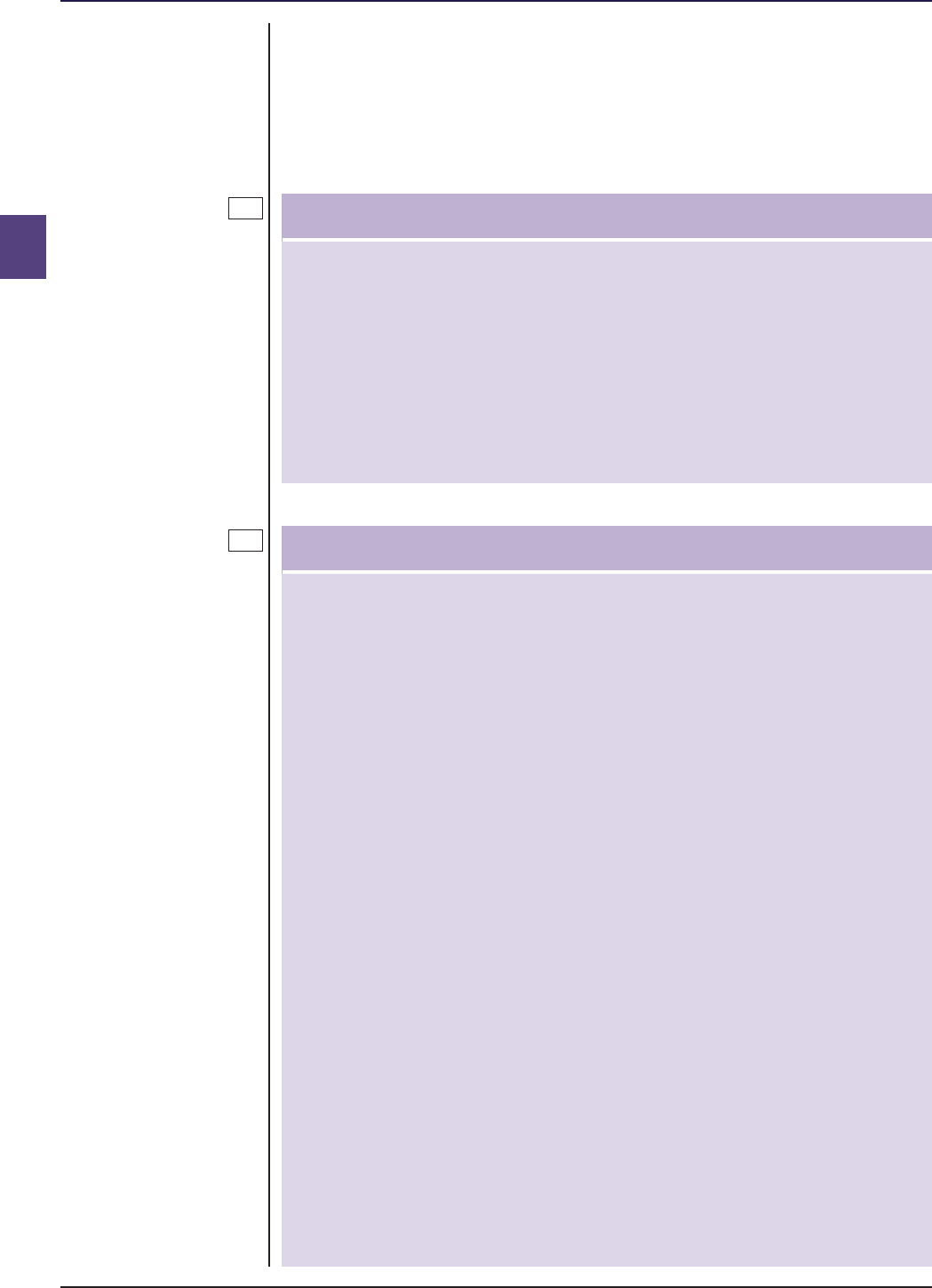
COLL 4 : Investor Relations Section 4.2 : Pre-sale notifications
4
UK4.2.5B
UK4.2.5C
■ Release 39 ● Aug 2024www.handbook.fca.org.ukCOLL 4/22
(4) An authorised fund manager of a UCITS scheme or a non-UCITS retail
scheme that does not use securities financing transactions or total
return swaps is not required to include the information in
■ COLL 4.2.5CEU in the prospectus or other pre-sale documents.
[Note: A transitional provision applies to ■ COLL 4.2.5AG: see ■ COLL TP 1.38G]
Transparency of collective investment undertakings in pre-contractual
documents
1. The prospectus referred to in [COLL 4.2.2R], and the disclosure by
AIFMs to investors required by [FUND 3.2.2R] shall specify the SFT and
total return swaps which UCITS management companies or UCITS in-
vestment companies, and AIFMs respectively, are authorised to use
and include a clear statement that those transactions and instru-
ments are used.
2. The prospectus and the disclosure to investors referred to in para-
graph 1 shall include the data provided for in Section B of the
Annex.
[Note: article 14(1) and (2) of the Securities Financing Transactions Regula-
tion and article 3 for relevant definitions]
Information to be included in the UCITS Prospectus and AIF disclosure to
investors:
_ General description of the SFTs and total return swaps used by the
collective investment undertaking and the rationale for their use.
_ Overall data to be reported for each type of SFTs and total return
swaps
_ Types of assets that can be subject to them.
_ Maximum proportion of AUM that can be subject to them.
_ Expected proportion of AUM that will be subject to each of
them.
_ Criteria used to select counterparties (including legal status, country
of origin, minimum credit rating).
_ Acceptable collateral: description of acceptable collateral with re-
gard to asset types, issuer, maturity, liquidity as well as the collateral
diversification and correlation policies.
_ Collateral valuation: description of the collateral valuation methodo-
logy used and its rationale, and whether daily mark-to-market and
daily variation margins are used.
_ Risk management: description of the risks linked to SFTs and total re-
turn swaps as well as risks linked to collateral management, such as
operational, liquidity, counterparty, custody and legal risks and,
where applicable, the risks arising from its reuse.
_ Specification of how assets subject to SFTs and total return swaps
and collateral received are safe-kept (e.g. with fund custodian).
_ Specification of any restrictions (regulatory or self-imposed) on reuse
of collateral.
_ Policy on sharing of return generated by SFTs and total return swaps:
description of the proportions of the revenue generated by SFTs and
total return swaps that is returned to the collective investment under-
taking, and of the costs and fees assigned to the manager or third
parties (e.g. the agent lender). The prospectus or disclosure to in-
vestors shall also indicate if these are related parties to the manager.

COLL 4 : Investor Relations Section 4.2 : Pre-sale notifications
4
G4.2.6
■ Release 39 ● Aug 2024 www.handbook.fca.org.uk COLL 4/23
Information to be included in the UCITS Prospectus and AIF disclosure to
investors:
[Note: section B of the annex to the Securities Financing Transactions Regu-
lation and article 3 for relevant definitions.]
[Note: AUM means assets under management.]
Guidance on contents of the prospectus
.....................................................................................................
(1) In relation to ■ COLL 4.2.5R (3)(b) the prospectus might include:
(a) a description of the extent (if any) to which that policy does not
envisage the authorised fund remaining fully invested at all
times;
(b) for a non-UCITS retail scheme which may invest in immovable
property:
(i) the maximum extent to which the scheme property may be
invested in immovables; and
(ii) a statement of the policy of the authorised fund manager in
relation to insurance of immovables forming part of the
scheme property; and
(c) a description of any restrictions in the assets in which investment
may be made, including restrictions in the extent to which the
authorised fund may invest in any category of asset, indicating (if
appropriate) where the restrictions are more onerous than those
imposed by ■ COLL 5 (Investment and borrowing powers).
(1A) In relation to ■ COLL 4.2.5R(3)(c-b), the prospectus might explain, if it is
the case, that one index or factor may be used for both a target
benchmark and a constraining benchmark in relation to the same
scheme.
(2) In relation to ■ COLL 4.2.5R (13), the type of payments are likely to
include management fees (such as periodic and performance fees),
depositary fees, custodian fees, transaction fees, registrar fees, audit
fees and FCA fees. Expenses which represent properly incurred costs
of the scheme may also be treated as a type of payment for this
purpose.
(3) [deleted]
(4) In relation to ■ COLL 4.2.5 R (16)(a), where the prospectus includes
provisions for both a single-priced authorised fund and a dual-priced
authorised fund, it should state prominently which method of pricing
is applicable to which authorised fund, and explain how the
differences between them may affect unitholders (for example if a
unitholder exchanges units in a single-priced authorised fund for
units in a dual-priced authorised fund, or vice versa).
(4A) In relation to ■ COLL 4.2.5R(3)(pa)(ii) and (iii), the types of liquidity
management tools and arrangements that should typically be
described include:
(a) suspension of dealing under ■ COLL 7.2.-3R, ■ COLL 7.2.-2R,
■ COLL 7.2.-1R and ■ COLL 7.2.1R;

COLL 4 : Investor Relations Section 4.2 : Pre-sale notifications
4
■ Release 39 ● Aug 2024www.handbook.fca.org.ukCOLL 4/24
(b) fair value price adjustment (see ■ COLL 6.3.3ER, and
■ COLL 6.3.6G(1)(5) to ■ COLL 6.3.6G(1)(7));
(c) fair and reasonable valuation of an immovable (see
■ COLL 6.3.6G(1)(7A) and ■ COLL 6.3.6G(1)(7B)); and
(d) measures to prevent dilution, such as applying a dilution levy (see
■ COLL 6.3.8R).
(5) Additional matters which are not contained in ■ COLL 4.2.5 R may be
required to be included in the prospectus, for example for the
purposes of making the scheme eligible under relevant tax legislation.
(6) The authorised fund manager of a UCITS scheme should consider the
appropriateness of including additional matters in its prospectus as a
result of the ESMA Guidelines on ETFs and other UCITS issues (ESMA
2012/832).
(7) (a) A full-scope UK AIFM that is the authorised fund manager of a
non-UCITS retail scheme should ensure that the prospectus of the
scheme includes the information required under ■ FUND 3.2
(Investor information) and ■ COLL 4.2.5R.
(b) The authorised fund manager need not state the same
information twice to satisfy both sets of requirements.
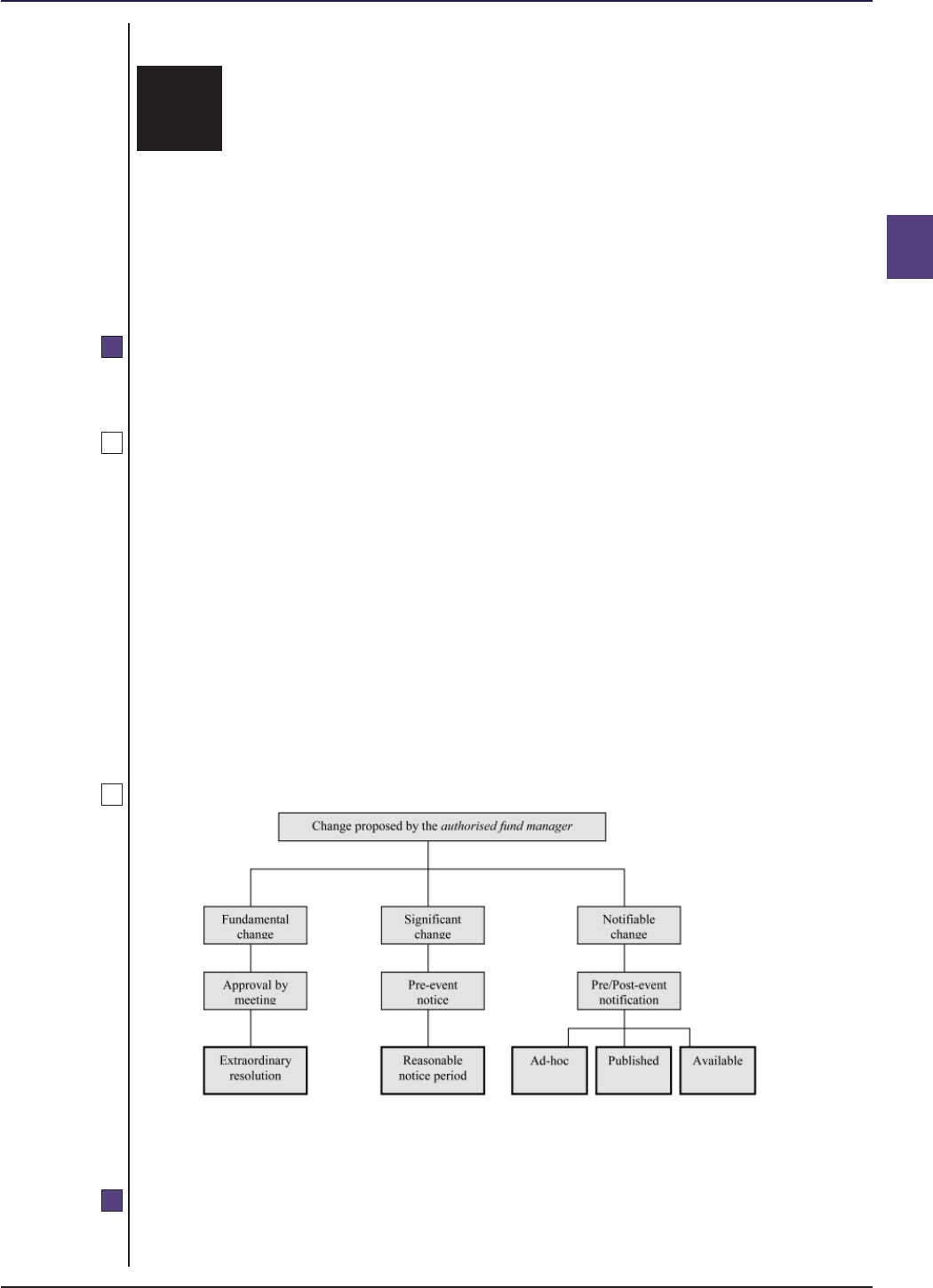
COLL 4 : Investor Relations Section 4.3 : Approvals and notifications
4
R4.3.1
G4.3.2
G4.3.3
R4.3.4
■ Release 39 ● Aug 2024 www.handbook.fca.org.uk COLL 4/25
4.3 Approvals and notifications
Application
.....................................................................................................
This section applies to an authorised fund manager.
Explanation
.....................................................................................................
(1) The diagram in ■ COLL 4.3.3 G explains how an authorised fund
manager should treat changes it is proposing to a scheme and
provides an overview of the rules and guidance in this section.
(2) Regulation 21 of the OEIC Regulations (The Authority's approval for
certain changes in respect of a company), section 261Q of the Act
(Alteration of contractual schemes and changes of operator or
depositary) and section 251 of the Act (Alteration of schemes and
changes of manager or trustee) require the prior approval of the FCA
for certain proposed changes to an authorised fund, including a
change of the authorised fund manager or depositary or a change to
the instrument constituting the fund . This should be kept in mind
when considering any proposed change.
Diagram: Change event
.....................................................................................................
This diagram belongs to ■ COLL 4.3.2 G.
Fundamental change requiring prior approval by meeting
.....................................................................................................
(1) The authorised fund manager, must, by way of an extraordinary
resolution, obtain prior approval from the unitholders for any

COLL 4 : Investor Relations Section 4.3 : Approvals and notifications
4
G4.3.5
R4.3.6
■ Release 39 ● Aug 2024www.handbook.fca.org.ukCOLL 4/26
proposed change to the scheme which, in accordance with (2), is a
fundamental change.
(2) A fundamental change is a change or event which:
(a) changes the purposes or nature of the scheme; or
(b) may materially prejudice a unitholder; or
(c) alters the risk profile of the scheme; or
(d) introduces any new type of payment out of scheme property.
Guidance on fundamental changes
.....................................................................................................
(1) Any change may be fundamental depending on its degree of
materiality and effect on the scheme and its unitholders.
Consequently an authorised fund manager will need to determine
whether in each case a particular change is fundamental in nature or
not.
(2) For the purpose of ■ COLL 4.3.4R (2)(a) to ■ COLL 4.3.4R (2)(c) a
fundamental change to a scheme is likely to include:
(a) any proposal for a scheme of arrangement referred to in
■ COLL 7.6.2 R (Schemes of arrangement: requirements);
(b) a change in the investment policy to achieve capital growth from
investment in one country rather than another;
(c) a change in the investment objective or policy to achieve capital
growth through investment in fixed interest rather than equity
investments;
(d) a change in the investment policy to allow the authorised fund to
invest in derivatives as an investment strategy which increases its
volatility;
(e) a change to the characteristics of a scheme to distribute income
annually rather than monthly; or
(f) the introduction of limited redemption arrangements.
Significant change requiring pre-event notification
.....................................................................................................
(1) The authorised fund manager must give prior written notice to
unitholders, in respect of any proposed change to the operation of a
scheme that, in accordance with (2), constitutes a significant change.
(2) A significant change is a change or event which is not fundamental in
accordance with ■ COLL 4.3.4 R but which:
(a) affects a unitholder's ability to exercise his rights in relation to his
investment; or
(b) would reasonably be expected to cause the unitholder to
reconsider his participation in the scheme; or
(c) results in any increased payments out of the scheme property to
an authorised fund manager or any other director of an ICVC or
an associate of either; or
(d) materially increases other types of payment out of scheme
property.

COLL 4 : Investor Relations Section 4.3 : Approvals and notifications
4
R4.3.6A
G4.3.7
R4.3.8
G4.3.9
■ Release 39 ● Aug 2024 www.handbook.fca.org.uk COLL 4/27
(3) The notice period in (1) must be of a reasonable length (and must not
be less than 60 days).
[deleted]
Guidance on significant changes
.....................................................................................................
(1) Changes may be significant depending in each case on their degree
of materiality and effect on the scheme and its unitholders.
Consequently the authorised fund manager will need to determine
whether in each case a particular change is significant in nature or
not.
(2) For the purpose of ■ COLL 4.3.6 R a significant change is likely to
include:
(a) a change in the method of price publication;
(b) a change in any operational policy such as dilution policy or
allocation of payments policy;
(c) an increase in the preliminary charge where units are purchased
through a group savings plan; or
(d) a change in the pricing arrangements for units of the scheme so
as to cause a single-priced authorised fund to become a dual-
priced authorised fund, or vice versa.
(3) Where the directors of an ICVC elect to discontinue holding annual
general meetings under paragraph 37A of the OEIC Regulations, they
are required to give 60 days' written notice to shareholders. For the
purpose of ■ COLL 4.3.6 R this should be treated as a significant change
to the operation of the scheme.
(4) [deleted]
Notifiable changes
.....................................................................................................
(1) The authorised fund manager must inform unitholders in an
appropriate manner and timescale of any notifiable changes that are
reasonably likely to affect, or have affected, the operation of the
scheme.
(2) A notifiable change is a change or event, other than a fundamental
change under ■ COLL 4.3.4 R or a significant change under
■ COLL 4.3.6 R, which a unitholder must be made aware of unless the
authorised fund manager concludes that the change is insignificant.
Guidance on notifiable changes
.....................................................................................................
(1) The circumstances causing a notifiable change may or may not be
within the control of the authorised fund manager.
(2) For the purpose of ■ COLL 4.3.8 R (Notifiable changes) a notifiable
change might include:

COLL 4 : Investor Relations Section 4.3 : Approvals and notifications
4
R4.3.10
R4.3.11
R4.3.12
G4.3.13
■ Release 39 ● Aug 2024www.handbook.fca.org.ukCOLL 4/28
(a) a change of named investment manager where the authorised
fund has been marketed on the basis of that individual's
involvement;
(b) a significant political event which impacts on the authorised fund
or its operation;
(c) a change to the time of the valuation point;
(d) the introduction of limited issue arrangements; or
(e) a change of the depositary or a change in the name of the
authorised fund.
(3) The appropriate manner and timescale of notification would depend
on the nature of the change or event. Consequently the authorised
fund manager will need to assess each change or event individually.
(4) An appropriate manner of notification could include:
(a) sending an immediate notification to the unitholder;
(b) publishing the information on a website; or
(c) the information being included in the next long report of the
scheme.
(1) [deleted]
(2) [deleted]
Change events relating to feeder UCITS and feeder NURS
.....................................................................................................
Where the authorised fund manager of either a feeder UCITS or a feeder
NURS is notified of any change in respect of its master UCITS or qualifying
master scheme which has the effect of a change to the feeder UCITS or
feeder NURS, the authorised fund manager must:
(1) classify it as a fundamental change, significant change or a notifiable
change to the feeder UCITS or feeder NURS in accordance with the
rules in this section; and
(2) (a) for a fundamental change, obtain approval from the unitholders
by way of an extraordinary resolution; or
(b) for a significant change, give written notice to unitholders of
that change; or
(c) for a notifiable change, comply with ■ COLL 4.3.8 R (Notifiable
changes).
The actions required by ■ COLL 4.3.11 R (2)(a) and ■ (b) must be carried out as
soon as reasonably practicable after the authorised fund manager of the
feeder UCITS or feeder NURS has been informed of the relevant change to
the master UCITS or qualifying master scheme.
(1) The authorised fund manager of the feeder UCITS or feeder NURS
should assess the change to the master UCITS or qualifying master

COLL 4 : Investor Relations Section 4.3 : Approvals and notifications
4
■ Release 39 ● Aug 2024 www.handbook.fca.org.uk COLL 4/29
scheme in terms of its impact on the feeder UCITS or feeder NURS.
For example, a change to the investment objective and policy of the
master UCITS or qualifying master scheme that alters its risk profile
would constitute a fundamental change for the feeder UCITS or
feeder NURS. In order for the feeder UCITS or feeder NURS to
continue investing in the master UCITS or qualifying master scheme,
the authorised fund manager of the feeder UCITS or feeder NURS
should obtain the approval of unitholders by way of an extraordinary
resolution, or else make a proposal to invest in a different master
UCITS or qualifying master scheme. For a feeder UCITS this should be
done in accordance with ■ COLL 11.2.2 R (Application for approval of
an investment in a master UCITS).
(2) Not all changes affecting the master UCITS or qualifying master
scheme will have the same significance for the feeder UCITS or feeder
NURS and its unitholders. For example, a change to how the prices of
the units in the master UCITS or qualifying master scheme are
published might not be a significant change for the feeder UCITS or
feeder NURS if the prices of its own units continue to be published in
the same way.
(3) Where the authorised fund manager of the feeder UCITS or feeder
NURS receives insufficient notice of the intended change to the
master UCITS or qualifying master scheme to be able to seek the prior
approval of unitholders to any fundamental change or to inform
them at least 60 days in advance of any significant change, it should
nevertheless use reasonable endeavours to inform them of the
change as soon as possible so that they can make an informed
judgement about the merits of continuing to invest in the feeder
UCITS or feeder NURS.
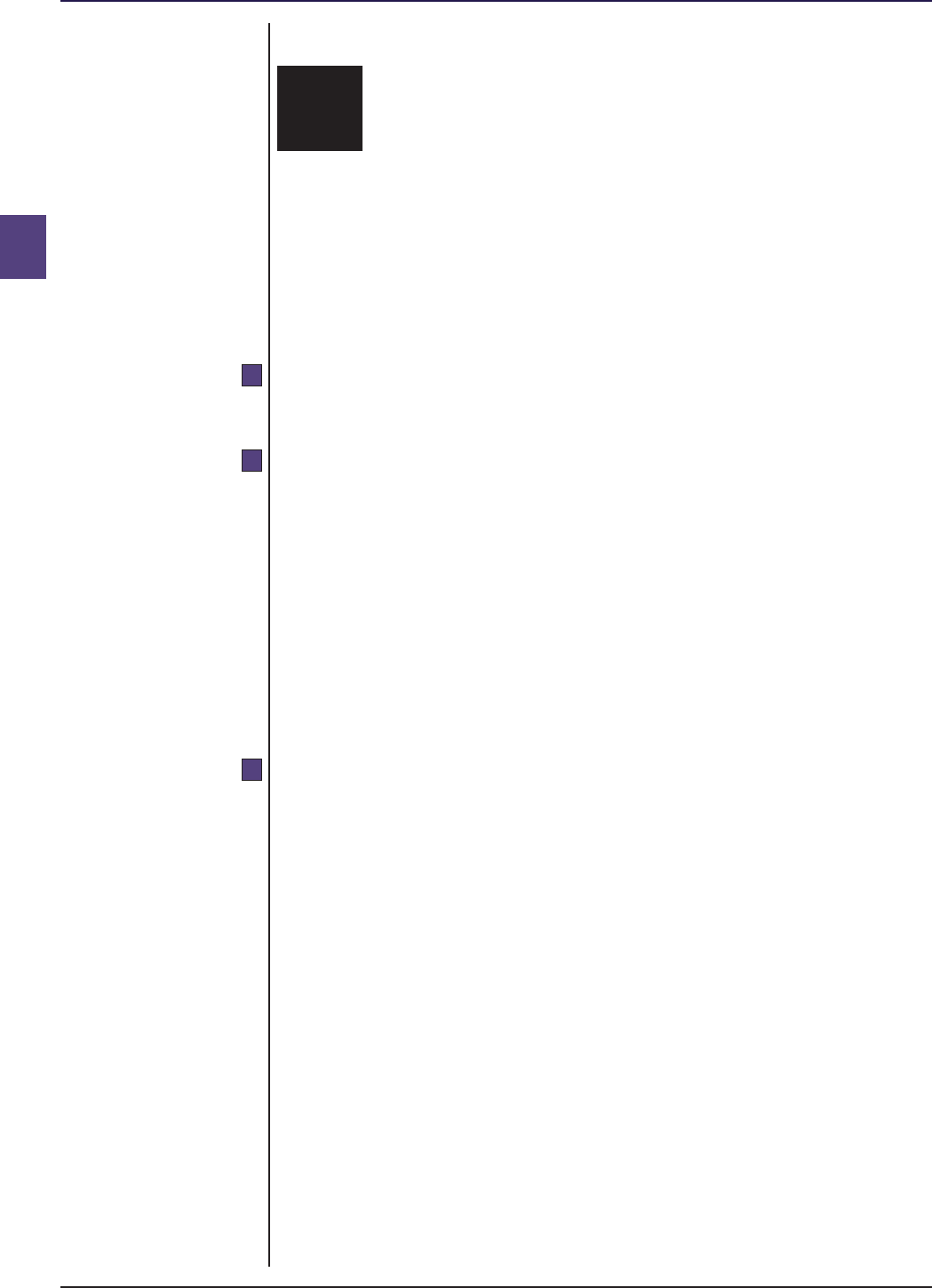
COLL 4 : Investor Relations Section 4.4 : Meetings of Unitholders and
service of notices
4
R4.4.1
R4.4.1A
R4.4.2
■ Release 39 ● Aug 2024www.handbook.fca.org.ukCOLL 4/30
4.4 Meetings of Unitholders and service
of notices
Application
.....................................................................................................
This section applies to an authorised fund manager, a depositary and any
other director of an ICVC.
In this section:
(1) a ‘physical meeting’ is a general meeting convened at a physical
location where unitholders, or their proxy, must be physically present;
(2) a ‘hybrid meeting’ is a general meeting which allows unitholders, or
their proxy, to be physically present at the location where the
meeting is convened, or to attend and vote remotely; and
(3) a ‘virtual meeting’ is a general meeting where all unitholders, or their
proxy, attend and vote remotely.
General meetings
.....................................................................................................
(1) The authorised fund manager, the depositary or the other directors of
an ICVC may convene a general meeting of unitholders at any time.
(2) The unitholders may request the convening of a general meeting by a
requisition which must:
(a) state the objects of the meeting;
(b) be dated;
(c) be signed by unitholders who, at that date, are registered as the
unitholders of units representing not less than one-tenth in value
(or such lower proportion stated in the instrument constituting
the fund ) of all of the units then in issue; and
(d) be deposited at the head office of the ICVC or with the
depositary of an AUT or ACS.
(3) The authorised fund manager, the depositary or the other directors of
an ICVC must on receipt of a requisition that complies with (2),
immediately convene a general meeting of the authorised fund for a
date no later than eight weeks after receipt of the requisition.
(4) The advisory committee of a charity authorised investment fund may
also request the convening of a general meeting of unitholders by
giving notice in accordance with ■ COLL 14.3.5R.
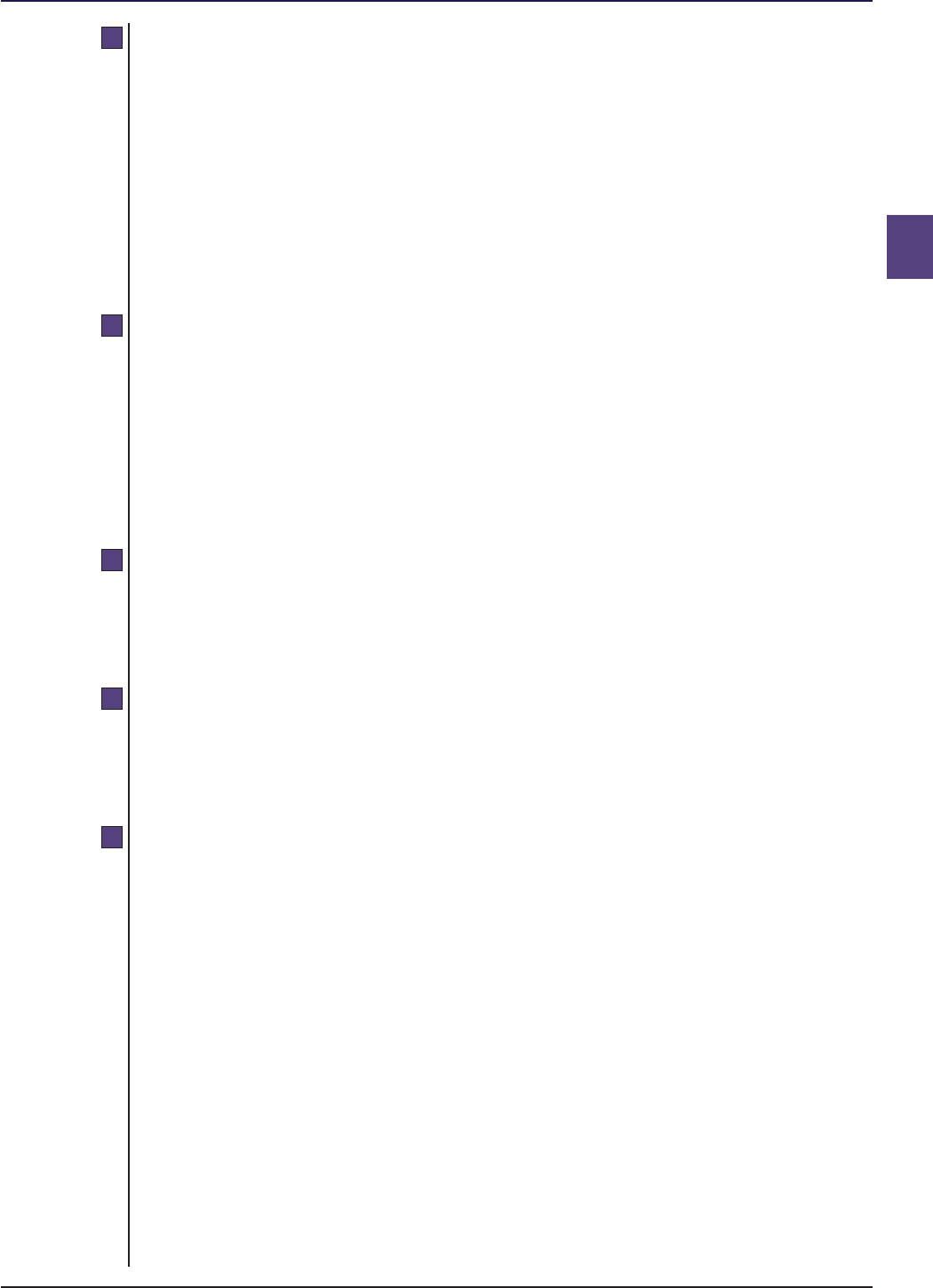
COLL 4 : Investor Relations Section 4.4 : Meetings of Unitholders and
service of notices
4
R4.4.2A
R4.4.2B
R4.4.2C
R4.4.3
R4.4.4
■ Release 39 ● Aug 2024 www.handbook.fca.org.uk COLL 4/31
The instrument constituting the fund may make provision for a general
meeting to be:
(1) a physical meeting;
(2) a hybrid meeting; or
(3) a virtual meeting,
but in any event the authorised fund manager may hold a virtual
meeting or a hybrid meeting if this is not inconsistent with any
provisions in the instrument constituting the fund.
(1) Any unitholder who participates remotely in a hybrid meeting by the
means specified in the notice given under ■ COLL 4.4.5R is deemed to
be present at the meeting and has the same rights as a unitholder
who is physically present at the meeting.
(2) Any unitholder who participates in a virtual meeting by the means
specified in the notice given under ■ COLL 4.4.5R is deemed to be
present at the meeting and has the same rights that the unitholder
would have at a physical meeting.
Any unitholder who participates remotely must be enabled to do so without
having to appoint a proxy and must not be required to submit their vote on
a resolution in advance of the meeting.
Class meetings
.....................................................................................................
This section applies, unless the context otherwise requires, to class meetings
by reference to the units of the class concerned and the unitholders and
prices of such units.
Special meaning of Unitholder in COLL 4.4
.....................................................................................................
(1) Unless a unit in the authorised fund is a participating security, in this
section "unitholders" means unitholders as at a cut-off date selected
by the authorised fund manager which is a reasonable time before
notices of the relevant meeting are sent out.
(2) If any unit in the authorised fund is a participating security, a
registered unitholder of such a unit is entitled to receive a notice of a
meeting or a notice of an adjourned meeting under ■ COLL 4.4.5 R
(Notice of general meetings), if entered on the register at the close of
business on a day to be determined by the authorised fund manager,
which must not be more than 21 days before the notices of the
meeting are sent out.
(3) For the purposes of (2), in ■ COLL 4.4.6 R (Quorum) to ■ COLL 4.4.11 R
(The chair, adjournments and minutes) "unitholders" in relation to
those units means the persons entered on the register at a time to be
determined by the authorised fund manager and stated in the notice
of the meeting, which must not be more than 48 hours before the
time fixed for the meeting.

COLL 4 : Investor Relations Section 4.4 : Meetings of Unitholders and
service of notices
4
R4.4.5
R4.4.6
■ Release 39 ● Aug 2024www.handbook.fca.org.ukCOLL 4/32
Notice of general meetings
.....................................................................................................
(1) Where the authorised fund manager, the depositary or the other
directors of an ICVC decide to convene a general meeting of
unitholders:
(a) each unitholder must be given at least 14 days written notice,
inclusive of the date on which the notice is first served and the
day of the meeting;
(b) the notice must specify:
(i) whether the meeting is to be a physical meeting, a hybrid
meeting or a virtual meeting;
(ii) if the meeting is a physical meeting or a hybrid meeting, the
place of the meeting;
(iii) if the meeting is a hybrid meeting or a virtual meeting, the
means by which a unitholder may participate, including any
requirements for unitholders to register before the meeting
begins or to provide proof of their right to attend, and an
explanation of how participating unitholders may vote in a
show of hands or in a poll, if they do not appoint a proxy;
(iv) the day and hour of the meeting;
(v) the terms of the resolutions to be proposed; and
(vi) the address of the website where the minutes of the meeting
will subsequently be published; and
(c) a copy of the notice must be sent to the depositary.
(2) The accidental omission to give notice to, or the non-receipt of notice
by, any unitholder does not invalidate the proceedings at any
meeting.
(3) Notice of an adjourned meeting of unitholders must be given to each
unitholder, stating that while two unitholders are required to be
present – in person, by proxy or remotely – to constitute a quorum at
the adjourned meeting, this may be reduced to one in accordance
with ■ COLL 4.4.6R (3), should two such unitholders not be present
after a reasonable time of convening of the meeting.
(4) Paragraph (1)(a) does not apply to the notice of an adjourned
meeting.
(5) Where the meeting is a hybrid meeting or a virtual meeting, the
authorised fund manager must take reasonable care to ensure that
the necessary supporting technology to enable unitholders to attend
and vote is in place at the start of the meeting and operates
adequately throughout its proceedings, so that unitholders who
attend or vote remotely are not unfairly disadvantaged.
Quorum
.....................................................................................................
(1) The quorum required to conduct business at a meeting of unitholders
is two unitholders, present in person, by proxy or (where applicable)
remotely using the means specified in the notice given under
■ COLL 4.4.5R.

COLL 4 : Investor Relations Section 4.4 : Meetings of Unitholders and
service of notices
4
R4.4.7
R4.4.8
■ Release 39 ● Aug 2024 www.handbook.fca.org.uk COLL 4/33
(2) If after a reasonable time from the time for the start of the meeting,
a quorum is not present, the meeting:
(a) if convened on the requisition of unitholders, must be dissolved;
and
(b) in any other case, must stand adjourned to:
(i) a day and time which is seven or more days after the day and
time of the meeting; and
(ii) in the case of a physical meeting or a hybrid meeting, a place
to be appointed by the chair.
(3) If, at an adjourned meeting under (2)(b), a quorum is not present
after a reasonable time from the time for the meeting, one person
entitled to be counted in a quorum present at the meeting shall
constitute a quorum.
(4) The chair of a meeting which permits unitholders to attend and vote
remotely must take reasonable care to give such unitholders:
(a) an adequate opportunity to be counted as present in the
quorum; and
(b) sufficient opportunities to participate fully in the proceedings of
the meeting, in particular when a vote is taken on a show of
hands or by poll.
Resolutions
.....................................................................................................
(1) Except where an extraordinary resolution is specifically required or
permitted, any resolution of unitholders is passed by a simple
majority of the votes validly cast at a general meeting of unitholders.
(2) In the case of an equality of, or an absence of, votes cast, the chair is
entitled to a casting vote.
(3) Where a resolution (including an extraordinary resolution) is required
to conduct business at a meeting of unitholders and every unitholder
is prohibited under ■ COLL 4.4.8R (4) from voting, it shall not be
necessary to convene such a meeting and a resolution may, with the
prior written agreement of the depositary to the process, instead be
passed with the written consent of unitholders representing 50% or
more, or for an extraordinary resolution 75% or more, of the units of
the scheme in issue.
Voting rights
.....................................................................................................
(1) On a show of hands every unitholder who is present in person, or
who attends the meeting remotely using the means specified in the
notice in ■ COLL 4.4.5R, has one vote.
(2) On a poll:
(a) votes may be given either personally or by proxy or in another
manner permitted by the instrument constituting the fund;
(b) the voting rights for each unit must be the proportion of the
voting rights attached to all of the units in issue that the price of

COLL 4 : Investor Relations Section 4.4 : Meetings of Unitholders and
service of notices
4
R4.4.9
R4.4.10
■ Release 39 ● Aug 2024www.handbook.fca.org.ukCOLL 4/34
the unit bears to the aggregate price or prices of all of the units
in issue:
(i) if any unit is a participating security, at the time determined
under ■ COLL 4.4.4R (2) (Special meaning of Unitholder in
■ COLL 4.4);
(ii) otherwise at the date specified in ■ COLL 4.4.4R (1); and
(c) a unitholder need not use all his votes or cast all his votes in the
same way.
(3) For joint unitholders, the vote of the most senior who votes, whether
in person, by proxy or remotely by the means referred to in (1), must
be accepted to the exclusion of the votes of the other joint
unitholders. For this purpose seniority must be determined by the
order in which the names stand in the register of unitholders.
(4) No director of the ICVC or the authorised fund manager of an AUT or
ACS can be counted in the quorum of, and no such director or the
authorised fund manager of an AUT or ACS nor any of their
associates may vote at, any meeting of the authorised fund.
(5) The prohibition in (4) does not apply to any units held on behalf of,
or jointly with, a person who, if himself the registered unitholder,
would be entitled to vote and from whom the director, the
authorised fund manager of an AUT or ACS or its associate have
received voting instructions.
(6) For the purpose of this section, units held, or treated as held, by the
authorised fund manager or any other director of the ICVC, must not,
except as mentioned in (5), be regarded as being in issue.
Right to demand a poll
.....................................................................................................
(1) A resolution put to the vote of a general meeting must be
determined on a show of hands unless a poll is (before or on the
declaration of the result of the show of hands) demanded by:
(a) the chair;
(b) at least two unitholders; or
(c) the depositary.
(2) Unless a poll is demanded in accordance with (1), a declaration by the
chair as to the result of a resolution is conclusive evidence of the fact.
Proxies
.....................................................................................................
(1) A unitholder may appoint another person to attend a general
meeting and vote in his place.
(2) Unless the instrument constituting the fund provides otherwise, a
unitholder may appoint more than one proxy to attend on the same
occasion but a proxy may vote only on a poll.

COLL 4 : Investor Relations Section 4.4 : Meetings of Unitholders and
service of notices
4
R4.4.11
■ Release 39 ● Aug 2024 www.handbook.fca.org.uk COLL 4/35
(3) Every notice calling a meeting of a scheme must contain a reasonably
prominent statement that a unitholder entitled to attend and vote
may appoint a proxy.
(4) For the appointment to be effective, any document relating to the
appointment of a proxy must not be required to be received by the
ICVC or any other person more than 48 hours before the meeting or
adjourned meeting
The chair, adjournment and minutes
.....................................................................................................
(1) A meeting of unitholders must have a chair, nominated:
(a) in the case of an AUT or ACS, by the depositary;
(b) in the case of an ICVC, by a director other than the ACD or an
associate of the ACD or, if no such nomination is made, by the
depositary.
(1) In the case of a physical meeting or a hybrid meeting, the chair must
be physically present at the place of the meeting.
(2) If the chair is not present after a reasonable time from the time for
the meeting, the unitholders present must (subject to (1A)) choose
one of them to be the chair.
(3) The chair:
(a) may, with the consent of any meeting of unitholders at which a
quorum is present; and
(b) must, if so directed by the meeting;
adjourn the meeting from time to time and from place to place,
provided that any arrangements to enable remote participation
at the original meeting are replicated for any adjourned
meeting.
(4) Business must not be transacted at any adjourned meeting, except
business which might have lawfully been transacted at the original
meeting.
(5) The authorised fund manager must ensure that:
(a) minutes of all resolutions and proceedings at every meeting of
unitholders are made and kept; and
(b) any minute made in (a) is signed by the chair of the meeting of
unitholders.
(6) Any minute referred to in (5)(b) is conclusive evidence of the matters
stated in it.
(7) The authorised fund manager must publish the minutes on a website
accessible to the general public without charge, no later than 5
business days after the meeting has taken place (but in the case of an
original meeting which is adjourned, the minutes must be published
no later than 5 business days after the adjourned meeting has taken
place).

COLL 4 : Investor Relations Section 4.4 : Meetings of Unitholders and
service of notices
4
R4.4.12
R4.4.13
G4.4.14
■ Release 39 ● Aug 2024www.handbook.fca.org.ukCOLL 4/36
Notices to unitholders
.....................................................................................................
(1) Where this sourcebook requires any notice or document to be served
upon a unitholder, it is duly served :
(a) for units held by a registered unitholder, if it is:
(i) sent by post to or left at the unitholder's address as
appearing in the register; or
(ii) sent by using an electronic medium in accordance with
■ COLL 4.4.13 R (Other notices).
(b) [deleted]
(2) Any notice or document served by post is deemed to have been
served on the second business day following the day on which it is
posted.
(3) Any document left at a registered address or delivered other than by
post is deemed to have been served on that day.
(4) Any notice or document served by post on one joint unitholder is
deemed to also have been served on each other joint unitholder
whose address, as appearing on the register, is the same address to
which the notice or document was sent.
Other notices
.....................................................................................................
(1) Any document or notice to be served on or information to be given
to, any person, including the FCA , must be in legible form.
(2) For the purposes of this rule, any form is legible form which:
(a) is consistent with the ICVC's, the directors', the authorised fund
manager's or the depositary's knowledge of how the recipient of
the document wishes or expects to receive the document;
(b) is capable of being provided in hard copy by the authorised fund
manager, the depositary or any other director of the ICVC;
(c) enables the recipient to know or record the time of receipt; and
(d) is reasonable in the context.
(3) (a) In this sourcebook, any requirement that a document be signed
may be satisfied by an electronic signature or electronic evidence
of assent.
(b) In relation to an AUT or ACS, where transfer of title to units is to
be effected on the authority of an electronic communication, the
authorised fund manager must take reasonable steps to ensure
that any electronic communication purporting to be made by the
unitholder or his agent is in fact made by that person.
References to writing and electronic documents
.....................................................................................................
In this sourcebook references to writing and the use of electronic media
should be construed in accordance with ■ GEN 2.2.14 R (References to writing)
and its related guidance provisions.

COLL 4 : Investor Relations Section 4.4 : Meetings of Unitholders and
service of notices
4
G4.4.15
■ Release 39 ● Aug 2024 www.handbook.fca.org.uk COLL 4/37
Service of notice Regulations
.....................................................................................................
The provisions in this section relating to the service and delivery of notices
and documents both to unitholders and to the FCA , disapply the provisions
of The Financial Services and Markets Act 2000 (Service of Notices)
Regulations 2001 (SI 2001/1420) under the power in Regulation 1(6) of those
Regulations.

COLL 4 : Investor Relations Section 4.5 : Reports and accounts
4
R4.5.1
G4.5.2
G4.5.2A
R4.5.3
■ Release 39 ● Aug 2024www.handbook.fca.org.ukCOLL 4/38
4.5 Reports and accounts
Application
.....................................................................................................
The rules and guidance in this section apply to an authorised fund manager,
a depositary and any other director of an ICVC.
Explanation
.....................................................................................................
In order to provide the unitholders with regular and relevant information
about the progress of the authorised fund, the authorised fund manager
must:
(1) prepare a long report half-yearly and annually; and
(2) [deleted]
(3) make the long report available to unitholders on request.
Full-scope UK AIFM of a non-UCITS retail scheme
.....................................................................................................
(1) A full-scope UK AIFM that is the authorised fund manager of a non-
UCITS retail scheme should comply with both:
(a) ■ FUND 3.3 (Annual report of an AIF); and
(b) this chapter,
regarding the preparation and publication of annual reports.
(2) The authorised fund manager need not state the same information
twice to satisfy both sets of requirements.
(3) The authorised fund manager, when preparing the half-yearly long
report, needs to comply only with this chapter.
Preparation of long reports
.....................................................................................................
(1) The authorised fund manager must for each annual accounting
period and half-yearly accounting period, prepare a long report for a
scheme.
(2) [deleted]

COLL 4 : Investor Relations Section 4.5 : Reports and accounts
4
G4.5.4
R4.5.5
G4.5.6
R4.5.7
■ Release 39 ● Aug 2024 www.handbook.fca.org.uk COLL 4/39
(3) Where the first annual accounting period of a scheme is less than 12
months, a half-yearly report need not be prepared.
(4) [deleted]
ICVC requirements
.....................................................................................................
(1) The OEIC Regulations contain requirements for the preparation of
annual and half-yearly reports and make the directors of an ICVC
responsible for the preparation of annual and half-yearly reports on
the ICVC.
(2) Regulations 66 (Reports: preparation), 67 (Reports: accounts) and 68
(Reports: voluntary revision) of the OEIC Regulations also contain a
number of other requirements relating to reports and accounts of an
ICVC.
[deleted]
[deleted]
Contents of the annual long report
.....................................................................................................
(1) An annual long report on an authorised fund, other than a scheme
which is an umbrella, must contain:
(a) the accounts for the annual accounting period which must be
prepared in accordance with the requirements of the SORP;
(b) the report of the authorised fund manager in accordance with
■ COLL 4.5.9 R (Authorised fund manager's report);
(c) comparative information in accordance with ■ COLL 4.5.10 R
(Comparative information);
(d) the report of the depositary in accordance with ■ COLL 4.5.11 R
(Report of the depositary);
(e) the report of the auditor in accordance with ■ COLL 4.5.12 R
(Report of the auditor);
(f) subject to ■ COLL 4.5.7R(1)(g), its public TCFD product report or an
adequately contextualised and prominent cross-reference and
hyperlink to the report’s location on the firm’s website, in
accordance with ■ ESG 2.3.1R;
(g) where applicable, Part B of its public product-level sustainability
report or an adequately contextualised and prominent cross-
reference and hyperlink to the report’s location on the firm’s
website, in accordance with ■ ESG 5.5.5R; and
(h) where applicable, the amounts paid as donations for Sharia
compliance purposes and the registered charities which received
these payments.
(2) An annual long report on a scheme which is an umbrella must be
prepared for the umbrella as a whole and must contain:
(a) for each sub-fund:

COLL 4 : Investor Relations Section 4.5 : Reports and accounts
4
■ Release 39 ● Aug 2024www.handbook.fca.org.ukCOLL 4/40
(i) the accounts for the annual accounting period which must be
prepared in accordance with the requirements of the SORP;
(ii) the report of the authorised fund manager in accordance
with ■ COLL 4.5.9 R;
(iii) comparative information in accordance with ■ COLL 4.5.10 R;
(iv) subject to ■ COLL 4.5.7R(2)(a)(v), its public TCFD product report
or an adequately contextualised and prominent cross-
reference and hyperlink to the report’s location on the firm’s
website, in accordance with ■ ESG 2.3.1R;
(v) where applicable, Part B of its public product-level
sustainability report or an adequately contextualised and
prominent cross-reference and hyperlink to the report’s
location on the firm’s website, in accordance with
■ ESG 5.5.5R; and
() where applicable, the amounts paid as donations for Sharia
compliance purposes and the registered charities which
received these payments;
(b) [deleted]
(c) the report of the depositary in accordance with ■ COLL 4.5.11 R;
and
(d) the report of the auditor in accordance with ■ COLL 4.5.12 R.
(3) The directors of an ICVC or the authorised fund manager of an AUT
or ACS must ensure that the accounts referred to in (1)(a), (2)(a) and
(4)(a) give a true and fair view of the net revenue and the net capital
gains or losses on the scheme property of the authorised fund, or, in
the case of (2)(a) and (4)(a), the sub-fund, for the annual accounting
period in question and the financial position of the authorised fund
or sub-fund as at the end of that period.
(4) The authorised fund manager of a scheme which is an umbrella may,
in addition to complying with (2), prepare a further annual long
report for any one or more individual sub-funds of the scheme, in
which case it must contain:
(a) in relation to the sub-fund:
(i) the accounts for the annual accounting period which must be
prepared in accordance with the requirements of the SORP;
(ii) the report of the authorised fund manager in accordance
with ■ COLL 4.5.9 R; and
(iii) comparative information in accordance with ■ COLL 4.5.10 R;
(b) the report of the depositary in accordance with ■ COLL 4.5.11 R;
and
(c) the report of the auditor in accordance with ■ COLL 4.5.12 R.
(5) An annual long report of a UCITS scheme which is a feeder UCITS
must also include:
(a) a statement on the aggregate of the payments out of scheme
property as set out in the prospectus (in this rule “charges”) of
the feeder UCITS and the master UCITS; and

COLL 4 : Investor Relations Section 4.5 : Reports and accounts
4
■ Release 39 ● Aug 2024 www.handbook.fca.org.uk COLL 4/41
(b) a description of how the annual long report of its master UCITS
can be obtained.
[Note: article 63(2) of the UCITS Directive]
(6) An annual long report of a feeder NURS must also include:
(a) a statement on the aggregate charges of the feeder NURS and its
qualifying master scheme; and
(b) a description of how the annual long report (or nearest
equivalent document for a qualifying master scheme that is a
recognised scheme) of its qualifying master scheme can be
obtained.
(7) An annual long report of a UCITS scheme must also include:
(a) (i) the total amount of remuneration paid by the authorised
fund manager to its staff for the financial year, split into
fixed and variable remuneration;
(ii) the number of beneficiaries; and
(iii) where relevant, any amount paid directly by the UCITS
scheme itself, including any performance fee;
(b) the aggregate amount of remuneration broken down by
categories of UCITS Remuneration Code staff;
(c) a description of how the remuneration and the benefits have
been calculated;
(d) the outcome of the reviews referred to in ■ SYSC 19E.2.7R(1) and
■ SYSC 19E.2.8R, including any irregularities that have occurred;
and
(e) details of any material changes to the adopted remuneration
policy since the previous annual long report was prepared.
[Note: article 69(3) second paragraph of the UCITS Directive]
(8) An annual long report of an authorised fund must also contain a
statement setting out a description of the assessment of value
required by ■ COLL 6.6.20R including:
(a) a separate discussion and conclusion for the matters covered in
each paragraph of ■ COLL 6.6.21R, and for each other matter that
formed part of the assessment, covering the considerations taken
into account in the assessment, a summary of its findings and the
steps undertaken as part of or as a consequence of the
assessment;
(b) an explanation for any case in which benefits from economies of
scale that were identified in the assessment have not been passed
on to unitholders;
(c) an explanation for any case in which unitholders hold units in a
class that is subject to higher charges than those applying to
other classes of the same scheme with substantially similar rights;
(d) the conclusion of the authorised fund manager’s assessment of
whether the charges are justified in the context of the overall
value delivered to the unitholders in the scheme; and

COLL 4 : Investor Relations Section 4.5 : Reports and accounts
4
G4.5.7A
G4.5.8-A
R4.5.8
■ Release 39 ● Aug 2024www.handbook.fca.org.ukCOLL 4/42
(e) if the assessment has identified that the charges are not justified
in the context of the overall value delivered to the unitholders, a
clear explanation of what action has been or will be taken to
address the situation.
(9) An AFM need not include the statement required by (8) in its annual
long report if it makes the statement available to unitholders
annually in a composite report covering two or more of the
authorised funds it manages, published in the same manner as the
annual long report.
(1) The FCA recognises that the annual long report, including the
remuneration related disclosures in ■ COLL 4.5.7R(7), may be required
to be made available to unitholders before the completion of the
authorised fund manager’s first annual performance period in which
it has to comply with the UCITS Remuneration Code.
(2) Under (1), the FCA expects the authorised fund manager to make
best efforts to comply with ■ COLL 4.5.7R(7) to the extent possible.
(3) The authorised fund manager, having made best efforts to achieve
compliance with ■ COLL 4.5.7R(7), may omit to disclose information
relating to remuneration where the information:
(a) is not available to the authorised fund manager for the relevant
annual accounting period; or
(b) is available but will not provide materially relevant, reliable,
comparable and clear information to unitholders about the
remuneration policy of the authorised fund manager, as it affects
the particular UCITS scheme.
(4) Where disclosure is omitted, the authorised fund manager should
explain the basis for that omission.
An AFM which is not subject to ■ COLL 6.6.20R as a result of
■ COLL 6.6.19R is not required to comply with ■ COLL 4.5.7R(8) or (9).
[deleted]
Contents of the half-yearly long report
.....................................................................................................
(1) A half-yearly long report on an authorised fund, other than for a
scheme which is an umbrella, must contain:
(a) the accounts for the half-yearly accounting period which must be
prepared in accordance with the requirements of the SORP;
(b) the report of the authorised fund manager in accordance with
■ COLL 4.5.9 R (Authorised fund manager's report);
(c) subject to ■ COLL 4.5.8R(1)(d), its public TCFD product report or an
adequately contextualised and prominent cross-reference and
hyperlink to the report’s location on the firm’s website in
accordance with ■ ESG 2.3.1R, where the half-yearly long report
most closely follows the reporting deadline of 30 June, under
■ ESG 2.1.1R(1); and

COLL 4 : Investor Relations Section 4.5 : Reports and accounts
4
G4.5.8A
■ Release 39 ● Aug 2024 www.handbook.fca.org.uk COLL 4/43
(d) where applicable, Part B of its public product-level sustainability
report or an adequately contextualised and prominent cross-
reference and hyperlink to the report’s location on the firm’s
website in accordance with ■ ESG 5.5.5R, where the half-yearly
long report is the report that most closely follows the date on
which Part B of the public product-level sustainability report was
published.
(2) A half-yearly long report on a scheme which is an umbrella must be
prepared for the umbrella as a whole and must contain:
(a) for each sub-fund:
(i) the accounts for the half-yearly accounting period which
must be prepared in accordance with the requirements of the
IMA SORP;
(ii) the report of the authorised fund manager in accordance
with ■ COLL 4.5.9 R;
(iii) subject to ■ COLL 4.5.8R(2)(iv), its public TCFD product report or
an adequately contextualised and prominent cross-reference
and hyperlink to the report’s location on the firm’s website,
in accordance with ■ ESG 2.3.1R, where the half-yearly long
report most closely follows the reporting deadline of 30 June,
under ■ ESG 2.1.1R(1); and
(iv) where applicable, Part B of its public product-level
sustainability report or an adequately contextualised and
prominent cross-reference and hyperlink to the report’s
location on the firm’s website, in accordance with
■ ESG 5.5.5R, where the half-yearly long report is the report
that most closely follows the date on which Part B of the
public product-level sustainability report was published.
(b) [deleted]
(3) The authorised fund manager of a scheme which is an umbrella may,
in addition to complying with (2), prepare a further half-yearly long
report for any one or more individual sub-funds of the scheme. Such
reports must contain the accounts and the report of the authorised
fund manager that would be required by (1) if the sub-fund were a
separate authorised fund.
(4) The half-yearly long report of a UCITS scheme which is a feeder UCITS
must also include a description of how the half-yearly and annual
reports of its master UCITS can be obtained.
[Note: article 63(2) second subparagraph of the UCITS Directive]
(5) The half-yearly long report of a feeder NURS must also include a
description of how the half-yearly and annual long reports (or nearest
equivalent documents for a qualifying master scheme that is a
recognised scheme) of its qualifying master scheme can be obtained.
Annual and half-yearly long reports for sub-funds of an
umbrella
.....................................................................................................
The authorised fund manager may, but need not, prepare annual and half-
yearly long reports for any individual sub-fund of an umbrella in accordance
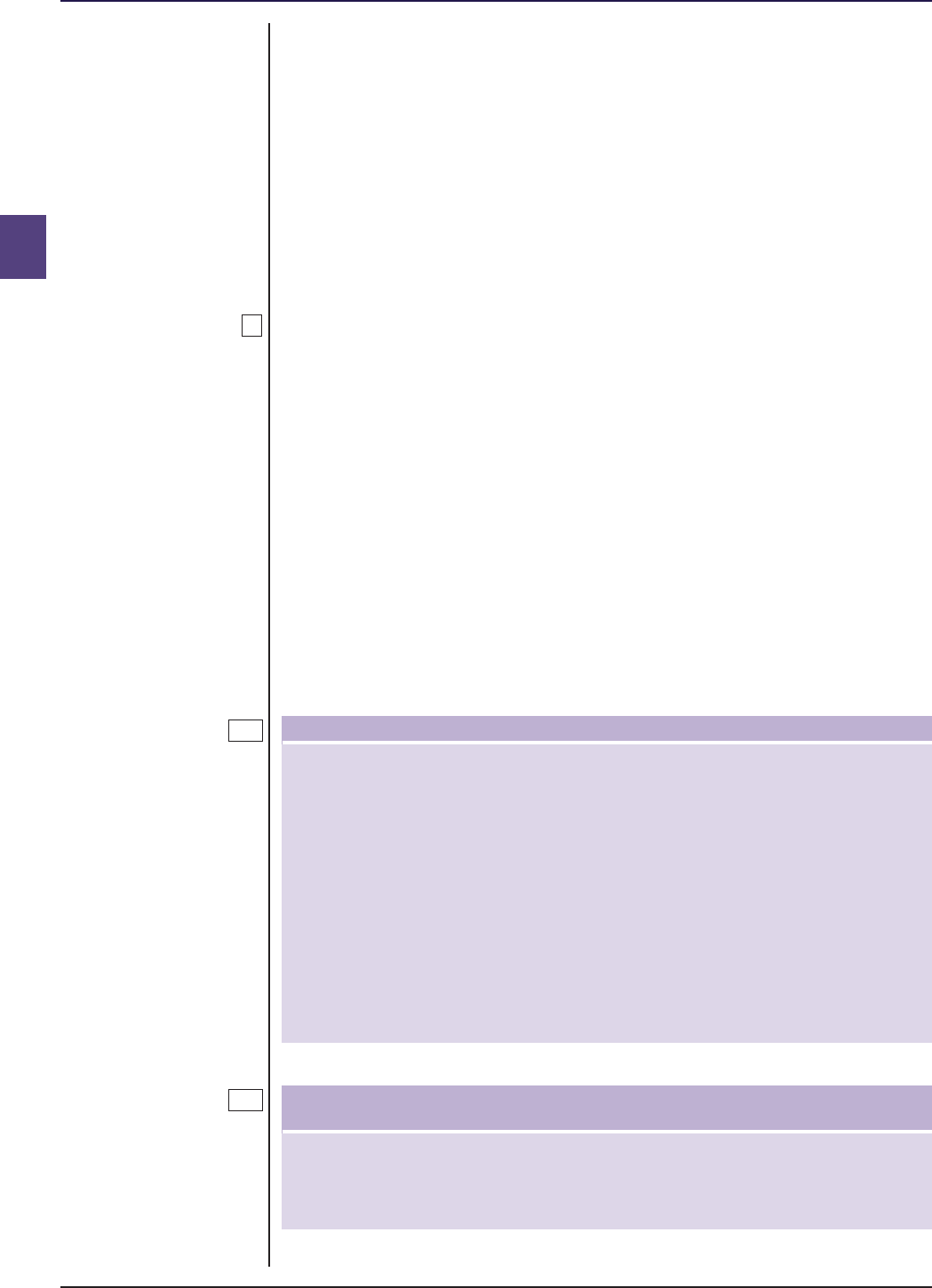
COLL 4 : Investor Relations Section 4.5 : Reports and accounts
4
G4.5.8AA
UK4.5.8AB
UK4.5.8AC
■ Release 39 ● Aug 2024www.handbook.fca.org.ukCOLL 4/44
with ■ COLL 4.5.7R (4) and ■ COLL 4.5.8R (3) and make them available on
request to any unitholder investing in the relevant sub-fund. However, if the
authorised fund manager does so, this does not relieve it of its duty:
(1) to prepare annual and half-yearly long reports on the umbrella as a
whole (■ COLL 4.5.7R (2) and ■ COLL 4.5.8R (2)); and
(2) to make available and publish the annual and half-yearly long reports
for the umbrella as a whole (■ COLL 4.5.14 R).
Information to be included in annual and half-yearly reports on
securities financing transactions and total return swaps
.....................................................................................................
(1) The Securities Financing Transactions Regulation sets out the
additional information which:
(a) an authorised fund manager of a UCITS scheme must include in
the scheme’s annual and half-yearly reports; and
(b) an authorised fund manager who is a full-scope UK AIFM of a
non-UCITS retail scheme must include in the scheme’s annual
report.
(2) ■ COLL 4.5.8ABEU and ■ COLL 4.5.8ACEU copy out the relevant provisions
of that regulation.
(3) An authorised fund manager of a UCITS scheme or a non-UCITS retail
scheme that has not used securities financing transactions or total
return swaps during the relevant annual accounting period or half-
yearly accounting period is not required to include the information in
■ COLL 4.5.8ACEU in its reports.
Transparency of collective investment undertakings in periodical reports
1. UCITS management companies, UCITS investment companies,
and AIFMs shall inform investors on the use they make of SFTs
and total return swaps in the following manner:
(a) for UCITS management companies or UCITS invest-
ment companies in the half-yearly and annual re-
ports referred to in [COLL 4.5.3R (Preparation of long
reports)];
(b) for AIFMs in the annual report referred to in [FUND
3.3.2R (Provision of annual report).]
2. The information on SFTs and total return swaps shall include
the data provided for in Section A of the Annex.
[Note: article 13(1) and 13(2) of the Securities Financing Transactions Regu-
lation and article 3 for relevant definitions]
Information to be provided in the UCITS half-yearly and annual reports
and the AIF’s annual report
Global data:
- The amount of securities and commodities on loan as a propor-
tion of total lendable assets defined as excluding cash and cash
equivalents;

COLL 4 : Investor Relations Section 4.5 : Reports and accounts
4
■ Release 39 ● Aug 2024 www.handbook.fca.org.uk COLL 4/45
Information to be provided in the UCITS half-yearly and annual reports
and the AIF’s annual report
- The amount of assets engaged in each type of SFTs and total re-
turn swaps expressed as an absolute amount (in the collective in-
vestment undertaking’s currency) and as a proportion of the col-
lective investment undertaking’s assets under management
(AUM).
Concentration data:
- Ten largest collateral issuers across all SFTs and total return
swaps (break down of volumes of the collateral securities and
commodities received per issuer’s name);
- Top 10 counterparties of each type of SFTs and total return
swaps separately (Name of counterparty and gross volume of
outstanding transactions).
Aggregate transaction data for each type of SFTs and total return swaps
separately to be broken down according to the below categories:
- Type and quality of collateral;
- Maturity tenor of the collateral broken down in the following
maturity buckets: less than one day, one day to one week, one
week to one month, one to three months, three months to one
year, above one year, open maturity;
- Currency of the collateral;
- Maturity tenor of the SFTs and total return swaps broken down
in the following maturity buckets: less than one day, one day to
one week, one week to one month, one to three months, three
months to one year, above one year, open transactions;
- Country in which the counterparties are established;
- Settlement and clearing (e.g., tri-party, Central Counterparty,
bilateral).
Data on reuse of collateral:
- Share of collateral received that is reused, compared to the max-
imum amount specified in the prospectus or in the disclosure to
investors;
- Cash collateral reinvestment returns to the collective investment
undertaking.
Safekeeping of collateral received by the collective investment undertak-
ing as part of SFTs and total return swaps:
Number and names of custodians and the amount of collateral assets safe-
kept by each of the custodians
Safekeeping of collateral granted by the collective investment undertaking
as part of SFTs and total return swaps:
The proportion of collateral held in segregated accounts or in pooled ac-
counts, or in any other accounts
Data on return and cost for each type of SFTs and total return swaps
broken down between the collective investment undertaking, the man-
ager of the collective investment undertaking and third parties (e.g. agent
lender) in absolute terms and as a percentage of overall returns generated
by that type of SFTs and total return swaps
[Note: section A of the annex to the Securities Financing Transactions Regu-
lation and article 3 for relevant definitions]

COLL 4 : Investor Relations Section 4.5 : Reports and accounts
4
G4.5.8AD
R4.5.8B
R4.5.9
■ Release 39 ● Aug 2024www.handbook.fca.org.ukCOLL 4/46
Additional information that may need to be included in the
annual and half-yearly long report of a UCITS scheme
.....................................................................................................
The annual and half-yearly long reports of a UCITS scheme may be required
to contain additional matters not referred to in ■ COLL 4.5.7 R and
■ COLL 4.5.8 R, such as those required by the ESMA Guidelines on ETFs and
other UCITS issues, which can be found at
https://www.esma.europa.eu/sites/default/files/library/2015/11/2012-832en_
guidelines_on_etfs_and_other_ucits_issues.pdf
Signing of annual and half-yearly reports
.....................................................................................................
The annual reports in ■ COLL 4.5.7R (1) and ■ (2), and the half-yearly reports in
■ COLL 4.5.8R (1) and ■ (2), must:
(1) in the case of an ICVC, if there is:
(a) more than one director, be approved by the board of directors
and signed on their behalf by the ACD and at least one other
director; or
(b) no director other than the ACD, be signed by the ACD;
(2) in the case of an AUT or ACS, if the authorised fund manager has:
(a) more than one director, be signed by at least two directors of the
authorised fund manager; or
(b) only one director, be signed by the director of the authorised
fund manager.
Authorised fund manager's report
.....................................................................................................
The matters set out in (1) to (13) must be included in any authorised fund
manager's report, except where otherwise indicated:
(1) the names and addresses of :
(a) the authorised fund manager;
(b) the depositary;
(c) the registrar;
(d) any investment adviser;
(e) the auditor; and
(f) for a scheme which invests in immovables, the standing
independent valuer;
(2) (for an ICVC), the names of any directors other than the ACD;
(3) a statement of the authorised status of the scheme;
(4) (for an ICVC) a statement that the unitholders of the ICVC are not
liable for the debts of the ICVC;
(5) the investment objectives of the authorised fund;
(6) the policy and strategy pursued for achieving those objectives;

COLL 4 : Investor Relations Section 4.5 : Reports and accounts
4
R4.5.10
■ Release 39 ● Aug 2024 www.handbook.fca.org.uk COLL 4/47
(7) a review of the investment activities during the period to which the
report relates;
(7A) a portfolio statement prepared in accordance with the requirements
of the SORP;
(7B) in the case of an umbrella which has more than one sub-fund,
particulars in the form of a table showing, as at the end of the period
to which the report relates:
(a) for each sub-fund, the number of units in that sub-fund that
were held by a second sub-fund of that umbrella; and
(b) the value of each such holding;
or, alternatively, a statement that there were no such holdings as at
the end of that period;
(8) particulars of any fundamental changes in accordance with
■ COLL 4.3.4 R (Fundamental change requiring prior approval by
meeting) made since the date of the last report;
(9) particulars of any significant changes which have occurred in
accordance with ■ COLL 4.3.6 R (Significant change requiring pre-event
notification) since the date of the last report;
(9A) in the case of a UCITS scheme or a KII-compliant NURS that does not
have a significant exposure to immovables, the figure for the
synthetic risk and reward indicator disclosed in its most recent key
investor information document or NURS-KII document and any
changes to that figure that have taken place during the period;
(10) any other information which would enable unitholders to make an
informed judgement on the development of the activities of the
authorised fund during this period and the results of those activities
as at the end of that period;
(11) for a report on an umbrella prepared in accordance with
■ COLL 4.5.7R (2) or ■ COLL 4.5.8R (2) , information required by (1) to (10)
must be given for each sub-fund, if it would vary from that given in
respect of the umbrella as a whole;
(12) for a UCITS scheme which invests a substantial proportion of its assets
in other schemes, a statement as to the maximum proportion of
management fees charged to the scheme itself and to other schemes
in which that scheme invests; and
(13) for a report on an individual sub-fund of a scheme which is an
umbrella prepared in accordance with ■ COLL 4.5.7R (4) or
■ COLL 4.5.8R (3), a statement that the latest long report prepared for
the umbrella as a whole is available on request.
Comparative information
.....................................................................................................
The comparative information required by ■ COLL 4.5.7 R (Contents of the
annual long report), ■ COLL 8.3.5A R (Contents of the annual report), and
■ COLL 15.5.3R (Contents of the annual report) must be shown for the last
three annual accounting periods (or all of the authorised fund's annual
accounting periods, if fewer than three) and must set out:

COLL 4 : Investor Relations Section 4.5 : Reports and accounts
4
G4.5.10A
■ Release 39 ● Aug 2024www.handbook.fca.org.ukCOLL 4/48
(1) [deleted]
(1A) for a unit of each class in issue, a comparative table as at the end of
the period to which the report relates, prepared in accordance with
the requirements of the SORP; and showing at least:
(a) the performance record of a unit of that class;
(b) an indication of the actual charges and costs borne by the class;
(c) the net income distributed (or, for accumulation units, allocated)
for the unit, taking account of any sub-division or consolidation
of units that occurred during that period;
(d) the net asset value of the unit as at the end of the period;
(e) (i) (for a report of the directors of an ICVC) the number of units
of the class in issue as at the end of the period; or
(ii) (for a report of the authorised fund manager of an AUT or
an ACS) the number of units of the class that are in existence
or treated as in existence as at the end of the period; and
(f) the highest and the lowest prices of the unit during the period;
(2) [deleted]
(2A) for the scheme property, its total net asset value as at the end of the
period; and
(3) if, in the period covered by the information:
(a) the authorised fund has been the subject of any event (such as a
scheme of arrangement) having a material effect on the size of
the authorised fund, but excluding any issue or cancellation of
units for cash; or
(b) there have been changes in the investment objective and policy
of the authorised fund;
(c) [deleted]
an indication, related in the body of the table to the relevant year in the
table, of the date of the event or change in the investment objective and
policy, and a brief description of its nature.
(1) The figure for the "return before operating charges" shown in the
comparative table required by ■ COLL 4.5.10R (1A) should include all
costs and charges actually borne by the class of units it describes.
(2) The indication of actual costs and charges borne by a class of units
should cover pro-rata allocations of the operating charges borne by
the scheme (e.g. annual management fee, fees and expenses payable
to the depositary, auditors and FCA, costs of buying and selling units
in an underlying scheme, etc.), any performance-related fee and
direct transaction-related costs where known to the AFM (e.g. dealing
commission on equity transactions and stamp duty). Where possible,
the operating charges should be presented as a single figure in both
pence per unit and as a percentage of net asset value.

COLL 4 : Investor Relations Section 4.5 : Reports and accounts
4
R4.5.11
R4.5.12
R4.5.13
■ Release 39 ● Aug 2024 www.handbook.fca.org.uk COLL 4/49
Report of the depositary
.....................................................................................................
(1) The depositary must make an annual report to unitholders which
must be included in the annual report.
(2) The annual report must contain:
(a) a description, which may be in summary form, of the duties of
the depositary under ■ COLL 6.6.4 (General duties of the
depositary) and in respect of the safekeeping of the scheme
property; and
(b) a statement whether, in any material respect:
(i) the issue, sale, redemption and cancellation, and calculation
of the price of the units and the application of the
authorised fund's revenue, have not been carried out in
accordance with the rules in this sourcebook and, where
applicable, the OEIC Regulations and the instrument
constituting the fund; and
(ii) the investment and borrowing powers and restrictions
applicable to the authorised fund have been exceeded.
Report of the auditor
.....................................................................................................
The authorised fund manager must ensure that the report of the auditor to
the unitholders includes the following statements:
(1) whether, in the auditor's opinion, the accounts have been properly
prepared in accordance with the SORP, the rules in this sourcebook,
and the instrument constituting the fund;
(2) whether, in the auditor's opinion, the accounts give a true and fair
view of the net revenueand the net capital gains or losses onthe
scheme property of the authorised fund (or, as the case may be, the
scheme property attributable to the sub-fund) for the annual
accounting period in question and the financial position of the
authorised fund or sub-fund as at the end of that period;
(3) whether the auditor is of the opinion that proper accounting records
for the authorised fund (or, as the case may be, sub-fund) have not
been kept or whether the accounts are not in agreement with those
records;
(4) whether the auditor has been given all the information and
explanations which, to the best of his knowledge and belief, are
necessary for the purposes of his audit; and
(5) whether the auditor is of the opinion that the information given in
the report of the directors or in the report of the authorised fund
manager for that period is consistent with the accounts.
[deleted]

COLL 4 : Investor Relations Section 4.5 : Reports and accounts
4
R4.5.14
R4.5.15
R4.5.16
■ Release 39 ● Aug 2024www.handbook.fca.org.ukCOLL 4/50
Publication and availability of annual and half-yearly long
report
.....................................................................................................
(1) The authorised fund manager must, within four months after the end
of each annual accounting period and two months after the end of
each half-yearly accounting period respectively, make available and
publish the long reports prepared in accordance with ■ COLL 4.5.7R (1)
to ■ (3) (Contents of the annual long report) and ■ COLL 4.5.8R (1) to
■ (2) (Contents of the half-yearly long report).
(2) The reports referred to in (1) must:
(a) be supplied free of charge to any person on request;
(b) be available in English, for inspection by the public free of charge
during ordinary office hours at a place specified;
(c) for a UCITS scheme, be available for inspection by the public at a
place designated by the authorised fund manager in each EEA
State other than the United Kingdom in which units in the
authorised fund were marketed before IP completion day, in
English and in at least one of that other EEA State's official
languages; and
(d) be sent to the FCA.
[Note: article 74 of the UCITS Directive]
Provision of annual and half-yearly long reports for master and
feeder UCITS
.....................................................................................................
(1) The authorised fund manager of a UCITS scheme which is a feeder
UCITS must:
(a) where requested by an investor, provide copies of the annual and
half-yearly long reports of its master UCITS free of charge; and
(b) file copies of the annual and half-yearly long reports of its master
UCITS with the FCA .
(2) Except where an investor requests paper copies or the use of
electronic communications is not appropriate, the annual and half-
yearly long reports of its master UCITS may be provided in a durable
medium other than paper or by means of a website that meets the
website conditions.
[Note: articles 63(3) and 63(5) of the UCITS Directive]
Provision of annual and half-yearly long reports for qualifying
master schemes of feeder NURS
.....................................................................................................
(1) The authorised fund manager of a feeder NURS must, where
requested by an investor or the FCA , provide to such person copies of
the annual and half-yearly long reports (or nearest equivalent
documents for a qualifying master scheme that is a recognised
scheme) of its qualifying master scheme free of charge.
(2) Except where an investor requests paper copies or the use of
electronic communications is not appropriate, the annual and half-
yearly long reports (or nearest equivalent documents for a qualifying
master scheme that is a recognised scheme) of its qualifying master

COLL 4 : Investor Relations Section 4.5 : Reports and accounts
4
■ Release 39 ● Aug 2024 www.handbook.fca.org.uk COLL 4/51
scheme may be provided in a durable medium other than paper, or
by means of a website that meets the website conditions.

COLL 4 : Investor Relations Section 4.6 : Simplified Prospectus provisions
[deleted]
4
R4.6
■ Release 39 ● Aug 2024www.handbook.fca.org.ukCOLL 4/52
4.6 Simplified Prospectus provisions
[deleted]

COLL 4 : Investor Relations Section 4.7 : Key investor information and
marketing communications
4
R4.7.1
G4.7.1A
■ Release 39 ● Aug 2024 www.handbook.fca.org.uk COLL 4/53
4.7 Key investor information and
marketing communications
Application
.....................................................................................................
This section applies to an ICVC, an authorised fund manager of an AUT, ACS
or ICVC and any other director of an ICVC where, in each case, the AUT, ACS
or ICVC is:
(1) a UCITS scheme; or
(2) a non-UCITS retail scheme that is offered to retail clients if the
authorised fund manager or ICVC draws up a NURS-KII document
instead of a key information document for the scheme.
Application of the PRIIPs regulation to NURS
.....................................................................................................
(1) An authorised fund manager of a non-UCITS retail scheme or an ICVC
that is a non-UCITS retail scheme that is offered to retail clients may
draw up either:
(a) a key information document in accordance with the PRIIPs
Regulation; or
(b) until 31 December 2026, a NURS-KII document (in accordance
with the exemption in article 32(2) of the PRIIPs Regulation).
(2) An authorised fund manager of a KII-compliant NURS or an ICVC that
is a KII-compliant NURS will need to comply with ■ COLL Appendix 2R
(Modifications to the KII Regulation for KII-compliant NURS), which
contains a modified version of the KII Regulation for KII-compliant
NURS (see ■ COLL 4.7.3AR).
(3) (a) An authorised fund manager of a KII-compliant NURS or an ICVC
that is a non-UCITS retail scheme that is offered to professional
clients only is not required to comply with the PRIIPs Regulation
or draw up a NURS-KII document.
(b) However, these documents may be used to market the non-UCITS
retail scheme to professional clients.
[Note: Article 32(1) of the PRIIPs Regulation as amended by article 17(1) of
Regulation (EU) 2019/1156 of the European Parliament and of the Council of
20 June 2019]

COLL 4 : Investor Relations Section 4.7 : Key investor information and
marketing communications
4
R4.7.2
■ Release 39 ● Aug 2024www.handbook.fca.org.ukCOLL 4/54
Key investor information
.....................................................................................................
(1) An authorised fund manager must draw up a short document in
English containing key investor information for investors:
(a) in each UCITS scheme which it manages (a key investor
information document); and
(b) in each KII-compliant NURS which it manages (a NURS-KII
document).
(2) The words "key investor information" must be clearly stated in the
key investor information document and NURS-KII document.
(3) Key investor information must include appropriate information about
the essential characteristics of the UCITS scheme or KII-compliant
NURS which is to be provided to investors so that they are reasonably
able to understand the nature and risks of the investment product
that is being offered to them and, therefore, to take investment
decisions on an informed basis.
(4) Key investor information must provide information on the following
essential elements in respect of the UCITS scheme or KII-compliant
NURS:
(a) identification of the scheme and that the FCA is the competent
authority of the scheme;
(b) a short description of its investment objectives and investment
policy;
(c) past performance presentation or, where relevant, performance
scenarios;
(d) costs and associated charges; and
(e) risk/reward profile of the investment, including appropriate
guidance and warnings in relation to the risks associated with
investments in the scheme.
(5) The essential elements referred to in (4) must be comprehensible to
the investor without any reference to other documents.
(6) A key investor information document or NURS-KII document must
clearly specify where and how to obtain additional information
relating to the proposed investment, including but not limited to
where and how the prospectus and the annual and half-yearly reports
can be obtained on request and free of charge at any time, and the
language in which that information is available to investors.
(6A) A key investor information document must also include:
(a) a statement that the details of the up-to-date remuneration
policy are available by means of a website, including, but not
limited to, the following:
(i) a description of how remuneration and benefits are
calculated; and
(ii) the identities of persons responsible for awarding the
remuneration and benefits, including the composition of the
remuneration committee, where such a committee exists; and

COLL 4 : Investor Relations Section 4.7 : Key investor information and
marketing communications
4
G4.7.3
R4.7.3A
R4.7.3B
G4.7.3C
■ Release 39 ● Aug 2024 www.handbook.fca.org.uk COLL 4/55
(b) a reference to that website, and that a paper copy of the website
information will be made available free of charge upon request.
(6B) A NURS-KII document must also include a statement that the details
of the up-to-date remuneration policy will be made available free of
charge upon request, including the following:
(a) a description of how remuneration and benefits are calculated;
and
(b) the identities of persons responsible for awarding the
remuneration and benefits, including the composition of the
remuneration committee, where such a committee exists.
(7) Key investor information must be written in a concise manner and in
non-technical language. It must be drawn up in a common format,
allowing for comparison, and must be presented in a way that is
likely to be understood by retail investors.
(8) [deleted]
[Note: article 78 of the UCITS Directive]
Form and content of a key investor information document
.....................................................................................................
The KII Regulation sets out the form and content of a key investor
information document. Under the Regulation an authorised fund manager
must ensure that each key investor information document it produces for a
UCITS scheme complies with the requirements of the Regulation. For ease of
reference the Regulation is reproduced in ■ COLL Appendix 1UK (The KII
Regulation).
Form and content of a NURS-KII document
.....................................................................................................
The following must comply with ■ COLL Appendix 2R (Modifications to the KII
Regulation for KII-compliant NURS), which contains a modified version of the
KII Regulation for KII-compliant NURS, when producing a NURS-KII
document:
(1) an authorised fund manager of a KII-compliant NURS; and
(2) an ICVC that is a KII-compliant NURS.
[deleted]
Feeder NURS that produce a key information document
.....................................................................................................
The authorised fund manager of a feeder NURS, or an ICVC that is a feeder
NURS, that draws up a key information document for a retail client, should
cross refer to documents related to its qualifying master scheme which
enable such clients to understand the qualifying master scheme’s key
particulars including:
(1) its investment strategy;

COLL 4 : Investor Relations Section 4.7 : Key investor information and
marketing communications
4
G4.7.4
R4.7.5
G4.7.6
R4.7.7
■ Release 39 ● Aug 2024www.handbook.fca.org.ukCOLL 4/56
(2) a description and explanation of any material differences between
the risk profile of the feeder NURS and that of the qualifying master
scheme; and
(3) its charges, including the aggregate of the charges of the feeder
NURS and its qualifying master scheme as disclosed in the feeder
NURS’ most up to date prospectus.
[Note: article 6(2) of the PRIIPs Regulation]
Translation of a key investor information document
.....................................................................................................
While the original key investor information document or NURS-KII document
is required by ■ COLL 4.7.2 R to be drawn up in English, an authorised fund
manager may prepare an accurate translation of it into any language for the
purpose of marketing the units of the UCITS scheme or KII-compliant NURS
in the United Kingdom. Any such translation should be prepared without
alterations or supplements.
Pre-contractual information
.....................................................................................................
The key investor information document and the NURS-KII document must:
(1) constitute pre-contractual information (see ■ COBS 14.2.1A R (Provision
of key investor information document or NURS-KII document));
(2) be fair, clear and not misleading; and
(3) be consistent with the relevant parts of the prospectus.
[Note: article 79(1) of the UCITS Directive]
(1) Section 90ZA of the Act (Liability for key investor information)
provides that a person will not incur civil liability solely on the basis
of the key investor information document, including any translation
of it, unless it is misleading, inaccurate or inconsistent with the
relevant parts of the prospectus.
(2) Article 20 of the KII Regulation prescribes the wording of a warning
to investors that must be included in the "practical information"
section of the key investor information document. It states that an
authorised fund manager may be held liable solely on the basis of
any statement contained in the document that is misleading,
inaccurate or inconsistent with the relevant parts of the prospectus
for the UCITS scheme.
(3) A NURS-KII document should not include the wording of warning to
investors in (2) as the limitation of liability in (1) does not apply to
KII-compliant NURS.
Revision and filing of key investor information or key
information document or NURS-KII document
.....................................................................................................
(1) An authorised fund manager must keep up to date the essential
elements of:

COLL 4 : Investor Relations Section 4.7 : Key investor information and
marketing communications
4
G4.7.8
G4.7.9
■ Release 39 ● Aug 2024 www.handbook.fca.org.uk COLL 4/57
(a) the key investor information document for each UCITS scheme
which it manages; or
(b) the NURS-KII document for each KII-compliant NURS which it
manages.
(2) An authorised fund manager must file the key investor information
document for each UCITS scheme or the NURS-KII document for each
KII-compliant NURS which it manages, and any amendments thereto,
with the FCA.
(3) An authorised fund manager of a feeder UCITS or feeder NURS must,
in addition to (1) and (2), file the key investor information of its
master UCITS or the NURS-KII document of its qualifying master
scheme, and any amendments thereto, with the FCA.
[Note: articles 63(3) and 82 of the UCITS Directive]
Synthetic risk and reward indicators and ongoing charges
disclosures in the KII
.....................................................................................................
(1) Authorised fund managers are advised that CESR issued two separate
guidelines regarding the methodology that should be used in
calculating the synthetic risk and reward indicator and the ongoing
charges figure, both of which must be disclosed in the key investor
information document for each UCITS scheme which they manage.
(2) In line with the KII Regulation and ■ COLL Appendix 2R, firms in
producing their key investor information documents or NURS-KII
documents should take account of CESR's methodologies in
calculating the figures for the synthetic risk and reward indicators
and for ongoing charges to be disclosed in those documents. For ease
of reference links to these guidelines are shown below, as follows:
Methodology for the calculation of the synthetic risk and reward
indicator in the KII (CESR/10-673)
https://www.esma.europa.eu/sites/default/files/library/2015/11/10_
673.pdf
Methodology for the calculation of the ongoing charges figure in the
KII (CESR/10-674)
https://www.esma.europa.eu/sites/default/files/library/2015/11/10_
674.pdf
(3) [deleted]
Authorised fund managers of a UCITS scheme and KII-compliant NURS are
further advised that ESMA has issued the following guidelines, which refer
to matters that should be included in the key investor information for
certain types of UCITS (ESMA 2012/832).
Guidelines for competent authorities and UCITS management companies:
Guidelines on ETFs and other UCITS issues

COLL 4 : Investor Relations Section 4.7 : Key investor information and
marketing communications
4
G4.7.10
■ Release 39 ● Aug 2024www.handbook.fca.org.ukCOLL 4/58
https://www.esma.europa.eu/sites/default/files/library/2015/11/2012-832en_
guidelines_on_etfs_and_other_ucits_issues.pdf
Marketing communications
.....................................................................................................
COBS 4.13.2R(1)(b) and (c) (Marketing communications relating to UCITS
schemes or EEA UCITS schemes) require an authorised fund manager to
ensure that its marketing communications that contain an invitation to
purchase units in a UCITS scheme or EEA UCITS scheme, indicate that a
prospectus and key investor information exist, specifying where they may be
obtained by the public or how the public may have access to them.

COLL 4 : Investor Relations Section 4.8 : Notifications for UCITS
master-feeder arrangements
4
R4.8.1
G4.8.2
R4.8.3
■ Release 39 ● Aug 2024 www.handbook.fca.org.uk COLL 4/59
4.8 Notifications for UCITS master-
feeder arrangements
Application
.....................................................................................................
This section applies to an ICVC, an authorised fund manager of an AUT, ACS
or ICVC and any other director of an ICVC where, in each case, the AUT, ACS
or ICVC is a UCITS scheme.
Purpose
.....................................................................................................
The purpose of this section is to explain the type, form and timing of the
notifications that are required before an existing UCITS scheme can begin to
operate as a feeder UCITS for the first time, or an existing feeder UCITS can
change to a different master UCITS. The process for making those changes is
set out in ■ COLL 11.2 (Approval of a feeder UCITS).
Information to be provided to Unitholders
.....................................................................................................
(1) An authorised fund manager of a UCITS scheme that has been
approved by the FCA to operate as a feeder UCITS, including as a
feeder UCITS of a different master UCITS, must provide the following
information to its unitholders at least 30 calendar days before the
date when the feeder UCITS is to start to invest in units of the master
UCITS or, if it has already invested in them, the date when its
investment will exceed the limit applicable under ■ COLL 5.2.11R (9)
(Spread: general):
(a) a statement that the FCA has approved the investment of the
feeder UCITS in units of that master UCITS;
(b) the key investor information of the feeder UCITS and the master
UCITS;
(c) the date when the feeder UCITS is to start to invest in units of
the master UCITS or, if it has already invested in them, the date
when its investment will exceed the limit applicable under
■ COLL 5.2.11R (9);
(d) a statement that the unitholders have the right, for 30 calendar
days from the moment this information is provided, to request
the repurchase or redemption of their units without any charges
other than those retained by the UCITS scheme to cover
disinvestment costs.
(2) Where a UCITS marketing notification was made in relation to a
feeder UCITS before IP completion day, the authorised fund manager

COLL 4 : Investor Relations Section 4.8 : Notifications for UCITS
master-feeder arrangements
4
R4.8.4
■ Release 39 ● Aug 2024www.handbook.fca.org.ukCOLL 4/60
of the feeder UCITS must ensure that an accurate translation of the
information in (1) is provided to unitholders in:
(a) the official language, or one of the official languages, of the EEA
state where the UCITS marketing notification was made; or
(b) a language approved by the overseas regulator in the EEA state
where the UCITS marketing notification was made.
[Note: article 64 first and second paragraphs of the UCITS Directive]
Method of providing information
.....................................................................................................
The authorised fund manager of the feeder UCITS must provide to
unitholders the information required under ■ COLL 4.8.3 R in a durable
medium.
[Note: article 29 of the UCITS implementing Directive No 2]

COLL 4 : Investor Relations Annex 1
4
Total expense ratio calculation [deleted]
■ Release 39 ● Aug 2024 www.handbook.fca.org.uk COLL 4 Annex 1/1

COLL 4 : Investor Relations Annex 1
4
■ Release 39 ● Aug 2024www.handbook.fca.org.ukCOLL 4 Annex 1/2

COLL 4 : Investor Relations Annex 2
4
Portfolio turnover calculation [deleted]
■ Release 39 ● Aug 2024 www.handbook.fca.org.uk COLL 4 Annex 2/1

COLL 4 : Investor Relations Annex 2
4
■ Release 39 ● Aug 2024www.handbook.fca.org.ukCOLL 4 Annex 2/2

Collective Investment Schemes
Chapter 5
Investment and borrowing
powers
■ Release 39 ● Aug 2024 www.handbook.fca.org.uk COLL 5/1

COLL 5 : Investment and Section 5.1 : Introduction
borrowing powers
5
R5.1.1
G5.1.2
■ Release 39 ● Aug 2024www.handbook.fca.org.ukCOLL 5/2
5.1 Introduction
Application
.....................................................................................................
(1) Subject to 1(A), ■ COLL 5.1 to ■ COLL 5.5 apply to the authorised fund
manager and the depositary of an authorised fund, and to an ICVC,
which is or ever has been a UCITS scheme.
(1A) The only sections of ■ COLL 5 that apply to the authorised fund
manager and the depositary of a feeder UCITS, and to an ICVC which
is a feeder UCITS, are ■ COLL 5.3 and ■ COLL 5.8, although particular
rules in ■ COLL 5.1, ■ COLL 5.2 and ■ COLL 5.5 are incorporated by
reference.
(2) Subject to 2(A), ■ COLL 5.1, ■ COLL 5.4 and ■ COLL 5.6 apply to the
authorised fund manager and depositary of an authorised fund, and
to an ICVC, which is a non-UCITS retail scheme.
(2A) ■ COLL 5.1, ■ COLL 5.4 and ■ COLL 5.7 apply to the authorised fund
manager and the depositary of an authorised fund and to an ICVC
which is a non-UCITS retail scheme operating as a fund of alternative
investment funds.
(3) Paragraphs (2) and (2A) cease to apply if a non-UCITS retail scheme
converts to be authorised as a UCITS scheme.
(4) [deleted]
Purpose
.....................................................................................................
(1) This chapter helps in achieving the statutory objective of protecting
consumers by laying down minimum standards for the investments
that may be held by an authorised fund. In particular:
(a) the proportion of transferable securities and derivatives that may
be held by an authorised fund is restricted if those transferable
securities and derivatives are not listed on an eligible market; the
intention of this is to restrict investment in transferable securities
or derivatives that cannot be accurately valued and readily
disposed of; and
(b) authorised funds are required to comply with a number of
investment rules that require the spreading of risk.
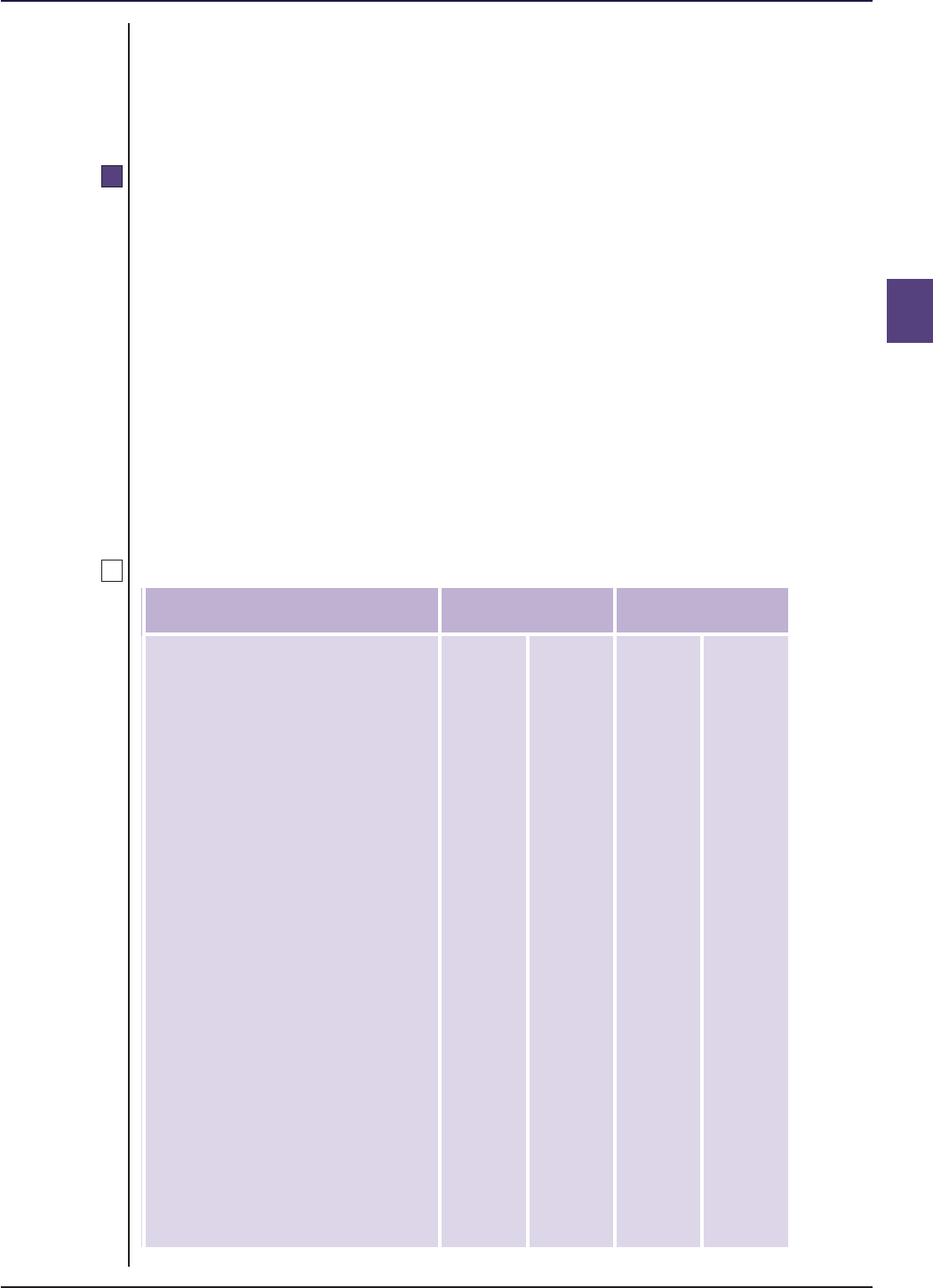
COLL 5 : Investment and Section 5.1 : Introduction
borrowing powers
5
R5.1.3
G5.1.4
■ Release 39 ● Aug 2024 www.handbook.fca.org.uk COLL 5/3
(2) Table 5.1.4G gives an overview of the permissible investments and
maximum investment limits for UCITS schemes and non-UCITS retail
schemes.
Treatment of obligations
.....................................................................................................
(1) Where a rule in this chapter allows a transaction to be entered into
or an investment to be retained only if possible obligations arising
out of the transaction or out of the retention would not cause the
breach of any limits in this chapter, it must be assumed that the
maximum possible liability of the authorised fund under any other of
those rules has also to be provided for.
(2) Where a rule in this chapter permits a transaction to be entered into
or an investment to be retained only if that transaction, or the
retention, or other similar transactions, are covered:
(a) it must be assumed that in applying any of those rules, the
authorised fund must also simultaneously satisfy any other
obligation relating to cover; and
(b) no element of cover must be used more than once.
Indicative overview of investment and borrowing powers
.....................................................................................................
This table belongs to ■ COLL 5.1.2G (2).
Scheme investments and invest- Limits for UCITS Limits for non-UC-
ment techniques schemes ITS retail schemes
Permiss- Max- Permiss- Max-
ible in- imum ible in- imum
vestment limit vestment limit
Approved securities Yes None Yes None
Transferable securities that are Yes 10% Yes 20%
not approved securities
Government and public se- Yes None Yes None
curities
Regulated schemes other than Yes None Yes None
qualified investor schemes and
long-term asset funds
Unregulated schemes, qualified No N/A Yes 20%(C)
investor schemes, and long-term (D)
asset funds
Warrants Yes None Yes None
Investment trusts Yes None Yes None
Deposits Yes None Yes None
Derivatives Yes None Yes None
Immovables (i.e real property) No N/A Yes None
Gold No N/A Yes 10%
Hedging Yes None Yes None
Stock lending Yes None Yes None
Underwriting Yes None Yes None
Borrowing Yes 10% (T) Yes 10%

COLL 5 : Investment and Section 5.1 : Introduction
borrowing powers
5
■ Release 39 ● Aug 2024www.handbook.fca.org.ukCOLL 5/4
Scheme investments and invest- Limits for UCITS Limits for non-UC-
ment techniques schemes ITS retail schemes
Cash and near cash Yes None Yes None
Note: Meaning of terms used:
A percentage an upper limit (though there may be
limits of other kinds).
"(T)" temporary only- see COLL 5.5.4R(4)
"N/A" Not applicable
“(C)” In the case of a non-UCITS retail
scheme operating as a FAIF there is no
maximum limit - see COLL 5.7.7 R.
“(D)” The second scheme would also need to
meet the applicable requirements speci-
fied in the rules.
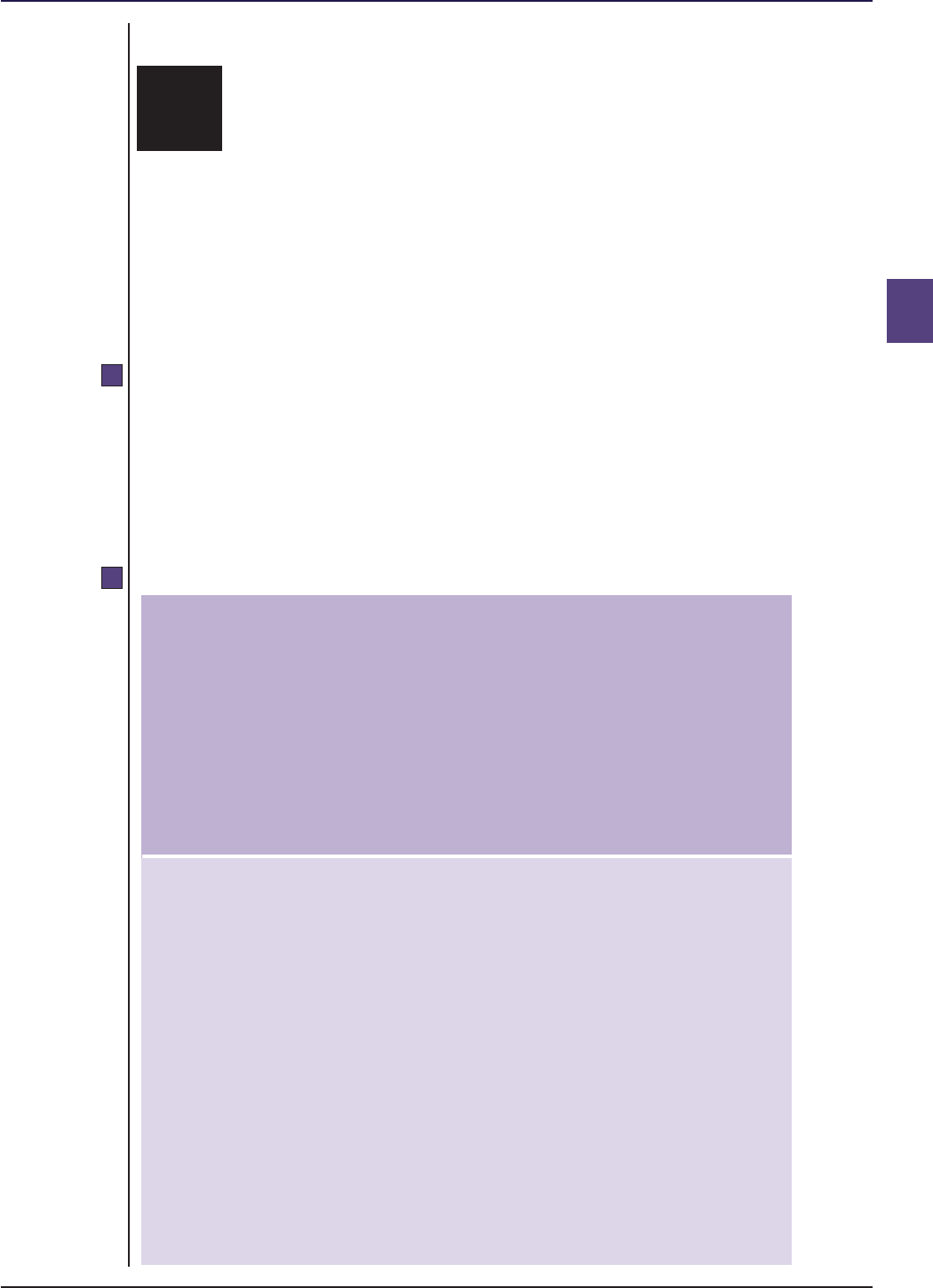
COLL 5 : Investment and Section 5.2 : General investment powers and
borrowing powers limits for UCITS schemes
5
R5.2.1
R5.2.2
■ Release 39 ● Aug 2024 www.handbook.fca.org.uk COLL 5/5
5.2 General investment powers and
limits for UCITS schemes
Application
.....................................................................................................
(1) This section applies to an ICVC, an ACD, an authorised fund manager
of an AUT or ACS and a depositary of an ICVC, AUT or ACS where
such ICVC, AUT or ACS is a UCITS scheme, in accordance with
■ COLL 5.2.2 R (Table of application).
(2) [deleted]
Table of application
.....................................................................................................
This table belongs to ■ COLL 5.2.1 R.
Au-
thorised
fund
manager
of an AUT
or ACS, or
Au- ACD of an
thorised ICVC, that
fund Deposit- is a regu-
man- ary of lated
ager of an ICVC, money
an AUT AUT or market
Rule ICVC ACD or ACS ACS fund
5.2.3R x x x
5.2.4R x x
5.2.4AG x
5.2.5R to x x
5.2.9R
5.2.9AR x x
5.2.10R(1) x x
5.2.10R(2)(a)& x x
(b)
5.2.10R(2)(c) x
5.2.10R(3) x x
5.2.10AR to x x
5.2.10EG
5.2.11R to x x
5.2.20R
(excluding

COLL 5 : Investment and Section 5.2 : General investment powers and
borrowing powers limits for UCITS schemes
5
■ Release 39 ● Aug 2024www.handbook.fca.org.ukCOLL 5/6
Au-
thorised
fund
manager
of an AUT
or ACS, or
Au- ACD of an
thorised ICVC, that
fund Deposit- is a regu-
man- ary of lated
ager of an ICVC, money
an AUT AUT or market
Rule ICVC ACD or ACS ACS fund
5.2.17AR
and
5.2.17BG)
5.2.17AR x x x
and
5.2.17BG
5.2.20AR x x x
5.2.20BG x x
5.2.21R x x x
5.2.22R x x x

COLL 5 : Investment and Section 5.2 : General investment powers and
borrowing powers limits for UCITS schemes
5
G5.2.2A
R5.2.3
■ Release 39 ● Aug 2024 www.handbook.fca.org.uk COLL 5/7
Au-
thorised
fund
manager
of an AUT
or ACS, or
Au- ACD of an
thorised ICVC, that
fund Deposit- is a regu-
man- ary of lated
ager of an ICVC, money
an AUT AUT or market
Rule ICVC ACD or ACS ACS fund
5.2.22AG x x x x x
5.2.23R(1) x x x x
5.2.23R(2) x x x x
to (4)
COLL 5.2.23- x x x x
AG
5.2.23CR x x
5.2.26R x x
5.2.27R x
5.2.28R x
5.2.29R x x x
5.2.30R x x x x
5.2.31R to x x x
5.2.33R
5.2.34G x x
Note: x me-
ans
"applies"
In addition to the parts of CESR's UCITS eligible assets guidelines specifically
referred to in this section, the authorised fund manager of a UCITS scheme
should have regard to the other parts of those guidelines when applying the
rules in this section. CESR's UCITS eligible assets guidelines are available at
https://www.esma.europa.eu/sites/default/files/library/2015/11/07_044.pdf..
Prudent spread of risk
.....................................................................................................
(1) An authorised fund manager must ensure that, taking account of the
investment objectives and policy of the UCITS scheme as stated in the
most recently published prospectus, the scheme property of the UCITS
scheme aims to provide a prudent spread of risk.
(2) The rules in this section relating to spread of investments do not
apply until the expiry of a period of six months after the date of
which the authorisation order, in respect of the UCITS scheme, takes
effect or on which the initial offer commenced, if later, provided that
(1) is complied with during such period.

COLL 5 : Investment and Section 5.2 : General investment powers and
borrowing powers limits for UCITS schemes
5
R5.2.4
G5.2.4A
R5.2.5
■ Release 39 ● Aug 2024www.handbook.fca.org.ukCOLL 5/8
Investment powers: general
.....................................................................................................
The scheme property of each UCITS scheme must be invested only in
accordance with the relevant provisions in sections ■ COLL 5.2 to
■ COLL 5.5 that are applicable to that UCITS scheme and up to any maximum
limit so stated, but, the instrument constituting the fund may further restrict:
(1) the kind of property in which the scheme property may be invested;
(2) the proportion of the capital property of the UCITS scheme that may
be invested in assets of any description;
(3) the descriptions of transactions permitted; and
(4) the borrowing powers of the UCITS scheme.
Investment powers and limits for UCITS schemes that are regulated money
market funds are set out in the Money Market Funds Regulation. Subject to
complying with that Regulation, the instrument constituting the fund may
further restrict:
the kind of money market instruments in which the scheme property
may be invested;
the proportion of the capital property of the UCITS scheme to be
invested in money market instruments of any description;
the descriptions of transactions permitted; and
the borrowing powers of the UCITS scheme.
Valuation
.....................................................................................................
(1) In this chapter, the value of the scheme property of a UCITS scheme
means the net value determined in accordance with
■ COLL 6.3 (Valuation and pricing), after deducting any outstanding
borrowings, whether immediately due to be repaid or not.
(2) When valuing the scheme property for the purposes of this chapter:
(a) the time as at which the valuation is being carried out ("the
relevant time") is treated as if it were a valuation point, but the
valuation and the relevant time do not count as a valuation or a
valuation point for the purposes of ■ COLL 6.3 (Valuation and
pricing);
(b) initial outlay is to be regarded as remaining part of the scheme
property; and
(c) if the authorised fund manager, having taken reasonable care,
determines that the UCITS scheme will become entitled to any
unrealised profit which has been made on account of a
transaction in derivatives, that prospective entitlement is to be
regarded as part of the scheme property.
(3) When valuing the scheme property of a dual-priced authorised fund,
the cancellation basis of valuation referred to in ■ COLL 6.3.3 R (2)
(Valuation) is to be applied.

COLL 5 : Investment and Section 5.2 : General investment powers and
borrowing powers limits for UCITS schemes
5
G5.2.6
R5.2.6A
R5.2.7
■ Release 39 ● Aug 2024 www.handbook.fca.org.uk COLL 5/9
Valuation guidance
.....................................................................................................
It should be noted that for the purpose of ■ COLL 5.2.5 R, ■ COLL 6.3 may be
affected by specific provisions in this chapter such as, for example,
■ COLL 5.4.6 R (Treatment of collateral).
UCITS schemes: permitted types of scheme property
.....................................................................................................
The scheme property of a UCITS scheme must, except where otherwise
provided in the rules in this chapter, consist solely of any or all of:
(1) transferable securities;
(2) approved money-market instruments;
(3) units in collective investment schemes;
(4) derivatives and forward transactions;
(5) deposits; and
(6) (for an ICVC) movable and immovable property that is essential for
the direct pursuit of the ICVC's business;
in accordance with the rules in this section.
[Note: articles 50(1) (in conjunction with other rules in this section) and 50(3)
of the UCITS Directive]
Transferable securities
.....................................................................................................
(1) A transferable security is an investment which is any of the following:
(a) a share;
(b) a debenture;
(ba) an alternative debenture;
(c) a government and public security;
(d) a warrant; or
(e) a certificate representing certain securities.
(2) An investment is not a transferable security if the title to it cannot be
transferred, or can be transferred only with the consent of a third
party.
(3) In applying (2) to an investment which is issued by a body corporate,
and which is a share or a debenture, the need for any consent on the
part of the body corporate or any members or debenture holders of
it may be ignored.
(4) An investment is not a transferable security unless the liability of the
holder of it to contribute to the debts of the issuer is limited to any
amount for the time being unpaid by the holder of it in respect of
the investment.

COLL 5 : Investment and Section 5.2 : General investment powers and
borrowing powers limits for UCITS schemes
5
R5.2.7A
G5.2.7B
■ Release 39 ● Aug 2024www.handbook.fca.org.ukCOLL 5/10
Investment in transferable securities
.....................................................................................................
(1) A UCITS scheme may invest in a transferable security only to the
extent that the transferable security fulfils the following criteria:
(a) the potential loss which the UCITS scheme may incur with respect
to holding the transferable security is limited to the amount paid
for it;
(b) its liquidity does not compromise the ability of the authorised
fund manager to comply with its obligation to redeem units at
the request of any qualifying unitholder (see ■ COLL 6.2.16 R (3) );
(c) reliable valuation is available for it as follows:
(i) in the case of a transferable security admitted to or dealt in
on an eligible market, where there are accurate, reliable and
regular prices which are either market prices or prices made
available by valuation systems independent from issuers;
(ii) in the case of a transferable security not admitted to or dealt
in on an eligible market, where there is a valuation on a
periodic basis which is derived from information from the
issuer of the transferable security or from competent
investment research;
(d) appropriate information is available for it as follows:
(i) in the case of a transferable security admitted to or dealt in
on an eligible market, where there is regular, accurate and
comprehensive information available to the market on the
transferable security or, where relevant, on the portfolio of
the transferable security;
(ii) in the case of a transferable security not admitted to or dealt
in on an eligible market, where there is regular and accurate
information available to the authorised fund manager on the
transferable security or, where relevant, on the portfolio of
the transferable security;
(e) it is negotiable; and
(f) its risks are adequately captured by the risk management process
of the authorised fund manager.
(2) Unless there is information available to the authorised fund manager
that would lead to a different determination, a transferable security
which is admitted to or dealt in on an eligible market shall be
presumed:
(a) not to compromise the ability of the authorised fund manager to
comply with its obligation to redeem units at the request of any
qualifying unitholder; and
(b) to be negotiable.
[Note: article 2(1) of the UCITS eligible assets Directive]
Where the authorised fund manager considers that the liquidity or
negotiability of a transferable security might compromise the ability of the
authorised fund manager to comply with its obligation to redeem units at
the request of any qualifying unitholder, it should assess the liquidity risk in
accordance with CESR's UCITS eligible assets guidelines with respect to article
2(1) of the UCITS eligible assets Directive.

COLL 5 : Investment and Section 5.2 : General investment powers and
borrowing powers limits for UCITS schemes
5
R5.2.7C
G5.2.7D
R5.2.7E
■ Release 39 ● Aug 2024 www.handbook.fca.org.uk COLL 5/11
Closed end funds constituting transferable securities
.....................................................................................................
A unit in a closed end fund shall be taken to be a transferable security for
the purposes of investment by a UCITS scheme, provided it fulfils the criteria
for transferable securities set out in ■ COLL 5.2.7A R, and either:
(1) where the closed end fund is constituted as an investment company
or a unit trust:
(a) it is subject to corporate governance mechanisms applied to
companies; and
(b) where another person carries out asset management activity on
its behalf, that person is subject to national regulation for the
purpose of investor protection; or
(2) where the closed end fund is constituted under the law of contract:
(a) it is subject to corporate governance mechanisms equivalent to
those applied to companies; and
(b) it is managed by a person who is subject to national regulation
for the purpose of investor protection.
[Note: articles 2(2)(a) and (b) of the UCITS eligible assets Directive]
(1) An authorised fund manager should not invest the scheme property
of a UCITS scheme in units of a closed end fund for the purpose of
circumventing the investment limits set down in this section.
(2) When required to assess whether the corporate governance
mechanisms of a closed end fund in contractual form are equivalent
to those applied to companies, the authorised fund manager should
consider whether the contract on which the closed end fund is based
provides its investors with rights to:
(a) vote on the essential decisions of the closed end fund (including
appointment and removal of asset management company,
amendment to the contract which set up the closed end fund,
modification of investment policy, merger, liquidation); and
(b) control the investment policy of the closed end fund through
appropriate mechanisms.
(3) The assets of the closed end fund in contractual form should be
separate and distinct from those of the asset manager and the closed
end fund should be subject to liquidation rules that adequately
protect its investors.
[Note: CESR's UCITS eligible assets guidelines with respect to articles 2(2) and
2(2)(b)(ii) of the UCITS eligible assets Directive ]
Transferable securities linked to other assets
.....................................................................................................
(1) A UCITS scheme may invest in any other investment which shall be
taken to be a transferable security for the purposes of investment by
a UCITS scheme provided the investment:
(a) fulfils the criteria for transferable securities set out in
■ COLL 5.2.7A R; and

COLL 5 : Investment and Section 5.2 : General investment powers and
borrowing powers limits for UCITS schemes
5
R5.2.7F
R5.2.7G
R5.2.7H
■ Release 39 ● Aug 2024www.handbook.fca.org.ukCOLL 5/12
(b) is backed by or linked to the performance of other assets, which
may differ from those in which a UCITS scheme can invest.
(2) Where an investment in (1) contains an embedded derivative
component (see ■ COLL 5.2.19R (3A)), the requirements of this section
with respect to derivatives and forwards will apply to that
component.
[Note: articles 2(2)(c) and 2(3) of the UCITS eligible assets Directive]
Approved money-market instruments
.....................................................................................................
An approved money-market instrument is a money-market instrument which
is normally dealt in on the money market, is liquid and has a value which can
be accurately determined at any time.
[Note: article 2(1)(o) of the UCITS Directive]
A money-market instrument shall be regarded as normally dealt in on the
money market if it:
(1) has a maturity at issuance of up to and including 397 days;
(2) has a residual maturity of up to and including 397 days;
(3) undergoes regular yield adjustments in line with money market
conditions at least every 397 days; or
(4) has a risk profile, including credit and interest rate risks,
corresponding to that of an instrument which has a maturity as set
out in (1) or (2) or is subject to yield adjustments as set out in (3).
[Note: article 3(2) of the UCITS eligible assets Directive]
(1) A money-market instrument shall be regarded as liquid if it can be
sold at limited cost in an adequately short time frame, taking into
account the obligation of the authorised fund manager to redeem
units at the request of any qualifying unitholder (see
■ COLL 6.2.16 R (3) ).
(2) A money-market instrument shall be regarded as having a value
which can be accurately determined at any time if accurate and
reliable valuations systems, which fulfil the following criteria, are
available:
(a) enabling the authorised fund manager to calculate a net asset
value in accordance with the value at which the instrument held
in the portfolio could be exchanged between knowledgeable
willing parties in an arm's length transaction; and
(b) based either on market data or on valuation models including
systems based on amortised costs.
(3) A money-market instrument that is normally dealt in on the money
market and is admitted to or dealt in on an eligible market shall be
presumed to be liquid and have a value which can be accurately
determined at any time unless there is information available to the

COLL 5 : Investment and Section 5.2 : General investment powers and
borrowing powers limits for UCITS schemes
5
G5.2.7I
R5.2.8
■ Release 39 ● Aug 2024 www.handbook.fca.org.uk COLL 5/13
authorised fund manager that would lead to a different
determination.
[Note: article 4 of the UCITS eligible assets Directive]
Guidance on assessing liquidity and quality of money-market
instruments
.....................................................................................................
(1) The authorised fund manager should assess the liquidity of a money-
market instrument in accordance with CESR's UCITS eligible assets
guidelines with respect to article 4(1) of the UCITS eligible assets
Directive.
(2) Where an approved money-market instrument forms part of the
scheme property of a qualifying money market fund, the authorised
fund manager should adequately monitor that the instrument
continues to be of high quality, taking into account both its credit risk
and its final maturity.
[Note: CESR's UCITS eligible assets guidelines with respect to article 4(2) of
theUCITS eligible assets Directive.]
Transferable securities and money-market instruments
generally to be admitted to or dealt in on an eligible market
.....................................................................................................
(1) [deleted]
(2) [deleted]
(3) Transferable securities and approved money-market instruments held
within a UCITS scheme must be:
(a) admitted to or dealt in on an eligible market within
■ COLL 5.2.10 R (1)(a) (Eligible markets: requirements); or
(b) dealt in on an eligible market within ■ COLL 5.2.10 R (1)(b); or
(c) admitted to or dealt in on an eligible market within
■ COLL 5.2.10 R (2); or
(d) for an approved money-market instrument not admitted to or
dealt in on an eligible market, within ■ COLL 5.2.10AR (1); or
(e) recently issued transferable securities, provided that:
(i) the terms of issue include an undertaking that application
will be made to be admitted to an eligible market; and
(ii) such admission is secured within a year of issue.
(4) However, a UCITS scheme may invest no more than 10% of the
scheme property in transferable securities and approved money-
market instruments other than those referred to in (3).
[Note: article 50(1)(a)-(d) and (h) and (2)(a) of the UCITS Directive and article
3(1) of the UCITS eligible assets Directive]

COLL 5 : Investment and Section 5.2 : General investment powers and
borrowing powers limits for UCITS schemes
5
G5.2.9
R5.2.9A
R5.2.10
■ Release 39 ● Aug 2024www.handbook.fca.org.ukCOLL 5/14
Eligible markets regime: purpose
.....................................................................................................
(1) This section specifies criteria based on those in article 50 of the UCITS
Directive, as to the nature of the markets in which the property of a
UCITS scheme may be invested.
(2) Where a market ceases to be eligible, investments on that market
cease to be approved securities. The 10% restriction in
■ COLL 5.2.8 R (4) applies, and exceeding this limit because a market
ceases to be eligible will generally be regarded as a breach beyond
the control of the authorised fund manager.
The ability to hold up to 10% of the scheme property in ineligible assets
under ■ COLL 5.2.8 R (4) is subject to the following limitations:
(1) for a qualifying money market fund, the 10% restriction is limited to
high quality money market instruments with a maturity or residual
maturity of not more than 397 days, or regular yield adjustments
consistent with such a maturity, and with a weighted average
maturity of no more than 60 days.
(2) [deleted]
Eligible markets: requirements
.....................................................................................................
(1) A market is eligible for the purposes of the rules in this sourcebook if
it is:
(a) a regulated market;
(b) a market in the United Kingdom or an EEA State which is
regulated, operates regularly and is open to the public; or
(c) any market within (2).
(2) A market not falling within (1)(a) and (b) is eligible for the purposes
of the rules in this sourcebook if:
(a) the authorised fund manager, after consultation with and
notification to the depositary (and in the case of an ICVC, any
other directors), decides that market is appropriate for
investment of, or dealing in, the scheme property;
(b) the market is included in a list in the prospectus; and
(c) the depositary has taken reasonable care to determine that:
(i) adequate custody arrangements can be provided for the
investment dealt in on that market; and
(ii) all reasonable steps have been taken by the authorised fund
manager in deciding whether that market is eligible.
(3) In (2)(a), a market must not be considered appropriate unless it:
(a) is regulated;
(b) operates regularly;
(c) is recognised as a market or exchange or as a self-regulating
organisation by an overseas regulator;
(d) is open to the public;

COLL 5 : Investment and Section 5.2 : General investment powers and
borrowing powers limits for UCITS schemes
5
R5.2.10A
R5.2.10B
■ Release 39 ● Aug 2024 www.handbook.fca.org.uk COLL 5/15
(e) is adequately liquid; and
(f) has adequate arrangements for unimpeded transmission of
income and capital to or to the order of investors.
Money-market instruments with a regulated issuer
.....................................................................................................
(1) (In addition to instruments admitted to or dealt in on an eligible
market) a UCITS scheme may invest in an approved money-market
instrument provided it fulfils the following requirements:
(a) the issue or the issuer is regulated for the purpose of protecting
investors and savings; and
(b) the instrument is issued or guaranteed in accordance with
■ COLL 5.2.10B R.
[Note: article 50(1)(h)(i) to (iii) of the UCITS Directive]
(2) The issue or the issuer of a money-market instrument, other than one
dealt in on an eligible market, shall be regarded as regulated for the
purpose of protecting investors and savings if:
(a) the instrument is an approved money-market instrument;
(b) appropriate information is available for the instrument (including
information which allows an appropriate assessment of the credit
risks related to investment in it), in accordance with
■ COLL 5.2.10C R; and
(c) the instrument is freely transferable.
[Note: article 5(1) of the UCITS eligible assets Directive]
Issuers and guarantors of money-market instruments
.....................................................................................................
(1) A UCITS scheme may invest in an approved money-market instrument
if it is:
(a) issued or guaranteed by any one of the following:
(i) a central authority of the United Kingdom or an EEA State
or, if the EEA State is a federal state, one of the members
making up the federation;
(ii) a regional or local authority of the United Kingdom or an
EEA State;
(iii) the Bank of England, the European Central Bank or a central
bank of an EEA State;
(iv) the European Union or the European Investment Bank;
(v) a non-EEA State or, in the case of a federal state, one of the
members making up the federation;
(vi) a public international body to which the United Kingdom or
one or more EEA States belong; or
(b) issued by a body, any securities of which are dealt in on an
eligible market; or
(c) issued or guaranteed by an establishment which is:
(i) subject to prudential supervision in accordance with criteria
defined by UK or EU law; or

COLL 5 : Investment and Section 5.2 : General investment powers and
borrowing powers limits for UCITS schemes
5
R5.2.10C
■ Release 39 ● Aug 2024www.handbook.fca.org.ukCOLL 5/16
(ii) subject to and complies with prudential rules considered by
the FCA to be at least as stringent as those laid down by UK
or EU law.
(2) An establishment shall be considered to satisfy the requirement in
(1)(c)(ii) if it is subject to and complies with prudential rules, and
fulfils one or more of the following criteria:
(a) it is located in the European Economic Area;
(b) it is located in an OECD country belonging to the Group of Ten;
(c) it has at least investment grade rating;
(d) on the basis of an in-depth analysis of the issuer, it can be
demonstrated that the prudential rules applicable to that issuer
are at least as stringent as those laid down by UK or EU law.
[Note: article 6 of the UCITS eligible assets Directive]
Appropriate information for money-market instruments
.....................................................................................................
(1) In the case of an approved money-market instrument within
■ COLL 5.2.10BR (1)(b) or issued by a body of the type referred to in
■ COLL 5.2.10E G; or which is issued by an authority within
■ COLL 5.2.10BR (1)(a)(ii) or a public international body within
■ COLL 5.2.10BR (1)(a)(vi) but is not guaranteed by a central authority
within ■ COLL 5.2.10BR (1)(a)(i), the following information must be
available:
(a) information on both the issue or the issuance programme, and
the legal and financial situation of the issuer prior to the issue of
the instrument, verified by appropriately qualified third parties
not subject to instructions from the issuer;
(b) updates of that information on a regular basis and whenever a
significant event occurs; and
(c) available and reliable statistics on the issue or the issuance
programme.
(2) In the case of an approved money-market instrument issued or
guaranteed by an establishment within ■ COLL 5.2.10BR (1)(c), the
following information must be available:
(a) information on the issue or the issuance programme or on the
legal and financial situation of the issuer prior to the issue of the
instrument;
(b) updates of that information on a regular basis and whenever a
significant event occurs; and
(c) available and reliable statistics on the issue or the issuance
programme, or other data enabling an appropriate assessment of
the credit risks related to investment in those instruments.
(3) In the case of an approved money-market instrument:
(a) within ■ COLL 5.2.10BR (1)(a)(i), ■ (iv) or ■ (v); or
(b) which is issued by an authority within ■ COLL 5.2.10BR (1)(a)(ii) or a
public international body within ■ COLL 5.2.10BR (1)(a)(vi) and is
guaranteed by a central authority within ■ COLL 5.2.10BR (1)(a)(i);

COLL 5 : Investment and Section 5.2 : General investment powers and
borrowing powers limits for UCITS schemes
5
G5.2.10D
G5.2.10E
■ Release 39 ● Aug 2024 www.handbook.fca.org.uk COLL 5/17
information must be available on the issue or the issuance
programme, or on the legal and financial situation of the issuer prior
to the issue of the instrument.
[Note: articles 5(2), (3) and (4) of the UCITS eligible assets Directive]
(1) The appropriately qualified third parties referred to in
■ COLL 5.2.10CR (1)(a) should specialise in the verification of legal or
financial documentation and be composed of persons meeting
professional standards of integrity.
(2) The regular updates of information referred to in ■ COLL 5.2.10CR (1)(b)
and ■ (2)(b) should normally occur on at least an annual basis.
[Note: CESR's UCITS eligible assets guidelines with respect to articles 5(2)(b)
and (c) of the UCITS eligible assets Directive]
Other money-market instruments with a regulated issuer
.....................................................................................................
(1) In addition to instruments admitted to or dealt in on an eligible
market, a UCITS scheme may also with the express consent of the FCA
(which takes the form of a waiver under sections 138A and 138B of
the Act as applied by section 250 of the Act or regulation 7 of the
OEIC Regulations) invest in an approved money-market instrument
provided:
(a) the issue or issuer is itself regulated for the purpose of protecting
investors and savings in accordance with ■ COLL 5.2.10AR (2);
(b) investment in that instrument is subject to investor protection
equivalent to that provided by instruments which satisfy the
requirements of ■ COLL 5.2.10BR (1)(a),■ (b) or ■ COLL 5.2.10BR (1)(c);
and
(c) the issuer is a company whose capital and reserves amount to at
least EUR 10 million and which presents and publishes its annual
accounts in accordance with the requirements of the Companies
Act 2006 applicable to public companies limited by shares or by
guarantee, or private companies limited by shares or by
guarantee, or, for companies incorporated in the EEA, Directive
2013/34/EU, is an entity which, within a group of companies
which includes one or several listed companies, is dedicated to
the financing of the group or is an entity which is dedicated to
the financing of securitisation vehicles which benefit from a
banking liquidity line.
(2) A securitisation vehicle is a structure, whether in corporate, trust or
contractual form, set up for the purpose of securitisation operations.
(3) A banking liquidity line is a banking facility secured by a financial
institution which is an establishment subject to prudential supervision
in accordance with criteria defined by UK or EU law or an
establishment which is subject to and complies with prudential rules
considered by the FCA (in accordance with ■ COLL 5.2.10BR (2)) to be at
least as stringent as those laid down by UK or EU law.
[Note: article 50(1)(h)(iv) of the UCITS Directive and article 7 of the UCITS
eligible assets Directive]

COLL 5 : Investment and Section 5.2 : General investment powers and
borrowing powers limits for UCITS schemes
5
R5.2.11
■ Release 39 ● Aug 2024www.handbook.fca.org.ukCOLL 5/18
Spread: general
.....................................................................................................
(1) This rule does not apply in respect of a transferable security or an
approved money-market instrument to which ■ COLL 5.2.12R (Spread:
government and public securities) applies.
(2) For the purposes of this rule companies included in the same group
for the purposes of consolidated accounts as defined in accordance
with section 399 of Companies Act 2006, Directive 2013/34/EU or, in
the same group in accordance with international accounting
standards, are regarded as a single body.
(3) Not more than 20% in value of the scheme property is to consist of
deposits with a single body.
(4) Not more than 5% in value of the scheme property is to consist of
transferable securities or approved money-market instrumentsissued
by any single body.
(5) The limit of 5% in (4) is raised to 10% in respect of up to 40% in
value of the scheme property. Covered bonds need not be taken into
account for the purpose of applying the limit of 40%.
(5A) The limit of 5% in (4) is raised to 25% in value of the scheme
property in respect of covered bonds, provided that when a UCITS
scheme invests more than 5% in covered bonds issued by a single
body, the total value of covered bonds held must not exceed 80% in
value of the scheme property.
(6) In applying (4) and (5), certificates representing certain securities are
to be treated as equivalent to the underlying security.
(7) The exposure to any one counterparty in an OTC derivative
transaction must not exceed 5% in value of the scheme property; this
limit being raised to 10% where the counterparty is an approved
bank.
(8) Not more than 20% in value of the scheme property is to consist of
transferable securities and approved money-market instrumentsissued
by the same group (as referred to in (2)).
(9) Not more than 20% in value of the scheme is to consist of the units
of any one collective investment scheme.
(10) In applying the limits in (3),(4),(5), (6) and (7) in relation to a single
body, and subject to (5A), not more than 20% in value of the scheme
property is to consist of any combination of two or more of the
following:
(a) transferable securities (including covered bonds) or approved
money-market instrumentsissued by that body; or
(b) deposits made with that body; or
(c) exposures from OTC derivatives transactions made with that
body.
(11) [deleted]

COLL 5 : Investment and Section 5.2 : General investment powers and
borrowing powers limits for UCITS schemes
5
G5.2.11A
R5.2.11B
■ Release 39 ● Aug 2024 www.handbook.fca.org.uk COLL 5/19
(12) [deleted]
(13) [deleted]
(14) [deleted]
[Note: article 52 of the UCITS Directive]
Guidance on spread: general
.....................................................................................................
(1) [deleted]
(2) [deleted]
(3) In applying the spread limit of 20% in value of scheme property
which may consist of deposits with a single body, all uninvested cash
comprising capital property that the depositary holds should be
included in calculating the total sum of the deposits held by it and
other companies in its group on behalf of the scheme.
Counterparty risk and issuer concentration
.....................................................................................................
(1) An authorised fund manager of a UCITS scheme must ensure that
counterparty risk arising from an OTC derivative transaction is subject
to the limits set out in ■ COLL 5.2.11R (7) and ■ COLL 5.2.11R (10).
(2) When calculating the exposure of a UCITS scheme to a counterparty
in accordance with the limits in ■ COLL 5.2.11R (7), the authorised fund
manager must use the positive mark-to-market value of the OTC
derivative contract with that counterparty.
(3) An authorised fund manager may net the OTC derivative positions of
a UCITS scheme with the same counterparty, provided:
(a) it is able legally to enforce netting agreements with the
counterparty on behalf of the UCITS scheme; and
(b) the netting agreements in (a) do not apply to any other
exposures the UCITS scheme may have with that same
counterparty.
(4) An authorised fund manager of a UCITS scheme may reduce the
exposure of the scheme property to a counterparty to an OTC
derivative transaction through the receipt of collateral. Collateral
received must be sufficiently liquid so that it can be sold quickly at a
price that is close to its pre-sale valuation.
(5) An authorised fund manager of a UCITS scheme must take collateral
into account in calculating exposure to counterparty risk in
accordance with the limits in ■ COLL 5.2.11BR (7) when it passes
collateral to the counterparty to an OTC derivative transaction on
behalf of the UCITS scheme.
(6) Collateral passed in accordance with (5) may be taken into account on
a net basis only if the authorised fund manager is able legally to
enforce netting arrangements with this counterparty on behalf of the
UCITS scheme.

COLL 5 : Investment and Section 5.2 : General investment powers and
borrowing powers limits for UCITS schemes
5
R5.2.12
■ Release 39 ● Aug 2024www.handbook.fca.org.ukCOLL 5/20
(7) An authorised fund manager of a UCITS scheme must calculate the
issuer concentration limits referred to in ■ COLL 5.2.11 R on the basis of
the underlying exposure created through the use of OTC derivatives
in accordance with the commitment approach.
(8) In relation to exposures arising from OTC derivative transactions, as
referred to in ■ COLL 5.2.11R (10), the authorised fund manager must
include in the calculation any counterparty risk relating to the OTC
derivative transactions.
[Note: article 43 of the UCITS implementing Directive]
Spread: government and public securities
.....................................................................................................
(1) This rule applies in respect of a transferable security or an approved
money-market instrument (“such securities”) that is issued by:
(a) the United Kingdom or an EEA State;
(b) a local authority of the United Kingdom or an EEA State;
(c) a non-EEA State; or
(d) a public international body to which the UK or one or more EEA
States belong.
(2) Where no more than 35% in value of the scheme property is invested
in such securities issued by any one body, there is no limit on the
amount which may be invested in such securities or in any one issue.
(3) An authorised fund may invest more than 35% in value of the
scheme property in such securities issued by any one body provided
that:
(a) the authorised fund manager has before any such investment is
made consulted with the depositary and as a result considers that
the issuer of such securities is one which is appropriate in
accordance with the investment objectives of the authorised
fund;
(b) no more than 30% in value of the scheme property consists of
such securities of any one issue;
(c) the scheme property includes such securities issued by that or
another issuer, of at least six different issues; and
(d) the disclosures in ■ COLL 3.2.6R(8) (Table: contents of the
instrument constituting the fund) and ■ COLL 4.2.5R(3)(i) (Table:
contents of the prospectus) have been made.
(4) [deleted]
(5) In this rule in relation to such securities:
(a) issue, issued and issuer include guarantee, guaranteed and
guarantor; and
(b) an issue differs from another if there is a difference as to
repayment date, rate of interest, guarantor or other material
terms of the issue.

COLL 5 : Investment and Section 5.2 : General investment powers and
borrowing powers limits for UCITS schemes
5
R5.2.13
R5.2.13A
■ Release 39 ● Aug 2024 www.handbook.fca.org.uk COLL 5/21
(6) Notwithstanding ■ COLL 5.2.11R (1) and subject to ■ (2) and ■ (3), in
applying the 20% limit in ■ COLL 5.2.11R (10) with respect to a single
body, such securities issued by that body shall be taken into account.
Investment in collective investment schemes
.....................................................................................................
A UCITS scheme must not invest in units in a collective investment scheme
("second scheme") unless the second scheme satisfies all of the following
conditions, and provided that no more than 30% of the value of the UCITS
scheme is invested in second schemes within (1)(b) to (e):
(1) the second scheme must:
(a) be a UCITS scheme or satisfy the conditions necessary for it to
enjoy the rights conferred by the UCITS Directive as implemented
in the EEA; or
(b) be a recognised scheme that is authorised by the supervisory
authorities of Guernsey, Jersey or the Isle of Man (provided the
requirements of ■ COLL 5.2.13AR are met); or
(c) be authorised as a non-UCITS retail scheme (provided the
requirements of ■ COLL 5.2.13AR(1), (3) and (4) are met); or
(d) be authorised in an EEA State (provided the requirements of
■ COLL 5.2.13AR are met); or
(e) be authorised by the competent authority of an OECD member
country (other than an EEA State) which has:
(i) signed the IOSCO Multilateral Memorandum of
Understanding; and
(ii) approved the scheme's management company, rules and
depositary/custody arrangements;
(provided the requirements of ■ COLL 5.2.13AR are met);
(2) the second scheme must comply, where relevant, with ■ COLL 5.2.15 R
(Investment in associated collective investment schemes) and
■ COLL 5.2.16 R (Investment in other group schemes);
(3) the second scheme must have terms which prohibit more than 10% in
value of the scheme property consisting of units in collective
investment schemes; and
(4) where the second scheme is an umbrella, the provisions in (2) and (3)
and ■ COLL 5.2.11 R (Spread: general) apply to each sub-fund as if it
were a separate scheme.
The requirements referred to in ■ COLL 5.2.13R(1) are that:
(1) the second scheme is an undertaking:
(a) with the sole object of collective investment in transferable
securities or in other liquid financial assets, as referred to in this
chapter, of capital raised from the public and which operate on
the principle of risk-spreading; and
(b) with units which are, at the request of holders, repurchased or
redeemed, directly or indirectly, out of those undertakings’ assets

COLL 5 : Investment and Section 5.2 : General investment powers and
borrowing powers limits for UCITS schemes
5
G5.2.14
■ Release 39 ● Aug 2024www.handbook.fca.org.ukCOLL 5/22
(action taken by a scheme to ensure that the price of its units on
an investment exchange does not significantly vary from their net
asset value shall be regarded as equivalent to such repurchase or
redemption);
(2) the second scheme is authorised under laws which provide that they
are subject to supervision considered by the FCA to be equivalent to
that laid down in the law of the United Kingdom, and that
cooperation between the FCA and the supervisory authorities of the
second scheme is sufficiently ensured;
(3) the level of protection for unitholders in the second scheme is
equivalent to that provided for unitholders in a UCITS scheme, and in
particular that the rules on asset segregation, borrowing, lending,
and uncovered sales of transferable securities and approved money
market instruments are equivalent to the requirements of this
chapter; and
(4) the business of the second scheme is reported in half-yearly and
annual reports to enable an assessment to be made of the assets and
liabilities, income and operations over the reporting period.
Qualifying non-UCITS collective investment schemes
.....................................................................................................
(1) ■ COLL 9.3 gives further detail as to the recognition of a scheme under
section 272of the Act.
(2) A scheme which has the power to invest in gold or immovables would
not meet the criteria set out in ■ COLL 5.2.13R (1).
(3) In determining whether a scheme (other than a UCITS) meets the
requirements of ■ COLL 5.2.13AR for the purposes of■ COLL 5.2.13R (1),
the authorised fund manager should consider the following factors
before deciding that the scheme provides a level of protection for
unitholders which is equivalent to that provided to unitholders in a
UCITS scheme:
(a) the rules guaranteeing the autonomy of the scheme and
management in the exclusive interest of the unitholders;
(b) the existence of an independent depositary/custodian with similar
duties and responsibilities in relation to both safekeeping and
supervision; where an independent depositary/custodian is not a
requirement of local law as regards collective investment
schemes, robust governance structures may provide a suitable
alternative;
(c) the availability of pricing information and reporting
requirements;
(d) redemption facilities and frequency;
(e) restrictions in relation to dealings by related parties;
(f) the extent of asset segregation; and
(g) the local requirements for borrowing, lending and uncovered
sales of transferable securities and money market instruments
regarding the portfolio of the scheme.

COLL 5 : Investment and Section 5.2 : General investment powers and
borrowing powers limits for UCITS schemes
5
R5.2.15
R5.2.16
■ Release 39 ● Aug 2024 www.handbook.fca.org.uk COLL 5/23
[Note: article 26 of CESR's UCITS eligible assets guidelines with
respect to article 50(1)(e) of the UCITS Directive]
(4) The requirement for supervisory equivalence, as described in
■ COLL 5.2.13AR(2), also applies to schemes (that are not EEA UCITS
schemes) established in EEA States. In considering whether the second
scheme satisfies this requirement, the authorised fund manager
should have regard to the first section of article 26 of CESR's UCITS
eligible assets guidelines.
Investment in associated collective investment schemes
.....................................................................................................
(1) A UCITS scheme must not invest in or dispose of units in another
collective investment scheme (the second scheme) if the second
scheme is managed or operated by (or, for an ICVC, whose ACD is)
the authorised fund manager of the investing UCITS scheme or an
associate of that authorised fund manager, unless:
(a) the prospectus of the investing UCITS scheme clearly states that
the property of that investing scheme may include such units; and
(b) ■ COLL 5.2.16 R (Investment in other group schemes) is complied
with.
(2) Where a sub-fund of a UCITS scheme which is an umbrella invests in
or disposes of units in another sub-fund of the same umbrella (the
second sub-fund), the requirement in:
(a) ■ COLL 5.2.15R (1)(a) is modified as follows - the prospectus of the
umbrella must clearly state that the scheme property attributable
to the investing or disposing sub-fund may include units in
another sub-fund of the same umbrella; and
(b) ■ COLL 5.2.15R (1)(b) is modified as follows - ■ COLL 5.2.16 R
(Investment in other group schemes) must be complied with,
modified such that references to the "UCITS scheme" are taken
to be references to the investing or disposing sub-fund and
references to the "second scheme" are taken to be references to
the second sub-fund.
Investment in other group schemes
.....................................................................................................
(1) Where:
(a) an investment or disposal is made under ■ COLL 5.2.15 R; and
(b) there is a charge in respect of such investment or disposal;
the authorised fund manager of the UCITS scheme making the
investment or disposal must pay the UCITS scheme the amounts
referred to in (2) or (3) within four business days following the date
of the agreement to invest or dispose.
(2) When an investment is made, the amount referred to in (1) is either:
(a) any amount by which the consideration paid by the UCITS scheme
for the units in the second scheme exceeds the price that would
have been paid for the benefit of the second scheme had the
units been newly issued or sold by it; or

COLL 5 : Investment and Section 5.2 : General investment powers and
borrowing powers limits for UCITS schemes
5
R5.2.17
R5.2.17A
G5.2.17B
R5.2.18
R5.2.19
■ Release 39 ● Aug 2024www.handbook.fca.org.ukCOLL 5/24
(b) if such price cannot be ascertained by the authorised fund
manager of the authorised fund, the maximum amount of any
charge permitted to be made by the seller of units in the second
scheme.
(3) When a disposal is made, the amount referred to in (1) is any charge
made for the account of the authorised fund manager or operator of
the second scheme or an associate of any of them in respect of the
disposal.
(4) In this rule:
(a) any addition to or deduction from the consideration paid on the
acquisition or disposal of units in the second scheme, which is
applied for the benefit of the second scheme and is, or is like, a
dilution levy made in accordance with ■ COLL 6.3.8 R (Dilution) is
to be treated as part of the price of the units and not as part of
any charge; and
(b) any charge made in respect of an exchange of units in one sub-
fund or separate part of the second scheme for units in another
sub-fund or separate part of that scheme is to be included as part
of the consideration paid for the units.
Investment in nil and partly paid securities
.....................................................................................................
(1) [deleted]
(2) A transferable security or an approved money-market instrumenton
which any sum is unpaid falls within a power of investment only if it
is reasonably foreseeable that the amount of any existing and
potential call for any sum unpaid could be paid by the UCITS scheme,
at the time when payment is required, without contravening the rules
in this chapter.
Investment in securitisation positions
.....................................................................................................
Where an authorised fund manager is exposed to a securitisation that does
not meet the requirements provided for in the Securitisation Regulation, it
must, in the best interests of the investors in the relevant UCITS scheme, act
and take corrective action, if appropriate.
[Note: article 50a of the UCITS Directive]
Article 5 (Due diligence requirements for institutional investors) of the
Securitisation Regulation applies to authorised fund managers in
combination with ■ COLL 5.2.17AR.
[deleted]
Derivatives: general
.....................................................................................................
(1) A transaction in derivatives or a forward transaction must not be
effected for a UCITS scheme unless:

COLL 5 : Investment and Section 5.2 : General investment powers and
borrowing powers limits for UCITS schemes
5
G5.2.19A
■ Release 39 ● Aug 2024 www.handbook.fca.org.uk COLL 5/25
(a) the transaction is of a kind specified in ■ COLL 5.2.20 R (Permitted
transactions (derivatives and forwards)); and
(b) the transaction is covered, as required by ■ COLL 5.3.3A R (Cover
for investment in derivatives and forward transactions).
(2) Where a UCITS scheme invests in derivatives, the exposure to the
underlying assets must not exceed the limits in ■ COLL 5.2.11 R (Spread:
general) and ■ COLL 5.2.12 R (Spread: government and public
securities) save as provided in (4).
(3) Where a transferable security or approved money-market
instrumentembeds a derivative, this must be taken into account for
the purposes of complying with this section.
(3A) (a) A transferable security or an approved money-market instrument
will embed a derivative if it contains a component which fulfils
the following criteria:
(i) by virtue of that component some or all of the cash flows
that otherwise would be required by the transferable security
or approved money-market instrument which functions as
host contract can be modified according to a specified
interest rate, financial instrument price, foreign exchange
rate, index of prices or rates, credit rating or credit index or
other variable, and therefore vary in a way similar to a stand-
alone derivative;
(ii) its economic characteristics and risks are not closely related to
the economic characteristics and risks of the host contract;
and
(iii) it has a significant impact on the risk profile and pricing of
the transferable security or approved money-market
instrument.
(b) A transferable security or an approved money-market instrument
does not embed a derivative where it contains a component
which is contractually transferable independently of the
transferable security or the approved money-market instrument.
That component shall be deemed to be a separate instrument.
[Note: article 10 of the UCITS eligible assets Directive]
(4) Where a scheme invests in an index based derivative, provided the
relevant index falls within ■ COLL 5.2.20AR (Financial indices underlying
derivatives) the underlying constituents of the index do not have to
be taken into account for the purposes of ■ COLL 5.2.11 R and
■ COLL 5.2.12 R.
(5) The relaxation in (4) is subject to the authorised fund manager taking
account of ■ COLL 5.2.3 R (Prudent spread of risk).
Guidance on transferable securities and money-market
instruments embedding derivatives
.....................................................................................................
(1) Collateralised debt obligations (CDOs) or asset-backed securities using
derivatives, with or without an active management, will generally not
be considered as embedding a derivative except if:

COLL 5 : Investment and Section 5.2 : General investment powers and
borrowing powers limits for UCITS schemes
5
R5.2.20
■ Release 39 ● Aug 2024www.handbook.fca.org.ukCOLL 5/26
(a) they are leveraged, i.e. the CDOs or asset-backed securities are
not limited recourse vehicles and the investors' loss can be higher
than their initial investment; or
(b) they are not sufficiently diversified.
(2) Where a transferable security or approved money-market instrument
embedding a derivative is structured as an alternative to an OTC
derivative, the requirements set out in ■ COLL 5.2.23 R with respect to
transactions in OTC derivatives will apply. This will be the case for
tailor-made hybrid instruments, such as a single tranche CDO
structured to meet the specific need of a scheme, which should be
considered as embedding a derivative. Such a product offers an
alternative to the use of an OTC derivative, for the same purpose of
achieving a diversified exposure with a pre-set credit risk level to a
portfolio of entities.
(3) The following list of transferable securities and approved money-
market instruments, which is illustrative and non-exhaustive, could be
assumed to embed a derivative:
(a) credit linked notes;
(b) transferable securities or approved money-market instruments
whose performance is linked to the performance of a bond index;
(c) transferable securities or approved money-market instruments
whose performance is linked to the performance of a basket of
shares, with or without active management;
(d) transferable securities or approved money-market instruments
with a fully guaranteed nominal value whose performance is
linked to the performance of a basket of shares, with or without
active management;
(e) convertible bonds; and
(f) exchangeable bonds.
(4) Schemes cannot use transferable securities or approved money-
market instruments which embed a derivative to circumvent the rules
in this section.
(5) Transferable securities and approved money-market instruments
which embed a derivative are subject to the rules applicable to
derivatives as required by this section. It is the authorised fund
manager's responsibility to check that these requirements are
complied with. The nature, frequency and scope of checks performed
will depend on the characteristics of the embedded derivatives and
on their impact on the scheme, taking into account its stated
investment objective and risk profile.
[Note: CESR's UCITS eligible assets guidelines with respect to article 10 of the
UCITS eligible assets Directive]
Permitted transactions (derivatives and forwards)
.....................................................................................................
(1) A transaction in a derivative must:
(a) be in an approved derivative; or

COLL 5 : Investment and Section 5.2 : General investment powers and
borrowing powers limits for UCITS schemes
5
■ Release 39 ● Aug 2024 www.handbook.fca.org.uk COLL 5/27
(b) be one which complies with ■ COLL 5.2.23 R (OTC transactions in
derivatives).
(2) The underlying of a transaction in a derivative must consist of any
one or more of the following to which the scheme is dedicated:
(a) transferable securities permitted under ■ COLL 5.2.8 R (3)(a) to ■ (c)
and ■ COLL 5.2.8 R (3)(e);
(b) approved money-market instruments permitted
under■ COLL 5.2.8 R (3)(a) to ■ COLL 5.2.8 R (3)(d);
(c) deposits permitted under ■ COLL 5.2.26 R (Investment in deposits);
(d) derivatives permitted under this rule;
(e) collective investment scheme units permitted under ■ COLL 5.2.13 R
(Investment in collective investment schemes);
(f) financial indices which satisfy the criteria set out in
■ COLL 5.2.20A R;
(g) interest rates;
(h) foreign exchange rates; and
(i) currencies.
[Note: article 8(1)(a) of the UCITS eligible assets Directive]
(3) A transaction in an approved derivative must be effected on or under
the rules of an eligible derivatives market.
(4) A transaction in a derivative must not cause a scheme to diverge from
its investment objectives as stated in the instrument constituting the
fund and the most recently published prospectus.
(5) A transaction in a derivative must not be entered into if the intended
effect is to create the potential for an uncovered sale of one or more
transferable securities, approved money-market instruments, units in
collective investment schemes or derivatives provided that a sale is
not to be considered as uncovered if the conditions in
■ COLL 5.2.22R (1) (Requirement to cover sales), as read in accordance
with the guidance at ■ COLL 5.2.22A G, are satisfied.
(6) Any forward transaction must be made with an eligible institution or
an approved bank.
(7) A derivative includes an instrument which fulfils the following
criteria:
(a) it allows the transfer of the credit risk of the underlying
independently from the other risks associated with that
underlying;
(b) it does not result in the delivery or the transfer of assets other
than those referred to in ■ COLL 5.2.6A R (UCITS schemes:
permitted types of scheme property) including cash;
(c) in the case of an OTC derivative, it complies with the
requirements in ■ COLL 5.2.23 R (OTC transactions in derivatives);
(d) its risks are adequately captured by the risk management process
of the authorised fund manager, and by its internal control
mechanisms in the case of risks of asymmetry of information

COLL 5 : Investment and Section 5.2 : General investment powers and
borrowing powers limits for UCITS schemes
5
R5.2.20A
■ Release 39 ● Aug 2024www.handbook.fca.org.ukCOLL 5/28
between the authorised fund manager and the counterparty to
the derivative, resulting from potential access of the counterparty
to non-public information on persons whose assets are used as
the underlying by that derivative.
[Note: article 8(2) of the UCITS eligible assets Directive]
(8) A UCITS scheme may not undertake transactions in derivatives on
commodities.
[Note: article 8(5) of the UCITS eligible assets Directive]
Financial indices underlying derivatives
.....................................................................................................
(1) The financial indices referred to in ■ COLL 5.2.20R (2)(f) are those which
satisfy the following criteria:
(a) the index is sufficiently diversified;
(b) the index represents an adequate benchmark for the market to
which it refers; and
(c) the index is published in an appropriate manner.
(2) A financial index is sufficiently diversified if:
(a) it is composed in such a way that price movements or trading
activities regarding one component do not unduly influence the
performance of the whole index;
(b) where it is composed of assets in which a UCITS scheme is
permitted to invest, its composition is at least diversified in
accordance with the requirements with respect to spread and
concentration set out in this section; and
(c) where it is composed of assets in which a UCITS scheme cannot
invest, it is diversified in a way which is equivalent to the
diversification achieved by the requirements with respect to
spread and concentration set out in this section.
(3) A financial index represents an adequate benchmark for the market
to which it refers if:
(a) it measures the performance of a representative group of
underlyings in a relevant and appropriate way;
(b) it is revised or rebalanced periodically to ensure that it continues
to reflect the markets to which it refers, following criteria which
are publicly available; and
(c) the underlyings are sufficiently liquid, allowing users to replicate
it if necessary.
(4) A financial index is published in an appropriate manner if:
(a) its publication process relies on sound procedures to collect
prices, and calculate and subsequently publish the index value,
including pricing procedures for components where a market
price is not available; and
(b) material information on matters such as index calculation,
rebalancing methodologies, index changes or any operational
difficulties in providing timely or accurate information is provided
on a wide and timely basis.

COLL 5 : Investment and Section 5.2 : General investment powers and
borrowing powers limits for UCITS schemes
5
G5.2.20B
R5.2.21
■ Release 39 ● Aug 2024 www.handbook.fca.org.uk COLL 5/29
(5) Where the composition of underlyings of a transaction in a derivative
does not satisfy the requirements for a financial index, the
underlyings for that transaction shall where they satisfy the
requirements with respect to other underlyings pursuant to
■ COLL 5.2.20R (2), be regarded as a combination of those underlyings.
[Note: article 9 of the UCITS eligible assets Directive]
Guidance on financial indices underlying derivatives
.....................................................................................................
(1) An index based on derivatives on commodities or an index on
property may be regarded as a financial index of the type referred to
in ■ COLL 5.2.20R (2)(f) provided it satisfies the criteria for financial
indices set out in ■ COLL 5.2.20A R.
(2) If the composition of an index is not sufficiently diversified in order to
avoid undue concentration, its underlying assets should be combined
with the other assets of the UCITS scheme when assessing compliance
with the requirements on cover for transactions in derivatives and
forward transactions set out in ■ COLL 5.3.3A R and spread set out in
■ COLL 5.2.11 R.
(3) (a) In order to avoid undue concentration, where derivatives on an
index composed of assets in which a UCITS scheme cannot invest
are used to track or gain high exposure to the index, the index
should be at least diversified in a way which is equivalent to the
diversification achieved by the requirements with respect to
spread and concentration set out in this section.
(b) If derivatives on that index are used for risk-diversification
purposes, provided that the exposure of the UCITS scheme to that
index complies with the 5%, 10% and 40% ratios required by
■ COLL 5.2.11R (4) and ■ (5), there is no need to look at the
underlying components of that index to ensure that it is
sufficiently diversified.
[Note: UCITS eligible assets guidelines with respect to article 9 of the
UCITS eligible assets Directive]
(3A) Authorised fund managers of UCITS schemes are advised that UCITS
schemes should not be invested in commodity indices that do not
consist of different commodities, as provided by paragraph 50 of
ESMA's guidelines on ETFs and other UCITS issues (ESMA 2012/832)
https://www.esma.europa.eu/sites/default/files/library/2015/11/2012-
832en_guidelines_on_etfs_and_other_ucits_issues.pdf.
(4) [deleted]
Transactions for the purchase of property
.....................................................................................................
A derivative or forward transaction which will or could lead to the delivery
of property for the account of the UCITS scheme may be entered into only if:
(1) that property can be held for the account of the UCITS scheme; and

COLL 5 : Investment and Section 5.2 : General investment powers and
borrowing powers limits for UCITS schemes
5
R5.2.22
G5.2.22A
R5.2.23
■ Release 39 ● Aug 2024www.handbook.fca.org.ukCOLL 5/30
(2) the authorised fund manager having taken reasonable care
determines that delivery of the property under the transaction will
not occur or will not lead to a breach of the rules in this sourcebook.
Requirement to cover sales
.....................................................................................................
(1) No agreement by or on behalf of a UCITS scheme to dispose of
property or rights may be made unless:
(a) the obligation to make the disposal and any other similar
obligation could immediately be honoured by the UCITS scheme
by delivery of property or the assignment (or, in Scotland,
assignation) of rights; and
(b) the property and rights at (a) are owned by the UCITS scheme at
the time of the agreement.
(2) Paragraph (1) does not apply to a deposit.
(3) [deleted]
(4) [deleted]
Guidance on requirement to cover sales
.....................................................................................................
[deleted]
(1) In the FCA's view the requirement in ■ COLL 5.2.22R (1)(a) can be met
where:
(a) the risks of the underlying financial instrument of a derivative
can be appropriately represented by another financial instrument
and the underlying financial instrument is highly liquid; or
(b) the authorised fund manager or the depositary has the right to
settle the derivative in cash, and cover exists within the scheme
property which falls within one of the following asset classes:
(i) cash;
(ii) liquid debt instruments (e.g. government bonds of first credit
rating) with appropriate safeguards (in particular, haircuts);
or
(iii) other highly liquid assets having regard to their correlation
with the underlying of the financial derivative instruments,
subject to appropriate safeguards (e.g. haircuts where
relevant).
(2) In the asset classes referred to in (1), an asset may be considered as
liquid where the instrument can be converted into cash in no more
than seven business days at a price closely corresponding to the
current valuation of the financial instrument on its own market.
OTC transactions in derivatives
.....................................................................................................
A transaction in an OTC derivative under ■ COLL 5.2.20 R (1) (b) or, for the
purposes of (1) only, executed by or on behalf of a regulated money market
fund, must be:

COLL 5 : Investment and Section 5.2 : General investment powers and
borrowing powers limits for UCITS schemes
5
■ Release 39 ● Aug 2024 www.handbook.fca.org.uk COLL 5/31
(1) with an approved counterparty; a counterparty to a transaction in
derivatives is approved only if the counterparty is:
(a) an eligible institution or an approved bank;
(b) a person whose permission (including any requirements or
limitations), as published in the Financial Services Register,
permits it to enter into the transaction as principal off-exchange;
(c) a CCP that is authorised in that capacity for the purposes of EMIR;
(d) a CCP that is recognised in that capacity in accordance with the
process set out in article 25 of EMIR; or
(e) to the extent not already covered above, a CCP supervised in a
jurisdiction that:
(i) has implemented the relevant G20 reforms on over-the-
counter derivatives to at least the same extent as the United
Kingdom; and
(ii) is identified as having done so by the Financial Stability
Board in its summary report on progress in implementation
of G20 financial regulatory reforms dated 25 June 2019;
(2) on approved terms; the terms of the transaction in derivatives are
approved only if the authorised fund manager:
(a) carries out, at least daily , a reliable and verifiable valuation in
respect of that transaction corresponding to its fair value and
which does not rely only on market quotations by the
counterparty; and
(b) can enter into one or more further transactions to sell, liquidate
or close out that transactions at any time, at its fair value ;
(3) capable of reliable valuation; a transaction in derivatives is capable of
reliable valuation only if the authorised fund manager having taken
reasonable care determines that, throughout the life of the derivative
(if the transaction is entered into), it will be able to value the
investment concerned with reasonable accuracy:
(a) on the basis of an up-to-date market value which the authorised
fund manager and the depositary have agreed is reliable; or
(b) if the value referred to in (a) is not available, on the basis of a
pricing model which the authorised fund manager and the
depositary have agreed uses an adequate recognised
methodology; and
(4) subject to verifiable valuation; a transaction in derivatives is subject to
verifiable valuation only if, throughout the life of the derivative (if
the transaction is entered into) verification of the valuation is carried
out by:
(a) an appropriate third party which is independent from the
counterparty of the derivative, at an adequate frequency and in
such a way that the authorised fund manager is able to check it;
or
(b) a department within the authorised fund manager which is
independent from the department in charge of managing the
scheme property and which is adequately equipped for such a
purpose.

COLL 5 : Investment and Section 5.2 : General investment powers and
borrowing powers limits for UCITS schemes
5
G5.2.23-A
R5.2.23A
R5.2.23B
R5.2.23C
R5.2.24
■ Release 39 ● Aug 2024www.handbook.fca.org.ukCOLL 5/32
[Note: articles 8(1)(b), 8(3) and 8(4) of the UCITS eligible assets Directive.
In relation to ■ COLL 5.2.23R(1)(e), see the table on page 3 of the Financial
Stability Board’s report of 25 June 2019 which is available here: https://
www.fsb.org/wp-content/uploads/P250619-2.pdf]
The jurisdictions that fall within ■ COLL 5.2.23R(1)(e) are Australia, France,
Germany, Hong Kong, Italy, Japan, the Netherlands, Singapore, Spain,
Switzerland, and the United States of America.
For the purposes of ■ COLL 5.2.23 R (2), “fair value” is the amount for which
an asset could be exchanged, or a liability settled, between knowledgeable,
willing parties in an arm’s length transaction.
In respect of its obligations under ■ COLL 6.6.4 R (1) (a) , the depositary must
take reasonable care to ensure that the authorised fund manager has
systems and controls that are adequate to ensure compliance with
■ COLL 5.2.23 R (1) to ■ (4).
Valuation of OTC derivatives
.....................................................................................................
(1) For the purposes of ■ COLL 5.2.23 R (2), an authorised fund manager of
a UCITS scheme must:
(a) establish, implement and maintain arrangements and procedures
which ensure appropriate, transparent and fair valuation of the
exposures of a UCITS scheme to OTC derivatives; and
(b) ensure that the fair value of OTC derivatives is subject to
adequate, accurate and independent assessment.
(2) Where the arrangements and procedures referred to in (1) involve the
performance of certain activities by third parties, the authorised fund
manager must comply with the requirements in ■ SYSC 8.1.13 R
(Additional requirements for a management company) and
■ COLL 6.6A.4 R (5) and ■ (6) (Due diligence requirements of AFMs of
UCITS schemes).
(3) The arrangements and procedures referred to in this rule must be:
(a) adequate and proportionate to the nature and complexity of the
OTC derivative concerned; and
(b) adequately documented.
[Note: article 51(1) second paragraph of the UCITS Directive and articles 44(2)
and 44(4) of the UCITS implementing Directive]
(1) [deleted]
(2) [deleted]
(3) [deleted]
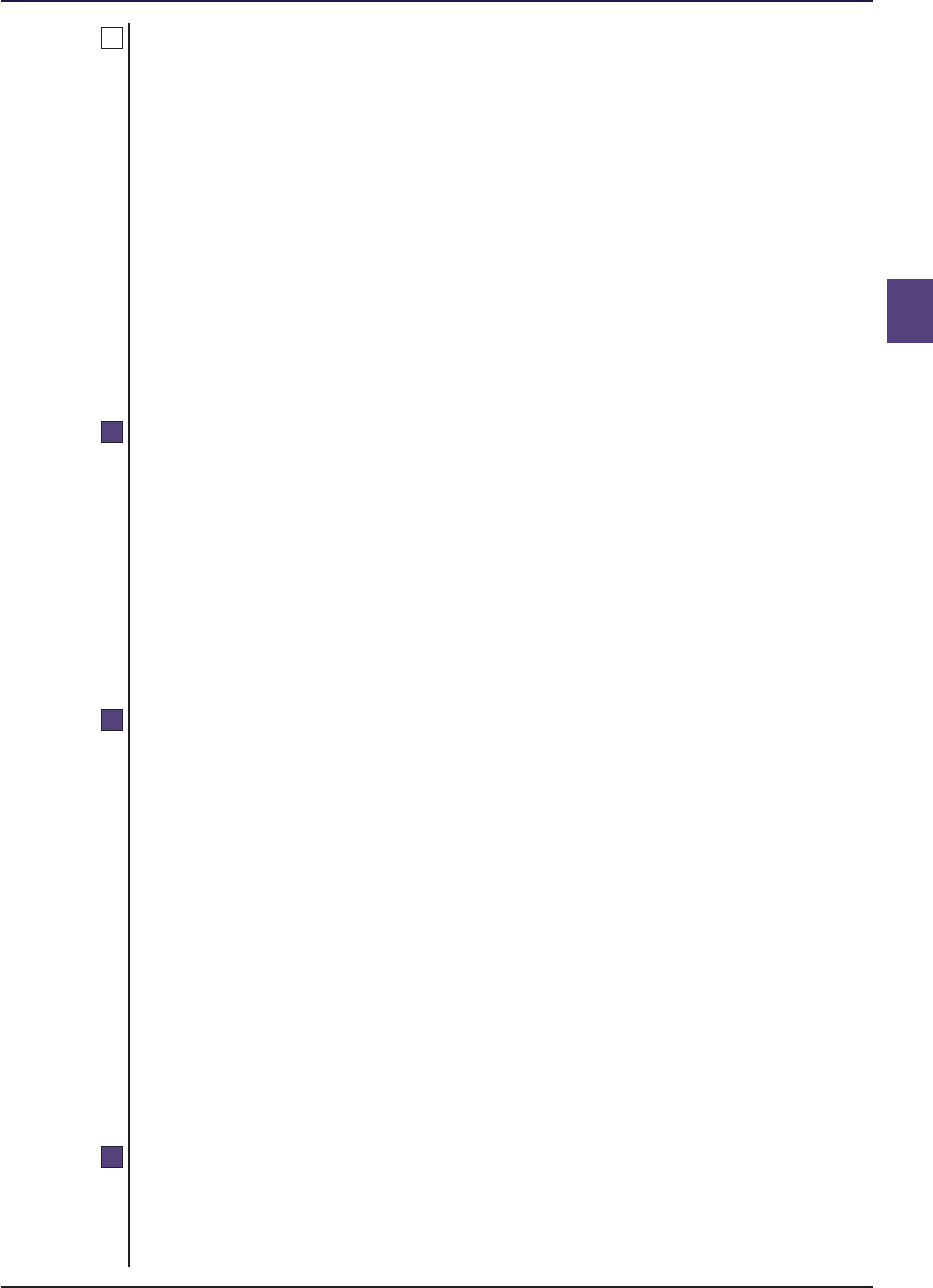
COLL 5 : Investment and Section 5.2 : General investment powers and
borrowing powers limits for UCITS schemes
5
G5.2.25
R5.2.26
R5.2.27
R5.2.28
■ Release 39 ● Aug 2024 www.handbook.fca.org.uk COLL 5/33
(1) [deleted]
(2) [deleted]
(3) [deleted]
(4) [deleted]
(5) [deleted]
(6) [deleted]
(7) [deleted]
(8) [deleted]
Investment in deposits
.....................................................................................................
A UCITS scheme may invest in deposits only if it:
(1) is with an approved bank;
(2) is:
(a) repayable on demand; or
(b) has the right to be withdrawn; and
(3) matures in no more than 12 months.
Significant influence for ICVCs
.....................................................................................................
(1) An ICVC must not acquire transferable securities issued by a body
corporate and carrying rights to vote (whether or not on substantially
all matters) at a general meeting of that body corporate if:
(a) immediately before the acquisition, the aggregate of any such
securities held by the ICVC gives the ICVC power to influence
significantly the conduct of business of that body corporate; or
(b) the acquisition gives the ICVC that power.
(2) For the purpose of (1), an ICVC is to be taken to have power
significantly to influence the conduct of business of a body corporate
if it can, because of the transferable securities held by it, exercise or
control the exercise of 20% or more of the voting rights in that body
corporate (disregarding for this purpose any temporary suspension of
voting rights in respect of the transferable securities of that body
corporate).
Significant influence for authorised fund managers of AUTs or
ACSs
.....................................................................................................
(1) An authorised fund manager must not acquire, or cause to be
acquired for an AUT or ACS of which it is the authorised fund
manager, transferable securities issued by a body corporate and
carrying rights to vote (whether or not on substantially all matters) at
a general meeting of the body corporate if:

COLL 5 : Investment and Section 5.2 : General investment powers and
borrowing powers limits for UCITS schemes
5
R5.2.29
R5.2.30
■ Release 39 ● Aug 2024www.handbook.fca.org.ukCOLL 5/34
(a) immediately before the acquisition, the aggregate of any such
securities held for that AUT or ACS, taken together with any such
securities already held for other AUTs or ACSs of which it is also
the authorised fund manager, gives the authorised fund manager
power significantly to influence the conduct of business of that
body corporate; or
(b) the acquisition gives the authorised fund manager that power.
(2) For the purpose of (1), an authorised fund manager is to be taken to
have power significantly to influence the conduct of business of a
body corporate if it can, because of the transferable securities held
for all the AUTs or ACSs, of which it is the authorised fund manager,
exercise or control the exercise of 20% or more of the voting rights in
that body corporate (disregarding for this purpose any temporary
suspension of voting rights in respect of the transferable securities of
that body corporate).
Concentration
.....................................................................................................
A UCITS scheme:
(1) must not acquire transferable securities (other than debt securities)
which:
(a) do not carry a right to vote on any matter at a general meeting
of the body corporate that issued them; and
(b) represent more than 10% of those securities issued by that body
corporate;
(2) must not acquire more than 10% of the debt securities issued by any
single body;
(3) must not acquire more than 25% of the units in a collective
investment scheme;
(4) must not acquire more than 10% of the approved money-market
instruments issued by any single body; and
(5) need not comply with the limits in (2), (3) and (4) if, at the time of
acquisition, the net amount in issue of the relevant investment
cannot be calculated.
UCITS schemes that are umbrellas
.....................................................................................................
(1) In relation to a UCITS scheme which is an umbrella, the provisions in
■ COLL 5.2 to ■ COLL 5.5 apply to each sub-fund as they would for an
authorised fund, except the following rules which apply at the level
of the umbrella only:
(a) ■ COLL 5.2.27 R (Significant influence for ICVCs);
(b) ■ COLL 5.2.28 R (Significant influence for authorised fund managers
of AUTs or ACSs); and
(c) ■ COLL 5.2.29 R (Concentration).

COLL 5 : Investment and Section 5.2 : General investment powers and
borrowing powers limits for UCITS schemes
5
R5.2.31
G5.2.32
R5.2.33
■ Release 39 ● Aug 2024 www.handbook.fca.org.uk COLL 5/35
(2) A sub-fund may invest in or dispose of units of another sub-fund of
the same umbrella (the second sub-fund) only if the following
conditions are satisfied:
(a) the second sub-fund does not hold units in any other sub-fund of
the same umbrella;
(b) the conditions in ■ COLL 5.2.15 R (Investment in associated
collective investment schemes) and ■ COLL 5.2.16 R (Investment in
other group schemes) are complied with (for the purposes of this
rule, ■ COLL 5.2.15 R and ■ COLL 5.2.16 R are to be read as modified
by ■ COLL 5.2.15 R (2)); and
(c) the investing or disposing sub-fund must not be a feeder UCITS to
the second sub-fund.
Schemes replicating an index
.....................................................................................................
(1) Notwithstanding ■ COLL 5.2.11 R (Spread: general), a UCITS scheme
may invest up to 20% in value of the scheme property in shares and
debentures which are issued by the same body where the investment
policy of that scheme as stated in the most recently published
prospectus is to replicate the composition of a relevant index which
satisfies the criteria specified in ■ COLL 5.2.33 R (Relevant indices).
(1A) Replication of the composition of a relevant index shall be
understood to be a reference to replication of the composition of the
underlying assets of that index, including the use of techniques and
instruments permitted for the purpose of efficient portfolio
management.
[Note: article 12(1) of the UCITS eligible assets Directive]
(2) The limit in (1) can be raised for a particular UCITS scheme up to 35%
in value of the scheme property, but only in respect of one body and
where justified by exceptional market conditions.
Index replication
.....................................................................................................
(1) [deleted]
(2) In the case of a UCITS scheme replicating an index under
■ COLL 5.2.31 R (Schemes replicating an index) the scheme property
need not consist of the exact composition and weighting of the
underlying in the relevant index in cases where the scheme's
investment objective is to achieve a result consistent with the
replication of an index rather than an exact replication.
Relevant indices
.....................................................................................................
(1) The indices referred to in ■ COLL 5.2.31 R are those which satisfy the
following criteria:
(a) the composition is sufficiently diversified;
(b) the index represents an adequate benchmark for the market to
which it refers; and
(c) the index is published in an appropriate manner.

COLL 5 : Investment and Section 5.2 : General investment powers and
borrowing powers limits for UCITS schemes
5
G5.2.34
G5.2.35
■ Release 39 ● Aug 2024www.handbook.fca.org.ukCOLL 5/36
(2) The composition of an index is sufficiently diversified if its
components adhere to the spread and concentration requirements in
this section.
(3) An index represents an adequate benchmark if its provider uses a
recognised methodology which generally does not result in the
exclusion of a major issuer of the market to which it refers.
(4) An index is published in an appropriate manner if:
(a) it is accessible to the public;
(b) the index provider is independent from the index-replicating
UCITS scheme; this does not preclude index providers and the
UCITS scheme from forming part of the same group, provided
that effective arrangements for the management of conflicts of
interest are in place.
[Note: articles 12(2),(3) and (4) of the UCITS eligible assets Directive]
Disclosure requirements in relation to UCITS schemes that
employ particular investment strategies
.....................................................................................................
(1) Authorised fund managers of UCITS schemes should bear in mind that
where a UCITS scheme employs particular investment strategies such
as those in (2), ■ COBS 4.13.2R (Marketing communications relating to
UCITS schemes) and ■ COBS 4.13.3R (Marketing communications
relating to a feeder UCITS) contain additional disclosure requirements
in relation to marketing communications that concern those
investment strategies.
(2) Examples of investment strategies that require these additional
disclosures include a scheme:
(a) investing more than 35% in value of its scheme property in
transferable securities or approved money-market instruments
specified in ■ COLL 5.2.12R (Spread: government and public
securities); or
(b) investing principally in units in collective investment schemes,
deposits or derivatives; or
(c) replicating an index.
Guidance on syndicated loans
.....................................................................................................
(1) A syndicated loan for the purposes of this guidance means a form of
loan where a group or syndicate of parties lend money to a third
party and, in return, receive interest payments during the life of the
debt and a return of principal either at the end of the loan period or
amortised over the life of the loan. Such loans are usually arranged
through agent banks which may, among other things, maintain a
record of the lenders’ interest in the loan and arrange or act as a
conduit for the interest payments. Whether an interest in a
syndicated loan constitutes a transferable security or otherwise will
depend on the terms of the relevant instrument. Where an
authorised fund manager plans to invest scheme property in interests
in such syndicated loans, it may wish to consider seeking professional
advice as to their eligibility.

COLL 5 : Investment and Section 5.2 : General investment powers and
borrowing powers limits for UCITS schemes
5
■ Release 39 ● Aug 2024 www.handbook.fca.org.uk COLL 5/37
(2) To determine whether an interest in a syndicated loan would be an
eligible investment for a UCITS scheme in accordance with ■ COLL 5.2,
an authorised fund manager should first consider whether it
constitutes a transferable security within the meaning of ■ COLL 5.2.7 R
(Transferable securities) and ■ COLL 5.2.7AR (which implemented the
additional eligibility criteria arising out of the UCITS eligible assets
Directive that relate to liquidity, valuations and negotiability).
(3) A UCITS scheme cannot lend money from its scheme property.
Accordingly, it is unable to partake in the initial funding of a
syndicated loan either as an original lender or as a person who
becomes a lender as part of the primary syndication of the loan.
However, we recognise that a UCITS scheme may be acknowledged as
the lender of record as a consequence of the legal form of transfer
used to purchase a loan in the secondary market, such as novation.
(4) An instrument will not be a transferable security if it falls within one
or more of the exclusions set out in article 77(2) of the Regulated
Activities Order. An instrument acknowledging or creating
indebtedness for, or for money borrowed to defray, the consideration
payable under a contract for the supply of goods or services would be
an example of an exclusion.
(5) In the FCA's opinion, for an instrument to be classed as a debenture
for the purposes of constituting a transferable security (see
■ COLL 5.2.7 R (1)(b)), there must be an instrument creating or
evidencing indebtedness. A facilities agreement and a drawdown
request which does not create or evidence indebtedness will not be a
debenture for these purposes.
(6) In the FCA's view, the simple fact that a debt obligation is legally
transferable (whether by way of creation, assignment or otherwise)
does not necessarily make it negotiable for the purposes of
■ COLL 5.2.7AR (1)(e) (Investment in transferable securities), so as to
make it a permissible investment for a UCITS scheme. When securities
are capable of being traded on a capital market, whether on-
exchange or off-exchange, as a class and are fungible within their
class, this would tend to indicate (unless the AFM was aware of
specific evidence to the contrary) that they are negotiable.
(7) The FCA's understanding is that leveraged loans are a non-investment
grade sub-set of syndicated loans and, where this is the case, AFMs
should use similar analysis to determine whether or not interests in
such loans are eligible investments for UCITS schemes.
(8) Where a loan falls within the Glossary definition of a transferable
security, investment in such a loan in the case of a UCITS scheme is
subject to the spread requirements in ■ COLL 5.2.11 R (Spread: general).
AFMs also need to bear in mind that where such a transferable
security does not meet the requirements of ■ COLL 5.2.8 R (3)
(Transferable securities and money-market instruments generally to
be admitted to or dealt in on an eligible market), the scheme's
overall exposure to such loans will count towards the limit in
■ COLL 5.2.8 R (4).

COLL 5 : Investment and Section 5.2 : General investment powers and
borrowing powers limits for UCITS schemes
5
G5.2.36
■ Release 39 ● Aug 2024www.handbook.fca.org.ukCOLL 5/38
ESMA guidelines
.....................................................................................................
Authorised fund managers of UCITS schemes are advised that ESMA has
issued guidelines which, in accordance with the UCITS implementing
Directive, authorised fund managers should comply with in applying the
rules in this section in relation to UCITS schemes:
Guidelines concerning eligible assets for investment by UCITS: The
classification of hedge fund indices as financial indices (CESR/07-434)
https://www.esma.europa.eu/sites/default/files/library/2015/11/07_434.pdf
Guidelines to competent authorities and UCITS management companies on
ETFs and other UCITS issues (ESMA 2012/832)
https://www.esma.europa.eu/sites/default/files/library/2015/11/2012-832en_
guidelines_on_etfs_and_other_ucits_issues.pdf
Revision of the provisions on diversification of collateral in ESMA’s Guidelines
on ETFs and other UCITS issues (ESMA 2014/294).
https://www.esma.europa.eu/sites/default/files/library/2015/11/2014-294_final_
report_revision_of_guidelines_etfs_and_other_ucits_issues.pdf

COLL 5 : Investment and Section 5.3 : Derivative exposure
borrowing powers
5
R5.3.1
G5.3.2
R5.3.3
R5.3.3A
■ Release 39 ● Aug 2024 www.handbook.fca.org.uk COLL 5/39
5.3 Derivative exposure
Application
.....................................................................................................
This section applies to an authorised fund manager of a UCITS scheme and to
an ICVC which is a UCITS scheme.
Introduction
.....................................................................................................
(1) A scheme may invest in derivatives and forward transactions as long
as the exposure to which the scheme is committed by that transaction
itself is suitably covered from within its scheme property. Exposure
will include any initial outlay in respect of that transaction.
(2) Cover ensures that a scheme is not exposed to the risk of loss of
property, including money, to an extent greater than the net value of
the scheme property. Therefore, a scheme is required to hold scheme
property sufficient in value or amount to match the exposure arising
from a derivative obligation to which the scheme is committed. This
section sets out detailed requirements for cover of a scheme.
(3) In accordance with ■ COLL 5.1.3 R (2)(b) (Treatment of obligations),
cover used in respect of one transaction in derivatives or forward
transaction should not be used for cover in respect of another
transaction in derivatives or a forward transaction.
(1) [deleted]
(2) [deleted]
(3) [deleted]
(4) [deleted]
(5) [deleted]
Cover for investment in derivatives and forward transactions
.....................................................................................................
The authorised fund manager of a UCITS scheme must ensure that its global
exposure relating to derivatives and forward transactions held in the UCITS
scheme does not exceed the net value of the scheme property.
[Note: article 51(3) first paragraph of the UCITS Directive]

COLL 5 : Investment and Section 5.3 : Derivative exposure
borrowing powers
5
R5.3.3B
R5.3.3C
G5.3.4
R5.3.5
R5.3.6
R5.3.7
■ Release 39 ● Aug 2024www.handbook.fca.org.ukCOLL 5/40
Daily calculation of global exposure
.....................................................................................................
An authorised fund manager of a UCITS scheme must calculate its global
exposure on at least a daily basis.
[Note: article 41(2) of the UCITS implementing Directive]
For the purposes of this section, exposure must be calculated taking into
account the current value of the underlying assets, the counterparty risk,
future market movements and the time available to liquidate the positions.
[Note: article 51(3) second paragraph of the UCITS Directive]
Guidance on cover
.....................................................................................................
(1) An authorised fund manager should note that the scope of
■ COLL 5.3.3C R is extended in relation to underwriting commitments
by ■ COLL 5.5.8 R (4) (General power to accept or underwrite placings).
(2) Property the subject of a transaction under ■ COLL 5.4 (Stock lending)
should not be considered as available for cover unless the authorised
fund manager has taken reasonable care to determine that it is
obtainable (by return or re-acquisition) in time to meet the obligation
for which cover is required.
Borrowing
.....................................................................................................
(1) Cash obtained from borrowing, and borrowing which the authorised
fund manager reasonably regards an eligible institution or an
approved bank to be committed to provide, is not available for cover
under ■ COLL 5.3.3A R (Cover for investment in derivatives and forward
transactions), except if (2) applies.
(2) Where, for the purposes of this section, the ICVC or the depositary for
the account of the AUT or ACS on the instructions of the authorised
fund manager:
(a) borrows an amount of currency from an eligible institution or an
approved bank; and
(b) keeps an amount in another currency, at least equal to the
borrowing for the time being in (a), on deposit with the lender
(or his agent or nominee);
then this section applies as if the borrowed currency, and not the
deposited currency, were part of the scheme property.
(1) [deleted]
(2) [deleted]
Calculation of global exposure
.....................................................................................................
An authorised fund manager must calculate the global exposure of any
UCITS scheme it manages either as:

COLL 5 : Investment and Section 5.3 : Derivative exposure
borrowing powers
5
R5.3.8
R5.3.9
■ Release 39 ● Aug 2024 www.handbook.fca.org.uk COLL 5/41
(1) the incremental exposure and leverage generated through the use of
derivatives and forward transactions (including embedded derivatives
as referred to in ■ COLL 5.2.19R (3A) (Derivatives: general)), which may
not exceed 100% of the net value of the scheme property; or
(2) the market risk of the scheme property.
[Note: article 41(1) of the UCITS implementing Directive]
(1) An authorised fund manager must calculate the global exposure of a
UCITS scheme by using:
(a) the commitment approach; or
(b) the value at risk approach.
(2) An authorised fund manager must ensure that the method selected in
(1) is appropriate, taking into account:
(a) the investment strategy pursued by the UCITS scheme;
(b) the types and complexities of the derivatives and forward
transactions used; and
(c) the proportion of the scheme property comprising derivatives and
forward transactions.
(3) Where a UCITS scheme employs techniques and instruments including
repo contracts or stock lending transactions in accordance with
■ COLL 5.4 (Stock lending) in order to generate additional leverage or
exposure to market risk, the authorised fund manager must take
those transactions into consideration when calculating global
exposure.
(4) For the purposes of (1), value at risk means a measure of the
maximum expected loss at a given confidence level over the specific
time period.
[Note: articles 41(3) and 41(4) of the UCITS implementing Directive]
Commitment approach
.....................................................................................................
Where an authorised fund manager of a UCITS scheme uses the commitment
approach for the calculation of global exposure, it must:
(1) ensure that it applies this approach to all derivative and forward
transactions (including embedded derivatives as referred to in
■ COLL 5.2.19R (3A) (Derivatives: general)), whether used as part of the
scheme's general investment policy, for the purposes of risk reduction
or for the purposes of efficient portfolio management in accordance
with the rules of this chapter; and
(2) convert each derivative or forward transaction into the market value
of an equivalent position in the underlying asset of that derivative or
forward (standard commitment approach).
[Note: articles 42(1) and 42(2) first paragraph of the UCITS implementing
Directive]

COLL 5 : Investment and Section 5.3 : Derivative exposure
borrowing powers
5
R5.3.10
G5.3.11
■ Release 39 ● Aug 2024www.handbook.fca.org.ukCOLL 5/42
(1) An authorised fund manager of a UCITS scheme may apply other
calculation methods which are equivalent to the standard
commitment approach.
(2) An authorised fund manager may take account of netting and
hedging arrangements when calculating global exposure of a UCITS
scheme, where those arrangements do not disregard obvious and
material risks and result in a clear reduction in risk exposure.
(3) Where the use of derivatives or forward transactions does not
generate incremental exposure for the UCITS scheme, the underlying
exposure need not be included in the commitment calculation.
(4) Where the commitment approach is used, temporary borrowing
arrangements entered into on behalf of the UCITS scheme in
accordance with ■ COLL 5.5.4 R (General power to borrow) need not
form part of the global exposure calculation.
[Note: articles 42(2) final paragraph, 42(3), 42(4) and 42(5) of the UCITS
implementing Directive]
ESMA guidelines
.....................................................................................................
Authorised fund managers of UCITS schemes are advised that ESMA has
issued guidelines which, in accordance with the UCITS implementing
Directive, authorised fund managers should comply with in applying the
rules in this section in relation to UCITS schemes:
Guidelines: Risk Measurement and the Calculation of Global Exposure and
Counterparty Risk for UCITS (CESR/10-788)
https://www.esma.europa.eu/sites/default/files/library/2015/11/10_788.pdf
Guidelines to competent authorities and UCITS management companies on
risk measurement and the calculation of global exposure for certain types of
structured UCITS (ESMA 2012/197)
https://www.esma.europa.eu/sites/default/files/library/2015/11/2012-197.pdf
Guidelines to competent authorities and UCITS management companies on
ETFs and other UCITS issues (ESMA 2012/832)
https://www.esma.europa.eu/sites/default/files/library/2015/11/2012-832en_
guidelines_on_etfs_and_other_ucits_issues.pdf

COLL 5 : Investment and Section 5.4
borrowing powers
5
R5.4.1
G5.4.1A
G5.4.2
R5.4.3
■ Release 39 ● Aug 2024 www.handbook.fca.org.uk COLL 5/43
5.4 Stock lending
Application
.....................................................................................................
(1) Subject to (2), this section applies to an ICVC, the depositary of an
authorised fund and an authorised fund manager in any case where
the authorised fund is a UCITS scheme or a non-UCITS retail scheme.
(2) This section does not apply in any case where a UCITS scheme or a
non-UCITS retail scheme is a regulated money market fund. The
Money Market Funds Regulation sets out restrictions in relation to
stock lending and repo contracts that apply in relation to regulated
money market funds.
■ COLL 6.6B sets out additional FCA rules applicable to a depositary of a UCITS
scheme in relation to the re-use of UCITS custodial assets.
Permitted stock lending
.....................................................................................................
(1) This section covers techniques relating to transferable securities and
approved money-market instruments which are used for the purpose
of efficient portfolio management. It permits the generation of
additional income for the benefit of the authorised fund, and hence
for its investors, by entry into stock lending transactions for the
account of the authorised fund.
(2) The specific method of stock lending permitted in this section is in
fact not a transaction which is a loan in the normal sense. Rather it is
an arrangement of the kind described in section 263B of the Taxation
of Chargeable Gains Act 1992, under which the lender transfers
securities to the borrower otherwise than by way of sale and the
borrower is to transfer those securities, or securities of the same type
and amount, back to the lender at a later date. In accordance with
good market practice, a separate transaction by way of transfer of
assets is also involved for the purpose of providing collateral to the
"lender" to cover him against the risk that the future transfer back of
the securities may not be satisfactorily completed.
Stock lending: general
.....................................................................................................
(1) An authorised fund may only enter into a stock lending arrangement
or repo contract in accordance with the rules in this section if the
arrangement or contract is:
(a) for the account of and for the benefit of the scheme; and

COLL 5 : Investment and Section 5.4
borrowing powers
5
R5.4.4
■ Release 39 ● Aug 2024www.handbook.fca.org.ukCOLL 5/44
(b) in the interests of its unitholders.
(2) An arrangement or contract in (1) is not in the interests of
unitholders unless it reasonably appears to the ICVC or authorised
fund manager of an authorised fund to be appropriate with a view
to generating additional income for the authorised fund with an
acceptable degree of risk.
Stock lending: requirements
.....................................................................................................
(1) An ICVC, or the depositary of an authorised fund acting in accordance
with the instructions of the authorised fund manager, may enter into
a repo contract, or a stock lending arrangement of the kind described
in section 263B of the Taxation of Chargeable Gains Act 1992
(without extension by section 263C), but only if:
(a) all the terms of the agreement under which securities are to be
reacquired by the depositary for the account of the ICVC, AUT or
ACS are in a form which is acceptable to the depositary and are
in accordance with good market practice;
(b) the counterparty is:
(i) an authorised person; or
(ii) a person authorised by a Home State regulator; or
(iii) a person registered as a broker-dealer with the Securities and
Exchange Commission of the United States of America; or
(iv) a bank, or a branch of a bank, supervised and authorised to
deal in investments as principal, with respect to OTC
derivatives by at least one of the following federal banking
supervisory authorities of the United States of America:
(A) the Office of the Comptroller of the Currency;
(B) the Federal Deposit Insurance Corporation; and
(C) the Board of Governors of the Federal Reserve System;
and
(D) [deleted]
(c) high quality and liquid collateral is obtained to secure the
obligation of the counterparty under the terms referred to in (a)
and the collateral is:
(i) acceptable to the depositary;
(ii) adequate; and
(iii) sufficiently immediate.
(2) The counterparty for the purpose of (1) is the person who is obliged
under the agreement referred to in (1)(a) to transfer to the
depositary the securities transferred by the depositary under the stock
lending arrangement or securities of the same kind.
(3) (1)(c) does not apply to a stock lending transaction made through
Euroclear Bank SA/NV's Securities Lending and Borrowing Programme.

COLL 5 : Investment and Section 5.4
borrowing powers
5
G5.4.5
R5.4.6
■ Release 39 ● Aug 2024 www.handbook.fca.org.uk COLL 5/45
Stock lending: treatment of collateral
.....................................................................................................
Where a stock lending arrangement is entered into, the scheme property
remains unchanged in terms of value. The securities transferred cease to be
part of the scheme property, but there is obtained in return an obligation on
the part of the counterparty to transfer back equivalent securities. The
depositary will also receive collateral to set against the risk of default in
transfer, and that collateral is equally irrelevant to the valuation of the
scheme property (because it is transferred against an obligation of
equivalent value by way of re-transfer). ■ COLL 5.4.6 R accordingly makes
provision for the treatment of the collateral in that context.
Treatment of collateral
.....................................................................................................
(1) Collateral is adequate for the purposes of this section only if it is:
(a) transferred to the depositary or its agent;
(aa) for a UCITS scheme, received under a title transfer arrangement;
(ab) for a UCITS scheme, at all times equal in value to the market
value of the securities transferred by the depositary plus a
premium;
(b) for a non-UCITS retail scheme, at all times at least equal in value
to the value of the securities transferred by the depositary; and
(c) for a non-UCITS retail scheme,in the form of one or more of:
(i) cash; or
(ii) [deleted]
(iii) a certificate of deposit; or
(iv) a letter of credit; or
(v) a readily realisable security; or
(vi) commercial paper with no embedded derivative content; or
(vii) a qualifying money market fund.
(1A) Where the collateral is invested in units in a qualifying money market
fund managed or operated by (or, for an ICVC, whose ACD is) the
authorised fund manager of the investing scheme or an associate of
that authorised fund manager, the conditions in ■ COLL 5.2.16 R
(Investment in other group schemes) must be complied with whether
or not the investing scheme is a UCITS scheme or a non-UCITS retail
scheme.
(2) Collateral is sufficiently immediate for the purposes of this section if:
(a) it is transferred before or at the time of the transfer of the
securities by the depositary; or
(b) the depositary takes reasonable care to determine at the time
referred to in (a) that it will be transferred at the latest by the
close of business on the day of the transfer.
(3) The depositary must ensure that the value of the collateral at all
times meets the requirement of either (1)(ab) or (1)(b), as
appropriate.

COLL 5 : Investment and Section 5.4
borrowing powers
5
G5.4.6A
R5.4.7
G5.4.8
■ Release 39 ● Aug 2024www.handbook.fca.org.ukCOLL 5/46
(4) The duty in (3) may be regarded as satisfied in respect of collateral
the validity of which is about to expire or has expired where the
depositary takes reasonable care to determine that sufficient
collateral will again be transferred at the latest by the close of
business on the day of expiry.
(5) Any agreement for transfer at a future date of securities or of
collateral (or of the equivalent of either) under this section may be
regarded, for the purposes of valuation under ■ COLL 6.3 (Valuation
and pricing) or this chapter, as an unconditional agreement for the
sale or transfer of property, whether or not the property is part of
the property of the authorised fund.
(6) Collateral transferred to the depositary is part of the scheme property
for the purposes of the rules in this sourcebook, except in the
following respects:
(a) it does not fall to be included in any valuation for the purposes
of ■ COLL 6.3 or this chapter, because it is offset under (5) by an
obligation to transfer; and
(b) it does not count as scheme property for any purpose of this
chapter other than this section.
(7) Paragraph (5) and (6)(a) do not apply to any valuation of collateral
itself for the purposes of this section.
As regards the collateral adequacy of a UCITS scheme and restrictions on
collateral that take the form of cash for a UCITS scheme, authorised fund
managers are referred to paragraph 43 of the ESMA Guidelines to
competent authorities and UCITS management companies on ETFs and other
UCITS issues (ESMA 2012/832)
https://www.esma.europa.eu/sites/default/files/library/2015/11/2012-832en_
guidelines_on_etfs_and_other_ucits_issues.pdf
Revision of the provisions on diversification of collateral in ESMA’s Guidelines
on ETFs and other UCITS issues (ESMA 2014/294)
https://www.esma.europa.eu/sites/default/files/library/2015/11/2014-294_final_
report_revision_of_guidelines_etfs_and_other_ucits_issues.pdf
Limitation by value
.....................................................................................................
There is no limit on the value of the scheme property which may be the
subject of repo contracts or stock lending transactions within this section.
Guidance relating to the use of cash collateral
.....................................................................................................
(1) The use of stock lending or the reinvestment of cash collateral should
not result in a change of the scheme's declared investment objectives
or add substantial supplementary risks to the scheme's risk profile.
(2) Collateral taking the form of cash may only be invested in:
(a) one of the investments coming within ■ COLL 5.4.6 R (1) (c) (iii) to
■ (vii) (Treatment of collateral); or
(b) deposits, provided they:

COLL 5 : Investment and Section 5.4
borrowing powers
5
G5.4.9
G5.4.10
■ Release 39 ● Aug 2024 www.handbook.fca.org.uk COLL 5/47
(i) are capable of being withdrawn within five business days, or
such shorter time as may be dictated by the stock lending
agreement; and
(ii) satisfy the requirements of ■ COLL 5.2.26 R (1) (Investment in
deposits).
Where a scheme generates leverage through the reinvestment of collateral,
this should be taken into account in the calculation of the scheme's global
exposure.
[Note: CESR's UCITS eligible assets guidelines with respect to article 11 of the
UCITS eligible assets Directive (part)]
Authorised fund managers of UCITS schemes are advised that ESMA has
issued guidelines which, in accordance with the UCITS implementing
Directive, authorised fund managers should comply with in applying the
rules in this section in relation to UCITS schemes:
Guidelines to competent authorities and UCITS management companies on
ETFs and other UCITS issues (ESMA 2012/832)
https://www.esma.europa.eu/sites/default/files/library/2015/11/2012-832en_
guidelines_on_etfs_and_other_ucits_issues.pdf
Revision of the provisions on diversification of collateral in ESMA’s Guidelines
on ETFs and other UCITS issues (ESMA 2014/294)
https://www.esma.europa.eu/sites/default/files/library/2015/11/2014-294_final_
report_revision_of_guidelines_etfs_and_other_ucits_issues.pdf

COLL 5 : Investment and Section 5.5
borrowing powers
5
R5.5.1
R5.5.2
■ Release 39 ● Aug 2024www.handbook.fca.org.ukCOLL 5/48
5.5 Cash, borrowing, lending and other
provisions
Application
.....................................................................................................
(1) Subject to (2), this section applies to an ICVC, an ACD, an authorised
fund manager of an AUT or ACS, and a depositary of an ICVC, AUT or
ACS, where such ICVC, AUT or ACS is a UCITS scheme as set out in
■ COLL 5.5.2R (Table of application).
(2) Other than ■ COLL 5.5.3R and ■ COLL 5.5.9R, this section does not apply
to an ICVC, an ACD, an authorised fund manager of an AUT or ACS,
or a depositary of an ICVC, AUT or ACS, where such ICVC, AUT or ACS
is a regulated money market fund.
Table of application
.....................................................................................................
This table belongs to ■ COLL 5.5.1 R.
Au-
thorised
fund Deposit-
manager ary of an
of an AUT Depositary AUT or
Rule ICVC ACD or ACS of an ICVC ACS
5.5.3R x x
5.5.4R(1) to x x
(3)
5.5.4R(4)&(5) x x
5.5.4R(6) x x
5.5.4R(7) x x x x x
5.5.4R(8) x
5.5.5R(1) to x x
(3)
5.5.6R(1)&(2) x x x
5.5.6R(3) x
5.5.7R(1)-(3) x x x
5.5.7R(4) x x x
5.5.8R x x x
5.5.9R x x x
5.5.10G x x x x x
Note: x means "applies"

COLL 5 : Investment and Section 5.5
borrowing powers
5
R5.5.3
R5.5.4
■ Release 39 ● Aug 2024 www.handbook.fca.org.uk COLL 5/49
Cash and near cash
.....................................................................................................
(1) Cash and near cash must not be retained in the scheme property
except to the extent that this may reasonably be regarded as
necessary in order to enable:
(a) the pursuit of the scheme's investment objectives; or
(b) redemption of units; or
(c) efficient management of the authorised fund in accordance with
its investment objectives; or
(d) other purposes which may reasonably be regarded as ancillary to
the investment objectives of the authorised fund.
(2) During the period of the initial offer the scheme property may consist
of cash and near cash without limitation.
General power to borrow
.....................................................................................................
(1) The ICVC or depositary of an AUT or ACS (on the instructions of the
authorised fund manager) may, in accordance with this rule and
■ COLL 5.5.5 R (Borrowing limits), borrow money for the use of the
authorised fund on terms that the borrowing is to be repayable out
of the scheme property.
(2) Paragraph (1) is subject to the obligation of the authorised fund to
comply with any restriction in the instrument constituting the fund.
(3) The ICVC or depositary of an AUT or ACS may borrow under (1) only
from an eligible institution or an approved bank.
(4) The authorised fund manager must ensure that any borrowing is on a
temporary basis and that borrowings are not persistent, and for this
purpose the authorised fund manager must have regard in particular
to:
(a) the duration of any period of borrowing; and
(b) the number of occasions on which resort is had to borrowing in
any period.
(5) In addition to complying with (4), the authorised fund manager must
ensure that no period of borrowing exceeds three months, whether
in respect of any specific sum or at all, without the prior consent of
the depositary.
(6) The depositary may only give its consent as required under (5) on
such conditions as appear to the depositary appropriate to ensure
that the borrowing does not cease to be on a temporary basis only.
(7) This rule does not apply to "back to back" borrowing under
■ COLL 5.3.5 R (2) (Borrowing).
(8) An ICVC must not issue any debenture unless it acknowledges or
creates a borrowing that complies with (1) to (6)

COLL 5 : Investment and Section 5.5
borrowing powers
5
R5.5.5
G5.5.5A
R5.5.6
R5.5.7
■ Release 39 ● Aug 2024www.handbook.fca.org.ukCOLL 5/50
Borrowing limits
.....................................................................................................
(1) The authorised fund manager must ensure that the authorised fund's
borrowing does not, on any day, exceed 10% of the value of the
scheme property.
(2) This rule does not apply to "back to back" borrowing under
■ COLL 5.3.5 R (2)(Borrowing).
(3) In this rule, borrowing includes, as well as borrowing in a
conventional manner, any other arrangement (including a
combination of derivatives) designed to achieve a temporary injection
of money into the scheme property in the expectation that the sum
will be repaid.
(4) [deleted]
An authorised fund manager should ensure when calculating the authorised
fund’s borrowing for ■ COLL 5.5.5R(1) that:
(1) the figure calculated is the total of all borrowing in all currencies by
the authorised fund; and
(2) long and short positions in different currencies are not netted off
against each other.
Restrictions on lending of money
.....................................................................................................
(1) None of the money in the scheme property of an authorised fund
may be lent and, for the purposes of this prohibition, money is lent
by an authorised fund if it is paid to a person ("the payee") on the
basis that it should be repaid, whether or not by the payee.
(2) Acquiring a debenture is not lending for the purposes of (1); nor is
the placing of money on deposit or in a current account.
(3) Paragraph (1) does not prevent an ICVC from providing an officer of
the ICVC with funds to meet expenditure to be incurred by him for
the purposes of the ICVC (or for the purposes of enabling him
properly to perform his duties as an officer of the ICVC) or from
doing anything to enable an officer to avoid incurring such
expenditure.
Restrictions on lending of property other than money
.....................................................................................................
(1) The scheme property of an authorised fund other than money must
not be lent by way of deposit or otherwise.
(2) Transactions permitted by ■ COLL 5.4 (Stock lending) are not to be
regarded as lending for the purposes of (1).
(3) The scheme property must not be mortgaged.
(4) Where transactions in derivatives or forward transactions are used for
the account of the authorised fund in accordance with any of the
rules in this chapter, nothing in this rule prevents the ICVC or the

COLL 5 : Investment and Section 5.5
borrowing powers
5
G5.5.7A
R5.5.8
R5.5.9
■ Release 39 ● Aug 2024 www.handbook.fca.org.uk COLL 5/51
depositary at the request of the ICVC, or the depositary of an AUT or
ACS at the request of the authorised fund manager, from:
(a) lending, depositing, pledging or charging scheme property for
margin requirements; or
(b) transferring scheme property under the terms of an agreement in
relation to margin requirements, provided that the authorised
fund manager reasonably considers that both the agreement and
the margin arrangements made under it (including in relation to
the level of margin) provide appropriate protection to
unitholders.
An agreement providing appropriate protection to unitholders for the
purposes of ■ COLL 5.5.7 R (4)(b) includes one made in accordance with the
1995 International Swaps and Derivatives Association Credit Support Annex
(English Law) to the International Swaps and Derivatives Association Master
Agreement.
General power to accept or underwrite placings
.....................................................................................................
(1) Any power in this chapter to invest in transferable securities may be
used for the purpose of entering into transactions to which this rule
applies, subject to compliance with any restriction in the instrument
constituting the fund.
(2) This rule applies to any agreement or understanding which:
(a) is an underwriting or sub-underwriting agreement; or
(b) contemplates that securities will or may be issued or subscribed
for or acquired for the account of the authorised fund.
(3) Paragraph (2) does not apply to:
(a) an option; or
(b) a purchase of a transferable security which confers a right to:
(i) subscribe for or acquire a transferable security; or
(ii) convert one transferable security into another.
(4) The exposure of an authorised fund to agreements and
understandings within (2) must, on any day, be:
(a) covered under ■ COLL 5.3.3A R (Cover for investment in derivatives
and forward transactions); and
(b) such that, if all possible obligations arising under them had
immediately to be met in full, there would be no breach of any
limit in this chapter.
Guarantees and indemnities
.....................................................................................................
(1) An ICVC or a depositary for the account of an authorised fund must
not provide any guarantee or indemnity in respect of the obligation
of any person.

COLL 5 : Investment and Section 5.5
borrowing powers
5
G5.5.10
■ Release 39 ● Aug 2024www.handbook.fca.org.ukCOLL 5/52
(2) None of the scheme property of an authorised fund may be used to
discharge any obligation arising under a guarantee or indemnity with
respect to the obligation of any person.
(3) Paragraphs (1) and (2) do not apply to:
(a) any indemnity or guarantee given for margin requirements
where the derivatives or forward transactions are being used in
accordance with the rules in this chapter; and
(b) for an ICVC:
(i) an indemnity falling within the provisions of regulation 62(3)
of the OEIC Regulations (Exemptions from liability to be
void);
(ii) an indemnity (other than any provision in it which is void
under regulation 62 of the OEIC Regulations) given to the
depositary against any liability incurred by it as a
consequence of the safekeeping of any of the scheme
property by it or by anyone retained by it to assist it to
perform its function of the safekeeping of the scheme
property; and
(iii) an indemnity given to a person winding up a scheme if the
indemnity is given for the purposes of arrangements by
which the whole or part of the property of that scheme
becomes the first property of the ICVC and the holders of
units in that scheme become the first unitholders in the ICVC;
and
(c) for an AUT or ACS, an indemnity given to a person winding up a
body corporate or other scheme in circumstances where those
assets are becoming part of the scheme property by way of a
unitisation.
Guidance on restricting payments
.....................................................................................................
■ COLL 6.7.15 R (Payment of liabilities on transfer of assets) and ■ COLL 6.7.4 R
(Payments out of scheme property) contain provisions restricting payments
out of scheme property.

COLL 5 : Investment and Section 5.6
borrowing powers
5
R5.6.1
G5.6.2
■ Release 39 ● Aug 2024 www.handbook.fca.org.uk COLL 5/53
5.6 Investment powers and borrowing
limits for non-UCITS retail schemes
Application
.....................................................................................................
(1) Subject to (3), this section applies to the authorised fund manager
and the depositary of a non-UCITS retail scheme and to an ICVC
which is a non-UCITS retail scheme.
(2) Where this section contains a reference to a rule in any of ■ COLL 5.1
to ■ COLL 5.5 , these rules and any rules to which they refer or any
relevant guidance should be read as if any reference to a UCITS
scheme is to a non-UCITS retail scheme.
(3) Other than ■ COLL 5.6.3R(1), ■ 5.6.4AG, ■ 5.6.14R, ■ 5.6.15R, ■ 5.6.22R(2),
■ 5.6.22R(3), ■ 5.6.22R(9) and ■ 5.6.24R, this section does not apply
where the non-UCITS retail scheme in question is a regulated money
market fund.
Explanation of ■ COLL 5.6
.....................................................................................................
(1) This section contains rules on the types of permitted investments and
any relevant limits with which non-UCITS retail schemes must comply.
These rules allow for the relaxation of certain investment and
borrowing powers from the requirements applicable to UCITS
schemes.
(2) Some examples of the different investment and borrowing powers
under the rules in this section for non-UCITS retail schemes are the
power to:
(a) invest not more than 10% of the value of scheme property in
transferable securities or money-market instruments issued by any
single body;
(b) invest in up to 20% in aggregate of the value of the scheme
property in transferable securities which are not approved
securities and unregulated schemes;
(c) invest in a wider range of alternative investment funds;
(d) include gold in the scheme property (up to a limit of 10% of the
value of the scheme property);
(e) include immovables in the scheme property; and
(f) borrow on a non-temporary basis without any specific time limit
as to repayment of the borrowing.

COLL 5 : Investment and Section 5.6
borrowing powers
5
R5.6.3
R5.6.4
■ Release 39 ● Aug 2024www.handbook.fca.org.ukCOLL 5/54
Prudent spread of risk
.....................................................................................................
(1) An authorised fund manager must ensure that, taking account of the
investment objectives and policy of the non-UCITS retail scheme as
stated in its most recently published prospectus, the scheme property
of the non-UCITS retail scheme aims to provide a prudent spread of
risk
(1A) For a feeder NURS, (1) applies only to the extent that the feeder
NURS invests in assets other than units of its qualifying master
scheme.
(2) Subject to (3) and (4), the rules in this section relating to spread of
investments, including immovables, do not apply until 12 months
after the later of:
(a) the date when the authorisation order in respect of the non-
UCITS retail scheme takes effect; and
(b) the date the initial offer commenced;
provided that (1) is complied with during such period.
(3) Subject to (4), the limits in ■ COLL 5.6.19 R do not apply until 24
months after the later of:
(a) the date when the authorisation order in respect of the non-
UCITS retail scheme takes effect; and
(b) the date the initial offer commenced;
provided that (1) is complied with during such period.
(4) The limit in ■ COLL 5.6.19 R (7) relating to immovables which are
unoccupied and non-income producing or are in the course of
substantial development, redevelopment or refurbishment applies
from the later of the date when the authorisation order in respect of
the non-UCITS retail scheme takes effect and the date the initial offer
period commenced.
Investment powers: general
.....................................................................................................
(1) The scheme property of a non-UCITS retail scheme may, subject to the
rules in this section, comprise any assets or investments to which it is
dedicated.
(2) For an ICVC, the scheme property may also include movable or
immovable property that is necessary for the direct pursuit of the
ICVC's business of investing in those assets or investments.
(3) The scheme property must be invested only in accordance with the
relevant provisions in this section that are applicable to that non-
UCITS retail scheme and within any upper limit specified in this
section.

COLL 5 : Investment and Section 5.6
borrowing powers
5
G5.6.4A
R5.6.5
■ Release 39 ● Aug 2024 www.handbook.fca.org.uk COLL 5/55
(4) The instrument constituting the fund may restrict the investment
powers of a scheme further than the relevant restrictions in this
section.
(5) The scheme property may only, except where otherwise provided in
the rules in this section, consist of any one or more of:
(a) transferable securities;
(b) money-market instruments;
(c) units in collective investment schemes permitted under
■ COLL 5.6.10 R (Investment in collective investment schemes);
(d) derivatives and forward transactions permitted under
■ COLL 5.6.13 R (Permitted transactions (derivatives and forwards));
(e) deposits permitted under ■ COLL 5.2.26 R (Investment in deposits);
(f) immovables permitted under ■ COLL 5.6.18 R (Investment in
property) to ■ COLL 5.6.19 R (Investment limits for immovables);
and
(g) gold up to a limit of 10% in value of the scheme property.
Investment powers and limits for non-UCITS retail schemes that are regulated
money market funds are set out in the Money Market Funds Regulation.
Subject to complying with that Regulation, the instrument constituting the
fund may further restrict:
(1) the kind of money market instruments in which the scheme property
may be invested;
(2) the proportion of the capital property of the non-UCITS retail scheme
to be invested in money market instruments of any description;
(3) the descriptions of transactions permitted; and
(4) the borrowing powers of the non-UCITS retail scheme.
Eligibility of transferable securities and money-market
instruments for investment by a non-UCITS retail scheme
.....................................................................................................
Transferable securities and money-market instruments held within a non-
UCITS retail scheme must:
(1) (a) be admitted to or dealt in on an eligible market within
■ COLL 5.2.10 R (Eligible markets: requirements); or
(b) be recently issued transferable securities which satisfy the
requirements for investment by a UCITS scheme set out in
■ COLL 5.2.8 R (3)(e); or
(c) be approved money-market instruments not admitted to or dealt
in on an eligible market which satisfy the requirements for
investment by a UCITS scheme set out in ■ COLL 5.2.10A R to
■ COLL 5.2.10C R; or
(2) subject to a limit of 20% in value of the scheme property be:
(a) transferable securities which are not within (1); or

COLL 5 : Investment and Section 5.6
borrowing powers
5
R5.6.5A
G5.6.5B
R5.6.5C
R5.6.5D
G5.6.5E
R5.6.6
R5.6.7
■ Release 39 ● Aug 2024www.handbook.fca.org.ukCOLL 5/56
(b) money-market instruments which are liquid and have a value
which can be determined accurately at any time.
Transferable securities held within a non-UCITS retail scheme must also
satisfy the criteria in ■ COLL 5.2.7A R, ■ COLL 5.2.7C R and ■ COLL 5.2.7E R for the
purposes of investment by a UCITS scheme.
■ COLL 5.2.7A R to ■ COLL 5.2.7E R contain rules and guidance relating to the
criteria that need to be satisfied for the purposes of investment in
transferable securities.
[deleted]
[deleted]
Funds investing in inherently illiquid assets (FIIA)
.....................................................................................................
(1) The Glossary definition of a fund investing in inherently illiquid assets
(or FIIA) includes conditions relating to, amongst other things, the
investment objectives of such non-UCITS retail schemes and the
proportion of scheme property which is invested in inherently illiquid
assets.
(2) Examples of such assets include:
(a) property and real estate;
(b) shares in a special purpose vehicle investing in infrastructure
projects;
(c) shares issued by a company that are not listed or admitted to
trading; and
(d) units in a property authorised investment fund.
Valuation
.....................................................................................................
In this section the value of the scheme property means the value of the
scheme property determined in accordance with ■ COLL 5.2.5 R (Valuation).
Spread: general
.....................................................................................................
(1) This rule does not apply in respect of a transferable security or an
approved money-market instrument to which ■ COLL 5.6.8R (Spread:
government and public securities) applies.
(2) Not more than 20% in value of the scheme property is to consist of
deposits with a single body.
(3) Not more than 10% in value of the scheme property is to consist of
transferable securities or money-market instruments issued by any
single body subject to ■ COLL 5.6.23 R (Schemes replicating an index).

COLL 5 : Investment and Section 5.6
borrowing powers
5
■ Release 39 ● Aug 2024 www.handbook.fca.org.uk COLL 5/57
(3A) The limit of 10% in (3) is raised to 25% in value of the scheme
property in respect of covered bonds.
(4) In applying (3) certificates representing certain securities are to be
treated as equivalent to the underlying security.
(5) The exposure to any one counterparty in an OTC derivative
transaction must not exceed 10% in value of the scheme.
(6) Except for a feeder NURS or a scheme dedicated to units in a single
property authorised investment fund, not more than 35% in value of
the scheme is to consist of the units of any one scheme.
(6A) Schemes which (in respect of investment in units in collective
investment schemes) are dedicated to units in a single property
authorised investment fund or qualifying master scheme must, in
addition to the investment in the property authorised investment
fund or qualifying master scheme, only hold cash or near cash to
maintain sufficient liquidity to enable the scheme to meet its
commitments, such as redemptions. Schemes may also use techniques
and instruments for the purpose of efficient portfolio management,
where appropriate, such as forward foreign exchange transactions
entered into for the purpose of reducing the effect of fluctuations in
the rate of exchange between relevant currencies.
(7) For the purpose of calculating the limit in (5), the exposure in respect
of an OTC derivative may be reduced to the extent that collateral is
held in respect of it if the collateral meets each of the conditions
specified in (8).
(8) The conditions referred to in (7) are that the collateral:
(a) is marked-to-market on a daily basis and exceeds the value of the
amount at risk;
(b) is exposed only to negligible risks (e.g. government bonds of first
credit rating or cash) and is liquid;
(c) is held by a third party custodian not related to the provider or is
legally secured from the consequences of a failure of a related
party; and
(d) can be fully enforced by the non-UCITS retail scheme at any time.
(9) For the purpose of calculating the limit in (5), OTC derivative
positions with the same counterparty may be netted provided that
the netting procedures:
(a) comply with the conditions set out in Part Three, Title II, Chapter
6, Section 7(Contractual netting (Contracts for novation and other
netting agreements)) of the UK CRR and
(b) are based on legally binding agreements.
(10) In applying this rule, all derivatives transactions are deemed to be
free of counterparty risk if they are performed on an exchange where
the clearing house meets each of the following conditions:
(a) it is backed by an appropriate performance guarantee; and
(b) it is characterised by a daily mark-to-market valuation of the
derivative positions and an at least daily margining.

COLL 5 : Investment and Section 5.6
borrowing powers
5
G5.6.7A
R5.6.8
R5.6.9
■ Release 39 ● Aug 2024www.handbook.fca.org.ukCOLL 5/58
(11) For the purposes of this rule a single body is:
(a) in relation to transferable securities and money market
instruments, the person by whom they are issued; and
(b) in relation to deposits, the person with whom they are placed.
Guidance on spread: general
.....................................................................................................
(1) ■ COLL 5.6.7 R (7) to ■ (10) replicate the provisions of Article 5 of the
Commission Recommendation 2004/383/EC of 27 April 2004 on the
use of financial derivative instruments for undertakings for collective
investment in transferable securities, so as to enable non-UCITS retail
schemes to benefit from the same flexibility.
(2) The attention of authorised fund managers is specifically drawn to
condition (d) in ■ COLL 5.6.7 R (8) under which the collateral has to be
legally enforceable at any time. It is the FCA's view that it is advisable
for an authorised fund manager to undertake a legal due diligence
exercise before entering into any financial collateral arrangement.
This is particularly important where the collateral arrangements in
question have a cross-border dimension. The depositary will also need
to exercise reasonable care to review the collateral arrangements in
accordance with its duties under ■ COLL 6.6.4 R (General duties of the
depositary).
(3) In applying the spread limit of 20% in value of scheme property
which may consist of deposits with a single body, all uninvested cash
comprising capital property that the depositary holds should be
included in calculating the total sum of the deposits held by it on
behalf of the scheme.
Spread: government and public securities
.....................................................................................................
(1) This rule applies in respect of a transferable security or an approved
money-market instrument (“such securities”) that is issued or
guaranteed by:
(a) the UK or an EEA State; or
(b) a local authority of the UK or an EEA State; or
(c) a non-EEA State; or
(d) a public international body to which the UK or one or more EEA
States belong.
(2) The requirements in ■ COLL 5.2.12 R (Spread: government and public
securities) apply to investment in such securities by a non-UCITS retail
scheme, except for ■ COLL 5.2.12R(3)(d), which applies to such a scheme
only to the extent that it concerns the most recently published
prospectus of the scheme.
Investment in nil and partly paid securities
.....................................................................................................
A non-UCITS retail scheme must not invest in nil and partly paid securities
unless the investment complies with the conditions in ■ COLL 5.2.17 R
(Investment in nil and partly paid securities).

COLL 5 : Investment and Section 5.6
borrowing powers
5
R5.6.10
R5.6.10A
■ Release 39 ● Aug 2024 www.handbook.fca.org.uk COLL 5/59
Investment in collective investment schemes
.....................................................................................................
A non-UCITS retail scheme, except for a feeder NURS (which must instead
comply with ■ COLL 5.6.26 R), must not invest in units in a collective
investment scheme (second scheme) unless the second scheme meets each of
the requirements at (1) to (5):
(1) the second scheme:
(a) is a UCITS scheme or satisfies the conditions necessary for it to
enjoy the rights conferred by the UCITS Directive as implemented
in the EEA; or
(b) is a non-UCITS retail scheme; or
(c) is a recognised scheme; or
(d) is constituted outside the United Kingdom and the investment
and borrowing powers of which are the same or more restrictive
than those of a non-UCITS retail scheme; or
(e) is a scheme not falling within (a) to (d) and in respect of which
no more than 20% in value of the scheme property (including
any transferable securities which are not approved securities) is
invested;
(2) the second scheme operates on the principle of the prudent spread of
risk;
(3) the second scheme is prohibited from having more than 15% in value
of the property of that scheme consisting of units in collective
investment schemes (unless ■ COLL 5.6.10AR applies);
(4) the participants in the second scheme must be entitled to have their
units redeemed in accordance with the scheme at a price:
(a) related to the net value of the property to which the units relate;
and
(b) determined in accordance with the scheme; and
(5) where the second scheme is an umbrella, the provisions in (2) to (4)
and ■ COLL 5.6.7 R (Spread: general) apply to each sub-fund as if it
were a separate scheme.
Investment in feeder schemes
.....................................................................................................
(1) A non-UCITS retail scheme that is not a feeder NURS may, if the
conditions in (2) to (5) are met, invest in units of:
(a) a feeder UCITS; or
(b) a feeder NURS; or
(c) a scheme dedicated to units in a single property authorised
investment fund; or
(d) a scheme dedicated to units in a recognised scheme.
(2) (a) The relevant master UCITS must comply with ■ COLL 5.2.13R(2), (3)
and (4) as if it were the second scheme for the purpose of that
rule.

COLL 5 : Investment and Section 5.6
borrowing powers
5
G5.6.10B
G5.6.10C
R5.6.11
■ Release 39 ● Aug 2024www.handbook.fca.org.ukCOLL 5/60
(b) The relevant qualifying master scheme, property authorised
investment fund or recognised scheme must comply with
■ COLL 5.6.10R(2) to (5) as if it were the second scheme for the
purpose of that rule.
(3) Not more than 35% in value of the scheme property of the non-UCITS
retail scheme may consist of units of one or more schemes permitted
under (1)(a) to (d).
(4) The non-UCITS retail scheme must not invest directly in units of the
relevant master UCITS, qualifying master scheme, property authorised
investment fund or recognised scheme.
(5) The authorised fund manager of the non-UCITS retail scheme must be
able to show on reasonable grounds that an investment in one or
more schemes permitted under (1)(a) to (d) is:
(a) in the interests of investors; and
(b) no less advantageous than if the non-UCITS retail scheme had
held units directly in the relevant:
(i) master UCITS; or
(ii) qualifying master scheme; or
(iii) property authorised investment fund; or
(iv) recognised scheme.
When determining whether an investment is no less advantageous for
■ COLL 5.6.10AR(5)(b), an authorised fund manager should have regard in
particular to:
(1) the risk profile of the non-UCITS retail scheme;
(2) the total costs borne by the non-UCITS retail scheme; and
(3) the benefits to investors of investing in units of one or more schemes
permitted under ■ COLL 5.6.10AR (1)(a) to (d).
A non-UCITS retail scheme that is a feeder NURS is required to comply with
■ COLL 5.6.26R instead of ■ COLL 5.6.10AR.
Investment in associated collective investment schemes
.....................................................................................................
(1) Units in a scheme do not fall within ■ COLL 5.6.10 R if that scheme is
managed or operated by (or, if it is an ICVC, has as its ACD) the
authorised fund manager of the investing non-UCITS retail scheme or
by an associate of that authorised fund manager, unless:
(a) the prospectus of the investing authorised fund clearly states that
the property of that investing fund may include such units; and
(b) the conditions in ■ COLL 5.2.16 R (Investment in other group
schemes) are complied with.

COLL 5 : Investment and Section 5.6
borrowing powers
5
R5.6.12
R5.6.13
■ Release 39 ● Aug 2024 www.handbook.fca.org.uk COLL 5/61
(2) Where a sub-fund of a non-UCITS retail scheme which is an umbrella
invests in or disposes of units in another sub-fund of the same
umbrella (the second sub-fund), the requirement in:
(a) ■ COLL 5.6.11 R (1)(a) is modified as follows - the prospectus of the
umbrella must clearly state that the scheme property attributable
to the investing or disposing sub-fund may include units in
another sub-fund of the same umbrella; and
(b) ■ COLL 5.6.11 R (1)(b) is modified as follows - ■ COLL 5.2.16 R
(Investment in other group schemes) must be complied with,
modified such that references to the "UCITS scheme" are taken
to be references to the investing or disposing sub-fund and
references to the "second scheme" are taken to be references to
the second sub-fund.
Derivatives: general
.....................................................................................................
(1) A transaction in derivatives or a forward transaction must not be
effected for a non-UCITS retail scheme unless the transaction is:
(a) of a kind specified in ■ COLL 5.6.13 R (Permitted transactions
(derivatives and forwards)); and
(b) covered, as required by ■ COLL 5.3.3A R (Cover for investment in
derivatives and forward transactions).
(2) Where a scheme invests in derivatives, the exposure to the underlying
assets must not exceed the limits in ■ COLL 5.6.7 R (Spread: general)
and ■ COLL 5.6.8 R (Spread: government and public securities) except as
provided in (4).
(3) Where a transferable security or money-market instrument embeds a
derivative, this must be taken into account for the purposes of
calculating any limit in this section.
(4) Where a scheme invests in an index-based derivative, provided the
relevant index falls within ■ COLL 5.6.23 R (Schemes replicating an
index) the underlying constituents of the index do not have to be
taken into account for the purposes of ■ COLL 5.6.7 R and
■ COLL 5.6.8 R.
(5) The relaxation in (4) is subject to the authorised fund manager taking
account of ■ COLL 5.6.3 R (Prudent spread of risk).
Permitted transactions (derivatives and forwards)
.....................................................................................................
(1) A transaction in a derivative must be within ■ COLL 5.2.20 R (1)
(Permitted transactions (derivatives and forwards)) and:
(a) the underlying must be within ■ COLL 5.6.4 R (5) (Investment
powers: general) or ■ COLL 5.2.20R (2)(f) to ■ (i); and
(b) the exposure to the underlying must not exceed the limits in
■ COLL 5.6.7 R (Spread: general), ■ COLL 5.6.8 R (Spread: government
and public securities) and ■ COLL 5.6.5 R (2).
(2) A transaction in an approved derivative must be effected on or under
the rules of an eligible derivatives market.

COLL 5 : Investment and Section 5.6
borrowing powers
5
R5.6.14
R5.6.15
R5.6.16
G5.6.17
■ Release 39 ● Aug 2024www.handbook.fca.org.ukCOLL 5/62
(3) A transaction in a derivative must not cause a scheme to diverge from
its investment objectives as stated in the instrument constituting the
fund and the most recently published prospectus.
(4) transaction in a derivative must not be effected if the intended effect
is to create the potential for an uncovered sale of:
(a) transferable securities;
(b) money-market instruments;
(c) units in collective investment schemes; or
(d) derivatives.
(5) Any forward transaction must be made with an eligible institution or
an approved bank.
(6) The authorised fund manager must ensure compliance with
■ COLL 5.3.3A R (Cover for investment in derivatives and forward
transactions), ■ COLL 5.3.3B R and ■ COLL 5.3.3C R (Daily calculation of
global exposure).
Transactions for the purchase or disposal of property
.....................................................................................................
The requirements of ■ COLL 5.2.21 R (Transactions for the purchase of
property) and ■ COLL 5.2.22 R (Requirement to cover sales) apply to non-UCITS
retail schemes in the same manner as to UCITS schemes.
OTC transactions in derivatives
.....................................................................................................
Any transaction in an OTC derivative under ■ COLL 5.6.13 R (Permitted
transactions (derivatives and forwards)) must comply with the requirements
of ■ COLL 5.2.23 R (OTC transactions in derivatives).
Risk management
.....................................................................................................
An authorised fund manager must use a risk management process enabling
it to monitor and measure as frequently as appropriate the risk associated
with a non-UCITS retail scheme's positions and their contribution to the
overall risk profile of the scheme.
Risk management process
.....................................................................................................
(1) The risk management process should take account of the investment
objectives and policy of the non-UCITS retail scheme as stated in its
most recent prospectus.
(2) The depositary should take reasonable care to review the
appropriateness of the risk management process in line with its duties
under ■ COLL 6.6.4 R (General duties of the depositary) and
■ COLL 6.6.14 R (Duties of the depositary and authorised fund
manager: investment and borrowing powers), as appropriate.
(3) An authorised fund manager is expected to demonstrate more
sophistication in its risk management process for a non-UCITS retail
scheme with a complex risk profile than for one with a simple risk
profile. In particular, the risk management process should take

COLL 5 : Investment and Section 5.6
borrowing powers
5
R5.6.18
■ Release 39 ● Aug 2024 www.handbook.fca.org.uk COLL 5/63
account of any characteristic of non-linear dependence in the value of
a position to its underlying.
(4) An authorised fund manager should take reasonable care to establish
and maintain such systems and controls as are appropriate to its
business as required by ■ SYSC 4.1 (General requirements).
(5) The risk management process should enable the analysis required by
■ COLL 5.6.16 R (Risk management) to be undertaken at least daily or
at each valuation point whichever is the more frequent.
Investment in property
.....................................................................................................
(1) Any investment in land or a building held within the scheme property
of a non-UCITS retail scheme must be an immovable within (2) to (5).
(2) An immovable must:
(a) be situated in a country or territory identified in the prospectus
for the purpose of this rule; and
(b) if situated in:
(i) England and Wales or Northern Ireland, be a freehold or
leasehold interest; or
(ii) Scotland, be any interest or estate in or over land or
heritable right including a long lease; or
(c) if not situated in the jurisdictions referred to in (b)(i) or (ii), be
equivalent to any of the interests in (b)(i) or (ii) or, if no such
equivalent interest is available in the jurisdiction, be an interest
that grants beneficial ownership of the immovable to the scheme
and provides as good a title as any of the interests in (b)(i) or (ii).
(3) The authorised fund manager must have taken reasonable care to
determine that the title to the immovable is a good marketable title.
(4) The authorised fund manager of an AUT or ACS or the ICVC must:
(a) have received a report from an appropriate valuer which:
(i) contains a valuation of the immovable (with and without any
relevant subsisting mortgage); and
(ii) states that in the appropriate valuer's opinion the immovable
would, if acquired by the scheme, be capable of being
disposed of reasonably quickly at that valuation; or
(b) have received a report from an appropriate valuer as required by
(4)(a)(i) and stating that:
(i) the immovable is adjacent to or in the vicinity of another
immovable included in the scheme property or is another
legal interest as defined in (2)(b) or (c) in an immovable
which is already included in the scheme property; and
(ii) in the opinion of the appropriate valuer, the total value of
both immovables would at least equal the sum of the price
payable for the immovable and the existing value of the
other immovable.
(5) An immovable must:

COLL 5 : Investment and Section 5.6
borrowing powers
5
R5.6.18A
G5.6.18B
■ Release 39 ● Aug 2024www.handbook.fca.org.ukCOLL 5/64
(a) be bought or be agreed by enforceable contract to be bought
within six months after receipt of the report of the appropriate
valuer under (4);
(b) not be bought, if it is apparent to the authorised fund manager
that the report in (a) could no longer reasonably be relied upon;
and
(c) not be bought at more than 105% of the valuation for the
relevant immovable in the report in (4).
(6) Any furniture, fittings or other contents of any building may be
regarded as part of the relevant immovable.
(7) An appropriate valuer must be a person who:
(a) has knowledge of and experience in the valuation of immovables
of the relevant kind in the relevant area;
(b) is qualified to be a standing independent valuer of a non-UCITS
retail scheme or is considered by the scheme's standing
independent valuer to hold an equivalent qualification;
(c) is independent of the ICVC, the depositary and each of the
directors of the ICVC or of the authorised fund manager and
depositary of the AUT or ACS; and
(d) has not engaged himself or any of his associates in relation to the
finding of the immovable for the scheme or the finding of the
scheme for the immovable.
Investment in overseas property through an intermediate
holding vehicle
.....................................................................................................
(1) An overseas immovable may be held by a scheme through an
intermediate holding vehicle whose purpose is to enable the holding
of immovables by the scheme or a series of such intermediate holding
vehicles, provided that the interests of unitholders are adequately
protected. Any investment in an intermediate holding vehicle for the
purpose of holding an overseas immovable shall be treated for the
purposes of this chapter as if it were a direct investment in that
immovable.
(2) An intermediate holding vehicle must be wholly owned by the
scheme or another intermediate holding vehicle or series of
intermediate holding vehicles wholly owned by the scheme, unless
and to the extent that local legislation or regulation relating to the
intermediate holding vehicle holding the immovable requires a
proportion of local ownership.
(1) The authorised fund manager may transfer capital and income
between an intermediate holding vehicle and the scheme by the use
of inter-company debt if the purpose of this is for investment in
immovables and repatriation of income generated by such
investment. In using inter-company debt, the authorised fund
manager should ensure the following:
(a) a record of inter-company debt is kept in order to provide an
accurate audit trail; and

COLL 5 : Investment and Section 5.6
borrowing powers
5
R5.6.19
■ Release 39 ● Aug 2024 www.handbook.fca.org.uk COLL 5/65
(b) interest paid out on the debt instruments is equivalent to the net
rental income earned from the immovables after deduction of
the intermediate holding vehicle's reasonable running costs
(including tax).
(2) An intermediate holding vehicle should undertake the purchase, sale
and management of immovables on behalf the scheme in accordance
with the scheme's investment objectives and policy.
(3) Wherever reasonably practicable, an intermediate holding vehicle
should have the same auditor and accounting reference date as the
scheme.
(4) The accounts of any intermediate holding vehicle should be
consolidated into the annual and interim reports of the scheme.
(5) The authorised fund manager should provide sufficient information
to enable the depositary to fulfil its duties under COLL in relation to
the immovables held through an intermediate holding vehicle.
Investment limits for immovables
.....................................................................................................
The following limits apply in respect of immovables held as part of scheme
property of a scheme:
(1) not more than 15% in value of the scheme property is to consist of
any one immovable;
(2) in (1), immovables within ■ COLL 5.6.18 R (4) (b) (Investment in property)
must be regarded as one immovable;
(3) the figure of 15% in (1) may be increased to 25% once the
immovable has been included in the scheme property in compliance
with (1);
(4) the income receivable from any one group in any accounting period
must not be attributable to immovables comprising;
(a) more than 25%; or
(b) in the case of a government or public body more than 35%;
of the value of the scheme property;
(5) not more than 20% in value of the scheme property is to consist of
immovables that are subject to a mortgage and any mortgage must
not secure more than 100% of the value in ■ COLL 5.6.18 R (4) (on the
assumption the immovable is not mortgaged);
(6) the aggregate value of:
(a) mortgages secured on immovables under (5);
(b) borrowing of the scheme under ■ COLL 5.6.22 R (5); and
(c) any transferable securities that are not approved securities;
must not at any time exceed 20% of the value of the scheme
property;

COLL 5 : Investment and Section 5.6
borrowing powers
5
R5.6.20
■ Release 39 ● Aug 2024www.handbook.fca.org.ukCOLL 5/66
(7) not more than 50% in value of the scheme property is to consist of
immovables which are unoccupied and non-income producing or in
the course of substantial development, redevelopment or
refurbishment; and
(8) no option may be granted to a third party to buy any immovable
comprised in the scheme property unless the value of the relevant
immovable does not exceed 20% of the value of the scheme property
together with, where appropriate, the value of investments in:
(a) unregulated collective investment schemes; and
(b) any transferable securities which are not approved securities.
Standing independent valuer and valuation
.....................................................................................................
(1) The following requirements apply in relation to the appointment of a
valuer:
(a) the authorised fund manager must ensure that any immovables
in the scheme property are valued by an appropriate valuer
(standing independent valuer) appointed by the authorised fund
manager; and
(b) the appointment must be made with the approval of the
depositary at the outset and upon any vacancy.
(2) The standing independent valuer in (1) must be:
(a) for an AUT or ACS, independent of the authorised fund manager
and depositary; and
(b) for an ICVC, independent of the ICVC, the directors and the
depositary.
(3) The following requirements apply in relation to the functions of the
standing independent valuer:
(a) the authorised fund manager must ensure that the standing
independent valuer values all the immovables held within the
scheme property, on the basis of a full valuation with physical
inspection (including, where the immovable is or includes a
building, internal inspection), at least once a year;
(b) for the purposes of (a) any inspection in relation to adjacent
properties of a similar nature may be limited to that of only one
such representative property;
(c) the authorised fund manager must ensure that the standing
independent valuer values the immovables, on the basis of a
review of the last full valuation, at least once a month;
(d) if either the authorised fund manager or the depositary becomes
aware of any matters that appear likely to:
(i) affect the outcome of a valuation of an immovable; or
(ii) cause the valuer to decide to value under (a) instead of
under (c);
it must immediately inform the standing independent valuer of
that matter;

COLL 5 : Investment and Section 5.6
borrowing powers
5
G5.6.20A
R5.6.21
R5.6.22
■ Release 39 ● Aug 2024 www.handbook.fca.org.uk COLL 5/67
(e) the authorised fund manager must use its best endeavours to
ensure that any other affected person reports to the standing
independent valuer immediately upon that person becoming
aware of any matter within (d); and
(f) any valuation by the standing independent valuer must be
undertaken in accordance with UKVPS 3 and 2.3 of UKVPGA of
the RICS Valuation – Global Standards 2017, UK national
supplement 2018 (the RICS Red Book) or, in the case of overseas
immovables, on an appropriate basis but subject to
■ COLL 6.3 (Valuation and pricing).
(4) In relation to an immovable:
(a) any valuation under ■ COLL 6.3 (Valuation and pricing) has effect,
until the next valuation under that rule, for the purposes of the
value of immovables; and
(b) an agreement to transfer an immovable or an interest in an
immovable is to be disregarded for the purpose of the valuation
of the scheme property unless it reasonably appears to the
authorised fund manager to be legally enforceable.
In considering whether a valuation of overseas immovables by the standing
independent valuer is made on an appropriate basis for the purpose of
■ COLL 5.6.20 R (3) (f), the authorised fund manager should consider whether
that valuation was made in accordance with internationally accepted
valuation principles, procedures and definitions as set out in the
International Valuation Standards published by the International Valuation
Standards Committee.
Stock lending
.....................................................................................................
A non-UCITS retail scheme may undertake stock lending in accordance with
■ COLL 5.4 (Stock lending).
Cash, borrowing, lending and other provisions
.....................................................................................................
The following rules in Chapter 5 apply to a non-UCITS retail scheme:
(1) ■ COLL 5.2.7 R (Transferable securities);
(2) ■ COLL 5.5.1 R(Application) and ■ COLL 5.5.2 R (Table of application);
(3) ■ COLL 5.5.3 R (Cash and near cash);
(4) ■ COLL 5.5.4 R (1), ■ COLL 5.5.4 R (2), ■ COLL 5.5.4 R (3) and ■ COLL 5.5.4R (8)
(General power to borrow);
(5) ■ COLL 5.5.5 R (1) and ■ COLL 5.5.5 R (2) (Borrowing limits);
(6) ■ COLL 5.5.6 R (Restrictions on lending of money) ;
(7) ■ COLL 5.5.7 R (1), ■ (2) and ■ (4) (Restrictions on lending of property
other than money);

COLL 5 : Investment and Section 5.6
borrowing powers
5
R5.6.23
G5.6.23A
R5.6.24
■ Release 39 ● Aug 2024www.handbook.fca.org.ukCOLL 5/68
(8) ■ COLL 5.5.8 R (General power to accept or underwrite placings); and
(9) ■ COLL 5.5.9 R (Guarantees and indemnities).
Schemes replicating an index
.....................................................................................................
(1) A non-UCITS retail scheme may invest up to 20% in value of the
scheme property in shares and debentures which are issued by the
same body where the aim of the investment policy of that scheme as
stated in its most recently published prospectus is to replicate the
performance or composition of an index within (2).
(2) The index must:
(a) have a sufficiently diversified composition;
(b) be a representative benchmark for the market to which it refers;
and
(c) be published in an appropriate manner.
(3) The limit in (1) may be raised for a particular scheme up to 35% in
value of the scheme property, but only in respect of one body and
where justified by exceptional market conditions.
(1) Replication of the composition of an index shall be understood to be
a reference to replication of the composition of the underlying assets
of that index, including the use of techniques and instruments for the
purpose of efficient portfolio management.
(2) The composition of an index is sufficiently diversified if its
components adhere to the spread requirements in this section.
(3) An index is a representative benchmark if its provider uses a
recognised methodology which generally does not result in the
exclusion of a major issuer of the market to which it refers.
(4) An index is published in an appropriate manner if:
(a) it is accessible to the public;
(b) the index provider is independent from the index-replicating
scheme; this does not preclude index providers and the scheme
from forming part of the same group, provided that effective
arrangements for the management of conflicts of interest are in
place.
Non-UCITS retail schemes that are umbrellas
.....................................................................................................
(1) In relation to a scheme which is an umbrella, the provisions in this
section apply to each sub-fund as they would for a non-UCITS retail
scheme.
(2) A sub-fund may invest in or dispose of units of another sub-fund of
the same umbrella (the second sub-fund) only if the following
conditions are satisfied:
(a) the second sub-fund does not hold units in any other sub-fund of
the same umbrella;

COLL 5 : Investment and Section 5.6
borrowing powers
5
G5.6.25
R5.6.26
■ Release 39 ● Aug 2024 www.handbook.fca.org.uk COLL 5/69
(b) the conditions in ■ COLL 5.2.16 R (Investment in other group
schemes) and ■ COLL 5.6.11 R (Investment in associated collective
investment schemes) are complied with (for the purposes of this
rule, ■ COLL 5.2.16 R and ■ COLL 5.6.11 R are to be read as modified
by ■ COLL 5.6.11 R (2));
(c) not more than 35% in value of the investing or disposing sub-
fund is to consist of units of the second sub-fund; and
(d) the investing or disposing sub-fund must not be a feeder NURS to
the second sub-fund.
Guidance on syndicated loans
.....................................................................................................
(1) ■ COLL 5.2.35 G (Guidance on syndicated loans) is equally applicable to
investment by a non-UCITS retail scheme in a syndicated loan.
(2) Where a loan falls within the Glossary definition of a transferable
security, investment in such a loan in the case of a non-UCITS retail
scheme is subject to the spread requirements in ■ COLL 5.6.7 R (Spread:
general). AFMs also need to bear in mind that where such a
transferable security does not meet the requirements of
■ COLL 5.6.5 R (1) (Eligibility of transferable securities and money-
market instruments for investment by a non-UCITS retail scheme), the
scheme's overall exposure to such loans will count towards the limit
in ■ COLL 5.6.5 R (2).
Qualifying collective investment schemes for feeder NURS
.....................................................................................................
The authorised fund manager of a feeder NURS must ensure that the feeder
NURS does not invest in the qualifying master scheme, unless the qualifying
master scheme meets meets the requirements in (1) to (3):
(1) the qualifying master scheme:
(a) is a UCITS scheme or satisfies the conditions necessary for it to
enjoy the rights conferred by the UCITS Directive as implemented
in the EEA; or
(b) is a recognised scheme; or
(c) is a non-UCITS retail scheme;
(2) where the qualifying master scheme is an umbrella, the provisions in
■ COLL 5.6.7 R (Spread: general) apply to each sub-fund as if it were a
separate scheme; and
() the qualifying master scheme:
(a) is not:
(i) a feeder UCITS or an EEA UCITS scheme or a sub-fund of an
EEA UCITS scheme which has been approved by the overseas
regulator of the UCITS Home State to invest at least 85% of
its assets in the units of a single EEA master UCITS; or
(ii) a feeder NURS; or
(iii) otherwise dedicated to units in a single collective investment
scheme; and
(b) does not hold units in:

COLL 5 : Investment and Section 5.6
borrowing powers
5
R5.6.27
■ Release 39 ● Aug 2024www.handbook.fca.org.ukCOLL 5/70
(i) a feeder UCITS or an EEA UCITS scheme or a sub-fund of an
EEA UCITS scheme which has been approved by the overseas
regulator of the UCITS Home State to invest at least 85% of
its assets in the units of a single EEA master UCITS; or
(ii) a feeder NURS; or
(iii) a scheme otherwise dedicated to units in a single collective
investment scheme.
An EEA UCITS scheme that is not a recognised scheme is not a qualifying
master scheme for ■ COLL 5.6.26R(3) for a pension feeder fund that is a feeder
NURS.

COLL 5 : Investment and Section 5.7 : Investment powers and
borrowing powers borrowing limits for NURS operating as FAIFs
5
R5.7.1
G5.7.2
■ Release 39 ● Aug 2024 www.handbook.fca.org.uk COLL 5/71
5.7 Investment powers and borrowing
limits for NURS operating as FAIFs
Application
.....................................................................................................
(1) This section applies to the authorised fund manager and the
depositary of a non-UCITS retail scheme operating as a FAIF and to an
ICVC which is a non-UCITS retail scheme operating as a FAIF.
(2) Where this section refers to:
(a) a rule or guidance in ■ COLL 5.1 to ■ COLL 5.6, these rules and
guidance, and any rules and guidance to which they refer, must
be read as if a reference to a UCITS scheme or non-UCITS retail
scheme were a reference to a non-UCITS retail scheme operating
as a FAIF;
(b) a second scheme, and the second scheme is a feeder scheme
which (in respect of investment in units in collective investment
schemes) is dedicated to units in a single collective investment
scheme, the reference in this section to the second scheme must
be read as if it were a reference to any scheme into which the
feeder scheme's master scheme invests; and
(c) a second scheme, and the second scheme is a master scheme to
which (in respect of investment in units in collective investment
schemes) the relevant non-UCITS retail scheme operating as a
FAIF is dedicated, the reference in this section to the second
scheme must be read as if it were a reference to any scheme into
which that master scheme invests.
Purpose
.....................................................................................................
(1) This section contains rules on the types of permitted investments and
any relevant limits with which non-UCITS retail schemes operating as
FAIFs must comply. These rules allow for the relaxation of certain
investment and borrowing powers from the requirements for non-
UCITS retail schemes under ■ COLL 5.6 .
(2) One example of the different investment and borrowing powers
under the rules in this section for non-UCITS retail schemes operating
as FAIFs is the power to invest up to 100% of the value of the scheme
property in schemes to which ■ COLL 5.7.7 R (Investment in collective
investment schemes) applies. A non-UCITS retail scheme operating as
a FAIF is not able to hold more than 50% of its scheme property in
units of long-term asset funds unless it operates limited redemption
arrangements in accordance with ■ COLL 5.7.7R(3)(c) (Investment in

COLL 5 : Investment and Section 5.7 : Investment powers and
borrowing powers borrowing limits for NURS operating as FAIFs
5
R5.7.3
R5.7.4
■ Release 39 ● Aug 2024www.handbook.fca.org.ukCOLL 5/72
collective investment schemes) and ■ COLL 6.2.19R (Limited
redemption).
(3) In order to ensure adequate unitholder protection, the authorised
fund manager is required to implement certain due diligence
procedures in respect of investment in second schemes.
Applicable rules in COLL 5.6
.....................................................................................................
The following rules and guidance in ■ COLL 5.6 (Investment powers and
borrowing limits for non-UCITS retail schemes) apply to the authorised fund
manager and the depositary of a non-UCITS retail scheme operating as a
FAIF and to an ICVC which is a non-UCITS retail scheme operating as a FAIF:
(1) ■ COLL 5.6.3 R;
(2) ■ COLL 5.6.5 R to ■ 5.6.6 R;
(3) ■ COLL 5.6.8 R to ■ 5.6.9 R; and
(4) ■ COLL 5.6.11 R to ■ 5.6.24 R.
Investment powers: general
.....................................................................................................
(1) The scheme property of a non-UCITS retail scheme operating as a FAIF
may, subject to the rules in this section, comprise any assets or
investments to which it is dedicated.
(2) For an ICVC, the scheme property may also include movable or
immovable property that is necessary for the direct pursuit of the
ICVC's business of investing in those assets or investments.
(3) The scheme property must be invested only in accordance with the
relevant provisions in this section that are applicable to that non-
UCITS retail scheme operating as a FAIF and within any upper limit
specified in this section.
(4) The instrument constituting the fund may restrict the investment
powers of a scheme further than the relevant restrictions in this
section.
(5) The scheme property may only, except where otherwise provided in
the rules in this section, consist of any one or more of:
(a) transferable securities;
(b) money market instruments;
(c) units in collective investment schemes permitted under
■ COLL 5.7.7 R (Investment in collective investment schemes);
(d) derivatives and forward transactions permitted under
■ COLL 5.6.13 R (Permitted transactions (derivatives and forwards));
(e) deposits permitted under ■ COLL 5.2.26 R (Investment in deposits);

COLL 5 : Investment and Section 5.7 : Investment powers and
borrowing powers borrowing limits for NURS operating as FAIFs
5
R5.7.5
■ Release 39 ● Aug 2024 www.handbook.fca.org.uk COLL 5/73
(f) immovables permitted under ■ COLL 5.6.18 R (Investment in
property) to ■ COLL 5.6.19 R (Investment limits for immovables);
and
(g) gold up to a limit of 10% in value of the scheme property.
Spread: general
.....................................................................................................
(1) This rule does not apply in respect of a transferable security or an
approved money-market instrument to which ■ COLL 5.6.8R (Spread:
government and public securities) applies.
(2) Not more than 20% in value of the scheme property is to consist of
deposits with a single body.
(3) Not more than 10% in value of the scheme property is to consist of
transferable securities or approved money-market instruments issued
by any single body subject to ■ COLL 5.6.23 R (Schemes replicating an
index).
(4) The limit of 10% in (3) is raised to 25% in value of the scheme
property in respect of covered bonds.
(5) In applying (3) certificates representing certain securities are to be
treated as equivalent to the underlying security.
(6) The exposure to any one counterparty in an OTC derivative
transaction must not exceed 10% in value of the scheme.
(7) Except for a feeder scheme which (in respect of investment in units in
collective investment schemes) is dedicated to the units of a master
scheme, not more than 35% in value of the scheme is to consist of
the units of any one scheme.
(8) For the purpose of calculating the limit in (6), the exposure in respect
of an OTC derivative may be reduced to the extent that collateral is
held in respect of it if the collateral meets each of the conditions
specified in (9).
(9) The conditions referred to in (8) are that the collateral:
(a) is marked-to-market on a daily basis and exceeds the value of the
amount at risk;
(b) is exposed only to negligible risks (e.g. government bonds of first
credit rating or cash) and is liquid;
(c) is held by a third party custodian not related to the provider or is
legally secured from the consequences of a failure of a related
party; and
(d) can be fully enforced by the non-UCITS retail scheme operating as
a FAIF at any time.
(10) For the purpose of calculating the limit in (6), OTC derivative
positions with the same counterparty may be netted provided that
the netting procedures:

COLL 5 : Investment and Section 5.7 : Investment powers and
borrowing powers borrowing limits for NURS operating as FAIFs
5
G5.7.6
R5.7.7
■ Release 39 ● Aug 2024www.handbook.fca.org.ukCOLL 5/74
(a) comply with the conditions set out in Part Three, Title II, Chapter
6, Section 7(Contractual netting (Contracts for novation and other
netting agreements)) of the UK CRR and
(b) are based on legally binding agreements.
(11) In applying this rule, all derivatives transactions are deemed to be
free of counterparty risk if they are performed on an exchange where
the clearing house meets each of the following conditions:
(a) it is backed by an appropriate performance guarantee; and
(b) it is characterised by a daily mark-to-market valuation of the
derivative positions and an at least daily margining.
(12) For the purposes of this rule a single body is:
(a) in relation to transferable securities and money market
instruments, the person by whom they are issued; and
(b) in relation to deposits, the person with whom they are placed.
Guidance on spread: general
.....................................................................................................
(1) ■ COLL 5.7.5R (8) to ■ (11) replicate the provisions of Article 5 of the
Commission Recommendation 2004/383/EC of 27 April 2004 on the
use of financial derivative instruments for undertakings for collective
investment in transferable securities, so as to enable non-UCITS retail
schemes to benefit from the same flexibility.
(2) The attention of authorised fund managers is specifically drawn to
condition (d) in ■ COLL 5.7.5R (9) under which the collateral has to be
legally enforceable at any time. It is the FCA's view that it is advisable
for an authorised fund manager to undertake a legal due diligence
exercise before entering into any financial collateral arrangement.
This is particularly important where the collateral arrangements in
question have a cross-border dimension. The depositary will also need
to exercise reasonable care to review the collateral arrangements in
accordance with its duties under ■ COLL 6.6.4 R (General duties of the
depositary).
(3) In applying the spread limit of 20% in value of scheme property
which may consist of deposits with a single body, all uninvested cash
comprising capital property that the depositary holds should be
included in calculating the total sum of the deposits held by it on
behalf of the scheme.
Investment in collective investment schemes
.....................................................................................................
(1) A non-UCITS retail scheme operating as a FAIF must not invest in units
in a collective investment scheme (second scheme) unless the second
scheme:
(a) is a scheme which satisfies the criteria in ■ COLL 5.6.10R(1)(a) to
■ (d);
(b) meets each of the requirements in (2)(a) to (d); or
(c) provided the conditions in (3) are satisfied, is a long-term asset
fund.

COLL 5 : Investment and Section 5.7 : Investment powers and
borrowing powers borrowing limits for NURS operating as FAIFs
5
G5.7.7A
■ Release 39 ● Aug 2024 www.handbook.fca.org.uk COLL 5/75
(2) A non-UCITS retail scheme operating as a FAIF may invest in a second
scheme under this paragraph if:
(a) the second scheme operates on the principle of the prudent
spread of risk;
(b) the second scheme is prohibited from investing more than 15% in
value of the property of that scheme in units in collective
investment schemes or, if there is no such prohibition, the non-
UCITS retail scheme’s authorised fund manager is satisfied, on
reasonable grounds and after making all reasonable enquiries,
that no such investment will be made;
(c) the participants in the second scheme must be entitled to have
their units redeemed in accordance with the scheme at a price:
(i) related to the net value of the property to which the units
relate; and
(ii) determined in accordance with the scheme; and
(d) where the second scheme is an umbrella, the provisions in (2)(a)
to (2)(c) above and ■ COLL 5.7.5R (Spread: general) apply to each
sub-fund as if it were a separate scheme.
A non-UCITS retail scheme operating as a FAIF may invest in units in
a second scheme which is a long-term asset fund provided:
(a) the long-term asset fund’s liquidity, redemption policy and
dealing arrangements are sufficient for the non-UCITS retail
scheme to be able to meet its obligations in respect of
redemptions;
(b) if relevant, the authorised fund manager ensures that the non-
UCITS retail scheme’s holdings of units of different long-term
asset funds are diversified enough so that it can meet its
obligations in respect of redemptions; and
(c) where the non-UCITS retail scheme invests more than 50% of the
value of the scheme property in units of second schemes that are
long-term asset funds, the non-UCITS retail scheme operates
limited redemption arrangements that:
(i) enable it to meet its obligations in respect of redemptions;
and
(ii) are consistent with (a) and (b).
Investment in long-term asset funds: guidance
.....................................................................................................
(1) Under ■ COLL 5.7.7R(3)(c), a non-UCITS retail scheme operating as a
FAIF will need to operate limited redemption arrangements where it
invests more than the 50% of the value of the scheme property in
second schemes that are long-term asset funds. The FCA expects this
to be where:
(a) the investment objective and investment policy set out in the
non-UCITS retail scheme’s prospectus aim to invest at least 50%
of the value of the scheme property in units of long-term asset
funds; or
(b) at least 50% of the value of the scheme property of the non-
UCITS retail scheme has been invested in long-term asset funds
for at least 3 continuous months in the last 12 months.

COLL 5 : Investment and Section 5.7 : Investment powers and
borrowing powers borrowing limits for NURS operating as FAIFs
5
R5.7.8
R5.7.9
■ Release 39 ● Aug 2024www.handbook.fca.org.ukCOLL 5/76
(2) (a) In order to comply with ■ COLL 5.7.7R(3), the non-UCITS retail
scheme’s authorised fund manager must be satisfied that the
long-term asset fund’s liquidity, redemption policy and dealing
arrangements are sufficient for the non-UCITS retail scheme to be
able to meet its own redemption obligations.
(b) In determining whether (2)(a) is satisfied, the authorised fund
manager should have regard to the liquidity of the other assets
in which the scheme property is invested, particularly where such
assets are inherently illiquid assets. This includes having regard to
the redemption policies and dealing arrangements for other
second schemes in which the non-UCITS retail scheme holds units.
(3) In practice, and having regard to the liquidity of other assets,
compliance with this rule may require the non-UCITS retail scheme to
operate limited redemption arrangements even in circumstances
where less than 50% of the value of the scheme property is invested
in second schemes that are long-term asset funds.
Feeder scheme dedicated to units in a collective investment
scheme
.....................................................................................................
Feeder schemes which (in respect of investment in units in collective
investment schemes) are dedicated to units in a single collective investment
scheme must, in addition to the investment in the master scheme, only hold
cash or near cash to maintain sufficient liquidity to enable the scheme to
meet its commitments, such as redemptions. Feeder schemes may also use
techniques and instruments for the purpose of efficient portfolio
management, where appropriate, such as forward foreign exchange
transactions entered into for the purpose of reducing the effect of
fluctuations in the rate of exchange between relevant currencies.
Due diligence requirements
.....................................................................................................
(1) A non-UCITS retail scheme operating as a FAIF must not invest in units
in schemes in ■ COLL 5.7.7R(2)(a) to ■ (2)(c) (‘second schemes’) unless the
authorised fund manager has carried out appropriate due diligence
on each of the second schemes and:
(a) is satisfied, on reasonable grounds and after making all
reasonable enquiries, that each of the second schemes complies
with relevant legal and regulatory requirements;
(b) has taken reasonable care to determine that:
(i) the property of each of the second schemes is held in
safekeeping by a third party, which is subject to prudential
regulation and independent of the investment manager of
the second scheme;
(ii) the calculation of the net asset value of each of the second
schemes and the maintenance of their accounting records is
segregated from the investment management function; and
(iii) each of the second schemes is regularly audited by an
independent auditor in accordance with international
standards on auditing.
(2) The authorised fund manager of a non-UCITS retail scheme operating
as a FAIF invested in one or more second schemes must carry out

COLL 5 : Investment and Section 5.7 : Investment powers and
borrowing powers borrowing limits for NURS operating as FAIFs
5
R5.7.10
G5.7.11
■ Release 39 ● Aug 2024 www.handbook.fca.org.uk COLL 5/77
appropriate due diligence as detailed in (1) on those schemes on an
ongoing basis.
The authorised fund manager of a non-UCITS retail scheme operating as a
FAIF which is a feeder scheme must ensure that:
(1) its master scheme; and
(2) where its master scheme is itself a feeder scheme, any scheme into
which that master scheme invests;
operates on a basis that is consistent with the rules in this section
notwithstanding any due diligence previously carried out which suggested
that those schemes would so operate.
An authorised fund manager carrying out due diligence for the purpose of
the rules in this section should make enquiries or otherwise obtain
information needed to enable him properly to consider:
(1) whether the experience, expertise, qualifications and professional
standing of the second scheme's investment manager is adequate for
the type and complexity of the second scheme;
(2) the adequacy of the regulatory, legal and accounting regimes
applicable to the second scheme and its investment manager;
(3) whether the second scheme, its investment manager and
administrator have complied with their legal and regulatory
obligations, including but not limited to an evaluation of the
investment manager’s written policies with respect to such
compliance;
(4) the extent to which the second scheme's investment manager adheres
to guidance and codes which amount to good practice in the
industry;
(5) the adequacy of the second scheme's systems, controls, governance,
accounting, administration, business continuity, disaster recovery,
safekeeping, custody and trading and execution arrangements;
(6) the extent to which the property of the second scheme may be
rehypothecated and the potential impact of such rehypothecation on
the non-UCITS retail scheme operating as a FAIF;
(7) the adequacy of the second scheme's risk management process, in
particular:
(a) the methodology by which risk is measured and its practical
adequacy in the light of the limitations inherent in risk measures
(such as value at risk), including where appropriate, reference to
market risk, credit risk (including counterparty credit risk),
liquidity risk, operational risk and outsourcing risk;
(b) the extent to which the second scheme's investment manager
carries out stress testing and backtesting, to determine how
potential changes in market conditions could impact on the value
of the second scheme's portfolio;

COLL 5 : Investment and Section 5.7 : Investment powers and
borrowing powers borrowing limits for NURS operating as FAIFs
5
■ Release 39 ● Aug 2024www.handbook.fca.org.ukCOLL 5/78
(c) the reporting, escalation and review processes within the second
scheme's governance structure;
(d) the manner in which risks arising from services provided by third
parties are managed, including where those third parties provide
prime brokerage, administration, auditing, valuation, risk
monitoring, business continuity and disaster recovery services; and
(e) the management of key person risk;
(8) the adequacy of the second scheme's investment strategy and trading
philosophy;
(9) the implications of currency convertibility (if any);
(10) whether the second scheme produces a valuation that is sufficiently
accurate for the authorised fund manager to be reasonably satisfied
that the price of the FAIF's units can be calculated in accordance with
■ COLL 6.3 (Valuation and pricing), including but not limited to an
assessment of:
(a) the roles and responsibilities of each of the parties involved in
the second scheme's valuation process and the extent to which
these are defined;
(b) the extent to which the valuation process is segregated or is
functionally separate from the second scheme's investment
manager where the second scheme is not subject to completely
independent valuation by a third party;
(c) the methods used by the second scheme for the valuation of each
part of its property including those assets which are difficult to
value or which are not subject to independent market pricing;
(d) the extent to which the investment manager of the second
scheme does not rely on prices from external sources, and its
written policies relating to this;
(e) the manner in which the investment manager of the second
scheme selects and monitors the adequacy of its pricing sources;
(f) the extent to which the investment manager of the second
scheme operates a valuation policy that is consistent and fair to
both subscribing and redeeming investors from the second
scheme;
(11) the level of liquidity, redemption policy and dealing arrangements
offered by the second scheme and whether they are sufficient for the
investing scheme to be able to meet its obligations in respect of
redemptions; wherever appropriate the authorised fund manager
may need to consider how many second schemes the investing
scheme should invest in to ensure that that scheme can meet its
redemption obligations; and
(12) any relevant conflicts of interest that may arise out of the
relationships of the second scheme's investment manager with other
relevant parties and in particular detract from the integrity of the
second scheme's decision-making process, including:
(a) relationships with brokers or service providers;
(b) conflicts that may be generated by fee structures;

COLL 5 : Investment and Section 5.7 : Investment powers and
borrowing powers borrowing limits for NURS operating as FAIFs
5
R5.7.12
■ Release 39 ● Aug 2024 www.handbook.fca.org.uk COLL 5/79
(c) use of dealing commission to purchase goods or services;
(d) conflicts that may arise from the second scheme's investment
manager managing that scheme alongside other business; and
(e) the conflicts of interest that may arise (if any) between the
second scheme's investment manager and any person instructed
to carry out due diligence on the authorised fund manager's
behalf.
Non-UCITS retail schemes that are umbrellas with FAIF sub-
funds
.....................................................................................................
In relation to a non-UCITS retail scheme which is an umbrella comprised of
sub-funds which are:
(1) FAIFs; or
(2) a mixture of FAIFs and standard non-UCITS retail schemes;
the provisions in this section apply to each sub-fund operating as a FAIF as
they would to a separate scheme.

COLL 5 : Investment and Section 5.8 : Investment powers and
borrowing powers borrowing limits for feeder UCITS
5
R5.8.1
R5.8.2
R5.8.2A
R5.8.3
■ Release 39 ● Aug 2024www.handbook.fca.org.ukCOLL 5/80
5.8 Investment powers and borrowing
limits for feeder UCITS
Application
.....................................................................................................
(1) This section applies to:
(a) the authorised fund manager of a feeder UCITS;
(b) the depositary of a feeder UCITS; and
(c) an ICVC which is a feeder UCITS;
where the scheme is a UCITS scheme.
(2) Where this section refers to a rule or guidance in ■ COLL 5.1 to
■ COLL 5.5 , those rules and guidance, and any rules and guidance to
which they refer, must be read as if a reference to a UCITS scheme
were a reference to a feeder UCITS.
(3) Where the sub-fund of a UCITS scheme is a feeder UCITS, the
provisions in this section apply to each sub-fund as they would for an
authorised fund.
Permitted types of scheme property
.....................................................................................................
A feeder UCITS must invest at least 85% in value of the scheme property in
units of a single master UCITS.
[Note: article 58(1) of the UCITS Directive]
The authorised fund manager of a pension feeder fund that is a feeder
UCITS must ensure that the single master UCITS is:
(1) a UCITS scheme; or
(2) an EEA UCITS scheme that is a recognised scheme.
Balance of scheme property: investment restrictions on a
feeder UCITS
.....................................................................................................
A feeder UCITS may hold up to 15% in value of the scheme property in one
or more of the following:
(1) cash or near cash in accordance with ■ COLL 5.5.3 R (Cash and near
cash);
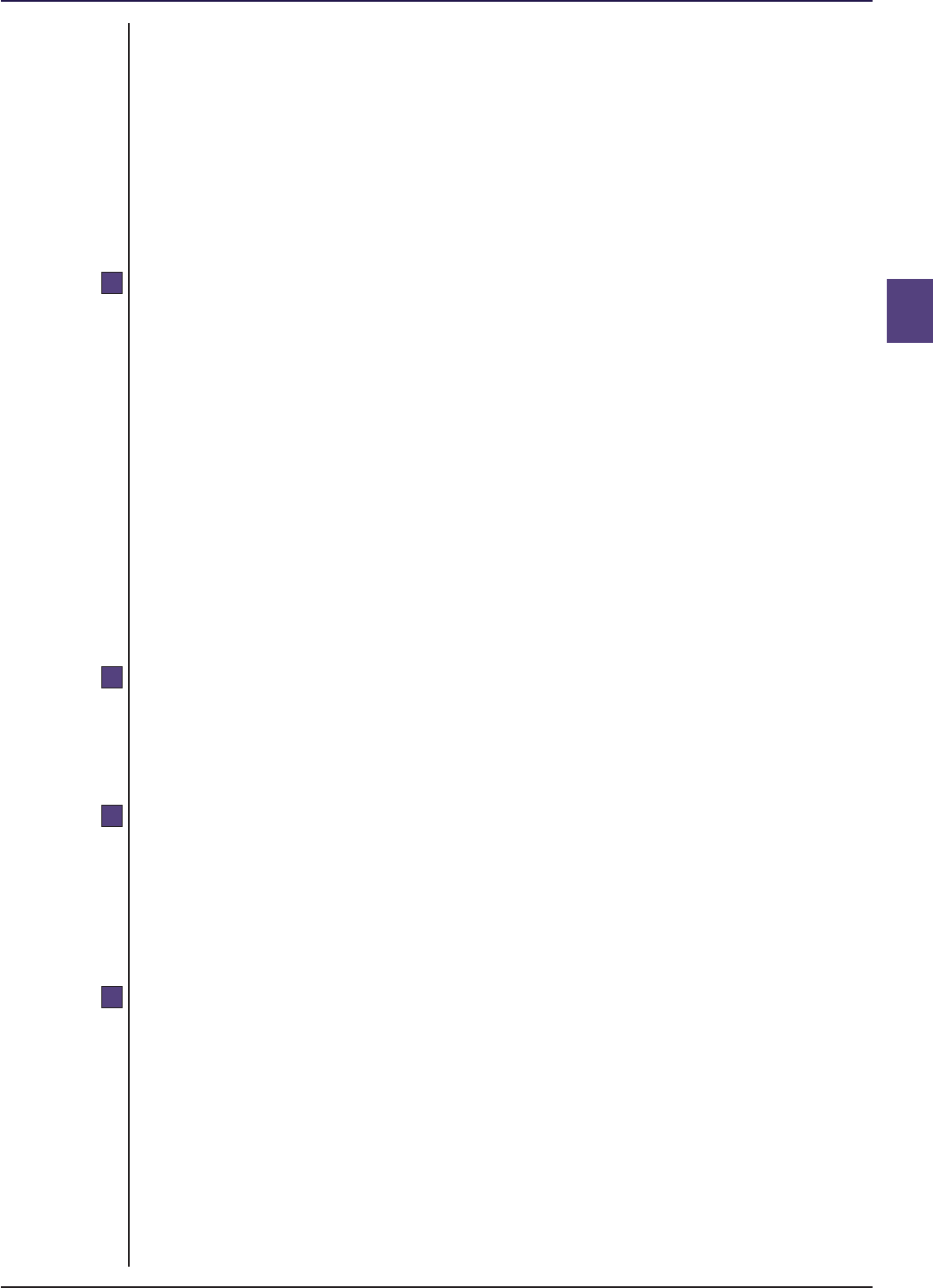
COLL 5 : Investment and Section 5.8 : Investment powers and
borrowing powers borrowing limits for feeder UCITS
5
R5.8.4
R5.8.5
R5.8.6
R5.8.7
■ Release 39 ● Aug 2024 www.handbook.fca.org.uk COLL 5/81
(2) derivatives and forward transactions which may be used only for the
purposes of hedging and in accordance with the rules set out at
■ COLL 5.8.7 R (Other provisions applicable to a feeder UCITS); and
(3) (for an ICVC) movable and immovable property which is essential for
the direct pursuit of the business.
[Note: article 58(2) first subparagraph of the UCITS Directive]
Exposure to derivatives
.....................................................................................................
In calculating the global exposure of a feeder UCITS to derivatives and
forward transactions in accordance with ■ COLL 5.3.3A R (Cover for investment
in derivatives and forward transactions), the feeder UCITS must combine its
own direct exposure under ■ COLL 5.8.3R (2) with either:
(1) the master UCITS' actual exposure to derivatives and forward
transactions in proportion to the feeder UCITS' investment into the
master UCITS; or
(2) the master UCITS' potential maximum global exposure to derivatives
and forward transactions provided for in the master UCITS'
instrument constituting the fund or its prospectus in proportion to
the feeder UCITS investment into the master UCITS.
[Note: article 58(2) second subparagraph of the UCITS Directive]
Prudent spread of risk
.....................................................................................................
An authorised fund manager must ensure that, to the extent that the feeder
UCITS invests in assets other than units of a master UCITS, the feeder UCITS
complies with ■ COLL 5.2.3 R (1) (Prudent spread of risk).
Investment powers: general
.....................................................................................................
The scheme property of a feeder UCITS must be invested only in accordance
with the relevant provisions in this section and up to any maximum limit so
stated, but the instrument constituting the fund may restrict the investment
and borrowing powers of a scheme further than the relevant restrictions in
this section.
Other provisions applicable to a feeder UCITS
.....................................................................................................
The following rules and guidance in ■ COLL 5.1 (Introduction), ■ COLL 5.2
(General investment powers and limits for UCITS schemes) and
■ COLL 5.5 (Cash, borrowing, lending and other provisions) apply to the
authorised fund manager of a UCITS scheme which is a feeder UCITS and to
an ICVC which is a feeder UCITS:
(1) ■ COLL 5.1.1 R (Application), ■ COLL 5.1.2G (1) (Purpose) and
■ COLL 5.1.3 R (Treatment of obligations);
(2) ■ COLL 5.2.1 R (Application), ■ COLL 5.2.2 R (Table of application) and
■ COLL 5.2.2A G;
(3) ■ COLL 5.2.5 R (Valuation) and ■ COLL 5.2.6 G (Valuation guidance);

COLL 5 : Investment and Section 5.8 : Investment powers and
borrowing powers borrowing limits for feeder UCITS
5
■ Release 39 ● Aug 2024www.handbook.fca.org.ukCOLL 5/82
(4) ■ COLL 5.2.10 R (Eligible markets: requirements);
(5) ■ COLL 5.2.11R (7) (Spread: general);
(6) ■ COLL 5.2.11B R (Counterparty risk and issuer concentration);
(7) ■ COLL 5.2.15R (1) (Investment in associated collective investment
schemes);
(8) ■ COLL 5.2.19 R (1), ■ COLL 5.2.19 R (2) and ■ COLL 5.2.19R (4) (Derivatives:
general);
(9) ■ COLL 5.2.20 R (Permitted transactions (derivatives and forwards));
(10) ■ COLL 5.2.20A R (Financial indices underlying derivatives),
■ COLL 5.2.20BG (1) and ■ COLL 5.2.20BG (4) (Guidance on financial
indices underlying derivatives);
(11) ■ COLL 5.2.21 R (Transactions for the purchase of property);
(12) ■ COLL 5.2.22 R (Requirement to cover sales) and ■ COLL 5.2.22A G
(Guidance on requirement to cover sales);
(13) ■ COLL 5.2.23 R (OTC Transactions in derivatives), ■ COLL 5.2.23A R and
■ COLL 5.2.23B R);
(14) ■ COLL 5.2.23C R (Valuation of OTC derivatives);
(15) ■ COLL 5.2.26 R (Investment in deposits);
(16) ■ COLL 5.5.1 R to ■ COLL 5.5.7A G (Cash, borrowing, lending and other
provisions); and
(17) ■ COLL 5.5.9 R (Guarantees and indemnities) and ■ COLL 5.5.10 G
(Guidance on restricting payments).

Collective Investment Schemes
Chapter 6
Operating duties and
responsibilities
■ Release 39 ● Aug 2024 www.handbook.fca.org.uk COLL 6/1

COLL 6 : Operating duties and Section 6.1
responsibilities
6
R6.1.1
G6.1.2
G6.1.3
■ Release 39 ● Aug 2024www.handbook.fca.org.ukCOLL 6/2
6.1 Introduction and Application
Application
.....................................................................................................
This chapter applies to:
(1) an authorised fund manager of an AUT, ACS or an ICVC;
(2) any other director of an ICVC;
(3) a depositary of an AUT, ACS or an ICVC; and
(4) an ICVC,
where such AUT, ACS or ICVC is a UCITS scheme or a non-UCITS retail scheme.
Purpose
.....................................................................................................
This chapter helps in achieving the statutory objective of protecting
consumers. It provides the operating framework within which the authorised
fund must be operated on a day-to-day basis to ensure that clients are
treated fairly when they become, remain or as they cease to be unitholders.
Explanation of this chapter
.....................................................................................................
(1) The authorised fund manager operates the scheme on a day-to-day
basis. Its operation is determined by the rules in this chapter, which
require appropriate powers in the instrument constituting the fund or
refer to the need to state the relevant operating procedures in the
prospectus of the scheme.
(2) (a) The authorised fund manager does not necessarily have to carry
out all the activities it is responsible for and may delegate
functions to other persons.
(b) The rules in this chapter set out the parameters of such
delegation, except in relation to a non-UCITS retail scheme
managed by a full-scope UK AIFM, where this chapter
supplements ■ FUND 3.10 (Delegation).
(3) The depositary's duty is, generally speaking, to ensure the safe
custody of scheme property and to oversee certain functions of the
authorised fund manager (most notably the pricing and dealing
function and investment powers). The oversight responsibilities for a
trustee of an AUT are similar to, but not the same as, the oversight
responsibilities of the depositary of an ICVC or ACS. These differences
result from the different legal structure of the authorised funds and
the trustee's obligations under trust law.

COLL 6 : Operating duties and Section 6.2
responsibilities
6
R6.2.1
G6.2.2
R6.2.3
■ Release 39 ● Aug 2024 www.handbook.fca.org.uk COLL 6/3
6.2 Dealing
Application
.....................................................................................................
() This section applies to an authorised fund manager, a depositary, an
ICVC and any other director of an ICVC.
Purpose
.....................................................................................................
(1) This section helps in achieving the statutory objective of securing an
appropriate degree of protection for consumers. In accordance with
Principle 6, this section is also concerned with ensuring the authorised
fund manager pays due regard to its clients' interests and treats them
fairly.
(2) An authorised fund manager of an AUT, ACS or ICVC is responsible
for arranging for the issue and the cancellation of units for the
authorised fund. An authorised fund manager of an AUT, ICVC or co-
ownership scheme is permitted to sell and redeem units for its own
account. An authorised fund manager of a limited partnership
scheme is only permitted to sell and redeem units as agent for the
scheme. The rules in this section are intended to ensure that the
authorised fund manager treats the authorised fund fairly when
arranging for the issue or cancellation of units, and treats clients
fairly when they purchase or sell units.
(3) This section also sets out common standards for how the amounts in
relation to unit transactions are to be paid. These arrangements
include the initial offer of units, the exchange of units for scheme
property and issues and cancellations of units by an ICVC, or by the
depositary of an AUT or ACS, carried out directly with the unitholder.
(4) This section also sets out rules and guidance relating to the
authorised fund manager's controls over the issue and cancellation of
units including any box holdings.
(5) The requirements in this section are to be applied separately to each
sub-fund of a scheme which is an umbrella, and, if appropriate, the
currency of a sub-fund may be used instead of the base currency of
the umbrella.
Initial offers
.....................................................................................................
(1) During the initial offer period, units may only be issued at the initial
price.

COLL 6 : Operating duties and Section 6.2
responsibilities
6
G6.2.4
R6.2.5
R6.2.6
■ Release 39 ● Aug 2024www.handbook.fca.org.ukCOLL 6/4
(2) The length of any initial offer should not be unreasonable when
considered alongside the characteristics of the authorised fund.
(3) The authorised fund manager must, as soon as practicable after
receiving the initial price from the purchaser and no later than the
fourth business day following the end of the initial offer, pay the
depositary in respect of any unit it has agreed to sell during the
period of the initial offer:
(a) in the case of a single-priced authorised fund, the initial price of
that unit; or
(b) in the case of a dual-priced authorised fund, the initial price of
that unit less, where relevant, an amount not exceeding the
amount of any preliminary charge stated in the prospectus.
(4) The period of the initial offer comes to an end if the authorised fund
manager reasonably believes the price that would reflect the current
value of the scheme property would vary by more than 2% from the
initial price.
Initial offer: guidance
.....................................................................................................
(1) Details of any initial offer period must be provided in the relevant
prospectus as described in ■ COLL 4.2.5R (17)(h) (Table: contents of the
prospectus).
(2) It may be appropriate that the initial offer for a scheme operating
limited issue or limited redemption arrangements, or intending to
invest in illiquid assets, is longer than one for a scheme which does
not have these features.
Issue and cancellation of units by an ICVC
.....................................................................................................
(1) Units in an ICVC are issued or cancelled by the ACD making a record
of the issue or cancellation and of the number of the units of each
class concerned, and cannot be issued or cancelled in any other
manner, unless ■ COLL 3.2.6R (11) (Table: contents of the instrument
constituting the fund) applies.
(2) The time of the issue or cancellation under (1) is the time when the
record is made.
Issue and cancellation of units in an AUT or ACS
.....................................................................................................
(1) The depositary must issue or cancel units in an AUT or ACS when
instructed by the authorised fund manager.
(2) Any instructions given by the authorised fund managermust state, for
each class of unit to be issued or cancelled, the number to be issued
or cancelled, expressed either as a number of units or as an amount
in value (or as a combination of the two).
(3) If the depositary is of the opinion that it is not in the interests of
unitholders that any units should be issued or cancelled or that to do
so would not be in accordance with the trust deed, contractual
scheme deed or prospectus, it must notify the authorised fund

COLL 6 : Operating duties and Section 6.2
responsibilities
6
R6.2.6A
R6.2.7
R6.2.8
■ Release 39 ● Aug 2024 www.handbook.fca.org.uk COLL 6/5
manager of that fact and it is then relieved of the obligation to issue
or cancel those units.
Issue and cancellation of units in multiple classes
.....................................................................................................
If an authorised fund has two or more classes of unit in issue, the authorised
fund manager may treat any or all of those classes as one for the purpose of
determining the number of units to be issued or cancelled by reference to a
particular valuation point, if:
(1) the depositary gives its prior agreement; and
(2) the relevant classes:
(a) have the same entitlement to participate in, and the same
liability for charges, expenses and other payments that may be
recovered from, the scheme property; or
(b) differ only as to whether income is distributed or accumulated by
periodic credit to capital, provided the price of the units in each
class is calculated by reference to undivided shares in the scheme
property.
Issue and cancellation of units through an authorised fund
manager
.....................................................................................................
(1) The authorised fund manager may require, on agreement with the
depositary, or may permit, on the request of the investor, direct issues
and cancellations of units by an ICVC or by the depositary of an AUT
or ACS.
(2) If (1) applies:
(a) the instrument constituting the fund must provide for this; and
(b) the prospectus must provide details of the procedure to be
followed which must be consistent with the rules in this section.
Controls over the issue and cancellation of units
.....................................................................................................
(1) An authorised fund manager must ensure that at each valuation
point there are at least as many units in issue of any class as there are
units registered to unitholders for that class.
(2) An authorised fund manager must not:
(a) for an AUT or ACS, when giving instructions to the depositary for
the issue or cancellation of units; or
(b) for an ICVC, when arranging for the issue or cancellation of units;
do, or omit to do, anything that would, or might, confer on itself or
an associate a benefit or advantage at the expense of a unitholder or
a potential unitholder.
(3) For the purpose of (1), the authorised fund manager may take into
account instructions to redeem units at the following valuation point
received before any time agreed with the depositary for such
purpose.

COLL 6 : Operating duties and Section 6.2
responsibilities
6
G6.2.9
R6.2.10
R6.2.11
■ Release 39 ● Aug 2024www.handbook.fca.org.ukCOLL 6/6
Controls over the issue and cancellation of units - guidance
.....................................................................................................
(1) As the authorised fund manager normally controls the issue,
cancellation, sale and redemption of an authorised fund's units, it
occupies a position that could, without appropriate systems and
controls, involve a conflict of interest between itself and its clients.
(2) ■ SYSC 3.1.1 R (Systems and controls) requires that a firm take
reasonable care to establish and maintain such systems and controls
as are appropriate to its business and Principle 8 requires a firm to
manage conflicts of interest between itself and a customer fairly.
(3) To manage the conflict of interest that arises, when an authorised
fund manager gives an instruction to issue or cancel units, the price
of the units should be calculated at the valuation pointbefore or after
the instruction has been given, in accordance with (4).
(4) An authorised fund manager should agree a period of time with the
depositary during which it will give instructions to issue or cancel
units. Where the authorised fund manager operates a box with the
principal aim of making a profit, this period will be short (for
example, two hours); otherwise a longer period (for example, up to
the next valuation point but in all cases within 24 hours) may be
acceptable, provided the principles in (2) are followed.
(5) The last valuation point should be used for the pricing of units where
instructions are given before the expiry of the period of time agreed
in (4); otherwise the next valuation point should be used.
(6) Where an in specie issue or cancellation occurs it should be
undertaken using the next valuation point's price.
Modification to number of units issued or cancelled
.....................................................................................................
(1) Any instruction for the issue or cancellation of units under
■ COLL 6.2.5 R (Issue and cancellation of units by an ICVC) or
■ COLL 6.2.6 R (Issue and cancellation of units in an AUT or ACS) may
be modified but only if the depositary agrees and has taken
reasonable care to determine that:
(a) the modification corrects an error in the instruction; and
(b) the error is an isolated one.
(2) Any error in (1) must be corrected within the payment period
applicable under ■ COLL 6.2.13 R (Payment for units issued) or
■ COLL 6.2.14 R (Payment for cancelled units).
Compensation for box management errors
.....................................................................................................
(1) Where the authorised fund manager has not complied with
■ COLL 6.2.8 R (1) (Controls over the issue and cancellation of units), it
must correct the error as soon as possible and must reimburse the
authorised fund any costs it may have incurred in correcting the
position.
(2) The authorised fund manager need not reimburse the authorised
fund when:

COLL 6 : Operating duties and Section 6.2
responsibilities
6
G6.2.12
■ Release 39 ● Aug 2024 www.handbook.fca.org.uk COLL 6/7
(a) the amount under (1) is not, in the depositary's opinion, material
to the authorised fund;
(b) the authorised fund manager can demonstrate that it has
effective controls in place over box management, including all of
the areas that affect the figures which are included in the box
management calculations; and
(c) the requirements of ■ COLL 6.2.10 R (Modification to number of
units issued or cancelled) are complied with.
Box management errors guidance
.....................................................................................................
Explanatory table: This table belongs to ■ COLL 6.2.2 G (4) (Purpose).
Correction of box management errors
1 Controls by authorised fund managers
An authorised fund manager needs to be able to demonstrate that it
has effective controls over:
(1) its calculations of what units are owned by it (its 'box'); and
(2) compliance with COLL 6.2.8 R which is intended to prevent a
negative box.
2 Controls by depositaries
(1) Under COLL 6.6.4 (General duties of the depositary), a deposit-
ary should take reasonable care to ensure that a scheme is
managed in accordance with COLL 6.2 (Dealing) and COLL 6.3
(Pricing and valuation).
(2) A depositary should therefore make a regular assessment of
the authorised fund manager's box management procedures
(including supporting systems) and controls. This should in-
clude reviewing the authorised fund manager's controls and
procedures when the depositary assumes office, on any signi-
ficant change and on a regular basis, to ensure that a series
of otherwise minor changes do not have a cumulative and a
significant effect on the accuracy of the controls and
procedures.
3 Recording and reporting of box management errors
(1) An authorised fund manager should record all errors which
result in a breach of COLL 6.2.8 R (Controls over the issue and
cancellation of units) and as soon as an error is discovered,
the authorised fund manager should report the fact to the
depositary, together with details of the action taken, or to
be taken, to avoid repetition of the error.
(2) A depositary should report material box management errors
to the FCA immediately. Materiality should be determined by
taking into account a number of factors including:
(a) the implications of the error for the sufficiency of con-
trols put into place by the authorised fund manager;
(b) the significance of any breakdown in the authorised
fund manager's management controls or other checking
procedures;
(c) the significance of any failure of systems or back-up ar-
rangements;
(d) the duration of an error; and
(e) the level of compensation due to the scheme, and an
authorised fund manager's ability (or otherwise) to meet
claims for compensation in full.

COLL 6 : Operating duties and Section 6.2
responsibilities
6
R6.2.13
R6.2.14
■ Release 39 ● Aug 2024www.handbook.fca.org.ukCOLL 6/8
(3) A depositary should also make a return to the FCA (in the
manner prescribed by SUP 16.6.8 R) on a quarterly basis.
Payment for units issued
.....................................................................................................
(1) The authorised fund manager must, by the close of business on the
fourth business day following the issue of any units, arrange for
payment to the depositary of an AUT or ACS or the ICVC of:
(a) in the case of a single-priced authorised fund, the price of the
units and any payments required under ■ COLL 6.3.8 R (Dilution);
(b) in the case of a dual-priced authorised fund, the issue price of the
units; or
(c) in the case of a regulated money market fund, the sum required
pursuant to article 33 of the Money Market Funds Regulation.
(2) The authorised fund manager must make the payment referred to in
(1) in cash or cleared funds unless ■ COLL 6.2.15 R (In specie issue and
cancellation) applies.
(3) Where the authorised fund manager has not complied with (1), it
must reimburse the authorised fund for any lost interest unless the
amount involved is not, in the depositary's opinion, material to the
authorised fund.
Payment for cancelled units
.....................................................................................................
(1) On cancelling units the authorised fund manager must, before the
expiry of the fourth business day following the cancellation of the
units or, if later, as soon as practicable after delivery to the depositary
of the AUT or ACS or the ICVC of such evidence of title to the units as
it may reasonably require, require the depositary to pay:
(a) in the case of a single-priced authorised fund, the price of the
units (less any deduction required under ■ COLL 6.3.8 R);
(b) in the case of a dual-priced authorised fund, the cancellation
price of the units; or
(c) in the case of a regulated money market fund, the sum required
pursuant to article 33 of the Money Market Funds Regulation,
in accordance with (1A).
(1A) The depositary must pay the amount in (1):
(a) to the authorised fund manager;
(b) where relevant, to the unitholder;
(c) for a relevant pension scheme, in accordance with the relevant
provisions of the trust deed or contractual scheme deed; or
(d) where the amount relates to an eligible CIS amount that is a
dormant asset arising from the conversion of units (see section
9(3)(a) of the Dormant Assets Act 2022), either:
(i) to the authorised fund manager (for onward payment to a
dormant asset fund operator); or
(ii) where relevant, to the dormant asset fund operator.

COLL 6 : Operating duties and Section 6.2
responsibilities
6
R6.2.15
R6.2.16
■ Release 39 ● Aug 2024 www.handbook.fca.org.uk COLL 6/9
(2) If the authorised fund manager has not ensured that the scheme
property includes or will include sufficient cash in the appropriate
currency (or a sufficient facility to borrow without infringing any
restriction in ■ COLL 5 (Investment and borrowing powers)) within the
period in (1), that period is extended, for any relevant currency, until
the shortage is rectified.
(3) If (2) applies, the authorised fund manager must take reasonable
steps to rectify the currency shortage as quickly as possible.
(4) This rule does not apply where ■ COLL 6.2.15 R is in operation.
(5) Nothing in this section requires an ICVC, a depositary or an
authorised fund manager to part with money or to transfer scheme
property for a cancellation or redemption of units where any money
due on the earlier issue or sale of those units has not been received.
In specie issue and cancellation
.....................................................................................................
The depositary may take into or pay out of scheme property assets other
than cash as payment for the issue or cancellation of units but only if:
(1) it has taken reasonable care to ensure that the property concerned
would not be likely to result in any material prejudice to the interests
of unitholders; and
(2) the instrument constituting the fund so provides.
Sale and redemption
.....................................................................................................
(1) In accordance with ■ COLL 4.2.5R (17) (Table: contents of the
prospectus), the authorised fund manager must describe the
arrangements for the sale and redemption of units in the prospectus.
(2) The authorised fund manager must, at all times during the dealing
day, be willing to effect the sale of units in the authorised fund, in
accordance with the conditions in the instrument constituting the
fund and the prospectus unless:
(a) it has reasonable grounds to refuse such sale; or
(b) the issue of units is prevented under ■ COLL 6.2.18 R (Limited
issue).
(3) Subject to ■ COLL 6.2.19 R (Limited redemption) and ■ COLL 6.2.21 R
(Deferred redemption), the authorised fund manager must, at all
times during the dealing day, on request of any qualifying unitholder,
effect the redemption of units in accordance with the conditions in
the instrument constituting the fund and the prospectus unless it has
reasonable grounds to refuse such redemption.
(4) On agreeing to a redemption of units in (3), the authorised fund
manager must pay the unitholder the appropriate proceeds of
redemption within the period specified in (5) unless the authorised
fund manager has reasonable grounds for withholding all or any part
of the proceeds.

COLL 6 : Operating duties and Section 6.2
responsibilities
6
G6.2.17
■ Release 39 ● Aug 2024www.handbook.fca.org.ukCOLL 6/10
(5) Except where (5A) applies the period in (4) expires at the close of
business on the fourth business day following the later of:
(a) the valuation point at which the price for the redemption was
determined; or
(b) the time when the authorised fund manager has all the duly
executed instruments and authorisations to effect (or enable the
authorised fund manager to effect) the transfer of title to the
units.
(5A) Where a non-UCITS retail scheme operating as a FAIF operates limited
redemption arrangements, the period in (4) expires no later than the
expiry of a period of 185 days from the date of receipt and
acceptance of the instruction to redeem.
(6) Except where (7) applies, and subject to ■ COLL 6.2.21 R (Deferred
redemption), the authorised fund manager must sell or redeem units
at a price determined no later than the end of the business day
immediately following the receipt and acceptance of an instruction to
do so, or at the next valuation point for the purposes of dealing in
units if later.
(7) Where the authorised fund operates limited redemption
arrangements, the authorised fund manager must sell or redeem
units at a price determined no later than the expiry of a period of
185 days from the date of the receipt and acceptance of the
instruction to sell or redeem.
(8) [deleted]
(9) [deleted]
(10) Paragraphs (4), (5) and ■ COLL 6.3.5AR (2) (Sale and redemption prices
for single-priced authorised funds) do not apply where the authorised
fund manager of an AUT or ICVC is buying units as principal on an
investment exchange (for an AUT in accordance with a power in the
trust deed) and settlement will be made in accordance with the rules
of that exchange.
(11) Paragraph (4) does not apply where ■ COLL 6.2.17AR (Transfers under
the Dormant Assets Act 2022) applies.
Sale and redemption: guidance
.....................................................................................................
(1) The prospectus of an authorised fund may allow the authorised fund
manager to identify a point in time in advance of a valuation point (a
cut-off point) after which it will not accept instructions to sell or
redeem units at that valuation point. In order to protect customers'
interests, the cut-off point should be no earlier than the close of
business on the business day before the valuation point it relates to.
If there is more than one valuation point in a day the cut-off should
not be before any previous valuation point.
(2) Where the authorised fund operates limited redemption
arrangements, the cut-off point may reflect the expected length of
time required to undertake transactions in the underlying

COLL 6 : Operating duties and Section 6.2
responsibilities
6
R6.2.17A
R6.2.17B
G6.2.17C
■ Release 39 ● Aug 2024 www.handbook.fca.org.uk COLL 6/11
investments provided the 185 day limit in ■ COLL 6.2.16 R (7) (Sale and
redemption) is complied with.
(3) Where (1) applies, different cut-off points may be used to
differentiate between the methods of submitting instructions to sell
or redeem to the authorised fund manager but not to differentiate
between unitholders or potential unitholders.
(4) [deleted]
Transfers under the Dormant Assets Act 2022
.....................................................................................................
(1) This rule applies where the authorised fund manager or the
depositary of an authorised fund transfers to a dormant asset fund
operator a dormant asset that is:
(a) an amount owing by virtue of the conversion of one or more
units into a right to payment (see section 9(3)(a) of the Dormant
Assets Act 2022); or
(b) eligible redemption proceeds.
(2) Before a transfer in (1) can be effected, the authorised fund manager
must:
(a) take reasonable steps to reunite the relevant eligible CIS amounts
to be transferred with their owners (see section 23 of the
Dormant Assets Act 2022); and
(b) be satisfied that the eligible CIS amount is a dormant asset.
(3) Upon effecting a transfer in (1), the authorised fund manager (or,
where relevant, the depositary) must ensure that such records as are
specified in ■ COLL 6.6.6R(6) (Maintenance of records) are retained.
Conversion of units into a right to payment under the Dormant
Assets Act 2022
.....................................................................................................
(1) This rule applies where the authorised fund manager or the
depositary converts one or more units into a right to payment for
transfer to a dormant asset fund operator in accordance with
■ COLL 6.2.17AR and sections 8 to 10 of the Dormant Assets Act 2022
(2) On conversion of units into a right to payment the authorised fund
manager or the depositary must:
(a) effect a redemption of units; and
(b) transfer the eligible CIS amount to a dormant asset fund
operator.
(1) Section 10 of the Dormant Assets Act 2022 specifies when an eligible
CIS amount is dormant and may be transferred to a dormant asset
fund operator in accordance with the applicable provisions of the
dormant assets scheme established by that Act.

COLL 6 : Operating duties and Section 6.2
responsibilities
6
R6.2.18
R6.2.19
G6.2.20
R6.2.21
■ Release 39 ● Aug 2024www.handbook.fca.org.ukCOLL 6/12
(2) An eligible CIS amount that is a dormant asset should be transferred
to a dormant asset fund operator only as provided for in the
instrument constituting the fund and the prospectus.
(3) When taking reasonable steps to reunite owners with their eligible
CIS amounts under ■ COLL 6.2.17AR(2)(a), the authorised fund manager
should comply with any arrangements it has entered into with the
dormant asset fund operator (see section 23 of the Dormant Assets
Act 2021) and have regard to industry standards of good practice.
Limited issue
.....................................................................................................
(1) If an authorised fund limits the issue of any class of unit, the
prospectus of an authorised fund must provide for the circumstances
and conditions when units will be issued.
(2) Where (1) applies, the authorised fund manager may not provide for
the further issue of units unless, at the time of the issue, itis satisfied
on reasonable grounds that the proceeds of that subsequent issue can
be invested without compromising the scheme's investment objective
or materially prejudicing existing unitholders.
(3) Within a scheme, unit classes may operate different arrangements for
the issue of units provided there is no prejudice to the interests of
any unitholder.
Limited redemption
.....................................................................................................
(1) The instrument constituting the fund and the prospectus of a non-
UCITS retail scheme operating as a FAIF, or that invests substantially in
immovables or whose investment objective is to provide a specified
level of return, may provide for limited redemption arrangements
appropriate to its aims and objectives.
(2) Where (1) applies, the scheme must provide for sales and redemptions
at least once in every six months.
(3) Within a scheme, unit classes may operate different arrangements for
sales and redemptions of units provided there is no prejudice to the
interests of any unitholder.
(4) The scheme may provide for sales of units of any class to be executed
at a greater frequency than redemptions of units of the same class.
Limited redemption: guidance
.....................................................................................................
The conditions for limited redemption arrangements in ■ COLL 6.2.19 R should
be considered, for AUTs and ACSs as well as for ICVCs, in conjunction with
PERG 9 (Meaning of an open-ended investment company) and PERG 9.8 (The
investment condition: the 'expectation test' (section 236(3)(a) of the Act)).
Deferred redemption
.....................................................................................................
(1) Subject to (1A), (3), and (4), the instrument constituting the fund and
the prospectus of an authorised fund which has at least one valuation
point on each business day may permit deferral of redemptions at a

COLL 6 : Operating duties and Section 6.2
responsibilities
6
G6.2.22
R6.2.23
■ Release 39 ● Aug 2024 www.handbook.fca.org.uk COLL 6/13
valuation point to the next valuation point where the requested
redemptions exceed 10%, or some other reasonable proportion
disclosed in the prospectus, of the authorised fund's value.
(1A) Subject to (3) the instrument constituting the fund and the
prospectus of a non-UCITS retail scheme operating as a FAIF may
permit deferral of redemptions at a valuation point to a following
valuation point where the requested redemptions exceed 10%, or
some other reasonable proportion disclosed in the prospectus, of the
authorised fund's value.
(2) Any deferral of redemptions under (1) or (1A) must be undertaken in
accordance with the procedures explained in the prospectus which
must ensure:
(a) the consistent treatment of all unitholders who have sought to
redeem units at any valuation point at which redemptionsare
deferred; and
(b) that all deals relating to an earlier valuation point are completed
before those relating to a later valuation point are considered.
(3) Any deferral under (1A) is subject to the limitations on payments to
unitholders in ■ COLL 6.2.16 R (5A).
(4) Any deferral under (1) in relation to an authorised fund that is a
regulated money market fund must be consistent with the Money
Market Funds Regulation, where relevant.
Deferred redemption: guidance
.....................................................................................................
(1) In times of high levels of redemption, deferred redemption will
enable the authorised fund manager to protect the interests of
continuing unitholders by allowing it to match the sale of scheme
property to the level of redemptions. This should reduce the impact
of dilution on the scheme.
(2) Article 34 of the Money Market Funds Regulation provides for
deferred redemption in relation to certain kinds of regulated money
market funds in particular circumstances.
Property Authorised Investment Funds
.....................................................................................................
(1) The authorised fund manager of a property authorised investment
fund must take reasonable steps to ensure that no body corporate
holds more than 10% of the net asset value of that fund (the
"maximum allowable").
(1A) For the purposes of (1), a body corporate shall not be treated as
holding more than the maximum allowable to the extent that:
(a) the body corporate holds units in a unit trust scheme which holds
shares in the property authorised investment fund; and
(b) in their capacity as trustees of the unit trust scheme, the trustees
are chargeable in the United Kingdom either to income tax or to
corporation tax.

COLL 6 : Operating duties and Section 6.2
responsibilities
6
G6.2.24
■ Release 39 ● Aug 2024www.handbook.fca.org.ukCOLL 6/14
(2) Where the authorised fund manager of a property authorised
investment fund becomes aware that a body corporate holds more
than the maximum allowable, he must:
(a) notify the body corporate of that event;
(b) not pay any income distribution to the body corporate; and
(c) redeem or cancel the body corporate's holding down to the
maximum allowable within a reasonable time-frame.
(3) For the purpose of (2)(c), a reasonable time-frame means the time-
frame which the authorised fund manager reasonably considers to be
appropriate having regard to the interests of the unitholders as a
whole.
Reasonable steps to monitor the maximum allowable include:
(1) regularly reviewing the register; and
(2) taking reasonable steps to ensure that unitholders are kept informed
of the requirement that no body corporate may hold more than 10%
of the net asset value of a property authorised investment fund.

COLL 6 : Operating duties and Section 6.3
responsibilities
6
R6.3.1
G6.3.2
■ Release 39 ● Aug 2024 www.handbook.fca.org.uk COLL 6/15
6.3 Valuation and pricing
Application
.....................................................................................................
(1) Subject to (3) and (4), this section applies to an authorised fund
manager, a depositary, an ICVC and any other director of an ICVC.
(2) [deleted]
(3) The following rules and guidance do not apply to an authorised fund
manager, a depositary, an ICVC, or any other director of an ICVC
where the authorised fund is a regulated money market fund:
(a) ■ COLL 6.3.3R;
(b) ■ COLL 6.3.3DR;
(c) ■ COLL 6.3.4R(1) and (3) to (6D);
(d) ■ COLL 6.3.5R; and
(e) ■ COLL 6.3.5AR to ■ COLL 6.3.5CG.
(4) Where an authorised fund is a regulated money market fund,
■ COLL 6.3.6G applies to the authorised fund manager and depositary
of that authorised fund to the extent it is consistent with the
requirements of the Money Market Funds Regulation.
Purpose
.....................................................................................................
(1) In accordance with Principle 6, this section is intended to ensure that
the authorised fund manager pays due regard to its clients' interests
and treats them fairly.
(2) An authorised fund manager is responsible for valuing the scheme
property of the authorised fund it manages and for calculating the
price of units in the authorised fund. This section protects clients by:
(a) setting out rules and guidance to ensure the prices of units in
both a single-priced authorised fund and a dual-priced authorised
fund are calculated fairly and regularly;
(b) allowing the authorised fund manager to mitigate the effects of
any dilution (reduction) in the value of the scheme property
caused by buying and selling underlying investments as a result
of the issue or cancellation of units; and
(c) [deleted]
(d) ensuring that prices are made public in an appropriate manner.

COLL 6 : Operating duties and Section 6.3
responsibilities
6
R6.3.3
R6.3.3A
R6.3.3B
G6.3.3C
■ Release 39 ● Aug 2024www.handbook.fca.org.ukCOLL 6/16
(3) The requirements in this section are to be applied separately to each
sub-fund of a scheme which is an umbrella, and, if appropriate, the
currency of a sub-fund may be used instead of the base currency of
the umbrella. Consequently different methods of pricing units may be
applied by an authorised fund manager to different sub-funds of an
umbrella.
(4) The authorised fund manager must follow the same method of
pricing for each class of units in an authorised fund, or in a sub-fund
of an umbrella.
(5) A full-scope UK AIFM that is the authorised fund manager of a non-
UCITS retail scheme should comply with the requirements of:
(a) ■ FUND 3.9 (Valuation); and
(b) this chapter.
Valuation
.....................................................................................................
(1) To determine the price of units the authorised fund manager must
carry out a fair and accurate valuation of all the scheme property in
accordance with the instrument constituting the fund and the
prospectus.
(2) For a dual-priced authorised fund, each valuation of the scheme
property must consist of two parts, carried out on an issue basis and a
cancellation basis respectively.
Accounting procedures
.....................................................................................................
(1) An authorised fund manager of a UCITS scheme must ensure the
employment of the accounting policies and procedures referred to in
■ SYSC 4.1.9 R (Accounting policies), so as to ensure the protection of
unitholders.
(2) Accounting for the scheme shall be carried out in such a way that all
assets and liabilities of the scheme can be directly identified at all
times.
(3) If the scheme is an umbrella, separate accounts must be maintained
for each sub-fund.
[Note: article 8(1) of the UCITS implementing Directive]
An authorised fund manager of a UCITS scheme must have accounting
policies and procedures established, implemented and maintained, in
accordance with the accounting rules of the United Kingdom, so as to ensure
that the calculation of the net asset value of each scheme it manages is
accurately effected, on the basis of the accounting, and that subscription and
redemption orders can be properly executed at that net asset value.
[Note: article 8(2) of the UCITS implementing Directive]
(1) The accounting policies and procedures referred to in ■ COLL 6.3.3B R
should enable the authorised fund manager of a UCITS scheme to

COLL 6 : Operating duties and Section 6.3
responsibilities
6
R6.3.3D
R6.3.3E
R6.3.4
■ Release 39 ● Aug 2024 www.handbook.fca.org.uk COLL 6/17
value the scheme property accurately at each valuation point and to
calculate dealing prices by reference to that valuation.
(2) Where different share or unit classes exist, it should be possible to
extract from the accounting records the net asset value of each
different class.
[Note: recital (9) of the UCITS implementing Directive]
An authorised fund manager of a UCITS scheme must establish appropriate
procedures to ensure the proper and accurate valuation of the assets and
liabilities of each scheme it manages.
[Note: article 8(3) of the UCITS implementing Directive]
Valuation of an immovable
.....................................................................................................
An authorised fund manager may only agree a fair and reasonable price for
an immovable to reflect a rapid sale if the prospectus states that it may do
so, in accordance with ■ COLL 4.2.5R(3)(pa)(ii).
Valuation points
.....................................................................................................
(1) An authorised fund must not have fewer than two regular valuation
points in any month and if there are only two valuation points in any
month, the regular valuation points must be at least two weeks
apart.
(2) The prospectus of a scheme must contain information about its
regular valuation points for the purposes of dealing in units in
accordance with ■ COLL 4.2.5R (16) (Table: contents of the prospectus).
(3) Where a scheme operates limited redemption arrangements, (1) does
not apply and the valuation points must be stated in the prospectus
but must not be set more than six months apart.
(4) Where a scheme operates limited redemption arrangements, it must
be valued and prices published in the manner set out in
■ COLL 6.3.11 R (Publication of prices) at least once in every month.
(5) In (4), a valuation point for the purpose of publishing prices only,
does not make it a valuation point for the purpose of (2) unless it is
disclosed as such in the prospectus.
(6) Higher volatility funds must have at least one valuation point every
business day except where the scheme is a non-UCITS retail scheme
operating as a FAIF.
(6A) Qualifying money market funds must have at least one valuation
point every business day at which the valuation is carried out on an
amortised cost basis.
(6B) [deleted]
(6C) [deleted]

COLL 6 : Operating duties and Section 6.3
responsibilities
6
R6.3.5
R6.3.5A
R6.3.5B
■ Release 39 ● Aug 2024www.handbook.fca.org.ukCOLL 6/18
(6D) [deleted]
(7) No valuation points are required during the period of any initial
offer.
(8) The authorised fund manager may determine to have an additional
valuation point for an authorised fund, in which case itmust inform
the depositary.
Price of a unit
.....................................................................................................
(1) An authorised fund manager must ensure that the price of a unit of
any class is calculated:
(a) by reference to the net value of the scheme property; and
(b) in accordance with the provisions of both the instrument
constituting the fund and the prospectus.
(2) Any unit price calculated in accordance with (1) must be expressed in
a form that is accurate to at least four significant figures.
(3) For each class of units in a single-priced authorised fund, a single
price must be calculated at which units are to be issued and
cancelled.
Sale and redemption prices for single-priced authorised funds
.....................................................................................................
The authorised fund manager of a single-priced authorised fund must not:
(1) sell a unit for more than the price of a unit of the relevant class at
the relevant valuation point, to which may be added any preliminary
charge permitted and any payment made under ■ COLL 6.3.8 R; or
(2) redeem a unit for less than the price of a unit of the relevant class at
the relevant valuation point, less any redemption charge permitted
and any deduction under ■ COLL 6.3.8 R.
Sale and redemption price parameters for dual-priced
authorised funds
.....................................................................................................
(1) The authorised fund manager of a dual-priced authorised fund must
not:
(a) sell a unit for more than the maximum sale price of a unit of the
relevant class at the relevant valuation point; or
(b) redeem a unit for less than the cancellation price of a unit of the
relevant class at the relevant valuation point, less any redemption
charge permitted.
(2) The maximum sale price of units under (1)(a) is the total of:
(a) the issue price; and
(b) the current preliminary charge.
(3) The sale price of units under (1)(a) must not be less than the relevant
redemption price under (1)(b).

COLL 6 : Operating duties and Section 6.3
responsibilities
6
G6.3.5C
R6.3.5D
■ Release 39 ● Aug 2024 www.handbook.fca.org.uk COLL 6/19
(4) The redemption price under (1)(b) must not exceed the relevant issue
price of the relevant units.
(5) Subject to ■ COLL 6.7.9 R (Charges for the exchange of units in an
umbrella), in the case of an umbrella:
(a) the maximum price at which units in one sub-fund that is a dual-
priced authorised fund may be acquired in exchange for units in
another sub-fund must not exceed the relevant maximum sale
price (less any preliminary charge) of the new units; and
(b) the minimum price at which the old units in a sub-fund that is a
dual-priced authorised fund may be taken in exchange must not
be less than the equivalent cancellation price.
The prospectus may make provision for large deals to be carried out at a
higher sale price or a lower redemption price than those published, provided
they do not exceed the relevant maximum and minimum parameters.
Profits from dealing as principal
.....................................................................................................
(1) Where an authorised fund manager (AFM):
(a) accepts instructions to sell and redeem units as principal; and
(b) is able to execute a sale instruction by selling units it has
redeemed at the same valuation point, without placing its own
capital at risk,
subject to (2), the AFM must not retain for its own account, or the
account of any of its associates, the difference between the price at
which a unit was redeemed (before deduction of any redemption
charge) and the price at which the same unit was sold (after
deduction of any preliminary charge). Any such difference must be
allocated in a way that is fair to unitholders.
(2) In calculating the profit arising under (1), the AFM may offset any loss
it incurs at the same valuation point, calculated in accordance with (3)
below, when dealing as principal in relation to:
(a) a unit issued at that valuation point to fulfil a sale instruction
that cannot be matched against any redeemed unit or any other
unit of that class held by the manager as principal; and
(b) a unit redeemed and cancelled at that valuation point.
(3) The amount of the loss referred to in (2) is:
(a) for units issued in accordance with (2)(a), the difference between
the issue price of a unit and the sale price of that unit, less any
preliminary charge;
(b) for units cancelled in accordance with (2)(b), the difference
between the cancellation price of a unit and the redemption
price of that unit, before any redemption charge is applied.
(4) Where any loss arising under (2) is greater than any profit arising
under (1), that loss cannot be offset against any profit arising at a
subsequent valuation point.

COLL 6 : Operating duties and Section 6.3
responsibilities
6
G6.3.5E
G6.3.6
■ Release 39 ● Aug 2024www.handbook.fca.org.ukCOLL 6/20
(5) This rule applies to the redemption and sale of units of different
classes at the same valuation point, if those classes are treated as one
for the purpose of ■ COLL 6.2.6AR.
(1) The authorised fund manager may commit its own capital to hold
units for the purpose of dealing as principal and may seek to profit
from gains in the value of the units it holds, when it issues or
redeems units at one valuation point then sells or cancels them at a
later valuation point. However, it should not profit from situations in
which it is not exposed to an equal risk of loss if the units fall in
value, or from the ability to match simultaneous sales and
redemptions at different prices at no risk to its own capital.
(2) The AFM may allocate any amount arising under ■ COLL 6.3.5DR(1) in
the interests of investors by paying it into scheme property for the
benefit of all unitholders. Alternatively, the AFM may redistribute it
individually among the transacting investors.
(3) Where the AFM intends to allocate a payment to scheme property, it
should determine if the amount (when added to any other amounts
of the same kind relating to that class of units) would, if taken into
account in the scheme’s valuation, affect the accuracy of the unit
prices to four significant figures. If so, and subject to (4) below, the
amount should be accrued in each subsequent valuation of the
scheme until the payment is transferred. Such payments into scheme
property should be made regularly and no less frequently than
payments for the AFM’s management charge are transferred out of
scheme property.
(4) The calculation to be performed under ■ COLL 6.3.5DR should be
carried out in relation to each valuation point of the scheme on a
timely basis. Where it is not practical to do this before unit prices are
calculated and published, the AFM should ensure that the accrual
represents a reasonable estimate of the total payment it intends to
make to scheme property.
Valuation and pricing guidance
.....................................................................................................
Table: This table belongs to ■ COLL 6.3.2 G (2) (a) and ■ COLL 6.3.3 R (Valuation).
Valuation and pricing
1 The valuation of scheme property
(1) Where possible, investments should be valued using a
reputable source. The reliability of the source of prices
should be kept under regular review.
(2) For some or all of the investments comprising the
scheme property, different prices may quoted accord-
ing to whether they are being bought (offer prices) or
sold (bid prices). The valuation of a single-priced au-
thorised fund should reflect the mid-market value of
such investments. In the case of a dual-priced au-
thorised fund, the issue basis of the valuation will be
carried out by reference to the offer prices of invest-
ments and the cancellation basis by reference to the
bid prices of those same investments. The prospectus
should explain how investments will be valued for

COLL 6 : Operating duties and Section 6.3
responsibilities
6
■ Release 39 ● Aug 2024 www.handbook.fca.org.uk COLL 6/21
which a single price is quoted for both buying and
selling.
(2A) Schemes investing in approved money-market instru-
mentsshould value such instruments on an amortised
cost basis on condition that:
(a) the approved money-market instrument has a resid-
ual maturity of less than three months and has no spe-
cific sensitivity to market parameters, including credit
risk; or
(b) the scheme is a qualifying money market fund.
[Note: CESR's UCITS eligible assets guidelines with respect to article
4(2) of the UCITS eligible assets Directive]
(2B) [deleted]
(3) Any part of the scheme property of an authorised
fund that is not an investment should be valued at a
fair value, but for immovables this is subject to COLL
5.6.20 R (3) (f) (Standing independent valuer and
valuation).
(4) For the purposes of (2) and (3), any fiscal charges, com-
missions, professional fees or other charges that were
paid, or would be payable on acquiring or disposing of
the investment or other part of the scheme property
should, in the case of a single-priced authorised fund,
be excluded from the value of an investment or other
part of the scheme property. In the case of a dual-
priced authorised fund, any such payments should be
added to the issue basis of the valuation, or subtracted
from the cancellation basis of the valuation, as appro-
priate. Alternatively, the prospectus of a dual-priced
authorised fund may prescribe any other method of
calculating unit prices that ensures an equivalent treat-
ment of the effect of these payments.
(5) Where the authorised fund manager has reasonable
grounds to believe that:
(a) no reliable price exists for a security at a valuation
point; or
(b) the most recent price available does not reflect the
authorised fund manager's best estimate of the value
of a security at the valuation point
it should value an investment at a price which, in its
opinion, reflects a fair and reasonable price for that in-
vestment (the fair value price);
(6) The circumstances which may give rise to a fair value
price being used include:
(a) no recent trade in the security concerned; or
(b) the occurrence of a significant event since the most
recent closure of the market where the price of the se-
curity is taken.
In (b), a significant event is one that means the most
recent price of a security or a basket of securities is ma-
terially different to the price that it is reasonably be-
lieved would exist at the valuation point had the relev-
ant market been open.
(7) In determining whether to use such a fair value price ,
the authorised fund manager should include in his con-
sideration:
(a) the type of authorised fund concerned;
(b) the securities involved;

COLL 6 : Operating duties and Section 6.3
responsibilities
6
■ Release 39 ● Aug 2024www.handbook.fca.org.ukCOLL 6/22
(c) the basis and reliability of the alternative price
used; and
(d) the authorised fund manager's policy on the valu-
ation of scheme property as disclosed in the
prospectus.
(7A) Where the authorised fund manager, the depositary or
the standing independent valuer have reasonable
grounds to believe that the most recent valuation of
an immovable does not reflect the current value of
that immovable, then, unless COLL 6.3.6G(1)(7B) applies,
the authorised fund manager should consult and
agree with the standing independent valuer a fair and
reasonable value for the immovable.
(7B) Where the authorised fund manager decides that an
immovable must be sold quickly to meet redemption
requests as they fall due, it should consult and agree
with the standing independent valuer a fair and reas-
onable price for the immovable to reflect a rapid sale,
to extent that the prospectus states that it may do so.
(8) The authorised fund manager should document the ba-
sis of valuation (including any fair value pricing policy)
and, where appropriate, the basis of any methodology
and ensure that the procedures are applied consist-
ently and fairly.
(9) Where a unit price is determined using properly ap-
plied fair value prices in accordance with policies in (8),
subsequent information that indicates the price should
have been different from that calculated will not norm-
ally give rise to an instance of incorrect pricing.
2 The pricing controls of the authorised fund manager
(1) An authorised fund manager needs to be able to dem-
onstrate that it has effective controls over its calcula-
tions of unit prices.
(2) The controls referred to in (1) should ensure that:
(a) asset prices are accurate and up to date;
(b) investment transactions are accurately and
promptly reflected in valuations;
(c) the components of the valuation (including stock,
cash, and units in issue), are regularly reconciled to
their source or prime records and any reconciling items
resolved promptly and debtors reviewed for re-
coverability;
(d) the sources of prices not obtained from the main
pricing source are recorded and regularly reviewed;
(e) compliance with the investment and borrowing
powers is regularly reviewed;
(f) dividends are accounted for as soon as securities
are quoted ex-dividend (unless it is prudent to account
for them on receipt):
(g) fixed interest dividends, interest and expenses are
accrued at each valuation point;
(h) tax positions are regularly reviewed and adjusted, if
necessary;
(i) reasonable tolerances are set for movements in the
key elements of a valuation and movements outside
these tolerances are investigated;
(j) the fund manager regularly reviews the portfolio
valuation for accuracy; and

COLL 6 : Operating duties and Section 6.3
responsibilities
6
■ Release 39 ● Aug 2024 www.handbook.fca.org.uk COLL 6/23
(k) the valuation of OTC derivatives is accurate and up
to date and in compliance with the methods agreed
with the depositary.
(3) In exercising its pricing controls, the authorised fund
manager may exercise reasonable discretion in deter-
mining the appropriate frequency of the operation of
the controls and may choose a longer interval, if appro-
priate, given the level of activity on the authorised
fundor the materiality of any effect on the price.
(4) Evidence of the exercise of the pricing controls should
be retained.
(5) Evidence of persistent or repetitive errors in relation to
these matters, and in particular any evidence of a pat-
tern of errors working in an authorised fund man-
ager's favour, will make demonstrating effective con-
trols more difficult.
(6) Where the pricingfunction is delegated to a third
party, COLL 6.6.15 R (1) (Committees and delegation) will
apply.
3 The depositary's review of the authorised fund manager's systems
and controls
(1) This section provides details of the types of checks a de-
positary should carry out to be satisfied that the au-
thorised fund manager adopts systems and controls
which are appropriate to ensure that prices of units
are calculated in accordance with this section and to
ensure that the likelihood of incorrect prices will be
minimised. These checks also apply where an au-
thorised fund manager has delegated all or some of its
pricing functions to one or more third parties.
(2) A depositary should thoroughly review an authorised
fund manager's systems and controls to confirm that
they are satisfactory. The depositary's review should in-
clude an analysis of the controls in place to determine
the extent to which reliance can be placed on them.
(3) A review should be performed when the depositary is
appointed and thereafter as it feels appropriate given
its knowledge of the robustness and the stability of
the systems and controls and their operation.
(4) A review should be carried out more frequently where
a depositary knows or suspects that an authorised
fund manager's systems and controls are weak or are
otherwise unsatisfactory.
(5) Additionally, a depositary should from time to time re-
view other aspects of the valuation of the scheme
property of each authorised fund for which it is re-
sponsible, verifying, on a sample basis, if necessary, the
assets, liabilities, accruals, units in issue, securities
prices (and in particular the prices of OTC derivatives,u-
napproved securities and the basis for the valuation of
unquoted securities) and any other relevant matters,
for example an accumulation factor or a currency con-
version factor.
(6) A depositary should ensure that any issues, which are
identified in any such review, are properly followed up
and resolved.
4 The recording and reporting of instances of incorrect pricing

COLL 6 : Operating duties and Section 6.3
responsibilities
6
■ Release 39 ● Aug 2024www.handbook.fca.org.ukCOLL 6/24
(1) An authorised fund manager should record each in-
stance where the price of a unit is incorrect as soon as
the error is discovered, and report the fact to the de-
positary together with details of the action taken, or
to be taken, to avoid repetition as soon as practicable.
(2) In accordance with COLL 6.6.11 G (Duty to inform the
FCA), the depositary should report any breach of the
rules in COLL 6.3 immediately to the FCA. However, noti-
fication should relate to instances which the deposit-
ary considers material only.
(3) A depositary should also report to the FCA immedi-
ately any instance of incorrect pricingwhere the error
is 0.5% or more of the price of a unit, where a deposit-
ary believes that reimbursement or payment is inappro-
priate and should not be paid by an authorised fund
manager.
(4) In accordance with SUP 16.6.8 R, a depositary should
also make a return to the FCA on a quarterly basis
which summarises the number of instances of incorrect
pricing during a particular period.
5 The rectification of pricing breaches
(1) COLL 6.6.3R(3)(c) (Functions of the authorised fund man-
ager) places a duty on the authorised fund manager to
take action to reimburse affected unitholders, former
unitholders, and the scheme itself, for instances of in-
correct pricing, except if it appears to the depositary
that the breach is of minimal significance.
(2) A depositary may consider that the instance of incor-
rect pricingis of minimal significance if:
(a) the authorised fund manager and depositary meet
the standards of control set out in Section 2 and Sec-
tion 3 of this Table; and
(b) the error in pricing of a unit is less than 0.5% of
the correct price.
(3) In determining (2), if the instance of incorrect pricing
is due to one or more factors or exists over a period of
time, each price should be considered separately.
(4) If a depositary deems it appropriate, it may, in spite of
the circumstances outlined in (2), require a payment
from the authorised fund manager or from the au-
thorised fund to the unitholders, former unitholders,
the authorised fund or the authorised fund manager
(where appropriate).
(5) The depositary should satisfy itself that any payments
required following an instance of incorrect pricing are
accurately and promptly calculated and paid.
(6) If a depositary considers that reimbursement or pay-
ment is inappropriate, it should report the matter to
the FCA, together with its recommendation and justi-
fication. The depositary should take into account the
need to avoid prejudice to the rights of unitholders, or
the rights of unitholders in a class of units.
(7) It may not be practicable, or in some cases legally per-
missible, for the authorised fund manager to obtain re-
imbursement from unitholders, where the unitholders
have benefited from the incorrect price.

COLL 6 : Operating duties and Section 6.3
responsibilities
6
R6.3.7
R6.3.8
R6.3.9
■ Release 39 ● Aug 2024 www.handbook.fca.org.uk COLL 6/25
(8) In all cases where reimbursement or payment is re-
quired, amounts due to be reimbursed to unitholders
for individual sums which are reasonably considered by
the authorised fund manager and depositary to be im-
material, need not normally be paid.
[deleted]
Dilution
.....................................................................................................
(1) Subject to (1A), when arranging to sell, redeem, issue or cancel units,
or when units are issued or cancelled under ■ COLL 6.2.7 R (1) (Issues
and cancellations through an authorised fund manager), an
authorised fund manager is permitted to:
(a) require the payment of a dilution levy; or
(b) make a dilution adjustment; or
(c) neither require a dilution levy nor make a dilution adjustment;
in accordance with its statements in the prospectus required by
■ COLL 4.2.5R (18) (Table: contents of the prospectus).
(1A) When arranging to sell, redeem, issue or cancel units, or when units
are issued or cancelled under ■ COLL 6.2.7R(1) (Issues and cancellations
through an authorised fund manager), an authorised fund manager
of a regulated money market fund may only require payment of a
dilution levy or make a dilution adjustment to the extent it is
permissible under the Money Market Funds Regulation.
(2) An authorised fund manager operating either a dilution levy or a
dilution adjustment, must operate that measure in a fair manner to
reduce dilution and solely for that purpose.
(3) A dilution levy becomes due at the same time as payment or transfer
of property becomes due for the issue, sale, redemption or
cancellation and any such payment in respect of a dilution levy must
be paid to the depositary to become part of scheme property as soon
as practicable after receipt.
(4) A dilution adjustment may be made as part of the calculation of the
unit price for the purpose of reducing dilution in the scheme or to
recover any amount which it had already paid or reasonably expects
to pay in the future in relation to the issue or cancellation of units.
(5) Where the authorised fund manager decides to make or not to make
a dilution adjustment, it must not do so for the purpose of creating a
profit or avoiding a loss for the account of an affected person.
(6) As soon as practicable after a valuation point, the authorised fund
manager must provide the depositary with the amount or rate of any
dilution adjustment made to the price or any dilution levy applied.
Forward pricing
.....................................................................................................
(1) Subject to (7), for the sale and redemption of units, all deals must be
at a forward price.

COLL 6 : Operating duties and Section 6.3
responsibilities
6
G6.3.10
R6.3.11
G6.3.12
R6.3.13
■ Release 39 ● Aug 2024www.handbook.fca.org.ukCOLL 6/26
(2) [deleted]
(3) [deleted]
(4) [deleted]
(5) [deleted]
(6) [deleted]
(7) Deals for the sale and redemption of units in a regulated money
market fund need not be at a forward price where the circumstances
in article 34(2) of the Money Market Funds Regulation apply.
[deleted]
Publication of prices
.....................................................................................................
Where the authorised fund manager is prepared to deal in units, or is willing
to issue or cancel units, under ■ COLL 6.2.7, it must make the dealingprices
public in an appropriate manner.
Manner of price publication
.....................................................................................................
(1) In determining the appropriate manner of making prices public, the
authorised fund manager should ensure that:
(a) a unitholder or potential unitholder can obtain the prices at a
reasonable cost;
(b) prices are available at reasonable times;
(c) publication is consistent with the manner and frequency at which
the units are dealt in;
(d) the manner of publication is disclosed in the prospectus; and
(e) prices are published in a consistent manner.
(2) Examples of what might be deemed appropriate include:
(a) publication in a national newspaper;
(b) supply through an advertised local rate or freephone telephone
number;
(c) publication on the internet;
(d) inclusion in a database of prices which is publicly available; or
(e) communication to all existing unitholders.
(3) The authorised fund manager should make previous prices available
to any unitholder or potential unitholder.
Maintaining the value of a qualifying money market fund
.....................................................................................................
The authorised fund manager of a qualifying money market fund valuing
scheme property on an amortised cost basis must:

COLL 6 : Operating duties and Section 6.3
responsibilities
6
G6.3.14
■ Release 39 ● Aug 2024 www.handbook.fca.org.uk COLL 6/27
(1) carry out a valuation of the scheme property on a mark to market
basis at least once every week and at the same valuation point used
to value the scheme property on an amortised cost basis; and
(2) ensure that the value of the scheme property when valued on a mark
to market basis does not differ by more than 0.5% from the value of
the scheme property when valued on an amortised cost basis.
The authorised fund manager should advise the depositary when the mark
to market value of a qualifying money market fund valuing scheme property
on an amortised cost basis varies from its amortised cost value by 0.1%, 0.2%
and 0.3% respectively. The authorised fund manager of a qualifying money
market fund should agree procedures with the depositary designed to
stabilise the value of the scheme in these events.

COLL 6 : Operating duties and Section 6.4
responsibilities
6
R6.4.1
G6.4.2
G6.4.3
■ Release 39 ● Aug 2024www.handbook.fca.org.ukCOLL 6/28
6.4 Title and registers
Application
.....................................................................................................
(1) This section applies to an authorised fund manager and a depositary
of an AUT or ACS.
(2) ■ COLL 6.4.9 (Plan registers) also applies to the ACD, any other director
and the depositary of an ICVC.
Purpose
.....................................................................................................
The aim of this section is to protect consumers, by setting out the
requirements for a register of unitholders for an AUT or ACS and for a plan
register for an authorised fund, so a proper record of ownership of units is
maintained, whether held directly or indirectly through a group plan.
Explanation of this section
.....................................................................................................
(1) (a) This section deals with matters relating to the register of
unitholders of units in an AUT or ACS including its establishment
and contents.
(b) The authorised fund manager or depositary may be responsible
for the register.
(c) In any event, the person responsible for the register must be
stated in the trust deed or contractual scheme deed and this
section details what his duties are.
(d) The provisions relating to documents evidencing title to units are
dependent on the provisions in the trust deed or contractual
scheme deed and their operation should be set out in the
prospectus.
(2) For an ICVC, requirements as to the register of holders and transfer of
units are contained in Schedule 3 of the OEIC Regulations (Register of
shareholders).
(3) ■ COLL 6.4.9 makes provision to ensure that if the cost of the plan
register is borne by the scheme, plan investors have the same rights in
respect of notice and disclosure as unitholders on the main register.

COLL 6 : Operating duties and Section 6.4
responsibilities
6
R6.4.4
■ Release 39 ● Aug 2024 www.handbook.fca.org.uk COLL 6/29
Register: general requirements and contents
.....................................................................................................
(1) Either:
(a) the manager or the trustee (as nominated in the trust deed); or
(b) the authorised contractual scheme manager or the depositary of
the ACS (as nominated in the contractual scheme deed);
must establish and maintain a register of unitholders as a document
in accordance with this section.
(2) The manager or trustee or the authorised fund manager or
depositary in accordance with their duties under (1) must exercise all
due diligence and take all reasonable steps to ensure the information
contained on the register is at all times complete and up to date.
(3) The register must contain:
(a) the name and address of each unitholder (for joint unitholders,
no more than four need to be registered);
(b) the number of units of each class held by each unitholder;
(c) the date on which the unitholder was registered for units
standing in his name; and
(d) the number of units of each class currently in issue.
(4) No notice of any trust, express, implied or constructive which may be
entered in the register is binding on the manager or trustee or the
authorised fund manager or depositary, but this does not affect their
obligations under ■ COLL 6.4.9 R (1) (Plan registers).
(5) The register is conclusive evidence of the persons entitled to the units
entered in it.
(6) The person responsible for the register in (1) must:
(a) take reasonable steps to alter the register on receiving written
notice of a change of name or address of any unitholder;
(b) in relation to a change of name in (a) where a certificate has
been issued, either endorse the existing certificate or issue a new
one;
(c) make the register available for inspection free of charge in the
United Kingdom by or on behalf of any unitholder (including the
manager or authorised fund manager), during office hours;
(d) supply free of charge to any unitholder or his authorised
representative a copy of the entries on the register relating to
that unitholder on request;
(e) where a unitholder defaults on paying for the issue or sale of
units, make an alteration or deletion in the register to
compensate for the default after which the manager or
authorised fund manager becomes entitled to those units (until
those units are either cancelled or re-sold and paid for); and
(f) carry out any conversion of units allowed for by ■ COLL 6.4.8 R
(Conversion of units) after consultation with the manager or
trustee or the authorised fund manager or depositary, as
appropriate.

COLL 6 : Operating duties and Section 6.4
responsibilities
6
R6.4.5
R6.4.6
■ Release 39 ● Aug 2024www.handbook.fca.org.ukCOLL 6/30
The authorised fund manager as unitholder
.....................................................................................................
(1) Subject to (3), if no person is entered in the register as the unitholder
of a unit, the authorised fund manager must be treated as the
unitholder of each such unit which is in issue.
(2) Where units are transferred to the authorised fund manager, they
need not be cancelled and the authorised fund manager need not be
entered on the register as the new unitholder.
(3) In the case of a limited partnership scheme, unregistered units may
be held by the authorised contractual scheme manager as the agent
for the scheme provided the authorised contractual scheme manager
is not entered in the register as the new unitholder.
Transfer of units by act of parties: AUTs and ACSs
.....................................................................................................
(1) Every unitholder of an AUT is entitled to transfer units held on the
register by an instrument of transfer in any form that the person
responsible for the register may approve, but that person is under no
duty to accept a transfer unless it is permitted by the trust deed or
prospectus.
(1A) Provided:
(a) the requirements in ■ COLL 6.4.6A R (Transfer of units in an ACS)
are satisfied; and
(b) transfers of units are allowed by the contractual scheme deed
and prospectus in accordance with the conditions specified by
FCA rules;
every unitholder of an ACS is entitled to transfer units held on the
register by an instrument of transfer in any form that the person
responsible for the register may approve, but that person is under no
duty to accept a transfer unless it is permitted by the contractual
scheme deed and prospectus.
(2) Every instrument of transfer of units of an AUT or ACS must be
signed by, or on behalf of, the unitholder transferring the units (or,
for a body corporate, sealed by that body corporate or signed by one
of its officers (or in Scotland, two of its officers)) authorised to sign it
and, unless the transferee is the authorised fund manager, the
transferor must be treated as the unitholder until the name of the
transferee has been entered in the register.
(3) In the case of an AUT or ACS, every instrument of transfer (stamped
as necessary) must be left for registration, with the person responsible
for the register, accompanied by:
(a) any necessary documents that may be required by legislation; and
(b) any other evidence reasonably required by the person responsible
for the register.
(4) In the case of an AUT or ACS, the details of instruments of transfer
must be kept for a period of six years from the date of its
registration.

COLL 6 : Operating duties and Section 6.4
responsibilities
6
R6.4.6A
G6.4.6B
R6.4.7
R6.4.8
■ Release 39 ● Aug 2024 www.handbook.fca.org.uk COLL 6/31
(5) In the case of an AUT or ACS, on registration of an instrument of
transfer, a record of the transferor and the transferee and the date of
transfer must be made on the register.
Transfer of units in an ACS
.....................................................................................................
(1) Where transfer of units in an ACS is allowed by its contractual scheme
deed and prospectus in accordance with the conditions specified by
FCA rules, the authorised contractual scheme manager of the ACS
must take reasonable care to ensure that units are only transferred if
the conditions specified by the FCA under (2) are met.
(2) The FCA specifies that for the purposes of (1), and for the purposes of
■ COLL 3.2.6 R(27G) (ACSs: UCITS and NURS transfer of units) and
■ COLL 4.2.5 R(5B) (ACSs: UCITS and NURS transfer of units), units in an
ACS may only be transferred to a person that is a:
(a) professional ACS investor; or
(b) large ACS investor; or
(c) person who already holds units in the scheme.
The FCA recognises that some transfers of units arise by operation of law
(such as upon death or bankruptcy of the unitholder, or otherwise) and are
accordingly outside the control of the authorised contractual scheme
manager. The authorised contractual scheme manager is expected to comply
with its responsibilities under ■ COLL 6.6.3B R (Redemption of ACS units by an
authorised contractual scheme manager) in such cases by redeeming such
units.
Certificates
.....................................................................................................
(1) Following the sale of units or as a result of ■ COLL 6.4.6 R (Transfer of
units by act of parties: AUTs and ACSs) a document recording title to
those units may be issued in such a form as the trust deed or
contractual scheme deed permits.
(2) The person responsible for the register must issue any document in
(1) or provide relevant information in a timely manner where the
procedures for redeeming units require the unitholder to surrender
that document.
(3) [deleted]
(4) Bearer certificates may not be issued for AUTs or ACSs.
Conversion of units
.....................................................................................................
Where there is more than one class of units offered for issue or sale, the
unitholder has a right to convert from one to the other, provided that doing
so would not contravene any provision in the prospectus.

COLL 6 : Operating duties and Section 6.4
responsibilities
6
R6.4.9
■ Release 39 ● Aug 2024www.handbook.fca.org.ukCOLL 6/32
Plan registers
.....................................................................................................
(1) The ACD and any other directors of an ICVC or the person responsible
for the register of an AUT or an ACS may arrange for a plan register
to be established and maintained.
(2) Where payments are made out of scheme property to establish and
maintain a plan register, plan investors must be treated as unitholders
for the purposes of ■ COLL 4.3 to ■ COLL 4.5 and ■ COLL 6.4.4 R (Register:
general requirements and contents).

COLL 6 : Operating duties and Section 6.5 : Appointment and replacement
responsibilities of the authorised fund manager and the
depositary
6
R6.5.1
R6.5.2
G6.5.2A
R6.5.3
■ Release 39 ● Aug 2024 www.handbook.fca.org.uk COLL 6/33
6.5 Appointment and replacement of
the authorised fund manager and
the depositary
Application
.....................................................................................................
This section applies in accordance with ■ COLL 6.5.2 R (Table of application).
Table of application
This table belongs to ■ COLL 6.5.1 R.
Au-
thorised
Any fund
other manager Deposit-
director Deposit- of an ary of an
of an ary of an AUT or AUT or
Rule ICVC ACD ICVC ICVC ACS ACS
6.5.1R x x x x x x
6.5.3R x x x x
6.5.4R x x x
6.5.5R x x
6.5.6R x x
6.5.7R x x
6.5.8R x x
6.5.9R x x
6.5.10R x x x x
Note: "x" means "applies", but not every paragraph in every rule will
necessarily apply.
■ COLL 6.6A and ■ COLL 6.6B set out additional FCA rules and guidance
applicable to the authorised fund manager and depositary of a UCITS
scheme in relation to the appointment and duties of the depositary.
Appointment of an ACD
.....................................................................................................
(1) The directors (or director) of an ICVC must take all practicable steps
to ensure the ICVC has at all times as its ACD a person who is
qualified to act as ACD.

COLL 6 : Operating duties and Section 6.5 : Appointment and replacement
responsibilities of the authorised fund manager and the
depositary
6
R6.5.4
■ Release 39 ● Aug 2024www.handbook.fca.org.ukCOLL 6/34
(2) If the ICVC ceases to have any director, the depositary must exercise
its powers, under the OEIC Regulations, to appoint a person to be an
ACD of the ICVC.
(3) For an ICVC that holds annual general meetings under the OEIC
Regulations, the appointment of an ACD (other than the first ACD),
under (1) or (2), must terminate at the close of the next annual
general meeting following the date of the appointment or (if later)
upon the expiration of 12 months from the date the appointment
takes effect, unless the appointment has been approved by a
resolution of the unitholders before the close of that annual general
meeting or expiration of that 12 month period (as the case may be).
(4) An ACD must not voluntarily terminate its appointment as ACD unless
the termination is effective at the same time as the commencement
of the appointment of a successor ACD.
(5) (a) In the event of:
(i) any person becoming or ceasing to be a director;
(ii) the appointment of an ACD being terminated;
(iii) a new ACD being appointed; or
(iv) a corporate director (including the ACD) becoming aware of
any change of its controller;
the FCA must immediately be notified in accordance with (b).
(b) In the case of:
(i) (a)(i), by the ACD;
(ii) (a)(ii), by the ACD whose appointment is being terminated;
(iii) (a)(iii), by the new ACD; and
(iv) (a)(iv), by the corporate director concerned.
Termination of appointment of an ACD
.....................................................................................................
(1) The appointment of an ACD terminates immediately upon it ceasing
to be a director.
(2) The appointment of an ACD terminates if a notice of termination of
that appointment, the terms of which have been approved by a
resolution of the board of directors of the ICVC, is given to the ACD.
(3) If there is no director other than the ACD, the appointment of the
ACD terminates if a notice of termination of that appointment is
given by the depositary to the ACD and to the ICVC, following any of
the following events:
(a) the calling of a meeting to consider a resolution for winding up
the ACD;
(b) an application being made to dissolve the ACD or to strike it off
the Register of Companies;
(c) the presentation of a petition for the winding up of the ACD;
(d) the making of, or any proposals for the making of, a composition
or arrangement with any one or more of the ACD's creditors;

COLL 6 : Operating duties and Section 6.5 : Appointment and replacement
responsibilities of the authorised fund manager and the
depositary
6
R6.5.5
R6.5.6
R6.5.7
■ Release 39 ● Aug 2024 www.handbook.fca.org.uk COLL 6/35
(e) the appointment of a receiver to the ACD (whether an
administrative receiver or a receiver appointed over particular
property);
(f) anything equivalent to (a) to (e) above occurring in respect of the
ACD in a jurisdiction outside the United Kingdom.
(4) Any termination under (2) or (3) takes effect when the notice is given,
or on any subsequent time for its effect stated in the notice, or, if
later, the time at which the termination is permitted to take effect
under regulation 21 of the OEIC Regulations (The Authority's
approval for certain changes in respect of a company).
(5) The depositary must (unless the termination takes effect at the same
time as the appointment of a successor ACD) ensure that the
unitholders are informed of the termination of the appointment of
an ACD.
(6) The depositary is entitled to be reimbursed out of the scheme
property for its out of pocket expenses in complying with (5).
Other directors
.....................................................................................................
(1) Any directors of an ICVC other than the ACD must exercise reasonable
care to ensure that the ACD undertakes the responsibilities allocated
under ■ COLL 6.6.3 R (1) (Functions of the authorised fund manager) in
a competent manner and the ACD must give those directors the
information and explanations they consider necessary for this
purpose.
(2) A director of an ICVC must not appoint an alternate director.
(3) When there is no person acting as ACD, the directors of an ICVC have
the functions of an ACD under ■ COLL 6.6.3 R (1) , but this does not
affect the powers of the directors under ■ COLL 6.6.15 R (Committees
and delegation).
(4) When (3) applies, the directors must retain the services of one or
more authorised persons to assist them in performing the functions
referred to in ■ COLL 6.6.3 R (1) and ■ COLL 6.6.3 R (2) .
ICVC without a director
.....................................................................................................
If the ICVC ceases to have any directors, the depositary may:
(1) retain the services of an authorised person to carry out the functions
referred to in ■ COLL 6.6.3 R (3)(a) and (b); or
(2) manage the scheme property itself on behalf of the ICVC until a
director is appointed or the winding up of the ICVC is commenced
provided it is not prohibited from doing so by any law or rule.
Replacement of an authorised fund manager of an AUT or ACS
.....................................................................................................
(1) The authorised fund manager of an AUT or ACS is subject to removal
by written notice by the depositary upon any of the following events:

COLL 6 : Operating duties and Section 6.5 : Appointment and replacement
responsibilities of the authorised fund manager and the
depositary
6
R6.5.8
■ Release 39 ● Aug 2024www.handbook.fca.org.ukCOLL 6/36
(a) the calling of a meeting to consider a resolution for winding up
the authorised fund manager;
(b) an application being made to dissolve the authorised fund
manager or to strike it off the Register of Companies;
(c) the presentation of a petition for the winding up of the
authorised fund manager;
(d) the making of, or any proposals for the making of, a composition
or arrangement with any one or more of the authorised fund
manager's creditors;
(e) the appointment of a receiver to the authorised fund manager
(whether an administrative receiver or a receiver appointed over
particular property);
(f) anything equivalent to (a) to (e) above occurring in respect of the
authorised fund manager in a jurisdiction outside the United
Kingdom;
(g) the depositary forming the reasonable opinion, and stating in
writing, that a change of authorised fund manager is desirable in
the interest of unitholders;
(h) a resolution of unitholders being passed to remove the
authorised fund manager; or
(i) the unitholders of three quarters in value of all of the units then
in issue (excluding units held or treated as held by the authorised
fund manager or by any associate of the authorised fund
manager) making a request in writing to the depositary that the
authorised fund manager should be removed.
(2) On receipt of a notice by the depositary under (1), the authorised
fund manager of the AUT or ACS ceases to be the authorised fund
manager; and the depositary must by deed appoint another person
eligible under the Act to be the authorised fund manager of the AUT
or ACS upon and subject to that other entering into such deed or
deeds as the depositary may require.
(3) If the name of the AUT or ACS contains a reference to the name of
the former authorised fund manager, the former authorised fund
manager is entitled to require the new authorised fund manager and
the depositary immediately on receipt of a notice under (1) to
propose a change in the name of the AUT or ACS.
Retirement of an authorised fund manager of an AUT or ACS
.....................................................................................................
(1) The authorised fund manager of an AUT or ACS has the right to
retire in favour of another person eligible under the Act and
approved in writing by the depositary upon:
(a) the retiring authorised fund manager appointing that person by
deed as authorised fund manager in its place and assigning to
that person all its rights and duties as such a authorised fund
manager; and
(b) the new authorised fund manager entering into such deeds as
the depositary reasonably considers necessary or desirable to be
entered into by that person in order to secure the due

COLL 6 : Operating duties and Section 6.5 : Appointment and replacement
responsibilities of the authorised fund manager and the
depositary
6
R6.5.9
R6.5.10
■ Release 39 ● Aug 2024 www.handbook.fca.org.uk COLL 6/37
performance of its duties as the authorised fund manager of the
AUT or ACS.
(2) Upon retirement, the retiring authorised fund manager:
(a) subject to (3), is released from all further obligations under the
rules in this sourcebook and under the trust deed or contractual
scheme deed; and
(b) may retain any consideration paid to it in connection with the
change without having to account for it to any unitholder.
(3) Sub-paragraph (2)(a) does not affect the rights of the depositary or
any other person in respect of any act or omission on the part of the
retiring authorised fund manager before his retirement.
Consequences of removal or retirement of an authorised fund
manager of an AUT or ACS
.....................................................................................................
(1) Upon the removal or retirement of the authorised fund manager, the
removed or retiring authorised fund manager of an AUT or ACS:
(a) is entitled to be recorded in the register for those units continued
to be held or treated as held by it as principal; and
(b) may require the depositary to issue to it a certificate for those
units (if not previously issued).
(2) Paragraph (1) is subject to any restriction in the prospectus relating to
the permitted categories of unitholders.
Retirement of the depositary
.....................................................................................................
(1) The depositary of an authorised fund may not retire voluntarily
except upon the appointment of a new depositary.
(2) The depositary of an authorised fund must not retire voluntarily
unless, before its retirement, it has ensured that the new depositary
has been informed of any circumstance of which the retiring
depositary has informed the FCA.
(3) When the depositary of an authorised fund wishes to retire or ceases
to be an authorised person, the authorised fund manager may,
subject to section 251 of the Act (Alteration of schemes and changes
of manager or trustee), section 261Q of the Act (Alteration of
contractual schemes and changes of operator or depositary) or
regulation 21 of the OEIC Regulations (The Authority's approval for
certain changes in respect of a company) appoint another person
eligible to be the depositary in its place.

COLL 6 : Operating duties and Section 6.6
responsibilities
6
R6.6.1
R6.6.2
■ Release 39 ● Aug 2024www.handbook.fca.org.ukCOLL 6/38
6.6 Powers and duties of the scheme,
the authorised fund manager, and
the depositary
Application
.....................................................................................................
Subject to (2), this section applies in accordance with ■ COLL 6.6.2 R
(Table of application).
Where a scheme is a regulated money market fund, ■ COLL 6.6.3R and
■ COLL 6.6.14R apply to the authorised fund manager and depositary
of that scheme to the extent the provisions are consistent with the
requirements of the Money Market Funds Regulation.
Table of application
.....................................................................................................
This table belongs to ■ COLL 6.6.1 R.
Au-
thorised
Any fund
other manager Deposit-
directors Deposit- of an ary of an
of an ary of an AUT or AUT or
Rule ICVC ACD ICVC ICVC ACS ACS
6.6.1R x x x x x x
6.6.3R x x x x x
6.6.3AR* x
6.6.3BR* x
6.6.3CR* x x
6.6.3DG* x x
6.6.3ER* x x
6.6.3FR* x x
6.6.4R x x
6.6.4BR* x x
6.6.4CR* x x
6.6.4DG* x x

COLL 6 : Operating duties and Section 6.6
responsibilities
6
■ Release 39 ● Aug 2024 www.handbook.fca.org.uk COLL 6/39
Au-
thorised
Any fund
other manager Deposit-
directors Deposit- of an ary of an
of an ary of an AUT or AUT or
Rule ICVC ACD ICVC ICVC ACS ACS
6.6.5R x x x x x
6.6.5AR* x x
6.6.5BG* x x
6.6.6R x x
6.6.7R x x
6.6.8R x x
6.6.9R x x
6.6.10R x x x x
6.6.11G x x
6.6.12R x x
6.6.13R x x x x x
6.6.14R x x x x
6.6.15R x x x x x
6.6.15AR* x x
6.6.16G x x x x
6.6.17R x x x x x
6.6.18G x x x x x
6.6.19R x x x
6.6.20R x x x
6.6.21R x x x
6.6.22G x x x
6.6.23E x x x
6.6.24G x x x
6.6.25R x x x
6.6.26G x x x
6.6.27R x x x
Notes: (1) “x” means “applies”, but not every paragraph in
every rule will necessarily apply.
(2) * COLL 6.6.3A Rand COLL 6.6.3B R only apply to au-
thorised contractual scheme managers of ACSs.
(3) * COLL 6.6.5A R and COLL 6.6.5B G only apply to ACDs
of ICVCs which are umbrellas and authorised contrac-
tual scheme managers of co-ownership schemes
which are umbrellas.
(4) * COLL 6.6.15A R has a special application as set out in
COLL 6.6.15AR (1).
(5) COLL 6.6.20R to COLL 6.6.27R have a special application
as set out in COLL 6.6.19R.
(6) *COLL 6.6.3CR, COLL 6.6.3DG, COLL 6.6.3ER and COLL
6.6.3FR apply only to the authorised fund manager of
a FIIA.

COLL 6 : Operating duties and Section 6.6
responsibilities
6
R6.6.3
■ Release 39 ● Aug 2024www.handbook.fca.org.ukCOLL 6/40
Au-
thorised
Any fund
other manager Deposit-
directors Deposit- of an ary of an
of an ary of an AUT or AUT or
Rule ICVC ACD ICVC ICVC ACS ACS
(7) *COLL 6.6.4BR, COLL 6.6.4CR, and COLL 6.6.4DG apply
only to the depositary of a FIIA.
Functions of the authorised fund manager
.....................................................................................................
(1) The authorised fund manager must manage the scheme in
accordance with:
(a) the instrument constituting the fund;
(b) the applicable rules;
(c) the most recently published prospectus;
(d) for an ICVC, the OEIC Regulations; and
(e) where applicable, the Money Market Funds Regulation.
(2) The authorised fund manager must take such steps as necessary to
ensure compliance with the rules that impose obligations upon the
ICVC.
(3) The authorised fund manager must:
(a) make decisions as to the constituents of the scheme property in
accordance with the investment objectives and policy of the
scheme;
(b) instruct the depositary in writing how rights attaching to the
ownership of the scheme property are to be exercised, but not
where ■ COLL 6.6.13 R (2) (Exercise of rights in respect of the
scheme property) applies; and
(c) take action immediately to rectify any breach of ■ COLL 6.3 and,
where the breach relates to the incorrect pricing of units or to
the late payment in respect of the issue of units, the rectification
must, (unless the depositary otherwise directs under (4)), extend
to the reimbursement or payment, or arranging the
reimbursement or payment, of money:
(i) by the authorised fund manager to unitholders and former
unitholders;
(ii) by the ACD to the ICVC;
(iii) by the ICVC to the ACD;
(iv) by the authorised fund manager to the depositary of the
AUT or ACS; or
(v) by the depositary (for the account of the AUT or ACS) to the
authorised fund manager.
(4) Rectification under (3)(c) need not, unless the depositary so directs,
extend to any such reimbursement or payment where it appears to
the depositary such breach, is of minimal significance.

COLL 6 : Operating duties and Section 6.6
responsibilities
6
R6.6.3A
R6.6.3B
R6.6.3C
■ Release 39 ● Aug 2024 www.handbook.fca.org.uk COLL 6/41
Functions of the authorised contractual scheme manager in
relation to ACS units
.....................................................................................................
(1) The authorised contractual scheme manager of an authorised
contractual scheme which is a UCITS scheme or a non-UCITS retail
scheme must take reasonable care to ensure that ownership of units
in the scheme is only recorded in the register for a:
(a) professional ACS investor; or
(b) large ACS investor; or
(c) person who already holds units in the scheme.
(2) The authorised contractual scheme manager of an authorised
contractual scheme must take reasonable care to ensure that rights or
interests in units in the scheme are not acquired by any person from
or through an intermediate unitholder, unless that person meets the
criteria within (1)(a) to (c).
(3) The authorised contractual scheme manager will be regarded as
complying with (1) and (2) to the extent that it can show that it was
reasonable for it to rely on relevant information provided by another
person.
Redemption of ACS units by an authorised contractual scheme
manager
.....................................................................................................
The authorised contractual scheme manager of an authorised contractual
scheme must redeem units in the scheme as soon as practicable after
becoming aware that those units are vested in anyone (whether as a result
of subscription or transfer of units) other than a person meeting the criteria
in ■ COLL 6.6.3AR (1)(a) to ■ (c).
Additional functions of an authorised fund manager of a FIIA
.....................................................................................................
The authorised fund manager of a FIIA must establish, implement and
maintain an adequate liquidity management contingency plan for
exceptional circumstances which sets out:
how the authorised fund manager will respond to a liquidity risk
crystallising;
the range of liquidity tools and arrangements which it may deploy in
such exceptional circumstances, any operational challenges associated
with the use of such tools and the likely consequences for investors;
the procedures for working with the depositary in the event the
authorised fund manager must deploy these tools and arrangements;
how the authorised fund manager will work with its delegates, such
as third-party administrators, and other relevant third parties
including intermediate unitholders, to:
(a) deploy the liquidity management tools and arrangements;
(b) communicate their use in a timely way to unitholders; and
(c) implement any other part of this contingency plan;

COLL 6 : Operating duties and Section 6.6
responsibilities
6
G6.6.3D
R6.6.3E
R6.6.3F
R6.6.4
■ Release 39 ● Aug 2024www.handbook.fca.org.ukCOLL 6/42
any operational challenges likely to arise from working with relevant
third parties identified at (4); and
communication arrangements for internal and external concerned
parties (including the FCA, investors and the media where necessary).
Compliance with ■ COLL 6.6.3CR may enable a full-scope UK AIFM that is an
authorised fund manager of a FIIA to meet some of its obligations under
article 47(1)(e) of the AIFMD level 2 regulation.
(1) The authorised fund manager of a FIIA must obtain written
confirmation from any relevant third party identified in the
contingency plan under ■ COLL 6.6.3CR(4) that the third party will be
able to undertake the matters specified in (2) as soon as is reasonably
practicable.
(2) The matters specified for the purpose of (1) are that the relevant
third party will, where necessary, be able to:
(a) deploy any liquidity management tools and arrangements on
which the authorised fund manager plans to rely as part of its
contingency plan;
(b) in a timely way, communicate the authorised fund manager’s use
of any such tools and arrangements to unitholders; and
(c) carry out any other part of the contingency plan which the
authorised fund manager has identified as requiring action by
that third party.
The authorised fund manager of a FIIA must provide the depositary on an
ongoing basis with all relevant information it needs to comply with its
obligations under ■ COLL 6.6.4BR.
General duties of the depositary
.....................................................................................................
(1) The depositary of an authorised fund must take reasonable care to
ensure that the scheme is managed by the authorised fund manager
in accordance with:
(a) ■ COLL 5 (Investment and borrowing powers);
(b) ■ COLL 6.2 (Dealing);
(c) ■ COLL 6.3 (Valuation and pricing);
(d) ■ COLL 6.8 (Income: accounting, allocation and distribution);
(e) any provision of the instrument constituting the fund or
prospectus that relates to the provisions referred to in (a) to (d);
and
(e) where applicable, the provisions of the Money Market Funds
Regulation relating to investment and borrowing powers,
dealing, valuation and pricing, and income.
(2) The depositary must, in so far as not required under (1)(c), take
reasonable care to ensure on a continuing basis that:

COLL 6 : Operating duties and Section 6.6
responsibilities
6
G6.6.4A
R6.6.4B
■ Release 39 ● Aug 2024 www.handbook.fca.org.uk COLL 6/43
(a) the authorised fund manager is adopting appropriate procedures
to ensure that the price of a unit is calculated for each valuation
point in accordance with ■ COLL 6.3 or, where applicable, the
Money Market Funds Regulation; and
(b) the authorised fund manager has maintained sufficient records to
show compliance with ■ COLL 6.3 .
(3) The depositary, when acting in its capacity as depositary, must act
solely in the interests of the unitholders.
(4) The depositary:
(a) must also take reasonable care to ensure that;
(i) the authorised fund manager considers whether or not to
exercise the power provided by ■ COLL 6.3.8 R (Dilution) and,
if applicable, the rate or amount of any dilution levy or
dilution adjustment that is imposed;
(ii) the authorised fund manager has in relation to (i), taken
account of all factors that are material and relevant to the
authorised fund manager's decision; and
(iii) when the authorised fund manager considers whether or not
to exercise the power under ■ COLL 6.3.8 R, the authorised
fund manager has acted in accordance with the restrictions
imposed by that rule; and
(b) has no duty in respect of the authorised fund manager's exercise
of the discretion referred to in (a).
(5) [deleted]
(6) [deleted]
(7) [deleted]
[deleted]
Specific duties of a depositary: oversight of the liquidity
management of a FIIA
.....................................................................................................
The depositary of a FIIA must:
(1) regularly make its own assessment of the liquidity profile of the FIIA
and the liquidity risks presented by the scheme property of a FIIA;
(2) take reasonable care to oversee the authorised fund manager’s
liquidity management systems and procedures on an ongoing basis,
using the assessment it has made under (1), to ensure the FIIA is
managed in accordance with the following COLL rules and, in the
case of a FIIA managed by a full-scope UK AIFM, the following FUND
rules and provisions in the AIFMD level 2 regulation:
(a) ■ COLL 4.2.5R(3)(pa);
(b) ■ COLL 6.6.3CR and ■ COLL 6.6.3ER;
(c) ■ FUND 3.2.2R(8);

COLL 6 : Operating duties and Section 6.6
responsibilities
6
R6.6.4C
G6.6.4D
R6.6.5
R6.6.5A
■ Release 39 ● Aug 2024www.handbook.fca.org.ukCOLL 6/44
(d) ■ FUND 3.2.5R;
(e) ■ FUND 3.6.3R;
(f) article 44(1) and (2)(c) of the AIFMD level 2 regulation;
(g) articles 46 to 49 of the AIFMD level 2 regulation; and
(h) article 108 of the AIFMD level 2 regulation; and
(3) establish an escalation procedure when instances of potential non-
compliance with the rules and provisions set out in paragraph (2) are
identified, the details of which must be made available to the FCA
upon request.
The depositary of a FIIA managed by a small authorised UK AIFM must not
delegate its functions under ■ COLL 6.6.4BR to one or more third parties,
except in relation to supporting administrative or technical tasks that are
linked to these functions.
Subject to certain specified exceptions, the depositary of a FIIA managed by
a full-scope UK AIFM is generally prohibited from delegating its functions
(see in particular, ■ FUND 3.11.26R (Delegation: general prohibition) and
■ FUND 3.11.28R (Delegation: safekeeping)).
Duties of the authorised fund manager and the depositary
under the general law
.....................................................................................................
(1) The duties and powers of the authorised fund manager, the directors
of an ICVC and the depositary under the rules in this sourcebook and
under the instrument constituting the fund are in addition to the
powers and duties under the general law.
(2) Paragraph (1) applies only in so far as the relevant general law is not
qualified by the rules in this sourcebook, the instrument constituting
the fund, the OEIC Regulations, or the Money Market Funds
Regulation.
Duties of the ACD of an ICVC or the authorised contractual
scheme manager of a co-ownership scheme: umbrella schemes
.....................................................................................................
Where reasonable grounds exist for an ACD of an ICVC or an authorised
contractual scheme manager of a co-ownership scheme which is an umbrella
to consider that a foreign law contract entered into by the ICVC or
authorised contractual scheme manager on behalf of the co-ownership
scheme may have become inconsistent with the principle of limited recourse
stated in the instrument constituting the fund of the ICVC or co-ownership
scheme (see ■ COLL 3.2.6 R (22A) (ICVCs: Umbrella schemes - principle of limited
recourse) and ■ COLL 3.2.6 R(22B) (Co-ownership schemes: Umbrella schemes -
principle of limited recourse)) the ACD or authorised contractual scheme
manager of the co-ownership scheme must:
(1) promptly investigate whether there is an inconsistency; and
(2) if the inconsistency still appears to exist, take appropriate steps to
remedy that inconsistency.

COLL 6 : Operating duties and Section 6.6
responsibilities
6
G6.6.5B
R6.6.6
■ Release 39 ● Aug 2024 www.handbook.fca.org.uk COLL 6/45
In deciding what steps are appropriate to remedy the inconsistency, the ACD
of an ICVC or the authorised contractual scheme manager of a co-ownership
scheme should have regard to the best interests of the unitholders.
Appropriate steps to remedy the inconsistency may include:
(1) where possible, renegotiating the foreign law contract in a way that
remedies the inconsistency; or
(2) causing the ICVC or the authorised contractual scheme manager on
behalf of the co-ownership scheme to exit the foreign law contract.
Maintenance of records
.....................................................................................................
(1) Subject to (5) and (6), the authorised fund manager must make and
retain for six years such records as enable:
(a) the scheme and the authorised fund manager to comply with the
rules in this sourcebook and the OEIC Regulations; and
(b) it to demonstrate at any time that such compliance has been
achieved.
(2) Subject to (5) and (6), the authorised fund manager must make and
retain for six years a daily record of the units in the scheme held,
acquired or disposed of by the authorised fund manager, including
the classes of such units, and of the balance of any acquisitions and
disposals.
(3) Where relevant, an authorised fund manager must make and retain
for a period of six years a daily record of:
(a) how it calculates and estimates dilution; and
(b) its policy and method for determining the amount of any dilution
levy or dilution adjustment.
(4) The authorised fund manager must on the request of the depositary
immediately supply it with such information concerning the
management and administration of the authorised fund as the
depositary may reasonably require.
(5) Where the authorised fund manager or the depositary transfers an
eligible CIS amount which is a dormant asset or unwanted asset
money to a dormant asset fund operator, the authorised fund
manager must retain the relevant records specified in (6) for a period
of six years from the date on which:
(a) (in relation to the transfer of a dormant asset) the person to
whom those records relate made a repayment claim; or
(b) (in relation to unwanted asset money) the person confirmed their
wish for the unwanted asset money to be transferred.
(6) (a) Whenever an eligible CIS amount is transferred to a dormant
asset fund operator, the records to be retained under (5) include:
(i) the full names of each relevant unitholder; and
(ii) the name of the scheme to which the converted units relate,
including, where the scheme is a sub-fund, the name of its
umbrella.

COLL 6 : Operating duties and Section 6.6
responsibilities
6
■ Release 39 ● Aug 2024www.handbook.fca.org.ukCOLL 6/46
(b) Where the eligible CIS amount falls within section 9(3)(a) of the
Dormant Assets Act 2022 (an amount owing by virtue of the
conversion of one or more units into a right to payment), the
records must also include:
(i) the number and class of units converted;
(ii) the date on which the units were converted and the price per
unit;
(iii) a record of any interest due, fees and charges that would
have been paid and any other adjustments (such as a dilution
levy) in respect of the converted units that would affect the
amount of a repayment claim; and
(iv) for the period beginning with the date of the conversion of
units and ending with the date on which a person establishes
a repayment claim in respect of the units:
(A) in the case of a class of units which pays income, a record
of the distribution rate per unit for each distribution of
income paid;
(B) in the case of any sub-division or consolidation of units,
or any mandatory conversion of units from one class to
another class of the same authorised fund or sub-fund, a
record of the basis of calculation for the action; and
(C) in the case of the cancellation of all units in the
authorised fund or sub-fund under a scheme of
arrangement by which new units are issued in another
authorised fund or sub-fund in exchange, a record of the
basis of calculation for the exchange.
(c) Where the transfer is of eligible redemption proceeds, an eligible
distribution of income or orphan monies, the records must
include:
(i) a note of whether the transfer relates to eligible redemption
proceeds, an eligible distribution of income or orphan
monies;
(ii) where the transfer is of eligible redemption proceeds, the
date on which the units were redeemed;
(iii) where the transfer is of an eligible distribution of income:
(A) the distribution date, and the number and class of units
to which the transfer relates; and
(B) the distribution rate per unit for each distribution paid;
(iv) the value of the relevant eligible CIS amount transferred; and
(v) a record of the interest due, fees and charges that would
have been paid and any other adjustments that would affect
the amount of the repayment claim in respect of the
transferred eligible CIS amount.
(d) Where the transfer is of unwanted asset money, the records must
include:
(i) a note that the transfer relates to unwanted asset money;
(ii) the value of the unwanted asset money transferred;

COLL 6 : Operating duties and Section 6.6
responsibilities
6
R6.6.7
R6.6.8
R6.6.9
R6.6.10
■ Release 39 ● Aug 2024 www.handbook.fca.org.uk COLL 6/47
(iii) details of the unitholder’s confirmation that they wish the
unwanted asset money to be transferred to a dormant asset
fund operator; and
(iv) details of the declaration required by section 21(2)(a)(ii) of
the Dormant Assets Act 2022.
Maintenance of capital: notification
.....................................................................................................
The ACD must immediately notify the FCA in writing if the ICVC's capital falls
below the minimum or exceeds the maximum stated in the instrument of
incorporation.
Auditor: AUTs or ACSs
.....................................................................................................
(1) The authorised fund manager of an AUT or ACS must, upon any
vacancy for the position of auditor for an AUT or ACS, with the
approval of the depositary, appoint as auditor for the AUT or ACS a
person qualified for appointment as auditor of an authorised person.
(2) The audit fees of the auditor are determined by the authorised fund
manager with the approval of the depositary.
(3) The authorised fund manager of an AUT or ACS may, with the
approval of the depositary, at any time, remove the auditor of an
AUT or ACS; this power exists notwithstanding anything in any
agreement between the persons concerned.
Returns: AUTs
.....................................................................................................
The manager of an AUT must prepare and supply to the trustee the returns
required to be submitted by the trustee to HM Revenue and Customs.
Dealings in scheme property
.....................................................................................................
(1) The authorised fund manager may give instructions to deal in the
property of the scheme.
(2) The authorised fund manager must obtain the consent of the
depositary for the acquisition or disposal of immovable property.
(3) Where the depositary is of the opinion that a deal in property is not
within the rules in this sourcebook and the instrument constituting
the fund, the depositary may require the authorised fund manager to
cancel the transaction or make a corresponding disposal or acquisition
to secure restoration of the previous situation and to meet any
resulting loss or expense.
(4) Where the depositary is of the opinion that:
(a) an acquisition of property necessarily involves documents
evidencing title being kept in the custody of a person other than
the depositary; and
(b) the depositary cannot reasonably be expected to accept the
responsibility which would otherwise be placed upon it if it were
to permit custody by that other person;

COLL 6 : Operating duties and Section 6.6
responsibilities
6
G6.6.11
R6.6.12
■ Release 39 ● Aug 2024www.handbook.fca.org.ukCOLL 6/48
the authorised fund manager must, if the depositary so requests,
either cancel the transaction or make a corresponding disposal.
Duty to inform the FCA
.....................................................................................................
■ SUP 15.3 (General notification requirements) contains rules and guidance on
matters that should be notified to the FCA. Such matters include, but are not
limited to, any circumstance that the depositary becomes aware of whilst
undertaking its functions or duties in ■ COLL 6.6.4 R (1) (General duties of the
depositary) and (where applicable) ■ COLL 6.6.4BR (Specific duties of a
depositary: oversight of the liquidity management of a FIIA), that the FCA
would reasonably view as significant.
Control by the depositary over the scheme property
.....................................................................................................
(1) The depositary of an authorised fund is responsible for the
safekeeping of all of the scheme property (other than tangible
movable property) entrusted to it and must:
(a) take all steps and complete all documents needed to ensure
completion of transactions properly entered into for the account
of the scheme;
(b) ensure that scheme property in registered form is, as soon as
practicable, registered in the name of the depositary, its nominee,
or (in the case of a non-UCITS retail scheme managed by a small
authorised UK AIFM) a person retained by it under
■ COLL 6.6.15R(4) (Committees and delegation);
(c) take into its custody or under its control documents of title to the
scheme property other than for transactions in derivatives or
forward transactions; and
(d) ensure that any transaction in derivatives or a forward
transaction is entered into so as to ensure that any resulting
benefit is received by the depositary.
(2) The depositary is responsible for the collection of income due to be
paid for the account of the authorised fund.
(3) The depositary must keep for six years such records as are necessary:
(a) to enable it to comply with the rules in this sourcebook; and
(b) to demonstrate that it has achieved such compliance.
(4) Where the authorised fund is a UCITS scheme, this rule applies to the
scheme’s depositary to the extent the provisions are consistent with
the requirements of the UCITS level 2 regulation.
(5) Where the authorised fund is a non-UCITS retail scheme managed by
a full-scope UK AIFM, this rule applies to the scheme’s depositary to
the extent the provisions are consistent with the requirements of the
AIFMD level 2 regulation.
[Note: Articles 12 to 14 of the UCITS level 2 regulation and articles 88 to 90
of the AIFMD level 2 regulation make provision relating to custody and
safekeeping of scheme property. The AIFMD level 2 regulation does not
apply to the depositary of a non-UCITS retail scheme managed by a small
authorised UK AIFM.]

COLL 6 : Operating duties and Section 6.6
responsibilities
6
R6.6.13
R6.6.14
■ Release 39 ● Aug 2024 www.handbook.fca.org.uk COLL 6/49
Exercise of rights in respect of the scheme property
.....................................................................................................
(1) The depositary must take all necessary steps to ensure that
instructions given to it by the authorised fund manager for the
exercise of rights attaching to the ownership of scheme property are
carried out.
(2) Where the scheme property of an authorised fund contains units in
any other scheme managed or otherwise operated by the authorised
fund manager of the AUT or ACS or, as the case may be, by any
director of the ICVC or by any associate of either, the depositary must
exercise any voting rights associated with those units in accordance
with what he reasonably believes to be the interests of the
unitholders in the authorised fund.
Duties of the depositary and the authorised fund manager:
investment and borrowing powers
.....................................................................................................
(1) The authorised fund manager must avoid the scheme property being
used or invested contrary to ■ COLL 5, or any provision in the
instrument constituting the fund or the prospectus as referred to in
■ COLL 5.2.4 R (Investment powers:general), ■ COLL 5.6.4 R (Investment
powers: general) and, where the scheme is a regulated money market
fund, the Money Market Funds Regulation, except to the extent
permitted by (3)(b).
(2) The authorised fund manager must, immediately upon becoming
aware of any breach of a provision listed in (1), take action, at its
own expense, to rectify that breach, unless the breach occurred as the
result of any of the circumstances within (3).
(3) The authorised fund manager must restore compliance with COLL 5 as
soon as reasonably practicable having regard to the interests of the
unitholders and, in any event, within the period specified in (5) or,
when applicable, (6) where:
(a) the scheme property is:
(i) used or invested contrary to ■ COLL 5 (other than a provision
excusing a failure to comply on a temporary basis); and
(ii) the contravention is beyond the control of both the
authorised fund manager and the depositary; or
(b) there is a transaction ("subsequent transaction") deriving from a
right (such as the right to convert stock or subscribe to a rights
issue) attributable to an investment ('original investment') of the
scheme if:
(i) the subsequent transaction, but for this rule would constitute
a breach of ■ COLL 5; and
(ii) at the time of the acquisition of the original investment, it
was reasonable for the authorised fund manager, to expect
that a breach would not be caused by the subsequent
transaction; and
in this rule the reference to the exercise of a right includes the
taking effect of a right without any action by or on behalf of the
depositary or the authorised fund manager.

COLL 6 : Operating duties and Section 6.6
responsibilities
6
R6.6.15
■ Release 39 ● Aug 2024www.handbook.fca.org.ukCOLL 6/50
(4) Immediately upon the depositary becoming aware of any breach of
any provision listed in (1), it must ensure that the authorised fund
manager complies with (2).
(5) The maximum period for restoration of compliance under (3) starts at
the date of discovery of the relevant circumstance and lasts, subject
to any extension under (6):
(a) for six months; or
(b) where the transaction in question was a transaction in derivatives
or a forward transaction under ■ COLL 5.2.20 R (Permitted
transactions (derivatives and forwards)) or COLL 5.6.13R
(Permitted transactions (derivatives and forwards)), until the close
of business five business days later; or
(c) where the transaction relates to an immovable, for two years.
(6) The period specified at (5)(b) is extended where:
(a) the transaction involved a delivery of a commodity, from five to
twenty business days;
(b) the reason for the contravention in (3)(a) is the inability of the
authorised fund manager to close out a transaction because of a
limit in the number or value of transactions imposed by an
eligible derivatives market, until five business days after:
(i) the inability resulting from any such limit is removed; or
(ii) it becomes, to the knowledge of the authorised fund
manager, reasonably practicable and reasonably prudent for
the transaction to be closed out in some other way.
Committees and delegation
.....................................................................................................
(1) The directors of an ICVC may delegate to any one or more of their
number any of the directors' powers or duties but remain responsible
for the acts or omissions of any such directors.
(1A) The directors of an ICVC have the power to retain the services of
anyone to assist in the performance of their functions, subject to the
duty of the ACD to comply with ■ COLL 6.6.15A R.
(2) [deleted]
(3) [deleted]
(4) The depositary of a non-UCITS retail scheme managed by a small
authorised UK AIFM may delegate any function to any person save:
(a) the ICVC or any director of the ICVC or the authorised fund
manager of a scheme, to assist the depositary to perform:
(i) any function of oversight in respect of the scheme, its
directors or the authorised fund manager as the case may be;
or
(ii) any function of custody or control of the scheme property;
(b) an associate of the ICVC or of any of the directors of the ICVC or
of the authorised fund manager of the scheme (as the case may
be) to assist the depositary to perform any function in (a)(i); or

COLL 6 : Operating duties and Section 6.6
responsibilities
6
R6.6.15A
■ Release 39 ● Aug 2024 www.handbook.fca.org.uk COLL 6/51
(c) a nominee company or anyone else to assist it to perform the
function of being a custodian of documents evidencing title to
scheme property of the scheme unless the arrangements with the
custodian prohibit the custodian from releasing the documents
into the possession of a third party without the consent of the
depositary.
(5) Where a depositary retains services under (4):
(a) if it retains the services of a director of the ICVC, or an associate
of such a director or its own associate, or the authorised fund
manager of a scheme or that authorised fund manager's
associate, then its liability for those services shall remain
unaffected; and
(b) in any other case, it will not be held responsible by virtue of the
rules in COLL for any act or omission of the person so retained if
it can show that:
(i) it was reasonable for it to obtain assistance to perform the
function in question;
(ii) the person retained was and remained competent to provide
assistance in the performance of the function in question;
and
(iii) it had taken reasonable care to ensure that the assistance in
question was provided by the person retained in a competent
manner.
(6) Where ■ COLL 6.5.5 R (4) (Other directors) applies, the directors have, in
respect of the functions of the ACD under ■ COLL 6.6.3 R (Functions of
the authorised fund manager), the same rights and responsibilities as
for an ACD under this rule and ■ COLL 6.6.15A R.
(1) This rule applies to:
(a) an authorised fund manager of an AUT, ACS or an ICVC where
such AUT, ACS or ICVC is a UCITS scheme; and
(aa) a small authorised UK AIFM that is the authorised fund manager
of an AUT, ACS or an ICVC that is a non-UCITS retail scheme.
(b) [deleted]
(2) The authorised fund manager has the power to retain the services of
any person to assist it in the performance of its functions, provided
that:
(a) a mandate in relation to managing investments of the scheme is
not given to:
(i) the depositary; or
(ii) any other person whose interests may conflict with those of
the authorised fund manager or unitholders; or
(iii) an authorised person operating from an establishment in the
United Kingdom unless such person has a Part 4A permission
to manage investments; or
(iv) any other person operating from an establishment in a
country other than the United Kingdom unless such person:

COLL 6 : Operating duties and Section 6.6
responsibilities
6
G6.6.16
■ Release 39 ● Aug 2024www.handbook.fca.org.ukCOLL 6/52
(A) is authorised or registered in such country for the
purpose of asset management; and
(B) is subject to prudential supervision in such country;
and in addition if that person is not an a UK firm, co-
operation is ensured between the FCA and the overseas
regulator of that person;
(b) the authorised fund manager ensures that at all times it can
monitor effectively the relevant activities of any person so
retained;
(c) the mandate permits the authorised fund manager to:
(i) give further instructions to the person so retained; and
(ii) withdraw the mandate with immediate effect when this is in
the interests of the unitholders;
(d) the mandate does not prevent effective supervision of the
authorised fund manager and it must not prevent the authorised
fund manager from acting, or the scheme from being managed,
in the best interests of the unitholders; and
(e) having regard to the nature of the functions to be carried out
under the mandate, the person to whom the mandate is given
must be qualified and capable of undertaking those functions.
(3) Subject to the provisions of the OEIC Regulations and
■ COLL 6.6.15 R (1) and ■ (1A), where services are retained under (2), the
responsibility which the authorised fund manager had in respect of
such services prior to that retention of services will remain
unaffected.
[Note: article 13 of the UCITS Directive]
Delegation: guidance
.....................................................................................................
(1) Directors of an ICVC, authorised fund managers and depositaries
should also have regard to ■ SYSC 8 (Outsourcing). ■ SYSC 8.1.6 R states
that a firm remains fully responsible for discharging all of its
obligations under the regulatory system if it outsources crucial or
important operational functions or any relevant services and
activities.
(2) ■ SUP 15.8.6 R (Delegation by UCITS management companies) requires
the authorised fund manager of a UCITS scheme to inform the FCA
before it delegates one of its duties to another person.
(3) For the purpose of ■ COLL 6.6.15AR (2)(a)(iv), adequate co-operation will
be ensured where the FCA has entered into a co-operation
agreement providing for the exchange of information with the
relevant overseas regulator which is subject to guarantees of
professional secrecy that prevent recipients of any confidential
information divulging it to any person whatsoever, save in summary
or aggregate form such that UCITS schemes, management companies
and depositaries cannot be individually identified, without prejudice
to cases covered by criminal law.

COLL 6 : Operating duties and Section 6.6
responsibilities
6
R6.6.17
■ Release 39 ● Aug 2024 www.handbook.fca.org.uk COLL 6/53
(4) ■ COLL 6.6B sets out the FCA’s rules and guidance that apply to a
depositary of a UCITS scheme seeking to delegate any of its functions.
Conflicts of interest
.....................................................................................................
(1) The authorised fund manager, any other director of an ICVC and the
depositary must take reasonable care to ensure that a transaction
within (a) to (f) is not carried out on behalf of the scheme:
(a) putting cash on deposit with an affected person unless that
person is an eligible institution or an approved bank and the
arm's length requirement in (2) is satisfied;
(b) lending money by an affected person to, or for the account of,
the scheme, unless the affected person is an eligible institution or
an approved bank, and the arm's length requirement in (2) is
satisfied;
(c) the dealing in property by an affected person, to, or with, the
scheme (or the depositary for the account of the scheme), unless
(3) applies;
(d) the vesting of property (other than cash) by an affected person in
the scheme or the depositary for the account of the scheme
against the issue of units in the scheme, unless:
(i) (3) applies; or
(ii) the purpose of the vesting is that the whole or part of the
property of a body corporate or a collective investment
scheme becomes the first property of the scheme and the
unitholders of shares or units in the body corporate or
collective investment scheme become the first unitholders in
the scheme;
(e) the acquisition of scheme property by an affected person from
the scheme (or the depositary acting for the account of the
scheme), unless ■ COLL 6.2.15 R (In specie issue and cancellation)
applies, or unless (3) applies; and
(f) transactions within COLL 5.4 (Stock lending) by an affected
person with, or in relation to, the scheme unless the arm's length
requirement in (2) is satisfied.
(2) Any transaction in (1)(a),(b) or (f) must be at least as favourable to
the scheme as any comparable arrangement on normal commercial
terms negotiated at arm's length between the affected person and an
independent party.
(3) There is no breach of (1)(c), (d) or (e) if the transaction meets the
requirements of (4) (best execution on-exchange), (5) (independent
valuation) or (6) (arm's length transaction).
(4) There is best execution on-exchange for the purposes of (3) if:
(a) the property is an approved security or an approved derivative;
(b) the transaction is effected under the rules of the relevant
exchange with or through a person who is bound by those rules;
(c) there is evidence in writing of the effecting of the transaction
and of its terms; and

COLL 6 : Operating duties and Section 6.6
responsibilities
6
G6.6.18
R6.6.19
R6.6.20
G6.6.20A
■ Release 39 ● Aug 2024www.handbook.fca.org.ukCOLL 6/54
(d) the authorised fund manager has taken all reasonable steps to
ensure that the transaction is effected on the terms which are the
best available for the scheme.
(5) There is independent valuation for the purposes of (3) if:
(a) the value of the property is certified in writing for the purpose of
the transaction by a person approved by the depositary as:
(i) independent of any affected person; and
(ii) qualified to value property of the relevant kind; and
(b) the depositary is of the opinion that the terms of the transaction
are not likely to result in any material prejudice to unitholders.
(6) There is an arm's length transaction for the purposes of (3) if:
(a) paragraph (4)(a) is not satisfied;
(b) it is not reasonably practicable to obtain an independent
valuation under (5); and
(c) the depositary has reliable evidence that the transaction is or will
be on terms which satisfy the arm's length requirement in (2).
Conflicts of interest: guidance
.....................................................................................................
(1) [deleted]
(2) Regulation 44 of the OEIC Regulations (Invalidity of certain
transactions involving directors) is relevant to the application of
■ COLL 6.6.17 R.
Application of assessment of value and independent director
rules
.....................................................................................................
■ COLL 6.6.20R to ■ COLL 6.6.26G apply to:
(1) an authorised fund manager (other than one which is managing an
authorised fund under a temporary permission) of an AUT, ACS or
ICVC.
(2) [deleted]
Assessment of value
.....................................................................................................
(1) An authorised fund manager must conduct an assessment at least
annually for each scheme it manages of whether the payments out of
scheme property set out in the prospectus are justified in the context
of the overall value delivered to unitholders.
(2) In carrying out the assessment required by (1), the AFM must,
separately for each class of units in a scheme, consider at least the
matters set out in ■ COLL 6.6.21R (Table: minimum considerations –
assessment of value).
The authorised fund manager of a scheme with a side pocket class should
note the modified application of the assessment of value rules in

COLL 6 : Operating duties and Section 6.6
responsibilities
6
R6.6.21
G6.6.22
■ Release 39 ● Aug 2024 www.handbook.fca.org.uk COLL 6/55
■ COLL 7.8.34R (Modified application of the assessment of value rules) and the
related guidance in ■ COLL 7.8.35G.
Table: minimum considerations – assessment of value
.....................................................................................................
This table belongs to ■ COLL 6.6.20R (Assessment of value).
Quality of service
(1) The range and quality of services provided to unitholders.
Performance
(2) The performance of the scheme, after deduction of all payments out
of scheme property as set out in the prospectus (in this rule, COLL
6.6.23E and COLL 8.5.19E, “charges”). Performance should be consid-
ered over an appropriate timescale having regard to the scheme’s in-
vestment objectives, policy and strategy.
AFM costs - general
(3) In relation to each charge, the cost of providing the service to which
the charge relates, and when money is paid directly to associates or
external parties, the cost is the amount paid to that person.
Economies of scale
(4) Whether the AFM is able to achieve savings and benefits from eco-
nomies of scale, relating to the direct and indirect costs of managing
the scheme property and taking into account the value of the
scheme property and whether it has grown or contracted in size as a
result of the sale and redemption of units.
Comparable market rates
(5) In relation to each service, the market rate for any comparable ser-
vice provided:
(a) by the AFM; or
(b) to the AFM or on its behalf, including by a person to which
any aspect of the scheme’s management has been delegated.
Comparable services
(6) In relation to each separate charge, the AFM’s charges and those of
its associates for comparable services provided to clients, including
for institutional mandates of a comparable size and having similar in-
vestment objectives and policies;
Classes of units
(7) Whether it is appropriate for unitholders to hold units in classes sub-
ject to higher charges than those applying to other classes of the
same scheme with substantially similar rights.
When assessing the quality of service provided under ■ COLL 6.6.21R(1):
(1) the AFM should have regard to the quality of service it provides and
the quality of service provided by any person to which any aspect of
the scheme’s management has been delegated or which provides
services to the AFM or on its behalf; and
(2) the AFM’s assessment of quality of service is not confined to services
provided directly to unitholders but may include services undertaken
on their behalf by the AFM, such as consideration of the quality of
the investment process used to make decisions about managing the
scheme property.

COLL 6 : Operating duties and Section 6.6
responsibilities
6
E6.6.23
G6.6.24
R6.6.25
■ Release 39 ● Aug 2024www.handbook.fca.org.ukCOLL 6/56
Failure by an AFM to take sufficient steps to address any instance where a
scheme’s charges are not justified in the context of the overall value
delivered to unitholders may be relied on as tending to establish
contravention of ■ COLL 6.6A.2R, ■ COBS 2.1.1R or ■ COBS 2.1.4R as applicable.
(1) ■ COLL 6.6A.2R applies to AFMs of UCITS schemes and in broad terms
requires AFMs to act in the best interests of unitholders. In particular,
■ COLL 6.6A.2R(1) requires AFMs to ensure unitholders are treated
fairly, ■ COLL 6.6A.2R(5) requires AFMs to act in such a way as to
prevent undue costs being charged to any scheme it manages and its
unitholders and ■ COLL 6.6A.2R(6)(b) requires an AFM to act solely in
the interests of the scheme and its unitholders.
(2) ■ COBS 2.1.1R is the clients best interests rule, ■ COBS 2.1.4R(2) requires
a full-scope UK AIFM to act in the best interests of the AIF it manages
or the investors of the AIF it manages and the integrity of the market
and ■ COBS 2.1.4R(3) requires the AFM to treat all investors fairly.
Independent directors
.....................................................................................................
(1) An authorised fund manager must ensure that at least one quarter of
the members of its governing body are independent natural persons.
If the AFM’s governing body comprises fewer than eight members,
the AFM must instead ensure that at least two of its members are
independent natural persons.
(2) The authorised fund manager, in appointing an independent member
of its governing body, must determine whether such a member is
independent in character and judgement and whether there are
relationships or circumstances which are likely to affect, or could
appear to affect, that member’s judgement.
(3) The authorised fund manager must take reasonable steps to ensure
that independent members appointed to its governing body have
sufficient expertise and experience to be able to make judgements on
whether the AFM is managing each scheme in the best interests of
unitholders.
(4) (a) Independent members of an AFM’s governing body must be
appointed for terms of no longer than five years, with a
cumulative maximum duration of ten years.
(b) If an independent member is appointed to more than one
governing body within an AFM’s group, the cumulative maximum
duration of ten years referred to in (a) is calculated by adding the
durations of each separate appointment and discounting periods
during which appointments overlapped to avoid double counting.
(c) In relation to a person who served as an independent director of
an AFM’s governing body before 1 October 2019, the five year
term(s) and cumulative maximum duration of ten years run from
that date.
(5) Independent members are not eligible for reappointment to an AFM’s
governing body until five years have elapsed from the end of the ten
year period referred to in (4).

COLL 6 : Operating duties and Section 6.6
responsibilities
6
G6.6.26
■ Release 39 ● Aug 2024 www.handbook.fca.org.uk COLL 6/57
(6) The terms of employment on which independent members are
appointed must be such as to secure their independence.
(1) The role of the independent members should include providing input
and challenge as part of the AFM’s assessment of value in accordance
with ■ COLL 6.6.20R. Independent members may be tasked with
additional responsibilities, taking into consideration remuneration
and conflict of interest rules.
(2) A member of an AFM’s governing body is unlikely to be considered
independent if any of the following circumstances exist:
(a) the person is an employee of the AFM or of an affiliated
company or paid by them for any role (other than as an
independent member of the governing body of an affiliated
company or of a body exercising an independent governance
function within the AFM’s group) including participating in the
AFM’s share option or performance-related pay scheme; or
(b) the person has been an employee of the AFM or of an affiliated
company within the AFM's group (other than having been an
independent member of the governing body of an affiliated
company or of a body exercising an independent governance
function within the AFM’s group) or of any person to which
collective portfolio management of the scheme has been
delegated, within the five years preceding their appointment to
the governing body; or
(c) the person has, or had within the three years preceding their
appointment, a material business relationship of any description
with the AFM or with an affiliated company or with any person
to which collective portfolio management of the scheme has
been delegated, either directly or indirectly; or
(d) the person has received any sort of remuneration from the AFM’s
group (other than as an independent member of the governing
body of an affiliated company of the AFM or of a body exercising
an independent governance function within the AFM’s group)
within the five years preceding their appointment; or
(e) the person has a close relative who is an officer or other senior
employee of the AFM or a company within the AFM’s group.
(3) The expertise and experience required under ■ COLL 6.6.25R(3) may
have been gained through professional experience, public service,
academia or otherwise, and does not need to relate to the financial
services industry.
(4) The effect of ■ COLL 6.6.25R(6) is that a person who serves on the
governing body should be subject to appropriate contractual terms so
that, when acting in the capacity of an independent member of the
governing body, they are free to act in the interests of unitholders
and should be able to do so without breaching their terms of
employment.
(5) An AFM should fill any vacancies that arise within the required
number of independent members on its governing body as soon as
possible and, in any event, within six months.

COLL 6 : Operating duties and Section 6.6
responsibilities
6
R6.6.27
■ Release 39 ● Aug 2024www.handbook.fca.org.ukCOLL 6/58
(6) An AFM should consider indemnifying the independent members of
its governing body against liabilities incurred while fulfilling their
duties as such members.
Allocation of responsibility for compliance to an approved
person
.....................................................................................................
(1) An AFM must allocate responsibility for ensuring its compliance with
■ COLL 6.6.20R, ■ COLL 6.6.25R, and, as applicable, ■ COLL 6.6A.2R or
■ COBS 2.1.4R to an approved person.
(2) Where the chair of the AFM’s governing body is an approved person,
the AFM must allocate the responsibility set out in (1) to that person.

COLL 6 : Operating duties and Section 6.6A : Duties of AFMs in relation to
responsibilities UCITS schemes
6R6.6A.1
R6.6A.2
■ Release 39 ● Aug 2024 www.handbook.fca.org.uk COLL 6/59
6.6A Duties of AFMs in relation to
UCITS schemes
Application
.....................................................................................................
(1) This section applies to:
(a) an authorised fund manager of a UCITS scheme, a depositary, an
ICVC and any other director of an ICVC which is a UCITS scheme.
(b) [deleted]
(2) [deleted]
(3) [deleted]
Duties of AFMs of UCITS schemes to act in the best interests
of the scheme and its unitholder
.....................................................................................................
An authorised fund manager of a UCITS scheme must:
(1) ensure that the unitholders of any such scheme it manages are
treated fairly;
(2) refrain from placing the interests of any group of unitholders above
the interests of any other group of unitholders;
(3) apply appropriate policies and procedures for preventing malpractices
that might reasonably be expected to affect the stability and integrity
of the market;
(4) (a) ensure that fair, correct and transparent pricing models and
valuation systems are used for each scheme it manages, in order
to comply with the duty to act in the best interests of the
unitholders; and
(b) be able to demonstrate that the investment portfolio of each
such scheme it manages is accurately valued;
(5) act in such a way as to prevent undue costs being charged to any
such scheme it manages and its unitholders; and
(6) in carrying out its functions act:
(a) honestly, fairly, professionally and independently; and
(b) solely in the interests of the UCITS scheme and its unitholders.

COLL 6 : Operating duties and Section 6.6A : Duties of AFMs in relation to
responsibilities UCITS schemes
6
G6.6A.3
R6.6A.4
■ Release 39 ● Aug 2024www.handbook.fca.org.ukCOLL 6/60
[Note: article 22 of the UCITS Implementing Directive and article 25(2) first
paragraph of the UCITS Directive]
(1) Examples of malpractices for the purposes of ■ COLL 6.6A.2R (3) would
include market timing and late trading, which may have detrimental
effects on unitholders and may undermine the functioning of the
market.
(2) Examples of undue costs for the purposes of ■ COLL 6.6A.2R (5) would
include unreasonable charges and excessive trading, taking into
account the scheme's investment objectives and policy.
[Note: recital (18) of the UCITS implementing Directive]
Due diligence requirements of AFMs of UCITS schemes
.....................................................................................................
An authorised fund manager of a UCITS scheme must:
(1) ensure a high level of diligence in the selection and ongoing
monitoring of scheme property, in the best interests of the scheme
and the integrity of the market;
(2) ensure it has adequate knowledge and understanding of the assets in
which any scheme it manages is invested;
(3) establish written policies and procedures on due diligence and
implement effective arrangements for ensuring that investment
decisions on behalf of any UCITS scheme it manages are carried out in
compliance with the objectives and the investment strategy and risk
limit system of the scheme;
(4) when implementing its risk management policy, and where it is
appropriate after taking into account the nature of a proposed
investment:
(a) formulate forecasts and analyse the investment’s impact on the
portfolio composition, liquidity and risk and reward profile of the
scheme before carrying out the investment; and
(b) carry out the analysis in (a) only on the basis of reliable and up-
to-date information, both in quantitative and qualitative terms;
(5) exercise due skill, care and diligence when entering into, managing or
terminating any arrangement with third parties in relation to the
performance of risk management activities; and
(6) before entering into any arrangements of the type referred to in (5):
(a) take the necessary steps in order to verify that the third party has
the ability and capacity to perform the risk management activities
reliably, professionally and effectively; and
(b) establish methods for the on-going assessment of the standard of
performance of the third party.
[Note: article 23 of the UCITS implementing Directive]

COLL 6 : Operating duties and Section 6.6A : Duties of AFMs in relation to
responsibilities UCITS schemes
6
R6.6A.5
R6.6A.6
R6.6A.7
R6.6A.8
■ Release 39 ● Aug 2024 www.handbook.fca.org.uk COLL 6/61
Compliance with the regulatory requirements applicable to the
conduct of business activities of a UCITS management
company
.....................................................................................................
The authorised fund manager of a UCITS scheme must comply with all
regulatory requirements applicable to the conduct of its business activities so
as to promote the best interests of its investors and the integrity of the
market.
[Note: article 14(1)(e) of the UCITS Directive]
Strategies for the exercise of voting rights
.....................................................................................................
(1) An authorised fund manager of a UCITS scheme must develop
adequate and effective strategies for determining when and how
voting rights attached to ownership of scheme property, are to be
exercised, to the exclusive benefit of the scheme concerned.
(2) The strategy referred to in (1) must determine measures and
procedures for:
(a) monitoring relevant corporate events;
(b) ensuring that the exercise of voting rights is in accordance with
the investment objectives and policy of the relevant scheme; and
(c) preventing or managing any conflicts of interest arising from the
exercise of voting rights.
(3) An authorised fund manager of a UCITS scheme must make available
to unitholders:
(a) a summary description of the strategies referred to in (1); and
(b) free of charge and on their request, details of the actions taken
on the basis of the strategies referred to in (1).
[Note: article 21 of the UCITS implementing Directive]
Appointment of a single depositary
.....................................................................................................
An authorised fund manager of a UCITS scheme must (for each scheme it
manages) ensure that:
(1) a single depositary is appointed; and
(2) the assets of the UCITS scheme are entrusted to the depositary for
safekeeping in accordance with ■ COLL 6.6B.18R and ■ COLL 6.6B.19R.
[Note: article 22(1) and (5) of the UCITS Directive]
Eligible depositaries for UCITS schemes
.....................................................................................................
An authorised fund manager must ensure that the depositary it appoints
under ■ COLL 6.6A.7R is a firm established in the United Kingdom that has the
Part 4A permission of acting as trustee or depositary of a UK UCITS and is
one of the following:
(1) a national central bank; or

COLL 6 : Operating duties and Section 6.6A : Duties of AFMs in relation to
responsibilities UCITS schemes
6
G6.6A.9
R6.6A.10
R6.6A.11
G6.6A.12
G6.6A.13
■ Release 39 ● Aug 2024www.handbook.fca.org.ukCOLL 6/62
(2) a credit institution; or
(3) a firm which:
(a) [deleted]
(b) either:
(i) is a MiFID investment firm; or
(ii) is an investment management firm to which IPRU(INV) 5
applies; and
(c) satisfies the non-bank depositary organisational requirements in
■ COLL 6.6B.11R.
[Note: article 23(2)(a), (b) and (c) (first sentence) of the UCITS Directive]
For a depositary to be established in the United Kingdom, it must have its
registered office in the United Kingdom.
[deleted]
Written contract
.....................................................................................................
(1) An authorised fund manager of a UCITS scheme must ensure that the
appointment of the depositary is evidenced by a written contract.
(2) The contract must regulate the flow of information deemed necessary
to allow the depositary to perform its functions for the scheme.
[Note: article 22(2) of the UCITS Directive]
The written contract referred to in ■ COLL 6.6A.11R may cover more than one
scheme.
Article 2 of the UCITS level 2 regulation sets out the minimum information
that must be included in the written contract between:
(1) (a) the authorised fund manager of a UCITS scheme; and
(b) [deleted]
(2) the depositary.
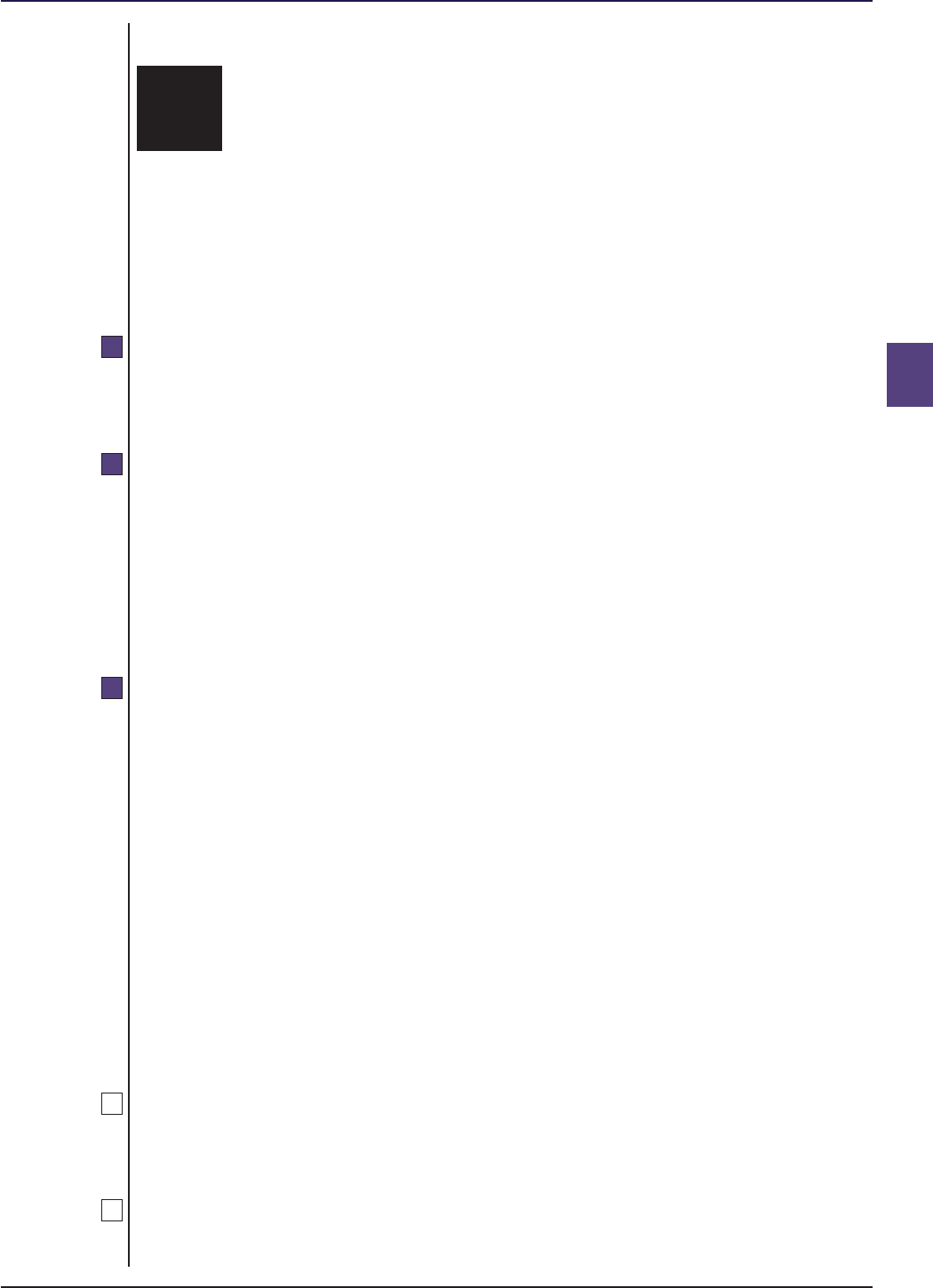
COLL 6 : Operating duties and Section 6.6B : UCITS depositaries
responsibilities
6
R6.6B.1
R6.6B.2
R6.6B.3
G6.6B.4
G6.6B.5
■ Release 39 ● Aug 2024 www.handbook.fca.org.uk COLL 6/63
6.6B UCITS depositaries
Application
.....................................................................................................
This section applies to the depositary of a UCITS scheme managed by an
authorised fund manager.
General obligations
.....................................................................................................
A depositary in carrying out its functions must act:
(1) honestly, fairly, professionally and independently; and
(2) solely in the interests of the UCITS scheme and its unitholders.
[Note: article 25(2) first paragraph of the UCITS Directive]
Conflicts of interest: depositaries
.....................................................................................................
A depositary must not carry out activities with regard to the UCITS scheme,
or the authorised fund manager, acting on behalf of the scheme, that may
create conflicts of interest between the scheme, the unitholders in the
scheme or the authorised fund manager and itself, unless:
(1) the depositary has properly identified any such potential conflicts of
interest;
(2) the depositary has functionally and hierarchically separated the
performance of its depositary tasks from its other potentially
conflicting tasks; and
(3) the potential conflicts of interest are properly managed, monitored
and disclosed to the unitholders of the scheme.
[Note: article 25(2) second paragraph of the UCITS Directive]
Eligible depositaries for UCITS schemes
.....................................................................................................
A depositary of a UCITS scheme must be a firm established in the United
Kingdom that has the Part 4A permission of acting as trustee or depositary
of a UK UCITS.
■ COLL 6.6A.8R sets out the categories of firms that may be appointed by an
authorised fund manager as the depositary of a UCITS scheme.

COLL 6 : Operating duties and Section 6.6B : UCITS depositaries
responsibilities
6
G6.6B.6
G6.6B.7
R6.6B.8
G6.6B.9
G6.6B.10
R6.6B.11
■ Release 39 ● Aug 2024www.handbook.fca.org.ukCOLL 6/64
For a depositary to be established in the United Kingdom, it must have its
registered office in the United Kingdom.
Depositaries appointed under COLL 6.6A.8R(3) (non-bank
depositaries): Capital requirements
.....................................................................................................
A depositary appointed in accordance with ■ COLL 6.6A.8R(3) needs to satisfy
the capital requirements in either:
(1) ■ IPRU(INV) 5; or
(2) MIFIDPRU
[deleted]
[Editor’s note: this requirement has been moved to ■ MIFIDPRU 4.4.6R.]
(1) [deleted]
(2) [deleted]
[deleted]
Depositaries appointed under COLL 6.6A.8R(3) (non-bank
depositaries): organisational requirements
.....................................................................................................
A depositary appointed under ■ COLL 6.6A.8R(3) must:
(1) ensure that it has the infrastructure necessary to keep in custody
UCITS custodial assets that can be registered in a financial instruments
account opened in the depositary’s books;
(2) establish adequate policies and procedures sufficient to ensure the
compliance of the depositary, including its managers and employees,
with its obligations under the regulatory system;
(3) have:
(a) sound administrative and accounting procedures and internal
control mechanisms;
(b) effective procedures for risk assessment; and
(c) effective control and safeguard arrangements for information
processing systems;
(4) maintain and operate effective organisational and administrative
arrangements with a view to taking all reasonable steps designed to
prevent conflicts of interest;
(5) arrange for records to be kept of all services, activities and
transactions that it undertakes, which must be sufficient to enable
the competent authority to monitor the firm’s compliance with the
requirements under the regulatory system;
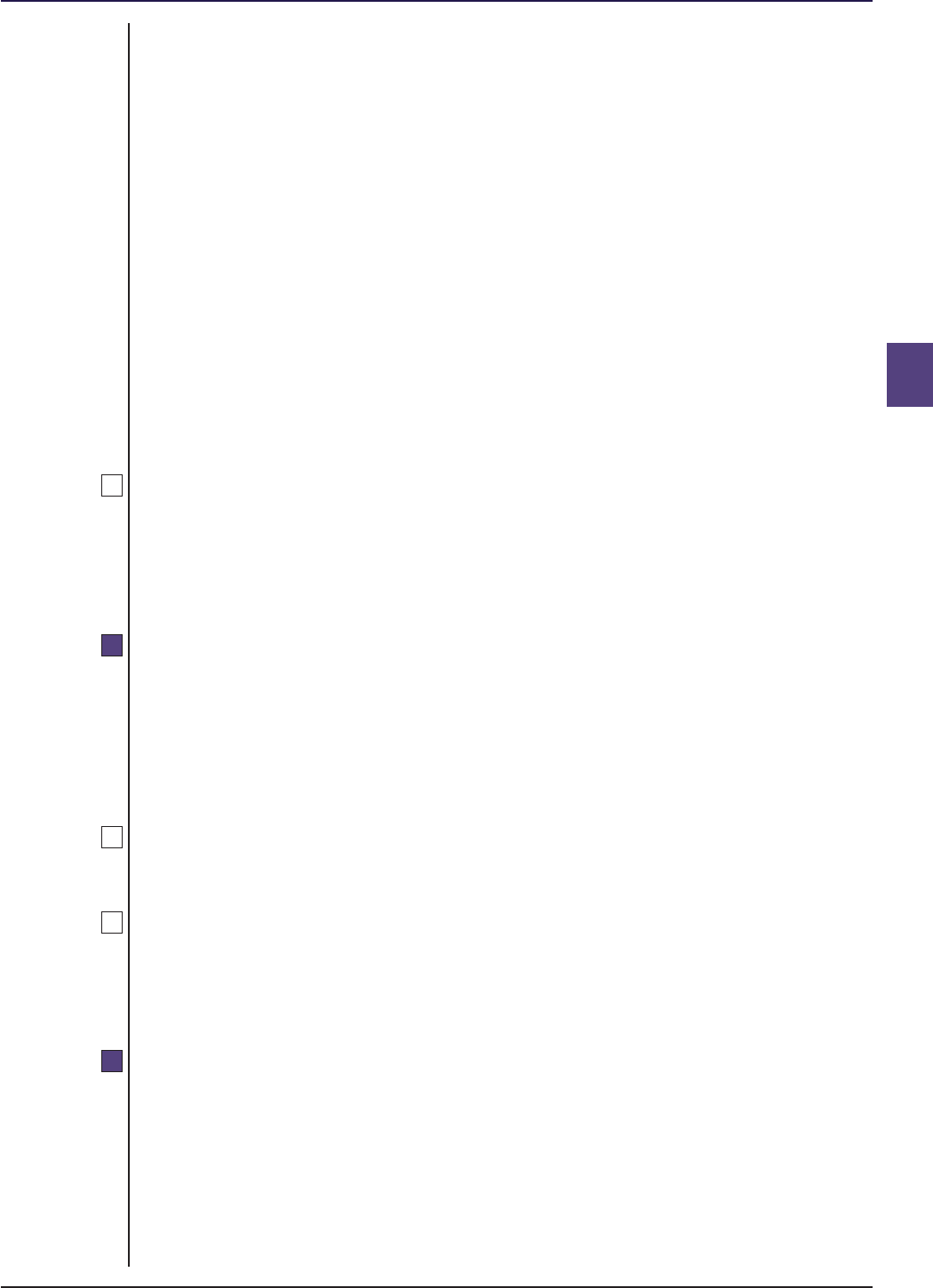
COLL 6 : Operating duties and Section 6.6B : UCITS depositaries
responsibilities
6
G6.6B.12
R6.6B.13
G6.6B.14
G6.6B.15
R6.6B.16
■ Release 39 ● Aug 2024 www.handbook.fca.org.uk COLL 6/65
(6) take reasonable steps to ensure continuity and regularity in the
performance of its depositary functions by employing appropriate
and proportionate systems, resources and procedures to perform its
depositary activities;
(7) ensure that all members of its management body and senior
management at all times:
(a) are of sufficiently good repute; and
(b) possess sufficient knowledge, skills and experience;
(8) ensure that its management body possesses adequate collective
knowledge, skills and experience to be able to understand the
depositary’s activities, including the main risks; and
(9) require each member of its management body and senior
management to act with honesty and integrity.
[Note: article 23(2)(c) (second sentence) of the UCITS Directive]
A firm’s attention is also drawn to the organisational requirements in SYSC.
The rules and guidance in SYSC apply to a depositary appointed under
■ COLL 6.6A.8R(3), in accordance with the application provisions summarised in
■ SYSC 1.1A (Application) and provided in detail in ■ SYSC 1 Annex 1.
Written contract
.....................................................................................................
(1) A depositary must ensure that its appointment as depositary of a
UCITS scheme is evidenced by a written contract.
(2) The contract must regulate the flow of information deemed necessary
to allow the depositary to perform its functions for the scheme.
[Note: article 22(2) of the UCITS Directive]
The written contract referred to in ■ COLL 6.6B.13R may cover more than one
UCITS scheme.
Article 2 of the UCITS level 2 regulation sets out the minimum information
that must be included in the written contract between the authorised fund
manager and the depositary.
Depositary functions: oversight
.....................................................................................................
The depositary must, for each UCITS scheme for which it is appointed:
(1) ensure that the sale, issue, repurchase, redemption and cancellation
of units of the scheme are carried out in accordance with:
(a) the applicable national law;
(b) the instrument constituting the fund;
(c) the prospectus; and
(d) ■ COLL 6.2 (Dealing);

COLL 6 : Operating duties and Section 6.6B : UCITS depositaries
responsibilities
6
R6.6B.17
■ Release 39 ● Aug 2024www.handbook.fca.org.ukCOLL 6/66
(2) ensure that the price of the units of the UCITS is calculated in
accordance with:
(a) the applicable national law;
(b) the instrument constituting the fund;
(c) the prospectus; and
(d) ■ COLL 6.3 (Valuation and pricing);
(3) carry out the instructions of the authorised fund manager, unless they
conflict with:
(a) the applicable national law; or
(b) the instrument constituting the fund; or
(c) the prospectus; or
(d) ■ COLL 5 (Investment and borrowing powers);
(4) ensure that, in transactions involving the assets of the UCITS scheme,
any consideration is remitted to the scheme within the usual time
limits; and
(5) ensure that the income of the UCITS scheme is applied in accordance
with:
(a) the applicable national law;
(b) the instrument constituting the fund;
(c) the prospectus; and
(d) ■ COLL 6.8 (Income: accounting, allocation and distribution).
[Note: article 22(3) of the UCITS Directive]
Depositary functions: cash monitoring
.....................................................................................................
The depositary must ensure that the cash flows of each UCITS scheme are
properly monitored and that:
(1) all payments made by, or on behalf of, investors upon the
subscription of units of the scheme have been received;
(2) all cash of the scheme has been booked in cash accounts which are:
(a) opened in the name of:
(i) the scheme; or
(ii) the authorised fund manager, acting on behalf of the
scheme; or
(iii) the depositary acting on behalf of the scheme; and
(b) at:
(i) a central bank; or
(ii) a CRD credit institution; or
(iii) a bank authorised in a country other than an EEA State; and

COLL 6 : Operating duties and Section 6.6B : UCITS depositaries
responsibilities
6
R6.6B.18
R6.6B.19
■ Release 39 ● Aug 2024 www.handbook.fca.org.uk COLL 6/67
(c) maintained in accordance with the principles in article 2
(safeguarding of client financial instruments and funds) of the
MiFID Delegated Directive; and
(3) where cash accounts are opened in the name of the depositary acting
on behalf of the scheme in accordance with (2)(a)(iii), the depositary
must ensure that no cash of the entity referred to in (2)(b), and none
of the depositary’s own cash, is booked on such accounts.
[Note: article 22(4) of the UCITS Directive]
Depositary functions: safekeeping of financial instruments
.....................................................................................................
(1) The depositary of a UCITS scheme must hold in custody all UCITS
custodial assets of the scheme.
(2) The depositary must ensure that all UCITS custodial assets that can be
registered in a financial instruments account:
(a) are registered in the depositary’s books within segregated
accounts opened in the name of:
(i) the UCITS scheme; or
(ii) the authorised fund manager, acting on behalf of the
scheme; and
(b) can be clearly identified as belonging to the UCITS scheme at all
times in accordance with:
(i) the applicable law; and
(ii) the applicable provisions in ■ CASS 6.
[Note: article 22(5)(a) of the UCITS Directive]
Depositary functions: safekeeping of other assets
.....................................................................................................
The depositary must, for UCITS scheme property other than UCITS custodial
assets:
(1) verify that the UCITS scheme or the authorised fund manager, acting
on behalf of the scheme, is the owner of the assets based:
(a) on information or documents provided by the authorised fund
manager; and
(b) where available, on external evidence; and
(2) maintain, and keep up to date, a record of those assets for which it is
satisfied that the UCITS scheme or the authorised fund manager,
acting on behalf of the scheme, is the owner.
[Note: article 22(5)(b) of the UCITS Directive]

COLL 6 : Operating duties and Section 6.6B : UCITS depositaries
responsibilities
6
R6.6B.20
R6.6B.21
R6.6B.22
G6.6B.23
G6.6B.24
■ Release 39 ● Aug 2024www.handbook.fca.org.ukCOLL 6/68
Inventory of assets
.....................................................................................................
The depositary must provide a comprehensive inventory of all the assets
comprising the scheme property of the UCITS scheme to the authorised fund
manager on a regular basis.
[Note: article 22(6) of the UCITS Directive]
Re-use of assets
.....................................................................................................
(1) The depositary must not re-use UCITS custodial assets except:
(a) where permitted under ■ COLL 5.4 (stock lending); and
(b) when carrying out the instructions of the authorised fund
manager on behalf of the scheme.
(2) Re-use of the UCITS custodial assets comprises any transaction in
relevant scheme property including, but not limited to, transferring,
pledging, selling and lending.
[Note: article 22(7) first paragraph of the UCITS Directive]
Limitation on delegation
.....................................................................................................
A depositary must not delegate its oversight function in ■ COLL 6.6B.16R or its
cash monitoring function in ■ COLL 6.6B.17R to a third party.
[Note: article 22a(1) of the UCITS Directive]
The use of services provided by securities settlement systems, as specified in
the Financial Markets and Insolvency (Settlement Finality) Regulations 1999,
or similar services provided by securities settlement systems in other
countries, does not constitute a delegation by the depositary of its functions
for the purposes of ■ COLL 6.6B.22R.
[Note: article 22a(4) of the UCITS Directive]
(1) (a) If a depositary performs part of its functions through a branch in
an EEA State, this is not a delegation by the depositary of its
functions to a third party.
(b) This is because ‘third party’ in ■ COLL 6.6B.22R means any party
that is not part of the same legal entity as the depositary.
(2) [deleted]
(3) (a) A depositary that performs part of its functions through a branch
in an EEA State should ensure that those arrangements do not
impede the depositary’s ability to meet the threshold conditions.
(b) (i) In particular, the arrangements should not impede the FCA’s
ability to supervise the depositary effectively.
(ii) For example, the FCA’s ability to supervise the depositary
might be impeded if the depositary performed tasks other
than administrative and supporting tasks from its branch in
an EEA State.

COLL 6 : Operating duties and Section 6.6B : UCITS depositaries
responsibilities
6
R6.6B.25
■ Release 39 ● Aug 2024 www.handbook.fca.org.uk COLL 6/69
Delegation: safekeeping
.....................................................................................................
A depositary may delegate the functions in ■ COLL 6.6B.18R and
■ COLL 6.6B.19R to one or more third parties if:
(1) the tasks are not delegated with the intention of avoiding the
requirements of the UCITS Directive, as implemented in this chapter;
(2) the depositary can demonstrate that there is an objective reason for
the delegation;
(3) the depositary:
(a) has exercised all due skill, care and diligence in the selection and
appointment of any third party to whom it intends to delegate
parts of its tasks; and
(b) continues to exercise all due skill, care and diligence in the
periodic review and ongoing monitoring:
(i) of any third party to whom it has delegated parts of its tasks;
and
(ii) of the arrangements of that third party in respect of the
matters delegated to it; and
(4) the depositary ensures that the third party delegate meets the
following conditions at all times:
(a) the third party has structures and expertise that are adequate
and proportionate to the nature and complexity of the assets of
the UCITS scheme that have been entrusted to it;
(b) (subject to ■ COLL 6.6B.26R) for custody tasks in relation to UCITS
custodial assets, the third party is subject to:
(i) effective prudential regulation, including minimum capital
requirements, and supervision in the jurisdiction concerned;
and
(ii) an external periodic audit to ensure that the financial
instruments remain in its custody;
(c) the third party segregates the assets of the depositary’s clients
from its own assets and from the assets of the depositary in such
a way that they can, at any time, be clearly identified as
belonging to clients of a particular depositary;
(d) the third party takes all necessary steps to ensure that in the
event of insolvency of the third party, UCITS custodial assets held
in custody by the third party are unavailable for distribution
among, or realisation for the benefit of, creditors of the third
party; and
(e) the third party complies with the general obligations and
prohibitions relating to the depositary in:
(i) ■ COLL 6.6B.2R (General obligations);
(ii) ■ COLL 6.6B.3R (Conflicts of interests: depositaries);
(iii) ■ COLL 6.6B.13R (Written contract);
(iv) ■ COLL 6.6B.18R (Depositary functions: safekeeping of financial
instruments);

COLL 6 : Operating duties and Section 6.6B : UCITS depositaries
responsibilities
6
R6.6B.26
R6.6B.27
G6.6B.28
■ Release 39 ● Aug 2024www.handbook.fca.org.ukCOLL 6/70
(v) ■ COLL 6.6B.19R (Depositary functions: safekeeping of other
assets); and
(vi) ■ COLL 6.6B.21R (Reuse of assets).
[Note: article 22a(2) and (3) of the UCITS Directive]
Delegation: third countries
.....................................................................................................
A depositary may delegate custody tasks in relation to UCITS custodial assets
to an entity in another country even though that entity does not satisfy the
conditions in ■ COLL 6.6B.25R(4)(b)(i) if:
(1) the law of that country requires those UCITS custodial assets to be
held in custody by a local entity;
(2) no local entity satisfies the conditions in ■ COLL 6.6B.25R(4)(b)(i);
(3) the depositary delegates its functions to such a local entity only:
(a) to the extent required by the law of that country; and
(b) for as long as there is no local entity that satisfies the delegation
conditions in ■ COLL 6.6B.25R(4)(b)(i);
(4) the investors of the relevant UCITS scheme are informed before their
investment:
(a) that such delegation is required due to legal constraints in the
other country;
(b) of the reasons as to why the delegation is necessary; and
(c) of the risks involved in such a delegation; and
(5) the authorised fund manager, acting on behalf of the UCITS scheme,
has consented to the delegation arrangements before they become
effective.
[Note: article 22a(3) of the UCITS Directive]
Delegation: sub-delegation
.....................................................................................................
A depositary must ensure that a third party to whom the depositary has
delegated functions under ■ COLL 6.6B.25R does not, in turn, sub-delegate
those functions unless the delegate complies with the same requirements
that apply to the depositary, with any necessary changes, in relation to the
delegation by the depositary of its functions in ■ COLL 6.6B.25R and
■ COLL 6.6B.26R.
[Note: article 22a(3) third paragraph of the UCITS Directive]
Delegation: omnibus account
.....................................................................................................
A depositary may delegate the safekeeping of assets to a third party that
maintains an omnibus account for multiple UCITS schemes, provided it is a
segregated common account that is segregated from the third party’s own
assets.
[Note: recital 22 of the UCITS Directive]

COLL 6 : Operating duties and Section 6.6B : UCITS depositaries
responsibilities
6
G6.6B.29
R6.6B.30
G6.6B.31
G6.6B.32
■ Release 39 ● Aug 2024 www.handbook.fca.org.uk COLL 6/71
Provision of information
.....................................................................................................
The requirements of ■ SUP 2 (Information gathering by the FCA or PRA on its
own initiative) apply to the depositary, under which it must enable the FCA
to obtain, on request, all information that the depositary has obtained while
discharging its duties and that the FCA considers necessary.
[Note: article 26a first paragraph of the UCITS Directive]
Reporting of breaches
.....................................................................................................
A depositary must have appropriate procedures for its employees to report
internally, through a specific, independent and autonomous channel,
potential or actual breaches of those national provisions which implemented
the UCITS Directive before IP completion day.
[Note: article 99d(5) of the UCITS Directive]
■ SYSC 18 (Guidance on Public Interest Disclosure Act: Whistleblowing)
contains further guidance on the effect of the Public Interest Disclosure Act
1998 in the context of the relationship between firms and the FCA.
Subordinate measures
.....................................................................................................
Articles 3 to 17 of the UCITS level 2 regulation provide detailed rules
supplementing this section.

COLL 6 : Operating duties and Section 6.7
responsibilities
6
R6.7.1
R6.7.2
G6.7.3
■ Release 39 ● Aug 2024www.handbook.fca.org.ukCOLL 6/72
6.7 Payments
Application
.....................................................................................................
This section applies in accordance with ■ COLL 6.7.2 R (Table of application).
Table of application
.....................................................................................................
Table of Application. This table belongs to ■ COLL 6.7.1 R.
Authorised
Depositary fund man-
of an ICVC, ager of an
AUT or AUT or
Rule ICVC ACD ACS ACS
6.7.1R to x x x x
6.7.5G
6.7.6G x x x
6.7.7R x x
6.7.8G x x
6.7.9R x x
6.7.10R x x x
6.7.11G x x x
6.7.12R x x x
6.7.13G x x x
6.7.14R x
6.7.15R x x x x
6.7.16G x x x
6.7.17R x x x
Note: "x" means "applies", but not every paragraph in every rule will
necessarily apply.
Purpose
.....................................................................................................
(1) This section assists in securing the statutory objective of protecting
consumers through requirements which govern the payments out of
scheme property and charges imposed on investors when buying or
selling units.
(2) The requirements clarify the nature of permitted charges and
payments and ensure the disclosure for unitholders of any increases in
charges and payments to the authorised fund manager.

COLL 6 : Operating duties and Section 6.7
responsibilities
6
R6.7.4
G6.7.5
■ Release 39 ● Aug 2024 www.handbook.fca.org.uk COLL 6/73
(3) The prospectus should make adequate provision for payments from
an authorised fund. This section:
(a) prohibits, or stipulates the conditions on which, the payments out
of the scheme property can be made;
(b) requires certain payments to be conditional on disclosure in the
prospectus; and
(c) governs the allocation of payments between capital and income.
Payments out of scheme property
.....................................................................................................
(1) The only payments which may be recovered from the scheme
property of an authorised fund are those in respect of:
(a) remunerating the parties operating the authorised fund;
(b) the administration of the authorised fund;
(c) the investment or safekeeping of the scheme property; or
(d) subject to (1A), donations to one or more registered charities for
Sharia compliance purposes (in this rule, ‘purification’), as set out
in and authorised by the prospectus of the scheme.
(1A) Payments relating to (1)(d) may only be made from the income
property of the scheme where they represent the required
percentage of the income property recognised for purification as
advised by a person with appropriate knowledge of finance and
Islamic law.
(2) No payment under this rule can be made from scheme property if it is
unfair to (or materially prejudices the interests of) any class of
unitholders or potential unitholders.
(3) Paragraphs (1) and (2) do not apply to any payments in relation to
any taxation payable by the authorised fund.
(4) Paragraphs (1) and (2) do not permit payments to third parties for the
safekeeping or administration of units on behalf of unitholders rather
than on behalf of the authorised fund.
Payments out of scheme property: guidance
.....................................................................................................
(1) Details of permissible types of payments out of scheme property are
to be set out in full in the prospectus in accordance with
■ COLL 4.2.5R (13) and ■ COLL 4.2.5R (14) (Table: contents of the
prospectus).
(2) An authorised fund manager should consider whether a payment to
an affected person is unfair because of its amount or because it
confers a disproportionate benefit on the affected person.
(3) ■ COLL 6.7.4 R (2) (Payments out of scheme property) does not
invalidate a payment that gives rise to a difference between the
rights of separate classes of unit that relates solely to the payments
that may be taken out of scheme property.

COLL 6 : Operating duties and Section 6.7
responsibilities
6
G6.7.6
R6.7.6A
R6.7.7
■ Release 39 ● Aug 2024www.handbook.fca.org.ukCOLL 6/74
(4) Payments to third parties as referred to in ■ COLL 6.7.4 R (4) include
payments to platform service providers and other similar platform
services.
(5) The person referred to in ■ COLL 6.7.4R(1A) should be independent of
the authorised fund manager and any registered charity to which
payments may be made.
Performance fees
.....................................................................................................
(1) For the authorised fund manager's periodic charge or for payments
out of scheme property to the investment adviser, the prospectus may
permit a payment based on a comparison of one or more aspects of
the scheme property or price in comparison with fluctuations in the
value or price of property of any description or index or other factor
designated for the purpose (a "performance fee").
(2) Any performance fee should be specified in the appropriate manner
in the prospectus and should be consistent with ■ COLL 6.7.4 R. In
determining whether the performance fee is consistent the
authorised fund manager should have regard to factors such as:
(a) [deleted]
(b) where it is made on the basis of performance of the authorised
fund against any index or any other factor, that benchmark must
be reasonable given the investment objectives of the authorised
fund and must be consistently applied;
(c) it may be based on performance above a defined positive rate of
return (the "hurdle rate"), which may be fixed or variable;
(d) where (b) or (c) applies, the benchmark or hurdle rate may be
carried forward to future accrual periods;
(e) the period over which it accrues and the frequency with which it
crystallises should be reasonable; and
(f) except where allowed by ■ COLL 6.7.4 R (1), there are to be no
arrangements to adjust the price or value of sale or repurchase
transactions in respect of performance fees accrued or paid if the
transactions occur within the accrual period of the charge.
(3) In accordance with ■ COLL 4.2.5R (13) (Table: contents of prospectus)
the prospectus should contain the maximum amount or percentage of
scheme property that the performance fee might represent in an
annual accounting period. This disclosure should be given in plain
language together with examples of the operation of the
performance fee.
Any performance fee specified in the prospectus must be calculated on the
basis of the scheme’s performance after deduction of all other payments out
of scheme property.
Charges on buying and selling units
.....................................................................................................
(1) No person other than the authorised fund manager may impose
charges on unitholders or potential unitholders when they buy or sell
units.

COLL 6 : Operating duties and Section 6.7
responsibilities
6
G6.7.8
■ Release 39 ● Aug 2024 www.handbook.fca.org.uk COLL 6/75
(2) An authorised fund manager must not make any charge or levy in
connection with:
(a) the issue or sale of units except where a preliminary charge is
made in accordance with the prospectus of the scheme which
must be:
(i) a fixed amount; or
(ii) calculated as a percentage of the price of a unit; or
(iii) calculated as a percentage of the amount being subscribed;
or
(b) the redemption or cancellation of units, except a redemption
charge made in accordance with the prospectus current at the
time the relevant units were purchased by the unitholder.
(3) This rule is subject to ■ COLL 6.3.8 R (Dilution) and ■ COLL 11.3.11 R
(Obligations of the master UCITS).
Charges on buying and selling units: guidance
.....................................................................................................
(1) To introduce a new charge for the sale or redemption of units, or any
new category of remuneration for its services or increase the rate
stated in the prospectus, the authorised fund manager will need to
comply with ■ COLL 4.2.5 R (Table: contents of prospectus) and
■ COLL 4.3 (Approvals and notifications).
(2) A redemption charge may be expressed in terms of amount or
percentage. It may also be expressed as diminishing over the time
during which the unitholder has held the units or be calculated on
the basis of the unit price performance of the units. However any
redemption charge should not be such that it could be reasonably
regarded as restricting any right of redemption.
(3) The prospectus should contain a statement as to the determination of
the order in which units which have been acquired at different times
by a unitholder are to be taken to be redeemed or cancelled for the
purpose of the imposition of the redemption charge.
(4) (a) For a UCITS scheme, article 10(2)(a) of the KII Regulation requires
the key investor information document to disclose the maximum
percentage that might be deducted as an entry charge from the
investor’s capital commitment.
(b) Where a preliminary charge is charged as a fixed amount or is
calculated as a percentage of the price of a unit, the AFM should
ensure that the actual amount charged, if it were expressed as a
percentage of the amount being subscribed, does not exceed the
maximum percentage stated as the entry charge in the key
investor information document.
(5) When a preliminary charge is calculated as a percentage of the price
of a unit, the percentage amount should be added to:
(a) the price of a unit (for a single-priced authorised fund); or
(b) the issue price (for a dual-priced authorised fund).

COLL 6 : Operating duties and Section 6.7
responsibilities
6
R6.7.9
R6.7.10
G6.7.11
■ Release 39 ● Aug 2024www.handbook.fca.org.ukCOLL 6/76
(6) In relation to a regulated money market fund, any charges for the
sale or redemption of units, and any change to such charges, should
reflect the restrictions of the Money Market Funds Regulation.
Charges for the exchange of units in an umbrella
.....................................................................................................
For a scheme which is an umbrella, an authorised fund manager must not
make a charge on an exchange of units in one sub-fund for units in another
sub-fund unless the amount of the charge is not more than the amount
stated in the current prospectus.
Allocation of payments to income or capital
.....................................................................................................
(1) The authorised fund manager must determine whether a payment is
to be made from the income property or capital property of an
authorised fund, and in doing so the authorised fund manager must:
(a) pay due regard to whether the nature of the cost is income
related or capital related and the objective of the scheme; and
(b) agree the treatment of any payment with the depositary.
(1A) Where there is at least one class of units that distributes income and
one class of units that accumulates income in the same authorised
fund, the authorised fund manager can determine that a payment be
made from:
(a) the capital property of the authorised fund for the classes of
units that distribute income; and
(b) the income property of the authorised fund for classes of units
that accumulate income,
if this is set out in and authorised by the prospectus of the
scheme.
(2) Where, for any class of units for any annual accounting period, the
amount of the income property is less than the income distributed,
the shortfall must, as from the end of that period, be charged to the
capital account and must not subsequently be transferred to the
income account.
Allocation of payments to income or capital: guidance
.....................................................................................................
(1) Any payment as a result of effecting transactions for the authorised
fund should be made from the capital property of the scheme.
(2) Other than the payments in (1), all other payments should be made
from income property in the first instance but may be transferred to
the capital account in accordance with ■ COLL 6.7.10 R (1) (Allocation of
payments to income or capital).
(3) For payments transferred to the capital property of the scheme in
accordance with (2), the prospectus should disclose the matters in
■ COLL 4.2.5R (14).
(4) If the authorised fund manager wishes to make a change in relation
to the allocation of payments, the procedures in ■ COLL 4.3 (Approvals
and notifications) will be relevant.

COLL 6 : Operating duties and Section 6.7
responsibilities
6
R6.7.12
G6.7.13
R6.7.14
R6.7.15
■ Release 39 ● Aug 2024 www.handbook.fca.org.uk COLL 6/77
Prohibition on promotional payments
.....................................................................................................
(1) No payment may be made from scheme property to any person, other
than a payment to the authorised fund manager permitted by the
rules in COLL, for the acquisition or promotion of the sale of units in
an authorised fund.
(2) Paragraph (1) does not apply to the costs an authorised fund incurs
preparing and printing the key investor information document, NURS-
KII document or key information document, provided the prospectus
states, in accordance with ■ COLL 4.2.5 R (13) and (14) (Table: contents
of the prospectus), that these costs are properly payable to the
authorised fund manager from scheme property.
Prohibition on promotional payments: guidance
.....................................................................................................
Examples of payments which are not permitted by ■ COLL 6.7.12 R include:
(1) commission payable to intermediaries (such payments should normally
be borne by the authorised fund manager);
(2) payments or costs in relation to the preparation or dissemination of
financial promotions (other than costs allowed under
■ COLL 6.7.12 R (2)).
(3) [deleted]
Movable or immovable property
.....................................................................................................
An ICVC must not incur any expense for the use by it of any movable or
immovable property except to the extent that such property is necessary for
the direct pursuit of its business or held in accordance with its investment
objectives.
Payment of liabilities on transfer of assets
.....................................................................................................
(1) Where the property of an authorised fund is transferred to a second
authorised fund (or to the depositary for the account of the
authorised fund) in consideration of the issue of units in the second
authorised fund to unitholders in the first scheme, (2) applies.
(2) The ICVC or the depositary of the ICVC, ACS or AUT as the successor
in title to the property transferred, may pay out of the scheme
property any liability arising after the transfer which, had it arisen
before the transfer, could properly have been paid out of the
property transferred, but only if:
(a) there is nothing in the instrument constituting the fund of the
authorised fund expressly forbidding the payment; and
(b) the authorised fund manager is of the opinion that proper
provision was made for meeting such liabilities as were known or
could reasonably have been anticipated at the time of the
transfer.

COLL 6 : Operating duties and Section 6.7
responsibilities
6
G6.7.16
R6.7.17
■ Release 39 ● Aug 2024www.handbook.fca.org.ukCOLL 6/78
Exemptions from liability to account for profits
.....................................................................................................
Except as provided in ■ COLL 6.3.5DR, an affected person is not liable to
account to another affected person or to the unitholders of any scheme for
any profits or benefits it makes or receives that are made or derived from or
in connection with:
(1) dealings in the units of a scheme; or
(2) any transaction in scheme property; or
(3) the supply of services to the scheme;
where disclosure of the non-accountability has been made in the prospectus
of the scheme.
Allocation of scheme property
.....................................................................................................
For a scheme which is an umbrella, any assets to be received into, or any
payments out of, the scheme property which are not attributable to one sub-
fund only, must be allocated by the authorised fund manager between the
sub-funds in a manner which is fair to the unitholders of the umbrella
generally.

COLL 6 : Operating duties and Section 6.8
responsibilities
6R6.8.1
R6.8.2
■ Release 39 ● Aug 2024 www.handbook.fca.org.uk COLL 6/79
6.8 Income: accounting, allocation and
distribution
Application
.....................................................................................................
(1) This section applies to an authorised fund manager.
(2) ■ COLL 6.8.4 R (1) (Unclaimed, de minimis and joint unitholder
distributions) also applies to the depositary of an authorised fund.
(3) Except in the case of ■ COLL 6.8.2 R (1) (Accounting periods) and
■ COLL 6.8.3 R (1) (Income allocation and distribution), ■ COLL 6.8 applies
as if each sub-fund were a separate authorised fund.
Accounting periods
.....................................................................................................
(1) An authorised fund must have:
(a) an annual accounting period;
(b) a half-yearly accounting period; and
(c) an accounting reference date.
(2) A half-yearly accounting period begins when an annual accounting
period begins and ends on:
(a) the day which is six months before the last day of that annual
accounting period; or
(b) some other reasonable date as set out in the prospectus of the
scheme.
(3) The first annual accounting period of a scheme must begin:
(a) on the first day of any period of initial offer; or
(b) in any other case, on the date of the relevant authorisation
order;
and in either case must end on the next accounting reference date,
except where (4) applies.
(4) When the accounting reference date of a scheme falls less than six
months after the beginning of the first annual accounting period,
that period may be extended until the subsequent accounting
reference date.
(5) Each annual accounting period of a scheme subsequent to the first
period must begin immediately after the end of the previous period

COLL 6 : Operating duties and Section 6.8
responsibilities
6
G6.8.2A
R6.8.2B
R6.8.3
■ Release 39 ● Aug 2024www.handbook.fca.org.ukCOLL 6/80
and must end on the next accounting reference date, except where
(6) or (6A) applies.
(5A) Each annual accounting period or half-yearly accounting period must
end either at the end of the day determined under this rule or, if the
authorised fund manager so decides, at the last valuation point on
that day.
(6) Following a revision to the prospectus of the scheme that includes a
change to the accounting reference date, the annual accounting
period may be shortened, or extended by up to six months, so as to
end on the new accounting reference date.
(6A) If the authorised fund manager notifies the depositary that a
particular annual accounting period or half-yearly accounting period
is to end on a specified day, which is not more than seven days after,
and not more than seven days before, the day on which the period
would otherwise end under this rule, that notice is to have effect
provided it is given before the day on which the period would
otherwise end.
(7) The authorised fund manager must consult the depositary and the
scheme's auditor before shortening or extending an accounting
period in accordance with (4) or (6).
(1) The effect of ■ COLL 6.8.1R(3) and ■ COLL 6.8.2R(4) is that when the
accounting reference date of a sub-fund falls less than 6 months after
the beginning of the first annual accounting period of that sub-fund,
that period may be extended until the subsequent accounting
reference date.
(2) When the annual accounting period of a scheme is extended under
■ COLL 6.8.2R(4) or ■ COLL 6.8.2R(6), resulting in a longer than usual
period before the publication of reports to unitholders, the
authorised fund manager should make summary information about
the investment activities of the scheme available to unitholders
during that period, in accordance with either (as applicable) Principle
12 (Consumer Duty) and ■ PRIN 2A, or Principles 6 (Customers’
interests) and 7 (Communications with clients) (see ■ PRIN 3.2.10R
(Interaction between Principle 12 and Principles 6 and 7)).
Income allocation and distribution
.....................................................................................................
The allocation or distribution of the income of a UCITS scheme must be
determined in accordance with its instrument constituting the fund, its
prospectus and the general law of the United Kingdom.
[Note: article 86 of the UCITS Directive]
(1) An authorised fund must have an annual income allocation date,
which must be within four months of the end of the relevant annual
accounting period.
(2) An authorised fund may have interim income allocation dates and
one or more interim accounting periods for each of those dates and,

COLL 6 : Operating duties and Section 6.8
responsibilities
6
■ Release 39 ● Aug 2024 www.handbook.fca.org.uk COLL 6/81
if it does, the interim income allocation date must be within four
months of the end of the relevant interim accounting period(s).
(3) An authorised fund must have a distribution account to which the
amount of income allocated to classes of units that distribute income
is transferred as at the end of the relevant accounting period.
(3A) The amount available for income allocations must be calculated by:
(a) taking the net revenue after taxation determined in accordance
with the SORP;
(b) making any transfers, to the extent permitted by the prospectus,
between the income account and the capital account in order
that the amount available for income allocations is calculated as
if the revenue from debt securities had been determined
disregarding the effect of:
(i) the change in the Retail Prices Index during the period,
provided that the policy is to invest predominantly in index-
linked securities and the transfer relates only to amounts in
respect of index-linked gilt-edged securities; or
(ii) amortisation, provided that the amount available for income
allocations is not less than if such transfers had not been
made;
(c) making any other transfers between the income account and the
capital account that are required in relation to:
(i) stock dividends;
(ii) income equalisation included in income allocations from
other collective investment schemes;
(iii) the allocation of payments in accordance with ■ COLL 6.7.10 R
(Allocation of payments to income or capital);
(iv) taxation;
(v) the aggregate amount of income property included in units
issued, cancelled and converted during the period; and
(vi) amounts determined by the authorised fund manager to be
the reportable income of other collective investment
schemes.
(4) If income is allocated during an accounting period:
(a) with effect from the end of the relevant annual or interim
accounting period, the amount of income allocated to classes of
units that accumulate income becomes part of the capital
property and requires an adjustment to the proportion of the
value of the scheme property to which they relate if other classes
of units are in issue during the period;
(b) the adjustment in (a) must ensure the price of units remains
unchanged despite the transfer of income; and
(c) the amount of any interim allocation may not be more than the
amount which, in the opinion of the authorised fund manager,
would be available for allocation if the interim accounting period
and all previous interim accounting periods in the same annual
accounting period, taken together, were an annual accounting
period.

COLL 6 : Operating duties and Section 6.8
responsibilities
6
G6.8.3A
R6.8.4
R6.8.4A
G6.8.5
■ Release 39 ● Aug 2024www.handbook.fca.org.ukCOLL 6/82
Allocation of income to different classes of unit
.....................................................................................................
In the case of sub-funds with more than one class of units in issue, the
proportionate interests of each class of units in the amount available for
income allocations should be determined in accordance with the instrument
constituting the fund.
Unclaimed, de minimis and joint unitholder distributions
.....................................................................................................
(1) Unless (4) or ■ COLL 6.8.4AR apply, any distribution remaining
unclaimed after a period of six years, or such longer time specified by
the prospectus, must become part of the capital property.
(2) The authorised fund manager and the depositary may agree a de
minimis amount in respect of which a distribution of income is not
required, and how any such amounts are to be treated.
(3) Distributions made to the first named joint unitholder on the register
will be as effective a discharge to the trustee and manager, as if the
first named joint unitholder had been a sole unitholder.
(a) This paragraph applies where:
(i) an eligible distribution of income remaining unclaimed is a
dormant asset; and
(ii) the instrument constituting the fund and the prospectus
permit the transfer of such money to a dormant asset fund
operator.
(b) Where this paragraph applies:
(i) the authorised fund manager or (where relevant) the
depositary may seek to transfer the unclaimed distribution to
a dormant asset fund operator in accordance with the
instrument constituting the fund and the prospectus; and
(ii) if the depositary makes such a transfer, the requirement in
(1) (that the unclaimed distribution becomes part of the
capital property) does not apply.
Unwanted asset money
.....................................................................................................
(1) This rule applies where:
(a) an eligible distribution of income is unwanted asset money; and
(b) the instrument constituting the fund and the prospectus permit
the transfer of such money to a dormant asset fund operator.
(2) Where (1) applies, the authorised fund manager or (where relevant)
the depositary may transfer the unwanted asset money to a dormant
asset fund operator in accordance with the instrument constituting
the fund, the prospectus and section 21 of the Dormant Assets Act
2022.
Guidance: contents of the prospectus
.....................................................................................................
■ COLL 4.2.5 R (Table: contents of prospectus) requires the details of
■ COLL 6.8.2 R, ■ COLL 6.8.3 R (1) and ■ COLL 6.8.3 R (2) and ■ COLL 6.8.4 R (1) and

COLL 6 : Operating duties and Section 6.8
responsibilities
6
■ Release 39 ● Aug 2024 www.handbook.fca.org.uk COLL 6/83
■ COLL 6.8.4 R (2) to be contained in the prospectus as well as when, and how,
the distribution will be paid (e.g. by cheque or BACS) and also how any
unclaimed distributions are to be processed.

COLL 6 : Operating duties and Section 6.9
responsibilities
6 R6.9.1
G6.9.1A
G6.9.2
G6.9.3
■ Release 39 ● Aug 2024www.handbook.fca.org.ukCOLL 6/84
6.9 Independence, names and UCITS
business restrictions
Application
.....................................................................................................
This section applies to an authorised fund manager, a depositary, an ICVC
and any other directors of an ICVC.
Articles 20 to 24 of the UCITS level 2 regulation set out detailed provisions
that must be read by the authorised fund manager and the depositary of a
UCITS scheme alongside ■ COLL 6.9.2G to ■ COLL 6.9.5G.
Independence of depositaries and scheme operators
.....................................................................................................
(1) Regulation 15(8)(f) of the OEIC Regulations (Requirements for
authorisation) requires independence between the depositary, the
ICVC and the ICVC's directors, as does section 243(4) of the Act
(Authorisation orders) for the trustee and manager of an AUT, and
section 261D(4) of the Act (Authorisation orders) for the depositary
and authorised fund manager of an ACS. ■ COLL 6.9.3 G to
■ COLL 6.9.5 G give the FCA's view of the meaning of independence of
these relationships. An ICVC, its directors and depositary or a
manager and a trustee of an AUT or an authorised fund manager and
depositary of an ACS are referred to as "relevant parties" in this
guidance.
(2) There are at least three possible kinds of links between the relevant
parties:
(a) directors in common;
(b) cross-shareholdings; and
(c) contractual commitments.
(3) If any of these links exist between the relevant parties, the FCA will
have regard to ■ COLL 6.9.3 G to ■ COLL 6.9.5 G in determining whether
there is independence.
Independence: influence by directors
.....................................................................................................
(1) Independence is likely to be lost if, by means of executive power,
either relevant party could control the action of the other.
(2) The board of one relevant party should not be able to exercise
effective control of the board of another relevant party.
Arrangements which might indicate this situation include quorum

COLL 6 : Operating duties and Section 6.9
responsibilities
6
G6.9.4
G6.9.5
G6.9.6
■ Release 39 ● Aug 2024 www.handbook.fca.org.uk COLL 6/85
provisions and reservations of decision-making capacity of certain
directors.
(3) For an AUT or ACS, the FCA would interpret the concept of directors
in common to include any directors of associates of one relevant
party who are simultaneously directors of the other relevant party.
(4) For an ICVC, independence would not be met if:
(a) a director of the ICVC or any associate of the director is a
director, an employee, or both of the depositary; or
(b) a director of an ICVC:
(i) has a direct or indirect shareholding for investment purposes
of more than 0.5% of the votes at a general meeting or a
meeting of holders of the class of share concerned of the
depositary of that ICVC; or
(ii) has any other relationship with the depositary which might
reasonably be expected to give rise to a potential conflict of
interest.
Independence: influence by shareholding
.....................................................................................................
Independence is likely to be lost if either of the relevant parties could
control the actions of the other by means of shareholders' votes. The FCA
considers this would happen if any shareholding by one relevant party and
their respective associates in the other exceeds 15% of the voting share
capital, either in a single share class or several share classes. The FCA would
be willing, however, to look at cross-shareholdings exceeding 15% on a case-
by-case basis to consider if there were exceptional grounds for concluding
that independence was safeguarded by other means.
Independence: contractual commitments
.....................................................................................................
The FCA would encourage relevant parties to consult it in advance about its
view on the consequences of any intended contractual commitment or
relationship which could affect independence, whether directly or indirectly.
Undesirable or misleading names
.....................................................................................................
(1) Regulation 15(9) of the OEIC Regulations, and sections 243(8) and
261D(10) of the Act require that an authorised fund's name must not
be undesirable or misleading. This section contains guidance on some
specific matters the FCA will consider in determining whether the
name of an authorised fund is undesirable or misleading. It is in
addition to the requirements of regulation 19 of the OEIC
Regulations (Prohibition on certain names).
(2) The FCA will take into account whether the name of the scheme:
(a) is substantially similar to the name of another authorised fund;
(b) implies that the authorised fund has merits which are not, or
might not be, justified;
(c) implies that the authorised fund manager has particular qualities,
which may not be justified;

COLL 6 : Operating duties and Section 6.9
responsibilities
6
■ Release 39 ● Aug 2024www.handbook.fca.org.ukCOLL 6/86
(d) is inconsistent with the authorised fund's investment objectives or
policy;
(e) implies that the authorised fund is not an authorised fund (for
example, describing the authorised fund as a "plan" or "account"
are unlikely to be acceptable); and
(f) might mislead investors into thinking that persons other than the
authorised fund manager are responsible for the authorised fund.
(3) The FCA is unlikely to approve a name of an authorised fund that
includes the word "guaranteed" unless:
(a) the guarantee is given by:
(i) an authorised person;
(ii) a person which is established in an EEA State and equivalent
to an authorised person; or
(iii) a person subject to prudential supervision in accordance with
criteria defined by UK law or prudential rules at least as
stringent as those laid down by UK law;
other than the authorised fund manager or the depositary.
(b) the authorised fund manager can demonstrate that the
guarantor has the authority and resources to honour the terms of
the guarantee;
(c) the guarantee covers all unitholders within the authorised fund
and is legally enforceable by each Unitholder who is intended to
benefit from it or by a person acting on that unitholder's behalf;
(d) the guarantee relates to the total amount paid for a unit which
includes any charge or other costs of buying or selling units in the
authorised fund;
(e) the guarantee provides for payment at a specified date or dates
and is unconditional although reasonable commercial exclusions
such as force majeure may be included; and
(f) where the guarantee applies to different classes of unit, it is
identical in its application to all classes except for the differences
attributable to income already received or charges already
suffered by the different classes of unit.
(4) The name of an authorised fund may indicate a guaranteed capital
return or income return or both but only if the total amount paid for
a unit is guaranteed in accordance with (3).
(5) The FCA is unlikely to approve a name of an authorised fund that
includes words implying a degree of capital security (such as "capital
protected" or anything with a similar meaning) unless the degree of
capital security is apparent from the name and clearly stated in the
prospectus, and:
(a) the principles in (3) are satisfied except that, for the purposes of
(3)(d), the guarantee may relate to an amount not materially less
than the total amount paid for a unit; or
(b) the investment objective and investment policy for the authorised
fund are such as to show a clear intention to provide a material
degree of security in respect of the total amount paid for a unit.

COLL 6 : Operating duties and Section 6.9
responsibilities
6
R6.9.7
G6.9.8
R6.9.8A
G6.9.8B
R6.9.8C
G6.9.8D
■ Release 39 ● Aug 2024 www.handbook.fca.org.uk COLL 6/87
(6) When determining whether (5) is complied with, the FCA will take
into account whether the degree of capital security implied by the
name fairly reflects the nature of the arrangements for providing that
security. This assessment will take place on a case-by-case basis.
Undesirable or misleading names: umbrellas
.....................................................................................................
The authorised fund manager must ensure that the name of a sub-fund or of
a class of unit is not undesirable or misleading.
Undesirable or misleading names: umbrellas - guidance
.....................................................................................................
When deciding whether ■ COLL 6.9.7R is complied with, the FCA will take into
account ■ COLL 6.9.6G. ■ COLL 6.9.7R applies generally and not just to the
names that include the words "guaranteed" or "capital protected".
[deleted]
Use of the term 'UCITS ETF'
.....................................................................................................
(1) ESMA has issued guidelines on the use of the term ‘UCITS ETF’. A
‘UCITS ETF’ is a UCITS with at least one unit or share class which is
traded throughout the day, on at least one regulated market or
multilateral trading facility, with at least one market maker that takes
action to ensure that the stock exchange value of its units or shares
does not significantly vary from its net asset value and, where
applicable, its indicative net asset value.
(2) A ‘UCITS ETF’ should use the identifier ‘UCITS ETF’ which identifies it
as an exchange traded fund. This identifier should be used in its
name, fund rules, instrument of incorporation, prospectus, key
investor information document or marketing communications.
(3) A UCITS which is not a ‘UCITS ETF’ should not use the ‘UCITS ETF’
identifier, ‘ETF’ or ‘exchange traded fund’ in its name or in any of the
documents or communications referred to in (2).
[Note: ESMA's Guidelines to competent authorities and UCITS management
companies on ETFs and other UCITS issues (ESMA/2012/832)]
Use of the term ‘long-term asset fund’ or ‘LTAF’
.....................................................................................................
(1) Paragraph (2) applies to the authorised fund manager of a UCITS
scheme or a non-UCITS retail scheme, an ICVC which is such a scheme,
and any other directors of such an ICVC.
(2) The scheme or sub-fund:
(a) must not use ‘Long-Term Asset Fund’ or ‘LTAF’ in its name; and
(b) must not otherwise suggest through its name that it is a fund
which invests in long-term assets or describe itself as such.
(1) The term ‘Long-Term Asset Fund’ or ‘LTAF’ is reserved for long-term
asset funds (see ■ COLL 15).

COLL 6 : Operating duties and Section 6.9
responsibilities
6
G6.9.8E
R6.9.9
G6.9.10
■ Release 39 ● Aug 2024www.handbook.fca.org.ukCOLL 6/88
(2) Only AIFs that are authorised in accordance with the LTIF Regulation
may use the designation ‘LTIF’ or ‘long-term investment fund’.
ESG naming restrictions
.....................................................................................................
Further requirements related to the naming and marketing of authorised
funds are found in ■ ESG 4.3.
Restrictions of business for UCITS management companies
.....................................................................................................
A UCITS management company must not engage in any activities other than:
(1) [deleted]
(1A) managing a UK UCITS;
(1B) managing an AIF;
(1C) acting as a residual CIS operator;
(2) activities for the purposes of or in connection with those in (1A), (1B)
or (1C);
(3) collective portfolio management, including without limitation:
(a) investment management;
(b) administration:
(i) legal and fund management accounting services;
(ii) customer enquiries;
(iii) valuation and pricing (including tax returns);
(iv) regulatory compliance monitoring;
(v) maintenance of unitholder register;
(vi) distribution of income;
(vii) unit issues and redemptions;
(viii) contract settlements (including certificate dispatch); and
(ix) record keeping; and
(c) marketing;
(4) managing investments where the relevant portfolio includes one or
more financial instruments;
(5) investment advice concerning financial instruments where the firm
has permission for the activity in (4); and
(6) safeguarding and administration of collective investment scheme
units where the firm has a permission for the activity in (4).
Connected activities: guidance
.....................................................................................................
(1) Examples of the connected activities referred to in
■ COLL 6.9.9 R (2) include management of group plans, as long as they

COLL 6 : Operating duties and Section 6.9
responsibilities
6
R6.9.11
■ Release 39 ● Aug 2024 www.handbook.fca.org.uk COLL 6/89
are dedicated to investments in unit trust schemes, co-ownership
schemes, limited partnership schemes and OEICs for which the firm
acts as an authorised fund manager.
(2) [deleted]
Notification to the FCA in its role as registrar of ICVCs
.....................................................................................................
An ICVC must notify the FCA within 14 days of the occurrence of any of the
following:
(1) any amendment to the instrument of incorporation;
(2) any change in the address of the head office of the ICVC;
(3) any change of director;
(4) any change of depositary;
(5) in respect of any director or depositary, any change in the
information mentioned in regulation 12(1)(b) or (c) of the OEIC
Regulations (Applications for authorisation);
(6) any change of the auditor of the ICVC;
(7) any order in respect of the ICVC made by virtue of regulation 70 of
the OEIC Regulations (Mergers and divisions).

COLL 6 : Operating duties and Section 6.10 : Senior personnel
responsibilities responsibilities
6
R6.10.1
R6.10.2
■ Release 39 ● Aug 2024www.handbook.fca.org.ukCOLL 6/90
6.10 Senior personnel responsibilities
Application
.....................................................................................................
(1) This section applies to an authorised fund manager of a UCITS
scheme.
(2) [deleted]
Senior personnel responsibilities
.....................................................................................................
In complying with ■ SYSC 4.3.1 R (Responsibility of senior personnel), an
authorised fund manager of a UCITS scheme must ensure that its senior
personnel:
(1) are responsible for the implementation of the general investment
policy for each scheme it manages, as defined, where relevant, in the
prospectus or the instrument constituting the fund;
(2) oversee the approval of investment strategies for each scheme it
manages;
(3) are responsible for ensuring that the authorised fund manager has a
permanent and effective compliance function as referred to in
■ SYSC 6.1 (Compliance), even if this function is performed by a third
party;
(4) ensure and verify on a periodic basis that the general investment
policy, the investment strategies and the risk limit system of each
scheme it manages are properly and effectively implemented and
complied with, even if the risk management function is performed by
a third party;
(5) approve and review on a periodic basis the adequacy of the internal
procedures for undertaking investment decisions for each scheme it
manages, so as to ensure that those decisions are consistent with the
approved investment strategies; and
(6) approve and review on a periodic basis the risk management policy
and arrangements, processes and techniques for implementing that
policy, as referred to in ■ COLL 6.12.5 R (Risk management policy),
including the risk limit system for each scheme it manages.
[Note: article 9(2) of the UCITS implementing Directive]

COLL 6 : Operating duties and Section 6.10 : Senior personnel
responsibilities responsibilities
6
R6.10.3
■ Release 39 ● Aug 2024 www.handbook.fca.org.uk COLL 6/91
An authorised fund manager of a UCITS scheme must ensure that its senior
personnel receive, on a regular basis, reports on the implementation of
investment strategies and of the internal procedures for taking the
investment decisions referred to in ■ COLL 6.10.2R (2) to ■ COLL 6.10.2R (5).
[Note: article 9(5) of the UCITS implementing Directive]
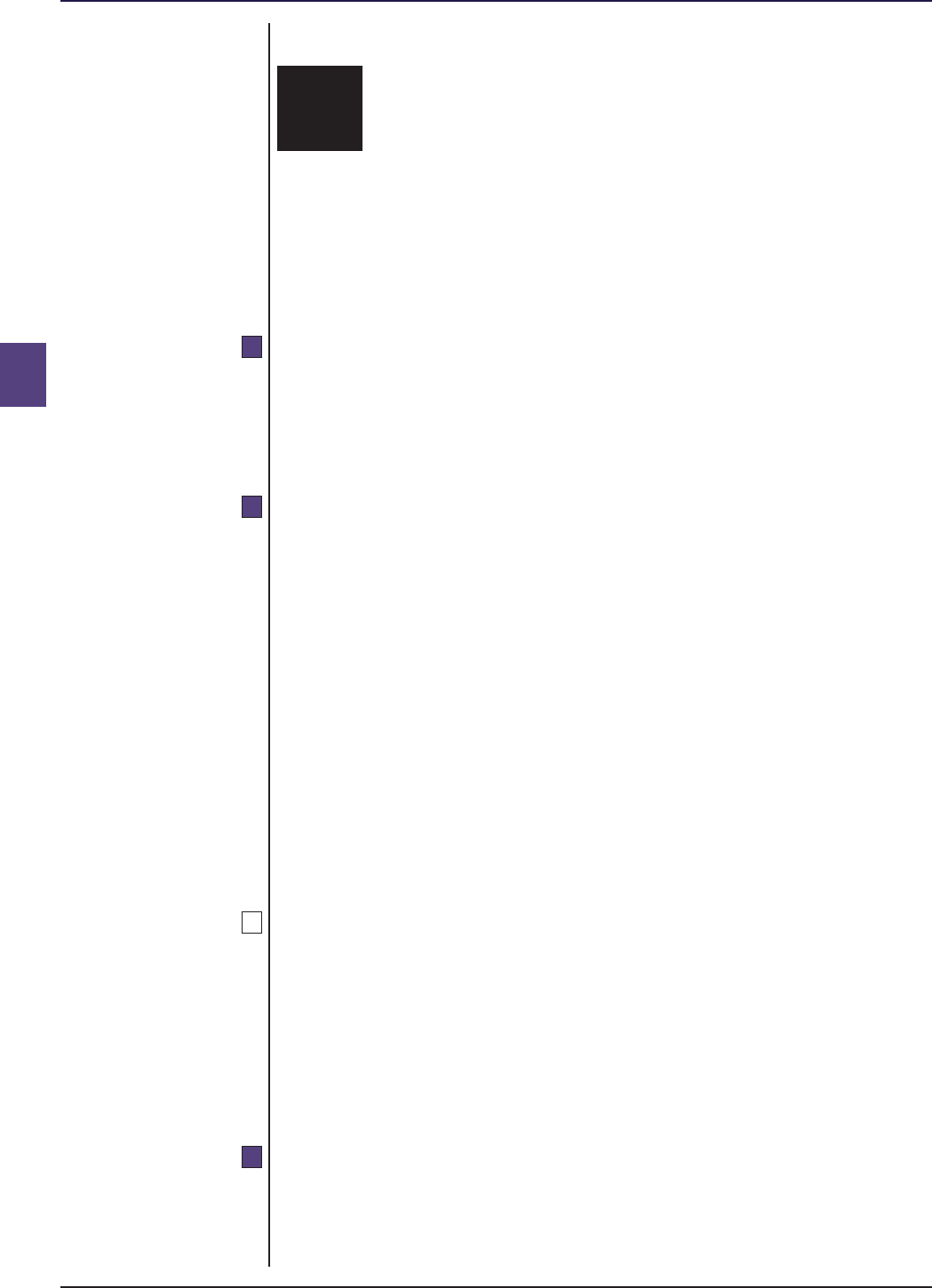
COLL 6 : Operating duties and Section 6.11 : Risk control and internal
responsibilities reporting
6
R6.11.1
R6.11.2
G6.11.3
R6.11.4
■ Release 39 ● Aug 2024www.handbook.fca.org.ukCOLL 6/92
6.11 Risk control and internal reporting
Application
.....................................................................................................
(1) This section applies to an authorised fund manager of a UCITS
scheme.
(2) [deleted]
Permanent risk management function
.....................................................................................................
(1) An authorised fund manager of a UCITS scheme must establish and
maintain a permanent risk management function.
(2) The function referred to in (1) must be hierarchically and functionally
independent from operating units, except where such independence
would not be appropriate and proportionate in view of the nature,
scale and complexity of the authorised fund manager’s business and
of each scheme it manages.
(3) The authorised fund manager must be able to demonstrate that:
(a) appropriate safeguards against conflicts of interest have been
adopted so as to allow an independent performance of risk
management activities; and
(b) its risk management process satisfies the requirements of
■ COLL 6.12.3 R (Risk management process).
[Note: articles 12(1) and 12(2) of the UCITS implementing Directive]
Where the risk management function required under ■ COLL 6.11.2 R (1) is not
hierarchically and functionally independent, the authorised fund manager
should nevertheless be able to demonstrate that its risk management process
satisfies the requirements of ■ COLL 6.12.3 R (Risk management process) and
that, in particular, the appropriate safeguards have been adopted.
[Note: article 12(2) third paragraph and recital (12) of the UCITS
implementing Directive]
Duties of the permanent risk management function
.....................................................................................................
(1) The permanent risk management function must:
(a) implement the risk management policy and procedures;
(b) ensure compliance with the risk limit system, including statutory
limits concerning global exposure and counterparty risk, as

COLL 6 : Operating duties and Section 6.11 : Risk control and internal
responsibilities reporting
6
■ Release 39 ● Aug 2024 www.handbook.fca.org.uk COLL 6/93
required by ■ COLL 5.2 (General investment powers and limits for
UCITS schemes) and ■ COLL 5.3 (Derivative exposure);
(c) provide advice to the governing body, as regards the
identification of the risk profile of each scheme it manages;
(d) provide regular reports to the governing body and, where it
exists, the supervisory function on:
(i) the consistency between the current level of risk incurred by
each scheme it manages and the risk profile agreed for that
scheme;
(ii) the compliance of each scheme it manages with the risk limit
system referred to in (b); and
(iii) the adequacy and effectiveness of the risk management
process, indicating in particular whether appropriate
remedial measures have been taken in the event of any
deficiencies;
(e) provide regular reports to the senior personnel outlining the
current level of risk incurred by the relevant scheme and any
actual or foreseeable breaches to their limits, so as to ensure that
prompt and appropriate remedial action can be taken; and
(f) review and support, where appropriate, the arrangements for the
valuation of OTC derivatives, as referred to in ■ COLL 5.2.23 R (OTC
transactions in derivatives), ■ COLL 5.2.23C R (Valuation of OTC
derivatives) and in this rule.
(2) The permanent risk management function must have the authority
and access to all relevant information necessary to fulfil the duties set
out in (1).
[Note: articles 12(3), 12(4) and 44(3) of the UCITS implementing Directive]

COLL 6 : Operating duties and Section 6.12 : Risk management policy and
responsibilities risk measurement
6 R6.12.1
G6.12.2
R6.12.3
R6.12.3A
■ Release 39 ● Aug 2024www.handbook.fca.org.ukCOLL 6/94
6.12 Risk management policy and risk
measurement
Application
.....................................................................................................
This section applies to an authorised fund manager and a depositary of a
UCITS scheme.
[deleted]
Risk management process
.....................................................................................................
(1) (a) An authorised fund manager of a UCITS scheme must use a risk
management process enabling it to monitor and measure at any
time the risk of the scheme's positions and their contribution to
the overall risk profile of the scheme.
(b) In particular, an authorised fund manager of a UCITS scheme
must not solely or mechanistically rely on credit ratings issued by
credit rating agencies, as defined in article 3(1)(b) of Regulation
(EC) No 1060/2009 of the European Parliament and of the Council
of 16 September 2009 on credit rating agencies, or credit rating
agencies as defined in the CRA Regulation, for assessing the
creditworthiness of the scheme's assets.
(2) An authorised fund manager must regularly notify the following
information to the FCA and at least on an annual basis:
(a) a true and fair view of the types of derivatives and forward
transactions to be used within the scheme together with their
underlying risks and any relevant quantitative limits; and
(b) the methods for estimating risks in derivative and forward
transactions.
[Note: article 51(1), first and third paragraphs, of the UCITS Directive and
article 45(1) of the UCITS implementing Directive]
An authorised fund manager subject to ■ COLL 6.12.3R(2) must notify the FCA
of the information specified in points (a) and (b) of that rule:
(1) annually, within 30 business days of 31 October, with information that
is accurate as of 31 October of that year;
(2) using the form in ■ COLL 6 Annex 2R; and

COLL 6 : Operating duties and Section 6.12 : Risk management policy and
responsibilities risk measurement
6
G6.12.3B
G6.12.4
■ Release 39 ● Aug 2024 www.handbook.fca.org.uk COLL 6/95
(3) by submitting it:
(a) online through the appropriate systems accessible from the FCA’s
website; or
(b) if the appropriate systems are unavailable, via email to
(1) In addition, an authorised fund manager subject to ■ COLL 6.12.3R(2)
should submit a notification to the FCA if there has been a significant
change to the fund’s risk profile since its last report, by sending the
form in ■ COLL 6 Annex 2R, completed as applicable, to
(2) A significant change to the fund’s risk profile could include, but is not
limited to:
(a) the first use of derivatives for investment purposes, if derivatives
have previously been used only for efficient portfolio
management;
(b) investment in non-standard derivatives, if only standard
derivatives have been used previously;
(c) a change in the type of risk measure used to calculate global
exposure (commitment method, relative VaR or absolute VaR);
and
(d) where a VaR measure is used, a change in the parameters of the
calculation.
(3) Reports of significant changes only need to contain new information
for the period since the previous report.
(1) The risk management process in ■ COLL 6.12.3 R should take account of
the investment objectives and policy of the scheme as stated in the
most recent prospectus.
(2) The depositary of a UCITS scheme should take reasonable care to
review the appropriateness of the risk management process in line
with its duties under ■ COLL 6.6.4 R (General duties of the depositary)
and ■ COLL 6.6.14 R (Duties of the depositary and authorised fund
manager: investment and borrowing powers), as appropriate.
(3) An authorised fund manager is expected to demonstrate more
sophistication in its risk management process for a scheme with a
complex risk profile than for one with a simple risk profile. In
particular, the risk management process should take account of any
characteristic of non-linear dependence in the value of a position to
its underlying.
(4) An authorised fund manager should take reasonable care to establish
and maintain such systems and controls as are appropriate to its
business as required by ■ SYSC 4.1 (General requirements).
(5) The risk management process should enable the analysis required by
■ COLL 6.12.3 R to be undertaken at least daily or at each valuation
point, whichever is more frequent.

COLL 6 : Operating duties and Section 6.12 : Risk management policy and
responsibilities risk measurement
6
R6.12.5
G6.12.6
R6.12.7
■ Release 39 ● Aug 2024www.handbook.fca.org.ukCOLL 6/96
(6) An authorised fund manager should undertake the risk assessment
required by ■ COLL 5.2.20R (7)(d) (Permitted transactions (derivatives
and forwards)) with the highest care when the counterparty to the
derivative transaction is an associate of the authorised fund manager
the UK UCITS management company or the credit issuer.
[Note: CESR's UCITS eligible assets guidelines with respect to article 8(2)(d) of
the UCITS eligible assets Directive]
Risk management policy
.....................................................................................................
(1) An authorised fund manager of a UCITS scheme must establish,
implement and maintain an adequate and documented risk
management policy for identifying the risks to which that scheme is
or might be exposed.
(2) The risk management policy must comprise such procedures as are
necessary to enable the authorised fund manager to assess the
exposure of each UCITS it manages to market risk, liquidity risk and
counterparty risk, and to all other risks, including operational risk,
that might be material for that scheme.
(3) The risk management policy must address at least the following
elements:
(a) the techniques, tools and arrangements that enable the
authorised fund manager to comply with the obligations set out
in this section and ■ COLL 5.3 (Derivative exposure);
(b) the allocation of responsibilities within the authorised fund
manager pertaining to risk management; and
(c) the terms, contents and frequency of reporting of the risk
management function referred to in ■ COLL 6.11.2 R (Permanent
risk management function) to the governing body, senior
personnel and, where appropriate, to the supervisory function.
(4) To meet its obligations in (1), (2) and (3) an authorised fund manager
must take into account the nature, scale and complexity of its
business and of the UCITS it manages.
[Note: article 38 of the UCITS implementing Directive]
[deleted]
Monitoring of risk management policy
.....................................................................................................
(1) An authorised fund manager of a UCITS scheme must assess, monitor
and periodically review:
(a) the adequacy and effectiveness of the risk management policy
and of the arrangements, processes and techniques referred to in
■ COLL 6.12.5 R;
(b) the level of compliance by the authorised fund manager with the
risk management policy and with those arrangements, processes
and techniques referred to in ■ COLL 6.12.5 R; and

COLL 6 : Operating duties and Section 6.12 : Risk management policy and
responsibilities risk measurement
6
G6.12.8
R6.12.9
■ Release 39 ● Aug 2024 www.handbook.fca.org.uk COLL 6/97
(c) the adequacy and effectiveness of measures taken to address any
deficiencies in the performance of the risk management process.
(2) The authorised fund manager must notify the FCA of any material
changes to the risk management process.
[Note: article 39(1) and 39(2) of the UCITS implementing Directive]
Authorised fund managers are advised that when they applied for
authorisation from the FCA under the Act, their ability to comply with the
requirements in ■ COLL 6.12.7 R would have been assessed by the FCA as an
aspect of their fitness and properness in determining whether the threshold
conditions set out in Schedule 6 (Threshold conditions) of the Act were met.
Firms are further advised that their compliance with these requirements is
subject to review by the FCA on an ongoing basis in determining whether
they continue to meet the threshold conditions.
[Note: article 39(3) of the UCITS implementing Directive]
Measurement and management of risk
.....................................................................................................
(1) An authorised fund manager of a UCITS scheme must adopt adequate
and effective arrangements, processes and techniques in order to:
(a) measure and manage at any time the risks to which that UCITS is
or might be exposed; and
(b) ensure compliance with limits concerning global exposure and
counterparty risk, in accordance with ■ COLL 5.2.11B R
(Counterparty risk and issuer concentration) and ■ COLL 5.3
(Derivative exposure).
(2) For the purposes of (1), the authorised fund manager must take the
following actions for each UCITS it manages:
(a) put in place such risk measurement arrangements, processes and
techniques as are necessary to ensure that the risks of positions
taken and their contribution to the overall risk profile are
accurately measured on the basis of sound and reliable data and
that the risk measurement arrangements, processes and
techniques are adequately documented;
(b) conduct, where appropriate, periodic back-tests in order to
review the validity of risk measurement arrangements which
include model-based forecasts and estimates;
(c) conduct, where appropriate, periodic stress tests and scenario
analyses to address risks arising from potential changes in market
conditions that might adversely impact the UCITS;
(d) establish, implement and maintain a risk limit system for each
UCITS;
(e) ensure that the current level of risk complies with that risk limit
system; and
(f) establish, implement and maintain adequate procedures that, in
the event of actual or anticipated breaches to that risk limit
system, result in timely remedial actions in the best interests of
unitholders.

COLL 6 : Operating duties and Section 6.12 : Risk management policy and
responsibilities risk measurement
6
G6.12.10
R6.12.11
R6.12.12
G6.12.13
■ Release 39 ● Aug 2024www.handbook.fca.org.ukCOLL 6/98
(3) The arrangements, processes and techniques referred to in (1) should
be proportionate in view of the nature, scale and complexity of the
business of the authorised fund manager and the UCITS it manages
and be consistent with the UCITS' risk profile.
[Note: articles 40(1) and 40(2) of the UCITS implementing Directive]
[deleted]
(1) An authorised fund manager must employ an appropriate liquidity
risk management process in order to ensure that each UCITS it
manages is able to comply at any time with ■ COLL 6.2.16 R (Sale and
redemption).
(2) Where appropriate, the authorised fund manager must conduct stress
tests to enable it to assess the liquidity risk of the UCITS under
exceptional circumstances.
[Note: article 40(3) of the UCITS implementing Directive]
An authorised fund manager must ensure that, for each UCITS it manages,
the liquidity profile of the investments of the scheme is appropriate to the
redemption policy laid down in the instrument constituting the fund or the
prospectus.
[Note: article 40(4) of the UCITS implementing Directive]
CESR guidelines: Risk management principles for UCITS
.....................................................................................................
Authorised fund managers are advised that CESR issued guidelines prior to
the revision of the UCITS Directive in 2009 which, to the extent they remain
compatible with the rules and other guidance in COLL, should be complied
with in applying the rules in this section. These guidelines are available at:
Guidelines - Risk management principles for UCITS (CESR/09-178)
https://www.esma.europa.eu/sites/default/files/library/2015/11/09_178.pdf

COLL 6 : Operating duties and Section 6.13 : Record keeping
responsibilities
6
R6.13.1
R6.13.2
R6.13.3
■ Release 39 ● Aug 2024 www.handbook.fca.org.uk COLL 6/99
6.13 Record keeping
Application
.....................................................................................................
(1) This section applies to an authorised fund manager of a UCITS
scheme.
(2) [deleted]
Recording of portfolio transactions
.....................................................................................................
(1) An authorised fund manager of a UCITS scheme must ensure, for each
portfolio transaction relating to a scheme it manages, that a record
of information which is sufficient to reconstruct the details of the
order and the executed transaction is produced without delay.
(2) The record referred to in (1) must include:
(a) the name or other designation of the scheme and of the person
acting on behalf of the scheme;
(b) the details necessary to identify the instrument in question;
(c) the quantity;
(d) the type of the order or transaction;
(e) the price;
(f) for orders, the date and exact time of the transmission of the
order and the name or other designation of the person to whom
the order was transmitted, or for transactions, the date and exact
time of the decision to deal and execution of the transaction;
(g) the name of the person transmitting the order or executing the
transaction;
(h) where applicable, the reasons for the revocation of an order; and
(i) for executed transactions, the counterparty and execution venue
identification.
[Note: article 14 of the UCITS implementing Directive]
Recording of subscription and redemption orders
.....................................................................................................
(1) An authorised fund manager of a UCITS scheme must take all
reasonable steps to ensure that every subscription and redemption
order it receives relating to units in any such scheme it manages are
centralised and recorded immediately after receipt of that order.

COLL 6 : Operating duties and Section 6.13 : Record keeping
responsibilities
6
R6.13.4
■ Release 39 ● Aug 2024www.handbook.fca.org.ukCOLL 6/100
(2) The record referred to in (1) must include information on the
following:
(a) the relevant scheme;
(b) the person giving or transmitting the order;
(c) the person receiving the order;
(d) the date and time of the order;
(e) the terms and means of payment;
(f) the type of the order;
(g) the date of execution of the order;
(h) the number of units subscribed or redeemed;
(i) the subscription or redemption price for each unit;
(j) the total subscription or redemption value of the units; and
(k) the gross value of the order including charges for subscription or
net amount after charges for redemption.
[Note: article 15 of the UCITS implementing Directive]
Recordkeeping requirements
.....................................................................................................
(1) An authorised fund manager of a UCITS scheme must ensure the
retention of the records referred to in ■ COLL 6.13.2 R and
■ COLL 6.13.3 R for a period of at least five years or, in exceptional
circumstances and where directed by the FCA, for a longer period,
determined by the nature of the instrument or portfolio transaction,
where it is necessary to enable the FCA to exercise its supervisory
functions in respect of UCITS schemes.
(2) Following the termination of its authorisation, an authorised fund
manager of a UCITS scheme must retain its records referred to in (1)
for the outstanding term of the five year period or, if it transfers its
responsibilities in relation to the UCITS to another authorised fund
manager, arrange for those records for the past five years to be
accessible to that other manager.
(3) The authorised fund manager must retain the records referred to in
■ COLL 6.13.2 R and ■ COLL 6.13.3 R in a medium that allows the storage
of information in a way accessible for future reference by the FCA,
and in such a form and manner that the following conditions are
met:
(a) the FCA must be able to access them readily and to reconstitute
each key stage of the processing of each portfolio transaction;
(b) it must be possible for any corrections or other amendments, and
the contents of the records prior to such corrections or
amendments, to be easily ascertained; and
(c) it must not be possible for the records to be otherwise
manipulated or altered.
[Note: article 16 of the UCITS implementing Directive]

COLL 6 : Operating duties and Section 6.13 : Record keeping
responsibilities
6
R6.13.5
R6.13.6
■ Release 39 ● Aug 2024 www.handbook.fca.org.uk COLL 6/101
Electronic data processing
.....................................................................................................
An authorised fund manager of a UCITS scheme must make appropriate
arrangements for suitable electronic systems so as to permit a timely and
proper recording of each portfolio transaction or subscription or redemption
order, in order to be able to comply with ■ COLL 6.13.2 R (Recording of
portfolio transactions) and ■ COLL 6.13.3 R (Recording of subscription and
redemption orders).
[Note: article 7(1) of the UCITS implementing Directive]
An authorised fund manager of a UCITS scheme must ensure a high level of
security during the electronic data processing referred to in ■ COLL 6.13.5 R as
well as the integrity and confidentiality of the recorded information, as
appropriate.
[Note: article 7(2) of the UCITS implementing Directive]

COLL 6 : Operating duties and Section 6.13 : Record keeping
responsibilities
6
■ Release 39 ● Aug 2024www.handbook.fca.org.ukCOLL 6/102

COLL 6 : Operating duties and Annex 2
responsibilities
6
■ Release 39 ● Aug 2024www.handbook.fca.org.ukCOLL 6 Annex 2/2

COLL 6 : Operating duties and Annex 3
responsibilities
6
Guidance notes on UK UCITS management company of UCITS schemes:
Derivative Use Report (FSA042: UCITS)
Description Guidance
Fund name This is the name of the scheme or, where applicable, of the
sub-fund as it appears on the FS Register.
PRN or LEI For a UCITS scheme, this is the product reference number of
the scheme or, where applicable, of the sub-fund which ap-
pears on the FS Register.
Derivative A forward, a future, an option, a swap, a warrant or an-
other type of derivative instrument.
Derivatives used for investment This means that derivatives are not being used solely in pur-
purposes suit of efficient portfolio management.
Global exposure Global exposure is calculated as either the incremental expo-
sure and leverage generated through the use of derivatives,
or the market risk of the scheme property, as set out in COLL
5.3.7R. Market risk is calculated using one of the stated risk
measures.
Risk measures For each scheme or, where applicable, sub-fund, information
should be provided for only one of the risk measures (com-
mitment approach, relative VaR or absolute VaR) indicated
in the table.
Average leverage In line with the CESR Guidelines (CESR/10-788), this is the
mean of all leverage calculations over the past twelve
months, leverage being calculated as the sum of the no-
tionals of the derivatives used.
Leverage limit In line with Box 24 of the CESR guidelines (CESR/10-788), the
usually expected or maximum expected level of leverage
should be provided. Where these are not applicable, please
provide the maximum leverage limit approved internally by
the authorised fund manager (or leave blank if appropriate
and provide an explanation in the comments box).
■ Release 39 ● Aug 2024 www.handbook.fca.org.uk COLL 6 Annex 3/1

COLL 6 : Operating duties and Annex 3
responsibilities
6
■ Release 39 ● Aug 2024www.handbook.fca.org.ukCOLL 6 Annex 3/2

Collective Investment Schemes
Chapter 7
Suspension of dealings,
termination of authorised
funds and side pockets
■ Release 39 ● Aug 2024 www.handbook.fca.org.uk COLL 7/1
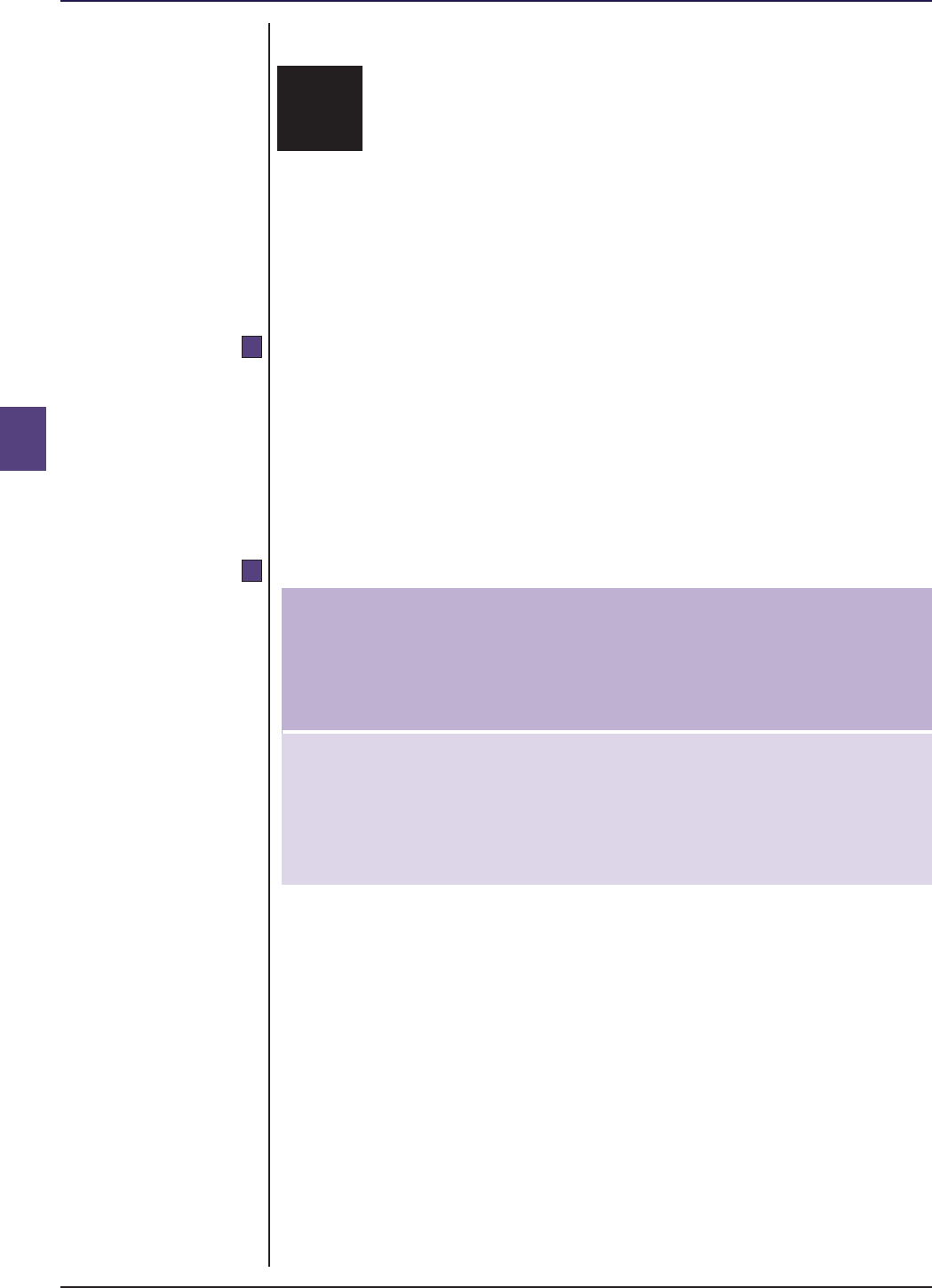
COLL 7 : Suspension of dealings, Section 7.1 : Introduction
termination of authorised funds
and side pockets
7
R7.1.1
R7.1.2
■ Release 39 ● Aug 2024www.handbook.fca.org.ukCOLL 7/2
7.1 Introduction
Application
.....................................................................................................
(1) This chapter applies to an ICVC, an ACD, any other director of an
ICVC, a depositary of an ICVC, an authorised fund manager of an AUT
or ACS and a depositary of an AUT or ACS, where such AUT, ACS or
ICVC is a UCITS scheme or a non-UCITS retail scheme in accordance
with ■ COLL 7.1.2 R (Table of application).
(2) ■ COLL 7.7 (UCITS mergers) applies only to a domestic UCITS merger.
Table of application
.....................................................................................................
This table belongs to ■ COLL 7.1.1 R.
Au-
thorised
Any fund
other manager Deposit-
directors Deposit- of an ary of an
of an ary of an AUT or AUT or
Rule ICVC ACD ICVC ICVC ACS ACS
7.1.1 x x x x x x
7.1.3 x x x x x x
7.2.-3* x x x x
7.2.-2* x x x x
7.2.-1* x x x x

COLL 7 : Suspension of dealings, Section 7.1 : Introduction
termination of authorised funds
and side pockets
7
G7.1.3
■ Release 39 ● Aug 2024 www.handbook.fca.org.uk COLL 7/3
Au-
thorised
Any fund
other manager Deposit-
directors Deposit- of an ary of an
of an ary of an AUT or AUT or
Rule ICVC ACD ICVC ICVC ACS ACS
7.2.1 x x x x x
7.3.1 x x x x
7.3.2 x x x x
7.3.3 x x x
7.3.4 x x x
7.3.5 x x
7.3.6 x x x
7.3.7 x x x x
7.3.8 x x
7.3.9 x
7.3.10 x x x x
7.3.11 x
7.3.12 x x
7.3.13 (1) x x
7.3.13 (2) x x
7.4* x x
7.4A* x x
7.5 x x x x x
7.6 x x x x x
7.7 x x x x x x
7.8 x x x x x x
Notes: (1) "x" means "applies", but not every paragraph in
every rule will necessarily apply.
(2) *COLL 7.4 does not apply to the authorised contrac-
tual scheme manager or depositary of an ACS.
(3) *COLL 7.4A does not apply to the manager or deposit-
ary of an AUT.
(4) COLL 7.2.-3R to 7.2.-1R apply only to the authorised
fund manager and depositary of a non-UCITS retail
scheme.
(5) COLL 7.8 (Side pockets) applies only to UCITS schemes
and non-UCITS retail schemes in which the au-
thorised fund manager intends to establish (or has es-
tablished) a side pocket class. The rules in COLL 7.8 do
not apply to a regulated money market fund.
Purpose
.....................................................................................................
(1) This chapter helps to achieve the statutory objective of protecting
investors by ensuring the authorised fund manager does not sell or
redeem units at a price that cannot be calculated accurately. For
instance, due to unforeseen circumstances, it may be impossible to

COLL 7 : Suspension of dealings, Section 7.1 : Introduction
termination of authorised funds
and side pockets
7
■ Release 39 ● Aug 2024www.handbook.fca.org.ukCOLL 7/4
value, or to dispose of and obtain payment for, all or some of the
scheme property of an authorised fund or sub-fund. ■ COLL 7.2.-3R,
■ COLL 7.2.-2R, ■ COLL 7.2.-1R, and ■ COLL 7.2.1 R set out the
circumstances in which an authorised fund manager must or may
suspend dealings in units and the manner in which a suspension takes
effect.
(2) This chapter also helps with the statutory objective of protecting
consumers, by providing a cost effective and fair means of winding up
authorised funds and terminating sub-funds of ICVCs, AUTs and co-
ownership schemes. ■ EG 14(Collective investment schemes) deals with
the FCA's powers to revoke the authorisation of authorised funds
otherwise than by consent.
(3) This chapter also helps to achieve the statutory objectives of
protecting consumers and protecting and enhancing the integrity of
the UK financial system, by enabling unitholders or potential
unitholders in a UCITS scheme or non-UCITS retail scheme with
affected investments to continue to deal in units representing assets
held in the scheme property that are not affected investments.

COLL 7 : Suspension of dealings, Section 7.2 : Suspension and restart of
termination of authorised funds dealings
and side pockets
7
R7.2.-3
R7.2.-2
■ Release 39 ● Aug 2024 www.handbook.fca.org.uk COLL 7/5
7.2 Suspension and restart of dealings
Requirement
.....................................................................................................
(1) This rule applies to the authorised fund manager of a non-UCITS
retail scheme if at any time:
(a) a standing independent valuer has expressed material uncertainty
in accordance with VPS 3 paragraph 2.2(o) and the guidance at
VPGA10, RICS Valuation Global Standards 2017 (The Red Book)
(effective from 1 July 2017), about the value of one or more
immovables under management and that material uncertainty
applies to at least 20% of the value of the scheme property; or
(b) the authorised fund invests at least 20% of the value of the
scheme property in units of one or more other authorised funds
for which dealings in units have been temporarily suspended
under (2).
(2) As soon as possible and in any event by the end of the second
business day after the day on which this rule starts to apply under (1),
the authorised fund manager must temporarily suspend dealings in
units in the authorised fund unless (3) applies.
(3) Dealings in units in the authorised fund may continue provided that:
(a) as soon as possible and in any event by the end of the second
business day after the day on which this rule starts to apply under
(1), the authorised fund manager and the depositary agree that
dealings in units in the authorised fund should continue;
(b) the authorised fund manager and the depositary have a
reasonable basis for determining that a temporary suspension of
dealings in units would not be in the best interests of unitholders
in the authorised fund; and
(c) the authorised fund manager and the depositary do not rely
solely on a fair value price adjustment when making their
determination under (b).
(1) This rule applies where the authorised fund manager of a non-UCITS
retail scheme is required to temporarily suspend dealings in units in
the authorised fund under ■ COLL 7.2.-3R(2) or ■ COLL 7.2.-1R(3).
(2) The authorised fund manager must notify the depositary before
suspending dealings in units in the authorised fund.
(3) During the suspension, the authorised fund manager must follow the
requirements set out in the following provisions, where applicable:

COLL 7 : Suspension of dealings, Section 7.2 : Suspension and restart of
termination of authorised funds dealings
and side pockets
7
R7.2.-1
■ Release 39 ● Aug 2024www.handbook.fca.org.ukCOLL 7/6
(a) ■ COLL 7.2.1R(2);
(b) ■ COLL 7.2.1R(2A);
(c) ■ COLL 7.2.1R(2B);
(d) ■ COLL 7.2.1R(2C);
(e) ■ COLL 7.2.1R(3);
(f) ■ COLL 7.2.1R(4A);
(g) ■ COLL 7.2.1R(5); and
(h) ■ COLL 7.2.1R(6).
(4) Dealings in units must restart as soon as reasonably practicable after:
(a) the standing independent valuer’s material uncertainty
assessment applies to less than 20% of the value of the scheme
property; and
(b) the scheme’s depositary gives its approval for the temporary
suspension to be removed.
(5) If a non-UCITS retail scheme operates limited redemption
arrangements and a suspension has prevented dealings in units at a
valuation point, the authorised fund manager must declare an
additional valuation point as soon as possible after the restart of
dealings in units.
(6) This rule applies to a sub-fund as it applies to an authorised fund,
and:
(a) references to the units of the class or classes relate to that sub-
fund and to the scheme property attributable to the sub-fund;
and
(b) this rule can only apply to one or more classes of units without
being applied to other classes if the authorised fund manager
considers that a suspension of dealings in units of some but not
all classes of units is in the best interest of all the unitholders of
that authorised fund or sub-fund.
(1) This rule applies where the authorised fund manager and the
depositary agree that dealings in units in the authorised fund should
continue under ■ COLL 7.2.-3R(3) and, if relevant, following a review
under this rule.
(2) During the period of material uncertainty (see (8) below), the
authorised fund manager and the depositary must review their
agreement not to suspend dealings in units in the authorised fund at
least every 14 days.
(3) Following such a review the authorised fund manager must
temporarily suspend dealings in units in the authorised fund unless
(4) applies.
(4) Dealings in units in the authorised fund may continue provided that:
(a) the authorised fund manager and the depositary agree that
dealings in units in the authorised fund should continue;

COLL 7 : Suspension of dealings, Section 7.2 : Suspension and restart of
termination of authorised funds dealings
and side pockets
7
R7.2.1
■ Release 39 ● Aug 2024 www.handbook.fca.org.uk COLL 7/7
(b) the authorised fund manager and the depositary have a
reasonable basis for determining that a temporary suspension of
dealings in units would not be in the best interests of unitholders
in the authorised fund; and
(c) the authorised fund manager and the depositary do not rely
solely on a fair value price adjustment when making their
determination under (b).
(6) The authorised fund manager must inform the FCA of the results of
each review.
(7) This rule applies to a sub-fund as it applies to an authorised fund,
and:
(a) references to the units of the class or classes relate to that sub-
fund and to the scheme property attributable to the sub-fund;
and
(b) this rule can only apply to one or more classes of units without
being applied to other classes if the authorised fund manager
considers a suspension of dealings in units of some but not all
classes of units is in the best interest of all the unitholders of that
authorised fund or sub-fund.
(8) In this rule, a “period of material uncertainty” is any period during
which one or both of ■ COLL 7.2.-3R(1)(a) and (b) applies.
(1) The authorised fund manager may, with the prior agreement of the
depositary, and must without delay, if the depositary so requires,
temporarily suspend the issue, cancellation, sale and redemption of
units in an authorised fund (referred to in this chapter as "dealings in
units"), where due to exceptional circumstances it is in the interest of
all the unitholders in the authorised fund. Where an authorised fund
is a regulated money market fund, the authorised fund manager
must ensure that any such suspensions are consistent with the Money
Market Funds Regulation.
(1A) The authorised fund manager and the depositary must ensure that
the suspension is only allowed to continue for as long as it is justified
having regard to the interests of the unitholders.
(2) On suspension, the authorised fund manager, or the depositary if it
has required the authorised fund manager to suspend dealings in
units, must:
(a) immediately inform the FCA, stating the reason for its action; and
(b) as soon as practicable give written confirmation of the suspension
and the reasons for it to the FCA.
(2A) The authorised fund manager must ensure that a notification of the
suspension is made to unitholders of the authorised fund as soon as
practicable after suspension commences.
(2B) In making the notification set out in (2A), the authorised fund
manager must ensure that it:
(a) draws unitholders' particular attention to the exceptional
circumstance which resulted in the suspension;

COLL 7 : Suspension of dealings, Section 7.2 : Suspension and restart of
termination of authorised funds dealings
and side pockets
7
■ Release 39 ● Aug 2024www.handbook.fca.org.ukCOLL 7/8
(b) is clear, fair and not misleading; and
(c) informs unitholders how to obtain the information detailed in
(2C).
(2C) The authorised fund manager must ensure that it publishes (on its
website or by other general means) sufficient details to keep
unitholders appropriately informed about the suspension including, if
known, its likely duration.
(3) During a suspension:
(a) none of the obligations in ■ COLL 6.2 (Dealing) apply; and
(b) the authorised fund manager must comply with as much of
■ COLL 6.3 (Valuation and pricing) as is practicable in the light of
the suspension.
(4) The suspension of dealings in units must cease as soon as practicable
after the exceptional circumstances referred to in (1) have ceased.
(4A) The authorised fund manager and the depositary must formally
review the suspension at least every 28 days and inform the FCA of
the results of this review and any change to the information provided
in (2).
(5) The authorised fund manager must inform the FCA of the proposed
restart of dealings in units and immediately after the restart must
confirm this by giving notice to the FCA.
(6) The authorised fund manager may agree, during the suspension, to
deal in units in which case all deals accepted during, and outstanding
prior to, the suspension will be undertaken at a price calculated at
the first valuation point after restart of dealing in units, subject to
(8).
(7) This rule applies to a sub-fund as it applies to an authorised fund,
and:
(a) references to the units of the class or classes relate to that sub-
fund and to the scheme property attributable to the sub-fund;
and
(b) this rule can only apply to one or more classes of units without
being applied to other classes, if it is in the interest of all the
unitholders.
(8) If an authorised fund operates limited redemption arrangements, and
the event in (1) has affected a valuation point, the authorised fund
manager must declare an additional valuation point as soon as
possible after the restart of dealings in units.
[Note: article 45(2) of the UCITS Directive]

COLL 7 : Suspension of dealings, Section 7.2 : Suspension and restart of
termination of authorised funds dealings
and side pockets
7
R7.2.1A
G7.2.2
■ Release 39 ● Aug 2024 www.handbook.fca.org.uk COLL 7/9
Temporary suspension of units of a master UCITS or qualifying
master scheme
.....................................................................................................
Where:
(1) an authorised fund manager of a UCITS scheme which is a master
UCITS or a qualifying master scheme temporarily suspends the issue,
cancellation, sale and redemption of its units, whether at its own
initiative or at the request of the FCA; or
(2) an operator of an EEA UCITS scheme which is a master UCITS or a
qualifying master scheme temporarily suspends the issue, cancellation,
sale or redemption of its units, whether at its own initiative or at the
request of its Home State regulator; or
(3) an authorised fund manager of a non-UCITS retail scheme which is a
qualifying master scheme temporarily suspends the issue, cancellation,
sale or redemption of its units, whether at its own initiative or at the
request of the FCA; or
(4) the operator of a recognised scheme which is a qualifying master
scheme temporarily suspends the issue, cancellation, sale or
redemption of its units whether at its own initiative or at the request
of its regulator;
the authorised fund manager of each of its feeder UCITS (which is a UCITS
scheme) or feeder NURS is entitled to suspend the issue, cancellation, sale or
redemption of its units for the same period of time as the master UCITS or
qualifying master scheme.
[Note: article 60(3) of the UCITS Directive]
Guidance
.....................................................................................................
(-1) The guidance in (1), (1A) and (1B) does not apply in circumstances
where an authorised fund manager is required to temporarily
suspend dealings in units in an authorised fund under ■ COLL 7.2.-3R
or ■ COLL 7.2.-1R.
(1) Suspension should be allowed only in exceptional cases where
circumstances so require and suspension is justified having regard to
the interests of the unitholders.
(1A) Except in the case of FIIAs (for which see (1B) below), difficulties in
realising scheme assets or temporary shortfalls in liquidity may not on
their own be sufficient justification for suspension. In such
circumstances the authorised fund manager and depositary would
need to be confident that suspension could be demonstrated
genuinely to be in the best interests of the unitholders. Before an
authorised fund manager and depositary determine that it is in the
best interests of unitholders to suspend dealing, they should ensure
that any alternative courses of action have been discounted.
(1B) In the case of FIIAs, there may be circumstances where suspension is
genuinely in the best interests of unitholders; for example, where
orders received for redemptions of units at the next valuation period
cannot be executed without significantly depleting the scheme’s

COLL 7 : Suspension of dealings, Section 7.2 : Suspension and restart of
termination of authorised funds dealings
and side pockets
7
■ Release 39 ● Aug 2024www.handbook.fca.org.ukCOLL 7/10
liquidity, and/or without selling scheme property at a substantial
discount to its open market value.
(2) The authorised fund manager will need to ensure that any
suspension, while maintaining unitholders' interests, is temporary, of
minimal duration and is consistent with the provisions of the
prospectus and the instrument constituting the fund.
(3) During a suspension, the authorised fund manager should inform any
person who requests a sale or redemption of units that all dealings in
units have been suspended and that that person has the option to
withdraw the request during the period of suspension or have the
request executed at the first opportunity after the suspension ends.
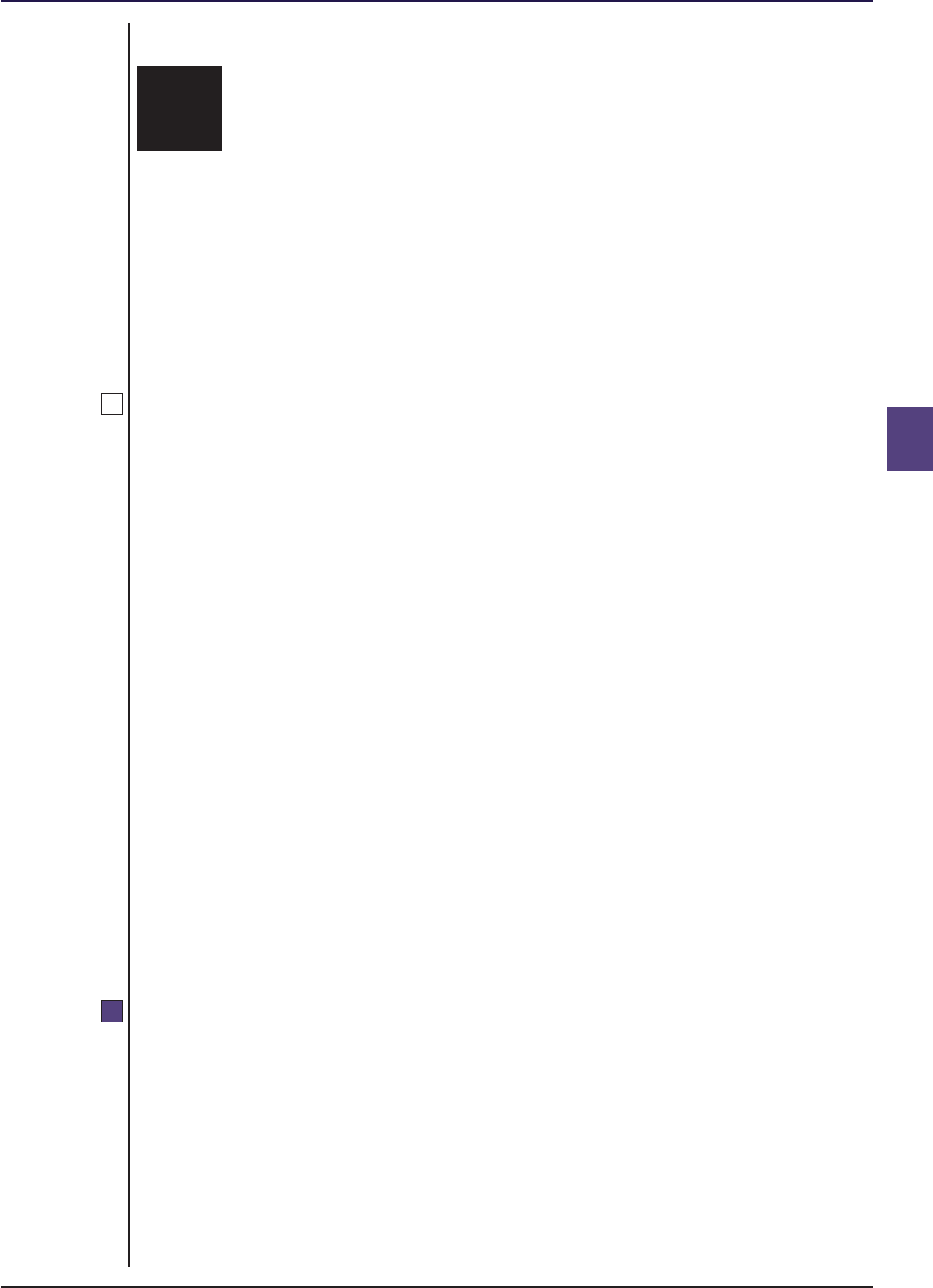
COLL 7 : Suspension of dealings, Section 7.3 : Winding up a solvent ICVC and
termination of authorised funds terminating or winding up a sub-fund of an
and side pockets ICVC
7
G7.3.1
R7.3.2
■ Release 39 ● Aug 2024 www.handbook.fca.org.uk COLL 7/11
7.3 Winding up a solvent ICVC and
terminating or winding up a sub-
fund of an ICVC
Explanation of COLL 7.3
.....................................................................................................
(1) The winding up of an ICVC may be carried out under this section
instead of by the court provided the ICVC is solvent and the steps
required under regulation 21 the OEIC Regulations (The Authority's
approval for certain changes in respect of a company) are fulfilled.
This section lays down the procedures to be followed and the
obligations of the ACD and any other directors of the ICVC.
(2) The termination of a sub-fund may be carried out under this section,
instead of by the court, provided the sub-fund is solvent and the
steps required under regulation 21 of the OEIC Regulations are
complied with. Termination can only commence once the proposed
alterations to the ICVC's instrument of incorporation and prospectus
have been notified to the FCA and permitted to take effect. On
termination, the assets of the sub-fund will normally be realised, and
the unitholders in the sub-fund will receive their respective share of
the proceeds net of liabilities and the expenses of the termination.
(3) A sub-fund or ICVC may also be terminated or wound up in
connection with a scheme of arrangement. unitholders will become
entitled to receive units in another regulated collective investment
scheme in exchange for their units.
(4) ■ COLL 7.3.3 G gives an overview of the main steps in winding up a
solvent ICVC or terminating a sub-fund under FCA rules, assuming
FCA approval.
Special meanings for termination of a sub-fund of an ICVC
.....................................................................................................
In this section, where a sub-fund of an ICVC is being terminated, references
to:
(1) units, are references to units of the class or classes related to the sub-
fund to be terminated;
(2) a resolution, or extraordinary resolution, are references to such a
resolution passed at a meeting of unitholders of units of the class or
classes referred to in (1);
(3) scheme property, are references to the scheme property allocated or
attributable to the sub-fund to be terminated; and

COLL 7 : Suspension of dealings, Section 7.3 : Winding up a solvent ICVC and
termination of authorised funds terminating or winding up a sub-fund of an
and side pockets ICVC
7
G7.3.3
■ Release 39 ● Aug 2024www.handbook.fca.org.ukCOLL 7/12
(4) liabilities, are references to liabilities of the ICVC allocated or
attributable to the sub-fund to be terminated.
Guidance on winding up or termination
.....................................................................................................
This table belongs to ■ COLL 7.3.1 G (4) (Explanation of COLL 7.3)
Summary of the main steps in winding up a solvent ICVC or terminating a
sub-fund under FCA rules, assuming FCA approval.
Notes: N = Notice to be given to the FCA under regulation 21 of OEIC Re-
gulations
E = commencement of winding up or termination
W/U = winding up
FAP = final accounting period (COLL 7.3.8 R(4))
Step number Explanation When COLL rule (unless
stated
otherwise)
1 Commence pre- N-28 days 7.3.5 (2)
paration of solv-
ency statement
2 Send audited By N + 21 days 7.3.5 (4) and (5)
solvency state-
ment to the FCA
with copy to de-
positary
3 Receive the FCA N + one month Regulation 21 of
approval OEIC Regulations
4 Normal business E 7.3.6
ceases; notify un-
itholders
5 Realise proceeds, ASAP after E 7.3.7
wind up, instruct
depositary ac-
cordingly
6 Prepare final ac- On completion 7.3.8
count or ter- of W/U or ter-
mination ac- mination
count & have ac-
count audited
7 Send final ac- Within 4 months 7.3.8(6)
count or ter- of FAP
mination ac-
count and aud-
itor's report to
the FCA & un-
itholders
8 Request FCA to On completion 7.3.7(9)
revoke relevant of W/U or ter-
authorisation mination
order or update
its records

COLL 7 : Suspension of dealings, Section 7.3 : Winding up a solvent ICVC and
termination of authorised funds terminating or winding up a sub-fund of an
and side pockets ICVC
7
R7.3.4
■ Release 39 ● Aug 2024 www.handbook.fca.org.uk COLL 7/13
When an ICVC is to be wound up or a sub-fund terminated or
wound up
.....................................................................................................
(1) An ICVC must not be wound up except:
(a) under this section; or
(b) as an unregistered company under Part V of the Insolvency Act
1986.
(1A) A sub-fund must not:
(a) be terminated except under this section; or
(b) wound up except under Part V of the Insolvency Act 1986 (as
modified by regulation 33C of the OEIC Regulations) as an
unregistered company.
(2) An ICVC must not be wound up or a sub-fund terminated under this
section if there is a vacancy in the position of ACD.
(3) An ICVC must not be wound up or a sub-fund terminated under this
section:
(a) unless and until effect may be given, under regulation 21 of the
OEIC Regulations, to proposals to wind up the affairs of the ICVC
or to proposals to make the alterations to the ICVC's instrument
of incorporation and prospectus that will be required if a sub-
fund is terminated;
(b) unless a statement has been prepared and sent or delivered to
the FCA under ■ COLL 7.3.5 R (Solvency statement) and received by
the FCA prior to satisfaction of the condition in (a); and
(c) where a person may have a right to make a repayment claim
under sections 9 to 11 of the Dormant Assets Act 2022 in respect
of an eligible CIS amount relating to the authorised fund or sub-
fund, the ACD and the depositary have ensured that any records
required under ■ COLL 6.6.6R(5) and ■ COLL 6.6.6R(6) (Maintenance
of records) are:
(i) accessible by the ACD or the depositary and will be
preserved; or
(ii) transferred to a dormant asset fund operator or to another
authorised person that has undertaken to preserve them.
(4) Subject to (3) and the subsequent provisions of this section, the
appropriate steps to wind up an ICVC or terminate a sub-fund under
this section must be taken:
(a) if an extraordinary resolution to that effect is passed; or
(b) when the period (if any) fixed for the duration of the ICVC or the
sub-fund by the instrument of incorporation expires or any event
occurs, for which the instrument of incorporation provides that
the ICVC or the sub-fund is to be wound up or terminated; or
(c) on the date stated in any agreement by the FCA in response to a
request from the directors for the winding up of the ICVC or a
request for the termination of the sub-fund; or
(d) on the effective date of a duly approved scheme of arrangement
which is to result in the ICVC ceasing to hold any scheme
property; or

COLL 7 : Suspension of dealings, Section 7.3 : Winding up a solvent ICVC and
termination of authorised funds terminating or winding up a sub-fund of an
and side pockets ICVC
7
R7.3.5
R7.3.6
■ Release 39 ● Aug 2024www.handbook.fca.org.ukCOLL 7/14
(e) in the case of a sub-fund, on the effective date of a duly
approved scheme of arrangement which is to result in the sub-
fund ceasing to hold any scheme property; or
(f) in the case of an ICVC that is an umbrella, on the date on which
all of its sub-funds fall within (e) or have otherwise ceased to
hold any scheme property, notwithstanding that the ICVC may
have assets and liabilities that are not attributable to any
particular sub-fund.
Solvency statement
.....................................................................................................
(1) Before notice is given to the FCA under regulation 21 of the OEIC
Regulations of the proposals referred to in ■ COLL 7.3.4 R (3), the
directors must make a full enquiry into the ICVC's or, in the case of
termination of a sub-fund, the sub-fund's affairs, business and
property to determine whether the ICVC or the sub-fund will be able
to meet all its liabilities.
(2) The ACD must then, based on the results of this enquiry, prepare a
statement either:
(a) confirming that the ICVC or the sub-fund will be able to meet all
its liabilities within twelve months of the date of the statement;
or
(b) stating that such confirmation cannot be given.
(3) This solvency statement must:
(a) relate to the ICVC's or the sub-fund's affairs, business and
property at a date no more than 28 days before the date on
which notice is given to the FCA;
(b) if there is more than one director, be approved by the board of
directors and signed on their behalf by the ACD; and
(c) if it contains the confirmation under (2)(a), be signed by at least
one other director or, if there is no director other than the ACD,
be signed by the ACD.
(4) A statement which contains the confirmation under (2)(a) must annex
a statement signed by the auditor appointed under Schedule 5 to the
OEIC Regulations (Auditors) to the effect that, in his opinion, the
enquiry required by (1) has been properly made and is fairly reflected
by the confirmation.
(5) The solvency statement must be sent or delivered to the FCA and the
depositary no later than 21 days after notice is given to the FCA in
accordance with regulation 21 of the OEIC Regulations.
Consequences of commencement of winding up or termination
.....................................................................................................
(1) Winding up or termination must commence once the conditions
referred to in ■ COLL 7.3.4 R (3) are both satisfied or, if later, once the
events in ■ COLL 7.3.4 R (4) have occurred.
(2) Once winding up or termination has commenced:

COLL 7 : Suspension of dealings, Section 7.3 : Winding up a solvent ICVC and
termination of authorised funds terminating or winding up a sub-fund of an
and side pockets ICVC
7
R7.3.7
■ Release 39 ● Aug 2024 www.handbook.fca.org.uk COLL 7/15
(a) ■ COLL 6.2 (Dealing), ■ COLL 6.3 (Valuation and pricing),
■ COLL 6.6.20R to ■ COLL 6.6.24G (Assessment of value) and ■ COLL 5
(Investment and borrowing powers) cease to apply to the ICVC or
to the units and scheme property in the case of a sub-fund;
(b) the ICVC must cease to issue and cancel units, except in respect of
the final cancellation under ■ COLL 7.3.7 R (5);
(c) the ACD must cease to sell or redeem units or to arrange for the
issue or cancellation of units, except in respect of the final
cancellation under ■ COLL 7.3.7 R (5);
(d) no transfer of a unit may be registered and no other change to
the register of unitholders may be made without the sanction of
the directors;
(e) where winding up an ICVC, the ICVC must cease to carry on its
business, except for its beneficial winding up; and
(f) the corporate status and corporate powers of the ICVC and
(subject to the preceding provisions of this rule) the powers of
the directors continue until the ICVC is dissolved.
(3) If the ACD has not previously notified unitholders of the proposal to
wind up the ICVC or terminate the sub-fund, the ACD must, as soon
as practicable after winding up or termination has commenced, give
written notice of the commencement of the winding up or
termination to the unitholders.
Manner of winding up or termination
.....................................................................................................
(1) [deleted]
(2) The ACD must, as soon as practicable after winding up or termination
has commenced, cause the scheme property to be realised and the
liabilities of the ICVC or the sub-fund to be met out of the proceeds.
(3) The ACD must instruct the depositary how such proceeds (until
utilised to meet liabilities or make distributions to unitholders) must
be held and those instructions must be prepared with a view to the
prudent protection of creditors and unitholders against loss.
(4) Where sufficient liquid funds are available after making adequate
provision for the expenses of the winding up or termination and the
discharge of the ICVC's or the sub-fund's remaining liabilities, the
ACD may arrange for the depositary to make one or more interim
distributions to the unitholders proportionately to the right of their
respective units to participate in scheme property at the
commencement of the winding up or termination.
(5) On or before the date on which the final account is sent to
unitholders in accordance with ■ COLL 7.3.8 R (Final account and
termination account), the ACD must arrange for all units in issue to
be cancelled and for the depositary to make a final distribution to
the unitholders, in the same proportions as provided by (4), of the
balance remaining (net of a provision for any further expenses of the
ICVC or sub-fund).

COLL 7 : Suspension of dealings, Section 7.3 : Winding up a solvent ICVC and
termination of authorised funds terminating or winding up a sub-fund of an
and side pockets ICVC
7
G7.3.7A
■ Release 39 ● Aug 2024www.handbook.fca.org.ukCOLL 7/16
(6) Paragraphs (2) to (5) are subject to the terms of any scheme of
arrangement sanctioned by an extraordinary resolution passed on or
before the commencement of the winding up or termination.
(7) Where the ICVC and one or more unitholders (other than the ACD)
agree, the requirement in (2) to realise the scheme property does not
apply to that part of the scheme property which is proportionate to
the right to participate in scheme property of that or those
unitholders
(8) In the case of (7), the ACD must cause the ICVC to distribute that part
of the scheme property in specie to that or those unitholders in
proportion to their respective rights to participate, this distribution
being effected after making adjustments and retaining such provision
as appears to the ACD appropriate to ensure that those unitholders
bear the proportion of the liabilities and the expenses of the
distribution attributable to their units.
(9) The depositary must notify the FCA once the winding up of the ICVC
or the termination of a sub-fund (including compliance with
■ COLL 7.3.8 R is complete and at the same time the ACD or the
depositary must request the FCA to revoke the relevant authorisation
order (on the winding up of an ICVC) or to update its records (on the
termination of a sub-fund of an ICVC).
(10) Where any sum of money stands to the account of the ICVC at the
date of its dissolution or a sub-fund at the date of its termination, the
ACD must arrange for the depositary to pay or lodge that sum within
one month after that date in accordance with regulation 33(4), (5) or
(6) of the OEIC Regulations (Dissolution in other circumstances),
where relevant, as applied by regulation 33C of the OEIC Regulations
(Winding up of sub-funds).
(11) [deleted]
(12) [deleted]
(13) [deleted]
(14) [deleted]
(15) [deleted]
For the purposes of this section an ICVC may be treated as having been
wound up or a sub-fund terminated upon completion, where relevant, of all
of the steps in (1) to (3):
(1) payment or adequate provision being made (by the ACD) to cover the
expenses relating to the winding up or termination and all liabilities
of the scheme;
(2) the scheme property being realised or distributed in accordance with
■ COLL 7.3.7 R (8); and
(3) the net proceeds being distributed to the unitholders named in the
register on the date on which winding up or termination commenced,
or provision being made in respect of the final distribution.

COLL 7 : Suspension of dealings, Section 7.3 : Winding up a solvent ICVC and
termination of authorised funds terminating or winding up a sub-fund of an
and side pockets ICVC
7
G7.3.7B
R7.3.8
■ Release 39 ● Aug 2024 www.handbook.fca.org.uk COLL 7/17
Transfers of orphan monies to a dormant asset fund operator
.....................................................................................................
(1) Under regulation 33 of the OEIC Regulations, where an ICVC is
dissolved otherwise than by the court, any sum of money (including
unclaimed distributions) standing to the account of the ICVC at the
date of the dissolution must be paid into court. This duty does not
apply if (or to the extent that) it is transferred to a dormant asset
fund operator as orphan monies.
(2) Under the Dormant Assets Act 2022, orphan monies may be
transferred to a dormant asset fund operator where they are a
dormant asset. This means that only the proportion of outstanding
money that is attributable pro rata to a ‘gone-away’ person (see
section 10 of the Dormant Assets Act 2022) can be transferred as a
dormant asset. However, a person with whom the ACD or the
depositary is still in contact could be invited to donate de minimis
amounts as unwanted asset money for transfer to the dormant asset
fund operator (see ■ COLL 6.8.4AR (Unwanted asset money)).
(3) Where a transfer of orphan monies to a dormant asset fund operator
is possible in accordance with the instrument constituting the fund,
the prospectus and sections 8 and 9 of the Dormant Assets Act 2022,
the FCA would expect this to be the preferred option for the ICVC.
Final account and termination account
.....................................................................................................
(1) Once the ICVC's affairs are wound up or termination of the sub-fund
has been completed (including distribution or provision for
distribution in accordance with ■ COLL 7.3.7 R (5)), the ACD must
prepare an account of the winding up or termination showing:
(a) how it has been conducted; and
(b) how the scheme property has been disposed of.
(2) The account in (1) must be, if there is:
(a) more than one director, approved by the board of directors and
be signed on their behalf by the ACD and at least one other
director; or
(b) no director other than the ACD, signed by the ACD.
(3) Once signed, this account is the "final account" for the purposes of
the winding up of an ICVC and the "termination account" for the
purposes of the termination of a sub-fund.
(4) The final account must state the date on which the ICVC's affairs
were wound up and the date stated must be regarded as the final
day of the accounting period of the ICVC then running ('final
accounting period') for the purpose of ■ COLL 4.5.
(4A) The termination account must state the date on which the sub-fund's
affairs were terminated.
(5) The ACD must ensure that the ICVC's auditor makes a report in
respect of the final account or termination account, which states the
auditor's opinion whether the final account or termination account
has been properly prepared for the purpose of (1).

COLL 7 : Suspension of dealings, Section 7.3 : Winding up a solvent ICVC and
termination of authorised funds terminating or winding up a sub-fund of an
and side pockets ICVC
7
R7.3.9
R7.3.10
G7.3.10A
■ Release 39 ● Aug 2024www.handbook.fca.org.ukCOLL 7/18
(6) Within four months of the date of the completion of the winding up
of the ICVC or termination of the sub-fund, the ACD must send a
copy of the final account or termination account and the auditor's
report on it to the FCA and to each person who was a unitholder (or
the first named of joint unitholders) immediately before the winding
up or termination commenced.
Duty to ascertain liabilities
.....................................................................................................
(1) The ACD must use all reasonable endeavours to ensure that all the
liabilities of the ICVC or the sub-fund are discharged before the
completion of the winding up or termination.
(2) The duty in (1) relates to all liabilities of which the ACD:
(a) is, or becomes, aware before the completion of the winding up
or termination; or
(b) would have become aware before the completion of the winding
up or termination had it used all reasonable endeavours to
ascertain the liabilities.
(3) If the ACD rejects any claim against the ICVC or the sub-fund in whole
or part or against the ICVC or the sub-fund in respect of a liability in
whole or part, the ACD must immediately send to the claimant
written notice of its reasons for doing so.
Reports and accounts
.....................................................................................................
(1) [deleted]
(1A) [deleted]
(2) For any annual accounting period or half-yearly accounting period
which begins after commencement of the winding up or termination,
a copy of the long report must be supplied free of charge to any
unitholder upon request.
(3) The ACD must ensure that it keeps unitholders appropriately
informed about the winding up or termination including, if known,
its likely duration.
(4) The ACD must send a copy of the information required by (3) to each
person who was a unitholder or the first named of joint unitholders
immediately before the winding up or termination commenced,
unless a final distribution has been made in accordance with
■ COLL 7.3.7 R (5).
(1) The effect of ■ COLL 7.3.10R is that the ACD must continue to prepare
annual and half-yearly long reports and to make them available to
unitholders in accordance with ■ COLL 4.5.14 R.
(2) Where there are outstanding unrealised assets, keeping unitholders
appropriately informed may, for example, be carried out by providing
updates at six-monthly or more frequent intervals.

COLL 7 : Suspension of dealings, Section 7.3 : Winding up a solvent ICVC and
termination of authorised funds terminating or winding up a sub-fund of an
and side pockets ICVC
7
R7.3.11
R7.3.12
R7.3.13
■ Release 39 ● Aug 2024 www.handbook.fca.org.uk COLL 7/19
Liabilities of the ACD
.....................................................................................................
(1) Except to the extent that the ACD can show that it has complied with
■ COLL 7.3.9 R (Duty to ascertain liabilities), the ACD is personally liable
to meet any liability of an ICVC or a sub-fund, of which it is the ACD,
wound up or terminated under this section (whether or not the ICVC
has been dissolved or, in the case of the sub-fund, termination has
been completed) that was not discharged before the completion of
the winding up or termination.
(2) Where winding up an ICVC, if the proceeds of the realisation of the
assets attributable, or allocated to a particular sub-fund of an
umbrella ICVC are insufficient to meet the liabilities attributable or
allocated to that sub-fund, the ACD must pay to the ICVC, for the
account of that sub-fund the amount of the deficit, unless and to the
extent that the ACD can show that the deficit did not arise as a result
of any failure by the ACD to comply with the rules in COLL.
(3) The liabilities of the ACD under this rule create a debt (in England
and Wales in the nature of a specialty) accruing due from it on the
completion of the winding up or termination and payable upon the
demand of the creditor in question (including the ICVC in the
circumstances described in (2)).
(4) The obligations of the ACD under this rule do not affect any other
obligation of the ACD under these rules or the general law.
[deleted]
Miscellaneous
.....................................................................................................
(1) If:
(a) during the course, or as a result, of the enquiry referred to in
■ COLL 7.3.5 R (1) (Solvency statement), the directors become of the
opinion that it will not be possible to provide the confirmation
referred to in (2)(a) of that rule; or
(b) after winding up or termination has commenced, the ACD
becomes of the opinion that the ICVC or the sub-fund will be
unable to meet all its liabilities within twelve months of the date
of the statement provided under (a) of ■ COLL 7.3.5 R (2);
the directors must immediately present a petition or cause the ICVC
or sub-fund to present a petition for the winding up of the ICVC or
sub-fund as an unregistered company under Part V of the Insolvency
Act 1986.
(2) If, after the commencement of a winding up or termination under
this chapter and before notice of completion of the winding up or
termination has been sent to the FCA, there is a vacancy in the
position of ACD:
(a) the directors of the ICVC must immediately present or cause the
ICVC or sub-fund to present; or
(b) if there are no directors, the depositary must immediately
present;

COLL 7 : Suspension of dealings, Section 7.3 : Winding up a solvent ICVC and
termination of authorised funds terminating or winding up a sub-fund of an
and side pockets ICVC
7
■ Release 39 ● Aug 2024www.handbook.fca.org.ukCOLL 7/20
a petition for the winding up of the ICVC or sub-fund as an
unregistered company under Part V of the Insolvency Act 1986.

COLL 7 : Suspension of dealings, Section 7.4 : Winding up an AUT and
termination of authorised funds terminating a sub-fund of an AUT
and side pockets
7
G7.4.1
R7.4.2
■ Release 39 ● Aug 2024 www.handbook.fca.org.uk COLL 7/21
7.4 Winding up an AUT and terminating
a sub-fund of an AUT
Explanation of COLL 7.4
.....................................................................................................
(1) This section deals with the circumstances and manner in which an
AUT is to be wound up or a sub-fund of an AUT is to be terminated.
Under section 256 of the Act (Requests for revocation of
authorisation order), the manager or trustee of an AUT may request
the FCA to revoke the authorisation order in respect of that AUT.
Section 257 of the Act (Directions) gives the FCA the power to make
certain directions.
(2) The termination of a sub-fund under this section will be subject to
section 251 of the Act (Alteration of schemes and changes of
manager or trustee). Termination can only commence once the
proposed alterations to the trust deed and prospectus have been
notified to the FCA in writing and permitted to take effect. On
termination, the assets of the sub-fund will normally be realised, and
the unitholders in the sub-fund will receive their respective share of
the proceeds net of liabilities and the expenses of the termination.
(3) An AUT or a sub-fund of an AUT may also be wound up or
terminated in connection with a scheme of arrangement. unitholders
will become entitled to receive units in another regulated collective
investment scheme in exchange for their units.
(4) ■ COLL 7.4.2A G gives an overview of the main steps in winding up an
AUT or terminating a sub-fund under FCA rules, assuming FCA
approval.
Special meanings for termination of a sub-fund of an AUT
.....................................................................................................
In this section, where a sub-fund of an AUT is being terminated, references
to:
(1) units, are references to units of the class or classes related to the sub-
fund to be terminated;
(2) a resolution or extraordinary resolution, are references to such a
resolution passed at a meeting of unitholders of units of the class or
classes referred to in (1);
(3) scheme property, are references to the scheme property allocated or
attributable to the sub-fund to be terminated; and

COLL 7 : Suspension of dealings, Section 7.4 : Winding up an AUT and
termination of authorised funds terminating a sub-fund of an AUT
and side pockets
7
G7.4.2A
R7.4.3
■ Release 39 ● Aug 2024www.handbook.fca.org.ukCOLL 7/22
(4) liabilities, are references to liabilities of the AUT allocated or
attributable to the sub-fund to be terminated.
Guidance on winding up or termination
.....................................................................................................
This table belongs to ■ COLL 7.4.1 G (4) (Explanation of COLL 7.4)
Summary of the main steps in winding up an AUT or terminating a sub-
fund under FCA rules
Notes: N = Notice to be given to the FCA under section 251 of the Act.
E = commencement of winding up or termination
W/U = winding up
FAP = final accounting period (COLL 7.4.5 R (4))
Step COLL rule (unless
number Explanation When stated otherwise)
1 Receive FCA N + one month Section 251 of the
approval Act
On receipt of no-
tice from the FCA
2 Normal business E 7.4.3R
ceases; notify un-
itholders
3 Trustee to realise ASAP after E 7.4.4R(1) to (5)
and distribute
proceeds
4 Send annual long Within 4 months 7.4.5R(5)
report of manager of FAP
and trustee to the
FCA
5 Request FCA to re- On completion of 7.4.4R(6)
voke relevant au- W/U
thorisation order
When an AUT is to be wound up or a sub-fund terminated
.....................................................................................................
(1) Upon the happening of any of the events or dates referred to in (2)
and not otherwise:
(a) ■ COLL 6.2 (Dealing), ■ COLL 6.3 (Valuation and pricing),
■ COLL 6.6.20R to ■ COLL 6.6.24G (Assessment of value) and ■ COLL 5
(Investment and borrowing powers) cease to apply to the AUT or
to the units and scheme property in the case of a sub-fund;
(b) the trustee must cease to issue and cancel units, except in respect
of the final cancellation under ■ COLL 7.4.4 R (1) or ■ (2);
(c) the manager must cease to sell and redeem units;
(d) the manager must cease to arrange the issue or cancellation of
units under ■ COLL 6.2.7 R (Issue and cancellation of units through
an authorised fund manager), except in respect of the final
cancellation under ■ COLL 7.4.4 R (1) or ■ (2);
(dA) no transfer of a unit may be registered and no other change to
the register of unitholders may be made without the approval of
the person responsible for the register in accordance with
■ COLL 6.4.4 R (1); and

COLL 7 : Suspension of dealings, Section 7.4 : Winding up an AUT and
termination of authorised funds terminating a sub-fund of an AUT
and side pockets
7
■ Release 39 ● Aug 2024 www.handbook.fca.org.uk COLL 7/23
(e) the trustee must proceed to wind up the AUT or terminate the
sub-fund in accordance with ■ COLL 7.4.4 R.
(1A) If the manager has not previously notified unitholders of the proposal
to wind up the AUT or terminate the sub-fund, it must as soon as
practicable after winding up or termination has commenced give
written notice of the commencement of the winding up or
termination to the unitholders.
(1B) (a) This paragraph applies where a person may have a right to make
a repayment claim under sections 9 to 11 of the Dormant Assets
Act 2022, in respect of an eligible CIS amount relating to the
authorised fund or sub-fund.
(b) The AUT must not be wound up nor the sub-fund terminated
under this section unless and until the manager and trustee have
ensured that any records required under ■ COLL 6.6.6R(5) and
■ COLL 6.6.6R(6) (Maintenance of records) are:
(i) accessible by the manager or the trustee and will be
preserved; or
(ii) transferred to a dormant asset fund operator or to another
authorised person that has undertaken to preserve them.
(2) The events referred to in (1) are:
(a) the authorisation order of the AUT is revoked;
(b) alterations to the AUT's trust deed and prospectus that will be
required if the sub-fund is terminated taking effect in accordance
with section 251 of the Act;
(c) the passing of an extraordinary resolution winding up the AUT or
terminating the sub-fund, provided FCA's prior consent to the
resolution has been obtained by the manager or trustee;
(d) in response to a request to the FCA by the manager or the
trustee for the revocation of the authorisation order, the FCA has
agreed, subject to there being no material change in any relevant
factor, that, on the conclusion of the winding up of the AUT, the
FCA will agree to that request;
(e) the expiration of any period specified in the trust deed as the
period at the end of which the AUT is to be wound up or the
sub-fund is to terminate;
(f) the effective date of a duly approved scheme of arrangement,
which is to result in the AUT or sub-fund that is subject to the
scheme of arrangement being left with no property; or
(g) the date on which a relevant pension scheme is notified in
writing by The Pensions Regulator that the scheme is no longer
registered under the Welfare and Pensions Reform Act 1999 as a
stakeholder pension scheme.
(3) This rule is without prejudice to ■ COLL 7.2.1 R(Requirement) and to
any order or direction made under section 257 or 258 of the Act.

COLL 7 : Suspension of dealings, Section 7.4 : Winding up an AUT and
termination of authorised funds terminating a sub-fund of an AUT
and side pockets
7
R7.4.4
■ Release 39 ● Aug 2024www.handbook.fca.org.ukCOLL 7/24
Manner of winding up or termination
.....................................................................................................
(1) Where ■ COLL 7.4.3 R (2) (f) applies, the trustee must cancel all units in
issue and wind up the AUT or terminate the sub-fund in accordance
with the approved scheme of arrangement.
(2) In any other case falling within ■ COLL 7.4.3 R:
(a) once the AUT falls to be wound up or sub-fund terminated, the
trustee must realise the scheme property;
(b) after paying out or retaining adequate provision for all liabilities
payable and for the costs of the winding up or termination, the
trustee must cancel all units in issue and distribute the proceeds
of that realisation to the unitholders and the manager
proportionately to their respective interests in the AUT or sub-
fund as at the date, or the date of the relevant event referred to
in ■ COLL 7.4.3 R; and
(c) any unclaimed net proceeds or other cash (including unclaimed
distribution payments) held by the trustee after one year from
the date on which they became payable must be paid by the
trustee in accordance with (2A) or (2B), in either case subject to
the trustee having a right to retain any expenses properly
incurred by them relating to that payment.
(2A) The manager must arrange for the trustee to transfer the unclaimed
net proceeds or cash referred to in (2)(c) to a dormant asset fund
operator in accordance with sections 8 and 9 of the Dormant Assets
Act 2022 where:
(a) the instrument constituting the fund and the prospectus permit
the transfer of unclaimed net proceeds or cash as referred to in
(2)(c) to a dormant asset fund operator as orphan monies; and
(b) the manager is satisfied that the orphan monies are a dormant
asset.
(2B) Where, and to the extent that, (2A) does not apply, the unclaimed
net proceeds or cash (see (2)(c) above) must be paid by the trustee
into court (or, in Scotland, as the court may direct).
(3) For an AUT which is a relevant pension scheme, payments must not
be made to unitholders in the AUT, the realisation proceeds having to
be paid by the trustee in accordance with the trust deed.
(4) Where the trustee and one or more unitholders agree, the
requirement in (2) to realise the scheme property does not apply to
that part of the property proportionate to the entitlement of that or
those unitholders.
(5) The trustee must distribute the part of the scheme property referred
to in (4) in the form of property, after making adjustments or
retaining provisions as appears appropriate to the trustee for
ensuring that, that or those unitholders bear a proportional share of
the liabilities and costs.
(6) On completion of the winding up in respect of the events referred to
in ■ COLL 7.4.3 R (2)(c), ■ COLL 7.4.3 R (2)(d), ■ COLL 7.4.3 R (2)(e) or
■ COLL 7.4.3 R (2) (f), the trustee must notify the FCA in writing and at

COLL 7 : Suspension of dealings, Section 7.4 : Winding up an AUT and
termination of authorised funds terminating a sub-fund of an AUT
and side pockets
7
G7.4.4A
G7.4.4B
R7.4.5
■ Release 39 ● Aug 2024 www.handbook.fca.org.uk COLL 7/25
the same time the manager or trustee must request the FCA to
revoke the relevant authorisation order.
For the purposes of this section, an AUT may be treated as having been
wound up or a sub-fund terminated upon completion, where relevant, of all
of the steps in (1) to (3):
(1) payment or adequate provision being made (by the trustee after
consulting the manager) to cover the expenses relating to the
winding up or termination and all liabilities of the scheme;
(2) the scheme property being realised or distributed in accordance with
■ COLL 7.4.4 R (5); and
(3) the net proceeds being distributed to the unitholders named in the
register on the date on which winding up or termination commenced,
or provision being made in respect of the final distribution.
Transfers of orphan monies to a dormant asset fund operator
.....................................................................................................
(1) Under the Dormant Assets Act 2022, orphan monies may be
transferred to a dormant asset fund operator where they are a
dormant asset. This means that only the proportion of outstanding
money that is attributable pro rata to a ‘gone-away’ person (see
section 10 of the Dormant Assets Act 2022) can be transferred in this
way.
(2) However, a person with whom the manager or the trustee is still in
contact could be invited to donate de minimis amounts as unwanted
asset money for transfer to the dormant asset fund operator (see
■ COLL 6.8.4AR (Unwanted asset money)).
Accounting and reports during winding up or termination
.....................................................................................................
(1) [deleted]
(1A) [deleted]
(2) For any annual accounting period or half-yearly accounting period
which begins after commencement of the winding up or termination,
a copy of the long report must be supplied free of charge to any
unitholder upon request.
(2A) The manager must ensure that it keeps unitholders appropriately
informed about the winding up or termination, including its likely
duration.
(2B) The manager must send a copy of the information required by
■ COLL 7.4.5 R (2A) to each person who was a unitholder or the first
named of joint unitholders immediately before the winding up or
termination commenced, unless a final distribution has been made in
accordance with ■ COLL 7.4.4 R (2)(b).
(3) [deleted]

COLL 7 : Suspension of dealings, Section 7.4 : Winding up an AUT and
termination of authorised funds terminating a sub-fund of an AUT
and side pockets
7
G7.4.6
■ Release 39 ● Aug 2024www.handbook.fca.org.ukCOLL 7/26
(4) At the conclusion of the winding up or termination, the accounting
period then running is regarded as the final annual accounting
period.
(5) Within four months after the end of the final annual accounting
period or the termination of the sub-fund, the annual reports of the
manager and trustee must be published and sent to the FCA.
(6) The manager must, on publication of the annual long report in (5),
write to each person who was a unitholder or the first named of joint
unitholders immediately before the commencement of winding up or
termination to inform them that the annual long report is available
free-of-charge on request.
(1) The effect of ■ COLL 7.4.5R is that the manager must continue to
prepare annual and half-yearly long reports and to make them
available to unitholders in accordance with ■ COLL 4.5.14 R.
(2) Where there are outstanding unrealised assets, keeping unitholders
appropriately informed may, for example, be carried out by providing
updates to unitholders at six-monthly or more frequent intervals.

COLL 7 : Suspension of dealings, Section 7.4A : Winding up a solvent ACS and
termination of authorised funds terminating a sub-fund of a co-ownership
and side pockets scheme
7
G7.4A.1
■ Release 39 ● Aug 2024 www.handbook.fca.org.uk COLL 7/27
7.4A Winding up a solvent ACS and
terminating a sub-fund of a co-
ownership scheme
Explanation of COLL 7.4A
.....................................................................................................
(1) This section deals with the circumstances and manner in which an ACS
is to be wound up or a sub-fund of a co-ownership scheme is to be
terminated otherwise than by the court as an unregistered company
under the Insolvency Act 1986 or the Insolvency (Northern Ireland)
Order 1989 (further rules regarding schemes of arrangement are
found in ■ COLL 7.6 (Schemes of arrangement)).
(2) An ACS may be wound up under this section only if it is solvent.
Under section 261W of the Act (Requests for revocation of
authorisation order), the authorised contractual scheme manager or
depositary of an ACS may request the FCA to revoke the
authorisation order in respect of that ACS. The FCA may then indicate
that, subject to there being no change in any relevant factor, on the
conclusion of the winding up of the ACS, the FCA will agree to that
request. Section 261X of the Act (Directions) gives the FCA the power
to make certain directions.
(3) A sub-fund of a co-ownership scheme may be terminated under this
section only if it is solvent. The termination of a sub-fund under this
section will be subject to section 261Q of the Act (Alteration of
contractual schemes and changes of operator or depositary).
Termination can only commence once the proposed alterations to the
contractual scheme deed and prospectus have been notified to the
FCA in writing and permitted to take effect. On termination, the
assets of a sub-fund will normally be realised, and the unitholders in
the sub-fund will receive their respective share of the proceeds net of
liabilities and the expenses of the termination.
(4) An ACS or a sub-fund of a co-ownership scheme may also be wound
up or terminated in connection with a scheme of arrangement. The
requirements of section 261Q also apply in relation to a proposal that
an ACS or a sub-fund of a co-ownership scheme be involved in a
scheme of arrangement. unitholders will become entitled to receive
units in another regulated collective investment scheme in exchange
for their units.
(5) ■ COLL 7.4A.3 G gives an overview of the main steps in winding up a
solvent ACS or terminating a sub-fund of a co-ownership scheme
under FCA rules, assuming FCA approval.

COLL 7 : Suspension of dealings, Section 7.4A : Winding up a solvent ACS and
termination of authorised funds terminating a sub-fund of a co-ownership
and side pockets scheme
7
R7.4A.2
G7.4A.3
■ Release 39 ● Aug 2024www.handbook.fca.org.ukCOLL 7/28
Special meanings in this section
.....................................................................................................
(1) In this section, where a sub-fund of a co-ownership scheme is being
terminated, references to:
(a) units, are references to units of the class or classes related to the
sub-fund to be terminated;
(b) a resolution, or extraordinary resolution, are references to such a
resolution passed at a meeting of unitholders of units of the class
or classes referred to in (1);
(c) scheme property, are references to the scheme property allocated
or attributable to the sub-fund to be terminated; and
(d) liabilities, are references to liabilities of the co-ownership scheme
allocated or attributable to the sub-fund to be terminated.
(2) In this section:
(a) a "section 261Q case" refers to:
(i) a case where a sub-fund of a co-ownership scheme is to be
terminated otherwise than in connection with a scheme of
arrangement; or
(ii) a case where an ACS or a sub-fund of a co-ownership scheme
is to be wound up or terminated in connection with a
scheme of arrangement; and
(b) a "section 261W case" refers to a case where an ACS is to be
wound up otherwise than in connection with a scheme of
arrangement.
Guidance on winding up or termination
.....................................................................................................
This table belongs to ■ COLL 7.4A.1G (5) (Explanation of ■ COLL 7.4A)
Summary of the main steps in winding up an ACS or terminating a sub-
fund of a co-ownership scheme under FCA rules
Notes: N = Notice to be given to the FCA under section 261Q of the Act in
a section 261Q case.
R = Request to wind up the scheme under section 261W of the Act in a sec-
tion 261W case.
E = commencement of winding up or termination
W/U = winding up
FAP = final accounting period
Step number Explanation When COLL rule, (un-
less stated
otherwise)
1 Commence pre- N-28 days or R- 7.4A.5R(2)
paration of solv- 28 days
ency statement
2 Send audited By N + 21 days 7.4A.5R(4) and
solvency state- or by R + 21 (5)
ment to the FCA days
with copy to de-
positary.

COLL 7 : Suspension of dealings, Section 7.4A : Winding up a solvent ACS and
termination of authorised funds terminating a sub-fund of a co-ownership
and side pockets scheme
7
■ Release 39 ● Aug 2024 www.handbook.fca.org.uk COLL 7/29
3 In a section N + one month Section 261Q of
261Q case: or R + one the Act (in a sec-
month tion 261Q case)
- the authorised
contractual 7.4A.4R(3)(c) to
scheme manager (e) (in a section
receiving FCA 261W case)
approval;
- or one month
having passed
after submitting
the requisite no-
tice under sec-
tion 261Q of the
Act without the
authorised con-
tractual scheme
manager or de-
positary having
received from
the FCA a warn-
ing notice under
section 261R in
respect of the
proposal.
In a section
261W case, the
authorised con-
tractual scheme
manager or de-
positary receives
an indication
from the FCA
that, subject to
there being no
change in any
relevant factor,
on the conclu-
sion of the wind-
ing up of the
ACS, the FCA
will agree to the
request to wind
up the ACS.
4 Normal business E 7.4A.4R
ceases; notify un-
itholders
5 Depositary to re- ASAP after E 7.4A.6R(1)-(5)
alise and distrib-
ute proceeds
6 Send annual Within 4 months 7.4A.9R(7)
long report of of FAP
authorised con-
tractual scheme
manager, de-
positary and
auditor to the
FCA

COLL 7 : Suspension of dealings, Section 7.4A : Winding up a solvent ACS and
termination of authorised funds terminating a sub-fund of a co-ownership
and side pockets scheme
7
R7.4A.4
■ Release 39 ● Aug 2024www.handbook.fca.org.ukCOLL 7/30
7 Request FCA to On completion 7.4A.6R(6)
revoke relevant of W/U
authorisation
order
When an ACS is to be wound up or a sub-fund of a co-
ownership scheme terminated
.....................................................................................................
(1) Upon the happening of any of the matters or dates referred to in (3),
and subject to the requirement of (4) being satisfied, and not
otherwise:
(a) ■ COLL 6.2 (Dealing), ■ COLL 6.3(Valuation and pricing),
■ COLL 6.6.20R to ■ COLL 6.6.24G (Assessment of value) and ■ COLL 5
(Investment and borrowing powers) cease to apply to the ACS or
to the units and scheme property in the case of a sub-fund of a
co-ownership scheme;
(b) the depositary must cease to issue and cancel units, except in
respect of the final cancellation under ■ COLL 7.4A.6R (1) or
■ COLL 7.4A.6R (2) (Manner of winding up or termination);
(c) the authorised contractual scheme manager must cease to sell
and redeem units;
(d) the authorised contractual scheme manager must cease to
arrange the issue or cancellation of units under ■ COLL 6.2.7 R
(Issue and cancellation of units through an authorised fund
manager), except in respect of the final cancellation under
■ COLL 7.4A.6R (1) or ■ (2);
(e) no transfer of a unit may be registered and no other change to
the register of unitholders may be made without the approval of
the person responsible for the register in accordance with
■ COLL 6.4.4 R (1) (Register: general requirements and contents);
and
(f) the depositary must proceed to wind up the ACS or terminate the
sub-fund in accordance with ■ COLL 7.4A.6 R.
(2) If the authorised contractual scheme manager has not previously
notified unitholders of the proposal to wind up the ACS or terminate
the sub-fund of the co-ownership scheme, it must as soon as
practicable after winding up or termination has commenced give
written notice of the commencement of the winding up or
termination to the unitholders.
(3) The matters referred to in (1) are:
(a) the authorisation order of the ACS is revoked;
(b) alterations to the co-ownership scheme's contractual scheme
deed and prospectus that will be required if the sub-fund is
terminated taking effect in accordance with section 261Q
(Alteration of contractual schemes and changes of operator or
depositary) of the Act;
(c) the passing of an extraordinary resolution winding up the ACS or
terminating the sub-fund, provided the FCA's prior consent to the
resolution has been obtained by the authorised contractual
scheme manager or depositary;

COLL 7 : Suspension of dealings, Section 7.4A : Winding up a solvent ACS and
termination of authorised funds terminating a sub-fund of a co-ownership
and side pockets scheme
7
■ Release 39 ● Aug 2024 www.handbook.fca.org.uk COLL 7/31
(d) in response to a request to the FCA by the authorised contractual
scheme manager or the depositary for the revocation of the
authorisation order, the FCA has agreed, subject to there being
no material change in any relevant factor, that, on the conclusion
of the winding up of the ACS, the FCA will agree to that request;
(e) the expiration of any period specified in the contractual scheme
deed as the period at the end of which the ACS is to be wound
up or the sub-fund is to terminate;
(f) the effective date of a duly approved scheme of arrangement,
which is to result in the ACS or sub-fund that is subject to the
scheme of arrangement being left with no property;
(g) in the case of a co-ownership scheme that is an umbrella, the
date on which all or the last of its sub-funds fall within (f) or
have otherwise ceased to hold any scheme property,
notwithstanding that the co-ownership scheme may have assets
and liabilities that are not attributable exclusively to any
particular sub-fund.
(4) An ACS must not be wound up nor a sub-fund terminated under this
section unless the requirements of (a), (b) and (where relevant) (c) are
satisfied:
(a) An ACS must not be wound up nor a sub-fund terminated under
this section unless and until:
(i) in a section 261Q case either:
(A) the FCA has given written approval to the proposal; or
(B) one month has passed since the authorised contractual
scheme manager gave notice under section 261Q without
the authorised contractual scheme manager or
depositary having received from the FCA a warning
notice under section 261R in respect of the proposal; or
(ii) in a section 261W case, the FCA indicates that, subject to
there being no change in any relevant factor, on the
conclusion of the winding up of the ACS, the FCA will agree
to the request to wind up the ACS.
(b) In addition an ACS must not be wound up nor a sub-fund
terminated under this section unless a statement has been
prepared and sent or delivered to the FCA under ■ COLL 7.4A.5 R
(Solvency statement) and received by the FCA prior to the
satisfaction of the condition in (a).
(c) (i) This sub-paragraph applies where a person may have a right
to make a repayment claim under sections 9 to 11 of the
Dormant Assets Act 2022, in respect of an eligible CIS amount
relating to the authorised fund or sub-fund.
(ii) The ACS must not be wound up nor the sub-fund terminated
under this section unless and until the authorised contractual
scheme manager and the depositary have ensured that any
records required under ■ COLL 6.6.6R(5) and ■ COLL 6.6.6R(6)
(Maintenance of records) are:
(A) accessible by the authorised fund manager or the
depositary and will be preserved; or

COLL 7 : Suspension of dealings, Section 7.4A : Winding up a solvent ACS and
termination of authorised funds terminating a sub-fund of a co-ownership
and side pockets scheme
7
R7.4A.5
R7.4A.6
■ Release 39 ● Aug 2024www.handbook.fca.org.ukCOLL 7/32
(B) transferred to a dormant asset fund operator or to
another authorised person that has undertaken to
preserve them.
(5) This rule is without prejudice to:
(a) ■ COLL 7.2.1 R (Requirement); or
(b) any order or direction made under section 261X (Directions) or
261Y (Applications to the court) of the Act; or
(c) any alternative method (aside from the rules in this section) of
winding up a limited partnership scheme provided for by the law.
Solvency statement
.....................................................................................................
(1) Either before notice is given under section 261Q of the Act or before
a request is made under section 261W of the Act in relation to the
proposals referred to in ■ COLL 7.4A.4R (4), the authorised contractual
scheme manager must make a full inquiry into the ACS's (or, in the
case of the termination of a sub-fund of a co-ownership scheme, the
sub-fund's) affairs, business and property to establish whether the
ACS or the sub-fund will be able to meet all its liabilities.
(2) The authorised contractual scheme manager must then, based on the
results of this enquiry, prepare and sign a statement either:
(a) confirming that the ACS or the sub-fund of the co-ownership
scheme will be able to meet all its liabilities within twelve months
of the date of the statement; or
(b) stating that such confirmation cannot be given.
(3) This solvency statement must relate to the ACS's or the sub-fund's
affairs, business and property at a date no more than 28 days before
the date on which notice is given to the FCA under section 261Q or a
request is made under section 261W.
(4) A statement which contains the confirmation under (2) must annex a
statement signed by the auditor of the ACS to the effect that, in his
opinion, the enquiry required by (1) has been properly made and is
fairly reflected by the confirmation.
(5) The solvency statement must be sent or delivered to the FCA and the
depositary no later than 21 days after notice is given to the FCA in
accordance with section 261Q of the Act or the request made in
accordance with section 261W of the Act.
Manner of winding up or termination
.....................................................................................................
(1) Where ■ COLL 7.4A.4R (3)(f) applies, the depositary must cancel all units
in issue and wind up the ACS or terminate the sub-fund of the co-
ownership scheme in accordance with the approved scheme of
arrangement.
(2) In any other case falling within ■ COLL 7.4A.4 R:
(a) once the ACS falls to be wound up or sub-fund terminated, the
depositary must realise the scheme property;

COLL 7 : Suspension of dealings, Section 7.4A : Winding up a solvent ACS and
termination of authorised funds terminating a sub-fund of a co-ownership
and side pockets scheme
7
G7.4A.7
■ Release 39 ● Aug 2024 www.handbook.fca.org.uk COLL 7/33
(b) after paying out or retaining adequate provision for all liabilities
payable and for the costs of the winding up or termination, the
depositary must cancel all units in issue and distribute the
proceeds of that realisation to the unitholders and the authorised
contractual scheme manager proportionately to their respective
interests in the ACS or sub-fund as at the date, or the date of the
relevant event referred to in ■ COLL 7.4A.4 R; and
(c) any unclaimed net proceeds or other cash (including unclaimed
distribution payments) held by the depositary after one year from
the date on which they became payable must be paid by the
depositary in accordance with (2A) or (2B), in either case subject
to the depositary having a right to retain any expenses properly
incurred by them relating to that payment.
(2A) The authorised contractual scheme manager must arrange for the
depositary to transfer the unclaimed net proceeds or cash referred to
in (2)(c) to a dormant asset fund operator in accordance with sections
8 and 9 of the Dormant Assets Act 2022 where:
(a) the instrument constituting the fund and the prospectus permit
the transfer of unclaimed net proceeds or cash as referred to in
(2)(c) to a dormant asset fund operator as orphan monies; and
(b) the authorised contractual scheme manager is satisfied that the
orphan monies are a dormant asset.
(2B) Where, and to the extent that, (2A) does not apply, the unclaimed
net proceeds or cash referred to in (2)(c) must be paid by the
depositary into court (or, in Scotland, as the court may direct).
(3) For an ACS which is a relevant pension scheme, payments must not be
made to unitholders in the ACS. The realisation proceeds must be
paid by the depositary in accordance with the contractual scheme
deed.
(4) Where the depositary and one or more unitholders agree, the
requirement in (2) to realise the scheme property does not apply to
that part of the property proportionate to the entitlement of that or
those unitholders.
(5) The depositary must distribute the part of the scheme property
referred to in (4) in the form of property, after making adjustments
or retaining provisions as appears appropriate to the depositary for
ensuring that that or those unitholders bear a proportional share of
the liabilities and costs.
(6) On completion of the winding up in respect of the matters referred
to in ■ COLL 7.4A.4R (3)(c) to ■ (g), the depositary must notify the FCA
in writing and at the same time the authorised contractual scheme
manager or depositary must request the FCA to revoke the relevant
authorisation order.
For the purposes of this section, an ACS may be treated as having been
wound up or a sub-fund of a co-ownership scheme terminated upon
completion, where relevant, of all of the steps in (1) to (3):
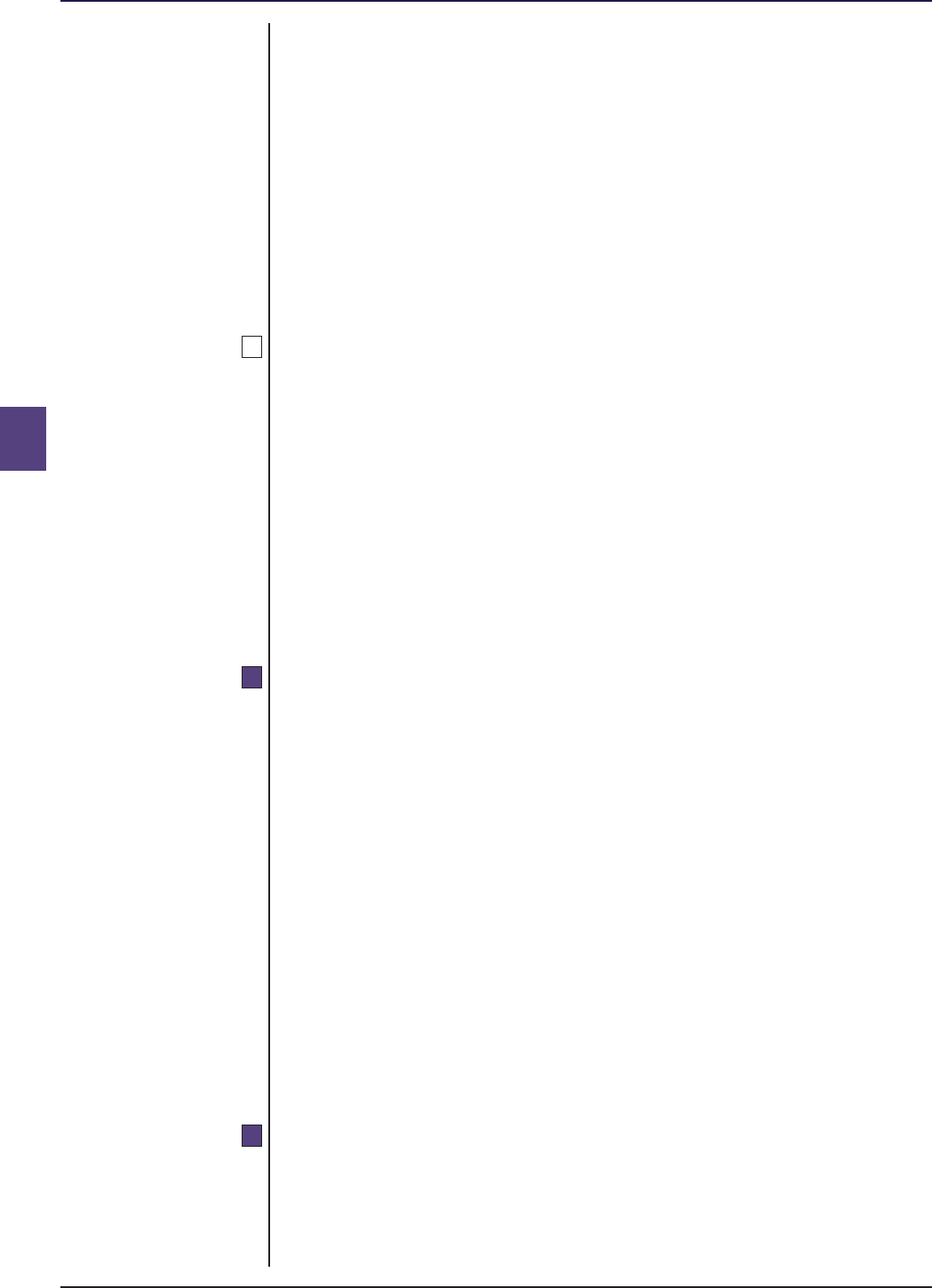
COLL 7 : Suspension of dealings, Section 7.4A : Winding up a solvent ACS and
termination of authorised funds terminating a sub-fund of a co-ownership
and side pockets scheme
7
G7.4A.7A
R7.4A.8
R7.4A.9
■ Release 39 ● Aug 2024www.handbook.fca.org.ukCOLL 7/34
(1) payment or adequate provision being made (by the depositary after
consulting the authorised contractual scheme manager) to cover the
expenses relating to the winding up or termination and all liabilities
of the scheme;
(2) the scheme property being realised or distributed in accordance with
■ COLL 7.4A.6R (5); and
(3) the net proceeds being distributed to the unitholders named in the
register on the date on which winding up or termination commenced,
or provision being made in respect of the final distribution.
Transfers of orphan monies to a dormant asset fund operator
.....................................................................................................
(1) Under the Dormant Assets Act 2022, orphan monies may be
transferred to a dormant asset fund operator where they are a
dormant asset. This means that only the proportion of outstanding
money that is attributable pro rata to a ‘gone-away’ person (see
section 10 of the Dormant Assets Act 2022) can be transferred in this
way.
(2) However, a person with whom the authorised contractual scheme
manager or the depositary is still in contact could be invited to
donate de minimis amounts as unwanted asset money for transfer to
the dormant asset fund operator (see ■ COLL 6.8.4AR (Unwanted asset
money)).
Duty to ascertain liabilities
.....................................................................................................
(1) The authorised contractual scheme manager must use all reasonable
endeavours to ensure that all the liabilities of the ACS or the sub-
fund of a co-ownership scheme are discharged before the completion
of the winding up or termination.
(2) The duty in (1) relates to all liabilities of which the authorised
contractual scheme manager:
(a) is, or becomes, aware before the completion of the winding up
or termination; or
(b) would have become aware before the completion of the winding
up or termination had it used all reasonable endeavours to
ascertain the liabilities.
(3) If the authorised contractual scheme manager rejects any claim or
liability against the ACS or the sub-fund in whole or part, the
authorised contractual scheme manager must immediately send to
the claimant written notice of its reasons for doing so.
Accounting and reports during winding up or termination
.....................................................................................................
(1) [deleted]
(2) [deleted]
(3) For any annual accounting period or half-yearly accounting period
which begins after commencement of the winding up or termination,

COLL 7 : Suspension of dealings, Section 7.4A : Winding up a solvent ACS and
termination of authorised funds terminating a sub-fund of a co-ownership
and side pockets scheme
7
G7.4A.10
R7.4A.11
■ Release 39 ● Aug 2024 www.handbook.fca.org.uk COLL 7/35
a copy of the long report must be supplied free of charge to any
unitholder upon request.
(4) The authorised contractual scheme manager must ensure that it keeps
unitholders appropriately informed about the winding up or
termination, including its likely duration.
(5) The authorised contractual scheme manager must send a copy of the
information required by (4) to each person who was a unitholder or
the first named of joint unitholders immediately before the winding
up or termination commenced, unless a final distribution has been
made in accordance with ■ COLL 7.4A.6R (2)(b).
(6) At the conclusion of the winding up or termination, the accounting
period then running is regarded as the final annual accounting
period.
(7) Within four months after the end of the final annual accounting
period or the termination of the sub-fund of the co-ownership
scheme, the annual reports of the authorised contractual scheme
manager and depositary must be published and sent to the FCA.
(8) The authorised contractual scheme manager must, on publication of
the annual long report in (7), write to each person who was a
unitholder or the first named of joint unitholders immediately before
the commencement of winding up or termination to inform them
that the annual long report is available free of charge on request.
(1) The effect of ■ COLL 7.4A.9R is that the authorised contractual scheme
manager must continue to prepare annual and half-yearly long
reports and to make them available to unitholders in accordance with
■ COLL 4.5.14R (Publication and availability of annual and half-yearly
long report).
(2) Where there are outstanding unrealised assets, keeping unitholders
appropriately informed may, for example, be carried out by providing
updates to unitholders at six-monthly or more frequent intervals.
Liabilities of the authorised contractual scheme manager
.....................................................................................................
(1) Except to the extent that the authorised contractual scheme manager
can show that it has complied with ■ COLL 7.4A.8 R (Duty to ascertain
liabilities), the authorised contractual scheme manager is personally
liable to meet any liability of an ACS or a sub-fund of a co-ownership
scheme, of which it is the authorised contractual scheme manager,
wound up or terminated under this section (whether or not the
winding up of the ACS or the termination of the sub-fund has been
completed) that was not discharged before the completion of the
winding up or termination.
(2) Where winding up an ACS, if the proceeds of the realisation of the
assets attributable or allocated to a particular sub-fund of an
umbrella co-ownership scheme are insufficient to meet the liabilities
attributable or allocated to that sub-fund, the authorised contractual
scheme manager must pay to the ACS, for the account of that sub-
fund, the amount of the deficit, unless and to the extent that the

COLL 7 : Suspension of dealings, Section 7.4A : Winding up a solvent ACS and
termination of authorised funds terminating a sub-fund of a co-ownership
and side pockets scheme
7
R7.4A.12
■ Release 39 ● Aug 2024www.handbook.fca.org.ukCOLL 7/36
authorised contractual scheme manager can show that the deficit did
not arise as a result of any failure by the authorised contractual
scheme manager to comply with the rules in COLL.
(3) The liabilities of the authorised contractual scheme manager under
this rule create an accruing debt (in England and Wales in the nature
of a specialty) due from it on the completion of the winding up or
termination and payable upon the demand of the creditor in
question (including the ACS in the circumstances described in (2)).
(4) The obligations of the authorised contractual scheme manager under
this rule do not affect any other obligation of the authorised
contractual scheme manager under these rules or the law.
Miscellaneous
.....................................................................................................
If:
(1) during the course, or as a result, of the enquiry referred to in
■ COLL 7.4A.5R (1) (Solvency statement), the authorised contractual
scheme manager becomes of the opinion that it will not be possible
to provide the confirmation referred to in (2)(a) of that rule; or
(2) after winding up or termination has commenced, the authorised
contractual scheme manager becomes of the opinion that the ACS or
the sub-fund of a co-ownership scheme will be unable to meet all its
liabilities within twelve months of the date of the statement provided
under ■ COLL 7.4A.5R (2)(a);
the authorised contractual scheme manager must immediately present a
petition or cause the ACS or sub-fund to present a petition for the winding
up of the ACS or sub-fund as an unregistered company under the Insolvency
Act 1986 or the Insolvency (Northern Ireland) Order 1989, as modified by the
Contractual Scheme Regulations.

COLL 7 : Suspension of dealings, Section 7.5 : Schemes or sub-funds that are
termination of authorised funds not commercially viable
and side pockets
7
G7.5.1
G7.5.2
■ Release 39 ● Aug 2024 www.handbook.fca.org.uk COLL 7/37
7.5 Schemes or sub-funds that are not
commercially viable
Explanation of this section
.....................................................................................................
(1) The FCA expects that the majority of requests it will receive for the
winding up of an authorised fund (under regulation 21(1) of the OEIC
Regulations or under sections 256 or 261W of the Act) or termination
of a sub-fund will be from authorised fund managers and
depositaries who consider that the AUT, ACS, ICVC or sub-fund in
question is no longer commercially viable.
(2) It is in consumers' interests to minimise, as far as possible, the period
between which the FCA receives such requests and responds to them.
To assist the FCA in arriving at a quick decision, based on all the
relevant factors, it would be helpful for the FCA to receive the
information listed at ■ COLL 7.5.2 G. Further information, however,
may be requested by the FCA after receipt of the information,
depending on the individual circumstances of the case.
Information to be provided to the FCA
.....................................................................................................
The information referred to in ■ COLL 7.5.1 G is listed below:
(1) the name of the authorised fund or sub-fund;
(2) the size of the authorised fund or sub-fund;
(3) the number of unitholders;
(4) whether dealing in units has been suspended;
(5) why the request is being made;
(6) what consideration has been given to the authorised fund or sub-
fund entering into a scheme of arrangement with another regulated
collective investment scheme and the reasons why a scheme of
arrangement is not feasible;
(7) (a) whether unitholders have been informed of the intention to seek
termination, winding up or revocation; and
(b) if not, when they will be informed;
(8) details of any proposed preferential switching rights offered or to be
offered to unitholders;

COLL 7 : Suspension of dealings, Section 7.5 : Schemes or sub-funds that are
termination of authorised funds not commercially viable
and side pockets
7
■ Release 39 ● Aug 2024www.handbook.fca.org.ukCOLL 7/38
(9) details of any proposed rebate of charges to be made to unitholders
who recently purchased units;
(9A) where a person who is or was a unitholder in the authorised fund or
sub-fund may have a right to make a repayment claim under sections
9 to 11 of the Dormant Assets Act 2022, in respect of an eligible CIS
amount relating to that authorised fund or sub-fund, details as to the
steps taken by the authorised fund manager to ensure that the
relevant records (see ■ COLL 6.6.6R(5) and ■ COLL 6.6.6R(6) (Maintenance
of records)) are preserved;
(10) where the costs of winding up or termination will fall;
(11) the depositary's:
(a) statement whether having taken reasonable care it is certain that
a scheme of arrangement is not feasible and explaining what
steps have been considered that would result in the authorised
fund or sub-fund not needing to wind up or terminate (for
example, appointing a replacement authorised fund manager);
and
(b) confirmation that it will not or does not expect to qualify a
report made in accordance with ■ COLL 4.5.11 R (Report of the
depositary);
(12) the preferred date for the FCA's determination to revoke
authorisation or the date for the commencement of the winding up
or termination; and
(13) any additional information or material considered to be relevant to
the FCA's decision under sections 251, 256, 261Q and 261W of the Act
or regulation 21 of the OEIC Regulations (as appropriate).
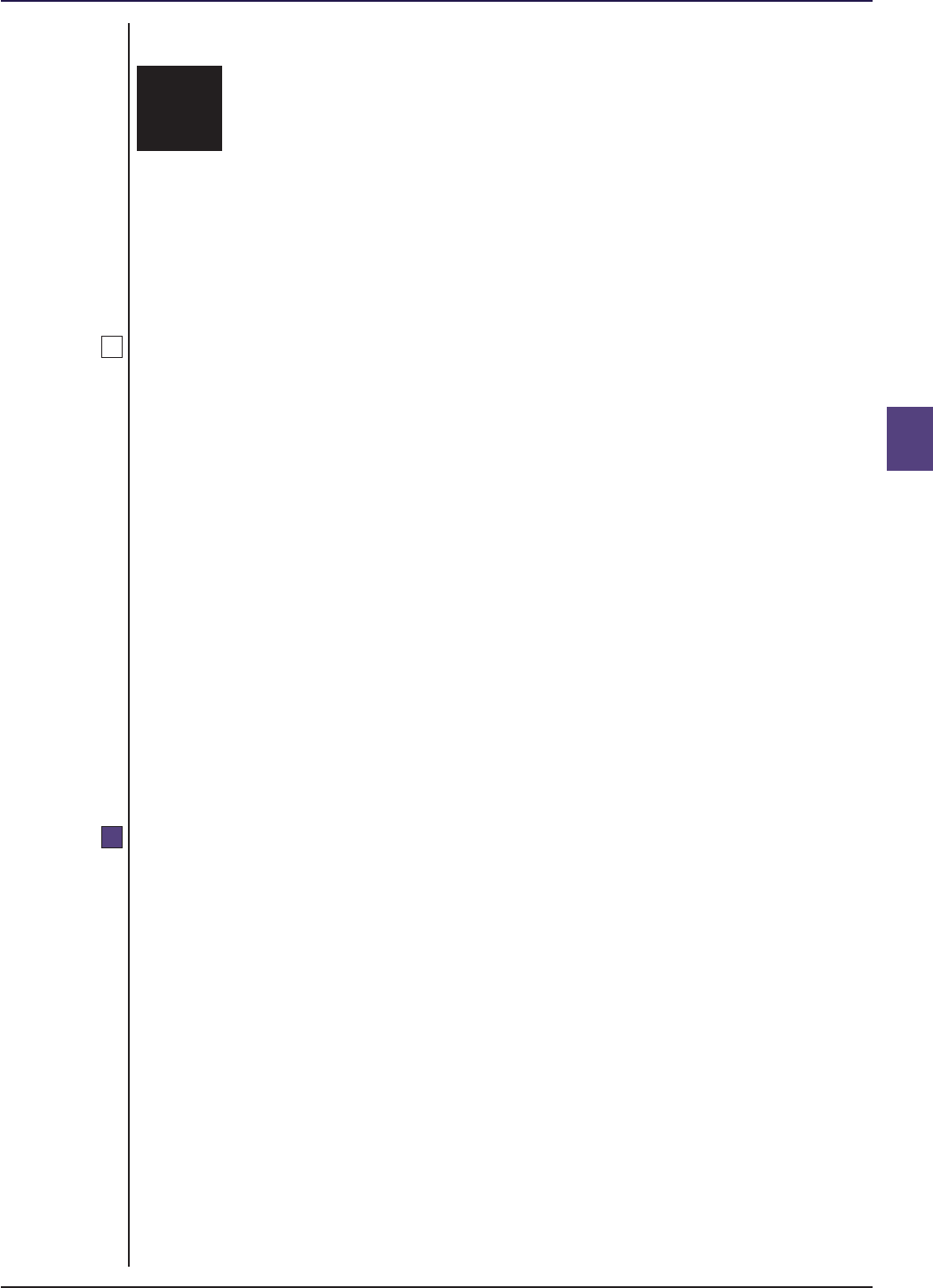
COLL 7 : Suspension of dealings, Section 7.6 : Schemes of arrangement
termination of authorised funds
and side pockets
7
G7.6.1
R7.6.2
■ Release 39 ● Aug 2024 www.handbook.fca.org.uk COLL 7/39
7.6 Schemes of arrangement
Schemes of arrangement: explanation
.....................................................................................................
(1) A proposal that an authorised fund should be involved in a scheme of
arrangement is subject to written notice to and approval by the FCA
under section 251 of the Act (Alteration of schemes and changes of
manager or trustee), section 261Q of the Act (Alteration of
contractual schemes and changes of operator or depositary) or
regulation 21 of the OEIC Regulations (The Authority's approval for
certain changes in respect of a company). Effect cannot be given to
such a change except in accordance with that section or regulation.
(2) The issue of units in exchange for assets as part of an approved
scheme of arrangement is subject to:
() ■ COLL 6.2.5 R and ■ COLL 6.2.6 R (Issue and cancellation of units);
() ■ COLL 6.2.15 R (In specie issue and redemption); and
() ■ COLL 7.6.2 R(Scheme of arrangement: requirements).
(3) ■ COLL 7.6.2 R (3) to ■ (6) apply to a domestic UCITS merger.
Arrangements constituting any such merger are in addition subject to
the requirements of ■ COLL 7.7 (UCITS mergers).
Schemes of arrangement: requirements
.....................................................................................................
(1) If a scheme of arrangement is entered into in relation to an
authorised fund ("transferor fund") or a sub-fund of a scheme which
is an umbrella ("transferor sub-fund"), an authorised fund manager
must ensure that the unitholders of the transferor fund or sub-fund
do not become unitholders of units in a collective investment scheme
other than a regulated collective investment scheme.
(2) For a UCITS scheme or a sub-fund of a UCITS scheme, (1) applies as if
the reference to a regulated collective investment scheme excludes
any recognised scheme which is not authorised under the UCITS
Directive in an EEA State.
(3) Where, for the purpose of a scheme of arrangement, it is proposed
that scheme property of an authorised fund should become the
property of another regulated collective investment scheme or sub-
fund of a regulated collective investment scheme, the proposal must
not be implemented without the sanction of an extraordinary
resolution of the unitholders in the authorised fund, unless (4)
applies.

COLL 7 : Suspension of dealings, Section 7.6 : Schemes of arrangement
termination of authorised funds
and side pockets
7
R7.6.3
■ Release 39 ● Aug 2024www.handbook.fca.org.ukCOLL 7/40
(4) Where, for the purposes of a scheme of arrangement, it is proposed
that scheme property attributable to a sub-fund of an umbrella
should become the property of another regulated collective
investment scheme or of another sub-fund of a regulated collective
investment scheme (whether or not of that umbrella), the proposal
must not be implemented without the sanction of:
(a) an extraordinary resolution of the unitholders in the sub-fund of
that umbrella; and
(b) (unless implementation of the scheme of arrangement is not
likely to result in any material prejudice to the interests of the
unitholders in any other sub-fund of that umbrella) an
extraordinary resolution of the unitholders of units in that
umbrella.
(5) If it is proposed that an authorised fund or sub-fund of an umbrella
should receive property (other than its first property) as a result of a
scheme of arrangement (or an arrangement equivalent to a scheme
of arrangement) which is entered into by some other collective
investment scheme or sub-fund, or by a body corporate, the proposal
must not be implemented without the sanction of an extraordinary
resolution of the unitholders in the authorised fund or (as the case
may be) of the class or classes of units related to the sub-fund unless
(6) applies.
(6) This paragraph (6) applies if the directors of the ICVC or the
authorised fund manager and depositary of the AUT or ACS agree
that the receipt of the property concerned for the account of the
ICVC, AUT or ACS:
(a) is not likely to result in any material prejudice to the interests of
the unitholders of the authorised fund;
(b) is consistent with the objectives of the authorised fund or sub-
fund; and
(c) could be effected without any breach of a rule in
■ COLL 5(Investment and borrowing powers).
(7) If it is proposed that the scheme property of an authorised fund or a
sub-fund of an umbrella should become the property of a recognised
scheme, the authorised fund manager of the authorised fund or sub-
fund must ensure that the document it provides to unitholders
setting out the proposal contains a prominent statement of the
matters required to be disclosed by ■ COLL 9.5.5R and ■ COLL 9.5.6R
(Preparation and maintenance of a prospectus relating to an OFR
recognised scheme).
Prior transfers under the Dormant Assets Act 2022
.....................................................................................................
(1) This rule applies where:
(a) a scheme of arrangement is entered into in relation to a
transferor fund or a transferor sub-fund;
(b) a person who is or was at any time the authorised fund manager
or (where relevant) the depositary of the transferor fund or
transferor sub-fund transferred eligible CIS amounts as dormant
assets to a dormant asset fund operator; and

COLL 7 : Suspension of dealings, Section 7.6 : Schemes of arrangement
termination of authorised funds
and side pockets
7
■ Release 39 ● Aug 2024 www.handbook.fca.org.uk COLL 7/41
(c) such dormant assets are or were attributable to the transferor
fund or transferor sub-fund.
(2) The authorised fund manager of the transferor fund or transferor
sub-fund must ensure that under the terms of the scheme of
arrangement the records required under ■ COLL 6.6.6R(5) and
■ COLL 6.6.6R(6):
(a) will be properly maintained;
(b) will be updated, where appropriate; and
(c) will remain accessible,
so that the amount of any repayment claim can be readily calculated
and verified by the appropriate person.
(3) In this rule, ‘transferor fund’ and ‘transferor sub-fund’ have the same
meanings as in ■ COLL 7.6.2R.
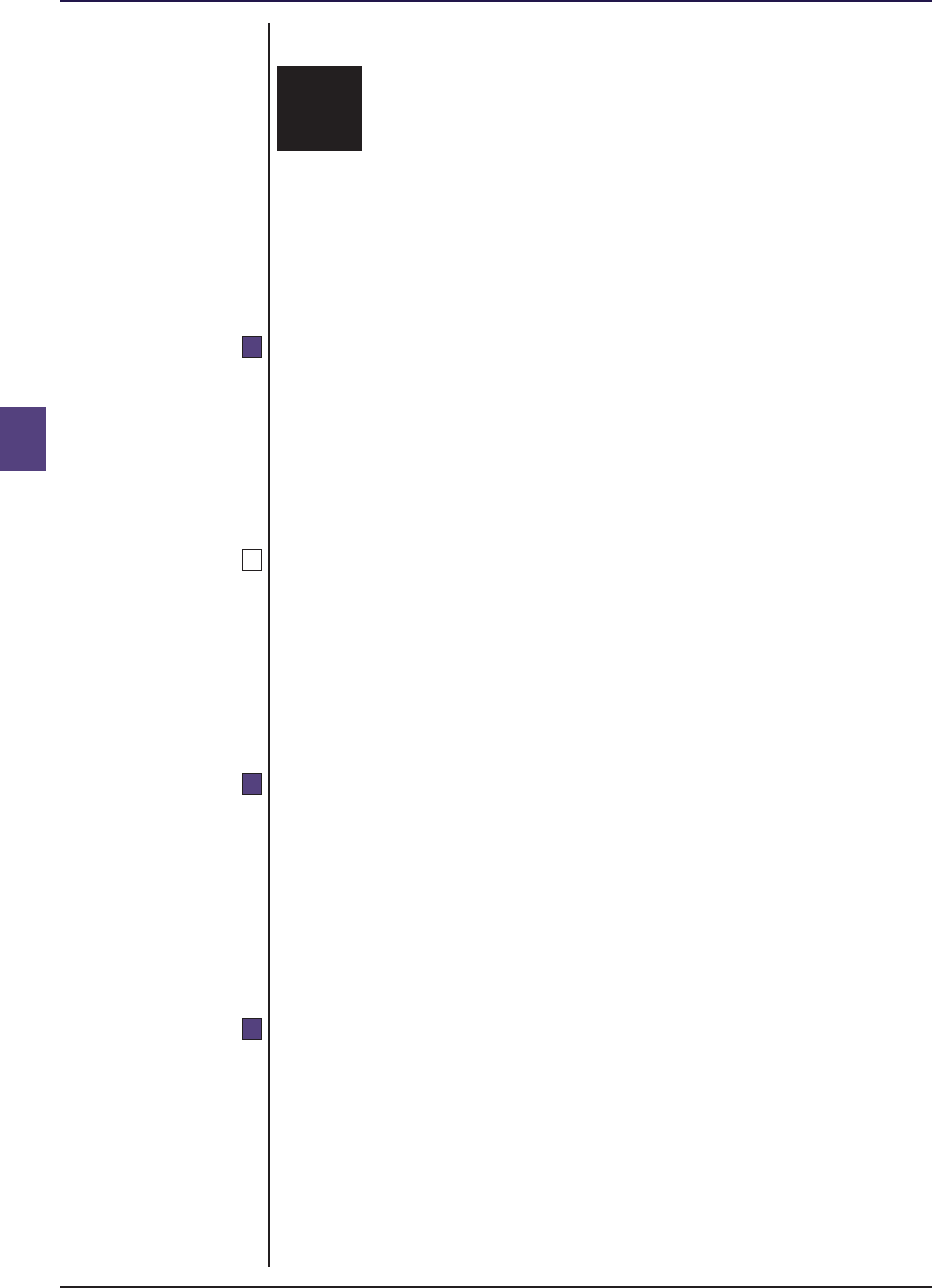
COLL 7 : Suspension of dealings, Section 7.7 : UCITS mergers
termination of authorised funds
and side pockets
7
R7.7.1
G7.7.2
R7.7.3
R7.7.4
■ Release 39 ● Aug 2024www.handbook.fca.org.ukCOLL 7/42
7.7 UCITS mergers
Application
.....................................................................................................
This section applies to an ICVC, an authorised fund manager of an AUT, ACS
or ICVC, any other director of an ICVC and the depositary of any such scheme
where, in each case, the AUT, ACS or ICVC is a UCITS scheme that is a party
to:
(1) a domestic UCITS merger.
(2) [deleted]
(1) The effect of ■ COLL 7.7.1 R, and in particular the narrow Glossary
definition of domestic UCITS merger, is that this section will not apply
to a merger in the United Kingdom between two or more UCITS
schemes unless one of them was the subject of a UCITS marketing
notification before IP completion day.
(2) [deleted]
References to a UCITS scheme
.....................................................................................................
In this section references to:
(1) a UCITS scheme, a merging UCITS or to a receiving UCITS include the
sub-fund of any such scheme.
(2) [deleted]
[Note: article 37 of the UCITS Directive]
UCITS mergers
.....................................................................................................
A domestic UCITS merger between two or more UCITS schemes is permissible
provided:
(1) it is effected in accordance with the requirements of:
(a) the UCITS Regulations 2011, which include the need for the FCA
to have made a prior order approving the proposed merger
(which may be made subject to (2)); and
(b) this chapter; and
(2) in the case of a UCITS scheme that is:

COLL 7 : Suspension of dealings, Section 7.7 : UCITS mergers
termination of authorised funds
and side pockets
7
G7.7.5
G7.7.6
■ Release 39 ● Aug 2024 www.handbook.fca.org.uk COLL 7/43
(a) a merging UCITS, an extraordinary resolution is approved by
unitholders in accordance with ■ COLL 7.6.2 R (3) and ■ (4) (Schemes
of arrangement: requirements); and
(b) a receiving UCITS, the authorised fund manager and depositary
of the AUT or ACS and the directors of the ICVC comply with
■ COLL 7.6.2 R (5) and ■ (6).
[Note: articles 39(1), 39(4) and 44 first paragraph of the UCITS Directive]
Meetings of unitholders
.....................................................................................................
(1) The effect of ■ COLL 7.7.4 R (2)(a) is that the 75% majority that is
needed in support for an extraordinary resolution of unitholders to
be passed is without prejudice to the presence quorum that is
required by ■ COLL 4.4.6 R (Quorum).
(2) Any meeting of unitholders that is needed to give effect to a
proposed UCITS merger is subject to the requirements of ■ COLL 4.4
(Meeting of unitholders and service of notices).
UCITS Regulations 2011
.....................................................................................................
(1) The requirements and the process which must be followed to give
effect to a proposal for a domestic UCITS merger are in Part 4 of the
UCITS Regulations 2011. The main features of the regime as set out in
those provisions include:
(a) the merger must be a domestic UCITS merger which takes the
form of a scheme of arrangement;
(b) the need for the FCA to give prior approval to the proposed
merger under regulation 9 (Application for authorisation) of the
UCITS Regulations 2011;
(c) the information that has to be given to the FCA in order to
obtain the approval under (b);
(d) the need for draft terms of merger to be prepared;
(e) the role of the relevant depositaries and auditors;
(f) the need for appropriate and accurate information to be
prepared for the benefit of unitholders;
(g) rights of redemption and suspension of dealing in units in the
relevant UCITS; and
(h) the consequences of the proposed merger.
(2) Firms are advised that they do not need to seek approval from the
FCA under section 251 (Alteration of schemes and changes of
manager or trustee) or 261Q (Alteration of contractual schemes and
changes of operator or depositary) of the Act or, as the case may be,
regulation 21 (The Authority's approval for certain changes in respect
of a company) of the OEIC Regulations where they are required to
obtain the prior approval of the FCA to a proposed merger under
regulation 9 of the UCITS Regulations 2011.
(3) [deleted]

COLL 7 : Suspension of dealings, Section 7.7 : UCITS mergers
termination of authorised funds
and side pockets
7
R7.7.7
G7.7.8
R7.7.8A
■ Release 39 ● Aug 2024www.handbook.fca.org.ukCOLL 7/44
Common draft terms of merger
.....................................................................................................
(1) The authorised fund manager of a UCITS scheme that is a merging
UCITS or a receiving UCITS in a proposed UCITS merger, must in
conjunction with any other authorised fund manager draw up
common draft terms of the proposed UCITS merger.
(2) The common draft terms in (1) must set out the following particulars:
(a) the UCITS involved;
(b) the background to and the rationale for the proposed UCITS
merger;
(c) the expected impact of the proposed UCITS merger on the
unitholders of both the merging UCITS and the receiving UCITS;
(d) the criteria adopted for valuation of the assets and, where
applicable, the liabilities of the UCITS on the date for calculating
the exchange ratio as referred to in regulation 13 (Consequences
of a merger) of the UCITS Regulations 2011;
(e) the calculation method of the exchange ratio;
(f) the planned effective date of the UCITS merger;
(g) the rules applicable respectively to the transfer of assets and the
exchange of units; and
(h) in the case of a UCITS merger where the receiving UCITS or the
sub-fund is being specially formed for the purpose, the
instrument constituting the fund of the newly constituted
receiving UCITS.
[Note: article 40(1) of the UCITS Directive]
The management companies of the merging UCITS and the receiving UCITS
may decide to include further items in the common draft terms of the UCITS
merger.
[Note: article 40(2) of the UCITS Directive]
Prior transfers under Dormant Assets Act 2022
.....................................................................................................
(1) This rule applies where:
(a) a person who is or was at any time the authorised fund manager
or (where relevant) the depositary of a merging UCITS transferred
eligible CIS amounts as dormant assets to the dormant asset fund
operator; and
(b) such dormant assets are or were attributable to the merging
UCITS.
(2) The authorised fund manager of the merging UCITS must ensure that
under the terms of the proposed UCITS merger the records required
under ■ COLL 6.6.6R(5) and ■ COLL 6.6.6R(6):
(a) will be properly maintained;
(b) will be updated, where appropriate; and
(c) will remain accessible,

COLL 7 : Suspension of dealings, Section 7.7 : UCITS mergers
termination of authorised funds
and side pockets
7
R7.7.9
R7.7.10
■ Release 39 ● Aug 2024 www.handbook.fca.org.uk COLL 7/45
so that the amount of any repayment claim can be readily calculated
and verified by the appropriate person.
Verification by the depositary
.....................................................................................................
The depositary of a UCITS scheme that is either a merging UCITS or a
receiving UCITS in a proposed UCITS merger must verify that the statements
in the common draft terms of merger required under ■ COLL 7.7.7 R (2)(a), ■ (f)
and ■ (g), to the extent they relate to the scheme for which it is the
depositary, conform with the provisions of the regulatory system and the
instrument constituting the fund.
[Note: article 41 of the UCITS Directive]
Information to be given to unitholders
.....................................................................................................
(1) The authorised fund manager of a UCITS scheme that is a merging
UCITS or a receiving UCITS in a proposed UCITS merger must ensure
that a document containing appropriate and accurate information on
the merger is provided to the unitholders of that scheme so as to
enable them to:
(a) make an informed judgment about the impact of the proposal on
their investment;
(b) exercise their rights under regulation 12 (Right of redemption) of
the UCITS Regulations 2011; and
(c) where applicable, exercise their right to vote on whether or not
to approve the merger in accordance with ■ COLL 7.7.4 R (2)(a)
(UCITS mergers).
(2) Where a UCITS scheme is the merging UCITS in a domestic UCITS
merger its authorised fund manager must provide the information
document in (1):
(a) to the unitholders of the merging UCITS and (in the case of a
domestic UCITS merger) the receiving UCITS only after the FCA
has given its approval to the UCITS merger proposal under
regulation 9 of the UCITS Regulations 2011,
(b) [deleted]
at least 30 days before the last date by which unitholders may
request repurchase or redemption of their units or, where applicable,
conversion without additional charge.
(3) The information document to be provided to the unitholders of the
merging UCITS and the receiving UCITS under (1) must include the
following:
(a) the background to and the rationale for the proposed UCITS
merger;
(b) the possible impact of the proposed UCITS merger on unitholders,
including but not limited to any material differences in respect of
investment policy and strategy, costs, expected outcome, periodic
reporting, possible dilution in performance, and, where relevant,
a prominent warning to investors that their tax treatment may be
changed following the UCITS merger;

COLL 7 : Suspension of dealings, Section 7.7 : UCITS mergers
termination of authorised funds
and side pockets
7
R7.7.11
G7.7.12
■ Release 39 ● Aug 2024www.handbook.fca.org.ukCOLL 7/46
(c) any specific rights unitholders have in relation to the proposed
UCITS merger, including but not limited to:
(i) the right to obtain additional information;
(ii) the right to obtain a copy of the report of the independent
auditor or the depositary on request prepared for the
purposes of regulation 11 of the UCITS Regulations 2011;
(iii) the right to request the repurchase or redemption or, where
applicable, the conversion of their units without charge
under regulation 12 of the UCITS Regulations 2011; and
(iv) the last date for exercising that right;
(d) the relevant procedural aspects and the planned effective date of
the merger; and
(e) a copy of the key investor information of the receiving UCITS.
(4) If a UCITS marketing notification in respect of the merging UCITS or
receiving UCITS has been made, the information document referred
to in (3) must be provided in the official language, or one of the
official languages, of the relevant EEA State in which units of the
UCITS scheme have been marketed, or in a language approved by the
overseas regulator in that EEA State. The authorised fund manager of
the relevant UCITS scheme must provide an accurate translation of
the information document.
[Note: article 43(1), 43(2), 43(3) and 43(4) of the UCITS Directive]
General rules regarding the content of merger information to
be provided to unitholders
.....................................................................................................
(1) The information document that must be provided to unitholders
under ■ COLL 7.7.10 R (Information to be given to unitholders) by the
authorised fund manager of a UCITS scheme must be written in a
concise manner and in non-technical language.
(2) [deleted]
(3) The information to be provided to the unitholders of the merging
UCITS must meet the needs of investors who have no prior
knowledge of the features of the receiving UCITS or of the manner of
its operation, drawing their attention to the key investor information
of the receiving UCITS and emphasising the desirability of reading it.
(4) The information to be provided to the unitholders of the receiving
UCITS must focus on the operation of the merger and its potential
impact on the receiving UCITS.
[Note: article 3 of the UCITS implementing Directive No 2]
(1) The information provided to unitholders under ■ COLL 7.7.10 R and
■ COLL 7.7.13 R on any proposed merger should reflect the different
needs of the unitholders of the merging UCITS and the receiving
UCITS and assist their understanding of what is being proposed.

COLL 7 : Suspension of dealings, Section 7.7 : UCITS mergers
termination of authorised funds
and side pockets
7
R7.7.13
■ Release 39 ● Aug 2024 www.handbook.fca.org.uk COLL 7/47
(2) The reference to "conversion" in ■ COLL 7.7.10 R (2) means an exchange
of units in the merging UCITS or receiving UCITS for units in another
UCITS scheme that has similar investment policies and that is
managed by the same authorised fund manager or one of its
affiliated companies.
[Note: recital (1) of the UCITS implementing Directive No 2]
Specific rules regarding the content of merger information to
be provided to unitholders of the merging UCITS
.....................................................................................................
(1) The information document that the authorised fund manager of a
merging UCITS must provide to its unitholders under
■ COLL 7.7.10 R (3)(b) must also include:
(a) details of any differences in the rights of unitholders of the
merging UCITS before and after the proposed UCITS merger takes
effect;
(b) if the key investor information of the merging UCITS and the
receiving UCITS show synthetic risk and reward indicators in
different categories, or identify different material risks in the
accompanying narrative, a comparison of those differences;
(c) a comparison of all charges, fees and expenses for both schemes,
based on the amounts disclosed in their respective key investor
information;
(d) if the merging UCITS applies a performance-related fee, an
explanation of how it will be applied up to the point at which
the merger becomes effective;
(e) if the receiving UCITS applies a performance-related fee, how it
will subsequently be applied to ensure fair treatment of those
unitholders who previously held units in the merging UCITS;
(f) in cases where costs associated with the preparation and the
completion of the merger may be charged to either the merging
or the receiving UCITS or any of their unitholders, details of how
those costs are to be allocated; and
(g) an explanation of whether the authorised fund manager of the
merging UCITS itself intends to undertake any rebalancing of the
portfolio before the merger takes effect.
(2) The information to be provided under ■ COLL 7.7.10 R (3)(c) must also
include:
(a) details of how any accrued income in each scheme is to be
treated; and
(b) an indication of how the report of the independent auditor or
the depositary may be obtained.
(3) The information to be provided in accordance with
■ COLL 7.7.10 R (3)(d) must include:
(a) where required by ■ COLL 7.6.2 R (Schemes of arrangement:
requirements), the procedure by which unitholders will be asked
to approve the merger proposal, and what arrangements will be
made to inform them of the outcome;
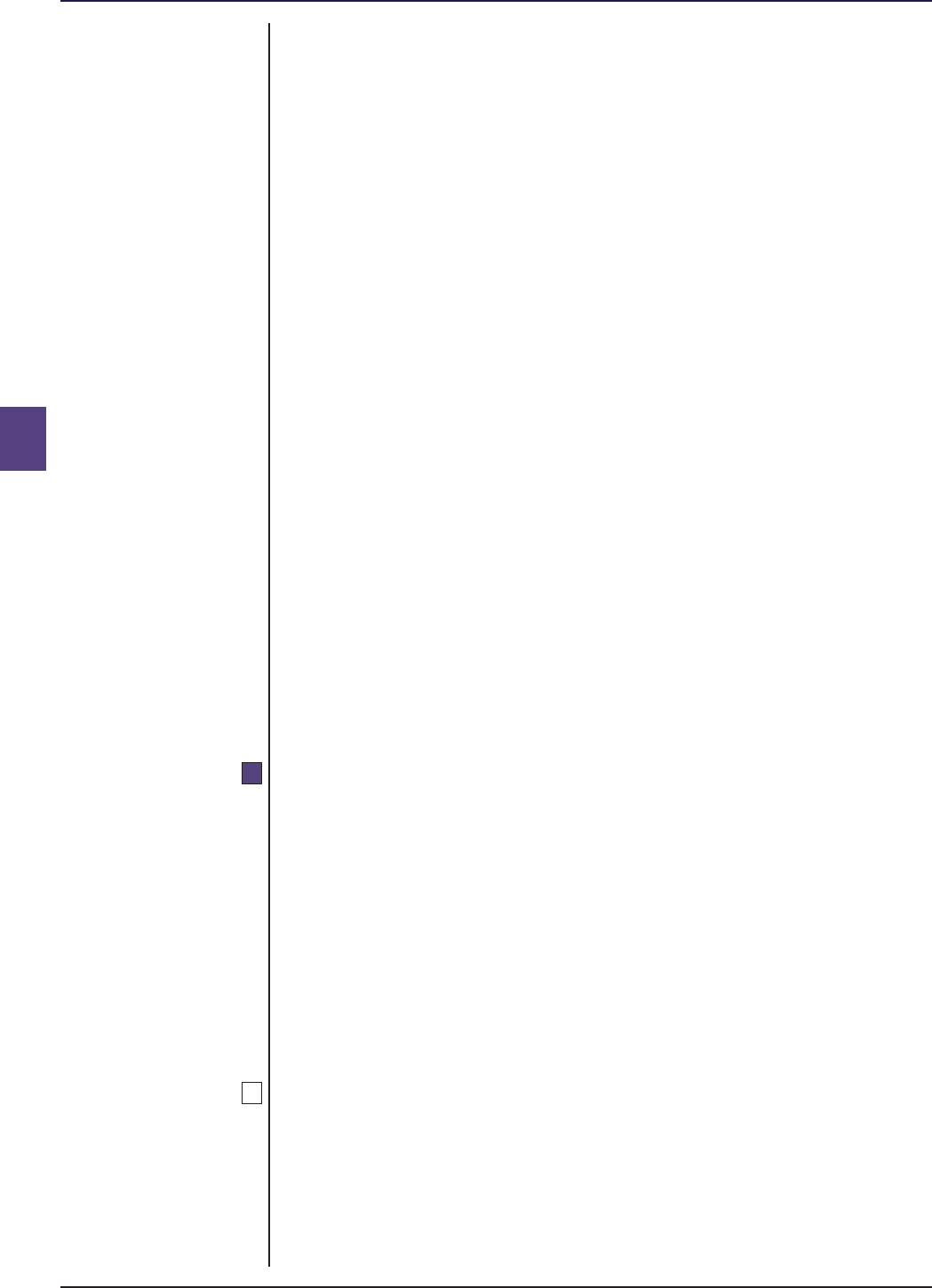
COLL 7 : Suspension of dealings, Section 7.7 : UCITS mergers
termination of authorised funds
and side pockets
7
R7.7.14
G7.7.15
■ Release 39 ● Aug 2024www.handbook.fca.org.ukCOLL 7/48
(b) the details of any intended suspension of dealing in units to
enable the merger to be carried out efficiently; and
(c) when the merger will take effect in accordance with regulation
13 of the UCITS Regulations 2011.
(4) The information to be provided to the unitholders of the merging
UCITS must include:
(a) the period during which those unitholders will be able to
continue making subscriptions and requesting redemptions of
units in the scheme;
(b) the time when those unitholders not making use of their rights
granted under regulation 12 of the UCITS Regulations 2011,
within the relevant time limit, will be able to exercise their rights
as unitholders of the receiving UCITS; and
(c) an explanation that once the merger proposal is approved by the
resolution of a general meeting of the unitholders of the
merging UCITS, those unitholders who vote against the proposal
or who do not vote at all, and who do not make use of their
rights granted under regulation 12 of the UCITS Regulations 2011
within the relevant time limit, will become unitholders of the
receiving UCITS.
(5) If a summary of the key points of the merger proposal is provided at
the beginning of the document providing information on the merger
proposal, it must cross-refer to the parts of the document where
further information is provided.
[Note: article 4 of the UCITS implementing Directive No 2]
Specific rules regarding the content of merger information to
be provided to unitholders of the receiving UCITS
.....................................................................................................
(1) The information that the authorised fund manager of a receiving
UCITS must provide to its unitholders under ■ COLL 7.7.10 R (3)(b) must
also include an explanation of whether the authorised fund manager
expects the merger to have any material effect on the portfolio of
the receiving UCITS, and whether it intends to undertake any
rebalancing of the portfolio either before or after the merger takes
effect.
(2) In addition to (1), the authorised fund manager of the receiving
UCITS must provide to its unitholders the information referred to in
■ COLL 7.7.13 R (2), ■ (3), and ■ (5).
[Note: article 4 of the UCITS implementing Directive No 2]
(1) An authorised fund manager may add other information to that
which is required by ■ COLL 7.7.10 R to ■ COLL 7.7.14 R if it considers
that it is relevant in the context of the proposed UCITS merger. For
example, it may be appropriate for the information provided in
accordance with ■ COLL 7.7.13 R (3)(a) to contain a recommendation by
the respective authorised fund manager of an AUT or ACS or the
directors of an ICVC as to the course of action the unitholders should
take.

COLL 7 : Suspension of dealings, Section 7.7 : UCITS mergers
termination of authorised funds
and side pockets
7
R7.7.16
R7.7.17
R7.7.18
R7.7.19
R7.7.20
G7.7.21
■ Release 39 ● Aug 2024 www.handbook.fca.org.uk COLL 7/49
(2) Where an authorised fund manager chooses to include a summary of
the key points as allowed by ■ COLL 7.7.13 R (5), its inclusion does not
relieve the authorised fund manager of its obligation to avoid the use
of long or technical explanations in the rest of the document.
[Note: recitals (2) and (3) and article 4(6) of the UCITS implementing Directive
No 2]
Key investor information
.....................................................................................................
The authorised fund manager of a merging UCITS must provide an up-to-
date version of the key investor information of the receiving UCITS to its
existing unitholders.
[Note: article 5(1) of the UCITS implementing Directive No 2]
[deleted]
New unitholders
.....................................................................................................
Between the date when the information required under ■ COLL 7.7.10 R is
provided to unitholders and the date when the merger takes effect, the
information document and the up-to-date key investor information of the
receiving UCITS must be provided to each person who purchases or
subscribes for units in either the merging UCITS or the receiving UCITS or
who asks to receive copies of the instrument constituting the fund,
prospectus or key investor information of either scheme.
[Note: article 6 of the UCITS implementing Directive No 2]
Method of providing merger information to unitholders
.....................................................................................................
The authorised fund manager of the merging UCITS and the receiving UCITS
must provide the information required by ■ COLL 7.7.10 R to ■ COLL 7.7.14 R to
unitholders in a durable medium.
[Note: article 7 of the UCITS implementing Directive No 2]
Merger costs
.....................................................................................................
The authorised fund manager of a UCITS scheme that is either a merging
UCITS or a receiving UCITS must ensure that any legal, advisory,
administrative or any other costs associated with the preparation and
completion of the UCITS merger are not charged to either scheme or to any
of its unitholders.
[Note: article 46 of the UCITS Directive]
Effective merger date, exchange ratio calculation date and
publication of merger
.....................................................................................................
(1) In a domestic UCITS merger, the effective date of the merger will be
the date specified by the FCA in its order authorising the proposed
merger in accordance with regulation 9 of the UCITS Regulations
2011.

COLL 7 : Suspension of dealings, Section 7.7 : UCITS mergers
termination of authorised funds
and side pockets
7
R7.7.22
G7.7.23
■ Release 39 ● Aug 2024www.handbook.fca.org.ukCOLL 7/50
(2) [deleted]
(3) For the receiving UCITS in a domestic UCITS merger:
(a) the date for calculating the exchange ratio of units of the
merging UCITS into units of the receiving UCITS and, where
applicable, for determining the relevant net asset value for cash
will be the date specified in the common terms of merger for
that purpose; and
(b) the FCA will publish the entry into effect of the merger in the
record it keeps under section 347 (The record of authorised
persons etc) of the Act in accordance with regulation 14 of the
UCITS Regulations 2011.
(4) [deleted]
[Note: article 47 of the UCITS Directive]
Confirmation obligation on completion of a UCITS merger
.....................................................................................................
The authorised fund manager of the receiving UCITS in a domestic UCITS
merger must confirm in writing to the depositary of the UCITS scheme and
the FCA that the merger transfer is complete.
[Note: article 48(4) of the UCITS Directive]
Regulation 13 of the UCITS Regulations 2011 sets out the conditions that
must be fulfilled for a merger transfer to be considered complete.

COLL 7 : Suspension of dealings, Section 7.8 : Side pockets
termination of authorised funds
and side pockets
7
R7.8.1
G7.8.2
G7.8.3
■ Release 39 ● Aug 2024 www.handbook.fca.org.uk COLL 7/51
7.8 Side pockets
Application
.....................................................................................................
(1) Subject to (2), this section applies to:
(a) the authorised fund manager of an AUT, ACS or an ICVC;
(b) any other director of an ICVC;
(c) the depositary of an AUT, ACS or an ICVC; and
(d) an ICVC,
which is a UCITS scheme or a non-UCITS retail scheme.
(2) This section does not apply to a scheme which is a regulated money
market fund.
(1) This section sets out the terms on which the authorised fund manager
of a scheme holding affected investments can segregate those
affected investments from the other assets held in the scheme
property by establishing a side pocket class.
(2) The purpose of the rules in this section is to advance the FCA’s
consumer protection and integrity objectives (see s1B(3) of the Act) by
helping authorised fund managers deal with the consequences of the
Russian invasion of Ukraine.
(3) The rules in this section apply other rules in COLL, where necessary,
with appropriate modifications, as well as imposing certain additional
requirements.
Financial sanctions regimes relating to Russia
.....................................................................................................
(1) The definition for a ‘sanctioned investment’ in the Glossary (which is
incorporated in the definition for ‘affected investment’) relates to the
financial sanctions regimes of the Group of 7 (G7) countries
comprising Canada, France, Germany, Italy, Japan, the United
Kingdom and the United States of America, plus the EU, as those
sanctions regimes relate to Russia.
(2) Before deciding whether to create a side pocket class and
determining the arrangements under which the class is to operate,
the authorised fund manager will need to understand the legal
requirements and obligations that apply under the relevant financial
sanctions regimes. The authorised fund manager will need to be

COLL 7 : Suspension of dealings, Section 7.8 : Side pockets
termination of authorised funds
and side pockets
7
R7.8.4
■ Release 39 ● Aug 2024www.handbook.fca.org.ukCOLL 7/52
satisfied that creation of the side pocket class and the operational
arrangements for the class will comply with those regimes.
(3) The UK’s financial sanctions regime is set out in the Russia (Sanctions)
(EU Exit) Regulations 2019. The Regulations are available at https://
www.legislation.gov.uk/uksi/2019/855/contents. The UK regime
prohibits certain types of activity and conduct, including dealing with
funds and economic resources, and dealing with transferable
securities and money-market instruments, subject to certain
exceptions. Contravention of these prohibitions constitutes a criminal
offence.
(4) The Office of Financial Sanctions Implementation (OFSI) (part of HM
Treasury) helps to ensure that the UK financial sanctions regime is
properly understood, implemented and enforced in the United
Kingdom.
Conditions for creating a side pocket class
.....................................................................................................
(1) If all the conditions in (2) are satisfied, the authorised fund manager
of a scheme holding affected investments in the scheme property
may, after consulting with the depositary, create a side pocket class.
(2) The conditions are:
(a) The authorised fund manager has determined that the affected
investment in (1) is:
(i) a sanctioned investment;
(ii) a unit in a collective investment scheme or a share in an AIF
within the meaning of paragraph (2)(b)(vii) of the definition
of ‘affected investment’; or
(iii) to the extent not in (i) or (ii), an affected investment for
which there are no accurate, reliable and regular prices.
(b) The authorised fund manager has determined that:
(i) creating the side pocket class will protect the interests of
unitholders;
(ii) the rights of any unit in a side pocket class will not be
unfairly prejudicial to the interests of unitholders generally
or to the unitholders of any other class of units in the
scheme;
(iii) the issue of units in the side pocket class will be in the best
interests of unitholders, the authorised fund and the
integrity of the market; and
(iv) all the unitholders in the authorised fund will be treated
fairly.
(c) The instrument constituting the fund and the prospectus:
(i) provide for the issue of units in a side pocket class; and
(ii) set out the terms on which that class will operate,
in accordance with the rules in, and applied by, this section (see
in particular ■ COLL 7.8.13R (Modified application of COLL 4.2
(Pre-sale notifications)).

COLL 7 : Suspension of dealings, Section 7.8 : Side pockets
termination of authorised funds
and side pockets
7
R7.8.5
■ Release 39 ● Aug 2024 www.handbook.fca.org.uk COLL 7/53
(3) Before making the determination in (2)(b), the authorised fund
manager must consider:
(a) at least each of the matters specified in ■ COLL 7 Annex 1 (Matters
to be considered by the authorised fund manager before creating
a side pocket class); and
(b) whether it would be in the interest of all the unitholders in the
authorised fund to suspend dealings in units in accordance with
■ COLL 7.2.1R (Requirement) instead of creating a side pocket class.
(4) (a) The decision to create a side pocket class pursuant to (1) must be
taken by the authorised fund manager’s governing body.
(b) The authorised fund manager must make a record of the
governing body’s decision and the reasons for it.
Side pocket classes
.....................................................................................................
(1) The authorised fund manager may:
(a) issue units in a new class to unitholders in the authorised fund; or
(b) convert a unit in an existing class into units in one or more new
classes.
(2) Where the authorised fund manager has taken an action pursuant to
(1)(a) or (1)(b), it must determine the price of units of each existing
and new class by reference to a valuation of the portions of capital
property and income property represented by either:
(a) one or more affected investments held in the scheme property; or
(b) the scheme property excluding some or any such affected
investments,
as provided for in the instrument constituting the fund and the
prospectus.
(3) A new class within (2)(a) is referred to as a ‘side pocket class’.
(4) The authorised fund manager must determine the date and time on
which the units in the new class are to be issued.
(5) On the date and time specified in (4):
(a) the combined net asset value of all units of the new class and all
units of the existing class; or
(b) the combined net asset value of any new classes of unit issued by
conversion from an existing class of unit,
must equal the net asset value of all units of the class or classes that
existed immediately before the specified date and time.
(6) On the date and time specified in (4), the number of units held by a
unitholder in a new class must be proportionate to the number of
units held by them in an existing class immediately before such date
and time.

COLL 7 : Suspension of dealings, Section 7.8 : Side pockets
termination of authorised funds
and side pockets
7
R7.8.6
G7.8.7
G7.8.8
■ Release 39 ● Aug 2024www.handbook.fca.org.ukCOLL 7/54
The prospectus of the authorised fund must limit the issue of units in a side
pocket class after the date and time specified in ■ COLL 7.8.5R(4) (see
■ COLL 7.8.30R(5) (Modified application of COLL 6.2 (Dealing)).
(1) An authorised fund manager intending to issue units in a new class
will need to consider the effect of section 235(4) of the Act. In broad
terms, this provides that if the contributions of the participants and
the profits or income out of which payments are to be made to them
are pooled in relation to separate parts of the scheme property, the
arrangements are not to be regarded as constituting a single
collective investment scheme unless the participants are entitled to
exchange rights in one part for rights in another (see section 235(4)
of the Act (Collective investment schemes)).
(2) The authorised fund manager of an ICVC will also need to consider
the effect of section 236(3) (Open-ended investment companies) of
the Act. ■ PERG 9.6 (The investment condition (section 236(3) of the
Act): general) sets out the FCA’s view of this provision. In particular,
■ PERG 9.6.3G and ■ PERG 9.6.4G provide guidance on situations where
an ICVC issues shares or securities that may not satisfy the investment
condition.
Allocation of scheme property to a side pocket class
.....................................................................................................
(1) The authorised fund manager will need to consider carefully how to
apply a fair accounting treatment when a side pocket class is created.
(2) Where the unit price is determined only by reference to affected
investments that are themselves valued at or close to zero, then a
unit in the side pocket class will have minimal value. Where a portion
of the income property of the scheme is attributable to affected
investments, the unit price of the side pocket class should include that
element of income.
(3) The authorised fund manager may determine that a proportion of
uninvested cash held in the capital property of the scheme should be
attributed to the side pocket class, as a provision against costs and
charges attributable to the class in the future. This will depend on the
authorised fund manager’s policy for the treatment of costs and
charges (see also ■ COLL 7.8.36R (Modified application of COLL 6.7
(Payments))). If the side pocket class has an overdrawn cash position,
it should not be netted off against a positive cash position
attributable to other classes.
(4) Some authorised fund managers may wish to use derivatives and
forward transactions within the side pocket class to hedge exposure
to currency fluctuations affecting asset valuations, especially if the
affected investments acquire value at a later point. Authorised fund
managers may also wish to replicate currency class hedging
arrangements where these already exist. Such activities will require an
allocation of capital property to cover transaction costs and margin
requirements.
(5) Decisions whether to undertake the activities in (4) should be taken
by the authorised fund manager based on its judgment of
unitholders’ reasonable expectations and future best interests. The

COLL 7 : Suspension of dealings, Section 7.8 : Side pockets
termination of authorised funds
and side pockets
7
G7.8.9
R7.8.10
■ Release 39 ● Aug 2024 www.handbook.fca.org.uk COLL 7/55
authorised fund manager should take particular care to ensure its risk
management process is properly applied to analyse the possible harm
that could arise from such transactions. See also ■ COLL 7.8.26R (Side
pockets: modified application of COLL 5 (Investment and borrowing
powers)) and the related guidance in ■ COLL 7.8.27G.
Costs and charges for a side pocket class
.....................................................................................................
(1) The FCA accepts that a side pocket class should bear a proportionate
share of the costs and charges which arise and are incurred for the
benefit of all unitholders, such as depositary expenses and fees, audit
fees, and regulatory charges. The authorised fund manager, in
managing and administering the authorised fund, will also incur
necessary expenses which it may recover from the scheme property.
The FCA would not expect unitholders in classes without any interest
in the affected investments to cross-subsidise the costs and charges of
managing the side pocket class. Such costs and charges may be
recovered in the first instance out of available income or capital
attributable to the side pocket class, depending on the normal
charging policy set out in the prospectus.
(2) Since it is not possible to know whether any income from affected
investments will be receivable on an ongoing basis in future, the
authorised fund manager will have to determine how to account for
such income and for expenses attributable to the side pocket class.
The authorised fund manager may decide to accrue such costs and
charges indefinitely until sufficient cash is available to cover them, or
to waive some charges or pay them from its own resources. The
governing body of the authorised fund manager should consider this
when evaluating whether to proceed with creating a side pocket
class.
(3) The governing body should also consider whether the authorised
fund manager should be remunerated for managing a class that is
valued largely or solely by reference to affected investments. To
ensure fair treatment of all unitholders in the fund, it may be more
appropriate for the authorised fund manager to forego some or all
remuneration from the side pocket class.
(4) An authorised fund manager may be able to charge a fee for
managing the side pocket class, but the fee should fairly reflect the
services provided and activities carried on by the authorised fund
manager for unitholders in that class. The fee should not exceed what
is reasonable to cover the necessary costs and charges of the
authorised fund manager (including any firm which has been given
the mandate to manage investments for the scheme under
■ COLL 6.6.15AR (Committees and delegation)) and to reward the
amount of work entailed in seeking opportunities over time to
dispose of the affected investments in an orderly way. The FCA would
expect such a fee to be less than the authorised fund manager’s
charges for managing the rest of the scheme property.
Application of COLL 3 (Constitution)
.....................................................................................................
The rules and guidance in ■ COLL 3 (Constitution) apply to an authorised fund
with a side pocket class subject to the modifications specified in
■ COLL 7.8.11R.

COLL 7 : Suspension of dealings, Section 7.8 : Side pockets
termination of authorised funds
and side pockets
7
R7.8.11
R7.8.12
R7.8.13
■ Release 39 ● Aug 2024www.handbook.fca.org.ukCOLL 7/56
In ■ COLL 3.3.5R (Rights of unit classes), paragraphs (2) and (3) do not prohibit
the issue of units in a side pocket class.
Application of COLL 4 (Investor relations): General
.....................................................................................................
The rules and guidance in ■ COLL 4 (Investor relations) apply to an authorised
fund with a side pocket class, subject to:
(1) the modifications in ■ COLL 7.8.13R to ■ COLL 7.8.21R; and
(2) the additional requirements in ■ COLL 7.8.22R and ■ COLL 7.8.24R.
Modified application of COLL 4.2 (Pre-sale notifications)
.....................................................................................................
In relation to a side pocket class, the information required to be included in
the prospectus under ■ COLL 4.2.5R (Table: contents of prospectus) must cover
at least the additional matters set out in (1) to (4).
(1) In ■ COLL 4.2.5R(5) (Characteristics of units):
(a) a general description of the affected investments to be allocated
to the side pocket class (or side pocket classes);
(b) an explanation of how the scheme property (both capital
property and income property) will be allocated between the side
pocket class (or side pocket classes) and other classes at the outset
and on an ongoing basis; and
(c) information which explains:
(i) that the authorised fund manager will seek to dispose of all
the affected investments over time, on terms that it judges to
be in the best interests of unitholders; and
(ii) that the units in the side pocket class (or side pocket classes)
will be cancelled when this has been done, indicating where
possible what options may be offered to unitholders for
exiting the side pocket class (or side pocket classes) under the
process.
(2) In ■ COLL 4.2.5R(16) (Valuation and pricing of scheme property), the
frequency at which:
(a) affected investments allocated to the side pocket class will be
valued; and
(b) the prices of units in the side pocket class will be calculated,
where these differ from other classes of the scheme.
(3) In ■ COLL 4.2.5R(17) (Dealing):
(a) that the issue of units in the side pocket class is limited, and the
circumstances and conditions for issuing them;
(b) a statement of when the dealing days for the side pocket class
will be;
(c) details of any cut-off point for the receipt of dealing instructions
prior to the valuation point for the relevant dealing day; and
(d) if applicable, details of:
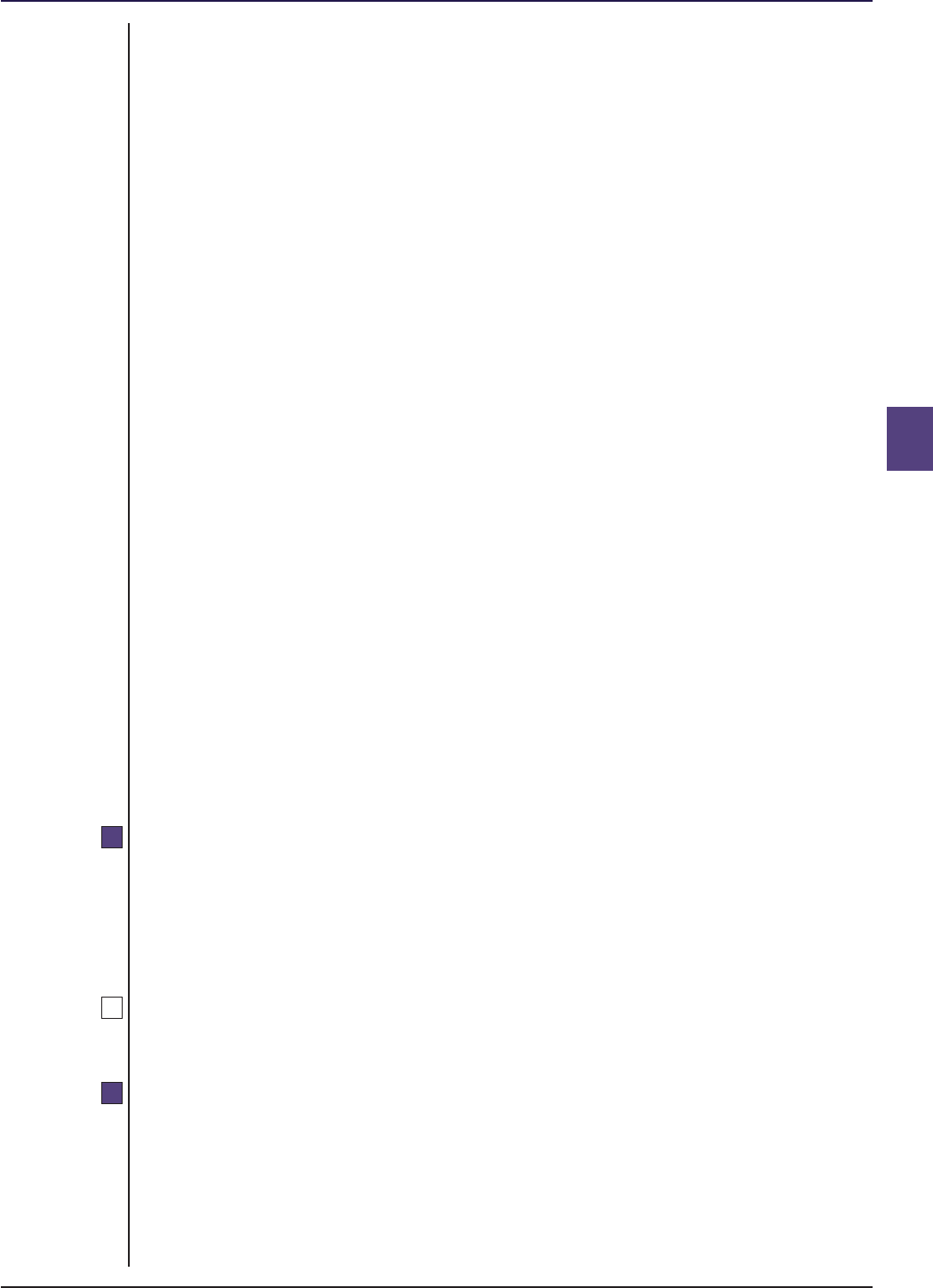
COLL 7 : Suspension of dealings, Section 7.8 : Side pockets
termination of authorised funds
and side pockets
7
R7.8.14
G7.8.15
R7.8.16
■ Release 39 ● Aug 2024 www.handbook.fca.org.uk COLL 7/57
(i) any special arrangements put in place for redemptions of
units in the side pocket class, including any extended time
period for settlement and any facility to pay the proceeds of
redemption to a person other than the unitholder;
(ii) whether redemption proceeds can be reinvested in units of
other classes of the scheme or in units of other schemes; and
(iii) any facility for a unitholder to dispose of an interest in units
by transferring title to them to another person (other than
by operation of law), as a donation or for financial
consideration.
(4) In ■ COLL 4.2.5R(27)(b) (Additional information):
(a) an explanation that there is no certainty that any affected
investment will ever recover its value to a significant extent, or at
all, and that the authorised fund manager may be unable to
realise any material value for unitholders in respect of units held
in the side pocket class;
(b) if applicable, that the costs and charges for operating the side
pocket class may significantly erode the returns from any
realisable value from the affected investments over time; and
(c) whether the authorised fund manager has undertaken to bear all
the costs and charges associated with operating the side pocket
class from its own resources and, if not, a statement explaining:
(i) the risk that costs and charges might cause the cash position
of the side pocket class to become overdrawn;
(ii) that a liability arising as a result of (i) would be accounted
for against the scheme property allocated to the other classes
in the scheme; and
(iii) the steps the authorised fund manager would take to ensure
unitholders in other classes do not bear such a liability.
Modified application of COLL 4.3 (Approvals and notifications)
.....................................................................................................
The authorised fund manager need not treat the creation of a side pocket
class as a fundamental change for the purposes of ■ COLL 4.3.4R
(Fundamental change requiring prior approval by meeting) provided the
authorised fund manager is satisfied on reasonable grounds that the
foreseeable costs of this course of action are not disproportionate to the
benefits.
The guidance in ■ COLL 4.3.5G (Guidance on fundamental change) should be
read in accordance with the modification in ■ COLL 7.8.14R.
If the authorised fund manager considers that the creation of a side pocket
class constitutes a significant change, the authorised fund manager:
(1) may, but need not, give prior written notice to unitholders under
■ COLL 4.3.6R(1) (Significant change requiring pre-event notification);
and
(2) is not required to comply with ■ COLL 4.3.6R(3).

COLL 7 : Suspension of dealings, Section 7.8 : Side pockets
termination of authorised funds
and side pockets
7
G7.8.17
G7.8.18
R7.8.19
G7.8.20
R7.8.21
R7.8.22
■ Release 39 ● Aug 2024www.handbook.fca.org.ukCOLL 7/58
The guidance in ■ COLL 4.3.7G (Guidance on significant changes) should be
read in accordance with the modification in ■ COLL 7.8.16R.
Before announcing its intention to create a side pocket class, the authorised
fund manager should have regard to the reasonable operational needs of
intermediate unitholders and any reasonable periods of time they will need
to establish processes and procedures and communicate information to those
clients for whom the intermediate unitholder acts as a nominee in relation
to units in the scheme.
Modified application of COLL 4.4 (Meetings of unitholders and
service of notices)
.....................................................................................................
(1) ■ COLL 4.4.8R (Voting rights) applies to an authorised fund with a side
pocket class with the modifications set out in (2) and (3) below.
(2) Before a resolution is put to a vote at a unitholder meeting, it must
be made clear whether the resolution relates to or affects:
(a) all the classes of unit in the authorised fund;
(b) those classes of unit in the authorised fund excluding the side
pocket class; or
(c) only the side pocket class.
(3) On a poll, the votes of a unitholder may only be counted to the
extent that the unitholder’s voting rights are attached to units in the
class or classes to which the resolution relates or which the resolution
affects in accordance with (2).
(1) The authorised fund manager will need to ensure that the instrument
constituting the fund and the prospectus reflect the modified
application of ■ COLL 4.4.8R as set out in ■ COLL 7.8.19R.
(2) ■ COLL 7.8.19R modifies the application of ■ COLL 4.4.8R but does not
affect the other matters dealt with in ■ COLL 4.4, such as ■ COLL 4.4.6R
(Quorum).
Modified application of COLL 4.7 (Key investor information
and marketing communications)
.....................................................................................................
The rules in ■ COLL 4.7.2R (Key investor information) do not require an
authorised fund manager to draw up a key investor information document
or a NURS-KII document in relation to a side pocket class.
Additional information for unitholders on the creation of a side
pocket class
.....................................................................................................
The authorised fund manager must provide a written notification to
unitholders which meets the requirements of (1) to (3).
(1) The notification must be provided to unitholders in a timely way,
either shortly before the side pocket class is created or as soon as
practicable afterwards.

COLL 7 : Suspension of dealings, Section 7.8 : Side pockets
termination of authorised funds
and side pockets
7
G7.8.23
■ Release 39 ● Aug 2024 www.handbook.fca.org.uk COLL 7/59
(2) If the unitholder has a financial adviser, the requirement to provide
the notification in (1) may be satisfied by sending it to the financial
adviser.
(3) The notification must explain in a comprehensive manner:
the reasons for the authorised fund manager’s decision to create
a side pocket class, including the expected benefits and the costs
and charges;
the effect on unitholders’ ability to exercise their rights;
if applicable, the basis on which the authorised fund manager
has satisfied itself as to the cost impact of its decision under
■ COLL 7.8.14R;
a description of the main features of the side pocket class;
practical information that unitholders will need to understand
about the changes to their investment in the authorised fund;
and
each of the matters specified in ■ COLL 7.8.13R(4) (Modified
application of COLL 4.2 (Pre-sale notifications)).
(4) The notification must:
(a) be written in clear and plain language;
(b) be provided in a durable medium; and
(c) be accessible by existing and prospective unitholders (e.g. by
publishing a copy in a prominent location on the authorised fund
manager’s website).
(1) In relation to ■ COLL 7.8.22R(3)(a), the information in the notification
should include:
(a) a description of the scheme’s exposure to affected investments
and the authorised fund manager’s approach to valuing them;
(b) an explanation of the risks such affected investments pose to the
scheme and its unitholders, and the authorised fund manager’s
policies for mitigating those risks;
(c) a description of what measures the authorised fund manager is
taking as a result of those risks, and in relation to which affected
investments;
(d) either a detailed list of the affected investments or a link to a
place where they are (or will be) set out, making clear (if
applicable) which affected investments are not subject to any of
the measures referred to in (c); and
(e) an explanation of the costs and charges to be borne by
unitholders in the new classes, and of any resulting change in the
costs and charges borne by existing classes.
(2) In relation to ■ COLL 7.8.22R(3)(d), the information in the notification
should include:
(a) the name of each side pocket class and a description of how the
rights of a unitholder differ from the rights attached to existing
classes and any other new classes;

COLL 7 : Suspension of dealings, Section 7.8 : Side pockets
termination of authorised funds
and side pockets
7
R7.8.24
G7.8.25
R7.8.26
■ Release 39 ● Aug 2024www.handbook.fca.org.ukCOLL 7/60
(b) any alteration in the rights attached to an existing class (e.g. that
it will be valued without reference to affected investments);
(c) the terms on which new units are issued to existing unitholders,
i.e. whether units in a new class are issued in addition to units in
an existing class, or by way of conversion into units in one or
more new classes;
(d) the terms on which units are issued to both existing and new
unitholders; and
(e) the date on which the changes take effect.
(3) In relation to ■ COLL 7.8.22R(3)(e), the information in the notification
should include:
(a) an explanation of the dealing arrangements for redemptions,
including the dealing days;
(b) if applicable, that dealing in units in the side pocket class has
been suspended (see also ■ COLL 7.2.1R(2A), ■ (2B) and ■ (2C)
(Requirement));
(c) when and how redemption proceeds will be paid, including any
alternative arrangements for payment;
(d) the circumstances in which unitholders may convert their units in
a side pocket class to units of another class of the scheme; and
(e) the circumstances in which unitholders may transfer title to their
units in the class to another person.
The authorised fund manager must, as soon as reasonably practicable after
the date on which the side pocket class is created, send a written statement
to each unitholder confirming the number and type of units of each class the
unitholder holds in the authorised fund as a result of the creation of the side
pocket class.
The notification required by ■ COLL 7.8.22R and the written statement of
holdings required by ■ COLL 7.8.24R may be issued to existing unitholders in a
single combined communication. However, it will not be possible to use a
single combined communication where the notification required by
■ COLL 7.8.22R is provided to a unitholder’s financial adviser instead of the
unitholder (see ■ COLL 7.8.22R(2)).
Side pockets: modified application of COLL 5 (Investment and
borrowing powers)
.....................................................................................................
(1) ■ COLL 5 (Investment and borrowing powers) applies to the side
pocket property, subject to the modifications in this rule.
(2) Subject to (4) to (6), in the case of a UCITS scheme, the authorised
fund manager must comply with as much of ■ COLL 5.1 (Introduction),
■ COLL 5.2 (General investment powers and limits for UCITS schemes)
and ■ COLL 5.3 (Derivative exposure) as is practicable having regard to
the limited purpose for which the side pocket class was created.
(3) Subject to (4) to (6), in the case of a non-UCITS retail scheme, the
authorised fund manager must comply with as much of ■ COLL 5.1

COLL 7 : Suspension of dealings, Section 7.8 : Side pockets
termination of authorised funds
and side pockets
7
G7.8.27
■ Release 39 ● Aug 2024 www.handbook.fca.org.uk COLL 7/61
(Introduction) and ■ COLL 5.6 (Investment powers and borrowing limits
for non-UCITS retail schemes) as is practicable having regard to the
limited purpose for which the side pocket class was created.
(4) The authorised fund manager may only enter into a derivative or a
forward transaction which:
(a) is a ‘class hedging transaction’ within the meaning of
■ COLL 3.3.5R(4)(d); and
(b) falls within ■ COLL 3.3.5AR (Hedging of unit classes) (see also
■ COLL 3.3.5BG (Guidance on hedging of unit classes)),
and all provisions of ■ COLL 5 relevant to such transactions apply.
(5) ■ COLL 5.5.3R (Cash and near cash) applies, except that references to
the ‘investment objectives’ of the scheme should be read as
references to the objective in ■ COLL 7.8.33R(2)(b) (Modified application
of COLL 6.6 (Operating duties and responsibilities)).
(6) The following rules apply:
(a) ■ COLL 5.5.4R (General power to borrow);
(b) ■ COLL 5.5.5R (Borrowing limits);
(c) ■ COLL 5.5.6R (Restrictions on lending of money);
(d) ■ COLL 5.5.7R (Restrictions on lending of property other than
money);
(e) ■ COLL 5.5.8R (General power to accept or underwrite placings);
and
(f) ■ COLL 5.5.9R (Guarantees and indemnities).
Side pockets: guidance on modified application of COLL 5
.....................................................................................................
(1) The nature of a side pocket class means that the authorised fund
manager cannot apply the same risk controls to affected investments
that would apply to the rest of the scheme property. In the FCA’s
view, it would not be practicable for the authorised fund manager to
apply a prudent spread of risk to the affected investments or to
comply in full with the specific eligibility and risk-spreading limits set
out in ■ COLL 5 for transferable securities, money-market instruments
and units in collective investment schemes.
(2) However, the modification of the rules provided in ■ COLL 7.8.26R(2)
and ■ (3) is to be interpreted narrowly and only to the extent
necessary to allow the authorised fund manager to manage the risks
of the affected investments allocated to the side pocket class and to
deal efficiently with them. In particular, the modifications in those
rules do not permit an authorised fund manager to take any action
that increases the risk profile of the scheme as a whole, such as
acquiring property or entering into transactions that would not be
permitted by the unmodified rules of ■ COLL 5.

COLL 7 : Suspension of dealings, Section 7.8 : Side pockets
termination of authorised funds
and side pockets
7
R7.8.28
R7.8.29
R7.8.30
■ Release 39 ● Aug 2024www.handbook.fca.org.ukCOLL 7/62
COLL 5 references to ‘scheme property’ in relation to other
parts of the scheme
.....................................................................................................
(1) This rule applies to the authorised fund manager and depositary of
an authorised fund with a side pocket class.
(2) For the purpose of interpreting references to the ‘scheme property’ in
■ COLL 5 in relation to the part of the scheme which is not a ‘side
pocket’, the authorised fund manager and depositary may disregard
the side pocket property.
(3) The reference to a ‘side pocket’ in (2) is a reference to a part of the
scheme which is represented by units in a side pocket class.
Application of COLL 6 (Operating duties and responsibilities):
General
.....................................................................................................
The rules and guidance in ■ COLL 6 (Operating duties and responsibilities)
apply in relation to an authorised fund with a side pocket class subject to the
modifications specified in ■ COLL 7.8.30R (Modified application of COLL 6.2
(Dealing)) to ■ COLL 7.8.36R (Modified application of COLL 6.7 (Payments)).
Modified application of COLL 6.2 (Dealing)
.....................................................................................................
(1) ■ COLL 6.2 (Dealing) applies to a side pocket class subject to the
modifications specified in this rule.
(2) For the purposes of ■ COLL 6.2.8R (Issue and cancellation of units
through an authorised fund manager), if the authorised fund
manager redeems a unit in a side pocket class from a unitholder, the
authorised fund manager must immediately cancel the unit or, in
relation to an AUT or ACS, instruct the depositary to do so.
(3) (a) Subject to (b) and (c), the requirement in ■ COLL 6.2.13R (Payment
for units issued) may be satisfied by the authorised fund manager
allocating such proportion of the scheme property to that class as
the authorised fund manager may determine.
(b) Before making the allocation of scheme property in (a), the
authorised fund manager must consult the depositary and take
its views into account.
(c) After being consulted under (b), the depositary must consider the
proposed allocation of the scheme property and inform the
authorised fund manager if it considers that the allocation is not
appropriate, having regard to the purpose of the side pocket
class.
(4) In ■ COLL 6.2.16R (Sale and redemption), in relation to the redemption
of units in a side pocket class:
(a) paragraphs (4) and (5) apply unless the prospectus makes
alternative provision for how unitholders may be paid; and
(b) paragraphs (5A), (6) and (7) do not apply.
(5) The authorised fund manager must apply ■ COLL 6.2.18R (Limited
issue) as follows:

COLL 7 : Suspension of dealings, Section 7.8 : Side pockets
termination of authorised funds
and side pockets
7
R7.8.31
G7.8.32
R7.8.33
■ Release 39 ● Aug 2024 www.handbook.fca.org.uk COLL 7/63
(a) ■ COLL 6.2.18R(1) applies to the issue of units in a side pocket class;
(b) ■ COLL 6.2.18R(2) does not apply to a side pocket class, and the
authorised fund manager must not provide for the further issue
of units in the same class; and
(c) ■ COLL 6.2.18R(3) applies where a scheme has a side pocket class.
Modified application of COLL 6.3 (Valuation and pricing)
.....................................................................................................
(1) ■ COLL 6.3 (Valuation and pricing) applies in relation to a side pocket
class subject to the modifications specified in this rule (see also
■ COLL 7.8.32G).
(2) For the purpose of ■ COLL 6.3.5R (Price of a unit), the authorised fund
manager must ensure that the price of a unit in a side pocket class is
calculated:
(a) by reference to the net value of the side pocket property; and
(b) in accordance with the provisions of both the instrument
constituting the fund and the prospectus.
(3) Notwithstanding ■ COLL 6.3.11R (Publication of prices), the authorised
fund manager must make public in an appropriate manner the price
of a unit in the side pocket class after every valuation point (see
■ COLL 6.3.4R (Valuation points)), even if the authorised fund manager
is not holding itself out to deal in such units at that valuation point.
The guidance in ■ COLL 6.3.12G(1)(a) to ■ (c) is unlikely to be relevant to an
authorised fund manager when publishing the price of a unit in a side
pocket class in accordance with the rules in this section.
Modified application of COLL 6.6 (Operating duties and
responsibilities)
.....................................................................................................
(1) ■ COLL 6.6 (Operating duties and responsibilities) applies to the
authorised fund manager and depositary of an authorised fund with
a side pocket class, subject to the modifications specified in this rule
and ■ COLL 7.8.34R (Modified application of the assessment of value
rules).
(2) For the purposes of ■ COLL 6.6.3R(3)(a) (Functions of the authorised
fund manager), the authorised fund manager must make decisions as
to the constituents of the scheme property:
(a) in accordance with the investment objectives and policy of the
scheme, but may disregard any affected investment in the side
pocket property; and
(b) with a view to disposing of those affected investments over time
as and when the authorised fund manager considers this can be
done in the best interests of unitholders.
(3) For the purposes of ■ COLL 6.6.4R(1) (General duties of the depositary),
the depositary must take reasonable care to ensure that the scheme is
managed by the authorised fund manager in accordance with the
matters specified in ■ COLL 6.6.4R(1)(a) to ■ (e) as modified by the rules
in this section, and ■ COLL 6.6.4R(2) is to be read accordingly.

COLL 7 : Suspension of dealings, Section 7.8 : Side pockets
termination of authorised funds
and side pockets
7
R7.8.34
G7.8.35
■ Release 39 ● Aug 2024www.handbook.fca.org.ukCOLL 7/64
(4) (a) The duty in ■ COLL 6.6.14R(2) (Duties of the depositary and the
authorised fund manager: investment and borrowing powers)
requiring the authorised fund manager to rectify at its own
expense a breach of ■ COLL 5 (Investment and borrowing powers),
or any provision of the instrument constituting the fund or the
prospectus, does not apply to the extent that:
(i) the breach relates to affected investments in the side pocket
property; and
(ii) the depositary is satisfied that it is not practicable for the
authorised fund manager to comply with the relevant rule in
■ COLL 5, the provision of the instrument constituting the
fund or the prospectus.
(b) ■ COLL 6.6.14R(4), ■ (5) and ■ (6) do not apply to the extent that
the breach falls within (a) above.
Modified application of the assessment of value rules
.....................................................................................................
When conducting an assessment of value for the purposes of ■ COLL 6.6.20R
(Assessment of value) in relation to a scheme that has a side pocket class, the
authorised fund manager:
(1) must consider each of the matters included in ■ COLL 6.6.21R (Table:
minimum considerations – assessment of value) in relation to the
scheme as a whole, including the side pocket class, but may adopt a
proportionate approach to the assessment as it applies specifically to
the side pocket class;
(2) in relation to the side pocket class, need not consider a matter
included in ■ COLL 6.6.21R if, in all the circumstances, it is not relevant
to that class;
(3) must consider whether, to the extent that payments are being made
out of the scheme property attributable to the side pocket class or
are being accrued for that purpose, those payments:
(a) are justified in terms of the value delivered to unitholders in the
side pocket class; and
(b) are not prejudicial to the interests of unitholders of other classes;
and
(4) must consider whether it remains in unitholders’ best interests for the
side pocket class to continue in operation.
(1) In relation to ■ COLL 7.8.34R(1), the authorised fund manager should
consider the side pocket class when carrying out an assessment of
value for a scheme. A side pocket class, because of its special purpose,
might in isolation represent poor value according to the standard
criteria for assessment, so the authorised fund manager should take
account of that purpose in order to reach a proportionate assessment.
However, where payments are being taken out of the side pocket
property, the assessment of overall value delivered to unitholders in
the scheme should give due weight to the impact of those payments.
(2) In relation to ■ COLL 7.8.34R(3)(a), the authorised fund manager should
consider whether the payments out of scheme property can be

COLL 7 : Suspension of dealings, Section 7.8 : Side pockets
termination of authorised funds
and side pockets
7
R7.8.36
R7.8.37
■ Release 39 ● Aug 2024 www.handbook.fca.org.uk COLL 7/65
justified when compared with the value it reasonably expects that
unitholders might receive from any eventual disposal of the affected
investments, taking into account current market conditions and
relevant political and economic developments.
(3) In relation to ■ COLL 7.8.34R(3)(b), it is likely to be unfair or prejudicial
to unitholders’ best interests for costs and charges borne by the side
pocket class to be attributable to unitholders in other classes.
Modified application of COLL 6.7 (Payments)
.....................................................................................................
(1) ■ COLL 6.7 (Payments) applies in relation to an authorised fund with a
side pocket class subject to the modifications and additional
requirements specified in this rule.
(2) The authorised fund manager must not impose any of the following
charges or levies on unitholders of the side pocket class:
(a) a preliminary charge or levy when the units in the side pocket
class are issued;
(b) a charge or levy on the redemption or cancellation of units;
(c) a performance-related management fee.
(3) The authorised fund manager must prevent undue costs being
charged to the scheme and its unitholders.
[Note: In relation to (3), see also ■ COLL 6.6A.2R(5) (Duties of AFMs of UCITS
schemes to act in the best interests of the scheme and its unitholders) and
article 17 of the AIFMD level 2 regulation (Duty to act in the best interests of
the AIF or the investors in the AIF and the integrity of the market).]
Application of COLL 7.2 (Suspension and restart of dealings)
.....................................................................................................
(1) ■ COLL 7.2 (Suspension and restart of dealings) applies in relation to a
side pocket class subject to the modifications specified in this rule.
(2) The authorised fund manager may suspend dealings in units of a side
pocket class, while continuing to deal in other classes of the scheme.
(3) If the authorised fund manager suspends dealings in accordance with
(1), it is not required to carry out any request by a unitholder to
convert units in the suspended side pocket class into units of another
class in which dealing continues.
(4) ■ COLL 7.2.1R applies to the suspension of dealings in units of a side
pocket class under (2).

COLL 7 : Suspension of dealings, Section 7.8 : Side pockets
termination of authorised funds
and side pockets
7
■ Release 39 ● Aug 2024www.handbook.fca.org.ukCOLL 7/66

COLL 7 : Suspension of dealings, Annex 1
termination of authorised funds
and side pockets
7
Matters to be considered by the authorised fund manager before
creating a side pocket class
This Annex belongs to COLL 7.8.4R(3)(a) (Conditions for creating side pocket
classes).
1. Investment risk considerations
(1) Whether there is agreement on which affected in-
vestments should be allocated to a side pocket
class.
(2) The possible impact of relevant sanctions
regimes.
(3) The authorised fund manager’s estimate of the
likelihood of the affected investments achieving
a realisable value within a range of timeframes.
(4) Whether the authorised fund manager intends to
invest in affected countries if the economic situ-
ation stabilises and relevant sanctions regimes al-
low it and, if so, how that might affect unithold-
ers in the side pocket class.
(5) Whether the authorised fund manager’s risk man-
agement function (see COLL 6.11 (Risk control and
internal reporting)) has assessed the likely con-
sequences for the authorised fund manager, the
authorised fund and its unitholders if the au-
thorised fund manager were to take no action to
set up a side pocket class.
(6) That there is a risk management plan which con-
siders different scenarios for what might happen
to the affected investments allocated to the side
pocket class and how such scenarios would be
dealt with.
2. Costs
(1) The authorised fund manager’s estimated one-off
costs of establishing the side pocket class and
whether these costs will be met by the au-
thorised fund manager, or paid from the scheme
property of the authorised fund, or apportioned
between both.
(2) The authorised fund manager’s estimated ongo-
ing annual costs of operating the side pocket
class, and the provision being made to pay these
costs:
(a) over various scenarios
as to the duration of
the class; and
(b) (to the extent they dif-
fer) in relation to the
scenarios considered by
■ Release 39 ● Aug 2024 www.handbook.fca.org.uk COLL 7 Annex 1/1

COLL 7 : Suspension of dealings, Annex 1
termination of authorised funds
and side pockets
7
This Annex belongs to COLL 7.8.4R(3)(a) (Conditions for creating side pocket
classes).
the risk management
plan in paragraph 1(6)
above.
(3) Whether the authorised fund manager will take
a fee for managing the side pocket class and, if
so, what factors have been considered to deter-
mine whether it is set at a fair level and to pre-
vent unitholders from being charged undue costs.
(4) How the total costs, borne by a unitholder hold-
ing units in both the side pocket class and a class
relating to unaffected investments, will compare
to the total cost that the unitholder currently
bears.
(5) If the future total cost for unitholders is expected
to be higher than the current cost, how this will
be justified to unitholders against the uncertain
benefit of a future realisation of value in the side
pocket class.
3. Legal and operational considerations
(1) The authorised fund manager’s legal advice on
the implications of setting up a side pocket class,
having regard to s235(4) and, in the case of an
ICVC, s236(3) of the Act (see the guidance in COLL
7.8.7G).
(2) Whether the authorised fund’s auditor has been
consulted and its view taken into account.
(3) Whether the authorised fund manager is satisfied
that all operational functions for which it is re-
sponsible, including fund accounting and transfer
agency functions, are able to fully support the
side pocket class.
(4) The authorised fund manager’s assessment of the
readiness of firms to implement and maintain ar-
rangements for the side pocket class to operate
effectively, such as those that arrange or deal in
units in the authorised fund, providers of SIPPs
and providers of linked funds.
4. Longer-term investor considerations
(1) The authorised fund manager’s policy for al-
lowing unitholders to exit the class during its
lifetime.
(2) The authorised fund manager’s view of the likely
future options for enabling the side pocket class
to be terminated.
5. Overall assessment
Whether the governing body of the authorised fund manager is satisfied
that:
(1) the potential benefits to unitholders of units in
any side pocket class are proportionate to the es-
timated costs of establishing and running the
class, including over the long term;
■ Release 39 ● Aug 2024www.handbook.fca.org.ukCOLL 7 Annex 1/2

COLL 7 : Suspension of dealings, Annex 1
termination of authorised funds
and side pockets
7
This Annex belongs to COLL 7.8.4R(3)(a) (Conditions for creating side pocket
classes).
(2) proceeding to set up the side pocket class will be
in the best interests of the authorised fund and
its unitholders; and
(3) the depositary has been properly consulted and
its view taken into account.
■ Release 39 ● Aug 2024 www.handbook.fca.org.uk COLL 7 Annex 1/3

COLL 7 : Suspension of dealings, Annex 1
termination of authorised funds
and side pockets
7
■ Release 39 ● Aug 2024www.handbook.fca.org.ukCOLL 7 Annex 1/4

Collective Investment Schemes
Chapter 8
Qualified investor schemes
■ Release 39 ● Aug 2024 www.handbook.fca.org.uk COLL 8/1
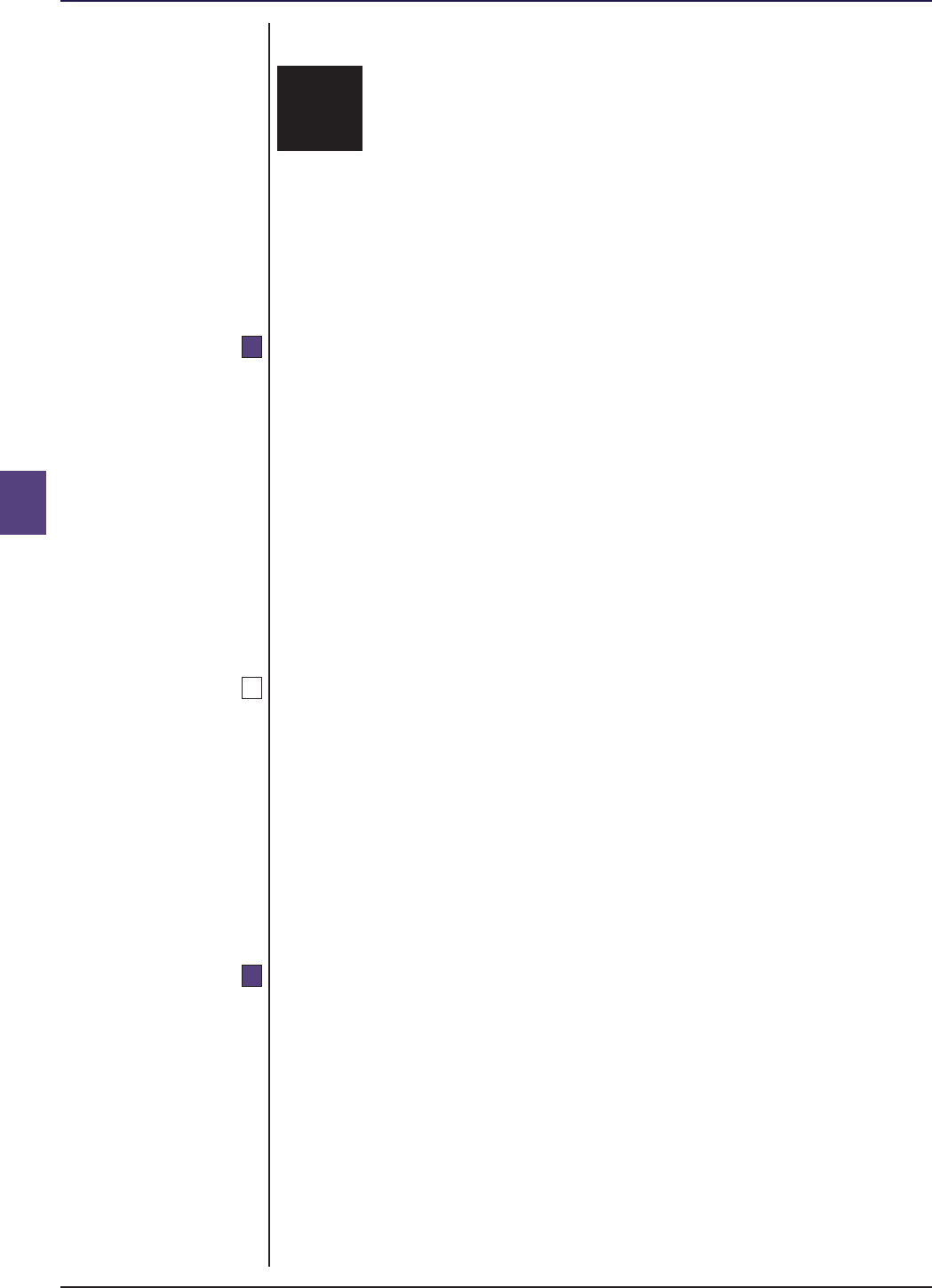
COLL 8 : Qualified investor Section 8.1 : Introduction
schemes
8
R8.1.1
G8.1.2
R8.1.3
■ Release 39 ● Aug 2024www.handbook.fca.org.ukCOLL 8/2
8.1 Introduction
Application
.....................................................................................................
(1) This chapter applies to:
(a) an authorised fund manager of an AUT, ACS or an ICVC;
(b) any other director of an ICVC;
(c) a depositary of an AUT, ACS or an ICVC; and
(d) an ICVC,
which is a qualified investor scheme.
(2) Where this chapter refers to rules in any other chapter of this
sourcebook, those rules and any relevant guidance should be applied
as if they referred to qualified investor schemes.
Purpose
.....................................................................................................
(1) This chapter assists in achieving the statutory objective of protecting
consumers by providing an appropriate degree of protection in
respect of authorised funds that are only intended for investors that
are, in general, prepared to accept a higher degree of risk in their
investments or have a higher degree of experience and expertise than
investors in retail schemes.
(2) This section ceases to apply where a qualified investor scheme has
converted to be authorised as a UCITS scheme or a non-UCITS retail
scheme.
Qualified investor schemes: eligible investors
.....................................................................................................
(1) Subject to (3), the authorised fund manager of a qualified investor
scheme must take reasonable care to ensure that ownership of units
in that scheme is recorded in the register only for a person to whom
such units may be promoted under ■ COBS 4.12B.7R.
(2) The authorised fund manager will be regarded as complying with (1)
and (3) to the extent that it can show that it was reasonable for it to
rely on relevant information provided by another person.
(3) In addition to (1), the authorised contractual scheme manager of a
qualified investor scheme which is an ACS must take reasonable care
to ensure that ownership of units in that scheme is only recorded in
the register for a person that meets the criteria set out in
■ COLL 8 Annex 2 R (ACS Qualified Investor Schemes: eligible investors).

COLL 8 : Qualified investor Section 8.1 : Introduction
schemes
8
G8.1.4
G8.1.5
■ Release 39 ● Aug 2024 www.handbook.fca.org.uk COLL 8/3
Qualified investor schemes - explanation
.....................................................................................................
(1) Qualified investor schemes are authorised funds which are intended
only for professional clients and for retail clients who are
sophisticated investors. For this reason, qualified investor schemes are
subject to a restriction on promotion under ■ COBS 4.12B.6R. See also
■ COBS 4.12B.47G.
(1A) The authorised contractual scheme manager of a qualified investor
scheme which is an ACS must take reasonable care to ensure that
subscription in relation to the units of this type of scheme should only
be in relation to a person to whom such units may be promoted
under ■ COBS 4.12B.7R and who also meets the criteria in
■ COLL 8 Annex 2.
(2) Accordingly, qualified investor schemes have a more relaxed set of
rules governing their operation and in particular their investment
powers than for retail schemes. A qualified investor scheme is
essentially a mixed asset type of scheme where different types of
permitted asset may be included as part of the scheme property,
depending on the investment objectives and policy of that scheme
and within any restrictions in the rules.
Application and notification procedures
.....................................................................................................
Details of the application procedures in respect of qualified investor schemes
are contained in ■ COLL 2.1 (Authorised fund applications). COLLG provides
details on how notifications may be made to the FCA.

COLL 8 : Qualified investor Section 8.2 : Constitution
schemes
8
R8.2.1
R8.2.2
R8.2.3
G8.2.4
R8.2.5
■ Release 39 ● Aug 2024www.handbook.fca.org.ukCOLL 8/4
8.2 Constitution
Application
.....................................................................................................
This section applies to an authorised fund manager in respect of a qualified
investor scheme.
Classes of unit
.....................................................................................................
A qualified investor scheme may issue such classes of unit as are set out in
the instrument constituting the fund, provided the rights of any class are not
unfairly prejudicial as against the interests of the unitholders of any other
class of units in that scheme.
Names of schemes, sub-funds, and classes of units
.....................................................................................................
(1) The authorised fund manager must ensure that the name of the
scheme, a sub-fund or a class of unit is not undesirable or misleading.
(2) Paragraph (3) applies to an authorised fund manager of a qualified
investor scheme, an ICVC which is such a scheme, and any other
directors of such an ICVC.
(3) The scheme or sub-fund:
(a) must not use ‘Long-Term Asset Fund’ or ‘LTAF’ in its name; and
(b) must not otherwise suggest through its name that it is a fund
which invests in long-term assets or describe itself as such.
Undesirable and misleading names
.....................................................................................................
(1) ■ COLL 6.9.6G (Undesirable and misleading names) contains guidance
as to names which may be undesirable or misleading.
(2) The term ‘Long-Term Asset Fund’ or ‘LTAF’ is reserved for long-term
asset funds (see ■ COLL 15).
(3) Only AIFs that are authorised in accordance with the LTIF Regulation
may use the designation ‘LTIF’ or ‘long-term investment fund’.
Instrument constituting the fund
.....................................................................................................
The statements and provisions required by ■ COLL 8.2.6 R must be included in
the instrument constituting the fund of a qualified investor scheme.

COLL 8 : Qualified investor Section 8.2 : Constitution
schemes
8
R8.2.6
■ Release 39 ● Aug 2024 www.handbook.fca.org.uk COLL 8/5
Table: contents of the instrument constituting the fund
.....................................................................................................
This table belongs to ■ COLL 8.2.5 R
1 Description of the authorised fund
Information detailing:
(1) the name of the authorised fund;
(2) that the authorised fund is a qualified investor scheme;
and
(3) in the case of an ICVC, whether the head office of the com-
pany is situated in England and Wales or Wales or Scotland
or Northern Ireland.
Property Authorised Investment Funds
1A For a property authorised investment fund, a statement that:
(1) it is a property authorised investment fund;
(2) no body corporate may seek to obtain or intentionally
maintain a holding of more that 10% of the net asset
value of the fund; and
(3) in the event that the authorised fund manager reasonably
considers that a body corporate holds more than 10% of
the net asset value of the fund, the authorised fund man-
ager is entitled to delay any redemption or cancellation of
units in accordance with 6A if the authorised fund man-
ager reasonably considers such action to be:
(a) necessary in order to enable an orderly reduction of
the holding to below 10%; and
(b) in the interests of the unitholders as a whole.
2 Constitution
The following statements:
(1) the scheme property of the scheme is entrusted to a depos-
itary for safekeeping (subject to any exception permitted
by the rules);
(2) if relevant, the duration of the scheme is limited and, if so,
for how long;
(3) charges and expenses of the scheme may be taken out of
scheme property;
(4) for an ICVC:
(a) what the maximum and minimum sizes of the
scheme's capital are; and
(b) the unitholders are not liable for the debts of the
company;
(4A) for an ICVC which is an umbrella, a statement that the as-
sets of a sub-fund belong exclusively to that sub-fund and
shall not be used to discharge directly or indirectly the liab-
ilities of, or claims against, any other person or body, in-
cluding the umbrella, or any other sub-fund, and shall not
be available for any such purpose;
(4B) for a co-ownership scheme which is an umbrella, the prop-
erty subject to a sub-fund is beneficially owned by the parti-
cipants in that sub-fund as tenants in common (or, in Scot-
land, is the common property of the participants in that
sub-fund) and must not be used to discharge any liabilities
of, or meet any claims against, any person other than the
participants in that sub-fund;

COLL 8 : Qualified investor Section 8.2 : Constitution
schemes
8
■ Release 39 ● Aug 2024www.handbook.fca.org.ukCOLL 8/6
(4C) for a limited partnership scheme, that the scheme prohibits
pooling as is mentioned in section 235(3)(a) of the Act in re-
lation to separate parts of the scheme property, with the ef-
fect that the scheme cannot be an umbrella;
(5) for an AUT:
(a) the trust deed:
(i) is made under and governed by the law of
England and Wales, or the law of Scotland
or the law of Northern Ireland;
(ii) is binding on each unitholder as if he had
been a party to it and that he is bound by
its provisions; and
(iii) authorises and requires the trustee and the
manager to do the things required or permit-
ted of them by its terms;
(b) subject to the provisions of the trust deed and all
the rules made under section 247 of the Act (Trust
scheme rules):
(i) the scheme (other than sums held to the
credit of the distribution account) is held by
the trustee on trust for the unitholders ac-
cording to the number of units held by each
unitholder or, where relevant, according to
the number of individual shares in the
scheme property represented by the units
held by each unitholder; and
(ii) the sums standing to the credit of any distri-
bution account are held by the trustee on
trust to distribute or apply in accordance
with COLL 8.5.15 R (Income);
(c) a Unitholder is not liable to make any further pay-
ment after he has paid the price of his units and
that no further liability can be imposed on him in
respect of the units he holds; and
(d) payments to the trustee by way of remuneration
are authorised to be paid (in whole or in part) out
of the scheme property; and
(6) for an ACS:
(a) the contractual scheme deed:
(i) is made under and governed by the law of
England and Wales, or the law of Scotland
or the law of Northern Ireland;
(ii) is binding on each unitholder as if he had
been a party to it and that he is bound by
its provisions;
(iii) authorises and requires the depositary and
the authorised contractual scheme manager
to do the things required or permitted of
them by its terms; and
(iv) states that units may not be issued to a per-
son other than a person:
(A) who is a:
(i) professional ACS investor;
(ii) large ACS investor; or

COLL 8 : Qualified investor Section 8.2 : Constitution
schemes
8
■ Release 39 ● Aug 2024 www.handbook.fca.org.uk COLL 8/7
(iii) person who already holds un-
its in the scheme; and
(B) to whom units in a qualified investor
scheme may be promoted under COBS
4.12B.7R;
(v) states that the authorised contractual
scheme manager of an ACS must redeem un-
its as soon as practicable after becoming
aware that those units are vested in anyone
(whether as a result of subscription or trans-
fer of units) other than a person meeting
the criteria in (iv)(A) and (B);
(vi) states that for a co-ownership scheme:
(A) the scheme property is beneficially
owned by the participants as tenants
in common (or, in Scotland, is the
common property of the par-
ticipants);
(B) the arrangements constituting the
scheme are intended to constitute a
co-ownership scheme as defined in
section 235A(2) of the Act; and
(C) the operator and depositary are re-
quired to wind up the scheme if dir-
ected to do so by the FCA in exercise
of its power under section 261X (Dir-
ections) or section 261Z (Winding up
or merger of master UCITS) of the
Act;
(vii) states:
(A) whether the transfer of units in the
ACS scheme or, for a co-ownership
scheme which is an umbrella (sub-
funds of which pursue differing pol-
icies in relation to transfer of units),
in each particular sub-fund, is either:
(i) prohibited; or
(ii) allowed;
(B) where transfer of units is allowed by
the scheme or, where appropriate the
sub-fund, in accordance with (A)(ii),
units may only be transferred in ac-
cordance with the conditions speci-
fied by FCA rules, including that units
may not be transferred to a person
other than a person :
(i) who is a:
(1) professional ACS in-
vestor; or
(2) large ACS investor; or
(3) person who already
holds units in the
scheme; and

COLL 8 : Qualified investor Section 8.2 : Constitution
schemes
8
■ Release 39 ● Aug 2024www.handbook.fca.org.ukCOLL 8/8
(ii) to whom units in a qualified
investor scheme may be pro-
moted under COBS 4.12B.7R;
and
(viii) states that for a limited partnership
scheme, the scheme is not dissolved
on any person ceasing to be a limited
partner or nominated partner pro-
vided that there remains at least one
limited partner;
(b) subject to the provisions of the contractual scheme
deed and all the rules made under section 261I of
the Act (Contractual scheme rules) and for the time
being in force:
(i) the scheme property (other than sums
standing to the credit of the distribution ac-
count) is held by, or to the order of, the de-
positary for and on behalf of the unitholders
according to the number of units held by
each unitholder or, where relevant, accord-
ing to the number of individual shares in the
scheme property represented by the units
held by each unitholder; and
(ii) the sums standing to the credit of any distri-
bution account are held by the depositary to
distribute or apply them in accordance with
COLL 8.5.15 R(Income); and
(c) a unitholder in a co-ownership scheme is not liable
to make any further payment after he has paid the
price of his units and that no further liability can be
imposed on him in respect of the units he holds;
(d) a unitholder in a limited partnership scheme is not
liable for the debts or obligations of the limited
partnership scheme beyond the amount of the
scheme property which is available to the au-
thorised contractual scheme manager to meet such
debts or obligations, provided that the unitholder
does not take part in the management of the part-
nership business;
(e) the exercise of rights conferred on limited partners
by FCA rules does not constitute taking part in the
management of the partnership business;
(f) the limited partners, other than the nominated part-
ner, are to be the participants in the scheme; and
(g) the operator of a co-ownership scheme is au-
thorised to:
(i) acquire, manage and dispose of the scheme
property; and
(ii) enter into contracts which are binding on un-
itholders for the purposes of, or in connec-
tion with, the acquisition, management or
disposal of scheme property.
3 Investment objectives
A statement of the object of the scheme, in particular the types of
investments and assets in which it and each sub-fund (where applic-
able) may invest and that the object of the scheme is to invest in
property of that kind with the aim of spreading investment risk.

COLL 8 : Qualified investor Section 8.2 : Constitution
schemes
8
■ Release 39 ● Aug 2024 www.handbook.fca.org.uk COLL 8/9
4 Units in the scheme
A statement of:
(1) the classes of units which the scheme may issue, indicating,
for a scheme which is an umbrella, which class or classes
may be issued in respect of each sub-fund; and
(2) the rights attaching to units of each class (including any
provisions for the expression in two denominations of such
rights).
5 Limitation on issue of and redemption of units
Details as to:
(1) the provisions relating to any restrictions on the right to re-
deem units in any class; and
(2) the circumstances in which the issue of the units of any par-
ticular class may be limited.
6 Income and distribution
Details of the person responsible for the calculation, transfer,
allocation and distribution of income for any class of unit in issue
during the accounting period.
Redemption or cancellation of units on breach of law or rules
6A A statement that where any holding of units by a unitholder is (or
is reasonably considered by the authorised fund manager to be) an
infringement of any law, governmental regulation or rule, those
units must be redeemed or cancelled.
7 Base currency
A statement of the base currency of the scheme.
8 Meetings
Details of the procedures for the convening of meetings and the
procedures relating to resolutions, voting and the voting rights for
unitholders.
9 Powers and duties of the authorised fund manager and depositary
Where relevant, details of any function to be undertaken by the
authorised fund manager and depositary which the rules in COLL
require to be stated in the instrument constituting the fund.
10 Termination and suspension
Details of:
(1) the grounds under which the authorised fund manager
may initiate a suspension of the scheme and any associated
procedures; and
(2) the methodology for determining the rights of unitholders
to participate in the scheme property on winding up.
10A Investment in overseas property through an intermediate holding
vehicle
If investment in an overseas immovable is to be made through an
intermediate holding vehicle or a series of intermediate holding
vehicles, a statement that the purpose of that intermediate hold-
ing vehicle or series of intermediate holding vehicles will be to en-
able the holding of overseas immovables by the scheme.
11 Other relevant matters
Details of those matters which enable the scheme, authorised fund
manager or depositary to obtain any privilege or power conferred

COLL 8 : Qualified investor Section 8.2 : Constitution
schemes
8
R8.2.7
■ Release 39 ● Aug 2024www.handbook.fca.org.ukCOLL 8/10
by the rules in COLL which is not otherwise provided for in the in-
strument constituting the fund.
Limited issue
.....................................................................................................
Units whose issue may be limited can only be issued if permitted by the
instrument constituting the fund, under the conditions set out in the
prospectus and provided that this will not materially prejudice any existing
unitholders in the scheme.
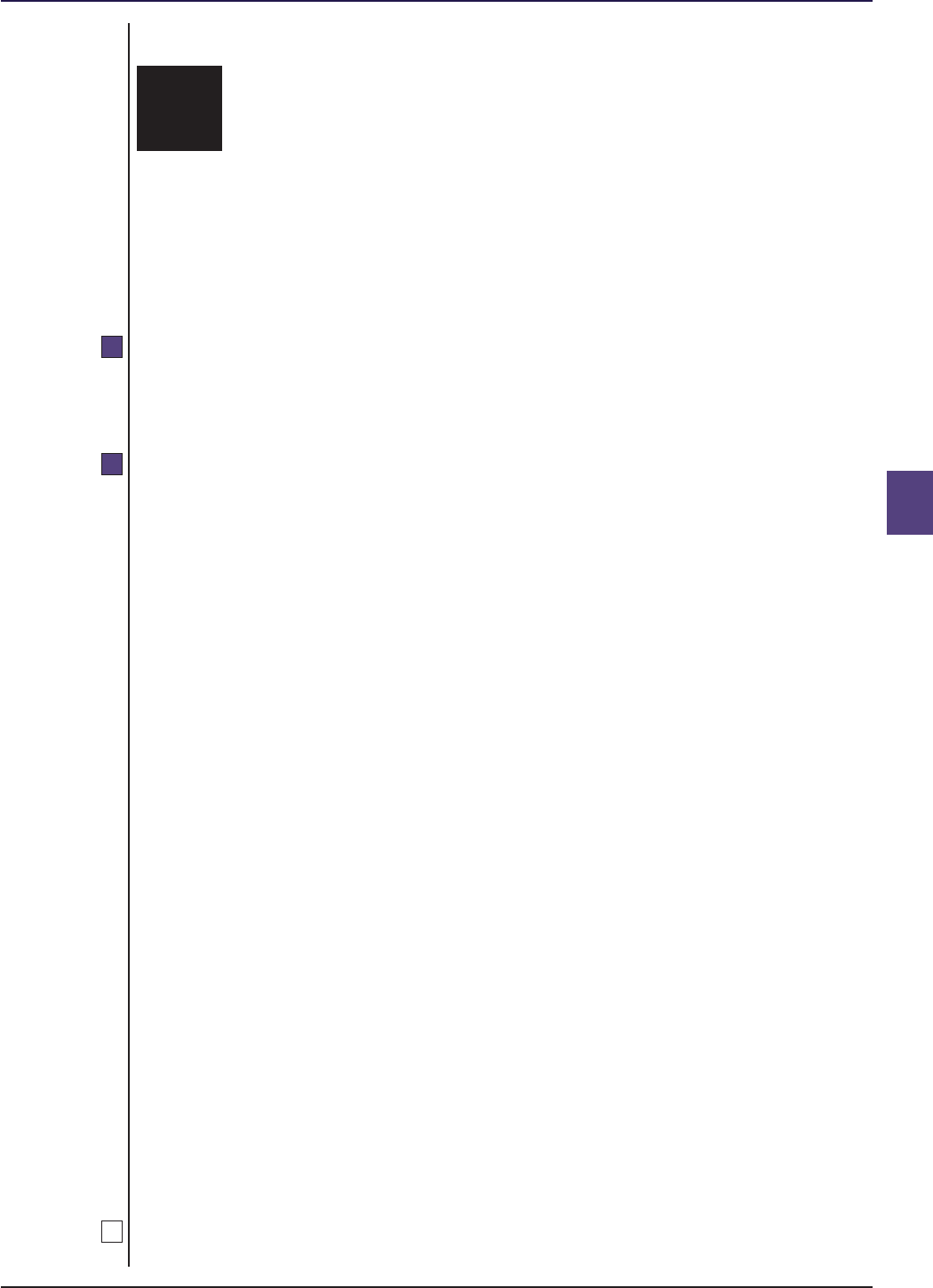
COLL 8 : Qualified investor Section 8.3 : Investor relations
schemes
8
R8.3.1
R8.3.2
G8.3.2A
■ Release 39 ● Aug 2024 www.handbook.fca.org.uk COLL 8/11
8.3 Investor relations
Application
.....................................................................................................
This section applies to an ICVC which is a qualified investor scheme and the
authorised fund manager of a qualified investor scheme.
Drawing up and availability of a prospectus
.....................................................................................................
(1) An authorised fund manager must ensure that a prospectus of a
qualified investor scheme is drawn up which contains the
information, specified in ■ COLL 8.3.4 R (Table: contents of qualified
investor scheme prospectus), and the authorised fund manager must:
(a) revise the prospectus immediately upon the occurrence of any
materially significant change in the information required to be
stated within it;
(b) include the date of any revision in a prominent manner in the
revised prospectus;
(c) send a copy of the original and any revised prospectus to the FSA;
and
(d) review the prospectus periodically and revise it to take account of
any significant change or new matter.
(1A) A full-scope UK AIFM that is the authorised fund manager of a
qualified investor scheme must also ensure that the prospectus
contains the information for investors required by:
(i) ■ FUND 3.2.2R and ■ FUND 3.2.3R (Prior disclosure of information to
investors); and
(ii) ■ FUND 3.2.5R and ■ FUND 3.2.6R (Periodic disclosure), unless the
up-to-date information has been published in the scheme’s most
recent annual report or half-yearly report.
(2) The prospectus must not contain any provision which is unfairly
prejudicial to the interests of unitholders generally or to the
unitholders of any class of units.
(3) An ICVC or the authorised fund manager of an AUT or ACS must
offer a copy of the scheme's most recent prospectus free of charge to
any person eligible to invest in a qualified investor scheme prior to
the purchase of any units.
(1) The PRIIPs Regulation requires the manufacturer of a PRIIP to draw
up a key information document in accordance with the PRIIPs

COLL 8 : Qualified investor Section 8.3 : Investor relations
schemes
8
R8.3.3
R8.3.4
■ Release 39 ● Aug 2024www.handbook.fca.org.ukCOLL 8/12
Regulation before that PRIIP is made available to retail investors (as
defined in the PRIIPs Regulation).
(2) The requirements of the PRIIPs Regulation form part of UK law.
(3) As a result, when a qualified investor scheme is made available to
retail clients the authorised fund manager will need to prepare a key
information document in accordance with the PRIIPs Regulation, in
addition to the prospectus.
False or misleading prospectus
.....................................................................................................
The authorised fund manager must ensure that the prospectus does not
contain any untrue or misleading statement or omit any matter required by
the rules in this sourcebook to be included in it.
Table: contents of qualified investor scheme prospectus
.....................................................................................................
This table belongs to ■ COLL 8.3.2 R.
1 Document status
A statement that this document is the prospectus of the au-
thorised fund valid as at a particular date which shall be the date
of the document.
2 Description of the authorised fund
Information detailing:
(1) the name of the authorised fund;
(1A) its FCA product reference number (PRN);
(2) that the authorised fund is either an ICVC, ACS or an
AUT;
(3) that the scheme is a qualified investor scheme;
(4) where relevant, that the unitholders in an ICVC are not li-
able for the debts of the authorised fund;
(5) where relevant, the address of the ICVC's head office
and the address in the United Kingdom for service on
the ICVC of documents required or authorised to be
served on it;
(6) the effective date of the authorisation order made by
the FCA and, if the duration of the authorised fund is
not unlimited, when it will or may terminate;
(7) the base currency for the authorised fund;
(8) where relevant, the maximum and minimum sizes of the
ICVC's capital;
(9) the circumstances in which the authorised fund may be
wound up under the rules in COLL and a summary of the
procedure for, and the rights of unitholders under, such
a winding up; and
(10) for an ACS that is a limited partnership scheme, the ad-
dress of the proposed principal place of business of the
limited partnership scheme.
3 Investment objectives and policy
(1) Sufficient information to enable a unitholder to
ascertain:

COLL 8 : Qualified investor Section 8.3 : Investor relations
schemes
8
■ Release 39 ● Aug 2024 www.handbook.fca.org.uk COLL 8/13
(a) the investment objectives of the authorised
fund;
(b) the authorised fund's investment policy for
achieving those investment objectives, including:
(i) the general nature of the portfolio and
any intended specialisation;
(ii) the policy for the spreading of risk in
the scheme property; and
(iii) the policy in relation to the exercise of
borrowing powers;
(c) a description of any restrictions in the assets in
which investment may be made; and
(d) the extent (if any) to which that investment pol-
icy does not envisage remaining fully invested at
all times.
(2) For investment in immovables :
(a) the countries or territories of immovables in
which the authorised fund may invest;
(b) the policy of the authorised fund manager in re-
lation to insurance of immovables forming part
of the scheme property; and
(c) the policy of the authorised fund manager in re-
lation to the granting of options over immov-
ables in the scheme property and the purchase
of options on immovables.
(3) If intended, whether the scheme property may consist of
units in collective investment schemes ("second
schemes") which are managed by or operated by the au-
thorised fund manager or by one of its associates and a
statement as:
(a) to the basis of the maximum amount of the
charges in respect of transactions in a second
scheme; and
(b) the extent to which any such charges will be re-
imbursed to the scheme.
(4) If intended, whether the scheme may enter into stock
lending transactions and, if so, what procedures will op-
erate and what collateral will be required.
(5) Where a scheme is a feeder scheme which (in respect of
investment in units in a single collective investment
scheme) is dedicated to units in a collective investment
scheme, details of the master scheme and the minimum
(and, if relevant, maximum) investment that the feeder
scheme may make in it;
4 Distributions and accounting dates
Relevant details of accounting and distribution dates and a de-
scription of the procedures:
(1) for determining and applying income (including how any
distributable income is paid); and
(2) relating to unclaimed distributions.
5 The characteristics of units in the authorised fund
Information as to:

COLL 8 : Qualified investor Section 8.3 : Investor relations
schemes
8
■ Release 39 ● Aug 2024www.handbook.fca.org.ukCOLL 8/14
(1) the names of the classes of units in issue or available for
issue and the rights attached to them in so far as they
vary from the rights attached to other classes;
(2) how unitholders may exercise their voting rights and
what these are; and
(3) the circumstances where a mandatory redemption, can-
cellation or conversion of units from one class to another
may be required.
5A Issue of units in ACSs: eligible investors
(1) A statement that units may not be issued to a person
other than to a person :
(a) who is a:
(i) professional ACS investor; or
(ii) large ACS investor; or
(iii) person who already holds units in the
scheme; and
(b) to whom units in a qualified investor scheme
may be promoted under COBS 4.12B.7R.
(2) A statement that the authorised contractual scheme man-
ager of an ACS must redeem units as soon as practicable
after becoming aware that those units are vested in any-
one (whether as a result of subscription or transfer of un-
its) other than a person meeting the criteria in (1).
5B Transfer of units in ACSs
(1) A statement whether the transfer of units in the ACS
scheme is either:
(a) prohibited; or
(b) allowed;
by the instrument constituting the fund and prospectus.
(2) A statement that where transfer of units is allowed by
the instrument constituting the fund and prospectus in
accordance with (1)(b), units may only be transferred in
accordance with the conditions specified by FCA rules, in-
cluding that units may not be transferred to a person
other than a person :
(a) who is a:
(i) professional ACS investor; or
(ii) large ACS investor; or
(iii) person who already holds units in the
scheme; and
(b) to whom units in a qualified investor scheme
may be promoted under COBS 4.12B.7R.
(3) For a co-ownership scheme which is an umbrella, a state-
ment in accordance with (1)(a) or (1)(b) and, where ap-
propriate, a statement in accordance with (2), must also
be made for the sub-funds. Where individual sub-funds

COLL 8 : Qualified investor Section 8.3 : Investor relations
schemes
8
■ Release 39 ● Aug 2024 www.handbook.fca.org.uk COLL 8/15
have differing policies in relation to transfer of units, sep-
arate statements are required.
6 The authorised fund manager
The following particulars of the authorised fund manager:
(1) its name and the nature of its corporate form;
(2) the country or territory of its incorporation;
(3) the date of its incorporation and if the duration of its
corporate status is limited, when that status will or may
cease;
(4) if it is a subsidiary, the name of its ultimate holding com-
pany and the country or territory in which that holding
company is incorporated;
(5) the address of its registered office, its head office, and, if
different, the address of its principal place of business in
the United Kingdom;
(6) the amount of its issued share capital and how much of
it is paid up;
(7) for an ICVC, a summary of the material provisions of the
contract between the ICVC and the authorised fund man-
ager which may be relevant to unitholders including pro-
visions (if any) relating to termination, compensation on
termination and indemnity; and
(8) for an AUT, the names of the directors of the authorised
fund manager.
7 Directors of an ICVC, other than the ACD
Other than for the ACD:
(1) the names and positions in the ICVC of the directors; and
(2) the manner, amount and calculation of the remuneration
of the directors.
8 The depositary
The following particulars of the depositary:
(1) its name and the nature of its corporate form;
(2) the country or territory of its incorporation;
(3) the address of its registered office and the address of its
head office if that is different from the address of its re-
gistered office; and
(4) if neither its registered office nor its head office is in the
United Kingdom, the address of its principal place of busi-
ness in the United Kingdom.
9 The investment adviser
If an investment adviser is retained in connection with the busi-
ness of the authorised fund, its name and whether or not it is au-
thorised by the FCA.
10 The auditor
The name of the auditor of the authorised fund.
11 The register of Unitholders
Details of the address in the United Kingdom where the register
of unitholders is kept and can be inspected by unitholders.
12 Payments out of the scheme property
The payments that may be made out of the scheme property to

COLL 8 : Qualified investor Section 8.3 : Investor relations
schemes
8
■ Release 39 ● Aug 2024www.handbook.fca.org.ukCOLL 8/16
any person whether by way of remuneration for services, or reim-
bursement of expense and for each category of remuneration or
expense, the following should be specified:
(1) the current rates or amounts of such remuneration;
(2) how the remuneration will be calculated and accrue and
when it will be paid;
(3) if notice has been given to unitholders of the authorised
fund manager's intention to:
(a) introduce a new category of remuneration for
its services; or
(b) increase the basis of any current charge; or
(c) change the basis of the treatment of a payment
from the capital property set out in COLL 8.5.13 R
(2) (Payments);
particulars of that introduction or increase and when it
will take place;
(4) the types of any other charges and expenses that may be
taken out of the scheme property;
(5) if, in accordance with COLL 8.5.13 R (2), all or part of the re-
muneration or expense are to be treated as a capital
charge:
(a) that fact; and
(b) the basis of the charge which may be so treated;
and
(6) where donations are to be made to one or more regis-
tered charities for Sharia compliance purposes from the
income property of the scheme (in this rule, ‘purifica-
tion’), in addition to the details required above, the per-
son who advises the authorised fund manager on the re-
quired percentage of the income property recognised for
purification.
13 Dealing
Details of:
(1) the dealing days and times in the dealing day on which
the authorised fund manager will receive requests for
the sale and redemption of units;
(2) the procedures for effecting:
(a) the issue and cancellation of units;
(b) the sale and redemption of units; and
(c) the settlement of transactions;
(3) the steps required to be taken by a unitholder in re-
deeming units before he can receive the proceeds includ-
ing any relevant notice periods and the circumstances
and periods where a deferral of payment as provided in
COLL 8.5.11 R (3) (Sale and redemption) may be applied;
(4) the circumstances in which the redemption of units may
be suspended;
(5) the days and times in the day on which recalculation of
the price will commence;
(6) details of the minimum number or value of each type of
unit in the authorised fund which:
(a) any one person may hold; and

COLL 8 : Qualified investor Section 8.3 : Investor relations
schemes
8
■ Release 39 ● Aug 2024 www.handbook.fca.org.uk COLL 8/17
(b) may be the subject of any one transaction of
sale or redemption;
(7) the circumstances in which the authorised fund manager
may arrange for, and the procedure for, a redemption of
units in specie;
(8) the circumstances in which the further issue of units in
any particular class may be limited and the procedures re-
lating to this:
(9) the circumstances in which direct issue or cancellation of
units by the ICVC or the depositary of an AUT or ACS (as
appropriate) may occur and the relevant procedures for
such issues and cancellations;
(10) whether a unitholder may effect transfer of title to units
on the authority of an electronic communication and if
so the conditions that must be satisfied in order to effect
a transfer; and
(11) if the authorised fund manager deals as principal in units
of the scheme and holds them for that purpose, a state-
ment of its policy for doing so and, where applicable:
(a) a description of when the authorised
fund manager may retain any profits it
earns and absorb any losses it incurs for
these activities; and
(b) a statement of non-accountability as re-
ferred to in COLL 8.5.14G.
14 Valuation of scheme property
Details as to:
(1) how frequently and at what times of the day the scheme
property will be regularly valued to determine the price
at which units in the scheme may be purchased from or
redeemed by the authorised fund manager and a descrip-
tion of any circumstance where the scheme property may
be specially valued;
(2) in relation to each purpose for which the scheme prop-
erty must be valued, the basis on which it will be valued;
and
(3) how the price of units of each class will be determined,
including a statement that a forward price basis is to be
applied.
15 Sale and redemption charges
If the authorised fund manager makes any charges on sale or re-
demption of units, details of the charging structure and how no-
tice will be provided to unitholders of any increase.
15A Property Authorised Investment Funds
For a property authorised investment fund, a statement that:
(1) it is a property authorised investment fund;
(2) no body corporate may seek to obtain or intentionally
maintain a holding of more than 10% of the net asset
value of the fund; and
(3) in the event that the authorised fund manager reason-
ably considers that a body corporate holds more than
10% of the net asset value of the fund, the authorised
fund manager is entitled to delay any redemption or can-

COLL 8 : Qualified investor Section 8.3 : Investor relations
schemes
8
■ Release 39 ● Aug 2024www.handbook.fca.org.ukCOLL 8/18
cellation of units if the authorised fund manager reason-
ably considers such action to be:
(a) necessary in order to enable an orderly reduc-
tion of the holding to below 10%; and
(b) in the interests of the unitholders as a whole.
16 General information
Details as to:
(1) when annual and half- yearly reports will be published;
and
(2) the address at which copies of the instrument constitut-
ing the fund, any amending instrument and the most re-
cent annual reports may be inspected and from which
copies may be obtained.
17 Information on the umbrella
In the case of a scheme which is an umbrella, the following in-
formation:
(1) that a unitholder may exchange units in one sub-fund
for units in another sub-fund and that such an exchange
is treated as a redemption and sale;
(2) what charges may be made on exchanging units in one
sub-fund for units in other sub-funds;
(3) the policy for allocating between sub-funds any assets of,
or costs, charges and expenses payable out of, the
scheme property which are not attributable to any par-
ticular sub-fund;
(4) in respect of each sub-fund, the currency in which the
scheme property allocated to it will be valued and the
price of units calculated and payments made, if this cur-
rency is not the base currency of the umbrella;
(5) for an ICVC or a co-ownership scheme, that:
(a) for an ICVC, its sub-funds are segregated portfo-
lios of assets and, accordingly, the assets of a
sub-fund belong exclusively to that sub-fund
and shall not be used to discharge directly or in-
directly the liabilities of, or claims against, any
other person or body, including the umbrella, or
any other sub-fund, and shall not be available
for any such purpose;
(aa) for a co-ownership scheme, the property subject
to a sub-fund is beneficially owned by the parti-
cipants in that sub-fund as tenants in common
(or, in Scotland, is the common property of the
participants in that sub-fund) and must not be
used to discharge any liabilities of, or meet any
claims against, any person other than the parti-
cipants in that sub-fund; and
(b) for an ICVC or a co-ownership scheme, while the
provisions of the OEIC Regulations, and section
261P (Segregated liability in relation to umbrella
co-ownership schemes) of the Act in the case of
co-ownership schemes, provide for segregated li-
ability between sub-funds, the concept of segreg-
ated liability is relatively new. Accordingly,
where claims are brought by local creditors in
foreign courts or under foreign law contracts, it
is not yet known how those foreign courts will

COLL 8 : Qualified investor Section 8.3 : Investor relations
schemes
8
■ Release 39 ● Aug 2024 www.handbook.fca.org.uk COLL 8/19
react to regulations 11A and 11B of the OEIC Re-
gulations or, as the case may be, section 261P of
the Act; and
(6) the FCA product reference number (PRN) of each sub-
fund.
18 Application of the prospectus contents to an umbrella
For a scheme which is an umbrella, information required must be
stated:
(1) in relation to each sub-fund where the information for
any sub-fund differs from that for any other; and
(2) for the umbrella as a whole, but only where the informa-
tion is relevant to the umbrella as a whole.
18A Investment in overseas property through an intermediate hold-
ing vehicle
If investment in an overseas immovable is to be made through an
intermediate holding vehicle or a series of intermediate holding
vehicles a statement disclosing the existence of that intermediate
holding vehicle or series of intermediate holding vehicles and con-
firming that the purpose of that intermediate holding vehicle or
series of intermediate holding vehicles is to enable the holding of
overseas immovables by the scheme.
18B Information on authorised contractual schemes
A statement that:
(1) a unitholder in a co-ownership scheme is not liable to
make any further payment after he has paid the price of
his units and that no further liability can be imposed on
him in respect of the units he holds;
(2) a unitholder in a limited partnership scheme is not liable
for the debts or obligations of the limited partnership
scheme beyond the amount of the scheme property
which is available to the authorised contractual scheme
manager to meet such debts or obligations, provided
that the unitholder does not take part in the manage-
ment of the partnership business;
(3) the exercise of rights conferred on limited partners by
FCA rules does not constitute taking part in the manage-
ment of the partnership business; and
(4) the scheme property of a co-ownership scheme is benefi-
cially owned by the participants as tenants in common
(or, in Scotland, is the common property of the par-
ticipants).
18C Sustainability information
The following information, as applicable:
(1) where a sustainability label is used in relation to a
scheme, the information set out at ESG 5.3.3R and ESG
5.3.6R, in accordance with ESG 5.3.2R(1); or
(2) where a sustainability label is not used in relation to a
scheme, but that scheme uses the terms in ESG 4.3.2R(2)
under ESG 4.3.2R(1) the information required under ESG
5.3.2R(2).
19 Additional information
Any other material information which is within the knowledge of
the directors of an ICVC or the authorised fund manager of an
AUT or ACS, or which the directors or authorised fund manager

COLL 8 : Qualified investor Section 8.3 : Investor relations
schemes
8
G8.3.4A
R8.3.5
■ Release 39 ● Aug 2024www.handbook.fca.org.ukCOLL 8/20
would have obtained by the making of reasonable enquiries
which investors and their professional advisers would reasonably
require, and reasonably expect to find in the prospectus, for the
purpose of making an informed judgement about the merits of
investing in the authorised fund and the extent and character-
istics of the risks accepted by so participating.
Pre-sale information to be made available on securities
financing transactions and total return swaps
.....................................................................................................
The Securities Financing Transactions Regulation sets out the
additional information which an authorised fund manager who is a
full-scope UK AIFM of a qualified investor scheme must make
available to investors before they invest.
■ COLL 4.2.5BEU and ■ COLL 4.2.5CEU copy out the relevant provisions
of that regulation.
An authorised fund manager who is a full-scope UK AIFM of a
qualified investor scheme should publish the information in the
scheme prospectus.
An authorised fund manager of a qualified investor scheme that
does not use securities financing transactions or total return swaps is
not required to include the information in ■ COLL 4.2.5CEU in the
prospectus or other pre-sale documents.
[Note: A transitional provision applies to ■ COLL 8.3.4AG: see ■ COLL TP 1.39G]
Report and accounts
.....................................................................................................
(1) The authorised fund manager must prepare a report in respect of
each annual accounting period and half-yearly accounting period.
(2) [deleted]
(2A) Where the first annual accounting period of a scheme is less than 12
months, a half-yearly report need not be prepared.
(3) The authorised fund manager must within a reasonable time after
the end of each relevant accounting period, publish the annual report
and half-yearly report and provide a copy free of charge on request
to any unitholder.
(3A) The timing of the publication of the annual report in (3) is subject to
■ FUND 3.3.3R if the authorised fund manager is a full-scope UK AIFM.
(4) [deleted]
(5) The authorised fund manager must provide free of charge on the
request of any person eligible to invest in the scheme a copy of the
latest annual or half-yearly report before the conclusion of any sale
to such person.
(6) The authorised fund manager must provide a copy of each annual
and half-yearly report to the FCA.

COLL 8 : Qualified investor Section 8.3 : Investor relations
schemes
8
R8.3.5A
■ Release 39 ● Aug 2024 www.handbook.fca.org.uk COLL 8/21
(7) For a scheme which is an umbrella, any annual report provided under
(3) or (5) may be a report prepared under ■ COLL 8.3.5AR (3), but the
authorised fund manager must nevertheless provide free of charge
the report prepared under ■ COLL 8.3.5AR (2) if a unitholder or any
other person eligible to invest in the scheme requests it.
Contents of the annual report
.....................................................................................................
(1) An annual report, other than for a scheme which is an umbrella, must
contain:
(a) the accounts for the annual accounting period prepared in
accordance with the requirements of the SORP;
(b) the report of the authorised fund manager in accordance with
■ COLL 8.3.5C R (Authorised fund manager's report);
(bA) comparative information in accordance with ■ COLL 4.5.10R (1A)
and ■ (2A) (Comparative information);
(c) the report of the depositary in accordance with ■ COLL 8.3.5D R
(Report of the depositary);
(d) the report of the auditor in accordance with ■ COLL 4.5.12 R
(Report of the auditor);
(e) subject to ■ COLL 8.3.5AR(1)(d), its public TCFD product report or an
adequately contextualised and prominent cross-reference and
hyperlink to the report’s location on the firm’s website, in
accordance with ■ ESG 2.3.1R;
(f) where applicable, Part B of its public product-level sustainability
report or an adequately contextualised and prominent cross-
reference and hyperlink to the report’s location on the firm’s
website, in accordance with ■ ESG 5.5.5R; and
(g) if applicable, the amounts paid as donations for Sharia
compliance purposes and the registered charities which received
these payments.
(2) An annual report on a scheme which is an umbrella must be prepared
for the umbrella as a whole and must contain:
(a) for each sub-fund:
(i) the accounts required by (1)(a);
(ii) the report of the authorised fund manager in accordance
with ■ COLL 8.3.5C R;
(iii) comparative information in accordance with
■ COLL 4.5.10R (1A) and ■ (2A);
(iv) subject to ■ COLL 8.3.5AR(2)(v), its public TCFD product report
or an adequately contextualised and prominent cross-
reference and hyperlink to the report’s location on the firm’s
website, in accordance with ■ ESG 2.3.1R;
(v) where applicable, Part B of its public product-level
sustainability report or an adequately contextualised and
prominent cross-reference and hyperlink to the report’s
location on the firm’s website, in accordance with
■ ESG 5.5.5R; and

COLL 8 : Qualified investor Section 8.3 : Investor relations
schemes
8
■ Release 39 ● Aug 2024www.handbook.fca.org.ukCOLL 8/22
(vi) if applicable, the amounts paid as donations for Sharia
compliance purposes and the registered charities which
received these payments;
(b) [deleted]
(c) the report of the depositary in accordance with ■ COLL 8.3.5D R;
and
(d) the report of the auditor in accordance with ■ COLL 4.5.12 R.
(3) The authorised fund manager of a scheme which is an umbrella may,
in addition to complying with (2), prepare a further annual report for
any one or more individual sub-funds of the umbrella, in which case
it must contain:
(a) for the sub-fund:
(i) the accounts required by (1)(a);
(ii) the report of the authorised fund manager in accordance
with ■ COLL 8.3.5C R; and
(iii) comparative information in accordance with
■ COLL 4.5.10R (1A) and ■ (2A);
(b) the report of the depositary in accordance with ■ COLL 8.3.5D R;
and
(c) the report of the auditor in accordance with ■ COLL 4.5.12 R.
(4) The directors of an ICVC or the authorised fund manager of an AUT
or ACS must ensure that the accounts referred to in (1)(a), (2)(a) and
(3)(a) give a true and fair view of the net revenue and the net capital
gains or losses on the scheme property of the authorised fund or sub-
fund for the relevant annual accounting period, and of the financial
position of the authorised fund or sub-fund as at the end of that
period.
(5) An annual report of an authorised fund must also contain a
statement setting out a description of the assessment of value
required by ■ COLL 8.5.17R including:
(a) a separate discussion and conclusion for the matters covered in
each paragraph of ■ COLL 6.6.21R, and for each other matter that
formed part of the assessment, covering the considerations taken
into account in the assessment, a summary of its findings and the
steps undertaken as part of or as a consequence of the
assessment;
(b) an explanation for any case in which benefits from economies of
scale that were identified in the assessment have not been passed
on to unitholders;
(c) an explanation for any case in which unitholders hold units in a
class for which the payments out of scheme property in relation
to that class as set out in the prospectus (in this rule, “charges”)
are higher than those applying to other classes of the same
scheme with substantially similar rights;
(d) the conclusion of the authorised fund manager’s assessment of
whether the charges are justified in the context of the overall
value delivered to the unitholders in the scheme; and

COLL 8 : Qualified investor Section 8.3 : Investor relations
schemes
8
G8.3.5AA
R8.3.5B
■ Release 39 ● Aug 2024 www.handbook.fca.org.uk COLL 8/23
(e) if the assessment has identified that the charges are not justified
in the context of the overall value delivered to the unitholders, a
clear explanation of what action has been or will be taken to
address the situation.
(6) An AFM need not include the information required by (5) in its
annual report if it makes the information available to unitholders
annually in a composite report covering two or more of the schemes
it manages, published in the same manner as the annual report.
Information to be included in annual reports on securities
financing transactions and total return swaps
.....................................................................................................
(1) The Securities Financing Transactions Regulation sets out the
additional information which an authorised fund manager who is a
full-scope UK AIFM of a qualified investor scheme must include in the
scheme’s annual report.
(2) ■ COLL 4.5.8ABEU and ■ COLL 4.5.8ACEU copy out the relevant provisions
of that regulation.
(3) An authorised fund manager of a qualified investor scheme that has
not used securities financing transactions or total return swaps during
the relevant annual accounting period is not required to include the
information in ■ COLL 4.5.8ACEU in its reports.
Contents of the half-yearly report
.....................................................................................................
(1) A half-yearly report on an authorised fund or sub-fund must contain:
(a) the accounts for the half-yearly accounting period which must be
prepared in accordance with the requirements of the SORP;
(b) the report of the authorised fund manager in accordance with
■ COLL 8.3.5C R;
(c) subject to ■ COLL 8.3.5BR(1)(d), its public TCFD product report or an
adequately contextualised and prominent cross-reference and
hyperlink to the report’s location on the firm’s website, in
accordance with ■ ESG 2.3.1R, where the half-yearly report most
closely follows the reporting deadline of 30 June, under
■ ESG 2.1.1R(1); and
(d) where applicable, Part B of its public product-level sustainability
report or an adequately contextualised and prominent cross-
reference and hyperlink to the report’s location on the firm’s
website, in accordance with ■ ESG 5.5.5R, where the half-yearly
report is the report that most closely follows the date on which
Part B of the public product-level sustainability report was
published.
(2) For a scheme which is an umbrella, the authorised fund manager may
choose whether the half-yearly report is prepared for the umbrella as
a whole, or for each individual sub-fund, or both.

COLL 8 : Qualified investor Section 8.3 : Investor relations
schemes
8
R8.3.5C
R8.3.5D
R8.3.5E
■ Release 39 ● Aug 2024www.handbook.fca.org.ukCOLL 8/24
Authorised fund manager's report
.....................................................................................................
The report of the authorised fund manager must include:
(1) a review of the investment activities during the period to which the
report relates;
(1A) a portfolio statement prepared in accordance with the requirements
of the SORP;
(1B) in the case of an umbrella which has more than one sub-fund,
particulars in the form of a table showing, as at the end of the period
to which the report relates:
(a) for each sub-fund, the number of units in that sub-fund that
were held by a second sub-fund of that umbrella; and
(b) the value of each such holding;
or, alternatively, a statement that there were no such holdings as at
the end of that period;
(2) particulars of any fundamental or significant change to the
authorised fund made since the date of the last report; and
(3) any other information which would enable unitholders to make an
informed judgement on the development of the activities of the
authorised fund during the period and the results of those activities
as at the end of the period.
Report of the depositary
.....................................................................................................
(1) The depositary must make an annual report to unitholders which
must be included in the annual report.
(2) The depositary's report must contain:
(a) a description, which may be in summary form, of the duties of
the depositary under ■ COLL 8.5.4 R (Duties of the depositary) and
in respect of the safekeeping of the scheme property; and
(b) a statement whether in any material respect:
(i) the issue, sale, redemption and cancellation and calculation
of the price of the units and the application of the
authorised fund's revenue, have not been carried out in
accordance with the rules in this sourcebook and, where
applicable, the OEIC Regulations and the instrument
constituting the fund; and
(ii) the investment and borrowing powers and restrictions
applicable to the authorised fund have been exceeded.
Signing of annual and half-yearly reports
.....................................................................................................
The annual reports in ■ COLL 8.3.5AR (1) and ■ (2) and the half-yearly reports
in ■ COLL 8.3.5BR (1) must:
(1) in the case of an ICVC, if there is:

COLL 8 : Qualified investor Section 8.3 : Investor relations
schemes
8
R8.3.6
G8.3.7
R8.3.8
■ Release 39 ● Aug 2024 www.handbook.fca.org.uk COLL 8/25
(a) more than one director, be approved by the board of directors
and signed on their behalf by the ACD and at least one other
director; or
(b) no director other than the ACD, be signed by the ACD;
(2) in the case of an AUT or ACS, if the authorised fund manager has:
(a) more than one director, be signed by at least two directors of the
authorised fund manager; or
(b) only one director, be signed by the director of the authorised
fund manager.
Alterations to the scheme and notices to Unitholders
.....................................................................................................
(1) Any proposed change which would be reasonably considered to be a
fundamental change to the scheme requires the prior sanction of an
ordinary resolution of the unitholders.
(2) Any proposed change to the scheme which is not within (1) but which
would be reasonably considered to be significant, requires the giving
of reasonable notice to Unitholders to become effective.
(3) Alterations affecting only a particular sub-fund or class of units may
be approved in accordance with (1) or (2) for the particular sub-fund
or class of units, with the consent of, or, as the case may be, notice to,
the relevant unitholders.
(4) This rule and ■ COLL 8.3.8 R (Meetings) will apply (unless the context
requires otherwise) to alterations concerning unitholders of a
particular sub-fund or class of units rather than the scheme or sub-
fund as a whole.
Alterations to the scheme and notices to Unitholders: guidance
.....................................................................................................
Although account should be taken of the guidance on fundamental changes
(■ COLL 4.3.5 G (Guidance on fundamental changes)) and significant changes
(■ COLL 4.3.7 G (Guidance on significant changes)) the impact of any change
to the scheme should be assessed individually based on the nature of the
scheme and its investor profile.
Meetings
.....................................................................................................
(1) Details of the procedures for the convening and conducting of
meetings and resolutions must be set out in the instrument
constituting the fund and be reasonable and fair as between all
relevant parties.
(2) The authorised fund manager must record and keep minutes for six
years of all proceedings to which ■ COLL 8.3.6 R (Alterations to the
scheme and notices to Unitholders) and this rule are relevant.
(3) The provisions in ■ COLL 4.4.12 R (Notices to Unitholders),
■ COLL 4.4.13 R (Other notices) and ■ COLL 4.4.14 G (References to
writing and electronic documents) apply in relation to qualified
investor schemes.

COLL 8 : Qualified investor Section 8.4 : Investment and borrowing
schemes powers
8
R8.4.1
R8.4.1A
R8.4.2
R8.4.3
■ Release 39 ● Aug 2024www.handbook.fca.org.ukCOLL 8/26
8.4 Investment and borrowing powers
Application
.....................................................................................................
(1) Subject to (1A), this section applies to an ICVC which is a qualified
investor scheme and an authorised fund manager and a depositary of
a qualified investor scheme.
(1A) Other than ■ COLL 8.4.2R, ■ COLL 8.4.4CG, ■ COLL 8.4.7R, ■ COLL 8.4.8R
and ■ COLL 8.4.9AG this section does not apply where the qualified
investor scheme in question is a regulated money market fund.
(1) Where this section refers to a second scheme, and the second scheme
is a feeder scheme, which (in respect of investment in units in
collective investment schemes) is dedicated to units in a single
collective investment scheme, the reference in this section to the
second scheme must be read as if it were a reference to any scheme
into which the feeder scheme's master scheme invests.
(2) Where this section refers to a second scheme, and the second scheme
is a master scheme to which (in respect of investment in units in
collective investment schemes) the relevant qualified investor scheme
is dedicated, the reference in this section to the second scheme must
be read as if it were a reference to any scheme into which that
master scheme invests.
Spread of risk
.....................................................................................................
An authorised fund manager must take reasonable steps to ensure that the
scheme property of a qualified investor scheme provides a spread of risk,
taking into account the investment objectives and policy of the scheme as
stated in the most recently published prospectus, and in particular, any
investment objective as regards return to the unitholders (whether through
capital appreciation or income or both).
Investment powers: general
.....................................................................................................
(1) The scheme property of a qualified investor scheme may, subject to
the rules in this chapter, comprise any assets or investments to which
it is dedicated.
(2) The instrument constituting the fund and the prospectus may further
restrict:
(a) the kinds of assets in which the scheme property may be
invested;

COLL 8 : Qualified investor Section 8.4 : Investment and borrowing
schemes powers
8
R8.4.4
R8.4.4A
R8.4.4B
■ Release 39 ● Aug 2024 www.handbook.fca.org.uk COLL 8/27
(b) the types of transactions permitted and any relevant limits; and
(c) the borrowing powers of the scheme.
Qualified investor schemes: general
.....................................................................................................
The scheme property of a qualified investor scheme must, except where
otherwise provided by the rules in this chapter, consist only of one or more
of the following to which it is dedicated:
(1) any specified investment:
(a) within articles 74 to 86 of the Regulated Activities Order; and
(b) within article 89 (Rights to or interests in investments) of the
Regulated Activities Order where the right or interest relates to a
specified investment within (a);
(1A) (to the extent not within (1)(a)) an interest in a loan, provided that
the loan was not originated to:
(a) a natural person;
(b) the authorised fund manager of the qualified investor scheme;
(c) the depositary of the qualified investor scheme;
(d) an affiliated company of the person in (b) or (c); or
(e) a person who intends to use, or uses, the credit for the purpose
of investing in a derivative, cryptoasset derivative, an unregulated
transferable cryptoasset, precious metals or a commodity contract
within (4);
(2) an interest in an immovable under ■ COLL 8.4.11 R (Investment in
property);
(3) precious metals; or
(4) a commodity contract traded on an RIE or a recognised overseas
investment exchange.
[Note: Full-scope UK AIFMs are subject to specific requirements relating to
conflicts of interest (see articles 30 to 36 in the AIFMD level 2 regulation and
■ SYSC 10.1.23R to ■ SYSC 10.1.26R (Additional requirements for an AIFM)).]
[Note: In relation to (1A), a borrower who receives money by way of deposit
from a person who is not a bank may (if the borrower is acting by way of
business) be carrying on the regulated activity of accepting deposits, but an
exclusion in the Regulated Activities Order may be available. See also article
2 of the Business Order.]
Money market funds
.....................................................................................................
[deleted]
[deleted]

COLL 8 : Qualified investor Section 8.4 : Investment and borrowing
schemes powers
8
G8.4.4C
R8.4.5
■ Release 39 ● Aug 2024www.handbook.fca.org.ukCOLL 8/28
Investment powers and limits for qualified investor schemes that are
regulated money market funds are set out in the Money Market Funds
Regulation. Subject to complying with that Regulation, the instrument
constituting the fund may further restrict:
(1) the kinds of assets in which the scheme property may be invested;
(2) the types of transactions permitted and any relevant limits; and
(3) the borrowing powers of the scheme.
Investment in collective investment schemes
.....................................................................................................
(1) Subject to (2) and (3) (where applicable), a qualified investor scheme
may invest in units in a scheme (a ‘second scheme’) only if the second
scheme is:
(a) a regulated collective investment scheme; or
(b) a scheme not within (a) where the authorised fund manager has
taken reasonable care to determine that:
(i) it is the subject of an independent annual audit conducted in
accordance with international standards on auditing;
(ii) the calculation of the net asset value of each of the second
schemes and the maintenance of their accounting records is
segregated from the investment management function;
(iii) it (and any master scheme to whose units it is dedicated) is
prohibited from investing in units of the qualified investor
scheme or, if there is no such prohibition, the qualified
investor scheme's authorised fund manager is satisfied, on
reasonable grounds and after making all reasonable
enquiries, that no such investment will be made by either the
second scheme or any fund in which the second scheme
invests; and
(iv) it operates in accordance with the principle of risk spreading
as described in ■ COLL 8.4.2 R.
(2) A qualified investor scheme must not invest more than 20% in value
of the scheme property in units in second schemes which are
unregulated schemes, qualified investor schemes or long-term asset
funds unless the authorised fund manager has carried out
appropriate due diligence on each of the second schemes and has
taken reasonable care to determine that, after making all reasonable
enquiries and on reasonable grounds, the second scheme complies
with relevant legal and regulatory requirements.
(3) The authorised fund manager of a qualified investor scheme with
more than 20% in value of the scheme property invested in one or
more second schemes which are unregulated schemes, qualified
investor schemes or long-term asset funds must carry out appropriate
due diligence on those schemes on an ongoing basis.

COLL 8 : Qualified investor Section 8.4 : Investment and borrowing
schemes powers
8
R8.4.5A
G8.4.5B
R8.4.6
■ Release 39 ● Aug 2024 www.handbook.fca.org.uk COLL 8/29
Investment in a collective investment scheme that is an
umbrella
.....................................................................................................
Where the second scheme in ■ COLL 8.4.5 R is an umbrella, the provisions
apply to each sub-fund as if it were a separate scheme.
(1) The authorised fund manager of a qualified investor scheme carrying
out due diligence for the purpose of ■ COLL 8.4.5R should use
reasonable efforts to make enquiries and obtain the information
needed to be able to consider the matters specified in ■ COLL 5.7.11G,
as if that guidance related to ■ COLL 8.4.5R.
(2) Where ■ COLL 5.7.11G (10) refers to ■ COLL 6.3 (Valuation and pricing),
that reference should be read as if it were a reference to
■ COLL 8.5.9 R (Valuation, pricing and dealing).
(3) In addition to the guidance at ■ COLL 5.7.11 G the authorised fund
manager should, as part of its due diligence process, consider
whether the property of each of the second schemes is held in
safekeeping by a third party, which is subject to prudential regulation
and independent of the investment manager of the second scheme
and, if not, what controls over the property of the second scheme are
in place to protect investors.
[Note: See also articles 18 to 20 of the AIFMD level 2 regulation for
further requirements that apply to full-scope UK AIFMs in relation to
due diligence.]
Delivery of property under a transaction in derivatives or a
commodities contract
.....................................................................................................
(1) An authorised fund manager must take reasonable care to determine
the following when entering into any transaction in derivatives or
any commodity contract which may result in any asset becoming part
of the scheme property:
(a) if it is an asset in which the scheme property could be invested,
that the transaction:
(i) can be readily closed out; or
(ii) would at the expected time of delivery relate to an asset
which could be included in the scheme property under the
rules in this chapter; or
(b) in any other case that the transaction can be readily closed out.
(2) An authorised fund manager may acquire an asset within (1) if its
determination has proved incorrect and if it determines that
acquisition is in the interests of the unitholders, provided it has the
consent of the depositary.
(3) Any asset within (1) acquired in accordance with (2) may form part of
the scheme property despite any other rule in this chapter until the
position can be rectified.

COLL 8 : Qualified investor Section 8.4 : Investment and borrowing
schemes powers
8
R8.4.7
G8.4.7-A
R8.4.7A
R8.4.8
■ Release 39 ● Aug 2024www.handbook.fca.org.ukCOLL 8/30
Cover for transactions in derivatives and forward transactions
.....................................................................................................
(1) A transaction in derivatives or a forward transaction may be entered
into only if the maximum exposure, in terms of the principal or
notional principal created by the transaction to which the scheme is
or may be committed by another person, is covered globally under
(2).
(2) Exposure is globally covered if adequate cover from within the
scheme property is available to meet the scheme's total exposure
taking into account any reasonably foreseeable market movement.
(3) The total exposure relating to derivatives held in a qualified investor
scheme may not exceed the net value of the scheme property.
(4) No element of cover may be used more than once.
(1) When calculating whether cover is adequate under ■ COLL 8.4.7R(2),
the authorised fund manager may calculate the global exposure of
the scheme by using the commitment approach or the value at risk
approach. For this purpose, value at risk means a measure of the
maximum expected loss at a given confidence level over the specific
time period.
(2) The method selected should be appropriate, taking into account:
(a) the investment strategy pursued by the qualified investor scheme;
(b) the types and complexities of the derivatives and forward
transactions used; and
(c) the proportion of the scheme property comprising derivatives and
forward transactions.
Valuation of an OTC derivative
.....................................................................................................
A transaction in an OTC derivative must be capable of valuation which it will
only be if the authorised fund manager having taken reasonable care
determines that, throughout the life of the derivative (if the transaction is
entered into), it will be able to value the investment concerned with
reasonable accuracy:
(1) on the basis of the pricing model; or
(2) on some other reliable basis reflecting an up-to-date market value;
which has been agreed between the authorised fund manager and the
depositary.
Continuing nature of limits and requirements
.....................................................................................................
(1) An authorised fund manager must, as frequently as necessary to
ensure compliance with ■ COLL 8.4.7 R (2) and ■ COLL 8.4.7 R (4), re-
calculate the amount of cover required in respect of derivatives and
forwards positions in existence under this chapter.

COLL 8 : Qualified investor Section 8.4 : Investment and borrowing
schemes powers
8
R8.4.9
G8.4.9A
R8.4.10
■ Release 39 ● Aug 2024 www.handbook.fca.org.uk COLL 8/31
(2) Derivatives and forwards positions may be retained in the scheme
property only so long as they remain covered globally under
■ COLL 8.4.7 R.
(3) An authorised fund manager must use a risk management process
enabling it to monitor and measure as frequently as appropriate the
risk of a scheme's derivatives positions and their contribution to the
overall risk profile of the scheme.
Permitted stock lending
.....................................................................................................
(1) The ICVC, or the depositary at the request of the ICVC, or the
depositary of an AUT or ACS at the request of the authorised fund
manager, may enter into a repo contract or a stock lending
arrangement within section 263B of the Taxation of Chargeable Gains
Act 1992 (without extension by section 263C).
(2) The depositary must ensure that the value of any collateral, for the
stock lending arrangement is at all times at least equal to the value
of the securities transferred by the depositary.
(3) In the case of the expiry of validity of any collateral, the duty in (2) is
satisfied if the depositary or the authorised fund manager, as
appropriate, takes reasonable care to determine that sufficient
collateral will be transferred by close of business on the day of expiry.
The Money Market Funds Regulation sets out restrictions in relation to stock
lending and repo contracts that apply in respect of regulated money market
funds.
General power to borrow
.....................................................................................................
(1) The ICVC or depositary of an AUT or ACS (on the instructions of the
authorised fund manager) may borrow money for the use of the
authorised fund on terms that the borrowing is to be repayable out
of the scheme property.
(2) The authorised fund manager must ensure that the authorised fund's
borrowing does not, on any day, exceed 100 % of the net value of
the scheme property and must take reasonable care to ensure that
arrangements are in place that will enable borrowings to be closed
out to ensure such compliance.
(3) In this rule "borrowing" also includes any arrangement (including a
combination of derivatives) designed to achieve a temporary injection
of money into the scheme property in the expectation that the sum
will be repaid.
(4) Where the limit in (2) is breached, the authorised fund manager must
take action in accordance with the principles set out in
■ COLL 8.5.3 R (3) to ■ COLL 8.5.3 R (5) (Duties of the authorised fund
manager: investment and borrowing powers) to deal with that
breach.

COLL 8 : Qualified investor Section 8.4 : Investment and borrowing
schemes powers
8
R8.4.11
■ Release 39 ● Aug 2024www.handbook.fca.org.ukCOLL 8/32
Investment in property
.....................................................................................................
(1) Any investment in land or a building held within the scheme property
of a qualified investor scheme must be in an immovable within (2).
(2) For an immovable :
(a) it must be situated in a country or territory identified in the
prospectus;
(b) the authorised fund manager must have taken reasonable care to
determine that the title to the interest in the immovable is a
good marketable title; and
(c) the authorised fund manager of an AUT or ACS or the ICVC must
have received a report from the appropriate valuer that:
(i) contains a valuation of the interest in the immovable (with
and without any relevant existing mortgage); and
(ii) states that in the appropriate valuer's opinion the interest in
the immovable would if acquired by the scheme, be capable
of being disposed of reasonably expeditiously at that
valuation;
(d) unless (c) is satisfied, the authorised fund manager of an AUT or
ACS or the ICVC must have received a report from an appropriate
valuer valuing the interest in the immovable and stating that:
(i) the immovable is adjacent to or in the vicinity of another
immovable included in the scheme property; and
(ii) in the opinion of the appropriate valuer, the total value of
the interests in both immovables would at least equal the
sum of the price payable for the interest in the immovable
and the existing value of the interest in the other
immovable; and
(e) it must not be bought:
(i) if it becomes apparent to the authorised fund manager that
the report in either (c) or (d) could no longer reasonably be
relied upon; or
(ii) at a price more than 105% of the valuation relevant to the
interest for that immovable in the report in either (c) or (d).
(3) Any contents of any building may be regarded as part of the relevant
immovable.
(4) An appropriate valuer must be a person who:
(a) has knowledge of and experience in the valuation of immovables
of the relevant kind in the relevant area;
(b) is qualified to be a standing independent valuer of an authorised
fund or is considered by the scheme'sstanding independent
valuer to hold an equivalent qualification;
(c) is independent of the ICVC, the depositary and each of the
directors of the ICVC or of the authorised fund manager and
depositary of the AUT or ACS; and
(d) has not engaged himself or any of his associates in relation to the
finding of the immovable for the scheme or the finding of the
scheme for the immovable.

COLL 8 : Qualified investor Section 8.4 : Investment and borrowing
schemes powers
8
R8.4.11A
G8.4.11B
R8.4.12
■ Release 39 ● Aug 2024 www.handbook.fca.org.uk COLL 8/33
Investment in overseas property through an intermediate
holding vehicle
.....................................................................................................
(1) An overseas immovable may be held by a scheme through an
intermediate holding vehicle whose purpose is to enable the holding
of immovables by the scheme or a series of such intermediate holding
vehicles, provided that the interests of unitholders are adequately
protected. Any investment in an intermediate holding vehicle for the
purpose of holding an overseas immovable shall be treated for the
purposes of this section as if it were a direct investment in that
immovable.
(2) An intermediate holding vehicle must be wholly owned by the
scheme or another intermediate holding vehicle or series of
intermediate holding vehicles wholly owned by the scheme, unless
and to the extent that local legislation or regulation relating to the
intermediate holding vehicle holding the immovable requires a
proportion of local ownership.
(1) The authorised fund manager may transfer capital and income
between an intermediate holding vehicle and the scheme by the use
of inter-company debt if the purpose of this is for investment in
immovables and repatriation of income generated by such
investment. In using inter-company debt, the authorised fund
manager should ensure the following:
(a) a record of inter-company debt is kept in order to provide an
accurate audit trail; and
(b) interest paid out on the debt instruments is equivalent to the net
rental income earned from the immovables after deduction of
the intermediate holding vehicle's reasonable running costs
(including tax).
(2) An intermediate holding vehicle should undertake the purchase, sale
and management of immovables on behalf the scheme in accordance
with the scheme's investment objectives and policy.
(3) Wherever reasonably practicable, an intermediate holding vehicle
should have the same auditor and accounting reference date as the
scheme.
(4) The accounts of any intermediate holding vehicle should be
consolidated into the annual and interim reports of the scheme.
(5) The authorised fund manager should provide sufficient information
to enable the depositary to fulfil its duties under COLL in relation to
the immovables held through an intermediate holding vehicle.
Investment limits for immovables
.....................................................................................................
The following limits apply in respect of immovables held as part of the
scheme property:
(1) the amount secured by mortgages over any immovable must not
exceed 100% of the latest valuation by an appropriate valuer under
■ COLL 8.4.11 R (2)(c) or ■ COLL 8.4.11 R (2)(d) or ■ COLL 8.4.13 R, as
appropriate;

COLL 8 : Qualified investor Section 8.4 : Investment and borrowing
schemes powers
8
R8.4.13
■ Release 39 ● Aug 2024www.handbook.fca.org.ukCOLL 8/34
(2) no option may be granted to a person to buy or obtain an interest in
any immovable comprised in the scheme property if this might unduly
prejudice the ability to provide redemption; and
(3) the total of all premiums paid for options to purchase immovables
must not exceed 10% of the scheme value in any 12 month period,
calculated at the date of the granting of the option.
Standing independent valuer and valuation
.....................................................................................................
(1) In relation to the appointment of a valuer the authorised fund
manager must:
(a) at the outset appoint the standing independent valuer with the
approval of the depositary and likewise upon any vacancy; and
(b) ensure that any immovables in the scheme property are valued by
an appropriate valuer (standing independent valuer) appointed
by the authorised fund manager.
(2) The following apply in relation to the functions of the standing
independent valuer:
(a) the authorised fund manager must ensure that the standing
independent valuer appointed under (1), procures the valuation
of all the immovables held within the scheme property, on the
basis of a full valuation with physical inspection (including, where
the immovable is or includes a building, internal inspection) at
least once a year;
(b) for the purposes of (a), any inspection in relation to adjacent
properties of a similar nature and value may be limited to that of
only one such representative property;
(c) the authorised fund manager must ensure that the standing
independent valuer values the immovables, on the basis of a
review of the last full valuation, at least once a month;
(d) if either the authorised fund manager or the depositary becomes
aware of any matter which appears likely to:
(i) affect the outcome of a valuation of an immovable; or
(ii) cause the valuer to decide to value under (a), instead of
under (c),
it must immediately inform the standing independent valuer of
that matter;
(e) the authorised fund manager must use its best endeavours to
ensure that any other affected person reports to the standing
independent valuer immediately upon that person becoming
aware of any matter within (d); and
(f) any valuation by the standing independent valuer must be
undertaken in accordance with UKVPS 3 and 2.3 of UKVPGA 2 of
the RICS Valuation – Global Standards 2017 UK national
supplement 2018 (the RICS Red Book) or, in the case of overseas
immovables, on an appropriate basis but subject to any provisions
of the instrument constituting the fund.
(3) In relation to immovables:

COLL 8 : Qualified investor Section 8.4 : Investment and borrowing
schemes powers
8
G8.4.14
■ Release 39 ● Aug 2024 www.handbook.fca.org.uk COLL 8/35
(a) any valuation under this rule has effect, until the next valuation
under this rule, for the purposes of the value of immovables; and
(b) an agreement to transfer an immovable or an interest in an
immovable is to be disregarded for the purpose of the valuation
of the scheme property unless it reasonably appears to the
authorised fund manager to be legally enforceable.
In considering whether a valuation of overseas immovables by the standing
independent valuer is made on an appropriate basis for the purpose of
■ COLL 8.4.13R (2)(f), the authorised fund manager should consider whether
that valuation was made in accordance with internationally accepted
valuation principles, procedures and definitions as set out in the
International Valuation Standards published by the International Valuation
Standards Committee.

COLL 8 : Qualified investor Section 8.5 : Powers and responsibilities
schemes
8
R8.5.1
R8.5.2
■ Release 39 ● Aug 2024www.handbook.fca.org.ukCOLL 8/36
8.5 Powers and responsibilities
Application
.....................................................................................................
(1) Subject to (2) and (3), this section applies to an ICVC which is a
qualified investor scheme and the authorised fund manager, any
other directors of an ICVC and the depositary of a qualified investor
scheme.
(2) ■ COLL 8.5.9R(1) to (8) and (10) do not apply where the qualified
investor scheme is a regulated money market fund.
(3) Where a qualified investor scheme is a regulated money market fund,
■ COLL 8.5.2R and ■ COLL 8.5.3R apply to the authorised fund manager
and depositary of that scheme to the extent the provisions are
consistent with the requirements of the Money Market Funds
Regulation.
Functions of the authorised fund manager
.....................................................................................................
(1) The authorised fund manager must manage the scheme in
accordance with:
(a) the instrument constituting the fund;
(b) the applicable rules;
(c) the most recently published prospectus;
(d) for an ICVC, the OEIC Regulations; and
(e) where applicable, the Money Market Funds Regulation.
(2) The authorised fund manager must carry out such functions as are
necessary to ensure compliance with the rules that impose obligations
on the authorised fund manager or ICVC, as appropriate.
(3) The authorised fund manager must:
(a) make decisions as to the constituents of the scheme property in
accordance with the investment objectives and policy of the
scheme;
(b) instruct the depositary how rights attaching to the ownership of
scheme property are to be exercised;
(c) take action immediately to rectify any breach of the pricing
methodology set out in the prospectus, which must (unless the
authorised fund manager determines on reasonable grounds that
the breach is of minimal significance) extend to payment of
money:

COLL 8 : Qualified investor Section 8.5 : Powers and responsibilities
schemes
8
R8.5.3
R8.5.3A
■ Release 39 ● Aug 2024 www.handbook.fca.org.uk COLL 8/37
(i) by the authorised fund manager to unitholders and former
unitholders;
(ii) by the ACD to the ICVC;
(iii) by the ICVC to the ACD;
(iv) by the authorised fund manager of the AUT or ACS to the
depositary; or
(v) by the depositary; (for the account of the AUT or ACS) to the
authorised fund manager;
(d) ensure where relevant that the ICVC complies with the relevant
obligations imposed by, and when appropriate, exercises the
relevant powers provided under, the OEIC Regulations;
(e) maintain such records as are necessary to enable the authorised
fund manager or the ICVC, as appropriate, to comply with and
demonstrate compliance with the rules in this sourcebook and
also in the case of an ICVC, the OEIC Regulations; and
(f) maintain for a period of six years a daily record of the units held,
acquired or disposed of by the authorised fund manager
including the classes of such units, and of the balance of any
acquisitions and disposals.
Duties of the authorised fund manager: investment and
borrowing powers
.....................................................................................................
(1) An authorised fund manager may give instructions to deal in the
scheme property.
(2) An authorised fund manager must avoid the scheme property being
used or invested contrary to any provision in ■ COLL 8.4 (Investment
and borrowing powers).
(3) An authorised fund manager must immediately on becoming aware
of any breach of ■ COLL 8.4 take action, at its own expense, to rectify
that breach.
(4) An authorised fund manager must take the action in (3) immediately,
except in circumstances where doing so would not be in the best
interests of unitholders, in which case the action must be taken as
soon as such circumstances cease to apply.
(5) An authorised fund manager must not postpone taking action in
accordance with (3) unless the depositary has given its consent.
Duties of the ACD or the authorised contractual scheme
manager of a co-ownership scheme: umbrella schemes
.....................................................................................................
Where reasonable grounds exist for an ACD of an ICVC, or an authorised
contractual scheme manager of a co-ownership scheme which is an umbrella,
to consider that a foreign law contract entered into by the ICVC or
authorised contractual scheme manager on behalf of the co-ownership
scheme may have become inconsistent with the principle of limited recourse
stated in the instrument constituting the fund of the ICVC or co-ownership
scheme (see ■ COLL 8.2.6 R(2)(4A) and ■ COLL 8.2.6 R(2)(4B)), the ACD or
authorised contractual scheme manager of the co-ownership scheme must:

COLL 8 : Qualified investor Section 8.5 : Powers and responsibilities
schemes
8
G8.5.3B
R8.5.4
■ Release 39 ● Aug 2024www.handbook.fca.org.ukCOLL 8/38
(1) promptly investigate whether there is an inconsistency; and
(2) if the inconsistency still appears to exist, take appropriate steps to
remedy that inconsistency.
In deciding what steps are appropriate to remedy the inconsistency, the ACD
or authorised contractual scheme manager of the co-ownership scheme
should have regard to the best interests of the unitholders. Appropriate
steps to remedy the inconsistency may include:
(1) where possible, renegotiating the foreign law contract in a way that
remedies the inconsistency; or
(2) causing the ICVC or the authorised contractual scheme manager on
behalf of the co-ownership scheme to exit the foreign law contract.
Duties of the depositary
.....................................................................................................
(1) The depositary is responsible for the safekeeping of all the scheme
property.
(2) The depositary must:
(a) take all steps to ensure that transactions properly entered into
for the account of the scheme are completed;
(b) take all steps to ensure that instructions properly given by the
authorised fund manager in respect of the exercise of rights
related to scheme property are carried out;
(c) ensure that any scheme property in registered form is as soon as
reasonably practicable registered in its name or that of its
nominee or delegate, as appropriate;
(d) take into its custody or control all documents of title of the
scheme property other than in respect of derivatives or forward
transactions;
(e) ensure that any resulting benefit of a derivatives or forward
transaction is received by itself in respect of the scheme;
(f) hold and deal with any income received in respect of the scheme
property in accordance with ■ COLL 8.5.15 R (Income);
(g) take reasonable care to ensure that the scheme is managed by
the authorised fund manager in accordance with:
(i) ■ COLL 8.4 (Investment and borrowing powers);
(ii) ■ COLL 8.5.9 R (Valuation, pricing and dealing);
(iii) ■ COLL 8.5.15 R (Income); and
(iv) where applicable, the provisions of the Money Market Funds
Regulation relating to investment and borrowing powers,
valuation, pricing, and dealing, and income.
(h) keep records so as to comply with the rules in this sourcebook
and so as to demonstrate such compliance; and
(i) be responsible for any other duties as set out in the instrument
constituting the fund.
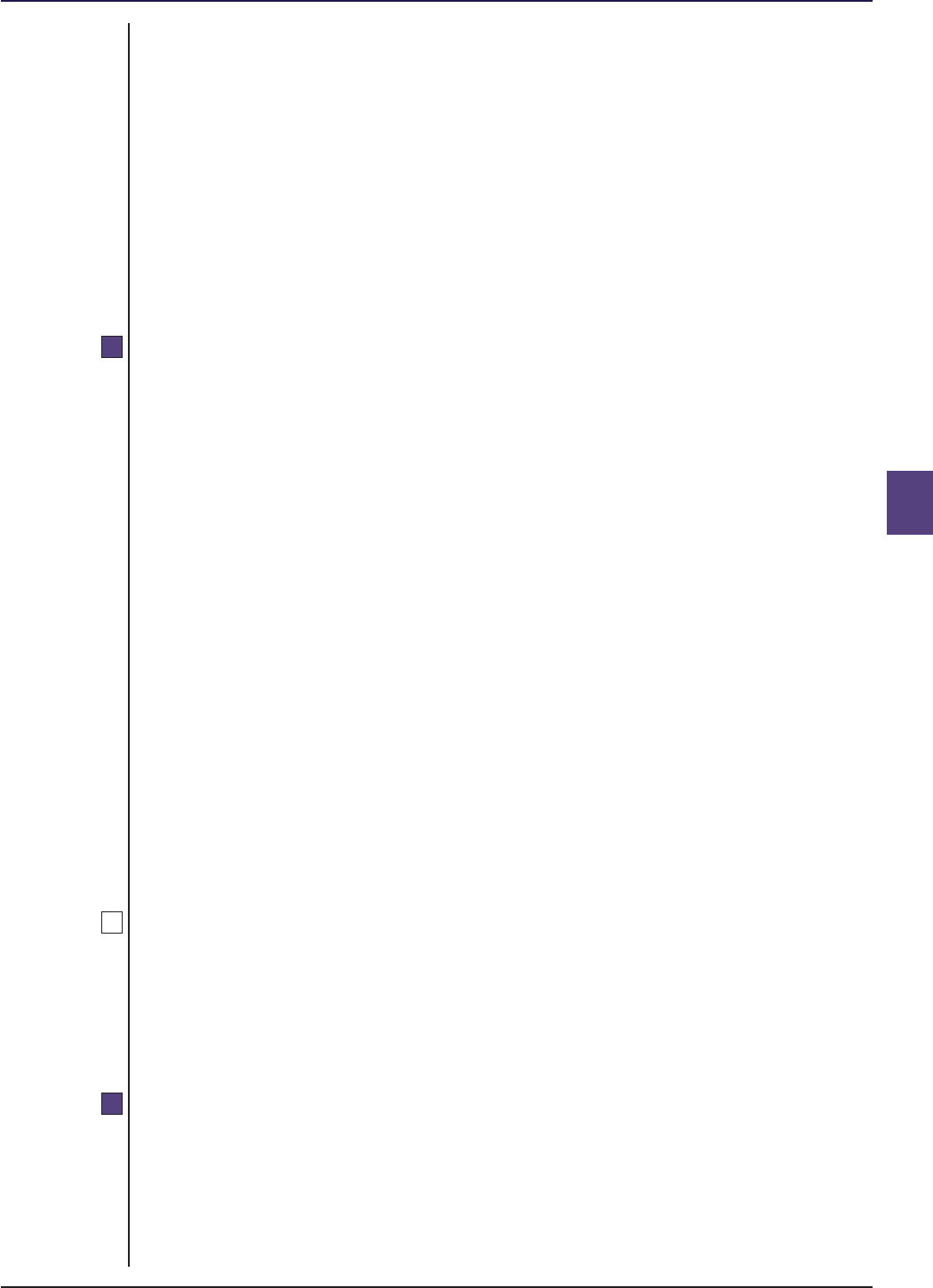
COLL 8 : Qualified investor Section 8.5 : Powers and responsibilities
schemes
8
R8.5.5
G8.5.6
R8.5.7
■ Release 39 ● Aug 2024 www.handbook.fca.org.uk COLL 8/39
(3) If a relevant ICVC ceases to have any directors, the depositary may act
in accordance with ■ COLL 6.5.6 R(ICVC without a director).
(4) This rule applies to the depositary of a scheme managed by a full-
scope UK AIFM to the extent the provisions are consistent with the
requirements of the AIFMD level 2 regulation.
[Note: Articles 88 to 90 of the AIFMD level 2 regulation make provision
relating to custody and safekeeping of scheme property. The AIFMD level 2
regulation does not apply to the depositary of a qualified investor scheme
managed by a small authorised UK AIFM.]
Delegation
.....................................................................................................
(1) A small authorised UK AIFM (or in addition any other director in the
case of an ICVC managed by a small authorised UK AIFM) may
delegate any function to any person.
(2) (a) The depositary of a scheme managed by a small authorised UK
AIFM has the power to delegate any function to anyone,
including in the case of an ICVC a director, to assist the depositary
to perform its functions.
(b) However, it must not retain the services of the authorised fund
manager or, in the case of an ICVC, any other director to perform
any part of its functions of safe custody of the scheme property.
(3) Subject to any provisions of the OEIC Regulations, the delegator in (1)
and (2) will not be responsible under the rules in COLL for any act or
omission of the delegate provided that the delegator can show:
(a) that it was reasonable for the delegator to obtain assistance to
perform the function in question;
(b) that the delegate was and remained competent to provide that
assistance; and
(c) that the delegator took reasonable care to ensure that the
assistance was provided in a competent manner.
Delegation and responsibility for regulatory obligations
.....................................................................................................
Directors of an ICVC, authorised fund managers and depositaries should also
have regard to ■ SYSC 8 (Outsourcing).■ SYSC 8.1.6 R states that a firm remains
fully responsible for discharging all of its obligations under the regulatory
system if it outsources crucial or important operational functions or any
relevant services and activities.
Conflicts of interest
.....................................................................................................
(1) The authorised fund manager and the depositary must ensure that
any transaction in respect of the scheme property undertaken with an
affected person is on terms at least as favourable to the scheme as
any comparable arrangement on normal commercial terms
negotiated at arm's length with an independent third party.

COLL 8 : Qualified investor Section 8.5 : Powers and responsibilities
schemes
8
R8.5.8
R8.5.9
■ Release 39 ● Aug 2024www.handbook.fca.org.ukCOLL 8/40
(2) Paragraph (1) is subject to any provision in the instrument
constituting the fund and the prospectus imposing a prohibition in
relation to any type of transaction.
The register of Unitholders: AUTs or ACSs
.....................................................................................................
(1) The authorised fund manager or the depositary of an AUT or ACS (in
accordance with their responsibilities as set out in the instrument
constituting the fund) must maintain a register of unitholders as a
document in accordance with this rule.
(2) The register must contain:
(a) the name and address of each Unitholder (for joint Unitholders
no more than four need to be registered);
(b) the number of units (including fractions of a unit) of each class
held by each unitholder; and
(c) the date on which the Unitholder was registered in the register
for the units standing in his name.
(3) The authorised fund manager or the depositary of an AUT or ACS (as
appropriate) must take all reasonable steps and exercise all due
diligence to ensure the register is kept complete and up to date.
(4) Where relevant, the authorised fund manager must immediately
notify the depositary of an AUT or ACS of any information he
receives which may affect the accuracy of any entry in the register.
(5) In the case of a limited partnership scheme, unregistered units may
be held by the authorised contractual scheme manager as the agent
for the scheme provided the authorised contractual scheme manager
is not entered in the register as the new unitholder.
Valuation, pricing and dealing
.....................................................................................................
(1) The value of the scheme property is the net value of the scheme
property after deducting any outstanding borrowings (including any
capital outstanding on a mortgage of an immovable).
(2) Any part of the scheme property which is not an investment (save an
immovable) must be valued at fair value.
(3) For the purposes of (2), any charges that were paid, or would be
payable, on acquiring or disposing of the asset must be excluded
from the value of that asset.
(4) The value of the scheme property of an authorised fund must, save as
otherwise provided in this section, be determined in accordance with
the provisions of the instrument constituting the fund and the
prospectus, as appropriate.
(4A) [deleted]
(4B) [deleted]
(5) The scheme must have a valuation point on each dealing day.

COLL 8 : Qualified investor Section 8.5 : Powers and responsibilities
schemes
8
R8.5.9-B
■ Release 39 ● Aug 2024 www.handbook.fca.org.uk COLL 8/41
(5A) [deleted]
(6) The authorised fund manager must prepare a valuation in accordance
with (4) for each relevant type of unit at each relevant valuation
point.
(7) The price of a unit must be calculated on the basis of the valuation in
(6) in a manner that is fair and reasonable as between unitholders.
(8) [deleted]
(9) The authorised fund manager must publish in an appropriate manner
the priceof any type of unit based on the valuation carried out in
accordance with (6).
(10) The authorised fund manager must also provide on request to any
unitholder at any time an estimated price for any type of unit in the
scheme.
(11) The period of any initial offer and how it should end must be set out
in the prospectus and must not be of unreasonable length.
Profits from dealing as principal
.....................................................................................................
(1) Where an authorised fund manager:
(a) accepts instructions to sell and redeem units as principal; and
(b) is able to execute a sale instruction by selling units it has
redeemed at the same valuation point, without placing its own
capital at risk,
subject to (2), the AFM must not retain for its own account, or the
account of any of its associates, the difference between the price at
which a unit was redeemed (before deduction of any redemption
charge) and the price at which the same unit was sold (after
deduction of any preliminary charge). Any such difference must be
allocated in a way that is fair to unitholders.
(2) In calculating the profit arising under (1), the AFM may offset any loss
it incurs at the same valuation point, calculated in accordance with
(3), when dealing as principal in relation to:
a unit issued at that valuation point to fulfil a sale instruction
that cannot be matched against any redeemed unit or any other
unit of that class held by the manager as principal; and
a unit redeemed and cancelled at that valuation point.
(3) The amount of the loss referred to in (2) is:
(a) for units issued in accordance with (2)(a), the difference between
the issue price of a unit and the sale price of that unit, less any
preliminary charge;
(b) for units cancelled in accordance with (2)(b), the difference
between the cancellation price of a unit and the redemption
price of that unit, before any redemption charge is applied.

COLL 8 : Qualified investor Section 8.5 : Powers and responsibilities
schemes
8
G8.5.9-A
R8.5.9A
G8.5.9B
R8.5.10
■ Release 39 ● Aug 2024www.handbook.fca.org.ukCOLL 8/42
(4) Where any loss arising under (2) is greater than any profit arising
under (1), that loss cannot be offset against any profit arising at a
subsequent valuation point.
(5) This rule applies to the redemption and sale of units of different
classes at the same valuation point, if those classes are treated as one
for the purpose of ■ COLL 8.5.10AR.
(1) The authorised fund manager may commit its own capital to hold
units for dealing as principal and may seek to profit from gains in the
value of the units it holds, when it issues or redeems units at one
valuation point then sells or cancels them at a later valuation point.
However, it should not profit from situations in which it is not
exposed to an equal risk of loss if the units fall in value, or from the
ability to match simultaneous sales and redemptions at different
prices at no risk to its own capital.
(2) The AFM may allocate any amount arising under ■ COLL 8.5.9-BR(1) in
the interests of investors by paying it into scheme property for the
benefit of all unitholders. Alternatively, the AFM may redistribute it
individually among the transacting investors.
(3) Where the AFM intends to allocate a payment to scheme property, it
should determine if the amount (when added to any other amounts
of the same kind relating to that class of units) would, if taken into
account in the scheme’s valuation, affect the accuracy of the unit
prices to four significant figures. If so, and subject to (4) below, the
amount should be accrued in each subsequent valuation of the
scheme until the payment is transferred. Such payments into scheme
property should be made regularly and no less frequently than
payments for the AFM’s management charge are transferred out of
scheme property.
(4) The calculation to be performed under ■ COLL 8.5.9-BR should be
carried out in relation to each valuation point of the scheme on a
timely basis. Where it is not practical to do this before unit prices are
calculated and published, the AFM should ensure that the accrual
represents a reasonable estimate of the total payment it intends to
make to scheme property.
[deleted]
[deleted]
Issues and cancellations of units
.....................................................................................................
(1) The authorised fund manager must:
(a) ensure that at each valuation point there are at least as many
units in issue of any class as there are units registered to
unitholders of that class; and
(b) not do, or omit anything that would, or might confer on itself a
benefit or advantage at the expense of a unitholder or potential
unitholder.

COLL 8 : Qualified investor Section 8.5 : Powers and responsibilities
schemes
8
R8.5.10A
R8.5.10B
■ Release 39 ● Aug 2024 www.handbook.fca.org.uk COLL 8/43
(2) For the purposes of (1) the authorised fund manager may take into
account sales and redemptions after the valuation point, provided it
has systems and controls to ensure compliance with (1).
(3) The authorised fund manager must arrange for the issue and
cancellation of units and pay money or assets to or from the
depositary for the account of the scheme as required by the
prospectus, and, where applicable, in accordance with the Money
Market Funds Regulation.
(4) The authorised fund manager must keep a record of issues and
cancellations made under this rule.
(5) The authorised fund manager may arrange for the ICVC, or instruct
the depositary of the AUT or ACS to issue or cancel units where the
authorised fund manager would otherwise be obliged to sell or
redeem the units in the manner set out in the prospectus.
(6) Where the authorised fund manager has not complied with (1), it
must correct the error as soon as possible and must reimburse the
scheme any costs it may have incurred in correcting the position,
subject to any reasonable minimum level for such reimbursement as
set out in the prospectus.
Issue and cancellation of units in multiple classes
.....................................................................................................
If a qualified investor scheme has two or more classes of unit in issue, the
authorised fund manager may treat any or all of those classes as one for the
purpose of determining the number of units to be issued or cancelled by
reference to a particular valuation point, if:
(1) the depositary gives its prior agreement; and
(2) the relevant classes:
(a) have the same entitlement to participate in, and the same
liability for charges, expenses and other payments that may be
recovered from, the scheme property; or
(b) differ only as to whether income is distributed or accumulated by
periodic credit to capital, provided the price of the units in each
class is calculated by reference to undivided shares in the scheme
property.
Transfer of units in an ACS
.....................................................................................................
(1) Where transfer of units in an ACS is allowed by its contractual scheme
deed and prospectus in accordance with the conditions specified by
FCA rules, the authorised contractual scheme manager of the ACS
must take reasonable care to ensure that units are only transferred if
the conditions specified by the FCA under (2) are met.
(2) The FCA specifies that for the purposes of (1), and for the purposes of
■ COLL 8.2.6R(2)(6)(a)(vii)(B) (Table: contents of the instrument
constituting the fund) and ■ COLL 8.3.4R(5B)(2) (Table: contents of
qualified investor scheme prospectus), units in the ACS may only be
transferred to a person :

COLL 8 : Qualified investor Section 8.5 : Powers and responsibilities
schemes
8
G8.5.10C
R8.5.10D
R8.5.10E
R8.5.11
■ Release 39 ● Aug 2024www.handbook.fca.org.ukCOLL 8/44
(a) who is a:
(i) professional ACS investor; or
(ii) large ACS investor; or
(iii) person who already holds units in the scheme; and
(b) to whom units in a qualified investor scheme may be promoted
under ■ COBS 4.12B.7R.
The FCA recognises that some transfers of units arise by operation of law
(such as upon death or bankruptcy of the unitholder, or otherwise) and are
accordingly outside the control of the authorised contractual scheme
manager. The authorised contractual scheme manager is expected to comply
with its responsibilities under ■ COLL 8.5.10E R (Redemption of ACS units in a
QIS by an authorised contractual scheme manager) in those cases by
redeeming those units.
Responsibilities of the authorised contractual scheme manager
in relation to ACS units
.....................................................................................................
(1) The authorised contractual scheme manager of an authorised
contractual scheme which is a qualified investor scheme must take
reasonable care to ensure that rights or interests in units in the
scheme are not acquired by any person from or through an
intermediate Unitholder in a qualified investor scheme, unless:
(a) that person is a:
(i) professional ACS investor; or
(ii) large ACS investor; or
(iii) person who already holds units in the scheme; and
(b) units in a qualified investor scheme may be promoted to that
person under ■ COBS 4.12B.7R.
(2) The authorised contractual scheme manager will be regarded as
complying with (1) to the extent that it can show that it was
reasonable for it to rely on relevant information provided by another
person.
Redemption of ACS units in a QIS by an authorised contractual
scheme manager
.....................................................................................................
The authorised contractual scheme manager of a qualified investor scheme
which is an ACS must redeem units in the scheme as soon as practicable after
becoming aware that those units are vested in anyone (whether as a result
of subscription or transfer of units) other than a person meeting the criteria
in ■ COLL 8 Annex 2(1) and (2) (ACS Qualified Investor Schemes: eligible
investors).
Sale and redemption
.....................................................................................................
(1) The authorised fund manager must, at all times during the dealing
day, be willing to effect the sale of units to any eligible investor
(within any conditions in the instrument constituting the fund and
the prospectus which must be fair and reasonable as between all

COLL 8 : Qualified investor Section 8.5 : Powers and responsibilities
schemes
8
G8.5.12
R8.5.12A
■ Release 39 ● Aug 2024 www.handbook.fca.org.uk COLL 8/45
unitholders and potential unitholders) for whom the authorised fund
manager does not have reasonable grounds to refuse such sale.
(2) The authorised fund manager must, at all times during the dealing
day, effect a redemption on the request of any eligible unitholder
(within any conditions in the instrument constituting the fund and
the prospectus) of units owned by that unitholder, unless the
authorised fund manager has reasonable grounds to refuse such
redemption.
(3) On agreeing to a redemption of units within (2), the authorised fund
manager must pay the full proceeds of the redemption to the
unitholder within any reasonable period specified in the instrument
constituting the fund or the prospectus, unless it has reasonable
grounds for withholding payment.
(4) Payment of proceeds on redemption must be made by the authorised
fund manager in any manner provided for in the prospectus which
must be fair and reasonable as between redeeming unitholders and
continuing unitholders.
Limited redemption periods
.....................................................................................................
The maximum period between dealing days for a qualified investor scheme
will depend on the reasonable expectations of the target investor group and
the particular investment objectives and policy of the scheme. For instance,
for a scheme aiming to invest in large property developments, the
expectation would be that it is reasonable to have a much longer period
between dealing days for liquidity reasons than for a scheme investing
predominantly in listed securities.
Property Authorised Investment Funds
.....................................................................................................
(1) The authorised fund manager of a property authorised investment
fund must take reasonable steps to ensure that no body corporate
holds more than 10% of the net asset value of that fund (the
"maximum allowable").
(1A) For the purposes of (1), a body corporate shall not be treated as
holding more than the maximum allowable to the extent that:
(a) the body corporate holds units in a unit trust scheme which holds
shares in the property authorised investment fund; and
(b) in their capacity as trustees of the unit trust scheme, the trustees
are chargeable in the United Kingdom either to income tax or to
corporation tax.
(2) Where the authorised fund manager of a property authorised
investment fund becomes aware that a body corporate holds more
than the maximum allowable, he must:
(a) notify the body corporate of that event;
(b) not pay any income distribution to the body corporate; and
(c) redeem or cancel the body corporate's holding down to the
maximum allowable within a reasonable time-frame.

COLL 8 : Qualified investor Section 8.5 : Powers and responsibilities
schemes
8
G8.5.12B
R8.5.13
G8.5.13A
G8.5.14
■ Release 39 ● Aug 2024www.handbook.fca.org.ukCOLL 8/46
(3) For the purpose of (2)(c), a reasonable time-frame means the time-
frame which the authorised fund manager reasonably considers to be
appropriate having regard to the interests of the unitholders as a
whole.
Reasonable steps to monitor the maximum allowable include:
(1) regularly reviewing the register; and
(2) taking reasonable steps to ensure that unitholders are kept informed
of the requirement that no body corporate may hold more than 10%
of the net asset value of a property authorised investment fund.
Payments
.....................................................................................................
(1) An ICVC must not incur any expense in respect of the use of any
movable or immovable property unless the scheme is dedicated to
such investment or such property is necessary for the direct pursuit of
its business.
(2) Payments out of the scheme property may be made from capital
property rather than from income property, provided the basis for
this is set out in the prospectus.
(3) Donations to one or more registered charities for Sharia compliance
purposes (in this rule, ‘purification’), as set out in and authorised by
the prospectus of the scheme, may be recovered from income
property of the scheme where they represent the required
percentage of the income property recognised for purification, as
advised by a person with appropriate knowledge of finance and
Islamic law.
The person referred to in ■ COLL 8.5.13R(3) should be independent of the
authorised fund manager and any registered charity to which payments may
be made.
Exemption from liability to account for profits
.....................................................................................................
Except as provided in ■ COLL 8.5.9-BR, an affected person is not liable to
account to another affected person or to the unitholders of the scheme for
any profits or benefits it makes or receives that are made or derived from or
in connection with:
(1) dealings in the units of a scheme; or
(2) any transaction in scheme property; or
(3) the supply of services to the scheme;
where disclosure of the non-accountability has been made in the prospectus
of the scheme.
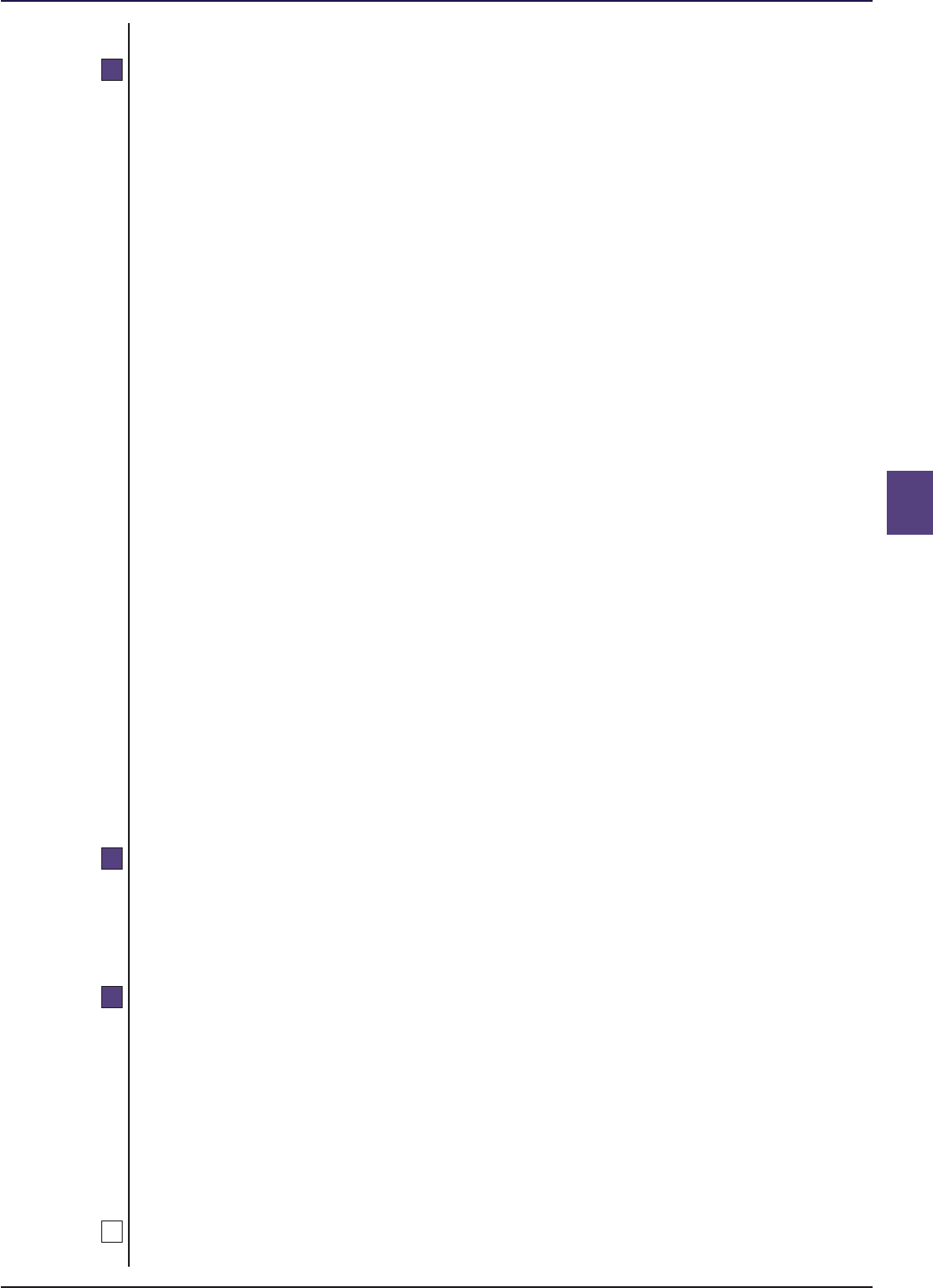
COLL 8 : Qualified investor Section 8.5 : Powers and responsibilities
schemes
8
R8.5.15
R8.5.16
R8.5.17
G8.5.18
■ Release 39 ● Aug 2024 www.handbook.fca.org.uk COLL 8/47
Income
.....................................................................................................
(1) A qualified investor scheme must have:
(a) an annual accounting period;
(b) a half-yearly accounting period; and
(c) an accounting reference date;
the details of which must be set out in the prospectus.
(1A) ■ COLL 6.8.2 R (2) to ■ COLL 6.8.2 R (7) (Accounting periods) also apply to
the half-yearly accounting period and annual accounting period of a
qualified investor scheme.
(2) A qualified investor scheme must have an annual income allocation
date, which must be within four months of the accounting reference
date.
(3) A qualified investor scheme may have an interim income allocation
date and interim accounting periods and if it does, the interim
income allocation date must be within a reasonable period of the end
of the relevant interim accounting period as set out in the prospectus.
(3A) ■ COLL 6.8.3 R (3) (Income allocation and distribution) to ■ COLL 6.8.3A G
(Allocation of income to difference classes of unit) also apply to a
qualified investor scheme.
(4) [deleted]
(5) [deleted]
(a) [deleted]
(b) [deleted]
(c) [deleted]
Application of assessment of value and independent director
rules
.....................................................................................................
■ COLL 8.5.17R to ■ COLL 8.5.22R apply to an authorised fund manager (other
than one which is managing an authorised fund under a temporary
permission) of an AUT, ACS or ICVC.
Assessment of value
.....................................................................................................
(1) An authorised fund manager must conduct an assessment at least
annually for each scheme it manages of whether the payments out of
scheme property set out in the prospectus are justified in the context
of the overall value delivered to unitholders.
(2) In carrying out the assessment required by (1), the AFM must,
separately for each class of units in a scheme, consider at least the
matters set out in ■ COLL 6.6.21R (Table: minimum considerations –
assessment of value).
The guidance in ■ COLL 6.6.22G applies to interpreting the requirements of
■ COLL 6.6.21R as applied by ■ COLL 8.5.17R.

COLL 8 : Qualified investor Section 8.5 : Powers and responsibilities
schemes
8
E8.5.19
R8.5.20
G8.5.21
R8.5.22
■ Release 39 ● Aug 2024www.handbook.fca.org.ukCOLL 8/48
Failure by an AFM to take sufficient steps to address any instance where a
scheme’s charges are not justified in the context of the overall value
delivered to unitholders may be relied on as tending to establish
contravention of ■ COLL 6.6A.2R,■ COBS 2.1.1R or ■ COBS 2.1.4R as applicable.
Independent directors
.....................................................................................................
(1) An authorised fund manager must ensure that at least one quarter of
the members of its governing body are independent natural persons.
If the AFM’s governing body comprises fewer than eight members,
the AFM must instead ensure that at least two of its members are
independent natural persons.
(2) The authorised fund manager, in appointing an independent member
of its governing body, must determine whether such a member is
independent in character and judgement and whether there are
relationships or circumstances which are likely to affect, or could
appear to affect, that member’s judgement.
(3) The authorised fund manager must take reasonable steps to ensure
that independent members appointed to its governing body have
sufficient expertise and experience to be able to make judgements on
whether the AFM is managing each scheme in the best interests of
unitholders.
(4) (a) Independent members of an AFM’s governing body must be
appointed for terms of no longer than five years, with a
cumulative maximum duration of ten years.
(b) If an independent member is appointed to more than one
governing body within an AFM’s group, the cumulative maximum
duration of ten years referred to in (a) is calculated by adding the
durations of each separate appointment and discounting periods
during which appointments overlapped to avoid double counting.
(c) In relation to a person who served as an independent director of
an AFM’s governing body before 1 October 2019, the five year
term(s) and cumulative maximum duration of ten years run from
that date.
(5) Independent members are not eligible for reappointment to an AFM’s
governing body until five years have elapsed from the end of the ten
year period referred to in (4).
(6) The terms of employment on which independent members are
appointed must be such as to secure their independence.
The guidance in ■ COLL 6.6.26G applies to interpreting the requirement for
independence in ■ COLL 8.5.20R.
Allocation of responsibility for compliance to an approved
person
.....................................................................................................
(1) An AFM must allocate responsibility for ensuring its compliance with
■ COLL 8.5.17R, ■ COLL 8.5.20R, and ■ COBS 2.1.4R to an approved person.

COLL 8 : Qualified investor Section 8.5 : Powers and responsibilities
schemes
8
■ Release 39 ● Aug 2024 www.handbook.fca.org.uk COLL 8/49
(2) Where the chair of the AFM’s governing body is an approved person,
the AFM must allocate the responsibility set out in (1) to that person.

COLL 8 : Qualified investor Section 8.6 : Termination, suspension, and
schemes schemes of arrangement
8
R8.6.1
R8.6.2
R8.6.3
■ Release 39 ● Aug 2024www.handbook.fca.org.ukCOLL 8/50
8.6 Termination, suspension, and
schemes of arrangement
Application
.....................................................................................................
This section applies to:
(1) an authorised fund manager, the directors, and the depositary of a
qualified investor scheme; and
(2) an ICVC which is a qualified investor scheme.
Termination
.....................................................................................................
For a qualified investor scheme the provisions in ■ COLL 7.3 to ■ COLL 7.5 will
apply as appropriate as if ■ COLL 7 applied to qualified investor schemes.
Suspension
.....................................................................................................
(1) The authorised fund manager may, with the prior agreement of the
depositary, and must without delay, if the depositary so requires,
within any parameters which are fair and reasonable in respect of all
the unitholders in the scheme and which are set out in the
prospectus, temporarily suspend dealings in units of the scheme, a
sub-fund or a class.
(2) Any suspension within (1) must only be where the authorised fund
manager has determined on reasonable grounds that there is good
and sufficient reason in the interests of unitholders or potential
unitholders and the authorised fund manager must have regard to
the interests of all the unitholders in the scheme in reaching such an
opinion.
(3) At the commencement of suspension under (1), the authorised fund
manager must immediately inform the FCA of the suspension and the
reasons for it.
(3A) The authorised fund manager must ensure that a notification of the
suspension is made to unitholders of the authorised fund as soon as
practicable after suspension commences.
(3B) The authorised fund manager and the depositary must ensure that
the suspension only continues for as long as it is justified having
regard to the interests of the unitholders.

COLL 8 : Qualified investor Section 8.6 : Termination, suspension, and
schemes schemes of arrangement
8
G8.6.4
R8.6.5
■ Release 39 ● Aug 2024 www.handbook.fca.org.uk COLL 8/51
(4) The suspension of dealings in units must cease, as soon as (2) no
longer applies.
(4A) The authorised fund manager and the depositary must formally
review the suspension at least every 28 days and inform the FCA of
the results of this review and any change to the information provided
in (3).
(5) The authorised fund manager must inform the FCA immediately of
the resumption of dealings.
[deleted]
Schemes of arrangement
.....................................................................................................
In relation to an ICVC, ACS or an AUT which is a qualified investor scheme,
the provisions in ■ COLL 7.6 (Schemes of arrangement) will apply as
appropriate to the authorised fund manager, any other directors of the ICVC
and the depositary as if ■ COLL 7.6 applied to a qualified investor scheme and
did not exclude unitholders becoming unitholders in another qualified
investor scheme.

COLL 8 : Qualified investor Section 8.6 : Termination, suspension, and
schemes schemes of arrangement
8
■ Release 39 ● Aug 2024www.handbook.fca.org.ukCOLL 8/52

COLL 8 : Qualified investor Annex 2
schemes
8
ACS Qualified Investor Schemes: eligible investors
This Annex belongs to COLL 8.1.3 R and 8.1.4 G.
For the purposes of the rule on qualified investors in a qualified investor scheme which is an ACS
(COLL 8.1.3R (3)), the authorised contractual scheme manager must take reasonable care to ensure
that ownership of units in the scheme is only recorded in the register for a person :
(1) who is a:
(a) professional ACS investor; or
(b) large ACS investor; or
(c) person who already holds units in the scheme; and
(2) to whom units in a qualified investor scheme may be promoted to that person under COBS
4.12B.7R.
■ Release 39 ● Aug 2024 www.handbook.fca.org.uk COLL 8 Annex 2/1

COLL 8 : Qualified investor Annex 2
schemes
8
■ Release 39 ● Aug 2024www.handbook.fca.org.ukCOLL 8 Annex 2/2

Collective Investment Schemes
Chapter 9
Recognised schemes
■ Release 39 ● Aug 2024 www.handbook.fca.org.uk COLL 9/1

COLL 9 : Recognised schemes Section 9.1 : Application and general
information
9
R9.1.1
G9.1.2
G9.1.2A
■ Release 39 ● Aug 2024www.handbook.fca.org.ukCOLL 9/2
9.1 Application and general information
Application
.....................................................................................................
This chapter applies as follows:
(1) ■ COLL 9.3 and ■ COLL 9.4 apply to operators of schemes applying for
recognition under section 272 of the Act and to operators making a
notification in respect of such schemes under sections 277 and 277A
of the Act.
(2) ■ COLL 9.5 applies to operators of schemes applying for recognition as
OFR recognised schemes and to operators making a notification in
respect of such schemes under sections 271I and 271J of the Act.
Purpose
.....................................................................................................
(1) This chapter applies in relation to 2 types of recognised scheme:
(a) a scheme which is individually recognised under section 272 of
the Act; and
(b) an OFR recognised scheme, which is a scheme recognised under
section 271A of the Act.
(2) If a scheme is eligible to apply for recognition as an OFR recognised
scheme, it may not apply for recognition under section 272 of the
Act, within (1)(a).
(3) This chapter enables current and potential operators of recognised
schemes to know what information and documents the FCA requires
to enable it to determine whether to recognise the scheme under the
Act for marketing in the United Kingdom.
(4) This chapter also sets out requirements relating to:
(a) the preparation and maintenance of a prospectus for a
recognised scheme; and
(b) the facilities that an operator of a recognised scheme must
provide to enable current and potential participants in the
scheme who are present in the United Kingdom to obtain
information and exercise their rights without undue difficulty or
expense.
The effect of ■ GEN 2.2.32R to ■ GEN 2.2.36G and ■ COLL TP 1.1R(65) is that the
rules in ■ COLL 9.4 on facilities continue to apply to a TP UCITS qualifier in
relation to a scheme that is a recognised scheme under Part 6 of the

COLL 9 : Recognised schemes Section 9.1 : Application and general
information
9
G9.1.3
■ Release 39 ● Aug 2024 www.handbook.fca.org.uk COLL 9/3
Collective Investment Schemes (Amendment etc.) (EU Exit) Regulations 2019,
until such time as that scheme ceases to be a recognised scheme under those
Regulations.
General information
.....................................................................................................
The FCA website sets out further information about which categories of
overseas collective investment scheme are eligible to apply to the FCA to be
recognised schemes under sections 271A and 272 of the Act, how to apply
for recognition, and how to give notifications concerning recognised
schemes.
https://www.fca.org.uk/firms/authorised-recognised-funds/apply-fund-
recognition

COLL 9 : Recognised schemes Section 9.3 : Section 272 recognised
schemes
9
D9.3.1
■ Release 39 ● Aug 2024www.handbook.fca.org.ukCOLL 9/4
9.3 Section 272 recognised schemes
Information and documents to be supplied for a section 272
application
.....................................................................................................
(1) If the operator of a scheme makes an application under section 272
of the Act (Individually recognised overseas schemes), the application
must include the information in paragraph (4).
(2) The documents must be in English or accompanied by a translation in
English.
(3) The documents must be certified by the operator to be true copies of
the originals.
(4) The operator of the scheme must provide the following information
and documents with the application:
(a) the name of the scheme;
(b) the legal form of the scheme;
(c) the name and address of the operator;
(d) the address of the place in the United Kingdom for service on the
operator of notices or other documents;
(e) whether the operator intends to market the scheme in the
United Kingdom in a manner which will involve it carrying on a
regulated activity in the United Kingdom;
(f) the name and address of any person to whom the property
subject to the scheme is entrusted for safekeeping;
(g) the address of the place in the United Kingdom where scheme
facilities (see ■ COLL 9.4) will be maintained;
(h) details of the arrangements for the marketing of units in the
United Kingdom, namely:
(i) the proposed commencement date;
(ii) whether the units will be sold by or through any employed
sales force, authorised persons, or unsolicited calls;
(i) a copy of the instrument constituting the fund;
(j) a copy of the prospectus or any similar document giving details
of the scheme;
(k) a copy of the latest annual report and any subsequent half-yearly
report;
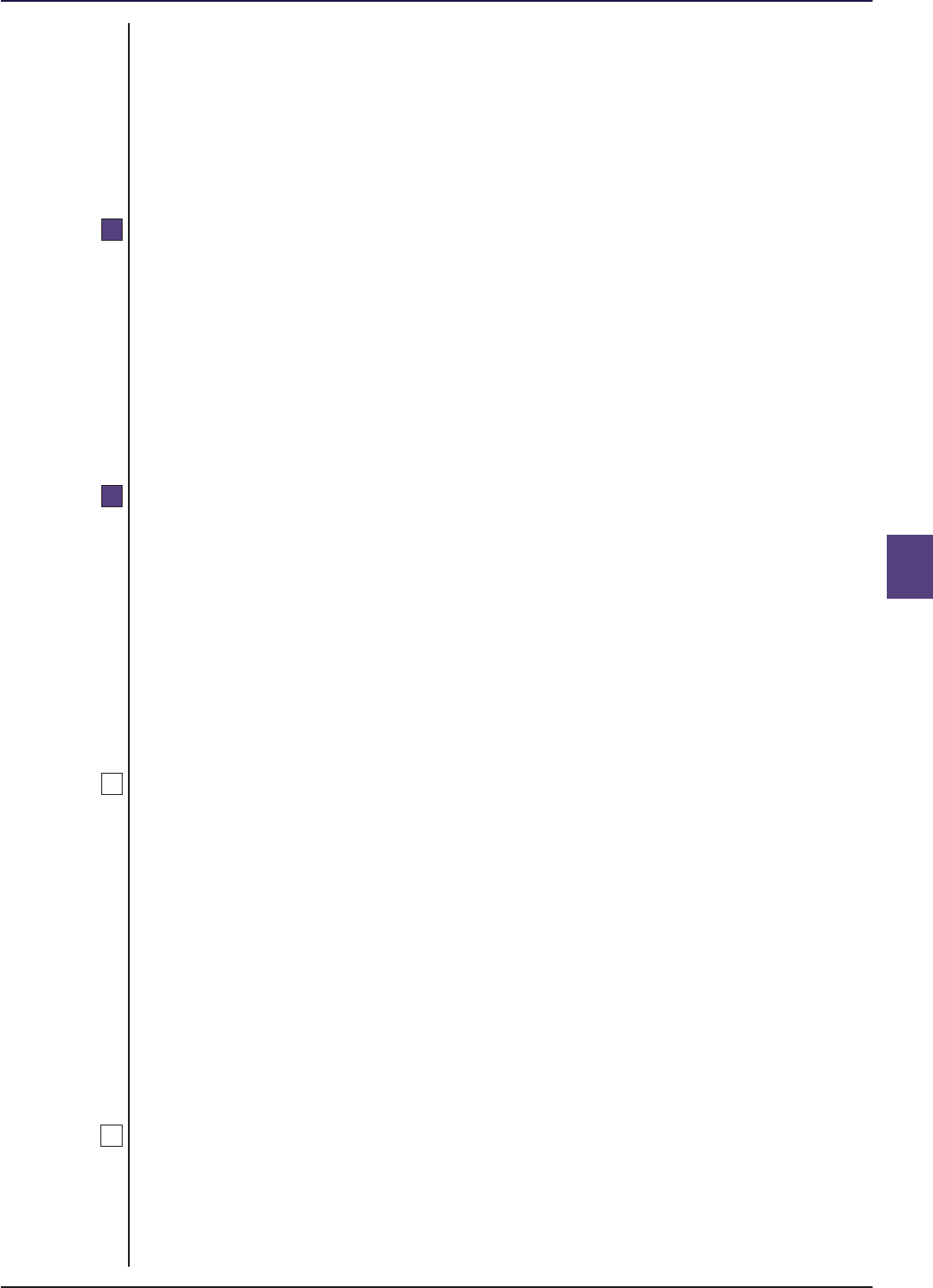
COLL 9 : Recognised schemes Section 9.3 : Section 272 recognised
schemes
9
R9.3.2
R9.3.3
G9.3.4
D9.3.5
■ Release 39 ● Aug 2024 www.handbook.fca.org.uk COLL 9/5
(l) a copy of any other document affecting the rights of participants
in the scheme; and
(m) (where applicable) a copy of the key information document (see
■ COLL 9.3.4G).
Additional information required in the prospectus for an
application under section 272
.....................................................................................................
An operator of a scheme applying for recognition under section 272 of the
Act must ensure the prospectus:
(1) contains a statement that "Complaints about the operation of the
scheme may be made to the FCA."; and
(2) states whether or not investors in the scheme would be covered by
the compensation scheme, and if so, it must state how they are
covered and who they would need to contact for further information.
Preparation and maintenance of prospectus
.....................................................................................................
(1) An operator of a scheme recognised under section 272 of the Act
must comply with the requirements set out in ■ COLL 4.2 (Pre-sale
notifications).
(2) Where a scheme recognised under section 272 of the Act is managed
and authorised in Guernsey, Jersey, or the Isle of Man, the prospectus
need not comply with the requirements of ■ COLL 4.2.5 R (Table:
contents of prospectus), providing it contains corresponding matter
required under the law in its home territory.
Preparation of a key information document in accordance with
the PRIIPs regulation
.....................................................................................................
(1) The PRIIPs Regulation requires the manufacturer of a PRIIP to draw
up a key information document in accordance with the PRIIPs
Regulation before that PRIIP is made available to retail investors (as
defined in the PRIIPs Regulation).
(2) The requirements of the PRIIPs Regulation are directly applicable.
(3) As a result, when a scheme recognised under section 272 of the Act is
made available to retail clients in the United Kingdom the operator
must draw up a key information document in accordance with the
PRIIPs Regulation, unless the operator of such a scheme is otherwise
exempt from such a requirement under the PRIIPs Regulation for the
time being.
Annual certificate of compliance
.....................................................................................................
(1) An operator of a scheme recognised under section 272 of the Act
must provide a certificate to the FCA in writing that:
(a) sets out what steps it has taken to inform itself of any changes to
the regulatory requirements for the relevant type of comparable
authorised scheme taking effect during the most recent financial
year of the scheme; and

COLL 9 : Recognised schemes Section 9.3 : Section 272 recognised
schemes
9
G9.3.6
G9.3.7
G9.3.8
■ Release 39 ● Aug 2024www.handbook.fca.org.ukCOLL 9/6
(b) explains whether, and if so how, any such changes, together with
any changes to the scheme that have occurred during this period,
may affect the scheme’s ability to satisfy the requirements
referred to in section 272(1)(d) of the Act.
(2) The certificate must be provided to the FCA no later than:
(a) one month following the publication of the annual report and
accounts of the scheme; or
(b) if the publication of the annual report and accounts of the
scheme is delayed, one month after the last day on which the
publication of the annual report and accounts of the scheme was
due.
(3) The certificate must be signed by an authorised signatory of the
operator.
(4) The certificate may apply to multiple sub-funds in an umbrella that
are recognised under section 272 of the Act, if the names of each
relevant sub-fund and of the umbrella are clearly stated.
(5) The certificate must be delivered to the FCA by:
including the subject line: “S.277A Certificate – [insert full
name(s) of scheme]”; or
(b) by post to: Financial Conduct Authority, attn. S.277A Certificates,
Fund Authorisations Team, Asset Management Department,
Wholesale Supervision, 12 Endeavour Square, London E20 1JN,
United Kingdom.
An operator of a scheme recognised under section 272 of the Act need not
provide a certificate under ■ COLL 9.3.5D if it has already sent the required
information to the FCA within the last 12 months as the result of:
(1) a requirement relating to an application for recognition of the
scheme under section 274(2)(c) of the Act;
(2) a direction relating to a proposed alteration of the scheme or to a
change to the operator, trustee or depositary under section 277(5)(b)
of the Act; or
(3) a previous certificate being provided under section 277A of the Act.
The operator of a scheme recognised under section 272 of the Act should
seek advice from professionals with appropriate qualifications or professional
knowledge, such as a qualified solicitor, chartered accountant or compliance
consultant, before submitting the certificate to the FCA under ■ COLL 9.3.5D.
Notification of alterations to schemes
.....................................................................................................
Section 277(1) of the Act (Alteration of schemes and changes of operator,
trustee or depositary) requires notification by the operator to the FCA of
certain proposed alterations to a scheme recognised under section 272 of the
Act which, if made, would be a material alteration. The types of alterations

COLL 9 : Recognised schemes Section 9.3 : Section 272 recognised
schemes
9
G9.3.9
R9.3.10
G9.3.11
■ Release 39 ● Aug 2024 www.handbook.fca.org.uk COLL 9/7
that constitute, or are likely to constitute, a material alteration are set out at
■ COLL 9.3.10R and ■ COLL 9.3.11G.
In accordance with section 277(2) of the Act, effect is not to be given to any
such proposed material alteration to the scheme unless:
(1) the FCA, by written notice, has given its approval to the proposal; or
(2) one month, beginning with the date the notice was given under
section 277(1) of the Act, has expired without the FCA having given
written notice to the operator that it has decided to refuse approval.
Material alteration of a scheme
.....................................................................................................
For the purposes of section 277(1), a material alteration is an alteration
which:
(1) changes the purpose or nature of the scheme;
(2) alters the risk profile of the scheme;
(3) may materially prejudice a participant in the scheme;
(4) affects the ability of participants in the scheme to exercise their rights
in relation to their investments;
(5) introduces any new type of payment or materially increases other
types of payment that a participant in the scheme would have to pay
out of scheme property;
(6) changes the legal form of the scheme;
(7) changes the name of the scheme or the name of the umbrella of
which a sub-fund is a part;
(8) will result in the restructuring of the scheme or a merger with
another scheme;
(9) changes the regulatory status of the scheme;
(10) changes the regulatory status of the operator or, if the scheme has a
depositary, of the depositary;
(11) changes the composition of the board of directors, committee of
management or other governing body of the scheme, if it has one; or
(12) otherwise has a material effect on the scheme and its participants.
Guidance on material alterations
.....................................................................................................
(1) For the purpose of ■ COLL 9.3.10R, a material alteration is likely to
include:
(a) any material changes to the investment objective or policy;
(b) any change to the investment strategy that involves taking
exposure to a new class of assets with a different risk profile;

COLL 9 : Recognised schemes Section 9.3 : Section 272 recognised
schemes
9
G9.3.12
G9.3.13
■ Release 39 ● Aug 2024www.handbook.fca.org.ukCOLL 9/8
(c) any change affecting arrangements for the redemption of units
on behalf of participants, including any arrangements to sell units
on an investment exchange;
(d) any change to the facilities maintained in the United Kingdom,
including marketing arrangements, in accordance with ■ COLL 9.4;
and
(e) any expansion or limitation of the powers and duties of the
operator or, if the scheme has a depositary, of the depositary.
(2) In addition to the particular matters specified in
■ COLL 9.3.10R(1) to (11), ■ COLL 9.3.10R(12) requires the operator of a
scheme recognised under section 272 to notify the FCA of any other
change which has a material effect on the scheme and its
participants. Any change may be a material alteration depending on
its degree of materiality and its effect on the scheme and its
participants. Consequently, an operator will need to determine
whether in each case a particular change is a material alteration or
not.
Other notifications
.....................................................................................................
Section 277 of the Act also requires notification to the FCA of certain other
changes in relation to a scheme recognised under section 272 of the Act,
such as changes to the operator or depositary. This should be kept in mind
when considering any proposed change.
Recognition of parts of a scheme
.....................................................................................................
(1) Section 282C of the Act (Recognition of parts of schemes under
section 272) sets out that section 272(1) of the Act may apply in
relation to part of a collective investment scheme as it applies in
relation to such a scheme. In our view, this means that the FCA is able
to recognise one or more but not necessarily all sub-funds in an
umbrella.
(2) As a result, references to a scheme in ■ COLL 9.3.8G to ■ COLL 9.3.12G
include references to a sub-fund in an umbrella.
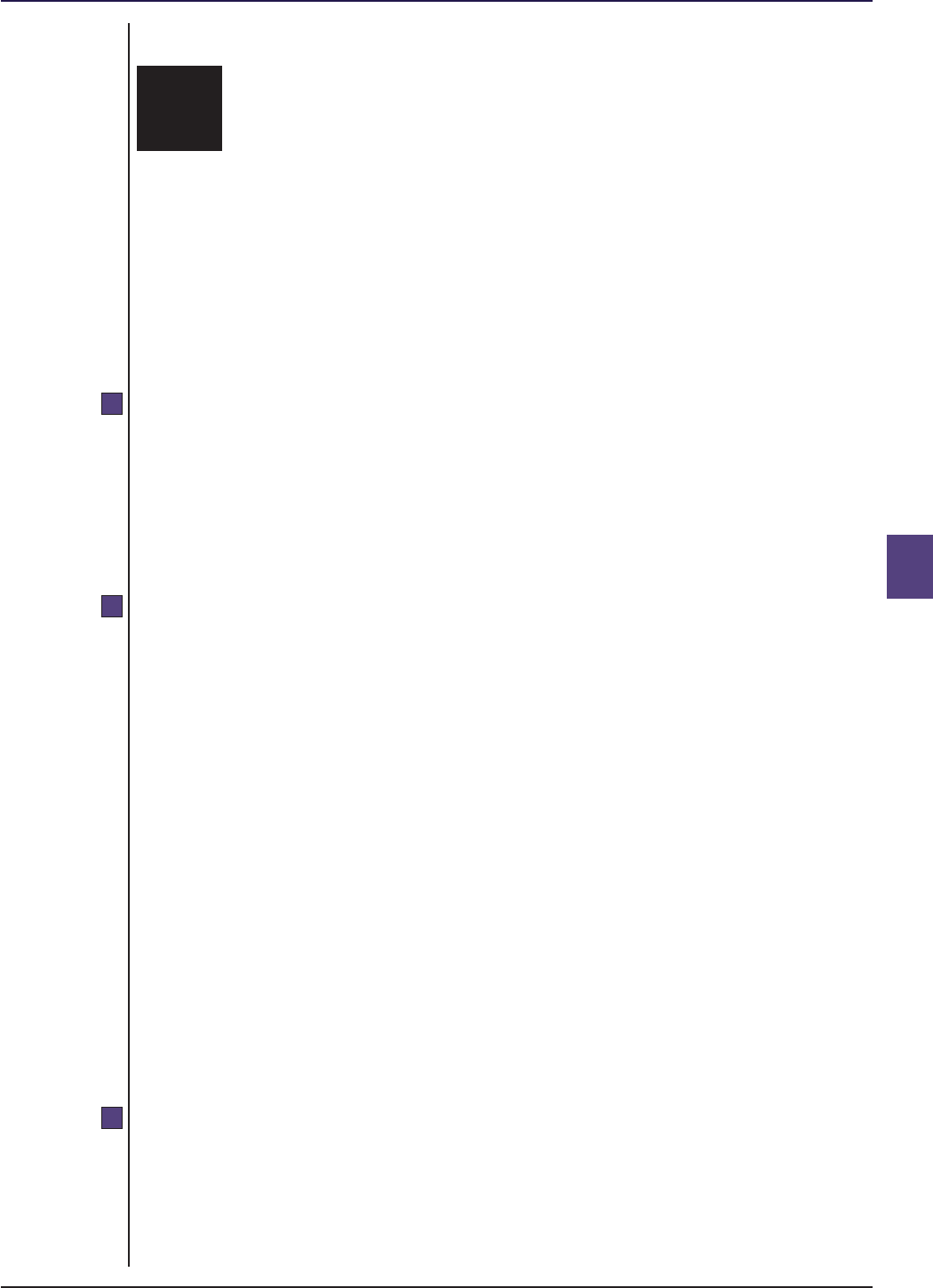
COLL 9 : Recognised schemes Section 9.4 : Facilities in the United Kingdom
for schemes recognised under section 272 of
the Act
9
R9.4.1
R9.4.2
R9.4.3
■ Release 39 ● Aug 2024 www.handbook.fca.org.uk COLL 9/9
9.4 Facilities in the United Kingdom for
schemes recognised under section
272 of the Act
General
.....................................................................................................
(1) The operator of a scheme recognised under section 272 of the Act
must maintain facilities in the United Kingdom in order to satisfy the
requirements of ■ COLL 9.4.2 R to ■ COLL 9.4.6 R.
(2) In this section, a facility is a place of business that complies with
■ COLL 9.4.6 R (Place of facilities).
Documents
.....................................................................................................
(1) The operator of a scheme recognised under section 272 of the Act
must maintain facilities in the United Kingdom for any person, for
inspection (free of charge) and for the obtaining (free of charge, in
the case of the documents at (c), (d) and (e), and otherwise at no
more than a reasonable charge) of copies in English of:
(a) the instrument constituting the fund;
(b) any instrument amending the instrument constituting the fund;
(c) the latest prospectus (which must include the address where the
facilities are maintained and details of those facilities);
(d) for a recognised scheme which is an EEA UCITS scheme, the EEA
key investor information document; and
(e) the latest annual and half-yearly reports.
(1A) [deleted]
(2) In relation to notices and documents sent by operators and
depositaries to and from the United Kingdom, ■ COLL 4.4.12 R (Notice
to Unitholders) and ■ COLL 4.4.13 R (Other notices) apply.
Price and redemption
.....................................................................................................
(1) The operator must maintain facilities in the United Kingdom for any
person where:
(a) information in English can be obtained about prices of units in
the scheme; and
(b) a participant may redeem or arrange for redemption of units in
the scheme and obtain payment.

COLL 9 : Recognised schemes Section 9.4 : Facilities in the United Kingdom
for schemes recognised under section 272 of
the Act
9
R9.4.4
R9.4.5
R9.4.6
■ Release 39 ● Aug 2024www.handbook.fca.org.ukCOLL 9/10
(2) An operator is treated as complying with paragraph (1) if it ensures
participants may sell their units on an investment exchange at a price
not significantly different from net asset value; and if so, must inform
participants of the investment exchange.
[deleted]
Complaints
.....................................................................................................
The operator must maintain facilities in the United Kingdom, at which any
person who has a complaint to make about the operation of the scheme can
submit his complaint for transmission to the operator.
Place of facilities
.....................................................................................................
(1) The address of the facilities maintained by the operator in accordance
with this section and the details of the facilities so maintained must
be stated in the prospectus of the scheme.
(2) The address of the facilities referred to in (1) must be the address of
the operator's principal place of business in the United Kingdom, or,
if there is no such address,such other address in the United Kingdom
where the operator can be contacted.
(3) [deleted]

COLL 9 : Recognised schemes Section 9.5 : OFR recognised schemes
9
G9.5.1
G9.5.2
■ Release 39 ● Aug 2024 www.handbook.fca.org.uk COLL 9/11
9.5 OFR recognised schemes
Information and documents to be provided in relation to an
application for recognition under section 271A
.....................................................................................................
(1) Under the Act, the FCA has the power to direct how an application
for recognition of a scheme under section 271A of the Act must be
made. The FCA also has the power to specify that the application
contains, or is accompanied by, such information as the FCA may
reasonably require for the purpose of determining it.
(2) The application form for recognition of a scheme under section 271A
of the Act, and guidance regarding documents and information
which must be contained in (or provided together with) the
application form, are available on the FCA website.
https://www.fca.org.uk/firms/overseas-funds-regime-update-firms
(3) The application form requires the operator that is applying for
recognition of the scheme to provide documents and information
falling within the following categories:
(a) the identity of the scheme;
(b) the scheme’s profile;
(c) the scheme’s fees and charges;
(d) characteristics of the scheme’s units;
(e) parties connected to the scheme; and
(f) the proposed marketing and distribution arrangements for the
scheme.
The FCA considers that the documents and information falling within the
categories set out in ■ COLL 9.5.1G(3) are reasonably required for the purposes
of:
(1) determining whether the conditions for recognition under section
271G(2) (Determination of applications) of the Act are met;
(2) complying with its duty under section 271G(4) (Determination of
applications) of the Act to refuse an application for recognition if the
FCA considers it desirable to do so, in order to protect the interests of
participants or potential participants in the scheme in the United
Kingdom; and

COLL 9 : Recognised schemes Section 9.5 : OFR recognised schemes
9
D9.5.3
G9.5.4
R9.5.5
■ Release 39 ● Aug 2024www.handbook.fca.org.ukCOLL 9/12
(3) complying with its duty to maintain a record of all recognised
schemes under section 347 (The record of authorised persons etc.) of
the Act, which is made public in the Financial Services Register.
Any documents accompanying an application for recognition of a scheme
under section 271A must be:
(1) in English or be accompanied by a translation in English; and
(2) certified by the operator to be true copies of the originals.
Recognition of parts of a scheme
.....................................................................................................
(1) Section 271S of the Act (Recognition of parts of schemes under
section 271A) sets out that section 271A of the Act applies in relation
to part of a collective investment scheme as it applies in relation to
such a scheme. In our view, this means that the FCA is able to
recognise one or more sub-funds in an umbrella, without necessarily
recognising all of them.
(2) As a result, references to a scheme in ■ COLL 9.5.9G to ■ COLL 9.5.10G
and to an OFR recognised scheme in Part 17 of the Act include
references to a sub-fund in an umbrella.
Preparation and maintenance of a prospectus relating to an
OFR recognised scheme
.....................................................................................................
(1) The operator of an OFR recognised scheme must comply with the
following requirements in ■ COLL 4.2 (Pre-sale notifications):
(a) ■ COLL 4.2.2R(1);
(b) ■ COLL 4.2.2R(2)(b) to ■ (d);
(c) ■ COLL 4.2.3R;
(d) ■ COLL 4.2.3AR; and
(e) ■ COLL 4.2.4R.
(2) The operator of an OFR recognised scheme must ensure that the
prospectus of the scheme contains the information required by
■ COLL 4.2.5R (Table: contents of the prospectus) to the extent that this
information would be compatible with the basis upon which the
prospectus is approved in the scheme’s Home State.
(3) In relation to (2), information is to be treated as incompatible with
the basis upon which the prospectus is approved in the scheme’s
Home State if adding it to the prospectus conflicts with an existing
statement that has already been approved by the regulatory body of
the scheme’s Home State.
(4) For the purposes of (1) and (2), as appropriate, a reference in
■ COLL 4.2 to:
(a) an authorised fund manager is to be read as a reference to an
operator of an OFR recognised scheme; and

COLL 9 : Recognised schemes Section 9.5 : OFR recognised schemes
9
R9.5.6
G9.5.7
■ Release 39 ● Aug 2024 www.handbook.fca.org.uk COLL 9/13
(b) an authorised fund, AUT, ACS, ICVC and UCITS scheme is to be
read as a reference to an OFR recognised scheme.
The operator of an OFR recognised scheme must ensure that the prospectus
of the scheme:
(1) explains how investors in the United Kingdom can make a complaint
about the scheme, its operator or its depositary;
(2) (a) explains whether the activities of the operator and depositary of
the scheme are covered by the Financial Ombudsman Service and
the compensation scheme; and
(b) where they are not covered, contains a clear warning explaining
that a UK investor may not be able to seek redress under the UK
regulatory system for a complaint, or compensation for a
financial loss suffered as a result of the operator or depositary
being unable to meet their liabilities to unitholders;
(3) explains whether or not an investor in the United Kingdom has the
right to access:
(a) an alternative dispute resolution mechanism in the Home State(s)
of the scheme, its operator or its depositary in order to resolve a
complaint; or
(b) a compensation scheme in the Home State(s) of the operator or
the depositary that can pay compensation to unitholders for
losses incurred where those persons are unable to meet their
liabilities to unitholders; and
(4) explains, if the investor has the rights described in (3), how they may
be exercised, including how further information may be obtained.
(1) If the investor has any rights described in ■ COLL 9.5.6R(3), operators of
OFR recognised schemes should consider including further
information likely to be useful to investors.
(2) Further information likely to be useful to investors would at least
include details as to:
(a) whether investors are able to make a complaint or request for
compensation in English to the respective bodies referred to in
■ COLL 9.5.6R(3);
(b) whether there is a cost to make a complaint or request for
compensation to the respective bodies referred to in
■ COLL 9.5.6R(3);
(c) whether investors would be exposed to any requirement to pay
costs by either of the respective bodies referred to in
■ COLL 9.5.6R(3) – for example, if their complaint or request for
compensation should be unsuccessful;
(d) what the maximum financial limits are for awards of redress or
compensation by the respective bodies referred to in
■ COLL 9.5.6R(3); and

COLL 9 : Recognised schemes Section 9.5 : OFR recognised schemes
9
G9.5.8
G9.5.9
G9.5.10
D9.5.11
G9.5.12
■ Release 39 ● Aug 2024www.handbook.fca.org.ukCOLL 9/14
(e) whether the decision by the body referred to in ■ COLL 9.5.6R(3)(a),
such as the amount of redress that should be paid in relation to
the complaint, is binding on the operator or depositary (as
applicable) if accepted by the investor.
(3) Where the prospectus of the scheme is provided electronically, such
further information could be provided via a hyperlink to a website or
another document.
Guidance on the UK retail disclosure regime
.....................................................................................................
[to follow]
Obligations on an operator of an OFR recognised scheme to
notify the FCA
.....................................................................................................
(1) Section 271I(1) of the Act (Obligations of an operator of a section
271A scheme) requires an operator of an OFR recognised scheme to
notify the FCA if it has contravened, or expects to contravene, a
requirement imposed on it by or under the Act.
(2) Section 271I(2) of the Act requires an operator of an OFR recognised
scheme to notify the FCA of certain changes relating to the scheme,
such as changes to the operator or depositary. This should be kept in
mind when considering any proposed change.
(3) Section 271I(3) of the Act requires a notification under (1) or (2) to be
made in writing as soon as reasonably practicable.
(1) Section 271J of the Act provides that the operator of an OFR
recognised scheme must provide to the FCA such information as the
FCA may direct, and in such form and at such times as it may direct.
The FCA will publish such directions on the FCA website.
(2) The information must be provided as soon as reasonably practicable,
in the manner directed on the website. In a few cases, listed on the
website, the FCA’s direction requires the operator to notify the FCA
by email at the address specified for that purpose. In all other cases,
the information should be provided by submitting a standard form.
The operator of an OFR recognised scheme must notify the FCA as soon as
reasonably practicable when the operator of an OFR recognised scheme:
(1) decides to terminate or wind up the scheme, or becomes aware that
the scheme is or will be terminated or wound up; or
(2) decides to cease marketing the scheme in the United Kingdom.
Where ■ COLL 9.5.11D(2) applies, the operator should request the FCA to
withdraw recognition as an OFR recognised scheme. The operator should
ensure that UK investors are given adequate written notice of the decision
before the date on which the request takes effect.

COLL 9 : Recognised schemes Section 9.5 : OFR recognised schemes
9
R9.5.13
R9.5.14
■ Release 39 ● Aug 2024 www.handbook.fca.org.uk COLL 9/15
Facilities for investors in the United Kingdom for OFR
recognised schemes
.....................................................................................................
(1) The operator of an OFR recognised scheme must maintain facilities
for any person in the United Kingdom to:
(a) inspect (free of charge) up-to-date copies in English of:
(i) the instrument constituting the fund, as amended from time
to time;
(ii) the prospectus;
(iii) the latest annual report and (if more recent) the half-yearly
report; and
(iv) the key investor information document or equivalent
disclosure document;
(b) obtain paper copies of any of the documents in (a), at no more
than a reasonable charge in the case of (i), and free of charge in
the other cases; and
(c) obtain the latest prices of units in the scheme, or information
about where they can be obtained free of charge.
(2) The operator of an OFR recognised scheme must maintain facilities
for any unitholder of the scheme in the United Kingdom to:
(a) submit orders to subscribe for and redeem units in the scheme in
accordance with the terms of its prospectus;
(b) obtain information about how any payment due to the
unitholder will be made;
(c) provide information to enable the operator to maintain a record
of each unitholder’s full name and address and any other
required details; and
(d) submit a complaint about the operation of the scheme to the
operator and obtain information about arrangements for the
resolution of the complaint.
(1) The operator may provide the facilities in ■ COLL 9.5.13R through an
electronic medium where:
(a) the prospectus states that the operator will normally
communicate with all unitholders and their representatives
through such a medium;
(b) unitholders have consented to the operator communicating with
them in this way; and
(c) all services to unitholders are provided in English, free of charge.
(2) If the conditions in (1)(a) and (b) are not fulfilled, the operator may
provide the facilities in ■ COLL 9.5.13R through an electronic medium
at the unitholder’s choice but must additionally provide those
facilities at a place in the United Kingdom which is open to members
of the public during business hours.
(3) The operator may use its own place of business in the United
Kingdom if it has one, or else it must appoint a person with a place

COLL 9 : Recognised schemes Section 9.5 : OFR recognised schemes
9
G9.5.15
■ Release 39 ● Aug 2024www.handbook.fca.org.ukCOLL 9/16
of business in the United Kingdom to provide the facilities on its
behalf.
(4) The prospectus of the scheme must state the address of the place at
which facilities are provided or explain how they can be accessed
through an electronic medium.
(5) In relation to notices and documents sent by operators and
depositaries to and from the United Kingdom, ■ COLL 4.4.12R (Notice
to unitholders) and ■ COLL 4.4.13R (Other notices) apply.
(1) Under section 271F(1)(b) of the Act, the operator of an OFR
recognised scheme must notify the FCA of an address in the United
Kingdom at which notices and other documents may be served on the
operator. This may be the same address specified for the purpose of
■ COLL 9.5.14R(2), or another address.
(2) Where the operator of an OFR recognised scheme intends to
communicate a financial promotion relating to the scheme, the
financial promotion will need to be approved unless the financial
promotion benefits from an exemption in the Financial Promotion
Order.
(3) If the financial promotion does not benefit from an exemption in the
Financial Promotion Order, an authorised person will only be able to
approve a financial promotion relating to an OFR recognised scheme
if:
(a) that person is a permitted approver in relation to the financial
promotion; or
(b) an approver permission exemption applies.
(4) Where a financial promotion relating to an OFR recognised scheme
needs to be approved by an authorised person, that authorised
person does not need to be the person who provides unitholder
facilities, or whose address is notified for the service of notices.

Collective Investment Schemes
Chapter 10
Fees
■ Release 39 ● Aug 2024 www.handbook.fca.org.uk COLL 10/1

■ Release 39 ● Aug 2024 www.handbook.fca.org.uk COLL 10/2

Collective Investment Schemes
Chapter 11
Master-feeder arrangements
for UCITS schemes
■ Release 39 ● Aug 2024 www.handbook.fca.org.uk COLL 11/1

COLL 11 : Master-feeder Section 11.1 : Introduction
arrangements for UCITS schemes
11
R11.1.1
G11.1.1A
R11.1.2
■ Release 39 ● Aug 2024www.handbook.fca.org.ukCOLL 11/2
11.1 Introduction
Application
.....................................................................................................
This chapter applies to:
(1) an authorised fund manager of an AUT, ACS or an ICVC;
(2) any other director of an ICVC;
(3) an ICVC; and
(4) a depositary of an AUT, ACS or ICVC;
where such AUT, ACS or ICVC is a UCITS scheme that is a feeder UCITS or a
master UCITS in accordance with ■ COLL 11.1.2 R (Table of application).
It may be possible for a UCITS scheme to be the feeder UCITS of a master
UCITS that is an EEA UCITS scheme. In such a case, the ability of the operator,
AFM, depositary, and auditor of the feeder UCITS to comply with the
applicable rules may depend upon whether appropriate agreements can be
reached with the management company, depositary and auditor of the
master UCITS. It is not possible for an EEA UCITS scheme to be a feeder of a
master UCITS scheme.
Table of application
.....................................................................................................
This table belongs to ■ COLL 11.1.1 R
Reference ICVC ACD Any other Authorised Depositary
directors fund man- of an ICVC,
of an ICVC ager of an AUT or
AUT or ACS
ACS
11.1.1R x x x x x
11.1.3G x x x x x
11.2.1G x x x x
11.2.2R x x x x
11.3.1R x x x x
11.3.2R x x x x
11.3.3G x x x x
11.3.4G x x x x
11.3.5R x x x x

COLL 11 : Master-feeder Section 11.1 : Introduction
arrangements for UCITS schemes
11
G11.1.3
■ Release 39 ● Aug 2024 www.handbook.fca.org.uk COLL 11/3
11.3.6R x x x x
11.3.7R x x x x
11.3.8R x x x x
11.3.9R x x x x
11.3.11R x x x x
11.3.12R x x x x
11.3.13R x x x x
11.3.14G x x x x
11.4.1R x x x x x
11.4.2R x
11.4.3R x
11.4.4G x
11.4.5G x
11.5.6R x x x x
11.6.1G x x x x x
11.6.2R x x x x x
11.6.3R x x x x
11.6.4R x x x x
11.6.5R x x x x
11.6.6R x x x x
11.6.7R x x x x
11.6.8G x x x x
11.6.9R x x x x
11.6.10R x x x x
11.6.11G x x x x
11.6.12R x x x x
11.6.13R x x x x
11 Annex x x x x
1R
11 Annex x x x x
2R
Note 1: "x" means "applies", but not every paragraph in every provision re-
ferred to will necessarily apply.
Note 2: COLL 11.5 (with the exception of COLL 11.5.6 R) applies to auditors.
Purpose
.....................................................................................................
(1) This chapter sets out:
(a) the notification requirements for a UCITS scheme to be approved
as a feeder UCITS under section 283A (Master-feeder structures)
of the Act; and
(b) the requirements which apply to a feeder UCITS where its master
UCITS is wound up, merges with another UCITS or is divided into
one or more UCITS.

COLL 11 : Master-feeder Section 11.1 : Introduction
arrangements for UCITS schemes
11
■ Release 39 ● Aug 2024www.handbook.fca.org.ukCOLL 11/4
(2) This chapter also ensures there is a flow of information and
documents between a feeder UCITS and its master UCITS. In
particular, it allows the authorised fund manager, depositary and
auditor of a feeder UCITS to obtain all information and documents
necessary to perform their functions.
(3) ■ COLL 11.5 (Auditors) also imposes requirements on auditors of a
master UCITS and a feeder UCITS.
(4) In this section references to:
(a) a UCITS scheme, a feeder UCITS, a master UCITS, or EEA UCITS
scheme include the sub-fund of any such scheme and references
to winding up a scheme are to be read as also applying to the
termination of a sub-fund; and
(b) the management company of an EEA UCITS scheme are to the
operator of the scheme.

COLL 11 : Master-feeder Section 11.2 : Approval of a feeder UCITS
arrangements for UCITS schemes
11
G11.2.1
R11.2.2
■ Release 39 ● Aug 2024 www.handbook.fca.org.uk COLL 11/5
11.2 Approval of a feeder UCITS
Explanation
.....................................................................................................
(1) Section 283A(1) (Master-feeder structures) of the Act provides that
the operator of a UCITS scheme may not invest a higher proportion
of scheme property in units of another UCITS than is permitted by
rules made by the FCA (which implemented article 55 of the UCITS
Directive), unless the investment is approved by the FCA in
accordance with that section.
(2) The relevant rule which implemented article 55(1) of the UCITS
Directive is ■ COLL 5.2.11 R (9), which provides that not more than 20%
in value of a scheme is to consist of the units of any one collective
investment scheme.
Application for approval of an investment in a master UCITS
.....................................................................................................
(1) An application for approval of an investment in a master UCITS under
section 283A of the Act must be accompanied by the following
documents:
(a) the instrument constituting the fund of the feeder UCITS and of
the master UCITS;
(b) the prospectus and the key investor information referred to in
■ COLL 4.7.2 R (Key investor information) of the feeder UCITS and
of the master UCITS;
(c) the master-feeder agreement or the internal conduct of business
rules in accordance with ■ COLL 11.3.2R (2) (Master-feeder
agreement and internal conduct of business rules);
(d) where applicable, the information to be provided to unitholders
in accordance with ■ COLL 4.8.3 R (Information to be provided to
Unitholders);
(e) if the master UCITS and the feeder UCITS have different
depositaries, the information-sharing agreement in accordance
with ■ COLL 11.4.1R (2) (Information-sharing agreement between
depositaries); and
(f) if the master UCITS and the feeder UCITS have different auditors,
the information-sharing agreement in accordance with
■ COLL 11.5.1 R (Information-sharing agreement between auditors).
(2) Where the master UCITS is an EEA UCITS scheme, the application for
approval must also be accompanied by an attestation from a person
acceptable to the FCA that the master UCITS:

COLL 11 : Master-feeder Section 11.2 : Approval of a feeder UCITS
arrangements for UCITS schemes
11
■ Release 39 ● Aug 2024www.handbook.fca.org.ukCOLL 11/6
(a) is an EEA UCITS scheme or a sub-fund of it; and
(b) fulfils the conditions set out in article 58(3)(b) and (c) of the
UCITS Directive.
(3) The documents referred to in (1) and (2) must be provided in English.
[Note: article 59(3) of the UCITS Directive]

COLL 11 : Master-feeder Section 11.3 : Co-ordination and information
arrangements for UCITS schemes exchange for master and feeder UCITS
11
R11.3.1
R11.3.1A
R11.3.2
■ Release 39 ● Aug 2024 www.handbook.fca.org.uk COLL 11/7
11.3 Co-ordination and information
exchange for master and feeder
UCITS
Authorised fund manager of a master UCITS: provision of
documentation
.....................................................................................................
The authorised fund manager of a UCITS scheme that is a master UCITS must
provide the management company of its feeder UCITS with all documents
and information necessary for the latter to meet its regulatory obligations
under the provisions of COLL applicable in respect of a UCITS scheme under
this chapter.
[Note: article 60(1) first paragraph first sentence of the UCITS Directive]
The authorised fund manager of a UCITS scheme that is a feeder UCITS of a
master UCITS which is an EEA UCITS scheme must make a binding
arrangement with the management company of the master UCITS to obtain
all documents and information necessary to meet its regulatory obligations
under the Act.
[Note: article 60(1) first paragraph first sentence of the UCITS Directive]
Master-feeder agreement and internal conduct of business
rules
.....................................................................................................
(1) The authorised fund manager of a UCITS scheme that is a feeder
UCITS must enter into a master-feeder agreement which, at a
minimum, complies with ■ COLL 11 Annex 1 R.
(2) Where a master UCITS and a feeder UCITS are managed by the same
management company, the master-feeder agreement may be
replaced by internal conduct of business rules which, at a minimum,
comply with ■ COLL 11 Annex 2 R.
(3) The authorised fund manager of a feeder UCITS must not invest in
units of the master UCITS in excess of the limit applicable under
■ COLL 5.2.11 R (9) (Spread: general) (20%) until the period of 30
calendar days referred to in ■ COLL 4.8.3 R (1) (Information to be
provided to Unitholders) has elapsed and the following have become
effective:
(a) the master-feeder agreement, or, if applicable under (2), the
internal conduct of business rules;

COLL 11 : Master-feeder Section 11.3 : Co-ordination and information
arrangements for UCITS schemes exchange for master and feeder UCITS
11
G11.3.3
G11.3.4
R11.3.5
R11.3.5A
■ Release 39 ● Aug 2024www.handbook.fca.org.ukCOLL 11/8
(b) the information-sharing agreement of the depositaries in
accordance with ■ COLL 11.4.1R (2) (Information-sharing agreement
between depositaries); and
(c) the information-sharing agreement of the auditors in accordance
with ■ COLL 11.5.1 R (Information-sharing agreement between
auditors).
(4) An authorised fund manager of a feeder UCITS must make a copy of
the master-feeder agreement or, where applicable, the internal
conduct of business rules, available to unitholders free of charge on
their request.
[Note: article 60(1) first paragraph last sentence, second and third
paragraphs, article 61(1) second paragraph, article 62(1) second paragraph
and article 64 third paragraph of the UCITS Directive]
Where an authorised fund manager of a feeder UCITS enters into a master-
feeder agreement or, if applicable, internal conduct of business rules, with
the management company of an EEA UCITS scheme, references in
■ COLL 11 Annex 1 R and ■ COLL 11 Annex 2 R to COLL rules that implemented
provisions in the UCITS Directive which are the responsibility of the EEA
UCITS scheme's Home State regulator should be read as referring to the
corresponding provisions in the laws and regulations of that EEA State.
In relation to the requirements in ■ COLL 11 Annex 1 R(3) and ■ Annex 2R(2),
where the dealing arrangements between a master UCITS and a feeder
UCITS do not differ from those applying to all non-feeder UCITS unitholders
of the master UCITS, the master-feeder agreement or the internal conduct of
business rules do not have to replicate those standard dealing arrangements,
but may cross-refer to the relevant parts of the prospectus of the master
UCITS.
[Note: recital (8) to the UCITS implementing Directive No 2]
Law applicable to the master-feeder agreement
.....................................................................................................
(1) Where the feeder UCITS and the master UCITS are UCITS schemes, the
master-feeder agreement must provide that the law of a specified
part of the United Kingdom applies to the agreement and that both
parties agree to the exclusive jurisdiction of the courts of that part of
the United Kingdom.
(2) Where the master UCITS is established in an EEA State, the master-
feeder agreement must provide that the applicable law shall be UK
law,
and that both parties agree to the exclusive jurisdiction of the courts
of the UK.
[Note: article 14 of the UCITS implementing Directive No 2]
(1) Where paragraph (2) applies a master-feeder agreement that is
effective prior to IP completion day need not comply with
■ COLL 11.3.5R(2).
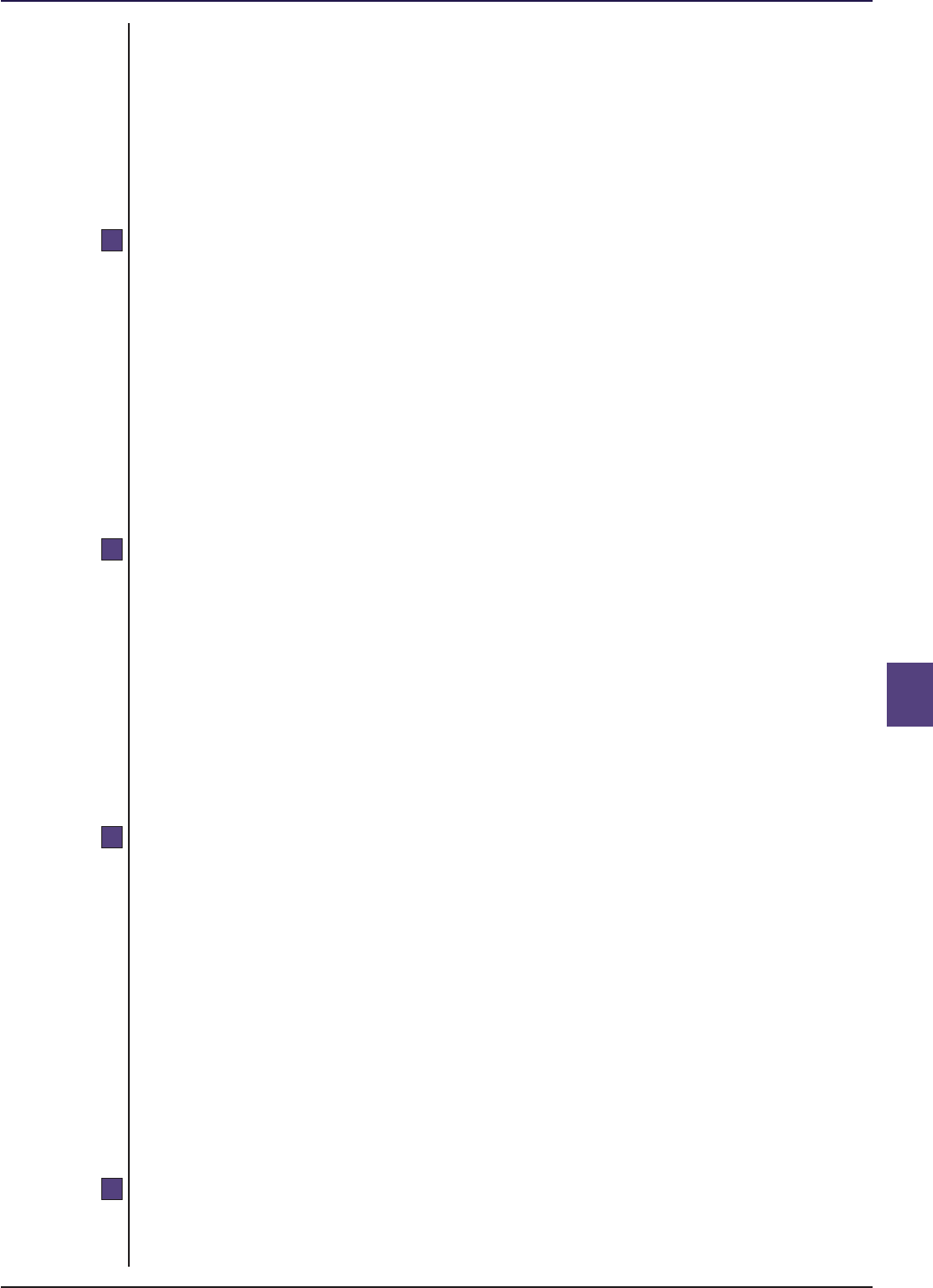
COLL 11 : Master-feeder Section 11.3 : Co-ordination and information
arrangements for UCITS schemes exchange for master and feeder UCITS
11
R11.3.6
R11.3.7
R11.3.8
R11.3.9
■ Release 39 ● Aug 2024 www.handbook.fca.org.uk COLL 11/9
(2) This paragraph applies where the applicable law of the master-feeder
agreement was:
(a) UK law before IP completion day, and remains so; or
(b) the law of the EEA State in which the master UCITS was
established before IP completion day, and remains so.
Avoidance of opportunities for market timing
.....................................................................................................
(1) The authorised fund managers of a master UCITS and its feeder UCITS
must take appropriate measures to co-ordinate the timing of their
net asset value calculation and publication, including the publication
of dealing prices, in order to avoid market timing in their units,
preventing arbitrage opportunities.
(2) Where the master UCITS is an EEA UCITS scheme managed by an EEA
UCITS management company, the authorised fund manager must co-
ordinate with that management company.
[Note: article 60(2) of the UCITS Directive]
Obligations of the feeder UCITS
.....................................................................................................
(1) An authorised fund manager of a feeder UCITS must monitor
effectively the activity of the master UCITS.
(2) In performing this obligation, the authorised fund manager of the
feeder UCITS may rely on information and documents received from
the master UCITS, or where applicable, the master UCITS'
management company, depositary or auditor, unless there is a reason
for doubting their accuracy.
[Note: article 65(1) of the UCITS Directive]
Inducements
.....................................................................................................
Where, in connection with an investment in the units of the master UCITS, a
distribution fee, commission or other monetary benefit is received by:
(1) a feeder UCITS; or
(2) an authorised fund manager of a feeder UCITS; or
(3) any person acting on behalf of (1) or (2);
that fee, commission or other monetary benefit must be paid into
the scheme property of the feeder UCITS.
[Note: article 65(2) of the UCITS Directive]
Obligations of the master UCITS
.....................................................................................................
The authorised fund manager of a master UCITS must immediately inform
the FCA of the identity of each feeder UCITS which invests in its units.
[Note: article 66(1) first sentence of the UCITS Directive]

COLL 11 : Master-feeder Section 11.3 : Co-ordination and information
arrangements for UCITS schemes exchange for master and feeder UCITS
11
G11.3.10
R11.3.11
R11.3.12
R11.3.13
■ Release 39 ● Aug 2024www.handbook.fca.org.ukCOLL 11/10
[deleted]
(1) An authorised fund manager of a master UCITS must not impose any
preliminary charge or redemption charge on the feeder UCITS for the
issue, sale, redemption or cancellation of units in the master UCITS.
(2) Where the authorised fund manager of a master UCITS requires any
addition to or deduction from the consideration paid on the
acquisition or disposal of units by a feeder UCITS which is, or is like, a
dilution levy made in accordance with ■ COLL 6.3.8 R (Dilution), it is to
be treated as part of the price of the units and not as part of any
charge.
[Note: article 66(2) of the UCITS Directive]
An authorised fund manager of a master UCITS must ensure the timely
availability of all information that is required in accordance with its
obligations under the regulatory system, the general law and the instrument
constituting the fund, to:
(1) the feeder UCITS (or where applicable its management company);
(2) the FCA;
(3) the depositary of the feeder UCITS; and
(4) the auditor of the feeder UCITS.
[Note: article 66(3) of the UCITS Directive]
Obligations to Unitholders of a master UCITS
.....................................................................................................
The authorised fund manager of a UCITS scheme that operates, or intends to
operate, as a master UCITS must:
(1) not enter into a master-feeder agreement or, where applicable,
internal conduct of business rules in accordance with ■ COLL 11.3.2R (2)
unless it is satisfied on reasonable grounds that the arrangements
with the feeder UCITS will not unfairly prejudice the interests of any
other unitholder or class of unitholders in the master UCITS;
(2) consider, in relation to:
(a) each item of information it makes available to the feeder UCITS
or its management company; and
(b) each matter notified by the depositary of the master UCITS in
accordance with ■ COLL 11.4.3 R (Notification of irregularities);
whether it would unfairly prejudice the interests of those
unitholders in the master UCITS other than the feeder UCITS by
not making that information available to them, or by not
informing them of that matter at the same time in an
appropriate manner; and

COLL 11 : Master-feeder Section 11.3 : Co-ordination and information
arrangements for UCITS schemes exchange for master and feeder UCITS
11
G11.3.14
■ Release 39 ● Aug 2024 www.handbook.fca.org.uk COLL 11/11
(3) in relation to any matter within (2)(b) where it does not notify other
unitholders at the same time:
(a) record the grounds for determining that the interests of those
unitholders are not unfairly prejudiced by its decision; and
(b) inform all unitholders of that matter in an appropriate manner
and timescale.
(1) The appropriate manner and timescale of notification referred to in
■ COLL 11.3.13R (2) and ■ (3)(b) will depend on the nature and
significance of the matter. Consequently, the authorised fund
manager will need to assess each matter individually.
(2) An appropriate manner of notification could include sending an
immediate notification to the unitholders, or arranging for the
information to be published on one or more websites where it is
reasonable likely to be seen by investors.
(3) Where ■ COLL 11.3.13R (3)(b) applies, it might be appropriate to include
the information in the next long report of the scheme.

COLL 11 : Master-feeder Section 11.4 : Depositaries
arrangements for UCITS schemes
11
R11.4.1
R11.4.2
■ Release 39 ● Aug 2024www.handbook.fca.org.ukCOLL 11/12
11.4 Depositaries
Information-sharing agreement between depositaries
.....................................................................................................
(1) An authorised fund manager of a feeder UCITS is responsible for
communicating to the depositary of the scheme any information
about the master UCITS which is required for the completion of the
depositary's regulatory obligations.
(2) Where a master UCITS and its feeder UCITS have different
depositaries, the depositaries must enter into an information-sharing
agreement in order to ensure fulfilment of their respective duties.
[Note: article 61(1) first and fourth paragraphs of the UCITS Directive]
Contents of the information-sharing agreement between
depositaries
.....................................................................................................
(1) The information-sharing agreement referred to in ■ COLL 11.4.1R (2)
must include:
(a) identification of the documents and categories of information
which are to be routinely shared between both depositaries, and
whether that information or those documents are provided by
one depositary to the other or made available on request;
(b) the manner and timing, including any applicable deadlines, of
the transmission of information by the depositary of the master
UCITS to the depositary of the feeder UCITS;
(c) the co-ordination of the involvement of both depositaries, to the
extent appropriate in view of their respective duties under
national law, in relation to operational matters, including:
(i) the procedure for calculating the net asset value of each
scheme, including any measures appropriate to protect
against the activities of market timing in accordance with
■ COLL 11.3.6 R (Avoidance of opportunities for market
timing);
(ii) the processing of instructions by the feeder UCITS to
purchase, subscribe or request the repurchase or redemption
of units in the master UCITS, and the settlement of those
transactions, including any arrangement to transfer assets in
kind;
(d) the co-ordination of accounting year-end procedures;

COLL 11 : Master-feeder Section 11.4 : Depositaries
arrangements for UCITS schemes
11
R11.4.2A
R11.4.3
■ Release 39 ● Aug 2024 www.handbook.fca.org.uk COLL 11/13
(e) what details the depositary of the master UCITS must provide to
the depositary of the feeder UCITS of breaches by the master
UCITS of the law and the instrument constituting the fund and
how and when those details will be provided;
(f) the procedure for handling ad hoc requests for assistance from
one depositary to the other; and
(g) identification of particular contingent events which ought to be
notified by one depositary to the other on an ad hoc basis, and
how and when this will be done.
(2) Where a master-feeder agreement exists in accordance with
■ COLL 11.3.2R (1) (Master-feeder agreement and internal conduct of
business rules), the information-sharing agreement between the
depositaries must provide that UK law applies to that agreement, and
both depositaries agree to the exclusive jurisdiction of the UK courts
in relation to that agreement.
(3) Where the master-feeder agreement has been replaced by internal
conduct of business rules in accordance with ■ COLL 11.3.2R (2) (Master-
feeder agreement and internal conduct of business rules), the
information-sharing agreement between the depositaries must
provide that UK law applies to that agreement, and both depositaries
agree to the exclusive jurisdiction of the UK courts in relation to that
agreement.
[Note: articles 24 and 25 of the UCITS implementing Directive No 2]
(1) Where paragraph (2) applies, an information-sharing agreement
between the depositaries that is effective prior to IP completion day
need not comply with ■ COLL 11.4.2R.
(2) This paragraph applies where the applicable law of the information
sharing agreement between the depositaries was:
(a) UK law before IP completion day, and remains so; or
(b) the law of a given EEA State before IP completion day, and
remains so.
Notification of irregularities
.....................................................................................................
(1) Where a depositary of a master UCITS detects any irregularities with
regards to the scheme which may have a negative impact on the
relevant feeder UCITS, the depositary must immediately inform:
(a) the FCA;
(b) the feeder UCITS or, where applicable, its management company;
and
(c) the depositary of the feeder UCITS.
(2) The irregularities referred to in (1) include, but are not limited to:
(a) errors in the valuation of the scheme property performed in
accordance with ■ COLL 6.3.3 R (Valuation);

COLL 11 : Master-feeder Section 11.4 : Depositaries
arrangements for UCITS schemes
11
G11.4.4
G11.4.5
■ Release 39 ● Aug 2024www.handbook.fca.org.ukCOLL 11/14
(b) errors in transactions for or settlement of the sale, issue,
repurchase or redemption of units in the scheme undertaken by
the feeder UCITS;
(c) errors in the payment or capitalisation of income arising from the
scheme property, or in the calculation of any related withholding
tax;
(d) breaches of the investment objectives, policy or strategy of the
scheme as described in the instrument constituting the fund, the
prospectus or the key investor information; and
(e) breaches of investment and borrowing limits set out in COLL, the
instrument constituting the fund, the prospectus or the key
investor information.
[Note: article 61(2) of the UCITS Directive and article 26 of the UCITS
implementing Directive No 2]
(1) When notifying the FCAof any irregularities in accordance with
■ COLL 11.4.3R (1), the depositary of the master UCITS should also
inform the depositary of the feeder UCITS how the master UCITS or
its authorised fund manager has resolved or proposes to resolve the
irregularity.
(2) Where the depositary of a UCITS scheme that is a feeder UCITS is
informed by the depositary of a master UCITS of an irregularity and is
not satisfied that the resolution or proposed resolution is in the
interests of the unitholders of the scheme, it should promptly report
its view to the authorised fund manager of the scheme, or in the case
of an ICVC, the directors.
[Note: recital (16) to the UCITS implementing Directive No 2]
Disclosure by a trustee or depositary
.....................................................................................................
Section 351A (Disclosure under the UCITS directive) of the Act provides that
where a trustee of an AUT or the depositary of an ACS which is a master
UCITS or a feeder UCITS, or any person acting on their behalf, makes a
disclosure to comply with rules implementing Chapter VIII of the UCITS
Directive, that disclosure is not to be taken as a contravention of any duty to
which the person making the disclosure is subject. The OEIC Regulations (see
regulation 83A) contain corresponding provisions for the depositaries of
ICVCs that are feeder UCITS and master UCITS.

COLL 11 : Master-feeder Section 11.5 : Auditors
arrangements for UCITS schemes
11
R11.5.1
R11.5.2
■ Release 39 ● Aug 2024 www.handbook.fca.org.uk COLL 11/15
11.5 Auditors
Information-sharing agreement between auditors
.....................................................................................................
Where a master UCITS and a feeder UCITS have different auditors, those
auditors must enter into an information-sharing agreement in order to
ensure the fulfilment of their respective duties, including the arrangements
taken to comply with ■ COLL 11.5.3 R and ■ COLL 11.5.4 R (Preparation of the
audit report).
[Note: article 62(1) first paragraph of the UCITS Directive]
Contents of the information-sharing agreement between
auditors
.....................................................................................................
(1) The information-sharing agreement referred to in ■ COLL 11.5.1 R must
include:
(a) identification of the documents and categories of information
which are to be routinely shared between both auditors;
(b) whether the information or documents referred to in (a) are to
be provided by one auditor to the other or made available on
request;
(c) the manner and timing, including any applicable deadlines, of
the transmission of information by the auditor of the master
UCITS to the auditor of the feeder UCITS;
(d) the co-ordination of the involvement of each auditor in the
accounting year-end procedures for their respective scheme;
(e) identification of matters that must be treated as irregularities
and disclosed in the audit report for the master UCITS for the
purposes of ■ COLL 11.5.3R (2);
(f) the manner and timing for handling ad hoc requests for
assistance from one auditor to the other, including a request for
further information on irregularities disclosed in the audit report
for the master UCITS; and
(g) provisions regarding the preparation of the audit reports referred
to in ■ COLL 11.5.3 R and ■ COLL 4.5.12 R (Report of the auditor) and
the manner and timing for the provision of the audit report for
the master UCITS (and drafts of it) to the auditor of the feeder
UCITS.
(2) Where the feeder UCITS and the master UCITS have different
accounting year-end dates, the information-sharing agreement must
include the manner and timing by which the auditor of the master

COLL 11 : Master-feeder Section 11.5 : Auditors
arrangements for UCITS schemes
11
R11.5.2A
R11.5.3
R11.5.4
G11.5.5
■ Release 39 ● Aug 2024www.handbook.fca.org.ukCOLL 11/16
UCITS is to make the ad hoc report as required by ■ COLL 11.5.4 R and
to provide it (and drafts of it) to the auditor of the feeder UCITS.
(3) Where a master-feeder agreement exists in accordance with
■ COLL 11.3.2R (1) (Master-feeder agreement and internal conduct of
business rules), the information-sharing agreement between the
auditors must provide that UK law applies to that agreement, and
both auditors agree to the exclusive jurisdiction of the UK courts in
relation to that agreement.
(4) Where the master-feeder agreement has been replaced by internal
conduct of business rules in accordance with ■ COLL 11.3.2R (2) (Master-
feeder agreement and internal conduct of business rules), the
information-sharing agreement between the auditors must provide
that UK law applies to that agreement, and both auditors agree to
the exclusive jurisdiction of the UK courts in relation to that
agreement.
[Note: articles 27 and 28 of the UCITS implementing Directive No 2]
(1) An information-sharing agreement between the auditors that is
effective prior to IP completion day need not comply with
■ COLL 11.5.2R.
(2) This paragraph applies where the applicable law of the information-
sharing agreement between the auditors was:
(a) United Kingdom law before IP completion day, and remains so; or
(b) the law of a given EEA State before IP completion day, and
remains so.
Preparation of the audit report
.....................................................................................................
When preparing its audit report, the auditor of a feeder UCITS must:
(1) take into account the audit report of the master UCITS; and
(2) report on any irregularities revealed in the audit report of the master
UCITS and their impact on the feeder UCITS.
[Note: article 62(2) first paragraph first sentence and second paragraph of the
UCITS Directive]
Where a master UCITS and one or more of its feeder UCITS have different
accounting years, the auditor of the master UCITS must make an ad hoc
report on the closing date of the accounting year of each feeder UCITS.
[Note: article 62(2) first paragraph second sentence of the UCITS Directive]
Disclosure by an auditor
.....................................................................................................
Section 351A of the Act provides that where an auditor of an AUT or ACS
which is a master UCITS or a feeder UCITS, or any person acting on their
behalf, makes a disclosure to comply with rules implementing Chapter VIII of
the UCITS Directive, that disclosure is not to be taken as a contravention of
any duty to which the person making the disclosure is subject. The OEIC
Regulations (see regulation 83A) contain corresponding provisions for
auditors of ICVCs that are feeder UCITS and master UCITS.

COLL 11 : Master-feeder Section 11.5 : Auditors
arrangements for UCITS schemes
11
R11.5.6
■ Release 39 ● Aug 2024 www.handbook.fca.org.uk COLL 11/17
Responsibility of authorised fund managers
.....................................................................................................
The authorised fund managers of a master UCITS and a feeder UCITS must
ensure that the terms on which auditors of their respective schemes are
appointed require each auditor to comply with the rules in this section.
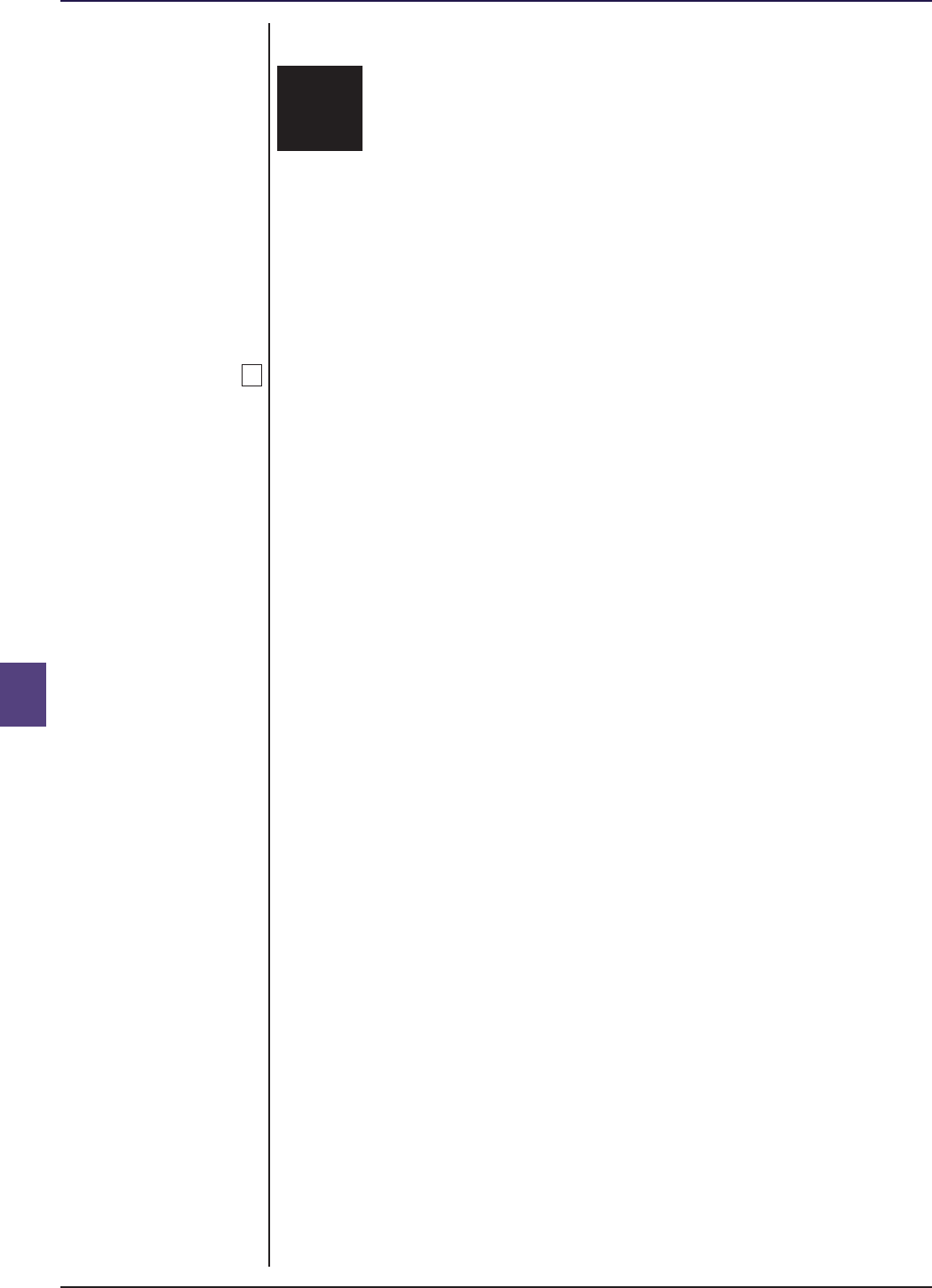
COLL 11 : Master-feeder Section 11.6 : Winding up, merger and
arrangements for UCITS schemes division of master UCITS
11
G11.6.1
■ Release 39 ● Aug 2024www.handbook.fca.org.ukCOLL 11/18
11.6 Winding up, merger and division of
master UCITS
Explanation
.....................................................................................................
(1) Section 258A(1) and (2) and section 261Z(1) and (2) (Winding up or
merger of master UCITS) of the Act, provide that where a master
UCITS is wound up, for whatever reason, the FCA is to direct the
manager and trustee of any AUT or the authorised contractual
scheme manager and depositary of any ACS which is a feeder UCITS
of the master UCITS to wind up the scheme, unless one of the
following conditions is satisfied:
(a) the FCA approves under section 283A (Master-feeder structures)
of the Act the investment by the feeder UCITS of at least 85% in
value of the scheme property in units of another master UCITS; or
(b) the FCA approves under section 252A or section 261S (Proposal to
convert to a non-feeder UCITS) of the Act an amendment of the
trust deed or contractual scheme deed of the feeder UCITS which
would enable it to convert into a UCITS scheme which is not a
feeder UCITS.
(2) Section 258A(3) and (4) and section 261Z(3) and (4) of the Act further
providethat where a master UCITS merges with another UCITS or is
divided into two or more UCITS, the FCA is to direct the manager and
trustee of any AUT or the authorised contractual scheme manager
and depositary of any ACS which is a feeder UCITS of the master
UCITS to wind up the scheme, unless one of the following conditions
is satisfied:
(a) the FCA approves under section 283A of the Act the investment
by the feeder UCITS of at least 85% in value of the scheme
property in units of:
(i) the master UCITS which results from the merger;
(ii) one of the UCITS resulting from the division; or
(iii) another UCITS or master UCITS; or
(b) the FCA approves under section 252A or section 261S of the Act
an amendment of the trust deed or contractual scheme deed of
the feeder UCITS which would enable it to convert into a UCITS
scheme which is not a feeder UCITS.
(3) The OEIC Regulations (see regulations 33A and 33B respectively)
contain corresponding provisions for feeder UCITS which are
structured as ICVCs.

COLL 11 : Master-feeder Section 11.6 : Winding up, merger and
arrangements for UCITS schemes division of master UCITS
11
R11.6.2
R11.6.3
■ Release 39 ● Aug 2024 www.handbook.fca.org.uk COLL 11/19
Winding up and liquidation of master UCITS: Time limit within
which a master UCITS is to be wound up pursuant to FCA
direction
.....................................................................................................
(1) The commencement of winding up of a UCITS scheme that is a master
UCITS must take place no sooner than 3 months after a notification is
made to its unitholders and the FCA informing it of the binding
decision to wind up the master UCITS.
(2) Paragraph (1) is without prejudice to any provision of the insolvency
legislation in force in the United Kingdom regarding the compulsory
liquidation of AUTs, ACSs or ICVCs.
[Note: article 60(4) last sentence of the UCITS Directive]
Application for approval by a feeder UCITS where a master
UCITS is wound up
.....................................................................................................
Where the authorised fund manager of a UCITS scheme that is a feeder
UCITS is notified that its master UCITS is to be wound up, it must submit to
the FCA the following:
(1) where the authorised fund manager of the feeder UCITS intends to
invest at least 85% in value of the scheme property in units of
another master UCITS:
(a) its application for approval under section 283A of the Act for
that investment;
(b) where applicable, its notice under section 251 (Alteration of
schemes and changes of manager or trustee) of the Act, section
261Q of the Act (Alteration of contractual schemes and changes
of operator or depositary) or regulation 21 (The Authority's
approval for certain changes in respect of a company) of the OEIC
Regulations of any proposed amendments to its instrument
constituting the fund;
(c) the amendments to its prospectus and its key investor
information in accordance with ■ COLL 4.2.3 R (1)(b) (Provision and
filing of the prospectus) and ■ COLL 4.7.7 R (1) (Revision and filing
of key investor information); and
(d) the other documents required in accordance with ■ COLL 11.2.2 R
(Application for approval of an investment in a master UCITS);
(2) where the authorised fund manager of the feeder UCITS intends to
convert it into a UCITS scheme that is not a feeder UCITS:
(a) its application for approval under section 252A or section 261S of
the Act or regulation 22A of the OEIC Regulations of the
proposed amendments to its instrument constituting the fund;
and
(b) the amendments to its prospectus and its key investor
information in accordance with ■ COLL 4.2.3 R (1)(b) and
■ COLL 4.7.7 R (1); and
(3) where the authorised fund manager of the feeder UCITS intends to
wind up the scheme, a notice under section 251 or section 261Q of

COLL 11 : Master-feeder Section 11.6 : Winding up, merger and
arrangements for UCITS schemes division of master UCITS
11
R11.6.4
R11.6.5
■ Release 39 ● Aug 2024www.handbook.fca.org.ukCOLL 11/20
the Act or regulation 21 of the OEIC Regulations of a proposal to that
effect.
[Note: article 20(1) of the UCITS implementing Directive No 2]
Timing of applications for approval: winding up of a master
UCITS
.....................................................................................................
(1) The information in ■ COLL 11.6.3 R must be submitted no later than
two months after the date on which the master UCITS has informed
the authorised fund manager of the feeder UCITS of the binding
decision to be wound up.
(2) By way of derogation from (1), where the master UCITS has informed
the authorised fund manager of the feeder UCITS of the binding
decision to be wound up more than five months before the date at
which the winding up will start, the authorised fund manager must
submit the information to the FCA at the latest three months before
the day the winding up will start.
[Note: article 20(1) first sentence and article 20(2) of the UCITS implementing
Directive No 2]
Application for approval by a feeder UCITS where a master
UCITS merges or divides
.....................................................................................................
Where the authorised fund manager of a UCITS scheme that is a feeder
UCITS is notified that the master UCITS is to merge with another UCITS
scheme or EEA UCITS scheme or divide into two or more such schemes, it
must submit to the FCA the following:
(1) where the authorised fund manager of the feeder UCITS intends it to
continue to be a feeder UCITS of the same master UCITS:
(a) its application under section 283A of the Act, for approval;
(b) where applicable, a notice under section 251 or section 261Q of
the Act or regulation 21 of the OEIC Regulations of any proposed
amendments to the instrument constituting the fund; and
(c) where applicable, the amendments to its prospectus and its key
investor information in accordance with ■ COLL 4.2.3 R (1)(b) and
■ COLL 4.7.7 R (1);
(2) where the authorised fund manager of the feeder UCITS intends it to
become a feeder UCITS of another master UCITS resulting from the
proposed merger or division of the master UCITS, or intends the
feeder UCITS to invest at least 85% in value of the scheme property in
units of another master UCITS not resulting from the merger or
division:
(a) its application under section 283A of the Act for approval of that
investment;
(b) where applicable, a notice under section 251 or section 261Q of
the Act or regulation 21 of the OEIC Regulations of any proposed
amendments to the instrument constituting the fund;

COLL 11 : Master-feeder Section 11.6 : Winding up, merger and
arrangements for UCITS schemes division of master UCITS
11
R11.6.6
R11.6.7
■ Release 39 ● Aug 2024 www.handbook.fca.org.uk COLL 11/21
(c) the amendments to its prospectus and its key investor
information in accordance with ■ COLL 4.2.3 R (1)(b) and
■ COLL 4.7.7 R (1);
(d) the other documents required in accordance with ■ COLL 11.2.2 R;
(3) where the authorised fund manager of the feeder UCITS intends it to
convert into a UCITS scheme that is not a feeder UCITS:
(a) its application for approval under section 252A or section 261S of
the Act or regulation 22A of the OEIC Regulations of the
proposed amendments to the instrument constituting the fund;
and
(b) the amendments to its prospectus and its key investor
information in accordance with ■ COLL 4.2.3 R (1)(b) and
■ COLL 4.7.7 R (1); and
(4) where the authorised fund manager of the feeder UCITS intends to
wind up the scheme, a notice under section 251 or section 261Q of
the Act or regulation 21 of the OEIC Regulations of a proposal to that
effect.
[Note: article 22(1) of the UCITS implementing Directive No 2]
Interpretation of COLL 11.6.5R
.....................................................................................................
(1) For the purposes of ■ COLL 11.6.5R (1), a feeder UCITS will be
considered as continuing to be a feeder UCITS of the same master
UCITS where:
(a) the master UCITS is the receiving UCITS in a proposed UCITS
merger; or
(b) the master UCITS is to continue materially unchanged as one of
the resulting UCITS schemes or EEA UCITS schemes in a proposed
division.
(2) For the purposes of ■ COLL 11.6.5R (2), a feeder UCITS will be
considered as becoming a feeder UCITS of another master UCITS
resulting from the merger or division of the master UCITS where:
(a) the master UCITS is the merging UCITS and, as a result of the
UCITS merger, the feeder UCITS becomes a unitholder of the
receiving UCITS; or
(b) the feeder UCITS as a result of the division becomes a unitholder
of a UCITS scheme or EEA UCITS scheme that is materially
different to the master UCITS.
[Note: article 22(2) of the UCITS implementing Directive No 2]
Timing of applications for approval: merger or division of a
master UCITS
.....................................................................................................
(1) The information in ■ COLL 11.6.5 R must be submitted to the FCA no
later than one month after the date on which the authorised fund
manager of the feeder UCITS has received the information of the
planned merger or division in accordance with regulation 13(6) of the
UCITS Regulations 2011.

COLL 11 : Master-feeder Section 11.6 : Winding up, merger and
arrangements for UCITS schemes division of master UCITS
11
G11.6.8
R11.6.9
■ Release 39 ● Aug 2024www.handbook.fca.org.ukCOLL 11/22
(2) By way of derogation from (1), where the master UCITS provides the
information referred to in, or comparable with, ■ COLL 7.7.10 R
(Information to be given to Unitholders) to the authorised fund
manager of the feeder UCITS more than four months before the
proposed effective date of the merger or division of the master
UCITS, the authorised fund manager must submit the information to
the FCA at least three months before the proposed effective date.
[Note: article 22(1) first sentence and article 22(3) of the UCITS implementing
Directive No 2]
Repurchase or redemption of units in a master UCITS
.....................................................................................................
Regulation 12(4) (Right of redemption) of the UCITS Regulations 2011
provides that where a UK master UCITS merges with another scheme, the
master UCITS must enable its feeder UCITS to repurchase or redeem all the
units of the master UCITS in which they have invested before the
consequences of the merger become effective, unless the FCA approves the
continued investment by the feeder UCITS in a master UCITS resulting from
the merger.
(1) Where:
(a) the authorised fund manager of a feeder UCITS has submitted
the documents required under ■ COLL 11.6.5R (2) and ■ (3); and
(b) does not receive the necessary approvals from the FCA by the
business day preceding the last day on which the authorised fund
manager of the feeder UCITS can request repurchase or
redemption of its units in the master UCITS;
the authorised fund manager of the feeder UCITS must exercise
the right to repurchase or redeem its units in the master UCITS
under regulation 12(4) of the UCITS Regulations 2011.
(2) The authorised fund manager of the feeder UCITS must also exercise
the right in (1) to ensure that the right of its own unitholders to
request repurchase or redemption in the feeder UCITS in accordance
with ■ COLL 4.8.3 R (1)(d) (Information to be provided to Unitholders) is
not affected.
(3) Before exercising the right in (1), the authorised fund manager of the
feeder UCITS must consider any available alternative solutions which
may help to avoid or reduce transaction costs or other negative
impacts for its own unitholders.
(4) Where the authorised fund manager of the feeder UCITS requests
repurchase or redemption in accordance with (1), it must receive one
of the following:
(a) the repurchase or redemption proceeds in cash; or
(b) some or all of the repurchase or redemption proceeds as a
transfer in kind, where the authorised fund manager of the
feeder UCITS so wishes and where its instrument constituting the
fund and the master-feeder agreement provide for it.

COLL 11 : Master-feeder Section 11.6 : Winding up, merger and
arrangements for UCITS schemes division of master UCITS
11
R11.6.10
G11.6.11
R11.6.12
R11.6.13
■ Release 39 ● Aug 2024 www.handbook.fca.org.uk COLL 11/23
(5) Where (4)(b) applies, the authorised fund manager of the feeder
UCITS may realise any part of the transferred assets for cash at any
time.
[Note: articles 23(4) and 23(5) of the UCITS implementing Directive No 2]
Conditions on reinvestment of cash
.....................................................................................................
Where:
(1) the FCA approves an application under sections 283A (Master-feeder
structures), 252A or 261S (Proposal to convert to a non-feeder UCITS)
of the Act or regulation 22A of the OEIC Regulations that arises as a
result of the winding-up, merger or division of the master UCITS
(other than an application pursuant to ■ COLL 11.6.5R (1)); and
(2) the authorised fund manager of the feeder UCITS holds or receives
cash in accordance with ■ COLL 11.6.9R (4) or as a result of a winding-
up;
the authorised fund manager may not re-invest that cash, except for the
purpose of efficient cash management, before the date on which the feeder
UCITS invests in units of the master UCITS in accordance with
■ COLL 11.3.2R (3) (Master-feeder agreement and internal conduct of business
rules) or in accordance with its new investment objectives and policy.
[Note: article 23(6) of the UCITS implementing Directive No 2]
■ COLL 11.6.10 R gives effect to sections 283A(4), 252A(8) and 261S(8) of the
Act and regulation 22A(4) of the OEIC Regulations which require the FCA to
impose certain conditions when approving the re-investment of cash received
from a master UCITS which has been wound up.
Requirements following approval by the FCA
.....................................................................................................
Where the authorised fund manager of a feeder UCITS has submitted the
documents required under ■ COLL 11.6.3R (1), ■ COLL 11.6.3R (2),
■ COLL 11.6.5R (1), ■ COLL 11.6.5R (2) or ■ COLL 11.6.5R (3) and has received
written notice of any required approvals from the FCA, it must:
(1) inform the master UCITS of those approvals; and
(2) in the case of the required approvals received in respect of
documents submitted under ■ COLL 11.6.3 R (1) and ■ COLL 11.6.5 R (2),
take the necessary measures to comply with the requirements of
■ COLL 4.8.3 R as soon as possible.
[Note: articles 21(2), 21(3), 23(2) and 23(3) of the UCITS implementing
Directive No 2]
Notification by feeder UCITS of intention to be wound up
.....................................................................................................
Where the authorised fund manager of a feeder UCITS gives notice to the
FCA under section 251 or section 261Q of the Act or regulation 21 of the
OEIC Regulations that it intends to wind up the scheme, it must inform:

COLL 11 : Master-feeder Section 11.6 : Winding up, merger and
arrangements for UCITS schemes division of master UCITS
11
■ Release 39 ● Aug 2024www.handbook.fca.org.ukCOLL 11/24
(1) the unitholders of the feeder UCITS; and
(2) where notice is given under ■ COLL 11.6.5R (4) (Application for
approval by a feeder UCITS where a master UCITS merges or divides),
the authorised fund manager of the master UCITS;
of its intention without undue delay.
[Note: articles 20(3) and 22(4) of the UCITS implementing Directive No 2]

COLL 11 : Master-feeder Annex 1
arrangements for UCITS schemes
11
Contents of the standard master-feeder agreement
This table belongs to the rule on the conclusion and prescribed content of a standard master-feeder
agreement (■ COLL 11.3.2R (1)).
(1) Provisions related to access to information by a master UCITS and a feeder UCITS:
(a) how and when the master UCITS provides the feeder UCITS with a copy of it instru-
ment constituting the fund, prospectus and key investor information or any
amendment of them;
(b) how and when the master UCITS informs the feeder UCITS of a delegation of in-
vestment management and risk management functions to third parties in accord-
ance with COLL 6.6.15AR;
(c) where applicable, how and when the master UCITS provides the feeder UCITS with
internal operational documents, such as its risk management process and its com-
pliance reports;
(d) what details of breaches by the master UCITS of;
(i) the law;
(ii) the instrument constituting the fund; and
(iii) the master-feeder agreement;
must be notified to the feeder UCITS and the manner and timing thereof;
(e) where a feeder UCITS uses derivatives for hedging purposes, how and when the
master UCITS will provide the feeder UCITS with information about its actual expo-
sure to derivatives to enable the feeder UCITS to calculate its own global exposure
as envisaged by COLL 5.8.4 R (Exposure to derivatives); and
(f) a statement that the master UCITS must inform the feeder UCITS of any other in-
formation-sharing arrangements entered into with third parties and, where applic-
able, how and when the master UCITS makes those other information-sharing ar-
rangements available to the feeder UCITS.
[Note: article 8 of the UCITS implementing Directive No 2]
(2) Provisions related to the basis of investment and divestment by the feeder UCITS:
(a) a statement of which classes of units of the master UCITS are available for invest-
ment by the feeder UCITS;
(b) the charges and expenses to be borne by the feeder UCITS and details of any re-
bate or retrocession of charges or expenses by the master UCITS; and
(c) where applicable, the terms on which any initial or subsequent transfer of assets
in kind may be made from the feeder UCITS to the master UCITS.
[Note: article 9 of the UCITS implementing Directive No 2]
(3) Provisions related to standard dealing arrangements:
(a) co-ordination of the frequency and timing of the net asset value calculation pro-
cess and the publication of prices of units;
(b) co-ordination of transmission of dealing orders by the feeder UCITS, including,
where applicable, the role of transfer agents or any other third party;
(c) where applicable, any arrangements necessary to take account of the fact that the
units of the master UCITS or the feeder UCITS are listed or traded on a secondary
market;
■ Release 39 ● Aug 2024 www.handbook.fca.org.uk COLL 11 Annex 1/1

COLL 11 : Master-feeder Annex 1
arrangements for UCITS schemes
11
(d) where necessary, appropriate measures to ensure compliance with the require-
ments in COLL 11.3.6 R (Avoidance of opportunities for market timing);
(e) where the units of the feeder UCITS and the master UCITS are denominated in dif-
ferent currencies, the basis for conversion of dealing orders;
(f) settlement cycles and payment details for purchases or subscriptions and repur-
chases or redemptions of units of the master UCITS including, where agreed be-
tween the parties, the terms on which the master UCITS may settle redemption re-
quests by a transfer of assets in kind to the feeder UCITS, notably where a master
UCITS is wound up, merges with another UCITS scheme or EEA UCITS scheme or di-
vides into two or more such schemes;
(g) procedures to ensure enquiries and complaints from unitholders are handled ap-
propriately; and
(h) where the instrument constituting the fund and prospectus of the master UCITS
give it certain rights or powers in relation to unitholders, and the master UCITS
chooses to limit or forego the exercise of all or any such rights and powers in rela-
tion to the feeder UCITS, a statement of the terms on which it does so.
[Note: article 10 of the UCITS implementing Directive No 2]
(4) Provisions related to events affecting dealing arrangements:
(a) the manner and timing of a notification by either the master UCITS or the feeder
UCITS of the temporary suspension and resumption of repurchase, redemption,
purchase or subscription of its units; and
(b) the arrangements for notifying and resolving pricing errors in the master UCITS.
[Note: article 11 of the UCITS implementing Directive No 2]
(5) Provisions related to the standard arrangements for the audit report:
(a) where the feeder UCITS and the master UCITS have the same accounting years,
the co-ordination of the production of their periodic reports; and
(b) where the feeder UCITS and the master UCITS have different accounting years, ar-
rangements for the feeder UCITS to obtain any necessary information from the
master UCITS to enable it to produce its periodic reports on time and which en-
sure that the auditor of the master UCITS is in a position to produce an ad hoc re-
port on the closing date of the accounting year of the feeder UCITS in accordance
with COLL 11.5.4 R (Preparation of the audit report).
[Note: article 12 of the UCITS implementing Directive No 2]
(6) Provisions related to changes to the standing arrangements:
How and when notice is to be given:
(a) by the master UCITS of proposed and effective amendments to its instru-
ment constituting the fund, prospectus and key investor information, if
these details differ from the standard arrangements for notification of
unitholders laid down in the instrument constituting the fund or pro-
spectus of the master UCITS;
(b) by the master UCITS of a planned or proposed winding up, merger or
division;
(c) by either the feeder UCITS or the master UCITS that it has ceased or will
cease to meet the qualifying conditions to be a feeder UCITS or a master
UCITS respectively;
(d) by either the feeder UCITS or the master UCITS that it intends to replace
its management company, its depositary, its auditor or any third party
which is mandated to carry out investment management or risk manage-
ment functions; and
(e) by the master UCITS of other changes to standing arrangements that it
undertakes to provide.
[Note: article 13 of the UCITS implementing Directive No 2]
■ Release 39 ● Aug 2024www.handbook.fca.org.ukCOLL 11 Annex 1/2

COLL 11 : Master-feeder Annex 2
arrangements for UCITS schemes
11
Contents of the internal conduct of business rules
This table belongs to the rule on the conclusion and prescribed content of the internal conduct of
business rules (■ COLL 11.3.2R (2)).
(1) Provisions related to conflicts of interest
(a) The internal conduct of business rules referred to in COLL 11.3.2R (2) must include
appropriate measures to mitigate conflicts of interest that may arise between:
(i) the feeder UCITS and the master UCITS; or
(ii) the feeder UCITS and other unitholders of the master UCITS;
to the extent that these are not sufficiently addressed by the measures applied by
the management company in order to meet the requirements of the provisions
listed in (b).
(b) The provisions referred to in (a) are:
(i) SYSC 10.1.4 R (Types of conflicts);
(ii) SYSC 10.1.6 R (Record of conflicts);
(iii) SYSC 10.1.10 R (Conflicts policy);
(iv) SYSC 10.1.11 R (Contents of policy);
(v) SYSC 10.1.17 R (Additional requirements for a management company);
(vi) SYSC 10.1.19 R (Structure and organisation of a management company);
(vii) SYSC 10.1.20 R (Avoidance of conflicts of interest for a management
company);
(viii) SYSC 10.1.21 R (Disclosure of conflicts for a management company); and
(ix) COLL 6.6A.6 R (Strategies for the exercise of voting rights);
or the equivalent provisions implementing articles 12(1)(b) and 14(1)(d) of the UC-
ITS Directive and Chapter III of the UCITS implementing Directive.
[Note: article 15 of the UCITS implementing Directive No 2]
(2) Provisions related to the basis of investment and divestment by the feeder UCITS:
(a) a statement of which classes of units of the master UCITS are available for invest-
ment by the feeder UCITS;
(b) the charges and expenses to be borne by the feeder UCITS and details of any re-
bate or retrocession of charges or expenses by the master UCITS; and
(c) where applicable, the terms on which any initial or subsequent transfer of assets in
kind may be made from the feeder UCITS to the master UCITS.
[Note: article 16 of the UCITS implementing Directive No 2]
(3) Provisions related to standard dealing arrangements:
(a) co-ordination of the frequency and timing of the net asset value calculation pro-
cess and the publication of prices of units;
(b) co-ordination of transmission of dealing orders by the feeder UCITS, including,
where applicable, the role of transfer agents or any other third party;
(c) where applicable, any arrangements necessary to take account of the fact that un-
its of the master UCITS or the feeder UCITS are listed or traded on a secondary
market;
■ Release 39 ● Aug 2024 www.handbook.fca.org.uk COLL 11 Annex 2/1

COLL 11 : Master-feeder Annex 2
arrangements for UCITS schemes
11
(d) where necessary, appropriate measures to ensure compliance with the require-
ments in COLL 11.3.6 R (Avoidance of opportunities for market timing);
(e) where the units of the feeder UCITS and the master UCITS are denominated in dif-
ferent currencies, the basis for conversion of dealing orders;
(f) settlement cycles and payment details for purchases or subscriptions and repur-
chases or redemptions of units of the master UCITS including, where agreed be-
tween the parties, the terms on which the master UCITS may settle redemption re-
quests by a transfer of assets in kind to the feeder UCITS, notably where a master
UCITS is wound up, merges with another UCITS scheme or EEA UCITS scheme or di-
vides into two or more such schemes; and
(g) where the instrument constituting the fund and prospectus of the master UCITS
give it certain rights or powers in relation to unitholders, and the master UCITS
chooses to limit or forego the exercise of all or any such rights and powers in rela-
tion to the feeder UCITS, a statement of the terms on which it does so.
[Note: article 17 of the UCITS implementing Directive No 2]
(4) Provisions related to events affecting dealing arrangements:
(a) the manner and timing of notification by either the master UCITS or the feeder UC-
ITS of the temporary suspension and resumption of repurchase, redemption, pur-
chase or subscription of its units; and
(b) the arrangements for notifying and resolving pricing errors in the master UCITS.
[Note: article 18 of the UCITS implementing Directive No 2]
(5) Provisions related to the standard arrangements for the audit report:
(a) where the feeder UCITS and the master UCITS have the same accounting years, the
co-ordination of the production of their periodic reports; and
(b) where the feeder UCITS and the master UCITS have different accounting years, ar-
rangements for the feeder UCITS to obtain any necessary information from the
master UCITS to enable it to produce its periodic reports on time and which ensure
that the auditor of the master UCITS is in a position to produce an ad hoc report
on the closing date of the accounting year of the feeder UCITS in accordance with
COLL 11.5.4 R (Preparation of the audit report).
[Note: article 19 of the UCITS implementing Directive No 2]
■ Release 39 ● Aug 2024www.handbook.fca.org.ukCOLL 11 Annex 2/2

Collective Investment Schemes
Chapter 12
Management company and
product passports under the
UCITS Directive [deleted]
■ Release 39 ● Aug 2024 www.handbook.fca.org.uk COLL 12/1

■ Release 39 ● Aug 2024 www.handbook.fca.org.uk COLL 12/2

Collective Investment Schemes
Chapter 13
Operation of feeder NURS
■ Release 39 ● Aug 2024 www.handbook.fca.org.uk COLL 13/1

COLL 13 : Operation of feeder Section 13.1 : Introduction
NURS
13
R13.1.1
G13.1.2
■ Release 39 ● Aug 2024www.handbook.fca.org.ukCOLL 13/2
13.1 Introduction
Application
.....................................................................................................
This chapter applies to:
(1) the authorised fund manager of a feeder NURS;
(2) an ICVC that is a feeder NURS;
(3) the authorised fund manager of a UCITS scheme or non-UCITS retail
scheme which operates as a qualifying master scheme to a feeder
NURS; and
(4) (in the case of ■ COLL 13.2.6 R (Inducements) only) any person acting
on behalf of either the feeder NURS or the authorised fund manager
of the feeder NURS.
Purpose
.....................................................................................................
This chapter sets out various obligations, additional to those found
elsewhere in the Handbook, that persons listed in ■ COLL 13.1.1 R must comply
with in relation to the operation of a feeder NURS and its qualifying master
scheme.

COLL 13 : Operation of feeder Section 13.2 : Operational requirements for
NURS feeder NURS
13
R13.2.1
R13.2.2
■ Release 39 ● Aug 2024 www.handbook.fca.org.uk COLL 13/3
13.2 Operational requirements for
feeder NURS
Application
.....................................................................................................
This section applies as follows:
(1) ■ COLL 13.2.2 R to ■ COLL 13.2.6 R apply to the authorised fund manager
of a feeder NURS;
(2) ■ COLL 13.2.6 R also applies to:
(a) an ICVC that is a feeder NURS; and
(b) any person acting on behalf of either the feeder NURS or the
authorised fund manager of the feeder NURS; and
(3) ■ COLL 13.2.7 R applies to the authorised fund manager of a UCITS
scheme or a non-UCITS retail scheme which operates as a qualifying
master scheme to a feeder NURS.
Pre-investment requirements of the authorised fund manager
of a feeder NURS
.....................................................................................................
Before investing in the qualifying master scheme, the authorised fund
manager of the feeder NURS must:
(1) be satisfied on reasonable grounds that the authorised fund manager
can obtain from the qualifying master scheme all the information
necessary to comply on an ongoing basis with the rules in COLL;
(2) having consulted with the depositary of the feeder NURS, be satisfied
on reasonable grounds that the depositary of the feeder NURS can
obtain from the qualifying master scheme, the operator of the
qualifying master scheme or the depositary of the qualifying master
scheme all the information necessary to comply with its duties under
■ COLL 6.6.4 R (General duties of the depositary); and
(3) where the qualifying master scheme is a UCITS scheme or a non-UCITS
retail scheme, inform the authorised fund manager of the qualifying
master scheme of the date on which the feeder NURS will begin to
invest into the qualifying master scheme as a feeder NURS.

COLL 13 : Operation of feeder Section 13.2 : Operational requirements for
NURS feeder NURS
13
R13.2.3
R13.2.4
R13.2.5
R13.2.6
R13.2.7
■ Release 39 ● Aug 2024www.handbook.fca.org.ukCOLL 13/4
Ownership of units in a feeder NURS
.....................................................................................................
The authorised fund manager of a feeder NURS must take reasonable care to
ensure that its units are not owned, including beneficially owned, by the
qualifying master scheme.
Charges made by the qualifying master scheme or its operator
to a feeder NURS on investment or disposal
.....................................................................................................
(1) Where the operator of a qualifying master scheme or the authorised
fund manager of a qualifying master scheme imposes any charge
which is, or is equivalent in effect to, a preliminary charge or
redemption charge on the feeder NURS for the acquisition or disposal
of units in the qualifying master scheme, the authorised fund
manager of the feeder NURS must pay to the feeder NURS an amount
equal to such charge within four business days following the relevant
acquisition or disposal.
(2) In this rule, where the operator of a qualifying master scheme or
authorised fund manager of a qualifying master scheme requires any
addition to or deduction from the consideration paid on the
acquisition or disposal of units in the qualifying master scheme which
is, or is equivalent in effect to, a dilution levy made in accordance
with ■ COLL 6.3.8 R (Dilution), it is to be treated as part of the price of
the units and not as part of any preliminary charge or redemption
charge referred to in (1).
Avoidance of opportunities for market timing
.....................................................................................................
The authorised fund manager of a feeder NURS must take appropriate
measures to co-ordinate the timing of the feeder NURS' net asset value
calculation and publication with those of its qualifying master scheme,
including the publication of dealing prices, in order to avoid market timing
of their units, and prevent arbitrage opportunities.
Inducements
.....................................................................................................
Where, in connection with an investment in the units of the qualifying
master scheme, a distribution fee, commission or other monetary benefit is
received by:
(1) a feeder NURS; or
(2) an authorised fund manager of a feeder NURS; or
(3) any person acting on behalf of (1) or (2);
that fee, commission or other monetary benefit must be paid into
the scheme property of the feeder NURS within four business days of
receipt of that fee, commission or other monetary benefit.
Obligations to Unitholders of a qualifying master scheme
.....................................................................................................
Where the qualifying master scheme is a UCITS scheme or a non-UCITS retail
scheme, the authorised fund manager of the qualifying master scheme must

COLL 13 : Operation of feeder Section 13.2 : Operational requirements for
NURS feeder NURS
13
■ Release 39 ● Aug 2024 www.handbook.fca.org.uk COLL 13/5
not, if it would unfairly prejudice the interests of unitholders of the
qualifying master scheme other than the feeder NURS, provide or make
available information to the authorised fund manager of the feeder NURS
without at the same time also providing or making available that
information to the unitholders of the qualifying master scheme other than
the feeder NURS.

COLL 13 : Operation of feeder Section 13.2 : Operational requirements for
NURS feeder NURS
13
■ Release 39 ● Aug 2024www.handbook.fca.org.ukCOLL 13/6

Collective Investment Schemes
Chapter 14
Charity authorised investment
funds
■ Release 39 ● Aug 2024 www.handbook.fca.org.uk COLL 14/1
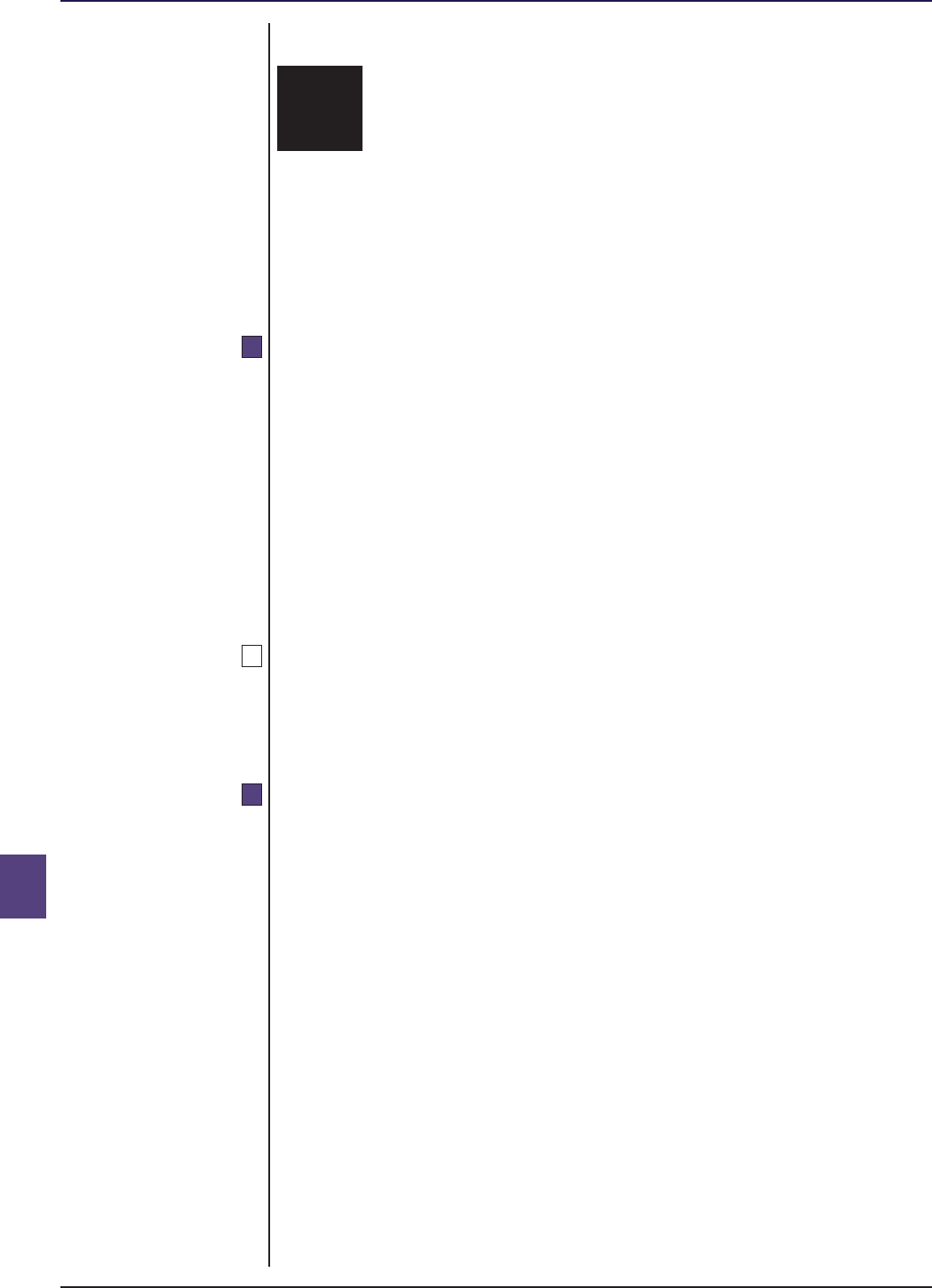
COLL 14 : Charity authorised Section 14.1 : Introduction
investment funds
14
R14.1.1
G14.1.2
R14.1.3
■ Release 39 ● Aug 2024www.handbook.fca.org.ukCOLL 14/2
14.1 Introduction
Application
.....................................................................................................
This chapter applies to:
(1) an authorised fund manager of a charity authorised investment fund;
(2) an ICVC that is a charity authorised investment fund;
(3) the depositary of a charity authorised investment fund; and
(4) the authorised fund manager and the depositary of an authorised
fund that was previously registered as a charity with the Charity
Commission.
Purpose
.....................................................................................................
This chapter sets out modifications to the rules and guidance in this
sourcebook for authorised fund managers and depositaries of charity
authorised investment funds.
Types of charity authorised investment fund
.....................................................................................................
(1) A charity authorised investment fund may be:
(a) a UCITS scheme; or
(b) a non-UCITS retail scheme;
(c) a qualified investor scheme; or
(d) a long-term asset fund.
(2) A charity authorised investment fund may be structured as:
(a) an authorised unit trust (AUT); or
(b) an investment company with variable capital (ICVC); or
(c) an authorised contractual scheme (ACS).

COLL 14 : Charity authorised Section 14.2 : Registration with the Charity
investment funds Commission
14
R14.2.1
R14.2.2
■ Release 39 ● Aug 2024 www.handbook.fca.org.uk COLL 14/3
14.2 Registration with the Charity
Commission
The authorised fund manager of a charity authorised investment fund must
notify the FCA without undue delay when it receives its registration as a
charity from the Charity Commission.
The authorised fund manager and the depositary of an authorised fund that
was previously registered as a charity with the Charity Commission must
notify the FCA without undue delay when it ceases to be registered as a
charity with the Charity Commission.

COLL 14 : Charity authorised Section 14.3 : Advisory committee
investment funds
14
G14.3.1
R14.3.2
R14.3.3
G14.3.4
R14.3.5
■ Release 39 ● Aug 2024www.handbook.fca.org.ukCOLL 14/4
14.3 Advisory committee
A charity authorised investment fund may have an advisory committee which
is independent from the authorised fund manager and the depositary if the
advisory committee has a consultative function only.
If the charity authorised investment fund has an advisory committee the
authorised fund manager must ensure that:
(1) the instrument constituting the fund sets out the role and
responsibilities of the advisory committee; and
(2) the prospectus contains at least the following information about the
advisory committee:
(a) a description of its role and responsibilities;
(b) its membership;
(c) how its members are nominated and how their membership is
terminated; and
(d) how meetings are called and operated, including the quorum.
If the charity authorised investment fund has an advisory committee, the
authorised fund manager must ensure that on the request of the committee,
the scheme’s annual long report includes a statement prepared and
approved by the committee.
The statement may address matters such as:
(1) how the advisory committee is discharging its role and responsibilities
as set out in the instrument constituting the fund;
(2) any observations the committee may have on how the authorised
fund manager has carried out its functions during the annual
accounting period; and
(3) any other matters the committee considers of interest to the
unitholders of the charity authorised investment fund.
(1) The authorised fund manager or depositary must convene a general
meeting of unitholders if it receives a notice from the advisory
committee of a charity authorised investment fund which:

COLL 14 : Charity authorised Section 14.3 : Advisory committee
investment funds
14
R14.3.6
■ Release 39 ● Aug 2024 www.handbook.fca.org.uk COLL 14/5
(a) states the objects of the meeting;
(b) is dated; and
(c) is signed by or on behalf of the advisory committee.
(2) The authorised fund manager or the depositary must ensure the
general meeting of the authorised fund takes place no later than
eight weeks after receipt of the notice in (1).
The authorised fund manager and depositary of a charity authorised
investment fund must keep records of any dealings with an advisory
committee for at least five calendar years.

COLL 14 : Charity authorised Section 14.4 : Income allocation and
investment funds distribution
14
R14.4.1
R14.4.2
R14.4.3
■ Release 39 ● Aug 2024www.handbook.fca.org.ukCOLL 14/6
14.4 Income allocation and distribution
Income reserve account
.....................................................................................................
As an exception to ■ COLL 6.8.3R(3) (Income allocation and distribution), a
charity authorised investment fund is not required to transfer income to a
distribution account where this is allowed by ■ COLL 14.4.2R.
(1) The authorised fund manager and the depositary of a charity
authorised investment fund may establish an income reserve account
for the scheme if this is provided for in:
(a) the instrument constituting the fund; and
(b) the prospectus.
(2) (a) The authorised fund manager may instruct the depositary to
transfer up to 15% of the income available for allocation or
distribution on an annual income allocation date to the income
reserve account.
(b) Any income transferred under (a) remains part of the income
property of the scheme but is not available for allocation or
distribution.
(c) The transfer in (a) must be for the sole purpose of avoiding
fluctuations in the income available for allocation or distribution
for the annual accounting period.
(3) The authorised fund manager may instruct the depositary to transfer
income in the income reserve account to the income account.
(4) The authorised fund manager and the depositary must treat:
(a) any income transferred from the income reserve account to the
income account as income available for allocation or distribution
at the next annual income allocation date; and
(b) any interest or other amounts earned on the income in the
income reserve account as income due to the scheme.
The authorised fund manager of a charity authorised investment fund with
an income reserve account must not allow a payment that has been
allocated to income property in the first instance to be made from the
capital account if that payment could be met, in whole or in part, by
transferring income from the income reserve account to the income account.

COLL 14 : Charity authorised Section 14.4 : Income allocation and
investment funds distribution
14
R14.4.4
R14.4.5
R14.4.6
■ Release 39 ● Aug 2024 www.handbook.fca.org.uk COLL 14/7
(1) ■ COLL 14.4.1R ceases to apply if the scheme commences winding up or
termination in accordance with:
(a) ■ COLL 7.3.6R (Consequences of commencement of winding up or
termination) for an ICVC; or
(b) ■ COLL 7.4.3R (When an AUT is to be wound up or a sub-fund
terminated) for an AUT; or
(c) ■ COLL 7.4A.4R (When an ACS is to be wound up or a sub-fund of
a co-ownership scheme terminated) for an ACS.
(2) Any income in the income reserve account must be transferred to the
income account as soon as practicable after the winding up or
termination commences.
Total return approach
.....................................................................................................
(1) The authorised fund manager and depositary of a charity authorised
investment fund may adopt a total return approach to the allocation
or distribution of income where this is provided for in:
(a) the instrument constituting the fund; and
(b) the prospectus.
(2) Under a total return approach the authorised fund manager may
make transfers between the capital account and the income account
in addition to those in ■ COLL 6.8.3R(3A)(c).
(3) The authorised fund manager and depositary must ensure that any
transfer under a total return approach:
(a) is solely for the purpose of meeting the pre-determined target
amount disclosed in the prospectus in accordance with
■ COLL 14.4.6R(1); and
(b) is consistent with the explanation given in the prospectus in
accordance with ■ COLL 14.4.6R(2).
If the charity authorised investment fund has adopted a total return
approach to the allocation or distribution of income, the authorised fund
manager must ensure that the prospectus contains:
(1) the pre-determined target of the income available for allocation or
distribution in any annual accounting period; and
(2) an explanation of how the target amount is consistent with the
investment objective and policy and the distribution policy of the
scheme.

COLL 14 : Charity authorised Section 14.4 : Income allocation and
investment funds distribution
14
■ Release 39 ● Aug 2024www.handbook.fca.org.ukCOLL 14/8

Collective Investment Schemes
Chapter 15
Long-term asset funds
■ Release 39 ● Aug 2024 www.handbook.fca.org.uk COLL 15/1

COLL 15 : Long-term asset funds Section 15.1 : Introduction
15
R15.1.1
G15.1.2
■ Release 39 ● Aug 2024www.handbook.fca.org.ukCOLL 15/2
15.1 Introduction
Application
.....................................................................................................
(1) This chapter applies to:
(a) an authorised fund manager of an AUT, ACS or an ICVC;
(b) any other director of an ICVC;
(c) the depositary of an AUT, ACS or an ICVC; and
(d) an ICVC,
which is a long-term asset fund.
(2) Where this chapter refers to rules in any other chapter of this
sourcebook, those rules and any relevant guidance should be applied
as if they referred to long-term asset funds.
Purpose
.....................................................................................................
(1) This chapter assists in achieving the statutory objective of securing an
appropriate degree of protection for consumers in respect of
authorised funds that are only intended for investors that are, in
general, prepared to accept a higher degree of risk in their
investments or have a higher degree of experience and expertise than
investors in a UCITS scheme or a non-UCITS retail scheme.
(2) A long-term asset fund is essentially a type of scheme where different
types of permitted asset may be included as part of the scheme
property, depending on the investment objectives and policy of that
scheme and within any restrictions in the rules. The FCA expects the
investment strategy of an LTAF to be to invest at least 50% of the
scheme property of an LTAF in assets that are illiquid and need to be
held over the longer term.
(3) In comparison to qualified investor schemes, long-term asset funds
have greater flexibility in their investment powers. Therefore, to assist
the FCA in achieving the statutory objective of securing an
appropriate degree of protection for consumers, this chapter balances
this additional flexibility by placing other requirements on the
authorised fund managers and depositaries of LTAFs.
(4) This chapter ceases to apply where a long-term asset fund has
converted to be authorised as a UCITS scheme, a non-UCITS retail
scheme or a qualified investor scheme.

COLL 15 : Long-term asset funds Section 15.1 : Introduction
15
R15.1.3
G15.1.4
■ Release 39 ● Aug 2024 www.handbook.fca.org.uk COLL 15/3
Long-term asset funds: eligible investors
.....................................................................................................
(1) Subject to (3), the authorised fund manager of a long-term asset fund
must take reasonable care to ensure that ownership of units in that
scheme is recorded in the register only for a person to whom such
units may be promoted without contravening the rules in
■ COBS 4.12A (Promotion of restricted mass market investments).
(2) In addition to (1), the authorised contractual scheme manager of a
long-term asset fund which is an ACS must take reasonable care to
ensure that ownership of units in that scheme is only recorded in the
register for a person that meets the criteria set out in
■ COLL 15 Annex 1R (ACS Long-term asset funds: eligible investors).
(3) The authorised fund manager will be regarded as complying with (1)
and (2) to the extent that it can show that it was reasonable for it to
rely on relevant information provided by another person.
(4) Where:
(a) the scheme is intended only for limited protection LTAF investors
or the scheme has a limited protection LTAF class; and
(b) ■ COLL 15.5.-10BR to ■ COLL 15.5.-10EG, ■ COLL 15.5.-12BR,
■ COLL 15.7.-12BR, and ■ COLL 15.8.15EG to ■ COLL 15.8.15PR have not
been applied in relation to the scheme or the limited protection
LTAF class,
the authorised fund manager must also take reasonable care to
ensure that ownership of units in the scheme or class is recorded in
the register only for a person who is a limited protection LTAF
investor.
Long-term asset funds - explanation
.....................................................................................................
(1) Long-term asset funds are authorised funds which are subject to a
restriction on promotion. They are intended only for professional
clients and for retail clients who are sophisticated investors, certified
high net worth investors, and those retail clients to whom long-term
asset funds may be promoted without contravening the rules in
■ COBS 4.12A (Promotion of restricted mass market investments).
(2) The authorised contractual scheme manager of a long-term asset
fund which is an ACS must take reasonable care to ensure that it
accepts subscription to units in the LTAF only from a person to whom
such units may be promoted without contravening the rules in
■ COBS 4.12A (Promotion of restricted mass market investments) and
who also meets the criteria in ■ COLL 15 Annex 1R.
(3) (a) Some of the rules in ■ COLL 15 relating to:
(i) alterations to schemes, notices to unitholders and change
events for feeder LTAFs (see ■ COLL 15.5.-10BR to
■ COLL 15.5.-10DR);
(ii) unitholder meetings (see ■ COLL 15.5.-12BR);
(iii) the register (see ■ COLL 15.7.-12BR); and
(iv) payments (■ COLL 15.8.15CR to ■ COLL 15.8.15PR),

COLL 15 : Long-term asset funds Section 15.1 : Introduction
15
G15.1.5
■ Release 39 ● Aug 2024www.handbook.fca.org.ukCOLL 15/4
apply where the scheme or (where applicable) a particular class
of unit is made available to retail clients who are not limited
protection LTAF investors (an LTAF retail class).
(b) These rules may also be applied to a scheme or class that is
intended only for limited protection LTAF investors. Where the
rules are not applied in relation to such a scheme or a class, the
authorised fund manager is required under ■ COLL 15.1.3R(4) to
take reasonable care to ensure that ownership of units in the
scheme or class is recorded in the register only for a person who
is a limited protection LTAF investor.
Application and notification procedures
.....................................................................................................
Details of the application procedures in respect of long-term asset funds are
contained in ■ COLL 2.1 (Authorised fund applications). Further information is
available on the FCA website at www.fca.org.uk/firms/authorised-recognised-
funds/apply-fund-authorisation.

COLL 15 : Long-term asset funds Section 15.2 : Eligibility to act as the
authorised fund manager
15
R15.2.1
R15.2.2
G15.2.3
R15.2.4
■ Release 39 ● Aug 2024 www.handbook.fca.org.uk COLL 15/5
15.2 Eligibility to act as the authorised
fund manager
Application
.....................................................................................................
This section applies to:
(1) the authorised fund manager of an AUT, ACS or an ICVC;
(2) any other director of an ICVC;
(3) the depositary of an AUT, ACS or an ICVC; and
(4) an ICVC,
which is a long-term asset fund.
Authorised fund manager to be a full-scope UK AIFM
.....................................................................................................
The authorised fund manager of a long-term asset fund must be a full-scope
UK AIFM.
(1) To ensure an appropriate degree of consumer protection, only a full-
scope UK AIFM is able to act as the authorised fund manager for an
LTAF.
(2) Full-scope UK AIFMs that manage authorised AIFs are subject to the
requirements of both COLL and FUND, and must also comply with any
other applicable provisions of the UK AIFM regime, including the
AIFMD level 2 regulation and the AIFMD UK regulation. Small
authorised UK AIFMs are subject to a more limited set of rules and
requirements.
Competence and resources of the authorised fund manager
.....................................................................................................
(1) The authorised fund manager of a long-term asset fund must, having
regard to the investment objectives, policy and strategy of the LTAF:
(a) possess the knowledge, skills and experience necessary to
understand the activities of the LTAF and, in particular, the risks
involved in those activities and the assets which the LTAF holds
(or is to hold) in the scheme property; and
(b) employ sufficient personnel with the skills, knowledge and
expertise necessary for discharging the responsibilities allocated
to them.

COLL 15 : Long-term asset funds Section 15.2 : Eligibility to act as the
authorised fund manager
15
R15.2.5
R15.2.6
■ Release 39 ● Aug 2024www.handbook.fca.org.ukCOLL 15/6
(2) The authorised fund manager may not rely on a delegation or
outsourcing arrangement to satisfy (1).
The authorised fund manager of a long-term asset fund must at all times be
able to demonstrate to the FCA that it complies with ■ COLL 15.2.4R.
[Note: Article 22 of the AIFMD level 2 regulation.]
Appointment of external valuer or authorised fund manager
with knowledge, skills and experience of valuing long-term
assets
.....................................................................................................
(1) The authorised fund manager of a long-term asset fund must appoint
an external valuer to perform the valuation function for the LTAF, but
this is subject to (2) and (5).
(2) The authorised fund manager need not appoint an external valuer
under (1) if:
(a) the authorised fund manager possesses the knowledge, skills and
experience necessary to be able to carry out a proper and
independent valuation of the assets and types of assets which the
long-term asset fund holds or is to hold (see ■ FUND 3.9.4R); and
(b) the depositary of the long-term asset fund, having made an
assessment of the matters in (a), has determined that the
authorised fund manager has the resources and procedures for
carrying out a valuation of those assets in accordance with the
applicable law, the instrument constituting the fund and
■ FUND 3.9 (Valuation).
(3) The depositary must:
(a) review its determination under (2)(b):
(i) regularly, and in any event at least annually; and
(ii) whenever the depositary becomes aware of any
circumstances which could affect the determination;
(b) for a period of six years, keep a written record of its
determination under (2)(b) and any review under (3)(a), and the
reasons for the assessment; and
(c) provide the FCA with a copy of the written record on request.
(4) Where the authorised fund manager performs the valuation function
itself in accordance with (2), the authorised fund manager may
appoint, as applicable:
(a) for the purpose of valuing immovables in accordance with
■ COLL 15.6.18R (Investment in property), an appropriate valuer;
(b) for the purpose of valuing immovables in accordance with
■ COLL 15.6.22R (Standing independent valuer and valuation), a
standing independent valuer;
(c) for the purpose of valuing an asset other than an immovable or
property, a delegate appointed in accordance with ■ FUND 3.10
(Delegation) and the relevant provisions of section 8 (Delegation
of AIFM functions) of Chapter III of the AIFMD level 2 regulation.

COLL 15 : Long-term asset funds Section 15.2 : Eligibility to act as the
authorised fund manager
15
G15.2.7
R15.2.8
G15.2.9
■ Release 39 ● Aug 2024 www.handbook.fca.org.uk COLL 15/7
(5) The authorised fund manager need not appoint an external valuer
under (1) if:
(a) the scheme property of the long-term asset fund is constituted
solely of units or shares in other collective investment schemes or
AIFs; and
(b) an external valuer performs the valuation function of each such
collective investment scheme or AIF.
[Note: ■ FUND 3.9 (Valuation), ■ FUND 3.10 (Delegation), ■ FUND 3.11.25R
(Depositary functions: oversight), article 19(5) of AIFMD, and articles 67 to 74
(Valuation) and article 94(4) (Duties regarding the valuation of shares/units)
of the AIFMD level 2 regulation.]
Where an authorised fund manager appoints an external valuer under
■ COLL 15.2.6R(1) certain additional requirements apply. For example,
■ FUND 3.9.7R(3) (Performance of the valuation function) sets certain
conditions relating to the independence of the external valuer, and the
authorised fund manager will also need to be able to demonstrate the
matters set out in ■ FUND 3.9.9R (Appointment of external valuer). The AIFMD
level 2 regulation contains further requirements that apply to the authorised
fund manager where an external valuer is used. Certain requirements also
apply to the external valuer and the depositary of an LTAF with an external
valuer.
[Note: Articles 67 to 74 and article 94(4) of the AIFMD level 2 regulation.]
The governing body of the authorised fund manager of a long-term asset
fund must:
(1) possess the collective knowledge, skills and experience to be able to
understand the authorised fund manager’s activities, in particular, the
main risks involved in those activities and the assets in which the
long-term asset fund is invested;
(2) have members that commit sufficient time to properly perform their
functions in the authorised fund manager; and
(3) have members that act with honesty, integrity and independence of
mind.
[Note: Article 21 of the AIFMD level 2 regulation.]
(1) In order to establish whether an authorised fund manager of a long-
term asset fund conducts its activities honestly, fairly and with due
skills, the FCA is required to assess various matters, including those set
out in articles 21 and 22 of the AIFMD level 2 regulation. In addition,
under ■ COLL 15.2.4R, the authorised fund manager must possess the
knowledge, skills and experience necessary to understand the
activities of the LTAF and, in particular, the risks involved in those
activities and the assets which the LTAF holds (or is to hold) in the
scheme property without relying on delegation arrangements to
satisfy the requirement.
(2) The authorised fund manager of a long-term asset fund is subject to
various other requirements relating to its governance arrangements;

COLL 15 : Long-term asset funds Section 15.2 : Eligibility to act as the
authorised fund manager
15
■ Release 39 ● Aug 2024www.handbook.fca.org.ukCOLL 15/8
its organisational structure; the skills, knowledge, expertise and
competence of those it employs; and its obligation to act honestly,
fairly and with due skill, care and diligence. See for example the rules
in ■ SYSC 4 (General organisational requirements), ■ SYSC 5
(Employees, agents and other relevant persons) and ■ COBS 2.1 (Acting
honestly, fairly and professionally).
(3) The authorised fund manager of a long-term asset fund should also
note the organisational requirements set out in the AIFMD level 2
regulation; for example, article 57 (General requirements).
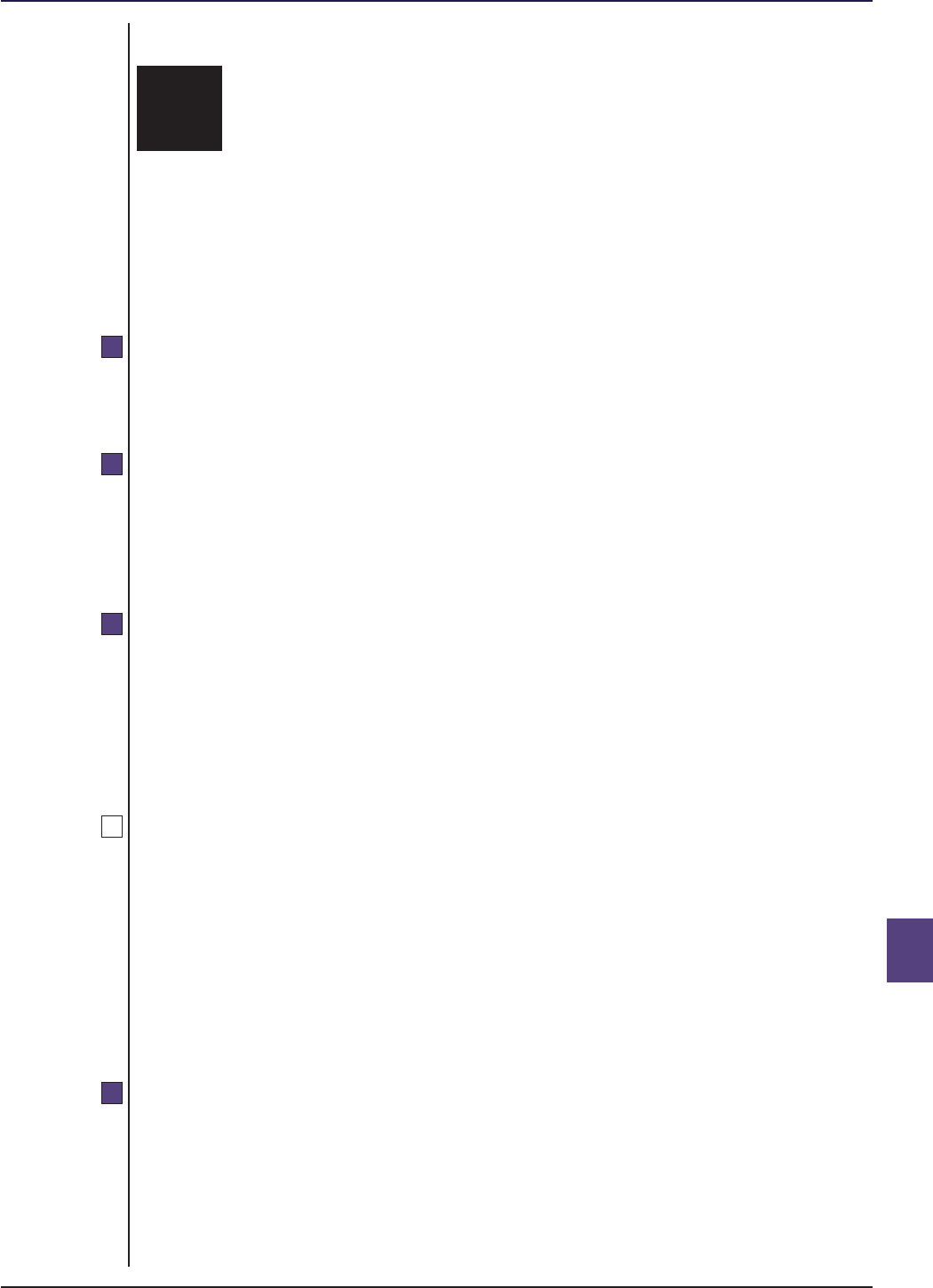
COLL 15 : Long-term asset funds Section 15.3 : Constitution
15
R15.3.1
R15.3.2
R15.3.3
G15.3.4
R15.3.5
■ Release 39 ● Aug 2024 www.handbook.fca.org.uk COLL 15/9
15.3 Constitution
Application
.....................................................................................................
This section applies to an authorised fund manager of a long-term asset
fund.
Classes of unit
.....................................................................................................
A long-term asset fund may issue such classes of unit as are set out in the
instrument constituting the fund, provided the rights of any class are not
unfairly prejudicial as against the interests of the unitholders of any other
class of units in that scheme.
Names of schemes, sub-funds, and classes of units
.....................................................................................................
(1) The authorised fund manager must ensure that the name of the
scheme, a sub-fund or a class of unit is not undesirable or misleading.
(2) The authorised fund manager of a long-term asset fund must include
the term ‘long-term asset fund’ or ‘LTAF’ in the name of the scheme
and in relation to any sub-fund which is also a long-term asset fund.
Undesirable and misleading names
.....................................................................................................
(1) ■ COLL 6.9.6G (Undesirable and misleading names) contains guidance
as to names which may be undesirable or misleading.
(2) The term ‘Long-Term Asset Fund’ or ‘LTAF’ is reserved for a long-term
asset fund whose authorised fund manager operates, or proposes to
operate, it in accordance with the rules in this chapter.
(3) Only AIFs that are authorised in accordance with the LTIF Regulation
may use the designation ‘LTIF’ or ‘long-term investment fund’.
Instrument constituting the fund
.....................................................................................................
(1) The statements and provisions required by ■ COLL 15.3.6R must be
included in the instrument constituting the fund of a long-term asset
fund.
(2) The instrument constituting the fund must not contain any provision
that conflicts with any applicable rule.

COLL 15 : Long-term asset funds Section 15.3 : Constitution
15
R15.3.6
■ Release 39 ● Aug 2024www.handbook.fca.org.ukCOLL 15/10
Table: contents of the instrument constituting the fund
.....................................................................................................
This table belongs to ■ COLL 15.3.5R.
1 Description of the authorised fund
Information detailing:
(1) the name of the authorised fund;
(2) that the authorised fund is a long-term asset fund;
(3) in the case of an ICVC, whether the head office of the company is
situated in England and Wales, Wales, Scotland or Northern
Ireland.
2 Property Authorised Investment Funds
For a property authorised investment fund, a statement that:
(1) it is a property authorised investment fund;
(2) no body corporate may seek to obtain or intentionally maintain a
holding of more than 10% of the net asset value of the scheme;
and
(3) in the event that the authorised fund manager reasonably con-
siders that a body corporate holds more than 10% of the net asset
value of the scheme, the authorised fund manager is entitled to de-
lay any redemption or cancellation of units in accordance with 8 if
the authorised fund manager reasonably considers such action to
be:
(a) necessary in order to enable an orderly reduction of the hold-
ing to below 10%; and
(b) in the interests of the unitholders as a whole.
3 Constitution
The following statements:
(1) the scheme property of the scheme is entrusted to a depositary for
safekeeping (subject to any exception permitted by the rules);
(2) if relevant, the duration of the scheme is limited and, if so, for
how long;
(3) charges and expenses of the scheme may be taken out of scheme
property;
(4) for an ICVC:
(a) what the maximum and minimum sizes of the scheme’s capital
are; and
(b) the unitholders are not liable for the debts of the company;
(5) for an ICVC which is an umbrella, a statement that the assets of a
sub-fund belong exclusively to that sub-fund and shall not be used
to discharge directly or indirectly the liabilities of, or claims
against, any other person or body, including the umbrella, or any
other sub-fund, and shall not be available for any such purpose;
(6) for a co-ownership scheme which is an umbrella, the property sub-
ject to a sub-fund is beneficially owned by the participants in that
sub-fund as tenants in common (or, in Scotland, is the common
property of the participants in that sub-fund) and must not be
used to discharge any liabilities of, or meet any claims against, any
person other than the participants in that sub-fund;
(7) for a limited partnership scheme, that the scheme prohibits poo-
ling as is mentioned in section 235(3)(a) of the Act in relation to
separate parts of the scheme property, with the effect that the
scheme cannot be an umbrella;

COLL 15 : Long-term asset funds Section 15.3 : Constitution
15
■ Release 39 ● Aug 2024 www.handbook.fca.org.uk COLL 15/11
(8) for an AUT:
(a) the trust deed:
(i) is made under and governed by the law of England and
Wales, or the law of Scotland or the law of Northern
Ireland;
(ii) is binding on each unitholder as if that person had been
a party to it, and that the unitholder is bound by its provi-
sions; and
(iii) authorises and requires the trustee and the manager to
do the things required or permitted of them by its terms;
(b) subject to the provisions of the trust deed and all the rules
made under section 247 of the Act (Trust scheme rules):
(i) the scheme property (other than sums held to the credit
of the distribution account) is held by the trustee on trust
for the unitholders according to the number of units held
by each unitholder or, where relevant, according to the
number of individual shares in the scheme property rep-
resented by the units held by each unitholder; and
(ii) the sums standing to the credit of any distribution ac-
count are held by the trustee on trust to distribute or ap-
ply them in accordance with COLL 15.8.18R (Income);
(c) a unitholder is not liable to make any further payment after
having paid the price of the units held, and that no further li-
ability can be imposed on the unitholder in respect of those
units; and
(d) payments to the trustee by way of remuneration are au-
thorised to be paid (in whole or in part) out of the scheme
property; and
(9) for an ACS:
(a) the contractual scheme deed:
(i) is made under and governed by the law of England and
Wales, or the law of Scotland or the law of Northern
Ireland;
(ii) is binding on each unitholder as if that person had been
a party to it, and that the unitholder is bound by its
provisions;
(iii) authorises and requires the depositary and the authorised
contractual scheme manager to do the things required or
permitted of them by its terms; and
(iv) states that units may not be issued to a person other than
a person:
(A) who is a:
(i) professional ACS investor; or
(ii) large ACS investor; or
(iii) person who already holds units in the scheme;
and
(B) to whom units in a long-term asset fund may be pro-
moted without contravening the rules in COBS 4.12A
(Promotion of restricted mass market investments);
(v) states that the authorised contractual scheme manager of
an ACS must redeem units as soon as practicable after be-
coming aware that those units are vested in anyone

COLL 15 : Long-term asset funds Section 15.3 : Constitution
15
■ Release 39 ● Aug 2024www.handbook.fca.org.ukCOLL 15/12
(whether as a result of subscription or transfer of units)
other than a person meeting the criteria in (iv)(A) and (B);
(vi) states that for a co-ownership scheme:
(A) the scheme property is beneficially owned by the
participants as tenants in common (or, in Scotland, is
the common property of the participants);
(B) the arrangements constituting the scheme are inten-
ded to constitute a co-ownership scheme as defined
in section 235A(2) of the Act; and
(C) the operator and depositary are required to wind up
the scheme if directed to do so by the FCA in exer-
cise of its power under section 261X (Directions) of
the Act;
(vii) states:
(A) whether the transfer of units in the ACS scheme or,
for a co-ownership scheme which is an umbrella
(sub-funds of which pursue differing policies in rela-
tion to transfer of units), in each particular sub-
fund, is either:
(i) prohibited; or
(ii) allowed;
(B) where a transfer of units is allowed by the scheme
or, where appropriate the sub-fund, in accordance
with (A)(ii), units may only be transferred in accord-
ance with the conditions specified by FCA rules, in-
cluding that units may not be transferred to a per-
son other than a person:
(i) who is a:
(1) professional ACS investor; or
(2) large ACS investor; or
(3) person who already holds units in the
scheme; and
(ii) to whom units in a long-term asset fund may
be promoted without contravening the rules
in COBS 4.12A (Promotion of restricted mass
market investments); and
(viii) states that for a limited partnership scheme, the scheme is
not dissolved on any person ceasing to be a limited part-
ner or nominated partner provided that there remains at
least one limited partner;
(b) subject to the provisions of the contractual scheme deed and
all the rules made under section 261I of the Act (Contractual
scheme rules) and for the time being in force:
(i) the scheme property (other than sums standing to the
credit of the distribution account) is held by, or to the or-
der of, the depositary for and on behalf of the unithold-
ers according to the number of units held by each unit-
holder or, where relevant, according to the number of in-
dividual shares in the scheme property represented by the
units held by each unitholder; and
(ii) the sums standing to the credit of any distribution ac-
count are held by the depositary to distribute or apply
them in accordance with COLL 15.8.18R (Income); and

COLL 15 : Long-term asset funds Section 15.3 : Constitution
15
■ Release 39 ● Aug 2024 www.handbook.fca.org.uk COLL 15/13
(c) a unitholder in a co-ownership scheme is not liable to make
any further payment after having paid the price of the units
held, and that no further liability can be imposed on the unit-
holder in respect of those units;
(d) a unitholder in a limited partnership scheme is not liable for
the debts or obligations of the limited partnership scheme bey-
ond the amount of the scheme property which is available to
the authorised contractual scheme manager to meet such
debts or obligations, provided that the unitholder does not
take part in the management of the partnership business;
(e) the exercise of rights conferred on limited partners by FCA
rules does not constitute taking part in the management of
the partnership business;
(f) the limited partners, other than the nominated partner, are to
be the participants in the scheme; and
(g) the operator of a co-ownership scheme is authorised to:
(i) acquire, manage and dispose of the scheme property; and
(ii) enter into contracts which are binding on unitholders for
the purposes of, or in connection with, the acquisition,
management or disposal of scheme property.
4 Investment objectives
A statement of the object of the scheme, in particular the types of in-
vestments and assets in which it and each sub-fund (where applicable)
may invest and that the object of the scheme is to invest in property of
that kind with the aim of spreading investment risk.
5 Units in the scheme
A statement of:
(1) the classes of units which the scheme may issue, indicating, for a
scheme which is an umbrella, which class or classes may be issued
in respect of each sub-fund; and
(2) the rights attaching to units of each class (including any provisions
for the expression in two denominations of such rights).
6 Limitation on issue of and redemption of units
(1) Details as to:
(a) the provisions relating to any restrictions on the right to re-
deem units in any class; and
(b) the circumstances in which the issue of the units of any particu-
lar class may be limited.
(2) A statement setting out the dealing frequency for sales and re-
demptions of units in the scheme, and the applicable notice period
for redemptions.
(3) Where COLL 15.1.3R(4) (Long-term asset funds: eligible investors) ap-
plies, a statement that the authorised fund manager must take
reasonable care to ensure that ownership of units in the scheme or
a relevant class is recorded in the register only for a person who is
a limited protection LTAF investor.
7 Income and distribution
Details of the person responsible for the calculation, transfer, allocation
and distribution of income for any class of unit in issue during the ac-
counting period.
8 Redemption or cancellation of units on breach of law or rules
A statement that where any holding of units by a unitholder is (or is
reasonably considered by the authorised fund manager to be) an in-

COLL 15 : Long-term asset funds Section 15.3 : Constitution
15
R15.3.7
■ Release 39 ● Aug 2024www.handbook.fca.org.ukCOLL 15/14
fringement of any law, governmental regulation or rule, those units
must be redeemed or cancelled.
9 Base currency
A statement of the base currency of the scheme.
10 Meetings
Details of the procedures for the convening of meetings and the pro-
cedures relating to resolutions, voting and the voting rights for un-
itholders.
11 Powers and duties of the authorised fund manager and depositary
Where relevant, details of any function to be undertaken by the au-
thorised fund manager and depositary which the rules in COLL require
to be stated in the instrument constituting the fund.
12 Termination and suspension
Details of:
(1) the grounds under which the authorised fund manager may initi-
ate a suspension of the scheme and any associated procedures; and
(2) the methodology for determining the rights of unitholders to parti-
cipate in the scheme property on winding up.
13 Investment in overseas property through an intermediate holding
vehicle
If investment in an overseas immovable is to be made through an inter-
mediate holding vehicle or a series of intermediate holding vehicles, a
statement that the purpose of that intermediate holding vehicle or
series of intermediate holding vehicles will be to enable the holding of
overseas immovables by the scheme.
14 Other relevant matters
Details of those matters which enable the scheme, authorised fund
manager or depositary to obtain any privilege or power conferred by
the rules in COLL which is not otherwise provided for in the instrument
constituting the fund.
Limited issue
.....................................................................................................
Units whose issue may be limited can only be issued if permitted by the
instrument constituting the fund, under the conditions set out in the
prospectus and provided that this will not materially prejudice any existing
unitholders in the scheme.

COLL 15 : Long-term asset funds Section 15.4 : Prospectus and other pre-sale
notifications
15
R15.4.1
R15.4.2
■ Release 39 ● Aug 2024 www.handbook.fca.org.uk COLL 15/15
15.4 Prospectus and other pre-sale
notifications
Application
.....................................................................................................
This section applies to:
(1) the authorised fund manager of an AUT, ACS or an ICVC; and
(2) an ICVC,
which is a long-term asset fund.
Drawing up and availability of a prospectus
.....................................................................................................
(1) An authorised fund manager must ensure that a prospectus of a long-
term asset fund is drawn up which contains:
(a) the information specified in ■ COLL 15.4.5R (Table: contents of
long-term asset fund prospectus);
(b) the information for investors required by ■ FUND 3.2.2R and
■ FUND 3.2.3R (Prior disclosure of information to investors); and
(c) the information for investors required by ■ FUND 3.2.5R and
■ FUND 3.2.6R (Periodic disclosure), unless the up-to-date
information has been published in the scheme’s most recent
annual report or half-yearly report.
(2) An authorised fund manager must:
(a) revise the prospectus immediately upon the occurrence of any
materially significant change in the information required to be
stated within it;
(b) include the date of any revision in a prominent manner in the
revised prospectus;
(c) send a copy of the original and any revised prospectus to the
FCA; and
(d) review the prospectus periodically and revise it to take account of
any significant change or new matter.
(3) The prospectus must not contain any provision which is unfairly
prejudicial to the interests of unitholders generally or to the
unitholders of any class of units.
(4) The authorised fund manager must ensure that the prospectus does
not contain any provision that conflicts with any applicable rule.

COLL 15 : Long-term asset funds Section 15.4 : Prospectus and other pre-sale
notifications
15
G15.4.3
R15.4.4
R15.4.5
■ Release 39 ● Aug 2024www.handbook.fca.org.ukCOLL 15/16
(5) An ICVC or the authorised fund manager of an AUT or ACS must
offer a copy of the scheme’s most recent prospectus free of charge to
any person eligible to invest in a long-term asset fund, prior to the
purchase of any units.
(1) The information specified in ■ COLL 15.4.5R (Table: contents of long-
term asset fund prospectus) includes the provisions specified in
■ FUND 3.2.2R(1) to ■ 3.2.2R(12) and ■ 3.2.2R(16), as well as certain
additional pieces of information. A ‘Note’ indicates whether the
information is derived from ■ FUND 3.2.2R.
(2) The authorised fund manager of an LTAF will also need to comply
with ■ FUND 3.2.2R by providing investors with the information
specified in ■ FUND 3.2.2R(13) to ■ 3.2.2R(15) and ■ 3.2.2R(17).
False or misleading prospectus
.....................................................................................................
The authorised fund manager must ensure that the prospectus does not
contain any untrue or misleading statement or omit any matter required by
the rules in this sourcebook to be included in it.
Table: contents of a long-term asset fund prospectus
.....................................................................................................
This table belongs to ■ COLL 15.4.2R.
1 Document status
A statement that this document is the prospectus of the authorised
fund valid as at a particular date which shall be the date of the
document.
2 Description of the authorised fund
Information detailing:
(1) the name of the authorised fund;
(2) its FCA product reference number (PRN);
(3) that the authorised fund is either an ICVC, ACS or an AUT;
(4) that the scheme is a long-term asset fund;
(5) where relevant, that the shareholders in an ICVC are not liable for
the debts of the authorised fund;
(6) where relevant, the address of the ICVC’s head office and the ad-
dress in the United Kingdom for service on the ICVC of documents
required or authorised to be served on it;
(7) the effective date of the authorisation order made by the FCA
and, if the duration of the authorised fund is not unlimited, when
it will or may terminate;
(8) the base currency for the authorised fund;
(9) where relevant, the maximum and minimum sizes of the ICVC’s
capital;
(10) for an ACS that is a limited partnership scheme, the address of the
proposed principal place of business of the limited partnership
scheme; and
(11) a description of the other main legal implications of the contrac-
tual relationship entered into for the purpose of investment, in-
cluding information on jurisdiction, the applicable law and the ex

COLL 15 : Long-term asset funds Section 15.4 : Prospectus and other pre-sale
notifications
15
■ Release 39 ● Aug 2024 www.handbook.fca.org.uk COLL 15/17
istence or absence of any legal instruments providing for the re-
cognition and enforcement of judgments.
[Note: FUND 3.2.2R(3).]
3 Investment objectives, policy and strategy
The following particulars, which must be set out fairly, clearly and in
plain language:
(1) Information to enable a unitholder to ascertain:
(a) the investment objectives of the authorised fund;
(b) the authorised fund’s investment policy for achiev-
ing those investment objectives, including:
(i) the general nature of the portfolio and any in-
tended specialisation;
(ii) the policy for providing a prudent spread of risk
in the scheme property; and
(iii) the policy in relation to the exercise of powers
to borrow cash and use leverage, including:
(A) the purposes for which cash borrowing
and leverage may be used;
(B) the nature of the cash borrowing, includ-
ing whether it is short- or long-term, tem-
porary or otherwise;
(C) the types and sources of leverage permit-
ted and the associated risks;
(D) any restrictions on the use of leverage and
any collateral and asset reuse ar-
rangements;
(E) the maximum level of leverage which the
authorised fund manager is entitled to em-
ploy on behalf of the LTAF;
(F) an explanation of how and why that is
compatible with the objectives of the
LTAF;
(c) whether there are any restrictions in the assets
which may be held in the scheme property; and
(d) the extent (if any) to which that investment policy
does not envisage remaining fully invested at all
times.
(2) A description of the investment strategy of the long-term asset
fund which must comply with COLL 15.6.6R (Long-term asset funds:
investment strategy).
[Note: FUND 3.2.2R(1)(a), FUND 3.2.2R(1)(f) and FUND 3.2.2R(1)(g) to
3.2.2R(1)(j).]
4 Feeder LTAFs
If the LTAF is a feeder LTAF:
(1) the name and (where applicable) the FCA product reference num-
ber (PRN) of the qualifying master LTAF;
(2) the country or territory where the qualifying master LTAF is estab-
lished; and
(3) the following details of the qualifying master LTAF:
(a) its investment objective, policy and strategy, includ-
ing its risk profile;

COLL 15 : Long-term asset funds Section 15.4 : Prospectus and other pre-sale
notifications
15
■ Release 39 ● Aug 2024www.handbook.fca.org.ukCOLL 15/18
(b) the minimum and (if relevant) maximum investment
that the feeder LTAF may make in it;
(c) how copies of its prospectus may be obtained;
(d) how the unitholders of the feeder LTAF may obtain
further information about it; and
(e) a description of all remuneration or reimbursement
of costs payable by the feeder LTAF by virtue of its
investment in units of the qualifying master LTAF, as
well as the aggregate charges of the two schemes.
[Note: FUND 3.2.2R(1)(b).]
5 Fund of funds
If the LTAF is a fund of funds, information on where the underlying
funds are established.
[Note: FUND 3.2.2R(1)(c).]
6 Assets in which the LTAF may invest
A description of the types of assets in which the LTAF may invest, includ-
ing, where relevant:
(1) for investment in immovables:
(a) the countries or territories in which the authorised
fund may invest in immovables;
(b) the authorised fund manager’s policy in relation to
insuring any immovables which form part of the
scheme property; and
(c) the policy of the authorised fund manager in rela-
tion to the granting of options over immovables in
the scheme property and the purchase of options
on immovables.
(2) if intended, whether the scheme property may consist of units in
collective investment schemes (“second schemes”) which are man-
aged by or operated by the authorised fund manager or by one of
its associates and a statement as to:
(a) the basis of the maximum amount of the charges in
respect of transactions in a second scheme; and
(b) the extent to which any such charges will be reim-
bursed to the scheme;
(3) if intended, whether the scheme may enter into stock lending ar-
rangements and repo contracts and, if so, what procedures will op-
erate and what collateral will be required.
[Note: FUND 3.2.2R(1)(d).]
7 Investment techniques and associated risks
At least the following information, which must be set out fairly, clearly
and in plain language, about the investment techniques that the au-
thorised fund manager may employ and all associated risks, including:
(1) having regard to the investment strategy of the long-term asset
fund and the type of assets in which the scheme may invest, an ex-
planation of the risks associated with the scheme investing in
those assets and how those risks might crystallise;
(2) any other risks for unitholders investing in the long-term asset
fund;
(3) a description of the tools and arrangements the authorised fund
manager would propose using, including those required by rules,
to mitigate the risks referred to in (1) and (2); and

COLL 15 : Long-term asset funds Section 15.4 : Prospectus and other pre-sale
notifications
15
■ Release 39 ● Aug 2024 www.handbook.fca.org.uk COLL 15/19
(4) an explanation of the circumstances in which those tools and ar-
rangements would typically be deployed and the likely con-
sequences for investors.
[Note: FUND 3.2.2R(1)(e).]
8 Procedures to change of strategy or policy
A description of the procedures by which the authorised fund manager
of the LTAF may change its investment objective and policy or its invest-
ment strategy, or both.
[Note: FUND 3.2.2R(2).]
9 Classes of units
Information as to:
(1) the names of the classes of units in issue or available for issue and
the rights attached to them in so far as they vary from the rights
attached to other classes;
(2) how unitholders may exercise their voting rights and what these
are; and
(3) the circumstances where a mandatory redemption, cancellation or
conversion of units from one class to another may be required.
[Note: FUND 3.2.2R(3), (8), (9), (11) and (12).]
10 Identity and duties of the authorised fund manager, depositary, aud-
itor and other service providers, and investors’ rights
(1) The following particulars of the authorised fund manager:
(a) its name and the nature of its corporate form;
(b) the country or territory of its incorporation;
(c) the date of its incorporation and if the duration of
its corporate status is limited, when that status will
or may cease;
(d) if it is a subsidiary, the name of its ultimate holding
company and the country or territory in which that
holding company is incorporated;
(e) the address of its registered office, its head office,
and, if different, the address of its principal place of
business in the United Kingdom;
(f) the amount of its issued share capital and how
much of it is paid up;
(g) for an ICVC, a summary of the material provisions
of the contract between the ICVC and the au-
thorised fund manager which may be relevant to
unitholders including provisions (if any) relating to
termination, compensation on termination and
indemnity;
(h) the names of the directors of the authorised fund
manager; and
(i) a description of the duties of the authorised fund
manager.
(2) Where the LTAF is an ICVC, other than for the ACD:
(a) the names and positions in the ICVC of the dir-
ectors; and
(b) the manner, amount and calculation of the remu-
neration of the directors.
(3) The following particulars of the depositary

COLL 15 : Long-term asset funds Section 15.4 : Prospectus and other pre-sale
notifications
15
■ Release 39 ● Aug 2024www.handbook.fca.org.ukCOLL 15/20
(a) its name and the nature of its corporate form;
(b) the country or territory of its incorporation;
(c) the address of its registered office and the address
of its head office if that is different from the ad-
dress of its registered office;
(d) if neither its registered office nor its head office is
in the United Kingdom, the address of its principal
place of business in the United Kingdom; and
(e) a description of the duties of the depositary.
(4) If an investment adviser or any other person is retained to provide
services in connection with the business of the authorised fund:
(a) the name of the person;
(b) whether or not the person is authorised by the FCA;
and
(c) a description of the duties of the person.
(5) The name of the auditor of the authorised fund and a description
of the duties of the auditor.
[Note: FUND 3.2.2R(4).]
11 Professional liability
A description of how the authorised fund manager complies with the
requirements referred to in IPRU-INV 11.3.11G (Professional negligence)
relating to professional liability risk.
[Note: FUND 3.2.2R(5).]
12 Delegation arrangements
To the extent not covered by (10), a description of:
(1) any AIFM management function delegated by the authorised fund
manager;
(2) any safe-keeping function delegated by the depositary;
(3) the identity of each delegate appointed under FUND 3.10 (Delega-
tion); and
(4) any conflicts of interest that may arise from such delegation.
[Note: FUND 3.2.2R(6).]
13 Valuation of scheme property and due diligence
(1) A statement setting out whether the valuation function is per-
formed by an external valuer or the authorised fund manager
and:
(a) where an external valuer is used to perform the
valuation function, an explanation of how that per-
son meets the requirements set out in FUND 3.9.7R(3)
(Performance of the valuation function) and the rel-
evant requirements in articles 67 to 74 of the
AIFMD level 2 regulation, and how the authorised
fund manager is able to demonstrate the matters
specified in FUND 3.9.9R (Appointment of an external
valuer) and FUND 3.10.2R(2)(f) (General delegation re-
quirements); or
(b) where the authorised fund manager performs the
valuation function itself, details of the depositary’s
determination of the matters referred to in COLL
15.2.6R(2) (Appointment of external valuer or au-
thorised fund manager with knowledge, skills and
experience of valuing long-term assets).

COLL 15 : Long-term asset funds Section 15.4 : Prospectus and other pre-sale
notifications
15
■ Release 39 ● Aug 2024 www.handbook.fca.org.uk COLL 15/21
2 A description of the valuation procedure and of the pricing meth-
odology for valuing assets, including the methods used in valuing
hard-to-value assets, in line with FUND 3.9 (Valuation), and details
as to:
(a) how frequently and at what times of the day the
scheme property will be regularly valued to deter-
mine the price at which units in the scheme may be
purchased from or redeemed by the authorised
fund manager and a description of any circum-
stance where the scheme property may be specially
valued;
(b) in relation to each purpose for which the scheme
property must be valued and each category of asset
held in the scheme property, the basis on which it
will be valued, identifying any codes of good prac-
tice used by the external valuer (where relevant) or
the authorised fund manager; and
(c) how the price of units of each class will be deter-
mined, including a statement that a forward price
basis is to be applied.
(3) Details as to:
(a) the authorised fund manager’s policies and proced-
ures in relation to the selection and ongoing mon-
itoring of investments (see article 18(2) of the
AIFMD level 2 regulation);
(b) the arrangements for ensuring that investment de-
cisions on behalf of the long-term asset fund are
carried out in compliance with the objectives and
the investment strategy of the scheme (see article
18(3) of the AIFMD level 2 regulation);
(c) how the authorised fund manager will carry out
due diligence in line with good market practice.
[Note: FUND 3.2.2R(7).]
[Note 2: Articles 67 to 71 of the AIFMD level 2 regulation contain de-
tailed requirements relating to the valuation of assets by full-scope UK
AIFMs. Articles 18 and 19 of the AIFMD level 2 regulation also contain
detailed requirements relating to the due diligence obligations of full-
scope UK AIFMs.]
14 Fees, charges and expenses
A description of all fees, charges and expenses, including:
(1) the maximum amounts directly or indirectly borne by investors;
(2) the payments that may be made out of the scheme property to
any person whether by way of remuneration for services, reim-
bursement of expense, or charge or other payment and for each
category of remuneration, expense, charge or payment the follow-
ing should be specified:
(a) (i) the person to whom the remuneration, charge, ex-
pense or payment is payable or made;
(ii) what that payment is for;
(iii) the current rates or amounts of such remuneration,
charge, expense or payment;
(iv) how the remuneration, charge, expense or pay-
ment will be calculated;
(v) when it will be paid;

COLL 15 : Long-term asset funds Section 15.4 : Prospectus and other pre-sale
notifications
15
■ Release 39 ● Aug 2024www.handbook.fca.org.ukCOLL 15/22
(vi) where a performance fee is taken, whether by the
authorised fund manager or any other person pro-
viding services to the authorised fund manager or
the long-term asset fund in relation to the opera-
tion of the scheme, examples of how the perform-
ance fee works in plain English and the maximum
it can amount to; and
(vii) where donations are to be made to one or more re-
gistered charities for Sharia compliance purposes
from the income property of the scheme (in this
rule, ‘purification’), in addition to the details re-
quired above, the person who advises the au-
thorised fund manager on the required percentage
of the income property recognised for purification;
(b) if notice has been given to unitholders of the au-
thorised fund manager’s intention to:
(i) introduce a new category of remuneration for its
services;
(ii) increase the basis of any current charge; or
(iii) change the basis of the treatment of a payment
from the capital property set out in COLL 15.8.15JR
(Allocation of payments to income or capital) and
COLL 15.8.15QR(2) (Payments: limited protection LTAF
classes) (as applicable),
particulars of that introduction or increase and when it
will take place; and
(c) if, in accordance with COLL 15.8.15JR (Allocation of pay-
ments to income or capital) and COLL 15.8.15QR(2) (Pay-
ments: limited protection LTAF classes) (as applicable),
all or part of the remuneration or expense are to be
treated as a capital charge:
(i) that fact; and
(ii) the basis of the charge which may be so treated;
and
(3) if the authorised fund manager makes any charges on sale or re-
demption of units, details of the charging structure and how no-
tice will be provided to unitholders of any increase.
[Note: FUND 3.2.2R(9).]
[Note 2: Annex VI of the onshored Commission Delegated Regulation
(EU) 2017/653 laying down regulatory technical standards with regard
to the presentation, content, review and revision of key information
documents, sets out detailed requirements in relation to the costs to
be disclosed in a key information document.]
15 Fair treatment of investors and investor rights
(1) A description of how the authorised fund manager ensures a fair
treatment of investors.
(2) Whenever an investor obtains preferential treatment or the right
to obtain preferential treatment, a description of:
(a) that preferential treatment;
(b) the type of investors who obtain such preferential treat-
ment; and
(c) where relevant, their legal or economic links with the LTAF
or the authorised fund manager.
(3) A description of the rights of investors.

COLL 15 : Long-term asset funds Section 15.4 : Prospectus and other pre-sale
notifications
15
■ Release 39 ● Aug 2024 www.handbook.fca.org.uk COLL 15/23
[Note: FUND 3.2.2R(4), FUND 3.2.2R(10) and FUND 3.2.2R(11).]
16 Dealing
The procedure and conditions for the issue, sale, redemption and can-
cellation of units or shares including details of the following, in fair,
clear and plain language, using worked examples to explain how these
procedures might apply to unitholders in practice:
(1) the dealing days and times in the dealing day on which the au-
thorised fund manager will receive and determine requests for
the sale and redemption of units, including any cut-off point for
receiving redemption requests before the authorised fund man-
ager makes the next redemption determination (see COLL
15.8.12R(2)(a) (Dealing: redemption of units));
(2) the procedures for effecting the issue and cancellation of units;
(3) the procedures for effecting the sale and redemption of units and
the settlement of transactions;
(4) the steps required to be taken by a unitholder in redeeming units
in the long-term asset fund (see COLL 15.8.12R (Dealing: redemp-
tion of units)), using worked examples to explain how these ar-
rangements may affect unitholders in the scheme, including:
(a) the notice period, and the normal period that unitholders
will need to wait from the authorised fund manager ac-
cepting a unitholder’s instruction to redeem units in the
LTAF to payment of the appropriate proceeds of redemption
to the unitholder;
(if applicable) the circumstances and periods where:(b)
(i) the execution of a redemption request may be
deferred;
(ii) payment may be deferred; or
(iii) a limit on the amount that can be redeemed may be ap-
plied, and
if so, the effect on the unitholder of such a deferral or limit
(see COLL 15.8.12R(6) (Dealing: redemption of units));
(c) that the notice period may be extended when the scheme is
suspended in accordance with COLL 15.10.3R (Suspension);
and
(d) that once the authorised fund manager has accepted a un-
itholder’s request to redeem units in the LTAF it is irrevoc-
able and they will not be able to withdraw that request;
(5) a description of the LTAF’s liquidity risk management, including
how an investor’s ability to redeem units in the LTAF may be affec-
ted in exceptional circumstances, and the circumstances in which
the redemption of units may be suspended;
(6) the days and times in the day on which recalculation of the price
will commence;
(7) details of the minimum number or value of each type of unit in
the authorised fund which:
(a) any one person may hold; and
(b) may be the subject of any one transaction of sale or re-
demption;
(8) the circumstances in which the authorised fund manager may ar-
range for, and the procedure for, a redemption of units in specie;
(9) the circumstances in which the further issue of units in any par-
ticular class may be limited and the procedures relating to this;

COLL 15 : Long-term asset funds Section 15.4 : Prospectus and other pre-sale
notifications
15
■ Release 39 ● Aug 2024www.handbook.fca.org.ukCOLL 15/24
(10) the circumstances in which direct issue or cancellation of units by
the ICVC or the depositary of an AUT or ACS (as appropriate) may
occur and the relevant procedures for such issues and can-
cellations;
(10A) (where COLL 15.1.3R(4) (Long-term asset funds: eligible investors)
applies) a statement that the authorised fund manager must take
reasonable care to ensure that ownership of units in the scheme
or a relevant class is recorded in the register only for a person
who is a limited protection LTAF investor;
(11) whether a unitholder may effect transfer of title to units on the
authority of an electronic communication and if so the conditions
that must be satisfied in order to effect a transfer;
(12) if the authorised fund manager deals as principal in units of the
scheme and holds them for that purpose, a statement of its policy
for doing so and, where applicable:
(a) a description of when the authorised fund manager may re-
tain any profits it earns and absorb any losses it incurs for
these activities; and
(b) a statement of non-accountability as referred to in COLL
15.8.17G; and
(13) any other features relating to dealing in units in the scheme
which unitholders would reasonably expect to be aware of, includ-
ing (but not limited to):
(a) any minimum periods for which unitholders must hold units
in any class of the scheme;
(b) any limits or caps on the number or value of units in any
class that a unitholder may redeem, whether on one occa-
sion or over a period of time;
(c) whether the scheme may use side-pockets, and if so the pro-
cedures for their use,
using worked examples to explain the effects or consequences
that these features may have on unitholders in the scheme.
[Note: FUND 3.2.2R(8).]
17 Issue of units in ACSs: eligible investors
(1) A statement that units may not be issued to a person other than
to a person:
(a) who is a:
(i) professional ACS investor; or
(ii) large ACS investor; or
(iii) person who already holds units in the scheme; and
(b) to whom units in a long-term asset fund may be promoted
without contravening the rules in COBS 4.12A (Promotion of
restricted mass market investments).
(2) A statement that the authorised contractual scheme manager of
an ACS must redeem units as soon as practicable after becoming
aware that those units are vested in anyone (whether as a result
of subscription or transfer of units) other than a person meeting
the criteria in (1).
[Note: FUND 3.2.2R(12).]
18 Transfer of units in ACSs
(1) A statement whether the transfer of units in the ACS scheme is
either:

COLL 15 : Long-term asset funds Section 15.4 : Prospectus and other pre-sale
notifications
15
■ Release 39 ● Aug 2024 www.handbook.fca.org.uk COLL 15/25
(a) prohibited; or
(b) allowed;
by the instrument constituting the fund and prospectus.
(2) A statement that where transfer of units is allowed by the instru-
ment constituting the fund and prospectus in accordance with
(1)(b), units may only be transferred in accordance with the condi-
tions specified by FCA rules, including that units may not be trans-
ferred to a person other than a person:
(a) who is a:
(i) professional ACS investor; or
(ii) large ACS investor; or
(iii) person who already holds units in the scheme; and
(b) to whom units in a long-term asset fund may be promoted
without contravening the rules in COBS 4.12A (Promotion of
restricted mass market investments).
(3) For a co-ownership scheme which is an umbrella, a statement in
accordance with (1)(a) or (1)(b) and, where appropriate, a state-
ment in accordance with (2), must also be made for the sub-
funds. Where individual sub-funds have differing policies in rela-
tion to transfer of units, separate statements are required.
[Note: FUND 3.2.2R(12).]
19 Prime brokerage firms
(1) The identity of any prime brokerage firm.
(2) A description of any material arrangements of the LTAF with its
prime brokerage firm and the way any conflicts of interest are
managed.
(3) The provision in the contract with the depositary on the possibil-
ity of transfer and reuse of the scheme property of the LTAF.
(4) Information about any transfer of liability to the prime brokerage
firm that may exist.
[Note: FUND 3.2.2R(16).]
20 Distributions and accounting dates
Relevant details of accounting and distribution dates and a description
of the procedures:
(1) for determining and applying income (including how any distribut-
able income is paid); and
(2) relating to unclaimed distributions.
21 The register of unitholders
Details of the address in the United Kingdom where the register of un-
itholders is kept and can be inspected by unitholders.
22 Property Authorised Investment Funds
For a property authorised investment fund, a statement that:
(1) it is a property authorised investment fund;
(2) no body corporate may seek to obtain or intentionally maintain a
holding of more than 10% of the net asset value of the scheme;
and
(3) in the event that the authorised fund manager reasonably con-
siders that a body corporate holds more than 10% of the net as-
set value of the scheme, the authorised fund manager is entitled

COLL 15 : Long-term asset funds Section 15.4 : Prospectus and other pre-sale
notifications
15
■ Release 39 ● Aug 2024www.handbook.fca.org.ukCOLL 15/26
to delay any redemption or cancellation of units if the authorised
fund manager reasonably considers such action to be:
(a) necessary in order to enable an orderly reduction of the
holding to below 10%; and
(b) in the interests of the unitholders as a whole.
23 General information
Details as to:
(1) when annual and half-yearly reports will be published; and
(2) the address at which copies of the instrument constituting the
fund, any amending instrument and the most recent annual re-
ports may be inspected and from which copies may be obtained.
24 Winding up of the LTAF
Information detailing the circumstances in which the authorised fund
may be wound up under the rules in COLL and a summary of the pro-
cedure for, and the rights of unitholders under, such a winding up.
25 Information on the umbrella
In the case of a scheme which is an umbrella, the following in-
formation:
(1) that a unitholder may exchange units in one sub-fund for units in
another sub-fund and that such an exchange is treated as a re-
demption and sale;
(2) what charges may be made on exchanging units in one sub-fund
for units in other sub-funds;
(3) the policy for allocating between sub-funds any assets of, or costs,
charges and expenses payable out of, the scheme property which
are not attributable to any particular sub-fund;
(4) in respect of each sub-fund, the currency in which the scheme
property allocated to it will be valued and the price of units calcu-
lated and payments made, if this currency is not the base currency
of the umbrella;
(5) the circumstances in which a sub-fund may be terminated under
the rules in COLL and a summary of the procedures for, and the
rights of unitholders under, such a termination;
(6) for an ICVC or a co-ownership scheme, that:
(a) for an ICVC, its sub-funds are segregated portfolios of assets
and, accordingly, the assets of a sub-fund belong exclusively
to that sub-fund and shall not be used to discharge directly
or indirectly the liabilities of, or claims against, any other per-
son or body, including the umbrella, or any other sub-fund,
and shall not be available for any such purpose;
(b) for a co-ownership scheme, the property subject to a sub-
fund is beneficially owned by the participants in that sub-
fund as tenants in common (or, in Scotland, is the common
property of the participants in that sub-fund) and must not
be used to discharge any liabilities of, or meet any claims
against, any person other than the participants in that sub-
fund; and
(c) for an ICVC or a co-ownership scheme, while the provisions
of the OEIC Regulations, and section 261P (Segregated liabil-
ity in relation to umbrella co-ownership schemes) of the Act
in the case of co-ownership schemes, provide for segregated
liability between sub-funds, the concept of segregated liabil-
ity is relatively new. Accordingly, where claims are brought
by local creditors in foreign courts or under foreign law con

COLL 15 : Long-term asset funds Section 15.4 : Prospectus and other pre-sale
notifications
15
■ Release 39 ● Aug 2024 www.handbook.fca.org.uk COLL 15/27
tracts, it is not yet known how those foreign courts will react
to regulations 11A and 11B of the OEIC Regulations or, as
the case may be, section 261P of the Act; and
(7) the FCA product reference number (PRN) of each sub-fund.
26 Application of the prospectus contents to an umbrella
For a scheme which is an umbrella, information required must be
stated:
(1) in relation to each sub-fund where the information for any sub-
fund differs from that for any other; and
(2) for the umbrella as a whole, but only where the information is rel-
evant to the umbrella as a whole.
27 Investment in overseas property through an intermediate holding
vehicle
If investment in an overseas immovable is to be made through an inter-
mediate holding vehicle or a series of intermediate holding vehicles, a
statement:
(1) disclosing the existence of that intermediate holding vehicle or
series of intermediate holding vehicles; and
(2) confirming that the purpose of that intermediate holding vehicle
or series of intermediate holding vehicles is to enable the holding
of overseas immovables by the scheme.
28 Information on authorised contractual schemes
A statement that:
(1) a unitholder in a co-ownership scheme is not liable to make any
further payment after having paid the price of the units held and
that no further liability can be imposed on the unitholder in re-
spect of those units;
(2) a unitholder in a limited partnership scheme is not liable for the
debts or obligations of the limited partnership scheme beyond
the amount of the scheme property which is available to the au-
thorised contractual scheme manager to meet such debts or ob-
ligations, provided that the unitholder does not take part in the
management of the partnership business;
(3) the exercise of rights conferred on limited partners by FCA rules
does not constitute taking part in the management of the part-
nership business; and
(4) the scheme property of a co-ownership scheme is beneficially
owned by the participants as tenants in common (or, in Scotland,
is the common property of the participants).
28A Sustainability information
The following information, as appropriate:
(1) where a sustainability label is used in relation to a scheme, the in-
formation set out at ESG 5.3.3R and ESG 5.3.6R, in accordance with
ESG 5.3.2R(1); and
(2) where a sustainability label is not used in relation to a scheme,
but that scheme uses the terms in ESG 4.3.2R(2) under ESG 4.3.2R(1)
the information required under ESG 5.3.2R(2).
29 Additional information
Any other material information which is within the knowledge of the
directors of an ICVC or the authorised fund manager of an AUT or
ACS, or which the directors or authorised fund manager would have
obtained by the making of reasonable enquiries which investors and
their professional advisers would reasonably require, and reasonably ex-

COLL 15 : Long-term asset funds Section 15.4 : Prospectus and other pre-sale
notifications
15
G15.4.6
G15.4.7
■ Release 39 ● Aug 2024www.handbook.fca.org.ukCOLL 15/28
pect to find in the prospectus, for the purpose of making an informed
judgement about the merits of investing in the authorised fund and
the extent and characteristics of the risks accepted by participating.
Additional information to be made available on securities
financing transactions and total return swaps
.....................................................................................................
(1) The Securities Financing Transactions Regulation sets out the
additional information which an authorised fund manager of a long-
term asset fund must make available to investors before they invest.
■ COLL 4.2.5BUK and ■ COLL 4.2.5CUK copy out the relevant provisions
of that regulation.
An authorised fund manager of a long-term asset fund should
publish the information in the prospectus.
An authorised fund manager of a long-term asset fund that does not
use securities financing transactions or total return swaps is not
required to include the information in ■ COLL 4.2.5CUK in the
prospectus or other pre-sale documents.
Preparation of key information document in accordance with
the PRIIPs regulation
.....................................................................................................
(1) The PRIIPs Regulation requires the manufacturer of a PRIIP to draw
up a key information document in accordance with the PRIIPs
Regulation before that PRIIP is made available to retail investors (as
defined in the PRIIPs Regulation).
(2) The requirements of the PRIIPs Regulation form part of UK law by
virtue of the EUWA.
(3) As a result, when a long-term asset fund is made available to retail
clients, the authorised fund manager in the United Kingdom must
comply with the PRIIPs Regulation and will need to prepare a key
information document in accordance with the PRIIPs Regulation, in
addition to the prospectus.

COLL 15 : Long-term asset funds Section 15.5 : Annual report and investor
relations
15
R15.5.1
R15.5.2
■ Release 39 ● Aug 2024 www.handbook.fca.org.uk COLL 15/29
15.5 Annual report and investor
relations
Application
.....................................................................................................
This section applies to:
(1) the authorised fund manager of an AUT, ACS or an ICVC; and
(2) an ICVC,
which is a long-term asset fund.
Report and accounts
.....................................................................................................
(1) The authorised fund manager must prepare a report in respect of
each annual accounting period, half-yearly accounting period and
quarterly reporting period.
(2) Where the first annual accounting period of a scheme is less than 12
months, a half-yearly report need not be prepared.
(3) The authorised fund manager must:
(a) publish the annual report not more than four months after the
end of each relevant annual accounting period;
(b) publish the half-yearly report not more than two months after
the end of each relevant half-yearly accounting period; and
(c) publish the quarterly report not more than 20 business days after
the end of each relevant quarterly reporting period,
and in each case provide a copy free of charge on request to any
unitholder.
(4) The authorised fund manager must provide free of charge, on the
request of any person eligible to invest in the scheme, a copy of the
latest:
(a) annual report and (if more recent) half-yearly report; and
(b) quarterly report,
before the conclusion of any sale to such a person.
(5) The authorised fund manager must provide a copy of each annual,
half-yearly and quarterly report to the FCA.
(6) For a scheme which is an umbrella, any annual report provided under
(3) or (4) may be a report prepared under ■ COLL 15.5.3R(3), but the

COLL 15 : Long-term asset funds Section 15.5 : Annual report and investor
relations
15
R15.5.3
■ Release 39 ● Aug 2024www.handbook.fca.org.ukCOLL 15/30
authorised fund manager must nevertheless provide free of charge
the report prepared under ■ COLL 15.5.3R(2) if a unitholder or any
other person eligible to invest in the scheme requests it.
Contents of the annual report
.....................................................................................................
(1) An annual report, other than for a scheme which is an umbrella, must
contain:
(a) the accounts for the annual accounting period prepared in
accordance with the requirements of the SORP;
(b) the report of the authorised fund manager in accordance with
■ COLL 15.5.6R (Authorised fund manager’s report);
(c) comparative information in accordance with ■ COLL 4.5.10R (1A)
and ■ (2A) (Comparative information);
(d) the report of the depositary in accordance with ■ COLL 15.5.7R
(Report of the depositary);
(e) the report of the auditor in accordance with ■ COLL 4.5.12R
(Report of the auditor);
(f) subject to ■ COLL 15.5.3R(1)(g), its public TCFD product report or an
adequately contextualised and prominent cross-reference and
hyperlink to the report’s location on the firm’s website, in
accordance with ■ ESG 2.3.1R;
(g) where applicable, Part B of its public product-level sustainability
report or an adequately contextualised and prominent cross-
reference and to the report’s location on the firm’s website, in
accordance with ■ ESG 5.5.5R; and
(h) where applicable, the amounts paid as donations for Sharia
compliance purposes and the registered charities which received
these payments.
(2) An annual report on a scheme which is an umbrella must be prepared
for the umbrella as a whole and must contain:
(a) for each sub-fund:
(i) the accounts required by (1)(a);
(ii) the report of the authorised fund manager in accordance
with ■ COLL 15.5.6R;
(iii) comparative information in accordance with
■ COLL 4.5.10R(1A) and ■ (2A);
(iv) subject to ■ COLL 15.5.3R(2)(v), its public TCFD product report
or an adequately contextualised and prominent cross-
reference and hyperlink to the report’s location on firm’s
website, in accordance with ■ ESG 2.3.1R;
(v) where applicable, Part B of its public product-level
sustainability report or an adequately contextualised and
prominent cross-reference and hyperlink to the report’s
location on the firm’s website, in accordance with
■ ESG 5.5.5R; and
(vi) where applicable, the amounts paid as donations for Sharia
compliance purposes and the registered charities which
received these payments;

COLL 15 : Long-term asset funds Section 15.5 : Annual report and investor
relations
15
■ Release 39 ● Aug 2024 www.handbook.fca.org.uk COLL 15/31
(b) the report of the depositary in accordance with ■ COLL 15.5.7R;
and
(c) the report of the auditor in accordance with ■ COLL 4.5.12R.
(3) The authorised fund manager of a scheme which is an umbrella may,
in addition to complying with (2), prepare a further annual report for
any one or more individual sub-funds of the umbrella, in which case
it must contain:
(a) for the sub-fund:
(i) the accounts required by (1)(a);
(ii) the report of the authorised fund manager in accordance
with ■ COLL 15.5.6R; and
(iii) comparative information in accordance with
■ COLL 4.5.10R(1A) and ■ (2A);
(b) the report of the depositary in accordance with ■ COLL 15.5.7R;
and
the report of the auditor in accordance with ■ COLL 4.5.12R.
(4) The directors of an ICVC or the authorised fund manager of an AUT
or ACS must ensure that the accounts referred to in (1)(a), (2)(a) and
(3)(a) give a true and fair view of the net revenue and the net capital
gains or losses on the scheme property of the authorised fund or sub-
fund for the relevant annual accounting period, and of the financial
position of the authorised fund or sub-fund as at the end of that
period.
(5) An annual report of a long-term asset fund must also contain a
statement setting out a description of the assessment of value
required by ■ COLL 15.7.17R including:
(a) a separate discussion and conclusion for the matters covered in
each paragraph of ■ COLL 6.6.21R, and for each other matter that
formed part of the assessment, covering the considerations taken
into account in the assessment, a summary of its findings and the
steps undertaken as part of or as a consequence of the
assessment;
(b) an explanation for any case in which benefits from economies of
scale that were identified in the assessment have not been passed
on to unitholders;
(c) an explanation for any case in which unitholders hold units in a
class for which the payments out of scheme property in relation
to that class as set out in the prospectus (in this rule, “charges”)
are higher than those applying to other classes of the same
scheme with substantially similar rights;
(d) the conclusion of the authorised fund manager’s assessment of
whether the charges are justified in the context of the overall
value delivered to the unitholders in the scheme; and
(e) if the assessment has identified that the charges are not justified
in the context of the overall value delivered to the unitholders, a
clear explanation of what action has been or will be taken to
address the situation.

COLL 15 : Long-term asset funds Section 15.5 : Annual report and investor
relations
15
G15.5.4
R15.5.5
■ Release 39 ● Aug 2024www.handbook.fca.org.ukCOLL 15/32
(6) An annual report of a long-term asset fund must also contain a
statement setting out a description of the assessment required by
■ COLL 15.7.20R (Assessment of investment valuations, due diligence,
conflicts of interest and liquidity management), including:
(a) a separate discussion and conclusion for each of the matters
specified in ■ COLL 15.7.21R (Table: minimum considerations –
assessment of investment valuations, due diligence, conflicts of
interest and liquidity management) and for each other matter
that formed part of the assessment;
(b) a summary of the assessment’s findings and the steps undertaken
as part of or as a consequence of the assessment; and
(c) the conclusion of the authorised fund manager’s assessment of
how it managed the LTAF in the best interests of the scheme, its
investors and the integrity of the market.
Information to be included in annual reports on securities
financing transactions and total return swaps
.....................................................................................................
(1) The Securities Financing Transactions Regulation sets out the
additional information which an authorised fund manager who is a
full-scope UK AIFM of a long-term asset fund must include in the
scheme’s annual report.
(2) ■ COLL 4.5.8ABUK and ■ COLL 4.5.8ACUK copy out the relevant
provisions of that regulation.
(3) An authorised fund manager of a long-term asset fund that has not
used securities financing transactions or total return swaps during the
relevant annual accounting period is not required to include the
information in ■ COLL 4.5.8ACUK in its reports.
Contents of the half-yearly report
.....................................................................................................
(1) A half-yearly report on an authorised fund or sub-fund must contain:
(a) the accounts for the half-yearly accounting period which must be
prepared in accordance with the requirements of the SORP;
(b) the report of the authorised fund manager in accordance with
■ COLL 15.5.6R;
(c) subject to ■ COLL 15.5.5R(1)(d) its public TCFD product report or an
adequately contextualised and prominent cross-reference and
hyperlink to the report’s location on the firm’s website, in
accordance with ■ ESG 2.3.1R, where the half-yearly report most
closely follows the reporting deadline of 30 June, under
■ ESG 2.1.1R(1); and
(d) where applicable, Part B of its public product-level sustainability
report or an adequately contextualised and prominent cross-
reference and hyperlink to the report’s location on the firm’s
website, in accordance with ■ ESG 5.5.5R, where the half-yearly
report is the report that most closely follows the date on which
Part B of the public product-level sustainability report was
published.

COLL 15 : Long-term asset funds Section 15.5 : Annual report and investor
relations
15
R15.5.6
R15.5.7
■ Release 39 ● Aug 2024 www.handbook.fca.org.uk COLL 15/33
(2) For a scheme which is an umbrella, the authorised fund manager may
choose whether the half-yearly report is prepared for the umbrella as
a whole, or for each individual sub-fund, or both.
Authorised fund manager’s report
.....................................................................................................
The report of the authorised fund manager must include:
(1) a review of the investment activities during the period to which the
report relates;
(2) a portfolio statement prepared in accordance with the requirements
of the SORP;
(3) in the case of an umbrella which has more than one sub-fund,
particulars in the form of a table showing, as at the end of the period
to which the report relates:
(a) for each sub-fund, the number of units in that sub-fund that
were held by a second sub-fund of that umbrella; and
(b) the value of each such holding;
or, alternatively, a statement that there were no such holdings as
at the end of that period;
(4) particulars of any fundamental or significant change to the
authorised fund made since the date of the last report;
(5) in relation to each scheme or sub-fund which is a long-term asset
fund:
(a) the amount of any remuneration, charge, payment or expense
paid out of the scheme property during the period to which the
report relates;
(b) the person to whom that amount was paid;
(c) what that remuneration, charge, payment or expense was for;
and
(d) how the remuneration, charge, payment or expense was
calculated; and
(6) any other information which would enable unitholders to make an
informed judgement on the development of the activities of the
authorised fund during the period and the results of those activities
as at the end of the period.
Report of the depositary
.....................................................................................................
(1) The depositary must make an annual report to unitholders which
must be included in the annual report.
(2) The depositary’s report must contain:
(a) a description, which may be in summary form, of the duties of
the depositary under ■ COLL 15.7.6R and ■ COLL 15.7.7R (Duties of
the depositary) and in respect of the safekeeping of the scheme
property;

COLL 15 : Long-term asset funds Section 15.5 : Annual report and investor
relations
15
R15.5.8
R15.5.9
■ Release 39 ● Aug 2024www.handbook.fca.org.ukCOLL 15/34
(b) in relation to its oversight and monitoring obligations:
(i) a description of the reasonable steps the depositary has
taken to ensure that the LTAF has been managed in
accordance with each of the matters specified in
■ COLL 15.7.6R(2)(e) (Duties of the depositary); and
(ii) where an external valuer has not been appointed, a
statement setting out the depositary’s determination of the
matters in ■ COLL 15.2.6R(2)(a) (Appointment of external
valuer or authorised fund manager with knowledge, skills
and experience of valuing long-term assets); and
(c) a statement as to whether in any material respect:
(i) the issue, sale, redemption and cancellation and calculation
of the price of the units and the application of the
authorised fund’s revenue, have not been carried out in
accordance with the rules in this sourcebook and, where
applicable, the OEIC Regulations and the instrument
constituting the fund; and
(ii) the investment and borrowing powers and restrictions
applicable to the authorised fund have been exceeded.
Signing of the annual and half-yearly reports
.....................................................................................................
The annual reports in ■ COLL 15.5.3R(1) and ■ (2) and the half-yearly reports in
■ COLL 15.5.5R(1) must:
(1) in the case of an ICVC, if there is:
(a) more than one director, be approved by the board of directors
and signed on their behalf by the ACD and at least one other
director; or
(b) no director other than the ACD, be signed by the ACD;
(2) in the case of an AUT or ACS, if the authorised fund manager has:
(a) more than one director, be signed by at least two directors of the
authorised fund manager; or
(b) only one director, be signed by the director of the authorised
fund manager.
Quarterly reports
.....................................................................................................
(1) A quarterly report must contain details of any transactions executed
by, or for or on behalf of, the long-term asset fund in the relevant
quarterly reporting period which have resulted in assets being held in
the LTAF’s scheme property, including:
(a) the date of each transaction;
(b) details of the asset and type of asset which was the subject of the
transaction; and
(c) an explanation of how the transaction is consistent with the
LTAF’s investment objectives, investment policy and investment
strategy.

COLL 15 : Long-term asset funds Section 15.5 : Annual report and investor
relations
15
R15.5.-10
G15.5.-10A
R15.5.-10B
■ Release 39 ● Aug 2024 www.handbook.fca.org.uk COLL 15/35
(2) A quarterly reporting period for a long-term asset fund must be
determined in accordance with (a) to (c).
(a) Each quarterly reporting period must be three months long.
(b) There must be four consecutive quarterly reporting periods in
each annual accounting period.
(c) The first quarterly reporting period in each annual accounting
period must begin when the annual accounting period begins.
Application of the rules on alterations to the scheme and
notice to unitholders
.....................................................................................................
(1) ■ COLL 15.5.-10BR to ■ COLL 15.5.-10EG apply in relation to an alteration
or change where the scheme has an LTAF retail class and:
(a) the proposed alteration or change affects only unitholders in an
LTAF retail class; or
(b) the proposed alteration or change affects unitholders in an LTAF
retail class and unitholders in a limited protection LTAF class.
(2) ■ COLL 15.5.10R to ■ COLL 15.5.11G may be applied in relation to an
alteration or change where:
(a) (i) the scheme has an LTAF retail class; and
(ii) the proposed alteration or change relates only to a limited
protection LTAF class; or
(b) the scheme has no LTAF retail class.
Where ■ COLL 15.5.-10BR to ■ COLL 15.5.-10EG are not applied to a scheme or
class which is intended only for limited protection LTAF investors, the
authorised fund manager is required to take reasonable care to ensure that
ownership of units in that scheme or class is recorded in the register only for
a person who is a limited protection LTAF investor (see ■ COLL 15.1.3R(4)
(Long-term asset funds: eligible investors)).
Alterations to the scheme and notices to unitholders: rules for
schemes or classes made available to retail clients who are not
limited protection LTAF investors
.....................................................................................................
(1) (a) The authorised fund manager must, by way of an extraordinary
resolution, obtain prior approval from the unitholders for any
proposed change to the scheme which, in accordance with (1)(b),
is a fundamental change.
(b) A fundamental change is a change or event which:
(i) changes the purposes or nature of the scheme;
(ii) may materially prejudice a unitholder;
(iii) alters the risk profile of the scheme; or
(iv) introduces any new type of payment out of the scheme
property.

COLL 15 : Long-term asset funds Section 15.5 : Annual report and investor
relations
15
G15.5.-10C
■ Release 39 ● Aug 2024www.handbook.fca.org.ukCOLL 15/36
(2) (a) The authorised fund manager must give prior written notice to
unitholders in respect of any proposed change to the operation
of a scheme that, in accordance with (2)(b), constitutes a
significant change.
(b) A significant change is a change or event which is not
fundamental in accordance with (1) but which:
(i) affects a unitholder’s ability to exercise their rights in relation
to their investment;
(ii) would reasonably be expected to cause the unitholder to
reconsider their participation in the scheme;
(iii) results in any increased payments out of the scheme property
to an authorised fund manager or any other director of an
ICVC or an associate of either; or
(iv) materially increases other types of payment out of scheme
property.
(3) (a) The authorised fund manager must inform unitholders in an
appropriate manner and timescale of any notifiable changes that
are reasonably likely to affect, or have affected, the operation of
the scheme.
(b) A notifiable change is a change or event, other than a
fundamental change under (1) or a significant change under (2),
which a unitholder must be made aware of unless the authorised
fund manager concludes that the change is insignificant.
(4) Alterations affecting only a particular sub-fund or class of units may
be approved in accordance with (1), (2) or (3) for the particular sub-
fund or class of units, with the consent of, or, as the case may be,
notice to, the relevant unitholders.
Alterations to the scheme and notices to unitholders: guidance
for schemes or classes made available to retail clients who are
not limited protection LTAF investors
.....................................................................................................
(1) Subject to (2), the guidance in ■ COLL 4.3.5G (Guidance on
fundamental changes) applies to ■ COLL 15.5.-10BR(1) as if:
(a) in ■ COLL 4.3.5G(2), the references to ■ COLL 4.3.4R(2)(a) to
■ COLL 4.3.4R(2)(c) were references to ■ COLL 15.5.-10BR(1)(b)(i) to
■ (iii); and
(b) in ■ COLL 4.3.5G(2)(a), the reference to ■ COLL 7.6.2R was a
reference to that rule as applied by ■ COLL 15.10.4R (Schemes of
arrangement).
(2) ■ COLL 4.3.5G(2)(f) (the introduction of limited redemption
arrangements) does not apply to ■ COLL 15.5.-10BR(1).
(3) The guidance in ■ COLL 4.3.7G (Guidance on significant changes)
applies to ■ COLL 15.5.-10BR(2) as if the references to ■ COLL 4.3.6R were
references to ■ COLL 15.5.-10BR(2).
(4) The guidance in ■ COLL 4.3.9G (Guidance on notifiable changes)
applies to ■ COLL 15.5.-10BR(3) as if the reference to ■ COLL 4.3.8R was a
reference to ■ COLL 15.5.-10BR(3).

COLL 15 : Long-term asset funds Section 15.5 : Annual report and investor
relations
15
R15.5.-10D
G15.5.-10E
■ Release 39 ● Aug 2024 www.handbook.fca.org.uk COLL 15/37
Change events relating to feeder LTAFs: schemes made
available to retail clients who are not limited protection LTAF
investors
.....................................................................................................
(1) Where the authorised fund manager of a feeder LTAF is notified of
any change in respect of its qualifying master LTAF which has the
effect of a change to the feeder LTAF, the authorised fund manager
must:
(a) classify it as a fundamental change, significant change or a
notifiable change to the feeder LTAF in accordance with
■ COLL 15.5.-10BR; and
(b) (i) for a fundamental change, obtain approval from the
unitholders by way of an extraordinary resolution;
(ii) for a significant change, give written notice to unitholders of
that change; or
(iii) for a notifiable change, comply with ■ COLL 15.5.-10BR(3).
(2) The actions required by (1)(b)(i) and (1)(b)(ii) must be carried out as
soon as reasonably practicable after the authorised fund manager of
the feeder LTAF has been informed of the relevant change to the
qualifying master LTAF.
(1) The authorised fund manager of the feeder LTAF should assess the
change to the qualifying master LTAF in terms of its impact on the
feeder LTAF. For example, a change to the investment objective and
policy of the qualifying master LTAF that alters its risk profile would
constitute a fundamental change for the feeder LTAF.
(2) In order for the feeder LTAF to continue investing in the qualifying
master LTAF, the authorised fund manager of the feeder LTAF should
obtain the approval of unitholders by way of an extraordinary
resolution, or else make a proposal to invest in a different qualifying
master LTAF. This should be done in accordance with ■ COLL 15.9
(Operational requirements for feeder LTAFs).
(3) Not all changes affecting the qualifying master LTAF will have the
same significance for the feeder LTAF and its unitholders. For
example, a change to how the prices of the units in the qualifying
master LTAF are published might not be a significant change for the
feeder LTAF if the prices of its own units continue to be published in
the same way.
(4) Where the authorised fund manager of the feeder LTAF receives
insufficient notice of the intended change to the qualifying master
LTAF to be able to seek the prior approval of unitholders to any
fundamental change or to inform them at least 60 days in advance of
any significant change, it should nevertheless use reasonable
endeavours to inform them of the change as soon as possible so that
they can make an informed judgement about the merits of
continuing to invest in the feeder LTAF.

COLL 15 : Long-term asset funds Section 15.5 : Annual report and investor
relations
15
R15.5.10
G15.5.11
R15.5.-12
G15.5.-12A
■ Release 39 ● Aug 2024www.handbook.fca.org.ukCOLL 15/38
Alterations to the scheme and notices to unitholders: rules for
schemes or classes intended only for limited protection LTAF
investors
.....................................................................................................
(1) Any proposed change which would be reasonably considered to be a
fundamental change to the scheme requires the prior sanction of an
extraordinary resolution of the unitholders.
(2) Any proposed change to the scheme which is not within (1) but which
would be reasonably considered to be significant, requires the giving
of reasonable notice to unitholders to become effective.
(3) Alterations affecting only a particular sub-fund or class of units may
be approved in accordance with (1) or (2) for the particular sub-fund
or class of units, with the consent of, or, as the case may be, notice to,
the relevant unitholders.
(4) This rule and ■ COLL 15.5.12R (Meetings) will apply (unless the context
requires otherwise) to alterations concerning unitholders of a
particular sub-fund or class of units rather than the scheme or sub-
fund as a whole.
Alterations to the scheme and notices to unitholders: guidance
for schemes or classes intended only for limited protection
LTAF investors
.....................................................................................................
Although account should be taken of the guidance on fundamental changes
(■ COLL 4.3.5G (Guidance on fundamental changes)) and significant changes
(■ COLL 4.3.7G (Guidance on significant changes)) the impact of any change to
the scheme should be assessed individually based on the nature of the
scheme and its investor profile.
Application of rules on meetings of unitholders and service of
notices
.....................................................................................................
(1) ■ COLL 15.5.-12BR applies in relation to a meeting of unitholders where
the scheme has an LTAF retail class and either:
(a) the meeting is only for unitholders with units in an LTAF retail
class; or
(b) the meeting is for unitholders with units in an LTAF retail class
and a limited protection LTAF class.
(2) ■ COLL 15.5.12R may be applied in relation to a meeting of unitholders
where:
(a) (i) the scheme has an LTAF retail class; and
(ii) the meeting is only for unitholders in a limited protection
LTAF class; or
(b) the scheme has no LTAF retail class.
Where ■ COLL 15.5.-12BR is not applied to a scheme or class which is intended
only for limited protection LTAF investors, the authorised fund manager is
required to take reasonable care to ensure that ownership of units in that
scheme or class is recorded in the register only for a person who is a limited

COLL 15 : Long-term asset funds Section 15.5 : Annual report and investor
relations
15
R15.5.-12B
R15.5.12
■ Release 39 ● Aug 2024 www.handbook.fca.org.uk COLL 15/39
protection LTAF investor (see ■ COLL 15.1.3R(4) (Long-term asset funds: eligible
investors)).
Meetings of unitholders and service of notices: schemes or
classes made available to retail clients who are not limited
protection LTAF investors
.....................................................................................................
(1) The provisions of ■ COLL 4.4 (Meetings of unitholders and service of
notices) apply to an authorised fund manager, any other director of
an ICVC and a depositary of a long-term asset fund.
(2) The authorised fund manager must record and keep minutes for 6
years of all proceedings to which ■ COLL 15.5.-10BR (Alterations to the
scheme and notices to unitholders: schemes with unitholders who are
not limited protection LTAF investors) and this rule are relevant.
Meetings of unitholders and service of notices: rules for
schemes or classes intended only for limited protection LTAF
investors
.....................................................................................................
(1) Details of the procedures for the convening and conducting of
meetings and resolutions must be set out in the instrument
constituting the fund and be reasonable and fair as between all
relevant parties.
(2) The authorised fund manager must record and keep minutes for six
years of all proceedings to which ■ COLL 15.5.10R (Alterations to the
scheme and notices to unitholders) and this rule are relevant.
(3) The provisions in ■ COLL 4.4.12R (Notices to unitholders), ■ COLL 4.4.13R
(Other notices) and ■ COLL 4.4.14G (References to writing and
electronic documents) apply in relation to long-term asset funds.

COLL 15 : Long-term asset funds Section 15.6 : Investment and borrowing
powers
15
R15.6.1
R15.6.2
R15.6.3
G15.6.4
■ Release 39 ● Aug 2024www.handbook.fca.org.ukCOLL 15/40
15.6 Investment and borrowing powers
Application
.....................................................................................................
This section applies to:
(1) the authorised fund manager of an AUT, ACS or an ICVC;
(2) the depositary of an AUT, ACS or an ICVC; and
(3) an ICVC,
which is a long-term asset fund.
(1) Where this section refers to a second scheme, and the second scheme
is a feeder scheme, which (in respect of investment in units in
collective investment schemes) is dedicated to units in a single
collective investment scheme, the reference in this section to the
second scheme must be read as if it were a reference to the feeder
scheme’s master scheme.
(2) Where this section refers to a second scheme, and the second scheme
is a master scheme to which (in respect of investment in units in
collective investment schemes) the relevant long-term asset fund is
dedicated, the reference in this section to the second scheme must be
read as if it were a reference to any scheme into which that master
scheme invests.
Prudent spread of risk
.....................................................................................................
An authorised fund manager must ensure that, taking account of the
investment objectives, policy and strategy of the long-term asset fund as
stated in its most recently published prospectus, the scheme property of the
long-term asset fund aims to provide a prudent spread of risk.
For the purpose of ■ COLL 15.6.3R, an authorised fund manager should
consider the risks to which the LTAF is exposed, including:
(1) whether the assets or investments held in the scheme property
provide a sufficient diversification of exposure including, for example,
in respect of the underlying assets or investments held by any holding
company or other collective investment scheme;

COLL 15 : Long-term asset funds Section 15.6 : Investment and borrowing
powers
15
R15.6.5
R15.6.6
G15.6.7
R15.6.8
■ Release 39 ● Aug 2024 www.handbook.fca.org.uk COLL 15/41
(2) the spread of any other risks arising from the assets or investments
held in the scheme property of the LTAF such as market risks, credit
risks, liquidity risks and counterparty risks.
[Note: Article 44 of the AIFMD level 2 regulation.]
Investment powers: general
.....................................................................................................
(1) The scheme property of a long-term asset fund may, subject to the
rules in this chapter, comprise any assets or investments to which it is
dedicated.
(2) The instrument constituting the fund and the prospectus may further
restrict:
(a) the kinds of assets in which the scheme property may be
invested;
(b) the types of transactions permitted and any relevant limits; and
(c) the borrowing powers of the scheme.
Long-term asset funds: investment strategy
.....................................................................................................
The investment strategy of a long-term asset fund must be to invest mainly
in long-term illiquid assets.
The FCA expects the investment strategy of a long-term asset fund to be to
invest at least 50% of the value of the scheme property in unlisted securities
and other long-term assets such as interests in immovables or other collective
investment schemes investing in such securities or long-term assets. However,
a long-term asset fund could have a strategy of investing mainly in a mix of
unlisted assets and listed but illiquid assets.
Long-term asset funds: general
.....................................................................................................
The scheme property of a long-term asset fund must, except where
otherwise provided by the rules in this chapter, consist only of one or more
of the following to which it is dedicated:
(1) any specified investment:
(a) within articles 74 to 86 of the Regulated Activities Order;
(b) within article 89 (Rights to or interests in investments) of the
Regulated Activities Order where the right or interest relates to a
specified investment within (a);
(2) (to the extent not within (a)) an interest in a loan, provided that the
loan was not originated to:
(a) a natural person;
(b) the authorised fund manager of the long-term asset fund;
(c) the depositary of the long-term asset fund;
(d) an affiliated company of the person in (b) or (c); or
(e) a person who intends to use, or uses, the credit for the purpose
of investing in a derivative, cryptoasset derivative, an unregulated

COLL 15 : Long-term asset funds Section 15.6 : Investment and borrowing
powers
15
R15.6.9
■ Release 39 ● Aug 2024www.handbook.fca.org.ukCOLL 15/42
transferable cryptoasset, precious metals or a commodity contract
within (5);
(3) an interest in an immovable under ■ COLL 15.6.18R (Investment in
property);
(4) precious metals; or
(5) a commodity contract traded on an RIE or a recognised overseas
investment exchange.
[Note: Full-scope UK AIFMs are subject to specific requirements
relating to conflicts of interest (see articles 30 to 36 in the AIFMD
level 2 regulation and ■ SYSC 10.1.23R to ■ SYSC 10.1.26R (Additional
requirements for an AIFM)).]
[Note 2: In relation to (2), a borrower who receives money by way of
deposit from a person who is not a bank may (if the borrower is
acting by way of business) be carrying on the regulated activity of
accepting deposits, but an exclusion in the Regulated Activities Order
may be available. See also article 2 of the Business Order.]
Investment in collective investment schemes
.....................................................................................................
(1) Subject to (2)and (3) (where applicable), a long-term asset fund may
invest in units in a scheme (a ‘second scheme’) only if the second
scheme is:
(a) a regulated collective investment scheme; or
(b) a scheme not within (a) where the authorised fund manager has
taken reasonable care to determine that:
(i) it is the subject of an independent annual audit conducted in
accordance with international standards on auditing;
(ii) the calculation of the net asset value of each of the second
schemes and the maintenance of their accounting records is
segregated from the investment management function; and
(iii) it (and any master scheme to whose units it is dedicated) is
prohibited from investing in the long-term asset fund, or, if
there is no such prohibition, the authorised fund manager is
satisfied, on reasonable grounds and after making all
reasonable enquiries, that no such investment will be made
by either the second scheme or any fund in which the second
scheme invests.
(2) A long-term asset fund must not invest more than 20% in value of
the scheme property in units in second schemes which are
unregulated schemes, qualified investor schemes or long-term asset
funds unless the authorised fund manager has carried out
appropriate due diligence on each of the second schemes and has
taken reasonable care to determine that, after making all reasonable
enquiries and on reasonable grounds, the second scheme complies
with relevant legal and regulatory requirements.
(3) The authorised fund manager of a long-term asset fund with more
than 20% in value of the scheme property invested in one or more
second schemes which are unregulated schemes, qualified investor
schemes or long-term asset funds must carry out appropriate due
diligence on those schemes on an ongoing basis.

COLL 15 : Long-term asset funds Section 15.6 : Investment and borrowing
powers
15
G15.6.10
R15.6.11
R15.6.12
■ Release 39 ● Aug 2024 www.handbook.fca.org.uk COLL 15/43
(1) The authorised fund manager of a long-term asset fund carrying out
due diligence for the purpose of ■ COLL 15.6.9R should use reasonable
efforts to make enquiries and obtain the information needed to be
able to consider the matters specified in ■ COLL 5.7.11G(1) to (12), as if
that guidance related to ■ COLL 15.6.9R.
(2) Where ■ COLL 5.7.11G(10) refers to ■ COLL 6.3 (Valuation and pricing),
that reference should be read as if it were a reference to
■ COLL 15.8.2R (Valuation, pricing and dealing).
(3) In addition to the guidance at ■ COLL 5.7.11G the authorised fund
manager should, as part of its due diligence process, consider
whether the property of each of the second schemes is held in
safekeeping by a third party, which is subject to prudential regulation
and independent of the investment manager of the second scheme
and, if not, what controls over the property of the second scheme are
in place to protect investors.
(4) Further specific requirements relating to due diligence apply to the
authorised fund manager of a long-term asset fund under the rules in
this chapter and in articles 18 to 20 of the AIFMD level 2 regulation.
Investment in a collective investment scheme that is an
umbrella
.....................................................................................................
Where the second scheme in ■ COLL 15.6.9R is an umbrella, the provisions
apply to each sub-fund as if it were a separate scheme.
Delivery of property under a transaction in derivatives or a
commodities contract
.....................................................................................................
(1) An authorised fund manager must take reasonable care to determine
the following when entering into any transaction in derivatives or
any commodity contract which may result in any asset becoming part
of the scheme property:
(a) if it is an asset in which the scheme property could be invested,
that the transaction:
(i) can be readily closed out; or
(ii) would at the expected time of delivery relate to an asset
which could be included in the scheme property under the
rules in this chapter; or
(b) in any other case, that the transaction can be readily closed out.
(2) An authorised fund manager may acquire an asset within (1) if its
determination has proved incorrect and if it determines that
acquisition is in the interests of the unitholders, provided it has the
consent of the depositary.
(3) Any asset within (1) acquired in accordance with (2) may form part of
the scheme property despite any other rule in this chapter until the
position can be rectified.

COLL 15 : Long-term asset funds Section 15.6 : Investment and borrowing
powers
15
R15.6.13
R15.6.14
R15.6.15
R15.6.16
■ Release 39 ● Aug 2024www.handbook.fca.org.ukCOLL 15/44
Cover for transactions in derivatives and forward transactions
.....................................................................................................
(1) A transaction in derivatives or a forward transaction may be entered
into only if the maximum exposure, in terms of the principal or
notional principal created by the transaction to which the scheme is
or may be committed by another person, is covered globally under
(2).
(2) Exposure is globally covered if adequate cover from within the
scheme property is available to meet the scheme’s total exposure
taking into account any reasonably foreseeable market movement.
(3) The total exposure relating to derivatives held in a long-term asset
fund may not exceed the net value of the scheme property.
(4) No element of cover may be used more than once.
Valuation of an OTC derivative
.....................................................................................................
A transaction in an OTC derivative must be capable of valuation which it will
only be if the authorised fund manager having taken reasonable care
determines that, throughout the life of the derivative (if the transaction is
entered into), it will be able to value the investment concerned with
reasonable accuracy:
(1) on the basis of the pricing model; or
(2) on some other reliable basis reflecting an up-to-date market value,
which has been agreed between the authorised fund manager and
the depositary.
Continuing nature of limits and requirements
.....................................................................................................
(1) An authorised fund manager must, as frequently as necessary to
ensure compliance with ■ COLL 15.6.13R(2) and ■ COLL 15.6.13R(4), re-
calculate the amount of cover required in respect of derivatives and
forward transactions in existence under this chapter.
(2) Derivatives and forward transactions may be retained in the scheme
property only so long as they remain covered globally under
■ COLL 15.6.13R.
(3) An authorised fund manager must use a risk management process
enabling it to monitor and measure as frequently as appropriate the
risk of a scheme’s derivatives positions and their contribution to the
overall risk profile of the scheme.
Permitted stock lending
.....................................................................................................
(1) The ICVC, or the depositary at the request of the ICVC, or the
depositary of an AUT or ACS at the request of the authorised fund
manager, may enter into a repo contract or a stock lending
arrangement within section 263B of the Taxation of Chargeable Gains
Act 1992 (without extension by section 263C).

COLL 15 : Long-term asset funds Section 15.6 : Investment and borrowing
powers
15
R15.6.17
R15.6.18
■ Release 39 ● Aug 2024 www.handbook.fca.org.uk COLL 15/45
(2) The depositary must ensure that the value of any collateral for the
stock lending arrangement is at all times at least equal to the value
of the securities transferred by the depositary.
(3) In the case of the expiry of validity of any collateral, the duty in (2) is
satisfied if the depositary or the authorised fund manager, as
appropriate, takes reasonable care to determine that sufficient
collateral will be transferred by close of business on the day of expiry.
General power to borrow
.....................................................................................................
(1) The ICVC or depositary of an AUT or ACS (on the instructions of the
authorised fund manager) may borrow money for the use of the
authorised fund on terms that the borrowing is to be repayable out
of the scheme property.
(2) The authorised fund manager must ensure that the authorised fund’s
borrowing does not, on any day, exceed 30% of the net value of the
scheme property and must take reasonable care to ensure that
arrangements are in place that will enable borrowings to be closed
out to ensure such compliance.
(3) In this rule “borrowing” also includes any arrangement (including a
combination of derivatives) designed to achieve a temporary injection
of money into the scheme property in the expectation that the sum
will be repaid.
(4) Where the limit in (2) is breached, the authorised fund manager must
take action in accordance with the principles set out in
■ COLL 15.7.3R(3) to ■ COLL 15.7.3R(5) (Duties of the authorised fund
manager: investment and borrowing powers) to deal with that
breach.
Investment in property
.....................................................................................................
(1) Any investment in land or a building held within the scheme property
of a long-term asset fund must be in an immovable within (2).
(2) For an immovable:
(a) it must be situated in a country or territory identified in the
prospectus;
(b) the authorised fund manager must have taken reasonable care to
determine that the title to the interest in the immovable is a
good marketable title; and
(c) the authorised fund manager of an AUT or ACS or the ICVC must
have received a report from an appropriate valuer that:
(i) contains a valuation of the interest in the immovable (with
and without any relevant existing mortgage); and
(ii) states that in the appropriate valuer’s opinion the interest in
the immovable would, if acquired by the scheme, be capable
of being disposed of reasonably quickly at that valuation;
(d) unless (c) is satisfied, the authorised fund manager of an AUT or
ACS or the ICVC must have received a report from an appropriate
valuer valuing the interest in the immovable and stating that:

COLL 15 : Long-term asset funds Section 15.6 : Investment and borrowing
powers
15
R15.6.19
G15.6.20
■ Release 39 ● Aug 2024www.handbook.fca.org.ukCOLL 15/46
(i) the immovable is adjacent to or in the vicinity of another
immovable included in the scheme property; and
(ii) in the opinion of the appropriate valuer, the total value of
the interests in both immovables would at least equal the
sum of the price payable for the interest in the immovable
and the existing value of the interest in the other
immovable; and
(2) it must not be bought:
(e) if it becomes apparent to the authorised fund manager that
the report in either (c) or (d) could no longer reasonably be
relied upon; or
(e) at a price more than 105% of the valuation relevant to the
interest for that immovable in the report in either (c) or (d).
(3) Any contents of any building may be regarded as part of the relevant
immovable.
(4) An appropriate valuer must be a person who:
(a) has knowledge of and experience in the valuation of immovables
of the relevant kind in the relevant area;
(b) is qualified to be a standing independent valuer of an authorised
fund or is considered by the scheme’s standing independent
valuer to hold an equivalent qualification;
(c) is independent of the ICVC, the depositary and each of the
directors of the ICVC or of the authorised fund manager and
depositary of the AUT or ACS; and
(d) has not been engaged, and whose associates have not been
engaged, in relation to the finding of the immovable for the
scheme or the finding of the scheme for the immovable.
Investment in overseas property through an intermediate
holding vehicle
.....................................................................................................
(1) An overseas immovable may be held by a scheme through an
intermediate holding vehicle whose purpose is to enable the holding
of immovables by the scheme or a series of such intermediate holding
vehicles, provided that the interests of unitholders are adequately
protected. Any investment in an intermediate holding vehicle for the
purpose of holding an overseas immovable shall be treated for the
purposes of this section as if it were a direct investment in that
immovable.
(2) An intermediate holding vehicle must be wholly owned by the
scheme or another intermediate holding vehicle or series of
intermediate holding vehicles wholly owned by the scheme, unless
and to the extent that local legislation or regulation relating to the
intermediate holding vehicle holding the immovable requires a
proportion of local ownership.
(1) The authorised fund manager may transfer capital and income
between an intermediate holding vehicle and the scheme by the use
of inter-company debt if the purpose of this is for investment in

COLL 15 : Long-term asset funds Section 15.6 : Investment and borrowing
powers
15
R15.6.21
R15.6.22
■ Release 39 ● Aug 2024 www.handbook.fca.org.uk COLL 15/47
immovables and repatriation of income generated by such
investment. In using inter-company debt, the authorised fund
manager should ensure the following:
(a) a record of inter-company debt is kept in order to provide an
accurate audit trail; and
(b) interest paid out on the debt instruments is equivalent to the net
rental income earned from the immovables after deduction of
the intermediate holding vehicle’s reasonable running costs
(including tax).
(2) An intermediate holding vehicle should undertake the purchase, sale
and management of immovables on behalf the scheme in accordance
with the scheme’s investment objectives and policy.
(3) Wherever reasonably practicable, an intermediate holding vehicle
should have the same auditor and accounting reference date as the
scheme.
(4) The accounts of any intermediate holding vehicle should be
consolidated into the annual and interim reports of the scheme.
(5) The authorised fund manager should provide sufficient information
to enable the depositary to fulfil its duties under COLL in relation to
the immovables held through an intermediate holding vehicle.
Investment limits for immovables
.....................................................................................................
The following limits apply in respect of immovables held as part of the
scheme property:
(1) the amount secured by mortgages over any immovable must not
exceed 100% of the latest valuation by an appropriate valuer under
■ COLL 15.6.18R(2)(c) or ■ COLL 15.6.18R(2)(d) or ■ COLL 15.6.22R, as
appropriate;
(2) no option may be granted to a person to buy or obtain an interest in
any immovable comprised in the scheme property if this might unduly
prejudice the ability to provide redemption; and
(3) the total of all premiums paid for options to purchase immovables
must not exceed 10% of the scheme value in any 12-month period,
calculated at the date of the granting of the option.
Standing independent valuer and valuation
.....................................................................................................
(1) In relation to the appointment of a valuer the authorised fund
manager must:
(a) at the outset appoint the standing independent valuer with the
approval of the depositary and likewise upon any vacancy; and
(b) ensure that any immovables in the scheme property are valued by
an appropriate valuer (standing independent valuer) appointed
by the authorised fund manager.
(2) The following apply in relation to the functions of the standing
independent valuer:

COLL 15 : Long-term asset funds Section 15.6 : Investment and borrowing
powers
15
G15.6.23
■ Release 39 ● Aug 2024www.handbook.fca.org.ukCOLL 15/48
(a) the authorised fund manager must ensure that the standing
independent valuer appointed under (1), procures the valuation
of all the immovables held within the scheme property, on the
basis of a full valuation with physical inspection (including, where
the immovable is or includes a building, internal inspection) at
least once a year;
(b) for the purposes of (a), any inspection in relation to adjacent
properties of a similar nature and value may be limited to that of
only one such representative property;
(c) the authorised fund manager must ensure that the standing
independent valuer values the immovables, on the basis of a
review of the last full valuation, at least once a month;
(d) if either the authorised fund manager or the depositary becomes
aware of any matter which appears likely to:
(i) affect the outcome of a valuation of an immovable; or
(ii) cause the valuer to decide to value under (a), instead of
under (c),
it must immediately inform the standing independent valuer
of that matter;
(e) the authorised fund manager must use its best endeavours to
ensure that any other affected person reports to the standing
independent valuer immediately upon that person becoming
aware of any matter within (d); and
(f) any valuation by the standing independent valuer must be
undertaken in accordance with UKVPS 3 and 2.3 of UKVPGA 2 of
the RICS Valuation – Global Standards 2017 UK national
supplement 2018 (the RICS Red Book) or, in the case of overseas
immovables, on an appropriate basis but subject to any provisions
of the instrument constituting the fund.
(3) In relation to immovables:
(a) any valuation under this rule has effect, until the next valuation
under this rule, for the purposes of the value of immovables; and
(b) an agreement to transfer an immovable or an interest in an
immovable is to be disregarded for the purpose of the valuation
of the scheme property unless it reasonably appears to the
authorised fund manager to be legally enforceable.
In considering whether a valuation of overseas immovables by the standing
independent valuer is made on an appropriate basis for the purpose of
■ COLL 15.6.22R(2)(f), the authorised fund manager should consider whether
that valuation was made in accordance with internationally accepted
valuation principles, procedures and definitions as set out in the
International Valuation Standards published by the International Valuation
Standards Council.

COLL 15 : Long-term asset funds Section 15.7 : Powers and responsibilities of
the authorised fund manager and the
depositary
15
R15.7.1
R15.7.2
■ Release 39 ● Aug 2024 www.handbook.fca.org.uk COLL 15/49
15.7 Powers and responsibilities of the
authorised fund manager and the
depositary
Application
.....................................................................................................
This section applies to:
(1) an authorised fund manager of an AUT, ACS or an ICVC;
(2) any other director of an ICVC;
(3) the depositary of an AUT, ACS or an ICVC; and
(4) an ICVC,
which is a long-term asset fund.
Functions of the authorised fund manager
.....................................................................................................
(1) The authorised fund manager must manage the scheme in
accordance with:
(a) the instrument constituting the fund;
(b) the applicable rules;
(c) the most recently published prospectus; and
(d) for an ICVC, the OEIC Regulations.
(2) The authorised fund manager must carry out such functions as are
necessary to ensure compliance with the rules that impose obligations
on the authorised fund manager or ICVC, as appropriate.
(3) The authorised fund manager must:
(a) make decisions as to the constituents of the scheme property in
accordance with the investment objectives and policy of the
scheme;
(b) instruct the depositary how rights attaching to the ownership of
scheme property are to be exercised;
(c) take action immediately to rectify any breach of the pricing
methodology set out in the prospectus, which must (unless the
authorised fund manager determines on reasonable grounds that
the breach is of minimal significance) extend to payment of
money:

COLL 15 : Long-term asset funds Section 15.7 : Powers and responsibilities of
the authorised fund manager and the
depositary
15
R15.7.3
R15.7.4
■ Release 39 ● Aug 2024www.handbook.fca.org.ukCOLL 15/50
(i) by the authorised fund manager to unitholders and former
unitholders;
(ii) by the ACD to the ICVC;
(iii) by the ICVC to the ACD;
(iv) by the authorised fund manager of the AUT or ACS to the
depositary; or
(v) by the depositary (for the account of the AUT or ACS) to the
authorised fund manager;
(d) ensure where relevant that the ICVC complies with the relevant
obligations imposed by, and when appropriate exercises the
relevant powers provided under, the OEIC Regulations;
(e) maintain such records as are necessary to enable the authorised
fund manager or the ICVC, as appropriate, to comply with and
demonstrate compliance with the rules in this sourcebook and
also in the case of an ICVC, the OEIC Regulations; and
(f) maintain for a period of six years a daily record of the units held,
acquired or disposed of by the authorised fund manager
including the classes of such units, and of the balance of any
acquisitions and disposals.
Duties of the authorised fund manager: investment and
borrowing powers
.....................................................................................................
(1) An authorised fund manager may give instructions to deal in the
scheme property.
(2) An authorised fund manager must avoid the scheme property being
used or invested contrary to any provision in ■ COLL 15.6 (Investment
and borrowing powers).
(3) An authorised fund manager must immediately on becoming aware
of any breach of ■ COLL 15.6 take action, at its own expense, to rectify
that breach.
(4) An authorised fund manager must take the action in (3) immediately,
except in circumstances where doing so would not be in the best
interests of unitholders, in which case the action must be taken as
soon as such circumstances cease to apply.
(5) An authorised fund manager must not postpone taking action in
accordance with (3) unless the depositary has given its consent.
Duties of the ACD or the authorised contractual scheme
manager of a co-ownership scheme: umbrella schemes
.....................................................................................................
Where reasonable grounds exist for an ACD of an ICVC, or an authorised
contractual scheme manager of a co-ownership scheme which is an umbrella,
to consider that a foreign law contract entered into by the ICVC or
authorised contractual scheme manager on behalf of the co-ownership
scheme may have become inconsistent with the principle of limited recourse
stated in the instrument constituting the fund of the ICVC or co-ownership
scheme (see ■ COLL 15.3.6R(3)(5) and ■ COLL 15.3.6R(3)(6)), the ACD or
authorised contractual scheme manager of the co-ownership scheme must:

COLL 15 : Long-term asset funds Section 15.7 : Powers and responsibilities of
the authorised fund manager and the
depositary
15
G15.7.5
R15.7.6
■ Release 39 ● Aug 2024 www.handbook.fca.org.uk COLL 15/51
(1) promptly investigate whether there is an inconsistency; and
(2) if the inconsistency still appears to exist, take appropriate steps to
remedy that inconsistency.
In deciding what steps are appropriate to remedy the inconsistency, the ACD
or authorised contractual scheme manager of the co-ownership scheme
should have regard to the best interests of the unitholders. Appropriate
steps to remedy the inconsistency may include:
(1) where possible, renegotiating the foreign law contract in a way that
remedies the inconsistency; or
(2) causing the ICVC or the authorised contractual scheme manager on
behalf of the co-ownership scheme to exit the foreign law contract.
Duties of the depositary
.....................................................................................................
(1) The depositary is responsible for the safekeeping of all the scheme
property.
(2) The depositary must:
(a) take all steps to ensure that transactions properly entered into
for the account of the scheme are completed;
(b) take all steps to ensure that instructions properly given by the
authorised fund manager in respect of the exercise of rights
related to scheme property are carried out;
(c) ensure that any resulting benefit of a derivatives or forward
transaction is received by itself in respect of the scheme;
(d) hold and deal with any income received in respect of the scheme
property in accordance with ■ COLL 15.8.18R (Income);
(e) take reasonable care to ensure that the scheme is managed by
the authorised fund manager in accordance with:
(i) the investment objectives, policy and strategy set out in the
LTAF’s most recent prospectus;
(ii) ■ COLL 15.6 (Investment and borrowing powers);
(iii) ■ COLL 15.8.2R (Valuation, pricing and dealing);
(iv) ■ COLL 15.8.18 (Income); and
(v) any provision of the instrument constituting the fund or the
prospectus that relates to the provisions in (ii) to (iv);
(f) where applicable, comply with its obligations under ■ COLL 15.2.6R
(Appointment of external valuer or authorised fund manager
with knowledge, skills and experience of valuing long-term
assets);
(g) keep records so as to comply with the rules in this sourcebook
and so as to demonstrate such compliance; and
(h) be responsible for any other duties as set out in the instrument
constituting the fund.

COLL 15 : Long-term asset funds Section 15.7 : Powers and responsibilities of
the authorised fund manager and the
depositary
15
R15.7.7
G15.7.8
G15.7.9
G15.7.10
■ Release 39 ● Aug 2024www.handbook.fca.org.ukCOLL 15/52
(3) If a relevant ICVC ceases to have any directors, the depositary may act
in accordance with ■ COLL 6.5.6R (ICVC without a director).
(4) This rule applies to the depositary of a long-term asset fund to the
extent the provisions are consistent with the requirements of the
AIFMD level 2 regulation.
[Note: Articles 88 to 90 of the AIFMD level 2 regulation make
provision relating to custody and safekeeping of scheme property.
The AIFMD level 2 regulation applies to the depositary of a long-
term asset fund because an LTAF must be managed by a full-scope
UK AIFM.]
The depositary must also:
(1) ensure that any scheme property in registered form is as soon as
reasonably practicable registered in its name or that of its nominee or
delegate, as appropriate; and
(2) take into its custody or control all documents of title of the scheme
property other than in respect of derivatives or forward transactions.
Delegation
.....................................................................................................
(1) The delegation of AIFM management functions by a full-scope UK
AIFM is subject to the rules in ■ FUND 3.10 (Delegation) and articles 75
to 82 of the AIFMD level 2 regulation. See also regulation 26 of the
AIFMD UK regulation.
(2) The authorised fund manager of a long-term asset fund is required to
possess the knowledge, skills and experience necessary to understand
the activities of the LTAF and, in particular, the risks involved in those
activities and the assets which the LTAF holds (or is to hold) in the
scheme property. The authorised fund manager cannot rely on a
delegation arrangement to satisfy this requirement (see ■ COLL 15.2.4R
(Competence and resources of the authorised fund manager)).
(1) This paragraph applies where the authorised fund manager delegates
portfolio management of particular assets to a third party under
■ FUND 3.10 (Delegation).
(2) Where (1) applies, the authorised fund manager will need to retain
adequate risk management systems to identify, measure and monitor
the risks relevant to the long-term asset fund’s investment strategy in
accordance with the requirements in ■ FUND 3.7 (Risk management)
and the applicable requirements of the AIFMD level 2 regulation.
[Note: See ■ FUND 3.7 (Risk management) and articles 38 to 47 of the
AIFMD level 2 regulation.]
Delegation and responsibility for regulatory obligations
.....................................................................................................
(1) The authorised fund manager of an LTAF should note (and will need
to comply with) article 75 of the AIFMD level 2 regulation. This
provides that when delegating the task of carrying out one or more
functions on its behalf, an AIFM must comply with various general

COLL 15 : Long-term asset funds Section 15.7 : Powers and responsibilities of
the authorised fund manager and the
depositary
15
R15.7.11
R15.7.-12
G15.7.-12A
R15.7.-12B
■ Release 39 ● Aug 2024 www.handbook.fca.org.uk COLL 15/53
principles, including the principle that the delegation structure does
not allow for the circumvention of the AIFM’s responsibilities or
liability, and that the obligations of the AIFM towards the AIF and its
investors are not altered as a result of the delegation.
(2) Directors of an ICVC and depositaries should also have regard to
■ SYSC 8 (Outsourcing). ■ SYSC 8.1.6R states that a firm remains fully
responsible for discharging all of its obligations under the regulatory
system if it outsources crucial or important operational functions or
any relevant services and activities.
Conflicts of interest
.....................................................................................................
(1) The authorised fund manager and the depositary must ensure that
any transaction in respect of the scheme property undertaken with an
affected person is on terms at least as favourable to the scheme as
any comparable arrangement on normal commercial terms
negotiated at arm’s length with an independent third party.
(2) Paragraph (1) is subject to any provision in the instrument
constituting the fund and the prospectus imposing a prohibition in
relation to any type of transaction.
[Note: See articles 30 to 36 of the AIFMD level 2 regulation.]
Application of the rules on the register of unitholders: AUTs or
ACSs
.....................................................................................................
(1) ■ COLL 15.7.-12BR applies in respect of any scheme which is sold,
promoted or otherwise made available to retail clients who are not
limited protection LTAF investors.
(2) ■ COLL 15.7.12R may be applied to a scheme which is intended only for
limited protection LTAF investors.
Where ■ COLL 15.7.-12BR is not applied to a scheme which is intended only for
limited protection LTAF investors, the authorised fund manager is required to
take reasonable care to ensure that ownership of units in that scheme is
recorded in the register only for a person who is a limited protection LTAF
investor (see ■ COLL 15.1.3R (Long-term asset funds: eligible investors)).
The register of unitholders: AUTs or ACSs (schemes made
available to retail clients who are not limited protection LTAF
investors)
.....................................................................................................
(1) (a) Either:
(i) the manager or the trustee (as nominated in the trust deed);
or
(ii) the authorised contractual scheme manager or the depositary
of the ACS (as nominated in the contractual scheme deed),
must establish and maintain a register of unitholders as a
document in accordance with this rule.

COLL 15 : Long-term asset funds Section 15.7 : Powers and responsibilities of
the authorised fund manager and the
depositary
15
■ Release 39 ● Aug 2024www.handbook.fca.org.ukCOLL 15/54
(b) The manager or trustee or the authorised contractual scheme
manager or depositary, in accordance with their duties under
(1)(a), must exercise all due diligence and take all reasonable
steps to ensure the information contained on the register is at all
times complete and up to date.
(c) The register must contain:
(i) the name and address of each unitholder (for joint
unitholders, no more than four need to be registered);
(ii) the number of units of each class held by each unitholder;
(iii) the date on which the unitholder was registered for units
standing in their name; and
(iv) the number of units of each class currently in issue.
(d) No notice of any trust (express, implied or constructive) which
may be entered in the register is binding on the manager or
trustee, or the authorised contractual scheme manager or
depositary.
(e) The register is conclusive evidence of the persons entitled to the
units entered in it.
(f) The person responsible for the register in (1)(a) must:
(i) take reasonable steps to alter the register on receiving
written notice of a change of name or address of any
unitholder;
(ii) make the register available for inspection free of charge in
the United Kingdom by or on behalf of any unitholder
(including the manager or authorised contractual scheme
manager), during office hours;
(iii) supply free of charge to any unitholder, or their authorised
representative, a copy of the entries on the register relating
to that unitholder on request;
(iv) where a unitholder defaults on paying for the issue or sale of
units, make an alteration or deletion in the register to
compensate for the default after which the manager or
authorised contractual scheme manager becomes entitled to
those units (until those units are either cancelled or re-sold
and paid for); and
(v) carry out any conversion of units allowed for by (4) below
after consultation with the manager or trustee or the
authorised contractual scheme manager or depositary, as
appropriate.
(2) (a) Subject to (2)(c), if no person is entered in the register as the
unitholder of a unit, the authorised fund manager of the AUT or
ACS must be treated as the unitholder of each such unit which is
in issue.
(b) Where units are transferred to the authorised fund manager, the
units need not be cancelled and the authorised fund manager
need not be entered on the register as the new unitholder.
(c) In the case of a limited partnership scheme, unregistered units
may be held by the authorised contractual scheme manager, as
the agent for the scheme, provided the authorised contractual

COLL 15 : Long-term asset funds Section 15.7 : Powers and responsibilities of
the authorised fund manager and the
depositary
15
R15.7.12
■ Release 39 ● Aug 2024 www.handbook.fca.org.uk COLL 15/55
scheme manager is not entered in the register as the new
unitholder.
(3) (a) Every unitholder of an AUT is entitled to transfer units held on
the register by an instrument of transfer in any form that the
person responsible for the register may approve, but that person
is under no duty to accept a transfer unless it is permitted by the
trust deed or prospectus.
(b) Provided:
(i) the requirements in ■ COLL 15.8.7R (Transfer of units in an
ACS) are satisfied; and
(ii) transfers of units are allowed by the contractual scheme deed
and prospectus in accordance with the conditions specified by
rules,
every unitholder of an ACS is entitled to transfer units held on
the register by an instrument of transfer in any form that the
person responsible for the register may approve, but that person
is under no duty to accept a transfer unless it is permitted by the
contractual scheme deed and prospectus.
(c) Every instrument of transfer of units of an AUT or ACS must be
signed by, or on behalf of, the unitholder transferring the units
(or, for a body corporate, sealed by that body corporate or signed
by one of its officers (or in Scotland, two of its officers))
authorised to sign it and, unless the transferee is the authorised
fund manager, the transferor must be treated as the unitholder
until the name of the transferee has been entered in the register.
(d) In the case of an AUT or ACS, every instrument of transfer
(stamped as necessary) must be left for registration, with the
person responsible for the register, accompanied by:
(i) any necessary documents that may be required by legislation;
and
(ii) any other evidence reasonably required by the person
responsible for the register.
(e) In the case of an AUT or ACS, the details of an instrument of
transfer must be kept for a period of 6 years from the date of its
registration.
(f) In the case of an AUT or ACS, on registration of an instrument of
transfer, a record of the transferor and the transferee and the
date of transfer must be made on the register.
(4) Where there is more than one class of units offered for issue or sale,
the unitholder has a right to convert from one to the other, provided
that doing so would not contravene any provision in the prospectus.
[Note: See also ■ COLL 15.8.7R (Transfer of units in an ACS) and the related
guidance in ■ COLL 15.8.8G in relation to transfers of units in an ACS.]
The register of unitholders: AUTs or ACSs (schemes intended
only for limited protection LTAF investors)
.....................................................................................................
(1) The authorised fund manager or the depositary of an AUT or ACS (in
accordance with their responsibilities as set out in the instrument

COLL 15 : Long-term asset funds Section 15.7 : Powers and responsibilities of
the authorised fund manager and the
depositary
15
R15.7.13
R15.7.14
G15.7.15
■ Release 39 ● Aug 2024www.handbook.fca.org.ukCOLL 15/56
constituting the fund) must maintain a register of unitholders as a
document in accordance with this rule.
(2) The register must contain:
(a) the name and address of each unitholder (for joint unitholders
no more than four need to be registered);
(b) the number of units (including fractions of a unit) of each class
held by each unitholder; and
(c) the date on which the unitholder was registered in the register
for those units.
(3) The authorised fund manager or the depositary of an AUT or ACS (as
appropriate) must take all reasonable steps and exercise all due
diligence to ensure the register is kept complete and up to date.
(4) Where relevant, the authorised fund manager must immediately
notify the depositary of an AUT or ACS of any information it receives
which may affect the accuracy of any entry in the register.
(5) In the case of a limited partnership scheme, unregistered units may
be held by the authorised contractual scheme manager as the agent
for the scheme provided the authorised contractual scheme manager
is not entered in the register as the new unitholder.
Valuation of investments – good market practice
.....................................................................................................
Subject to any legal requirements which apply to the valuation of
investments held or to be held in the scheme property of a long-term asset
fund, the authorised fund manager of a long-term asset fund which carries
on the valuation function itself must follow good market practice to value
the investments held or to be held in the scheme property.
[Note: See ■ FUND 3.9 (Valuation) and articles 67 to 71 of the AIFMD level 2
regulation.]
Due diligence – good market practice
.....................................................................................................
Subject to any applicable legal requirements, the authorised fund manager
of a long-term asset fund must use good market practice to:
(1) establish, implement and apply written policies and procedures on
due diligence; and
(2) implement effective arrangements for ensuring that investment
decisions on behalf of the long-term asset fund are carried out in
compliance with the objectives, investment strategy and, where
applicable, the risk limits of the scheme.
[Note: See articles 18 to 20 of the AIFMD level 2 regulation.]
The authorised fund manager may use an appropriate code of good market
practice for the purposes of conducting due diligence on investments held or
to be held in the scheme property.
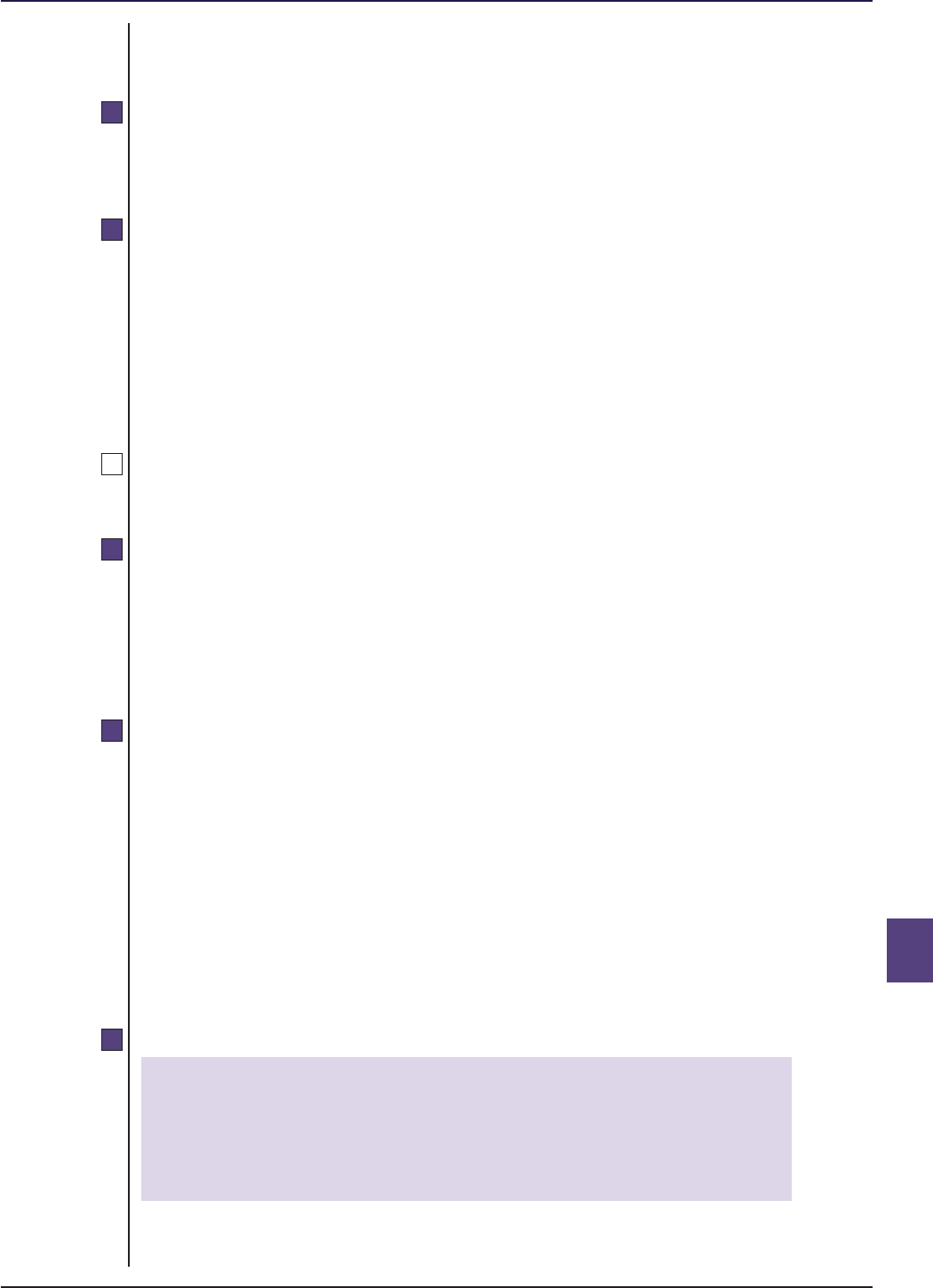
COLL 15 : Long-term asset funds Section 15.7 : Powers and responsibilities of
the authorised fund manager and the
depositary
15
R15.7.16
R15.7.17
G15.7.18
R15.7.19
R15.7.20
R15.7.21
■ Release 39 ● Aug 2024 www.handbook.fca.org.uk COLL 15/57
Application of assessment of value, assessment of investment
valuations, due diligence, conflicts of interest and liquidity
management and independent director rules
.....................................................................................................
■ COLL 15.7.17R to ■ COLL 15.7.24R apply to an authorised fund manager of an
AUT, ACS or ICVC.
Assessment of value
.....................................................................................................
(1) An authorised fund manager must conduct an assessment at least
annually for each scheme it manages of whether the payments out of
scheme property set out in the prospectus are justified in the context
of the overall value delivered to unitholders.
(2) In carrying out the assessment required by (1), the AFM must,
separately for each class of units in a scheme, consider at least the
matters set out in ■ COLL 6.6.21R (Table: minimum considerations –
assessment of value).
The guidance in ■ COLL 6.6.22G applies to interpreting the requirements of
■ COLL 6.6.21R as applied by ■ COLL 15.7.17R.
Failure by an AFM to take sufficient steps to address any instance where a
scheme’s charges are not justified in the context of the overall value
delivered to unitholders may be relied on as tending to establish
contravention of ■ COBS 2.1.1R or ■ COBS 2.1.4R as applicable.
Assessment of investment valuations, due diligence, conflicts
of interest and liquidity management
.....................................................................................................
(1) An authorised fund manager of a long-term asset fund must conduct
an assessment at least annually of how it has managed the LTAF in
the best interests of the LTAF, the LTAF’s investors and the integrity of
the market (see ■ COBS 2.1.4R (AIFMs’ best interests rules)).
(2) In carrying out the assessment required by (1), the authorised fund
manager must consider at least the matters set out in ■ COLL 15.7.21R
(Table: minimum considerations – valuation of investments, due
diligence, conflicts of interest and liquidity management assessment).
Table: minimum considerations – assessment of investment
valuations, due diligence, conflicts of interest and liquidity
management
.....................................................................................................
This table belongs to ■ COLL 15.7.20R.
1 Valuation of investments
(1) Where the authorised fund manager performs the valuation func-
tion itself:
(a) how the methodologies maintained by the authorised
fund manager to value the LTAF’s investments represent
good market practice;

COLL 15 : Long-term asset funds Section 15.7 : Powers and responsibilities of
the authorised fund manager and the
depositary
15
■ Release 39 ● Aug 2024www.handbook.fca.org.ukCOLL 15/58
(b) where a methodology maintained by the authorised
fund manager was changed or modified in relation to
the valuation of a particular investment, the rationale
for that change;
(c) the rationale for any material change to the valuation
of an investment held in the scheme property during
the relevant period; and
(d) the consistency of valuation of the LTAF’s investments
with those of the other AIFs managed by the authorised
fund manager
(2) Where an external valuer has been appointed, the authorised
fund manager’s assessment during the relevant period of how:
(a) the external valuer satisfied FUND 3.9.7R(3) (Performance
of the valuation function);
(b) the authorised fund manager was satisfied that it could
demonstrate the matters specified in FUND 3.9.9R (Ap-
pointment of an external valuer); and
(c) the authorised fund manager was satisfied that it could
demonstrate the matters specified in FUND 3.10.2R(2)(f)
(General delegation requirements).
2 Due diligence
In relation to due diligence carried out on investments, how that due di-
ligence was carried out in accordance with good market practice (see
COLL 15.7.14R (Due diligence – good market practice)).
3 Conflicts of interest
In relation to conflicts of interest:
(1) how any conflicts of interest identified by the authorised fund
manager under SYSC 10.1.23R (Additional requirements for an
AIFM) and article 30 of the AIFMD level 2 regulation have been
avoided, managed, monitored and (where applicable) disclosed un-
der SYSC 10.1.24R (Additional requirements for an AIFM) and art-
icles 31 to 36 of the AIFMD level 2 regulation; and
(2) how, in relation to each conflict of interest identified, those ac-
tions were in the best interests of the LTAF, the LTAF’s investors
and the integrity of the market.
4 Liquidity management
In relation to the management of liquidity of the long-term asset fund:
(1) how the liquidity profile of the LTAF, taking into account bor-
rowing (if any), has been consistent with its redemption policy;
(2) where monitoring of the liquidity risk of the LTAF, including the re-
sults of any stress tests, has identified any liquidity management
issues, how these were addressed in the best interests of the LTAF,
the LTAF’s investors and the integrity of the market;
(3) where the authorised fund manager has sold an investment held
in the scheme property of the LTAF at a price adjusted to reflect
the authorised fund manager’s need to meet redemption requests,
how that price was determined to be in the best interests of the
LTAF, the LTAF’s investors and the integrity of the market; and
(4) how decisions to apply or refrain from applying any dilution levy
or adjustment to sales and redemptions of units ensured that all in-
vestors in the LTAF were treated fairly, including those investors
who were dealing in units of the LTAF, and those investors who (as
applicable) were already invested or remained invested in the
LTAF.
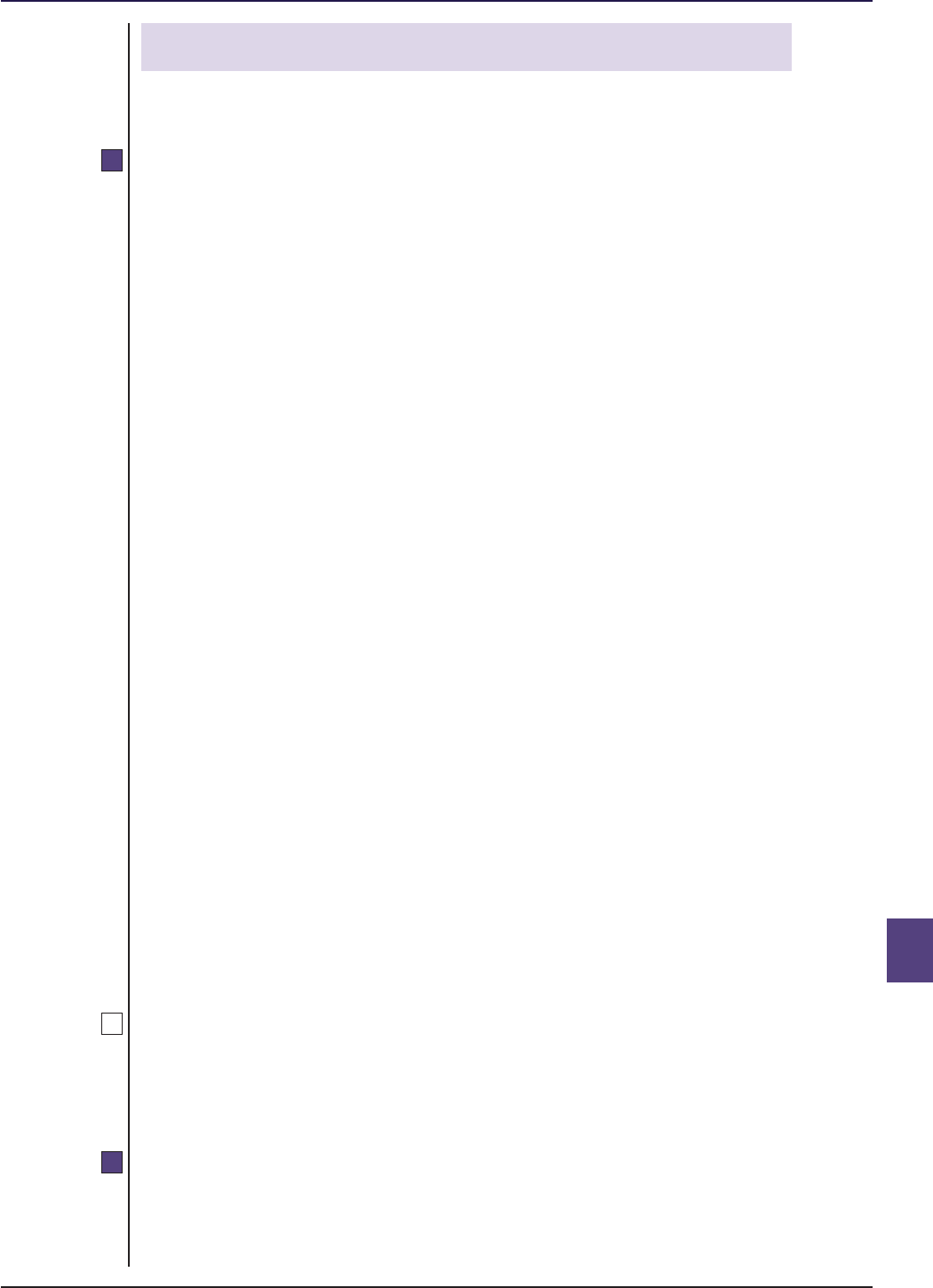
COLL 15 : Long-term asset funds Section 15.7 : Powers and responsibilities of
the authorised fund manager and the
depositary
15
R15.7.22
G15.7.23
R15.7.24
■ Release 39 ● Aug 2024 www.handbook.fca.org.uk COLL 15/59
[Note: See FUND 3.6.3R (Liquidity systems and procedures) and articles 46
to 49 of the AIFMD level 2 regulation.]
Independent directors
.....................................................................................................
(1) An authorised fund manager must ensure that at least one quarter of
the members of its governing body are independent natural persons.
If the AFM’s governing body comprises fewer than eight members,
the AFM must instead ensure that at least two of its members are
independent natural persons.
(2) The authorised fund manager, in appointing an independent member
of its governing body, must determine whether such a member is
independent in character and judgement and whether there are
relationships or circumstances which are likely to affect, or could
appear to affect, that member’s judgement.
(3) The authorised fund manager must take reasonable steps to ensure
that independent members appointed to its governing body have
sufficient expertise and experience to be able to make judgements on
whether the AFM is managing each scheme in the best interests of
unitholders.
(4) (a) Independent members of an AFM’s governing body must be
appointed for terms of no longer than five years, with a
cumulative maximum duration of ten years.
(b) If an independent member is appointed to more than one
governing body within an AFM’s group, the cumulative maximum
duration of ten years referred to in (a) is calculated by adding the
durations of each separate appointment and discounting periods
during which appointments overlapped to avoid double counting.
(c) In relation to a person who served as an independent director of
an AFM’s governing body before 1 October 2019, the five-year
term(s) and cumulative maximum duration of ten years run from
that date.
(5) Independent members are not eligible for reappointment to an AFM’s
governing body until five years have elapsed from the end of the ten-
year period referred to in (4).
(6) The terms of employment on which independent members are
appointed must be such as to secure their independence.
The guidance in ■ COLL 6.6.26G applies to interpreting the requirement for
independence in ■ COLL 15.7.22R.
Allocation of responsibility for compliance to an approved
person
.....................................................................................................
(1) An AFM must allocate responsibility for ensuring its compliance with
■ COLL 15.7.17R, ■ COLL 15.7.20R, ■ COLL 15.7.22R and ■ COBS 2.1.4R
(AIFMs’ best interests rules) to an approved person.

COLL 15 : Long-term asset funds Section 15.7 : Powers and responsibilities of
the authorised fund manager and the
depositary
15
■ Release 39 ● Aug 2024www.handbook.fca.org.ukCOLL 15/60
(2) Where the chair of the AFM’s governing body is an approved person,
the AFM must allocate the responsibility set out in (1) to that person.
[Note: See ■ SYSC 24 (Senior managers and certification regime:
Allocation of prescribed responsibilities).]

COLL 15 : Long-term asset funds Section 15.8 : Valuation, pricing, dealing and
income
15
R15.8.1
R15.8.2
■ Release 39 ● Aug 2024 www.handbook.fca.org.uk COLL 15/61
15.8 Valuation, pricing, dealing and
income
Application
.....................................................................................................
This section applies to:
(1) an authorised fund manager of an AUT, ACS or an ICVC;
(2) any other director of an ICVC;
(3) the depositary of an AUT, ACS or an ICVC; and
(4) an ICVC,
which is a long-term asset fund.
Valuation, pricing and dealing
.....................................................................................................
(1) The value of the scheme property is the net value of the scheme
property after deducting any outstanding borrowings (including any
capital outstanding on a mortgage of an immovable).
(2) Any part of the scheme property which is not an investment (save an
immovable) must be valued at fair value.
(3) For the purposes of (2), any charges that were paid, or would be
payable, on acquiring or disposing of the asset must be excluded
from the value of that asset.
(4) The value of the scheme property of an authorised fund must, save as
otherwise provided in this section, be determined in accordance with
the provisions of the instrument constituting the fund and the
prospectus, as appropriate.
(5) The scheme must have a valuation point on each dealing day and
there must be at least one valuation point every month.
(6) The authorised fund manager must prepare a valuation in accordance
with (4) for each relevant type of unit at each relevant valuation
point.
(7) The price of a unit must be calculated on the basis of the valuation in
(6) in a manner that is fair and reasonable as between unitholders.

COLL 15 : Long-term asset funds Section 15.8 : Valuation, pricing, dealing and
income
15
R15.8.3
G15.8.4
■ Release 39 ● Aug 2024www.handbook.fca.org.ukCOLL 15/62
(8) In respect of each valuation point under (5), the authorised fund
manager must publish in an appropriate manner the price of any type
of unit based on the valuation carried out in accordance with (6).
(9) The authorised fund manager must also provide on request to any
unitholder at any time an estimated price for any type of unit in the
scheme.
(10) The period of any initial offer and how it should end must be set out
in the prospectus and must not be of unreasonable length.
Profits from dealing as principal
.....................................................................................................
(1) Where an authorised fund manager:
(a) accepts instructions to sell and redeem units as principal; and
(b) is able to execute a sale instruction by selling units it has
redeemed at the same valuation point, without placing its own
capital at risk,
subject to (2), the AFM must not retain for its own account, or
the account of any of its associates, the difference between the
price at which a unit was redeemed (before deduction of any
redemption charge) and the price at which the same unit was
sold (after deduction of any preliminary charge). Any such
difference must be allocated in a way that is fair to unitholders.
(2) In calculating the profit arising under (1), the AFM may offset any loss
it incurs at the same valuation point, calculated in accordance with
(3), when dealing as principal in relation to:
(a) a unit issued at that valuation point to fulfil a sale instruction
that cannot be matched against any redeemed unit or any other
unit of that class held by the manager as principal; and
(b) a unit redeemed and cancelled at that valuation point.
(3) The amount of the loss referred to in (2) is:
(a) for units issued in accordance with (2)(a), the difference between
the issue price of a unit and the sale price of that unit, less any
preliminary charge;
(b) for units cancelled in accordance with (2)(b), the difference
between the cancellation price of a unit and the redemption
price of that unit, before any redemption charge is applied.
(4) Where any loss arising under (2) is greater than any profit arising
under (1), that loss cannot be offset against any profit arising at a
subsequent valuation point.
(5) This rule applies to the redemption and sale of units of different
classes at the same valuation point, if those classes are treated as one
for the purpose of ■ COLL 15.8.6R (Issue and cancellation of units in
multiple classes).
(1) The authorised fund manager may commit its own capital to hold
units for dealing as principal and may seek to profit from gains in the
value of the units it holds, when it issues or redeems units at one

COLL 15 : Long-term asset funds Section 15.8 : Valuation, pricing, dealing and
income
15
R15.8.5
■ Release 39 ● Aug 2024 www.handbook.fca.org.uk COLL 15/63
valuation point then sells or cancels them at a later valuation point.
However, it should not profit from situations in which it is not
exposed to an equal risk of loss if the units fall in value, or from the
ability to match simultaneous sales and redemptions at different
prices at no risk to its own capital.
(2) The AFM may allocate any amount arising under ■ COLL 15.8.3R(1)
(Profits from dealing as principal) in the interests of investors by
paying it into scheme property for the benefit of all unitholders.
Alternatively, the AFM may redistribute it individually among the
transacting investors.
(3) Where the AFM intends to allocate a payment to scheme property, it
should determine if the amount (when added to any other amounts
of the same kind relating to that class of units) would, if taken into
account in the scheme’s valuation, affect the accuracy of the unit
prices to four significant figures. If so, and subject to (4) below, the
amount should be accrued in each subsequent valuation of the
scheme until the payment is transferred. Such payments into scheme
property should be made regularly and no less frequently than
payments for the AFM’s management charge are transferred out of
scheme property.
(4) The calculation to be performed under ■ COLL 15.8.3R (Profits from
dealing as principal) should be carried out in relation to each
valuation point of the scheme on a timely basis. Where it is not
practical to do this before unit prices are calculated and published,
the AFM should ensure that the accrual represents a reasonable
estimate of the total payment it intends to make to scheme property.
Issue and cancellation of units
.....................................................................................................
(1) The authorised fund manager must:
(a) ensure that at each valuation point there are at least as many
units in issue of any class as there are units registered to
unitholders of that class; and
(b) not do or omit anything that would, or might, confer on itself a
benefit or advantage at the expense of a unitholder or potential
unitholder.
(2) For the purposes of (1) the authorised fund manager may take into
account sales and redemptions after the valuation point, provided it
has systems and controls to ensure compliance with (1).
(3) The authorised fund manager must arrange for the issue and
cancellation of units and pay money or assets to or from the
depositary for the account of the scheme as required by the
prospectus.
(4) The authorised fund manager must keep a record of issues and
cancellations made under this rule.
(5) The authorised fund manager may arrange for the ICVC, or instruct
the depositary of the AUT or ACS, to issue or cancel units where the
authorised fund manager would otherwise be obliged to sell or
redeem the units in the manner set out in the prospectus.

COLL 15 : Long-term asset funds Section 15.8 : Valuation, pricing, dealing and
income
15
R15.8.6
R15.8.7
G15.8.8
■ Release 39 ● Aug 2024www.handbook.fca.org.ukCOLL 15/64
(6) Where the authorised fund manager has not complied with (1), it
must correct the error as soon as possible and must reimburse the
scheme any costs it may have incurred in correcting the position,
subject to any reasonable minimum level for such reimbursement as
set out in the prospectus.
Issue and cancellation of units in multiple classes
.....................................................................................................
If a long-term asset fund has two or more classes of unit in issue, the
authorised fund manager may treat any or all of those classes as one for the
purpose of determining the number of units to be issued or cancelled by
reference to a particular valuation point, if:
(1) the depositary gives its prior agreement; and
(2) the relevant classes:
(a) have the same entitlement to participate in, and the same
liability for charges, expenses and other payments that may be
recovered from, the scheme property; or
(b) differ only as to whether income is distributed or accumulated by
periodic credit to capital, provided the price of the units in each
class is calculated by reference to undivided shares in the scheme
property.
Transfer of units in an ACS
.....................................................................................................
(1) Where transfer of units in an ACS is allowed by its contractual scheme
deed and prospectus in accordance with the conditions specified by
FCA rules, the authorised contractual scheme manager of the ACS
must take reasonable care to ensure that units are only transferred if
the conditions specified by the FCA under (2) are met.
(2) The FCA specifies that for the purposes of (1), and for the purposes of
■ COLL 15.3.6R(3)(9)(a)(vii)(B) (Table: contents of the instrument
constituting the fund) and ■ COLL 15.4.5R(18)(2) (Table: contents of
long-term asset fund prospectus), units in the ACS may only be
transferred to a person:
(a) who is a:
(i) professional ACS investor; or
(ii) large ACS investor; or
(iii) person who already holds units in the scheme; and
(b) to whom units in a long-term asset fund may be promoted
without contravening the rules in ■ COBS 4.12A (Promotion of
restricted mass market investments).
The FCA recognises that some transfers of units arise by operation of law
(such as upon death or bankruptcy of the unitholder, or otherwise) and are
accordingly outside the control of the authorised contractual scheme
manager. The authorised contractual scheme manager is expected to comply
with its responsibilities under ■ COLL 15.8.10R (Redemption of ACS units in an
LTAF by an authorised contractual scheme manager) in those cases by
redeeming those units.

COLL 15 : Long-term asset funds Section 15.8 : Valuation, pricing, dealing and
income
15
R15.8.9
R15.8.10
R15.8.11
R15.8.12
■ Release 39 ● Aug 2024 www.handbook.fca.org.uk COLL 15/65
Responsibilities of the authorised contractual scheme manager
in relation to ACS units
.....................................................................................................
(1) The authorised contractual scheme manager of an authorised
contractual scheme which is a long-term asset fund must take
reasonable care to ensure that rights or interests in units in the
scheme are not acquired by any person from or through an
intermediate unitholder in a long-term asset fund, unless:
(a) that person is a:
(i) professional ACS investor; or
(ii) large ACS investor; or
(iii) person who already holds units in the scheme; and
(b) units in a long-term asset fund may be promoted to that person
without contravening the rules in ■ COBS 4.12A (Promotion of
restricted mass market investments).
(2) The authorised contractual scheme manager will be regarded as
complying with (1) to the extent that it can show that it was
reasonable for it to rely on relevant information provided by another
person.
Redemption of ACS units in an LTAF by an authorised
contractual scheme manager
.....................................................................................................
The authorised contractual scheme manager of a long-term asset fund which
is an ACS must redeem units in the scheme as soon as practicable after
becoming aware that those units are vested in anyone (whether as a result
of subscription or transfer of units) other than a person meeting the criteria
in ■ COLL 15 Annex 1R(1) and ■ (2) (ACS Long-Term Asset Funds: eligible
investors).
Dealing: sale of units
.....................................................................................................
The authorised fund manager must, at all times during the dealing day, be
willing to effect the sale of units to any eligible investor (subject to any
conditions in the instrument constituting the fund and the prospectus, which
must be fair and reasonable as between all unitholders and potential
unitholders) for whom the authorised fund manager does not have
reasonable grounds to refuse such sale.
Dealing: redemption of units
.....................................................................................................
(1) In this rule, a ‘redemption determination’ is a determination by the
authorised fund manager of the long-term asset fund to:
(a) accept a request by a unitholder to redeem units in the scheme;
(b) refuse a redemption request (see paragraph (2)(c)); or
(c) make such other determination in relation to the redemption
request as may be provided for in the instrument constituting the
fund and the prospectus (see paragraph (6) below, and
■ COLL 15.8.13G(6) and ■ (7)).
(2) The redemption arrangements for a long-term asset fund must ensure
the following:

COLL 15 : Long-term asset funds Section 15.8 : Valuation, pricing, dealing and
income
15
■ Release 39 ● Aug 2024www.handbook.fca.org.ukCOLL 15/66
(a) A unitholder must be able to submit a request to redeem units
before the next date on which the authorised fund manager
makes a redemption determination, subject to any cut-off point
which may be specified in the prospectus for this purpose.
(b) The authorised fund manager must not make redemption
determinations more frequently than the dealing frequency of
the scheme and, in any event, not more than once a month.
(c) The authorised fund manager must accept a unitholder’s request
to redeem units in the scheme in accordance with any conditions
in the instrument constituting the fund and the prospectus unless
the authorised fund manager has reasonable grounds to refuse
the redemption request.
(d) The authorised fund manager must inform the unitholder of the
outcome of the redemption determination.
(e) If the authorised fund manager accepts the unitholder’s request
to redeem units in the scheme:
(i) the redemption request is deemed to be irrevocable;
(ii) the authorised fund manager must undertake to effect the
redemption at the applicable time, in accordance with any
conditions in the instrument constituting the fund and the
prospectus; and
() the authorised fund manager must confirm to the unitholder:
(A) that the redemption request has been accepted and
cannot be revoked; and
(B) having regard to the period specified for the purposes of
(f), the dates on which it is expected that the redemption
will be effected and the appropriate proceeds paid.
(f) The authorised fund manager must determine the price for the
units being redeemed pursuant to the unitholder’s redemption
request at the first valuation point following the end of the
notice period specified in the instrument constituting the fund
and the prospectus (the ‘notice period’).
(g) The notice period must be at least 90 days after the day on which
the request to redeem units in the scheme was accepted.
(h) The authorised fund manager must redeem the units at the price
determined in accordance with (f) and pay the unitholder the
appropriate proceeds of redemption in accordance with
paragraphs (4) and (5).
(3) Subject to ■ COBS 2.1.4R (AIFMs’ best interests rule) and ■ COLL 15.3.2R
(Classes of unit), where the long-term asset fund has more than one
class of unit, the arrangements for the redemption of units may differ
between classes provided the arrangements for all classes of unit
ensure the matters specified in (2).
(4) After having effected a redemption request, the authorised fund
manager must pay the full proceeds of the redemption to the
unitholder within any reasonable period specified in the prospectus,
unless it has reasonable grounds for withholding payment.
(5) Payment of proceeds on redemption must be made by the authorised
fund manager in any manner provided for in the prospectus which

COLL 15 : Long-term asset funds Section 15.8 : Valuation, pricing, dealing and
income
15
G15.8.13
■ Release 39 ● Aug 2024 www.handbook.fca.org.uk COLL 15/67
must be fair and reasonable as between redeeming unitholders and
continuing unitholders.
(6) If the instrument constituting the fund and the prospectus of a long-
term asset fund permit the authorised fund manager to defer or limit
a requested redemption, those arrangements must not result in:
(a) the authorised fund manager making redemption determinations
more frequently than once a month (see paragraph (2)(b)); or
(b) the notice period being shorter than 90 days (see paragraph
(2)(g)).
Sale and redemption of units: guidance
.....................................................................................................
(1) The authorised fund manager of a long-term asset fund is required to
ensure that the investment strategy, liquidity profile and redemption
policy for the scheme are consistent (see ■ FUND 3.6.2R (Alignment of
investment strategy, liquidity profile and redemption policy)).
(2) Given the type of investments that a long-term asset fund is likely to
hold in its scheme property, the FCA considers that a long-term asset
fund will need to operate particular arrangements for the
redemption of units.
(3) The authorised fund manager of a long-term asset fund must not
make redemption determinations more frequently than once a month
(see ■ COLL 15.8.12R(2)(b)), which is the maximum frequency for
determining such requests and effecting redemptions. The rules also
require a long-term asset fund to have a notice period of at least 90
days (see ■ COLL 15.8.12R(2)(g)). This is the minimum notice period for a
long-term asset fund.
(4) However, the frequency of the days on which redemption
determinations are made and the particular notice period which is
appropriate for a long-term asset fund will depend on the reasonable
expectations of the target investor group and the particular
investment objectives, investment policy and investment strategy of
the scheme.
(5) The authorised fund manager must also comply with the AIFMD level
2 regulation, which contains detailed requirements about liquidity
management taking into account the long-term asset fund’s
investment strategy, liquidity profile and redemption policy. See, for
example, articles 46 to 49 of the AIFMD level 2 regulation.
(6) Other determinations which an authorised fund manager may make,
if provided for in the instrument constituting the fund and the
prospectus (see ■ COLL 15.8.12R(1)(c)), could include a deferral of
execution of a redemption request or payment, or a limit on the
value or number of units which can be redeemed at any one
valuation point.
(7) Redemption determinations should be carried out so that all
unitholders who have requested redemption at any one valuation
point are treated fairly.

COLL 15 : Long-term asset funds Section 15.8 : Valuation, pricing, dealing and
income
15
R15.8.14
G15.8.15
R15.8.15A
■ Release 39 ● Aug 2024www.handbook.fca.org.ukCOLL 15/68
Property Authorised Investment Funds
.....................................................................................................
The authorised fund manager of a long-term asset fund that is also a
property authorised investment fund must take reasonable steps to
ensure that no body corporate holds more than 10% of the net asset
value of that scheme (the “maximum allowable”).
For the purposes of (1), a body corporate shall not be treated as
holding more than the maximum allowable to the extent that:
the body corporate holds units in a unit trust scheme which
holds shares in the property authorised investment fund; and
in their capacity as trustees of the unit trust scheme, the trustees
are chargeable in the United Kingdom either to income tax or to
corporation tax.
Where the authorised fund manager of a property authorised
investment fund becomes aware that a body corporate holds more
than the maximum allowable, the authorised fund manager must:
notify the body corporate of that event;
not pay any income distribution to the body corporate; and
redeem or cancel units forming the body corporate’s holding
down to the maximum allowable within a reasonable timeframe.
For the purpose of (3)(c), a reasonable timeframe means the
timeframe which the authorised fund manager reasonably considers
to be appropriate having regard to the interests of the unitholders as
a whole.
Reasonable steps to monitor the maximum allowable include:
.....................................................................................................
Reasonable steps to monitor the maximum allowable include:
(1) regularly reviewing the register; and
(2) taking reasonable steps to ensure that unitholders are kept informed
of the requirement that no body corporate may hold more than 10%
of the net asset value of a property authorised investment fund.
Payments: application of rules
.....................................................................................................
(1) ■ COLL 15.8.15CR to ■ COLL 15.8.15PR apply in relation to an LTAF retail
class.
(2) In relation to a limited protection LTAF class:
(a) ■ COLL 15.8.15CR and ■ COLL 15.8.15DG always apply; and
(b) ■ COLL 15.8.15QR may be applied.
(3) ■ COLL 15.8.15CR to ■ COLL 15.8.15PR apply as specified in the table in
(4).
(4) This table belongs to (3).

COLL 15 : Long-term asset funds Section 15.8 : Valuation, pricing, dealing and
income
15
G15.8.15B
R15.8.15C
■ Release 39 ● Aug 2024 www.handbook.fca.org.uk COLL 15/69
Depositary of
Authorised an ICVC, AUT
Rule ICVC fund manager or ACS
COLL 15.8.15CR x x x
COLL 15.8.15DG x x x
COLL 15.8.15EG x x
COLL 15.8.15FR x x
COLL 15.8.15GR x
COLL 15.8.15HG x
COLL 15.8.15IR x
COLL 15.8.15JR x x
COLL 15.8.15KG x x
COLL 15.8.15LR x x
COLL 15.8.15MG x x
COLL 15.8.15NR x x x
COLL 15.8.15OG x x
COLL 15.8.15PR x x
Note: “x” means “applies” but not every paragraph in every rule
will necessarily apply.
Where ■ COLL 15.8.15EG to ■ COLL 15.8.15PR are not applied to classes which
are intended only for limited protection LTAF investors, the authorised fund
manager is required to take reasonable care to ensure that ownership of
units in that scheme is recorded in the register only for a person who is a
limited protection LTAF investor (see ■ COLL 15.1.3R (Long-term asset funds:
eligible investors)).
Payments out of scheme property
.....................................................................................................
(1) The only payments which may be recovered from the scheme
property of a long-term asset fund are those in respect of:
(a) remunerating the parties operating the authorised fund;
(b) the administration of the authorised fund;
(c) the investment or safekeeping of the scheme property; and
(d) subject to (1A), donations to one or more registered charities for
Sharia compliance purposes (in this rule, ‘purification’), as set out
in and authorised by the prospectus of the scheme.
(1A) Payments relating to (1)(d) may only be made from the income
property of the scheme where they represent the required
percentage of the income property recognised for purification as
advised by a person with appropriate knowledge of finance and
Islamic law.
(2) No payment under this rule can be made from scheme property if it is
unfair to (or materially prejudices the interests of) any class of
unitholders or potential unitholders.

COLL 15 : Long-term asset funds Section 15.8 : Valuation, pricing, dealing and
income
15
G15.8.15D
G15.8.15E
■ Release 39 ● Aug 2024www.handbook.fca.org.ukCOLL 15/70
(3) Paragraphs (1) and (2) do not apply to any payments in relation to
any taxation payable by the authorised fund.
(4) Paragraphs (1) and (2) do not permit payments to third parties for the
safekeeping or administration of units on behalf of unitholders rather
than on behalf of the authorised fund.
Payments out of scheme property: guidance
.....................................................................................................
(1) Details of permissible types of payments out of scheme property are
to be set out in full in the prospectus in accordance with
■ COLL 15.4.5R(14) (Table: contents of a long-term asset fund
prospectus).
(2) An authorised fund manager should consider whether a payment to
an affected person is unfair because of its amount or because it
confers a disproportionate benefit on the affected person.
(3) ■ COLL 15.8.15CR(2) does not invalidate a payment that gives rise to a
difference between the rights of separate classes of unit that relates
solely to the payments that may be taken out of scheme property.
(4) Payments to third parties as referred to in ■ COLL 15.8.15CR(4) include
payments to platform service providers and other similar platform
services.
(5) The person referred to in ■ COLL 15.8.15CR(1A) should be independent
of the authorised fund manager and any registered charity to which
payments may be made.
Performance fees
.....................................................................................................
(1) For the authorised fund manager’s periodic charge or for payments
out of scheme property to the investment adviser, the prospectus may
permit a payment based on a comparison of one or more aspects of
the scheme property or price in comparison with fluctuations in the
value or price of property of any description or index or other factor
designated for the purpose (a ‘performance fee’).
(2) Any performance fee should be specified in the appropriate manner
in the prospectus and should be consistent with ■ COLL 15.8.15CR. In
determining whether the performance fee is consistent, the
authorised fund manager should have regard to factors such as:
(a) where it is made on the basis of performance of the authorised
fund against any index or any other factor, that benchmark must
be reasonable given the investment objectives of the authorised
fund and must be consistently applied;
(b) the performance fee may be based on performance above a
defined positive rate of return (the ‘hurdle rate’), which may be
fixed or variable;
(c) where (a) or (b) applies, the benchmark or hurdle rate may be
carried forward to future accrual periods;
(d) the period over which it accrues and the frequency with which it
crystallises should be reasonable; and
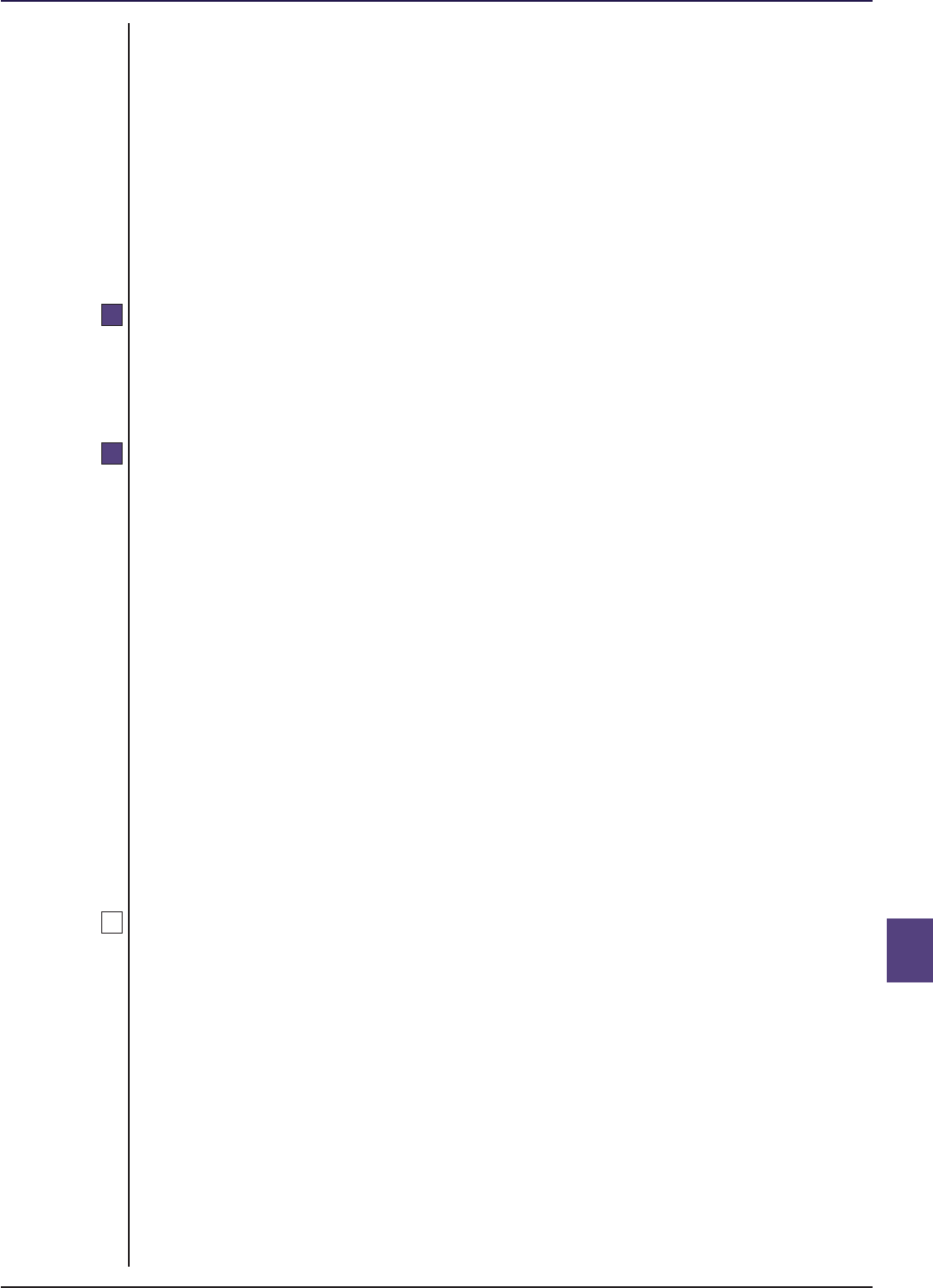
COLL 15 : Long-term asset funds Section 15.8 : Valuation, pricing, dealing and
income
15
R15.8.15F
R15.8.15G
G15.8.15H
■ Release 39 ● Aug 2024 www.handbook.fca.org.uk COLL 15/71
(e) except where allowed by ■ COLL 15.8.15CR(1), there are to be no
arrangements to adjust the price or value of sale or repurchase
transactions in respect of performance fees accrued or paid if the
transactions occur within the accrual period of the charge.
(3) In accordance with ■ COLL 15.4.5R(14) (Table: contents of a long-term
asset fund prospectus), the prospectus should contain the maximum
amount or percentage of scheme property that the performance fee
might represent in an annual accounting period. This disclosure
should be given in plain language together with examples of the
operation of the performance fee.
Any performance fee specified in the prospectus must be calculated on the
basis of the scheme’s performance after deduction of all other payments out
of scheme property.
Charges on buying and selling units
.....................................................................................................
(1) No person other than the authorised fund manager may impose
charges on unitholders or potential unitholders when they buy or sell
units.
(2) An authorised fund manager must not make any charge or levy in
connection with:
(a) the issue or sale of units except where a preliminary charge is
made in accordance with the prospectus of the scheme which
must be:
(i) a fixed amount; or
(ii) calculated as a percentage of the price of a unit; or
(iii) calculated as a percentage of the amount being subscribed;
or
(b) the redemption or cancellation of units, except a redemption
charge made in accordance with the prospectus current at the
time the relevant units were purchased by the unitholder.
Charges on buying and selling units: guidance
.....................................................................................................
(1) To introduce a new charge for the sale or redemption of units, or any
new category of remuneration for its services or increase the rate
stated in the prospectus, the authorised fund manager will need to
comply with:
(a) ■ COLL 15.4.5R (Table: contents of a long-term asset fund
prospectus);
(b) ■ COLL 15.5.10R (Alterations to the scheme and notices to
unitholders) (see also the guidance in ■ COLL 15.5.11G); and
(c) COLL 15.5.11AR (Change events relating to feeder LTAFs) (see also
the guidance in COLL 15.5.11BG).
(2) A redemption charge may be expressed in terms of amount or
percentage. It may also be expressed as diminishing over the time
during which the unitholder has held the units or be calculated on
the basis of the unit price performance of the units. However, any

COLL 15 : Long-term asset funds Section 15.8 : Valuation, pricing, dealing and
income
15
R15.8.15I
R15.8.15J
G15.8.15K
■ Release 39 ● Aug 2024www.handbook.fca.org.ukCOLL 15/72
redemption charge should not be such that it could be reasonably
regarded as restricting any right of redemption.
(3) The prospectus should contain a statement as to the determination of
the order in which units that have been acquired at different times by
a unitholder are to be taken to be redeemed or cancelled for the
purpose of imposing the redemption charge.
(4) When a preliminary charge is calculated as a percentage of the price
of a unit, the percentage amount should be added to:
(a) the price of a unit (for a single-priced authorised fund); or
(b) the issue price (for a dual-priced authorised fund).
Charges for the exchange of units in an umbrella
.....................................................................................................
For a scheme which is an umbrella, an authorised fund manager must not
make a charge on an exchange of units in one sub-fund for units in another
sub-fund unless the amount of the charge is not more than the amount
stated in the current prospectus.
Allocation of payments to income or capital
.....................................................................................................
(1) The authorised fund manager must determine whether a payment is
to be made from the income property or capital property of an
authorised fund, and in doing so the authorised fund manager must:
(a) pay due regard to whether the nature of the cost is income
related or capital related and the objective of the scheme; and
(b) agree the treatment of any payment with the depositary.
(2) Where, for any class of units for any annual accounting period (see
■ COLL 15.8.18R(2) (Income)), the amount of the income property is less
than the income distributed, the shortfall must, as from the end of
that period, be charged to the capital account and must not
subsequently be transferred to the income account.
Allocation of payments to income or capital: guidance
.....................................................................................................
(1) Any payment as a result of effecting transactions for the authorised
fund should be made from the capital property of the scheme.
(2) Other than the payments in (1), all other payments should be made
from income property in the first instance but may be transferred to
the capital account in accordance with ■ COLL 15.8.15JR(1) (Allocation
of payments to income or capital).
(3) For payments transferred to the capital property of the scheme in
accordance with (2), the prospectus should disclose the matters in
■ COLL 15.4.5R(14) (Table: contents of a long-term asset fund
prospectus).
(4) If the authorised fund manager wishes to make a change in relation
to the allocation of payments, the procedures in ■ COLL 15.5.10R
(Alterations to the scheme and notices to unitholders) will be
relevant.

COLL 15 : Long-term asset funds Section 15.8 : Valuation, pricing, dealing and
income
15
R15.8.15L
G15.8.15M
R15.8.15N
G15.8.15O
■ Release 39 ● Aug 2024 www.handbook.fca.org.uk COLL 15/73
Prohibition on promotional payments
.....................................................................................................
(1) No payment may be made from scheme property to any person, other
than a payment to the authorised fund manager permitted by the
rules in COLL, for the acquisition or promotion of the sale of units in
an authorised fund.
(2) Paragraph (1) does not apply to the costs an authorised fund incurs
preparing and printing the key information document, provided the
prospectus states, in accordance with ■ COLL 15.4.5R(14) (Table:
contents of a long-term asset fund prospectus), that these costs are
properly payable to the authorised fund manager from scheme
property.
Prohibition on promotional payments: guidance
.....................................................................................................
Examples of payments which are not permitted by ■ COLL 15.8.15LR include:
(1) commission payable to intermediaries (such payments should normally
be borne by the authorised fund manager);
(2) payments or costs in relation to the preparation or dissemination of
financial promotions (other than costs allowed under
■ COLL 15.8.15LR(2)).
Payments of liabilities on transfer of assets
.....................................................................................................
(1) Where the scheme property of an LTAF is transferred to a second
authorised fund (or to the depositary for the account of the
authorised fund) in consideration of the issue of units in the second
authorised fund to unitholders in the first scheme, (2) applies.
(2) The ICVC or the depositary of the ICVC, ACS or AUT as the successor
in title to the property transferred may pay out of the scheme
property any liability arising after the transfer which, had it arisen
before the transfer, could properly have been paid out of the
property transferred, but only if:
(a) there is nothing in the instrument constituting the fund of the
LTAF expressly forbidding the payment; and
the authorised fund manager is of the opinion that proper
provision was made for meeting such liabilities as were known or
could reasonably have been anticipated at the time of the
transfer.
Exemptions from liability to account for profits
.....................................................................................................
Except as provided in ■ COLL 15.8.3R (Profits from dealing as principal), an
affected person is not liable to account to another affected person or to the
unitholders of any scheme for any profits or benefits it makes or receives
that are made or derived from or in connection with:
(1) dealings in the units of a scheme; or
(2) any transaction in scheme property; or
(3) the supply of services to the scheme,

COLL 15 : Long-term asset funds Section 15.8 : Valuation, pricing, dealing and
income
15
R15.8.15P
R15.8.15Q
R15.8.16
G15.8.17
R15.8.18
■ Release 39 ● Aug 2024www.handbook.fca.org.ukCOLL 15/74
where disclosure of the non-accountability has been made in the prospectus
of the scheme.
Allocation of scheme property
.....................................................................................................
For a scheme that is an umbrella, any assets to be received into, or any
payments out of, the scheme property which are not attributable to one sub-
fund only must be allocated by the authorised fund manager between the
sub-funds in a manner that is fair to the unitholders of the umbrella
generally.
Payments: limited protection LTAF classes
.....................................................................................................
(1) This rule applies in relation to a limited protection LTAF class unless
the provisions in ■ COLL 15.8.15EG to ■ COLL 15.8.15PR have been
applied.
(2) Payments out of the scheme property may be made from capital
property rather than from income, provided the basis for this is set
out in the prospectus.
Movable or immovable property: ICVCs
.....................................................................................................
An ICVC must not incur any expense in respect of the use of any movable or
immovable property unless the scheme is dedicated to such investment or
such property is necessary for the direct pursuit of its business.
(2) [deleted.]
Exemption from liability to account for profits
.....................................................................................................
Except as provided in ■ COLL 15.8.3R (Profits from dealing as principal), an
affected person is not liable to account to another affected person or to the
unitholders of the scheme for any profits or benefits it makes or receives
that are made or derived from or in connection with:
(1) dealings in the units of a scheme; or
(2) any transaction in scheme property; or
(3) the supply of services to the scheme;
where disclosure of the non-accountability has been made in the
prospectus of the scheme.
Income
.....................................................................................................
(1) A long-term asset fund must have:
() an annual accounting period;
() a half-yearly accounting period; and
() an accounting reference date;
the details of which must be set out in the prospectus.

COLL 15 : Long-term asset funds Section 15.8 : Valuation, pricing, dealing and
income
15
■ Release 39 ● Aug 2024 www.handbook.fca.org.uk COLL 15/75
(2) ■ COLL 6.8.2R(2) to ■ COLL 6.8.2R(7) (Accounting periods) also apply to
the half-yearly accounting period and annual accounting period of a
long-term asset fund.
(3) A long-term asset fund must have an annual income allocation date,
which must be within four months of the accounting reference date.
(4) A long-term asset fund may have an interim income allocation date
and interim accounting periods and if it does, the interim income
allocation date must be within a reasonable period of the end of the
relevant interim accounting period as set out in the prospectus.
(5) ■ COLL 6.8.3R(3) (Income allocation and distribution) to ■ COLL 6.8.3AG
(Allocation of income to difference classes of unit) also apply to a
long-term asset fund.

COLL 15 : Long-term asset funds Section 15.9 : Operational requirements for
feeder LTAFs
15
R15.9.1
R15.9.2
R15.9.3
■ Release 39 ● Aug 2024www.handbook.fca.org.ukCOLL 15/76
15.9 Operational requirements for
feeder LTAFs
Application
.....................................................................................................
This section applies as follows:
(1) ■ COLL 15.9.2R to ■ COLL 15.9.6R apply to the authorised fund manager
of a feeder LTAF;
(2) ■ COLL 15.9.6R also applies to:
(a) an ICVC that is a feeder LTAF; and
(b) any person acting on behalf of either the feeder LTAF or the
authorised fund manager of the feeder LTAF; and
(3) ■ COLL 15.9.7R applies to the authorised fund manager of a long-term
asset fund which operates as a qualifying master LTAF to a feeder
LTAF.
Pre-investment requirements of the authorised fund manager
of a feeder LTAF
.....................................................................................................
Before investing in the qualifying master LTAF, the authorised fund manager
of the feeder LTAF must:
(1) be satisfied on reasonable grounds that it can obtain from the
qualifying master LTAF all the information necessary to comply on an
ongoing basis with the rules in COLL;
(2) having consulted with the depositary of the feeder LTAF, be satisfied
on reasonable grounds that the depositary of the feeder LTAF can
obtain from the qualifying master LTAF, the operator of the
qualifying master LTAF or the depositary of the qualifying master
LTAF all the information necessary to comply with its duties under
■ COLL 15.7.6R and ■ COLL 15.7.7R (Duties of the depositary); and
(3) inform the authorised fund manager of the qualifying master LTAF of
the date on which the feeder LTAF will begin to invest into the
qualifying master LTAF as a feeder LTAF.
Ownership of units in a feeder LTAF
.....................................................................................................
The authorised fund manager of a feeder LTAF must take reasonable care to
ensure that its units are not owned, including beneficially owned, by the
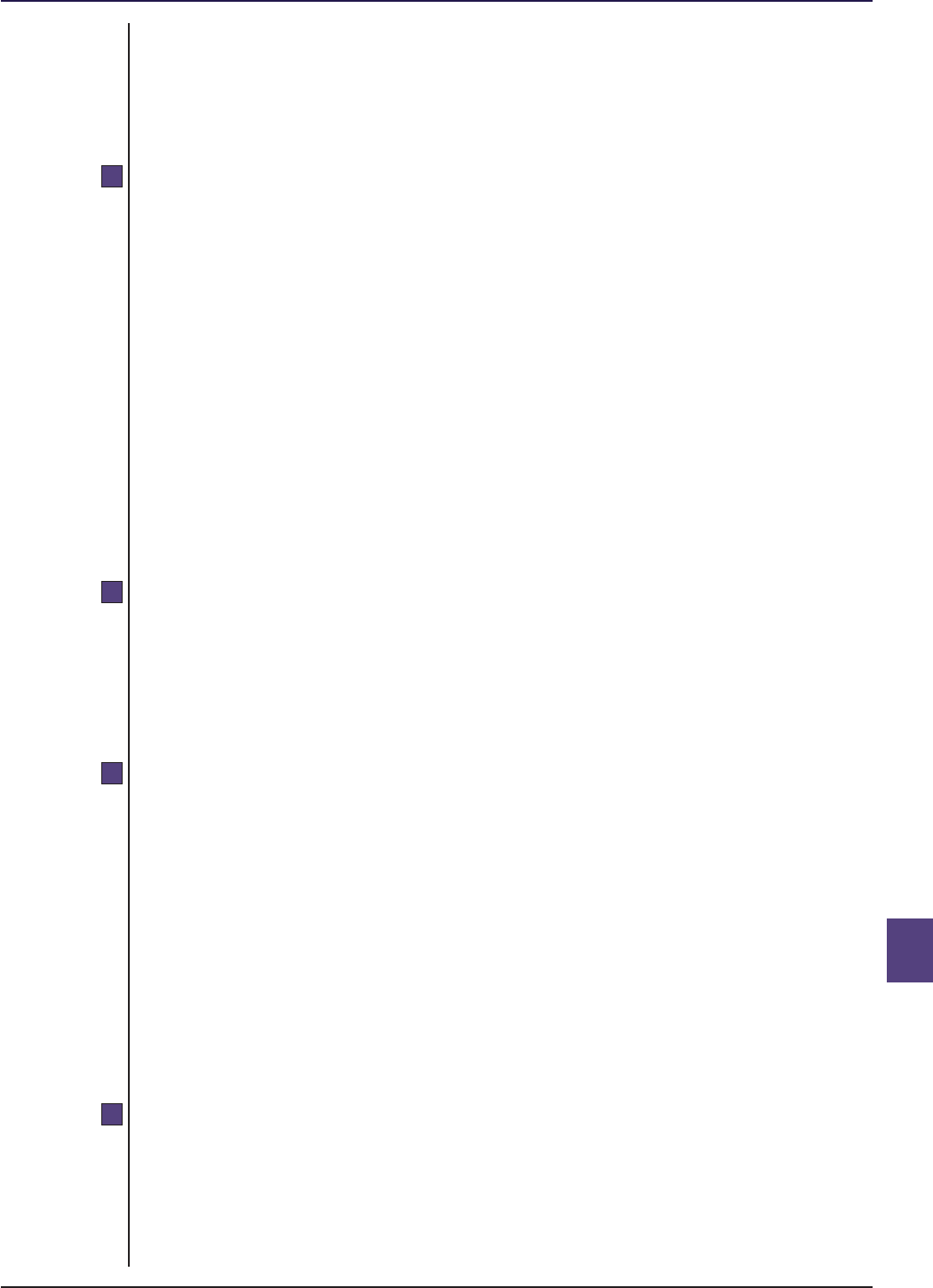
COLL 15 : Long-term asset funds Section 15.9 : Operational requirements for
feeder LTAFs
15
R15.9.4
R15.9.5
R15.9.6
R15.9.7
■ Release 39 ● Aug 2024 www.handbook.fca.org.uk COLL 15/77
qualifying master LTAF or any other scheme in which the qualifying master
LTAF invests.
Charges made by the qualifying master LTAF or its operator to
a feeder LTAF on investment or disposal
.....................................................................................................
(1) Where the operator or the authorised fund manager of a qualifying
master LTAF imposes any charge which is, or is equivalent in effect to,
a preliminary charge or redemption charge on the feeder LTAF for
the acquisition or disposal of units in the qualifying master LTAF, the
authorised fund manager of the feeder LTAF must pay to the feeder
LTAF an amount equal to such charge within four business days
following the relevant acquisition or disposal.
(2) In this rule, where the operator or authorised fund manager of a
qualifying master LTAF requires any addition to or deduction from
the consideration paid on the acquisition or disposal of units in the
qualifying master LTAF which is, or is equivalent in effect to, a
dilution levy made in accordance with the instrument constituting the
fund and the prospectus, it is to be treated as part of the price of the
units and not as part of any preliminary charge or redemption charge
referred to in (1).
Avoidance of opportunities for market timing
.....................................................................................................
The authorised fund manager of a feeder LTAF must take appropriate
measures to co-ordinate the timing of the feeder LTAF’s valuation points and
dealing days with those of its qualifying master LTAF, including the
publication of dealing prices, in order to avoid market timing of their units,
and prevent arbitrage opportunities.
Inducements
.....................................................................................................
Where, in connection with an investment in the units of the qualifying
master LTAF, a distribution fee, commission or other monetary benefit is
received by:
(1) a feeder LTAF;
(2) an authorised fund manager of a feeder LTAF; or
(3) any person acting on behalf of (1) or (2),
that fee, commission or other monetary benefit must be paid into
the scheme property of the feeder LTAF within four business days of
receipt of that fee, commission or other monetary benefit.
Obligations to unitholders of a qualifying master LTAF
.....................................................................................................
Where the qualifying master LTAF is an authorised fund, the authorised fund
manager of the qualifying master LTAF must not, if it would unfairly
prejudice the interests of unitholders of the qualifying master LTAF other
than the feeder LTAF, provide or make available information to the
authorised fund manager of the feeder LTAF without at the same time also
providing or making available that information to the unitholders of the
qualifying master LTAF other than the feeder LTAF.

COLL 15 : Long-term asset funds Section 15.10 : Termination, suspension, and
schemes of arrangement
15
R15.10.1
R15.10.2
R15.10.3
■ Release 39 ● Aug 2024www.handbook.fca.org.ukCOLL 15/78
15.10 Termination, suspension, and
schemes of arrangement
Application
.....................................................................................................
This section applies to:
(1) an authorised fund manager of an AUT, ACS or an ICVC;
(2) any other director of an ICVC;
(3) the depositary of an AUT, ACS or an ICVC; and
(4) an ICVC,
which is a long-term asset fund.
Termination
.....................................................................................................
For a long-term asset fund the provisions in ■ COLL 7.3 to ■ COLL 7.5 will apply
as appropriate as if ■ COLL 7 applied to long-term asset funds.
Suspension
.....................................................................................................
(1) The authorised fund manager may, with the prior agreement of the
depositary, and must without delay, if the depositary so requires,
within any parameters which are fair and reasonable in respect of all
the unitholders in the scheme and which are set out in the
prospectus, temporarily suspend dealings in units of the scheme, a
sub-fund or a class.
(2) Any suspension within (1) must only be where the authorised fund
manager has determined that due to exceptional circumstances the
suspension of dealings is in the interests of unitholders or potential
unitholders, and the authorised fund manager must have regard to
the interests of all the unitholders in the scheme in reaching such an
opinion.
(3) At the commencement of suspension under (1), the authorised fund
manager must immediately inform the FCA of the suspension and the
reasons for it.
(4) The authorised fund manager must ensure that a notification of the
suspension is made to unitholders of the authorised fund as soon as
practicable after suspension commences, which:
(a) is clear, fair and not misleading;

COLL 15 : Long-term asset funds Section 15.10 : Termination, suspension, and
schemes of arrangement
15
R15.10.4
■ Release 39 ● Aug 2024 www.handbook.fca.org.uk COLL 15/79
draws unitholders’ particular attention to the exceptional
circumstance which resulted in the suspension; and
informs unitholders how to obtain the information detailed in
(4A).
(4A) The authorised fund manager must ensure that it publishes (on its
website or by other general means) sufficient details to keep
unitholders appropriately informed about the suspension including, if
known, its likely duration.
(5) The authorised fund manager and the depositary must ensure that
the suspension only continues for as long as it is justified having
regard to the interests of the unitholders.
(6) The suspension of dealings in units must cease, as soon as (2) no
longer applies.
(7) The authorised fund manager and the depositary must formally
review the suspension at least every 28 days and inform the FCA of
the results of this review and any change to the information provided
in (3).
(8) The authorised fund manager must inform the FCA immediately of
the resumption of dealings.
Schemes of arrangement
.....................................................................................................
In relation to an ICVC, ACS or an AUT which is a long-term asset fund, the
provisions in ■ COLL 7.6 (Schemes of arrangement) will apply as appropriate
to the authorised fund manager, any other directors of the ICVC and the
depositary as if ■ COLL 7.6 applied to a long-term asset fund and did not
exclude unitholders becoming unitholders in another long-term asset fund.

COLL 15 : Long-term asset funds Section 15.10 : Termination, suspension, and
schemes of arrangement
15
■ Release 39 ● Aug 2024www.handbook.fca.org.ukCOLL 15/80

COLL 15 : Long-term asset funds Annex 1
15
ACS Long-term asset funds: Eligible investors
This Annex belongs to COLL 15.1.3R and COLL 15.1.4G.
For the purposes of the rule on eligible investors in a long-term asset fund which is an ACS (see COLL
15.1.3R(2)), the authorised contractual scheme manager must take reasonable care to ensure that own-
ership of units in the scheme is only recorded in the register for a person:
(1) who is a:
(a) professional ACS investor; or
(b) large ACS investor; or
(c) person who already holds units in the scheme; and
(2) to whom units in a long-term asset fund may be promoted without contravening the rules in
COBS 4.12A (Promotion of restricted mass market investments).
■ Release 39 ● Aug 2024 www.handbook.fca.org.uk COLL 15 Annex 1/1

COLL 15 : Long-term asset funds Annex 1
15
■ Release 39 ● Aug 2024www.handbook.fca.org.ukCOLL 15 Annex 1/2

COLL Appendix KII Regulation
1UK
UK
■ Release 39 ● Aug 2024 www.handbook.fca.org.uk COLL Appendix/1
Appendix
KII Regulation
KII Regulation
COMMISSION REGULATION (EU) No 583/2010 of 1 July 2010 implementing
Directive 2009/65/EC of the European Parliament and of the Council as regards key
investor information and conditions to be met when providing key investor
information or the prospectus in a durable medium other than paper or by means
of a website (Text with EEA relevance)
THE EUROPEAN COMMISSION,
Having regard to the Treaty on the Functioning of the European Union,
Having regard to Directive 2009/65/EC of the European Parliament and of the
Council of 13 July 2009 on the coordination of laws, regulations and administrative
provisions relating to undertakings for collective investment in transferable
securities (UCITS) (OJ L 302, 17.11.2009, p. 32), and in particular Article 75(4),
Article 78(7), and Article 81(2) thereof,
Whereas:
(1) Directive 2009/65/EC specifies the main principles that should be followed in
preparing and providing key investor information, including requirements
concerning its format and presentation, its objectives, the main elements of the
information that is to be disclosed, who should deliver the information to whom,
and the methods that should be used for such delivery. Details on the content and
format have been left to be developed further by means of implementing
measures, which should be specific enough to ensure that investors receive the
information they need in respect to particular fund structures.
(2) The form of a Regulation is justified as this form alone can ensure that the
exhaustive content of key investor information is harmonised. Furthermore, a key
investor information document will be more efficient where requirements
applicable to it are identical in all Member States. All stakeholders should benefit
from a harmonised regime on the form and content of the disclosure, which will
ensure that information about investment opportunities in the UCITS' market is
consistent and comparable.

COLL Appendix KII Regulation
■ Release 39 ● Aug 2024www.handbook.fca.org.ukCOLL Appendix/2
(3) In some cases, key investor information can be delivered more effectively when
the key investor information document is provided to investors through a website,
or where the key investor information document is attached to another document
when it is given to the potential investor. In these cases, however, the context in
which the key investor information document appears should not undermine the
key investor information document, or imply that it is an item of promotional
literature or that accompanying items of promotional literature are of equal or
greater relevance to the retail investor.
(4) It is necessary to ensure that the content of the information is relevant, the
organisation of the information is logical and the language appropriate for retail
investors. To address these concerns, this Regulation should ensure that the key
investor information document is able to engage investors and aid comparisons
through its format, presentation and the quality and nature of the language used.
This Regulation aims to ensure consistency in the format of the document,
including a common running order with identical headings.
(5) This Regulation specifies the content of the information on investment
objectives and the investment policy of UCITS so that investors can easily see
whether or not a fund is likely to be suitable for their needs. For this reason, the
information should indicate whether returns can be expected in the form of
capital growth, payment of income, or a combination of both. The description of
the investment policy should indicate to the investor what the overall aims of the
UCITS are and how these objectives are to be achieved. With regard to the
financial instruments in which investments are to be made, only those which may
have a material impact on UCITS' performance need to be mentioned, rather than
all possible eligible instruments.
(6) This Regulation lays down detailed rules on the presentation of the risk and
reward profile of the investment, by requiring use of a synthetic indicator and
specifying the content of narrative explanations of the indicator itself and risks
which are not captured by the indicator, but which may have a material impact on
the risk and reward profile of the UCITS. In applying the rules on the synthetic
indicator account should be taken of the methodology for the calculation of the
synthetic indicator as developed by competent authorities working within the
Committee of European Securities Regulators. The management company should
decide on a case-by-case basis which specific risks should be disclosed by analysing
the particular characteristics of each fund, bearing in mind the need to avoid over-
burdening the document with information that retail investors will find difficult to
understand. In addition the narrative explanation of the risk and reward profile
should be limited in size in terms of the amount of space it occupies within the key
investor information document. It should be possible to have cross-references to
the prospectus of the UCITS where full details of its risks are disclosed.
(7) Consistency should be ensured between the explanation of risks in the key
investor information document and the management company's internal processes
related to risk management, established in accordance with Commission Directive
2010/43/EU of 1 July 2010 implementing Directive 2009/65/EC of the European
Parliament and the Council as regards organisational requirements, conflicts of
interests, conduct of business, risk management and content of the agreement
between a depositary and a management company (see page 42 of this Official
Journal). For instance, so as to ensure consistency, the permanent risk management
function should where appropriate be given the opportunity to review and
comment on the risk and reward profile section of the key investor information
document.
(8) This Regulation specifies the common format for the presentation and
explanation of charges, including relevant warnings, so that investors are

COLL Appendix KII Regulation
■ Release 39 ● Aug 2024 www.handbook.fca.org.uk COLL Appendix/3
appropriately informed about the charges they will have to incur and their
proportion to the amount of capital actually invested into the fund. In applying
these rules, account should be taken of the work on the methodology for the
calculation of charges figures as developed by competent authorities working
within the Committee of European Securities Regulators.
(9) The detailed rules on the presentation of information about past performance
are based on the requirements for such information in the Directive 2004/39/EC of
the European Parliament and of the Council of 21 April 2004 on markets in
financial instruments amending Council Directives 85/611/EEC and 93/6/EEC and
Directive 2000/12/EC of the European Parliament and of the Council and repealing
Council Directive 93/22/EEC (OJ L 145, 30.4.2004, p. 1). This Regulation supplements
the rules of Directive 2004/39/EC by including specific requirements necessary for
harmonising the information for the purpose of facilitating comparisons between
different key investor information documents. In particular, this Regulation
prescribes that only net annual returns shall be shown, through a bar chart format.
Certain aspects of the presentation of the bar chart should be regulated, including
the limited circumstances in which simulated data might be used.
(10) It should be recognised that cross-referring to information might be useful to
the investor but it is essential that the key investor information document should
contain all information necessary for the investor to understand the essential
elements of the UCITS. If cross-references to sources of information other than the
prospectus and periodic reports are used, it should be made clear that the
prospectus and periodic reports are the primary sources of additional information
for investors, and the cross-references should not downplay their significance.
(11) The key investor information document should be reviewed and revised as
appropriate and as frequently as is necessary to ensure that it continues to meet
the requirements for key investor information specified in Articles 78(2) and 79(1)
of Directive 2009/65/EC. As a matter of good practice, management companies
should review the key investor information document before entering into any
initiative that is likely to result in a significant number of new investors acquiring
units in the fund.
(12) The form or content of key investor information may need to be adjusted to
specific cases. Consequently, this Regulation tailors the general rules applicable to
all UCITS so as to take into account the specific situation of certain types of UCITS,
namely those having different investment compartments or share classes, those
with fund of funds structures, those with master-feeder structures, and those that
are structured, such as capital protected or comparable UCITS.
(13) With regard to UCITS having different share classes, there should be no
obligation to produce a separate key investor information document for every such
share class, so long as investors' interests are not compromised. The details of two
or more classes may be combined into a single key investor information document
only where this can be done without making the document too complicated or
crowded. Alternatively, a representative class may be selected, but only in cases
where there is sufficient similarity between the classes such that information about
the representative class is fair, clear and not misleading as regards the represented
class. In determining whether the use of a representative class is fair, clear and not
misleading, regard should be had to the characteristics of the UCITS, the nature of
the differences represented by each class, and the range of choices on offer to
each investor or group of investors.
(14) In the case of a fund of funds, the right balance is kept between the
information on the UCITS that the investor invests in and its underlying collectives.
The key investor information document of a fund of funds should therefore be

COLL Appendix KII Regulation
■ Release 39 ● Aug 2024www.handbook.fca.org.ukCOLL Appendix/4
prepared on the basis that the investor does not wish or need to be informed in
detail about the individual features of each of the underlying collectives, which in
any case are likely to vary from time to time if the UCITS is being actively
managed. However, in order for the key investor information document to deliver
effective disclosure of the fund of funds' objective and investment policy, risk
factors, and charging structure, the characteristics of its underlying funds should be
transparent.
(15) In the case of master-feeder structures, the description of the feeder UCITS'
risk and reward profile should not be materially different to that of the
corresponding section in the master UCITS' key investor information document so
that the feeder can copy information from the key investor information document
of the master wherever it is relevant. However, this information should be
supplemented by relevant statements or duly adjusted in those cases where
ancillary assets held by the feeder might modify the risk profile compared to the
master, addressing the risks inherent in these ancillary assets, for instance where
derivatives are used. The combined costs of investing in the feeder and the master
should be disclosed to investors in the feeder.
(16) With regard to structured UCITS, such as capital protected and other
comparable UCITS, the provision of prospective performance scenarios in place of
past performance information is required. Prospective performance scenarios
involve calculating the expected return of the fund under favourable, adverse, or
neutral hypotheses regarding market conditions. These scenarios should be chosen
so as to effectively illustrate the full range of possible outcomes according to the
formula.
(17) Where the key investor information and the prospectus are to be provided in
a durable medium other than paper or by means of a website, additional safety
measures are necessary for investor protection reasons, so as to ensure that
investors receive information in a form relevant to their needs, and so as to
maintain the integrity of the information provided, prevent alterations that
undermine its comprehensibility and effectiveness, and avoid manipulation or
modification by unauthorised persons. This Regulation contains a reference to rules
on durable medium laid down in the Commission Directive 2006/73/EC of 10
August 2006 implementing Directive 2004/39/EC of the European Parliament and of
the Council as regards organisational requirements and operating conditions for
investment firms and defined terms for the purposes of that Directive (OJ L 241,
2.9.2006, p. 26) in order to ensure the equal treatment of investors and a level
playing field in financial sectors.
(18) In order to allow management companies and investment companies to adapt
to the new requirements contained in this Regulation in an efficient and effective
manner, the starting date of application of this Regulation should be aligned with
the transposition of Directive 2009/65/EC.
(19) The Committee of European Securities Regulators, established by Commission
Decision 2009/77/EC (OJ L 25, 29.1.2009, p. 18), has been consulted for technical
advice.
(20) The measures provided for in this Regulation are in accordance with the
opinion of the European Securities Committee,
HAS ADOPTED THIS REGULATION:
CHAPTER I
SUBJECT MATTER AND GENERAL PRINCIPLES

COLL Appendix KII Regulation
■ Release 39 ● Aug 2024 www.handbook.fca.org.uk COLL Appendix/5
Article 1
Subject matter
This Regulation lays down the detailed rules for the implementation of Articles
75(2), 78(2) to (5) and 81(1) of Directive 2009/65/EC.
Article 1A
Definitions
(a)‘Collective Investment Schemes sourcebook’ means the Collective Investment
Schemes sourcebook made by the Financial Conduct Authority under the Financial
Services and Markets Act 2000 as in force on IP completion day.
(b)‘feeder UCITS’ has the meaning given in section 237(3) of the Financial Services
and Markets Act 2000;
(c)‘management company’ has the meaning given in section 237(2) of the Financial
Services and Markets Act 2000;
(d)‘master UCITS’ has the meaning given in section 237(3) of the Financial Services
and Markets Act 2000;
(e)‘UCITS’ has the meaning given in section 236A of the Financial Services and
Markets Act 2000; and
(f)‘UK UCITS’ has the meaning given in section 237(3) of the Financial Services and
Markets Act 2000.
Article 2
General principles
1. Requirements laid down in this Regulation shall apply to any management
company with regard to each UK UCITS it manages.
2. This Regulation shall apply to any investment company which has not
designated a management company that has permission under Part 4A of the
Financial Services and Markets Act 2000 to carry on the regulated activity specified
in article 51ZA of the Regulated Activities Order 2001.
Article 3
Principles regarding the key investor information document
1. This Regulation specifies in an exhaustive manner the form and content of the
document containing key investor information (hereinafter referred to as key
investor information document). No other information or statements shall be
included except where this Regulation states otherwise.
2. The key investor information shall be fair, clear and not misleading.
3. The key investor information document shall be provided in such a way as to
ensure that investors are able to distinguish it from other material. In particular, it
shall not be presented or delivered in a way that is likely to lead investors to
consider it less important than other information about the UK UCITS and its risks
and benefits.

COLL Appendix KII Regulation
■ Release 39 ● Aug 2024www.handbook.fca.org.ukCOLL Appendix/6
CHAPTER II
FORM AND PRESENTATION OF KEY INVESTOR INFORMATION
SECTION 1
Title of document, order of contents and headings of sections
Article 4
Title and content of document
1. The content of the key investor information document shall be presented in the
order as set out in paragraphs 2 to 13.
2. The title 'Key investor information' shall appear prominently at the top of the
first page of the key investor information document.
3. An explanatory statement shall appear directly underneath the title. It shall
read:
'This document provides you with key investor information about this fund. It is
not marketing material. The information is required by law to help you understand
the nature and the risks of investing in this fund. You are advised to read it so you
can make an informed decision about whether to invest'.
4. The identification of the UK UCITS, including the share class or investment
compartment thereof, shall be stated prominently. In the case of an investment
compartment or share class, the name of the UK UCITS shall follow the
compartment or share class name. Where a code number identifying the UK UCITS,
investment compartment or share class exists, it shall form part of the
identification of the UK UCITS.
5. The name of the management company shall be stated.
6. In addition, in cases where the management company forms part of a group of
companies for legal, administrative or marketing purposes, the name of that group
may be stated. Corporate branding may be included provided it does not hinder an
investor in understanding the key elements of the investment or diminish his
ability to compare investment products.
7. The section of the key investor information document entitled 'Objectives and
investment policy' shall contain the information set out in Section 1 of Chapter III
of this Regulation.
8. The section of the key investor information document entitled 'Risk and reward
profile' shall contain the information set out in Section 2 of Chapter III of this
Regulation.
9. The section of the key investor information document entitled 'Charges' shall
contain the information set out in Section 3 of Chapter III of this Regulation.
10. The section of the key investor information document entitled 'Past
performance' shall contain the information set out in Section 4 of Chapter III of
this Regulation.

COLL Appendix KII Regulation
■ Release 39 ● Aug 2024 www.handbook.fca.org.uk COLL Appendix/7
11. The section of the key investor information document entitled 'Practical
information' shall contain the information set out in Section 5 of Chapter III of this
Regulation.
12. Authorisation details shall consist of the following statement:
'This fund is authorised in the United Kingdom and regulated by the Financial
Conduct Authority’.
13. Information on publication shall consist of the following statement:
'This key investor information is accurate as at [the date of publication]'.
SECTION 2
Language, length and presentation
Article 5
Presentation and language
1. A key investor information document shall be:
(a) presented and laid out in a way that is easy to read, using characters of
readable size;
(b) clearly expressed and written in language that communicates in a way that
facilitates the investor's understanding of the information being communicated, in
particular where:
(i) the language used is clear, succinct and comprehensible;
(ii) the use of jargon is avoided;
(iii) technical terms are avoided when everyday words can be used instead;
(c) focused on the key information that investors need.
2. Where colours are used, they shall not diminish the comprehensibility of the
information in the event that the key investor information document is printed or
photocopied in black and white.
3. Where the design of the corporate branding of the management company or
the group to which it belongs is used, it shall not distract the investor or obscure
the text.
Article 6
Length
The key investor information document shall not exceed two pages of A4-sized
paper when printed.
CHAPTER III

COLL Appendix KII Regulation
■ Release 39 ● Aug 2024www.handbook.fca.org.ukCOLL Appendix/8
CONTENT OF SECTIONS OF THE KEY INVESTOR INFORMATION DOCUMENT
SECTION 1
Objectives and investment policy
Article 7
Specific contents of the description
1. The description contained in the 'Objectives and investment policy' section of
the key investor information document shall cover those essential features of the
UK UCITS about which an investor should be informed, even if these features do
not form part of the description of objectives and investment policy in the
prospectus, including:
(a) the main categories of eligible financial instruments that are the object of
investment;
(b) the possibility that the investor may redeem units of UK UCITS on demand,
qualifying that statement with an indication as to the frequency of dealing in
units;
(c) whether the UK UCITS has a particular target in relation to any industrial,
geographic or other market sectors or specific classes of assets;
(d) whether the UK UCITS allows for discretionary choices in regards to the
particular investments that are to be made, and whether this approach includes or
implies a reference to a benchmark and if so, which one;
(e) whether dividend income is distributed or reinvested.
For the purposes of point (d), where a reference to a benchmark is implied, the
degree of freedom available in relation to this benchmark shall be indicated, and
where the UK UCITS has an index-tracking objective, this shall be stated.
2. The description referred to in paragraph 1 shall include the following
information, so long as it is relevant:
(a) where the UK UCITS invests in debt securities, an indication of whether they are
issued by corporate bodies, governments or other entities, and, if applicable, any
minimum rating requirements;
(b) where the UK UCITS is a structured fund, an explanation in simple terms of all
elements necessary for a correct understanding of the pay-off and the factors that
are expected to determine performance, including references, if necessary, to the
details on the algorithm and its workings which appear in the prospectus;
(c) where the choice of assets is guided by specific criteria, an explanation of those
criteria, such as 'growth', 'value' or 'high dividends';
(d) where specific asset management techniques are used, which may include
hedging, arbitrage or leverage, an explanation in simple terms of the factors that
are expected to determine the performance of the UK UCITS;
(e) where the impact of portfolio transaction costs on returns is likely to be
material due to the strategy adopted by the UK UCITS, a statement that this is the

COLL Appendix KII Regulation
■ Release 39 ● Aug 2024 www.handbook.fca.org.uk COLL Appendix/9
case, making it also clear that portfolio transaction costs are paid from the assets
of the fund in addition to the charges set out in Section 3 of this Chapter;
(f) where a minimum recommended term for holding units in the UK UCITS is
stated either in the prospectus or in any marketing documents, or where it is
stated that a minimum holding period is an essential element of the investment
strategy, a statement with the following wording:
'Recommendation: this fund may not be appropriate for investors who plan to
withdraw their money within [period of time]'.
3. Information included under paragraphs 1 and 2 shall distinguish between the
broad categories of investments as specified under paragraphs 1(a), (c) and 2(a)
and the approach to these investments to be adopted by a management company
as specified under paragraphs 1(d) and 2 (b), (c) and (d).
4. The 'Objectives and investment policy' section of the key investor information
document may contain elements other than those listed in paragraph 2, including
the description of the UK UCITS' investment strategy, where these elements are
necessary to adequately describe the objectives and investment policy of the UK
UCITS.
SECTION 2
Risk and reward profile
Article 8
Explanation of potential risks and rewards, including the use of an indicator
1. The 'Risk and reward profile' section of the key investor information document
shall contain a synthetic indicator, supplemented by:
(a) a narrative explanation of the indicator and its main limitations;
(b) a narrative explanation of risks which are materially relevant to the UK UCITS
and which are not adequately captured by the synthetic indicator.
2. The synthetic indicator referred to in paragraph 1 shall take the form of a series
of categories on a numerical scale with the UK UCITS assigned to one of the
categories. The presentation of the synthetic indicator shall comply with the
requirements laid down in Annex I.
3. The computation of the synthetic indicator referred to in paragraph 1, as well as
any of its subsequent revisions, shall be adequately documented.
Management companies shall keep records of these computations for a period of
not less than five years. This period shall be extended to five years after maturity
for the case of structured funds.
4. The narrative explanation referred to in paragraph 1(a) shall include the
following information:
(a) a statement that historical data, such as is used in calculating the synthetic
indicator, may not be a reliable indication of the future risk profile of the UK
UCITS;

COLL Appendix KII Regulation
■ Release 39 ● Aug 2024www.handbook.fca.org.ukCOLL Appendix/10
(b) a statement that the risk and reward category shown is not guaranteed to
remain unchanged and that the categorisation of the UK UCITS may shift over
time;
(c) a statement that the lowest category does not mean a risk-free investment;
(d) a brief explanation as to why the UK UCITS is in a specific category;
(e) details of the nature, timing and extent of any capital guarantee or protection
offered by the UK UCITS, including the potential effects of redeeming units outside
of the guaranteed or protected period.
5. The narrative explanation referred to in paragraph 1(b) shall include the
following categories of risks, where these are material:
(a) credit risk, where a significant level of investment is made in debt securities;
(b) liquidity risk, where a significant level of investment is made in financial
instruments, which are by their nature sufficiently liquid, yet which may under
certain circumstances have a relatively low level of liquidity, so as to have an
impact on the level of liquidity risk of the UK UCITS as a whole;
(c) counterparty risk, where a fund is backed by a guarantee from a third party, or
where its investment exposure is obtained to a material degree through one or
more contracts with a counterparty;
(d) operational risks and risks related to safekeeping of assets;
(e) impact of financial techniques as referred to in [■ COLL 5.2.19R] such as
derivative contracts on the UK UCITS' risk profile where such techniques are used
to obtain, increase or reduce exposure to underlying assets.
Article 9
Principles governing the identification, explanation and presentation of risks
The identification and explanation of risks referred to in Article 8(1)(b) shall be
consistent with the internal process for identifying, measuring and monitoring risk
adopted by the UK UCITS’ management company as laid down in [6.12 of COLL].
Where a management company manages more than one UK UCITS, the risks shall
be identified and explained in a consistent fashion.
SECTION 3
Charges
Article 10
Presentation of charges
1. The 'Charges' section of the key investor information document shall contain a
presentation of charges in the form of a table as laid down in Annex II.
2. The table referred to in paragraph 1 shall be completed in accordance with the
following requirements:
(a) entry and exit charges shall each be the maximum percentage which might be
deducted from the investor's capital commitment to the UK UCITS;

COLL Appendix KII Regulation
■ Release 39 ● Aug 2024 www.handbook.fca.org.uk COLL Appendix/11
(b) a single figure shall be shown for charges taken from the UK UCITS over a year,
to be known as the 'ongoing charges,' representing all annual charges and other
payments taken from the assets of the UK UCITS over the defined period, and
based on the figures for the preceding year;
(c) the table shall list and explain any charges taken from the UK UCITS under
certain specific conditions, the basis on which the charge is calculated, and when
the charge applies.
Article 11
Explanation of charges and a statement about the importance of charges
1. The 'Charges' section shall contain a narrative explanation of each of the
charges specified in the table including the following information:
(a) with regard to entry and exit charges:
(i) it shall be made clear that the charges are always maximum figures, as in some
cases the investor might pay less;
(ii) a statement shall be included stating that the investor can find out the actual
entry and exit charges from their financial adviser or distributor;
(b) with regard to 'ongoing charges', there shall be a statement that the ongoing
charges figure is based on the last year's expenses, for the year ending [month/
year], and that this figure may vary from year to year where this is the case.
2. The 'Charges' section shall contain a statement about the importance of charges
which shall make clear that the charges an investor pays are used to pay the costs
of running the UK UCITS, including the costs of marketing and distributing the UK
UCITS, and that these charges reduce the potential growth of the investment.
Article 12
Additional requirements
1. All of the elements of the charging structure shall be presented as clearly as
possible to allow investors to consider the combined impact of the charges.
2. Where the impact of portfolio transaction costs on returns is likely to be
material due to the strategy adopted by the UK UCITS, this shall be stated within
the 'Objectives and investment policy' section, as indicated in Article 7(2)(e).
3. Performance fees shall be disclosed in accordance with Article 10(2)(c). The
amount of the performance fee charged during the UK UCITS' last financial year
shall be included as a percentage figure.
Article 13
Specific cases
1. Where a new UK UCITS cannot comply with the requirements contained in
Article 10(2)(b) and Article 11(1)(b), the ongoing charges shall be estimated, based
on the expected total of charges.
2. Paragraph 1 shall not apply in the following cases:

COLL Appendix KII Regulation
■ Release 39 ● Aug 2024www.handbook.fca.org.ukCOLL Appendix/12
(a) for funds which charge a fixed all-inclusive fee, where instead that figure shall
be displayed;
(b) for funds which set a cap or maximum on the amount that can be charged,
where instead that figure shall be disclosed so long as the management company
gives a commitment to respect the published figure and to absorb any costs that
would otherwise cause it to be exceeded.
Article 14
Cross-referencing
The 'Charges' section shall include, where relevant, a cross-reference to those parts
of the UK UCITS prospectus where more detailed information on charges can be
found, including information on performance fees and how they are calculated.
SECTION 4
Past performance
Article 15
Presentation of past performance
1. The information about the past performance of the UK UCITS shall be presented
in a bar chart covering the performance of the UK UCITS for the last 10 years.
The size of the bar chart referred to in the first subparagraph shall allow for
legibility, but shall under no circumstances exceed half a page in the key investor
information document.
2. UK UCITS with performance of less than 5 complete calendar years shall use a
presentation covering the last 5 years only.
3. For any years for which data is not available, the year shall be shown as blank
with no annotation other than the date.
4. For a UK UCITS which does not yet have performance data for one complete
calendar year, a statement shall be included explaining that there is insufficient
data to provide a useful indication of past performance to investors.
5. The bar chart layout shall be supplemented by statements which appear
prominently and which:
(a) warn about its limited value as a guide to future performance;
(b) indicate briefly which charges and fees have been included or excluded from
the calculation of past performance;
(c) indicate the year in which the fund came into existence;
(d) indicate the currency in which past performance has been calculated.
The requirement laid down in point (b) shall not apply to UK UCITS which do not
have entry or exit charges.
6. A key investor information document shall not contain any record of past
performance for any part of the current calendar year.

COLL Appendix KII Regulation
■ Release 39 ● Aug 2024 www.handbook.fca.org.uk COLL Appendix/13
Article 16
Past performance calculation methodology
The calculation of past performance figures shall be based on the net asset value
of the UK UCITS, and they shall be calculated on the basis that any distributable
income of the fund has been reinvested.
Article 17
Impact and treatment of material changes
1. Where a material change occurs to a UK UCITS' objectives and investment policy
during the period displayed in the bar chart referred to in Article 15, the UK UCITS'
past performance prior to that material change shall continue to be shown.
2. The period prior to the material change referred to in paragraph 1 shall be
indicated on the bar chart and labelled with a clear warning that the performance
was achieved under circumstances that no longer apply.
Article 18
Use of a benchmark alongside the past performance
1. Where the 'Objectives and investment policy' section of the key investor
information document makes reference to a benchmark, a bar showing the
performance of that benchmark shall be included in the chart alongside each bar
showing the UK UCITS' past performance.
2. For UK UCITS which do not have past performance data over the required five
or 10 years, the benchmark shall not be shown for years in which the UK UCITS did
not exist.
Article 19
Use of 'simulated' data for past performance
1. A simulated performance record for the period before data was available shall
only be permitted in the following cases, provided that its use is fair, clear and not
misleading:
(a) a new share class of an existing UK UCITS or investment compartment may
simulate its performance by taking the performance of another class, provided the
two classes do not differ materially in the extent of their participation in the assets
of the UK UCITS;
(b) a feeder UCITS may simulate its performance by taking the performance of its
master UCITS, provided that one of the following conditions are met:
(i) the feeder's strategy and objectives do not allow it to hold assets other than
units of the master and ancillary liquid assets;
(ii) the feeder's characteristics do not differ materially from those of the master.
2. In all cases where performance has been simulated in accordance with
paragraph 1, there shall be prominent disclosure on the bar chart that the
performance has been simulated.

COLL Appendix KII Regulation
■ Release 39 ● Aug 2024www.handbook.fca.org.ukCOLL Appendix/14
3. A UK UCITS changing its legal status shall retain its performance record only
where the Financial Conduct Authority reasonably assesses that the change of
status would not impact the UK UCITS' performance.
4. In the case of mergers, as defined in regulation 7 of the Undertakings for
Collective Investment in Transferable Securities Regulations 2011, only the past
performance of the receiving UK UCITS shall be maintained in the key investor
information document.
SECTION 5
Practical information and cross-references
Article 20
Content of 'practical information' section
1. The 'Practical information' section of the key investor information document
shall contain the following information relevant to investors in the United
Kingdom:
(a) the name of the depositary;
(b) where and how to obtain further information about the UK UCITS, copies of its
prospectus and its latest annual report and any subsequent half-yearly report,
stating in which language(s) those documents are available, and that they may be
obtained free of charge;
(c) where and how to obtain other practical information, including where to find
the latest prices of units;
(d) a statement that the tax position of the UK UCITS may have an impact on the
personal tax position of the investor;
(e) the following statement:
'[Insert name of investment company or management company] may beheld liable
solely on the basis of any statement contained in this document that is misleading,
inaccurate or inconsistent with the relevant parts of the prospectus for the UK
UCITS.'
2. Where the key investor information document is prepared for a UK UCITS
investment compartment, the 'Practical information' section shall include the
information specified in Article 25(2) including on investors' rights to switch
between compartments.
3. Where applicable, the 'Practical information' section of the key investor
information document shall state the information required about available share
classes in accordance with Article 26.
Article 21
Use of cross-references to other sources of information
1. Cross-references to other sources of information, including the prospectus and
annual or half-yearly reports, may be included in the key investor information
document, provided that all information fundamental to the investors'

COLL Appendix KII Regulation
■ Release 39 ● Aug 2024 www.handbook.fca.org.uk COLL Appendix/15
understanding of the essential elements of the investment is included in the key
investor information document itself.
Cross-references shall be permitted to the website of the UK UCITS or the
management company, including a part of any such website containing the
prospectus and the periodic reports.
2. Cross-references referred to in paragraph 1 shall direct the investor to the
specific section of the relevant source of information. Several different cross-
references may be used within the key investor information document but they
shall be kept to a minimum.
SECTION 6
Review and revision of the key investor information document
Article 22
Review of key investor information
1. A management company or investment company shall ensure that a review of
key investor information is carried out at least every twelve months.
2. A review shall be carried out prior to any proposed change to the prospectus,
the fund rules or the instrument of incorporation of the investment company
where these changes were not subject to review as referred to in paragraph 1.
3. A review shall be carried out prior to or following any changes regarded as
material to the information contained in the key investor information document.
Article 23
Publication of the revised version
1. Where a review referred to in Article 22 indicates that changes need to be made
to the key investor information document, its revised version shall be made
available promptly.
2. Where a change to the key investor information document was the expected
result of a decision by the management company, including changes to the
prospectus, fund rules or the instrument of incorporation of the investment
company, the revised version of the key investor information document shall be
made available before the change comes into effect.
3. A key investor information document with duly revised presentation of past
performance of the UK UCITS shall be made available no later than 35 business
days after 31 December each year.
Article 24
Material changes to the charging structure
1. The information on charges shall properly reflect any change to the charging
structure that results in an increase in the maximum permitted amount of any one-
off charge payable directly by the investor.
2. Where the 'ongoing charges' calculated in accordance with Article 10(2)(b) are
no longer reliable, the management company shall instead estimate a figure for

COLL Appendix KII Regulation
■ Release 39 ● Aug 2024www.handbook.fca.org.ukCOLL Appendix/16
'ongoing charges' that it believes on reasonable grounds to be indicative of the
amount likely to be charged to the UK UCITS in future.
This change of basis shall be disclosed through the following statement:
'The ongoing charges figure shown here is an estimate of the charges. [Insert short
description of why an estimate is being used rather than an ex-post figure.] The
UK UCITS' annual report for each financial year will include detail on the exact
charges made.'
CHAPTER IV
PARTICULAR UK UCITS STRUCTURES
SECTION 1
Investment compartments
Article 25
Investment compartments
1. Where a UK UCITS consists of two or more investment compartments a separate
key investor information document shall be produced for each individual
compartment.
2. Each key investor information document referred to in paragraph 1 shall
indicate within the 'practical information' section the following information:
(a) that the key investor information document describes a compartment of a UK
UCITS, and, if it is the case, that the prospectus and periodic reports are prepared
for the entire UK UCITS named at the beginning of the key investor information
document;
(b) whether or not the assets and liabilities of each compartment are segregated
by law and how this might affect the investor;
(c) whether or not the investor has the right to exchange his investment in units in
one compartment for units in another compartment, and if so, where to obtain
information about how to exercise that right.
3. Where the management company sets a charge for the investor to exchange his
investment in accordance with paragraph 2(c), and that charge differs from the
standard charge for buying or selling units, that charge shall be stated separately
in the 'Charges' section of the key investor information document.
SECTION 2
Share classes
Article 26
Key investor information document for share classes
1. Where a UK UCITS consists of more than one class of units or shares, the key
investor information document shall be prepared for each class of units or shares.

COLL Appendix KII Regulation
■ Release 39 ● Aug 2024 www.handbook.fca.org.uk COLL Appendix/17
2. The key investor information pertinent to two or more classes of the same UK
UCITS may be combined into a single key investor information document, provided
that the resulting document fully complies with all requirements as laid down in
Section 2 of Chapter II, including as to length.
3. The management company may select a class to represent one or more other
classes of the UK UCITS, provided the choice is fair, clear and not misleading to
potential investors in those other classes. In such cases the 'Risk and reward profile'
section of the key investor information document shall contain the explanation of
material risk applicable to any of the other classes being represented. A key
investor information document based on the representative class may be provided
to investors in the other classes.
4. Different classes shall not be combined into a composite representative class as
referred to in paragraph 3.
5. The management company shall keep a record of which other classes are
represented by the representative class referred to in paragraph 3 and the grounds
justifying that choice.
Article 27
Practical information section
If applicable, the 'Practical information' section of the key investor information
document shall be supplemented by an indication of which class has been selected
as representative, using the term by which it is designated in the UK UCITS'
prospectus.
That section shall also indicate where investors can obtain information about the
other classes of the UK UCITS that are marketed in the UK.
SECTION 3
Fund of funds
Article 28
Objectives and investment policy section
Where the UK UCITS invests a substantial proportion of its assets in other UCITS or
other collective investment undertakings as referred to in ■ COLL 5.2.13R, the
description of the objectives and investment policy of that UCITS in the key
investor information document shall include a brief explanation of how the other
collective undertakings are to be selected on an ongoing basis.
Article 29
Risk and reward profile
The narrative explanation of risk factors referred to in Article 8(1)(b) shall take
account of the risks posed by each underlying collective undertaking, to the extent
that these are likely to be material to the UK UCITS as a whole.
Article 30
Charges section

COLL Appendix KII Regulation
■ Release 39 ● Aug 2024www.handbook.fca.org.ukCOLL Appendix/18
The description of the charges shall take account of any charges that that UK
UCITS will itself incur as an investor in the underlying collective undertakings.
Specifically, any entry and exit charges and ongoing charges levied by the
underlying collective undertakings shall be reflected in the UK UCITS' calculation of
its own ongoing charges figure.
SECTION 4
Feeder UCITS
Article 31
Objectives and investment policy section
1. The key investor information document for a feeder UCITS shall contain, in the
description of objectives and investment policy, information about the proportion
of the feeder UCITS' assets which is invested in the master UCITS.
2. There shall also be a description of the master UCITS' objectives and investment
policy, supplemented as appropriate by either of the following:
(i) an indication that the feeder UCITS' investment returns will be very similar to
those of the master UCITS; or
(ii) an explanation of how and why the investment returns of the feeder and
master UCITS may differ.
Article 32
Risk and reward profile section
1. Where the risk and reward profile of the feeder UCITS differs in any material
respect from that of the master, this fact and the reason for it shall be explained in
the 'Risk and reward profile' section of the key investor information document.
2. Any liquidity risk and the relationship between purchase and redemption
arrangements for the master and feeder UCITS shall be explained in the 'Risk and
reward profile' section of the key investor information document.
Article 33
Charges section
The 'Charges' section of the key investor information document shall cover both
the costs of investing in the feeder UCITS and any costs and expenses that the
master UCITS may charge to the feeder UCITS.
In addition, it shall combine the costs of both the feeder and the master UCITS in
the ongoing charges figure for the feeder UCITS.
Article 34
Practical information section
1. The key investor information document for a feeder UCITS shall contain in the
'Practical information' section information specific to the feeder UCITS.

COLL Appendix KII Regulation
■ Release 39 ● Aug 2024 www.handbook.fca.org.uk COLL Appendix/19
2. The information referred to in paragraph 1 shall include:
(a) a statement that the master UCITS' prospectus, key investor information
document, and periodic reports and accounts are available to investors of the
feeder UCITS upon request, how they may be obtained, and in which language(s);
(b) whether the items listed in point (a) are available in paper copies only or in
other durable media, and whether any fee is payable for items not subject to free
delivery in accordance with [■ COLL 4.2.3R and ■ 4.5.15R].
(c) where the master UCITS is established in a different Member State to the feeder
UCITS, and this may affect the feeder's tax treatment, a statement to this effect.
Article 35
Past performance
1. The past performance presentation in the key investor information document of
the feeder UCITS shall be specific to the feeder UCITS, and shall not reproduce the
performance record of the master UCITS.
2. Paragraph 1 shall not apply:
(a) where a feeder UCITS shows the past performance of its master UCITS as a
benchmark; or
(b) where the feeder was launched as a feeder UCITS at a later date than the
master UCITS, and where the conditions of Article 19 are satisfied, and where a
simulated performance is shown for the years before the feeder existed, based on
the past performance of the master UCITS; or
(c) where the feeder UCITS has a past performance record from before the date on
which it began to operate as a feeder, its own record being retained in the bar
chart for the relevant years, with the material change labelled as required by
Article 17(2).
SECTION 5
Structured UK UCITS
Article 36
Performance scenarios
1. The key investor information document for structured UK UCITS shall not
contain the 'Past performance' section.
For the purposes of this Section, structured UK UCITS shall be understood as UK
UCITS which provide investors, at certain predetermined dates, with algorithm-
based payoffs that are linked to the performance, or to the realisation of price
changes or other conditions, of financial assets, indices or reference portfolios or
UK UCITS with similar features.
2. For structured UK UCITS, the 'Objectives and investment policy' section of the
key investor information document shall include an explanation of how the
formula works or how the pay-off is calculated.

COLL Appendix KII Regulation
■ Release 39 ● Aug 2024www.handbook.fca.org.ukCOLL Appendix/20
3. The explanation referred to in paragraph 2 shall be accompanied by an
illustration, showing at least three scenarios of the UK UCITS' potential
performance. Appropriate scenarios shall be chosen to show the circumstances in
which the formula may generate a low, a medium or a high return, including,
where applicable, a negative return for the investor.
4. The scenarios referred to in paragraph 3 shall enable the investor to understand
fully all the effects of the calculation mechanism embedded in the formula.
They shall be presented in a way that is fair, clear and not misleading, and that is
likely to be understood by the average retail investor. In particular, they shall not
artificially magnify the importance of the final performance of the UK UCITS.
5. The scenarios referred to in paragraph 3 shall be based on reasonable and
conservative assumptions about future market conditions and price movements.
However, whenever the formula exposes investors to the possibility of substantial
losses, such as a capital guarantee that functions only under certain circumstances,
these losses shall be appropriately illustrated, even if the probability of the
corresponding market conditions is low.
6. The scenarios referred to in paragraph 3 shall be accompanied by a statement
that they are examples that are included to illustrate the formula, and do not
represent a forecast of what might happen. It shall be made clear that the
scenarios shown may not have an equal probability of occurrence.
Article 37
Length
The key investor information document for structured UK UCITS shall not exceed
three pages of A4-sized paper when printed.
CHAPTER V
DURABLE MEDIUM
Article 38
Conditions applying to the provision of a key investor information document or a
prospectus in a durable medium other than paper or by means of a website
1. Where the key investor information document or prospectus is to be provided to
investors using a durable medium other than paper the following conditions shall
be met:
(a) the provision of the key investor information document or the prospectus using
such a durable medium is appropriate to the context in which the business
between the management company and the investor is, or is to be, carried on; and
(b) the person to whom the key investor information document or the prospectus
is to be provided, when offered the choice between information on paper or in
that other durable medium, specifically chooses that other medium.
2. Where the key investor information document or the prospectus is to be
provided by means of a website and that information is not addressed personally
to the investor, the following conditions shall also be satisfied:

COLL Appendix KII Regulation
■ Release 39 ● Aug 2024 www.handbook.fca.org.uk COLL Appendix/21
(a) the provision of that information in that medium is appropriate to the context
in which the business between the management company and the investor is, or is
to be, carried on;
(b) the investor must specifically consent to the provision of that information in
that form;
(c) the investor must be notified electronically of the address of the website, and
the place on the website where the information may be accessed;
(d) the information must be up to date;
(e) the information must be accessible continuously by means of that website for
such period of time as the client may reasonably need to inspect it.
3. For the purposes of this Article, the provision of information by means of
electronic communications shall be treated as appropriate to the context in which
the business between the management company and the investor is, or is to be,
carried on if there is evidence that the investor has regular access to the Internet.
The provision by the investor of an e-mail address for the purposes of the carrying
on of that business shall be treated as such evidence.
CHAPTER VI
FINAL PROVISIONS
Article 39
Entry into force
1. This Regulation shall enter into force on the 20th day following its publication
in the Official Journal of the European Union.
2. This Regulation shall apply from 1 July 2011.
Done at Brussels, 1 July 2010.
For the Commission
The President
José Manuel BARROSOL
ANNEX I
REQUIREMENTS RELATED TO THE PRESENTATION OF THE SYNTHETIC INDICATOR
1. The synthetic indicator shall rank the fund on a scale from 1 to 7 on the basis of
its volatility record.
2. The scale shall be shown as a sequence of categories denoted by the whole
numbers in ascending order from 1 to 7 running from left to right, representing
levels of risk and reward, from lowest to highest.
3. It shall be made clear on the scale that lower risk entails potentially lower
reward and that higher risk entails potentially higher rewards.

COLL Appendix KII Regulation
■ Release 39 ● Aug 2024www.handbook.fca.org.ukCOLL Appendix/22
4. The category into which the UCITS falls shall be prominently indicated.
5. No colours shall be used for distinguishing between items on the scale.
ANNEX II
PRESENTATION OF CHARGES
The charges shall be presented in a table structured in the following way: One-
off charges taken before or after you invest
Entry charge [ ] %
Exit charge [ ] %
This is the maximum that might be taken out of your money [before it is in-
vested] [before the proceeds of your investment are paid out]
Charges taken from the fund over a year
Ongoing charge [ ] %
Charges taken from the fund under certain specific conditions
Performance fee [ ] % a year of any returns the fund achieves above
the benchmark for these fees, the [insert name of
benchmark]
- A percentage amount shall be indicated for each of these charges.
- In the case of a performance fee, the amount charged in the fund's last financial
year shall be included as a percentage figure.
ANNEX III
PRESENTATION OF THE PAST PERFORMANCE INFORMATION
The bar chart presenting past performance shall comply with the following criteria:
1. the scale of the Y-axis of the bar chart shall be linear, not logarithmic;
2. the scale shall be adapted to the span of the bars shown and shall not compress
the bars so as to make fluctuations in returns hard to distinguish;
3. the X-axis shall be set at the level of 0% performance;
4. a label shall be added to each bar indicating the return in percentage that was
achieved;
5. past performance figures shall be rounded to one decimal place.

COLL Appendix 2 Modifications to the KII Regulation for
KII-compliant NURS
2
2
R
Appendix2
■ Release 39 ● Aug 2024 www.handbook.fca.org.uk COLL Appendix 2/1
Appendix 2
Modifications to the KII Regulation
for KII-compliant NURS
Modifications to the KII Regulation for KII-compliant NURS
[Note: the numbering of the original articles in the KII Regulation has been
retained in this Appendix. References to “[deleted]” in this Appendix refer to
provisions which are included in the KII Regulation, but are not included in the
modified version set out below.]
CHAPTER I
SUBJECT MATTER AND GENERAL PRINCIPLES
Article 1
Subject matter
[deleted]
Article 1A
Definitions
[deleted]
Article 2
General principles
1. Requirements laid down in this Regulation shall apply to any authorised fund
manager with regard to each KII-compliant NURS it manages.
2. This Regulation shall apply to any ICVC which has chosen not to appoint an
authorised corporate director.
Article 3

COLL Appendix 2 Modifications to the KII Regulation for
KII-compliant NURS
2
■ Release 39 ● Aug 2024www.handbook.fca.org.ukCOLL Appendix 2/2
Principles regarding the NURS-KII document
1. This Regulation specifies in an exhaustive manner the form and content of the
document containing key investor information (hereinafter referred to as a NURS-
KII document). No other information or statements shall be included except where
this Regulation states otherwise.
2. The key investor information shall be fair, clear and not misleading.
3. The NURS-KII document shall be provided in such a way as to ensure that
investors are able to distinguish it from other material. In particular, it shall not be
presented or delivered in a way that is likely to lead investors to consider it less
important than other information about the KII-compliant NURS and its risks and
benefits.
CHAPTER II
FORM AND PRESENTATION OF KEY INVESTOR INFORMATION
SECTION 1
Title of document, order of contents and headings of sections
Article 4
Title and content of document
1. The content of the NURS-KII document shall be presented in the order as set out
in paragraphs 2 to 13.
2. The title ‘Non-UCITS retail scheme Key investor information’ shall appear
prominently at the top of the first page of the NURS-KII document.
3. An explanatory statement shall appear directly underneath the title. It shall
read:
‘This document provides you with key investor information about this fund. It is
not marketing material. The information is required by law to help you understand
the nature and the risks of investing in this fund. You are advised to read it so you
can make an informed decision about whether to invest’.
4. The identification of the KII-compliant NURS, including the class or sub-fund
thereof, shall be stated prominently. In the case of a sub-fund or class, the name of
the KII-compliant NURS shall follow the sub-fund or class name. Where a code
number identifying the KII-compliant NURS sub-fund or class exists, it shall form
part of the identification of the KII-compliant NURS.
5. The name of the authorised fund manager shall be stated.
6. In addition, in cases where the authorised fund manager forms part of a group
of companies for legal, administrative or marketing purposes, the name of that
group may be stated. Corporate branding may be included provided it does not
hinder an investor in understanding the key elements of the investment or
diminish his ability to compare investment products.
7. The section of the NURS-KII document entitled ‘Objectives and investment
policy’ shall contain the information set out in Section 1 of Chapter III of this
Regulation.
8. The section of the NURS-KII document entitled ‘Risk and reward profile’ shall
contain the information set out in Section 2 of Chapter III of this Regulation.
9. The section of the NURS-KII document entitled ‘Charges’ shall contain the
information set out in Section 3 of Chapter III of this Regulation.

COLL Appendix 2 Modifications to the KII Regulation for
KII-compliant NURS
2
■ Release 39 ● Aug 2024 www.handbook.fca.org.uk COLL Appendix 2/3
10. The section of the NURS-KII document entitled ‘Past performance’ shall contain
the information set out in Section 4 of Chapter III of this Regulation.
11. The section of the NURS-KII document entitled ‘Practical information’ shall
contain the information set out in Section 5 of Chapter III of this Regulation.
12. Authorisation details shall consist of the following statement:
‘This fund is authorised in the United Kingdom and regulated by the Financial
Conduct Authority’.
13. Information on publication shall consist of the following statement:
‘This key investor information is accurate as at [the date of publication]’.
SECTION 2
Language, length and presentation
Article 5
Presentation and language
1. A NURS-KII document shall be:
(a) presented and laid out in a way that is easy to read, using characters of
readable size;
(b) clearly expressed and written in language that communicates in a way that
facilitates the investor's understanding of the information being communicated, in
particular where:
(i) the language used is clear, succinct and comprehensible;
(ii) the use of jargon is avoided;
(iii) technical terms are avoided when everyday words can be used instead;
(c) focused on the key information that investors need.
2. Where colours are used, they shall not diminish the comprehensibility of the
information in the event that the NURS-KII document is printed or photocopied in
black and white.
3. Where the design of the corporate branding of the authorised fund manager or
the group to which it belongs is used, it shall not distract the investor or obscure
the text.
Article 6
Length
The NURS-KII document shall not exceed two pages of A4-sized paper when
printed.
CHAPTER III

COLL Appendix 2 Modifications to the KII Regulation for
KII-compliant NURS
2
■ Release 39 ● Aug 2024www.handbook.fca.org.ukCOLL Appendix 2/4
CONTENT OF SECTIONS OF THE KEY INVESTOR INFORMATION DOCUMENT
SECTION 1
Objectives and investment policy
Article 7
Specific contents of the description
1. The description contained in the ‘Objectives and investment policy’ section of
the NURS-KII document shall cover those essential features of the KII-compliant
NURS about which an investor should be informed, even if these features do not
form part of the description of objectives and investment policy in the prospectus,
including:
(a) the main categories of eligible financial instruments or other classes of assets
that are the object of investment;
(b) the possibility that the investor may redeem units of the KII-compliant NURS on
demand, qualifying that statement with an indication as to the frequency of
dealing in units;
(c) whether the KII-compliant NURS has a particular target in relation to any
industrial, geographic or other market sectors or specific classes of assets;
(d) whether the KII-compliant NURS allows for discretionary choices in regards to
the particular investments that are to be made, and whether this approach
includes or implies a reference to a benchmark and if so, which one;
(e) whether dividend income is distributed or reinvested.
For the purposes of point (d), where a reference to a benchmark is implied, the
degree of freedom available in relation to this benchmark shall be indicated, and
where the KII-compliant NURS has an index-tracking objective, this shall be stated.
2. The description referred to in paragraph 1 shall include the following
information, so long as it is relevant:
(a) where the KII-compliant NURS invests in debt securities, an indication of
whether they are issued by corporate bodies, governments or other entities, and, if
applicable, any minimum rating requirements;
(b) where the KII-compliant NURS is a structured fund, an explanation in simple
terms of all elements necessary for a correct understanding of the pay-off and the
factors that are expected to determine performance, including references, if
necessary, to the details of the algorithm and its workings which appear in the
prospectus;
(c) where the choice of assets is guided by specific criteria, an explanation of those
criteria, such as ‘growth’, ‘value’ or ‘high dividends’;

COLL Appendix 2 Modifications to the KII Regulation for
KII-compliant NURS
2
■ Release 39 ● Aug 2024 www.handbook.fca.org.uk COLL Appendix 2/5
(d) where specific asset management techniques are used, which may include
hedging, arbitrage or leverage, an explanation in simple terms of the factors that
are expected to determine the performance of the KII-compliant NURS;
(e) where the impact of portfolio transaction costs on returns is likely to be
material due to the strategy adopted by the KII-compliant NURS, a statement that
this is the case, making it also clear that portfolio transaction costs are paid from
the assets of the fund in addition to the charges set out in Section 3 of this
Chapter;
(f) where a minimum recommended term for holding units in the KII-compliant
NURS is stated either in the prospectus or in any marketing documents, or where it
is stated that a minimum holding period is an essential element of the investment
strategy, a statement with the following wording:
‘Recommendation: this fund may not be appropriate for investors who plan to
withdraw their money within [period of time]’.
3. Information included under paragraphs 1 and 2 shall distinguish between the
broad categories of investments as specified under paragraphs 1(a), (c) and 2(a)
and the approach to these investments to be adopted by an authorised fund
manager as specified under paragraphs 1(d) and 2 (b), (c) and (d).
4. The ‘Objectives and investment policy’ section of the NURS-KII document may
contain elements other than those listed in paragraph 2, including the description
of the KII-compliant NURS' investment strategy, where these elements are
necessary to adequately describe the objectives and investment policy of the KII-
compliant NURS.
SECTION 2
Risk and reward profile
Article 8
Explanation of potential risks and rewards, including the use of an indicator
1. The ‘Risk and reward profile’ section of the NURS-KII document shall contain a
synthetic indicator (except where paragraph 6 applies), supplemented by:
(a) a narrative explanation of the indicator and its main limitations;
(b) a narrative explanation of risks which are materially relevant to the KII-
compliant NURS and which are not adequately captured by the synthetic indicator.
2. The synthetic indicator referred to in paragraph 1 shall take the form of a series
of categories on a numerical scale with the KII-compliant NURS assigned to one of
the categories. The presentation of the synthetic indicator shall comply with the
requirements laid down in Annex I.
3. The computation of the synthetic indicator referred to in paragraph 1, as well as
any of its subsequent revisions, shall be adequately documented.
Authorised fund managers shall keep records of these computations for a period
of not less than five years. This period shall be extended to five years after
maturity for the case of structured funds.

COLL Appendix 2 Modifications to the KII Regulation for
KII-compliant NURS
2
■ Release 39 ● Aug 2024www.handbook.fca.org.ukCOLL Appendix 2/6
4. The narrative explanation referred to in paragraph 1(a) shall include the
following information:
(a) a statement that historical data, such as is used in calculating the synthetic
indicator, may not be a reliable indication of the future risk profile of the KII-
compliant NURS;
(b) a statement that the risk and reward category shown is not guaranteed to
remain unchanged and that the categorisation of the KII-compliant NURS may shift
over time;
(c) a statement that the lowest category does not mean a risk-free investment;
(d) a brief explanation as to why the KII-compliant NURS is in a specific category;
(e) details of the nature, timing and extent of any capital guarantee or protection
offered by the KII-compliant NURS, including the potential effects of redeeming
units outside of the guaranteed or protected period.
5. The narrative explanation referred to in paragraph 1(b) shall include the
following categories of risks, where these are material:
(a) credit risk, where a significant level of investment is made in debt securities;
(b) liquidity risk, where a significant level of investment is made in immovables, or
in financial instruments which are by their nature sufficiently liquid, yet which may
under certain circumstances have a relatively low level of liquidity, so as to have an
impact on the level of liquidity risk of the KII-compliant NURS as a whole;
(c) counterparty risk, where a fund is backed by a guarantee from a third party, or
where its investment exposure is obtained to a material degree through one or
more contracts with a counterparty;
(d) operational risks and risks related to safekeeping of assets;
(e) impact of financial techniques such as derivative contracts on the KII-compliant
NURS' risk profile where such techniques are used to obtain, increase or reduce
exposure to underlying assets.
6. A KII-compliant NURS having a significant exposure to immovables as permitted
under ■ COLL 5.6.18R (whereby significant exposure is understood as an exposure of
at least 20% in value of the scheme property):
(a) shall not include a synthetic risk and reward indicator in the ‘Risk and reward
profile’ section of its NURS-KII document; and
(b) must instead include a full narrative disclosure of risks that are materially
relevant to the fund within that section of the NURS-KII document;
7. Paragraph 6 will also apply to a NURS-KII document for a feeder NURS whose
qualifying master scheme has a significant exposure to immovables.
Article 9
Principles governing the identification, explanation and presentation of risks
The identification and explanation of risks referred to in Article 8(1)(b) shall be
consistent with the internal process for identifying, measuring and monitoring risk

COLL Appendix 2 Modifications to the KII Regulation for
KII-compliant NURS
2
■ Release 39 ● Aug 2024 www.handbook.fca.org.uk COLL Appendix 2/7
adopted by the authorised fund manager. Where an authorised fund manager
manages more than one KII-compliant NURS, the risks shall be identified and
explained in a consistent fashion.
SECTION 3
Charges
Article 10
Presentation of charges
1. The ‘Charges’ section of the NURS-KII document shall contain a presentation of
charges in the form of a table as laid down in Annex II.
2. The table referred to in paragraph 1 shall be completed in accordance with the
following requirements:
(a) entry and exit charges shall each be the maximum percentage which might be
deducted from the investor's capital commitment to the KII-compliant NURS;
(b) a single figure shall be shown for charges taken from the KII-compliant NURS
over a year, to be known as the ‘ongoing charges’, representing all annual charges
and other payments taken from the assets of the KII-compliant NURS over the
defined period, and based on the figures for the preceding year;
(c) the table shall list and explain any charges taken from the KII-compliant NURS
under certain specific conditions, the basis on which the charge is calculated, and
when the charge applies.
Article 11
Explanation of charges and a statement about the importance of charges
1. The ‘Charges’ section shall contain a narrative explanation of each of the
charges specified in the table including the following information:
(a) with regard to entry and exit charges:
(i) it shall be made clear that the charges are always maximum figures, as in some
cases the investor might pay less;
(ii) a statement shall be included stating that the investor can find out the actual
entry and exit charges from their financial adviser or distributor;
(b) with regard to ‘ongoing charges’, there shall be a statement that the ongoing
charges figure is based on the last year's expenses, for the year ending [month/
year], and that this figure may vary from year to year where this is the case.
2. The ‘Charges’ section shall contain a statement about the importance of charges
which shall make clear that the charges an investor pays are used to pay the costs
of running the KII-compliant NURS, including the costs of marketing and
distributing the KII-compliant NURS, and that these charges reduce the potential
growth of the investment.
Article 12
Additional requirements

COLL Appendix 2 Modifications to the KII Regulation for
KII-compliant NURS
2
■ Release 39 ● Aug 2024www.handbook.fca.org.ukCOLL Appendix 2/8
1. All of the elements of the charging structure shall be presented as clearly as
possible to allow investors to consider the combined impact of the charges.
2. Where the impact of portfolio transaction costs on returns is likely to be
material due to the strategy adopted by the KII-compliant NURS, this shall be
stated within the ‘Objectives and investment policy’ section, as indicated in Article
7(2)(e).
3. Performance fees shall be disclosed in accordance with Article 10(2)(c). The
amount of the performance fee charged during the KII-compliant NURS' last
financial year shall be included as a percentage figure.
Article 13
Specific cases
1. Where a new KII-compliant NURS cannot comply with the requirements
contained in Article 10(2)(b) and Article 11(1)(b), the ongoing charges shall be
estimated, based on the expected total of charges.
2. Paragraph 1 shall not apply in the following cases:
(a) for funds which charge a fixed all-inclusive fee, where instead that figure shall
be displayed;
(b) for funds which set a cap or maximum on the amount that can be charged,
where instead that figure shall be disclosed so long as the authorised fund
manager gives a commitment to respect the published figure and to absorb any
costs that would otherwise cause it to be exceeded.
Article 14
Cross-referencing
The ‘Charges’ section shall include, where relevant, a cross-reference to those parts
of the KII-compliant NURS prospectus where more detailed information on charges
can be found, including information on performance fees and how they are
calculated.
SECTION 4
Past performance
Article 15
Presentation of past performance
1. The information about the past performance of the KII-compliant NURS shall be
presented in a bar chart covering the performance of the KII-compliant NURS for
the last 10 years.
The size of the bar chart referred to in the first sub-paragraph shall allow for
legibility, but shall under no circumstances exceed half a page in the NURS-KII
document.
2. KII-compliant NURS with performance of less than 5 complete calendar years
shall use a presentation covering the last 5 years only.

COLL Appendix 2 Modifications to the KII Regulation for
KII-compliant NURS
2
■ Release 39 ● Aug 2024 www.handbook.fca.org.uk COLL Appendix 2/9
3. For any years for which data is not available, the year shall be shown as blank
with no annotation other than the date.
4. For a KII-compliant NURS which does not yet have performance data for one
complete calendar year, a statement shall be included explaining that there is
insufficient data to provide a useful indication of past performance to investors.
5. The bar chart layout shall be supplemented by statements which appear
prominently and which:
(a) warn about its limited value as a guide to future performance;
(b) indicate briefly which charges and fees have been included or excluded from
the calculation of past performance;
(c) indicate the year in which the fund came into existence;
(d) indicate the currency in which past performance has been calculated.
The requirement laid down in point (b) shall not apply to KII-compliant NURS
which do not have entry or exit charges.
6. A NURS-KII document shall not contain any record of past performance for any
part of the current calendar year.
Article 16
Past performance calculation methodology
The calculation of past performance figures shall be based on the net asset value
of the KII-compliant NURS, and they shall be calculated on the basis that any
distributable income of the fund has been reinvested.
Article 17
Impact and treatment of material changes
1. Where a material change occurs to a KII-compliant NURS’ objectives and
investment policy during the period displayed in the bar chart referred to in Article
15, the KII-compliant NURS’ past performance prior to that material change shall
continue to be shown.
2. The period prior to the material change referred to in paragraph 1 shall be
indicated on the bar chart and labelled with a clear warning that the performance
was achieved under circumstances that no longer apply.
Article 18
Use of a benchmark alongside the past performance
1. Where the ‘Objectives and investment policy’ section of the NURS-KII document
makes reference to a benchmark, a bar showing the performance of that
benchmark shall be included in the chart alongside each bar showing the KII-
compliant NURS’ past performance.
2. For KII-compliant NURS which do not have past performance data over the
required five or 10 years, the benchmark shall not be shown for years in which the
KII-compliant NURS did not exist.

COLL Appendix 2 Modifications to the KII Regulation for
KII-compliant NURS
2
■ Release 39 ● Aug 2024www.handbook.fca.org.ukCOLL Appendix 2/10
Article 19
Use of ‘simulated’ data for past performance
1. A simulated performance record for the period before data was available shall
only be permitted in the following cases, provided that its use is fair, clear and not
misleading:
(a) a new class of an existing KII-compliant NURS may simulate its performance by
taking the performance of another class, provided the two classes do not differ
materially in the extent of their participation in the assets of the KII-compliant
NURS;
(b) a feeder NURS may simulate its performance by taking the performance of its
qualifying master scheme, provided that one of the following conditions are met:
(i) the feeder NURS’ strategy and objectives do not allow it to hold assets other
than units of the qualifying master scheme and ancillary liquid assets;
(ii) the feeder NURS’ characteristics do not differ materially from those of the
qualifying master scheme.
2. In all cases where performance has been simulated in accordance with
paragraph 1, there shall be prominent disclosure on the bar chart that the
performance has been simulated.
3. A KII-compliant NURS changing its legal status but remaining established in the
United Kingdom shall retain its performance record only where the FCA reasonably
assesses that the change of status would not impact the KII-compliant NURS’
performance.
4. In the case of mergers whereby:
(a) one or more schemes or sub-funds thereof, on being dissolved without going
into liquidation, transfer all of their assets and liabilities to another existing KII-
compliant NURS or a sub-fund thereof (the ‘receiving KII-compliant NURS’), in
exchange for the issue to their unitholders of units of the receiving KII-compliant
NURS; or
(b) one or more schemes or sub-funds thereof, which continue to exist until the
liabilities have been discharged, transfer their net assets to a KII-compliant NURS
which they form or to another existing KII-compliant NURS or a sub-fund thereof
(the ‘receiving KII-compliant NURS’); or
(c) one or more sub-funds of a KII-compliant NURS, which continue to exist until
the liabilities have been discharged, transfer their net assets to another sub-fund
of the same non-UCITS retail scheme (the ‘receiving KII-compliant NURS’);
only the past performance of the receiving KII-compliant NURS shall be maintained
in the NURS-KII document.
SECTION 5
Practical information and cross-references
Article 20
Content of ‘practical information’ section

COLL Appendix 2 Modifications to the KII Regulation for
KII-compliant NURS
2
■ Release 39 ● Aug 2024 www.handbook.fca.org.uk COLL Appendix 2/11
1. The ‘Practical information’ section of the NURS-KII document shall contain the
following information relevant to investors in every Member State in which the
KII-compliant NURS is marketed:
(a) the name of the depositary;
(b) where and how to obtain further information about the KII-compliant NURS,
copies of its prospectus and its latest annual report and any subsequent half-yearly
report, stating in which language(s) those documents are available, and that they
may be obtained free of charge;
(c) where and how to obtain other practical information, including where to find
the latest prices of units;
(d) a statement that the tax legislation of the United Kingdom may have an impact
on the personal tax position of the investor;
(e) [deleted]
2. Where the NURS-KII document is prepared for a KII-compliant NURS sub-fund,
the ‘Practical information’ section shall include the information specified in Article
25(2) including on investors’ rights to switch between sub-funds.
3. Where applicable, the ‘Practical information’ section of the NURS-KII document
shall state the information required about available classes in accordance with
Article 26.
Article 21
Use of cross-references to other sources of information
1. Cross-references to other sources of information, including the prospectus and
annual or half-yearly reports, may be included in the NURS-KII document, provided
that all information fundamental to the investors’ understanding of the essential
elements of the investment is included in the NURS-KII document itself.
Cross-references shall be permitted to the website of the KII-compliant NURS or
the authorised fund manager, including a part of any such website containing the
prospectus and the periodic reports.
2. Cross-references referred to in paragraph 1 shall direct the investor to the
specific section of the relevant source of information. Several different cross-
references may be used within the NURS-KII document but they shall be kept to a
minimum.
SECTION 6
Review and revision of the NURS-KII document
Article 22
Review of key investor information
1. An authorised fund manager or ICVC shall ensure that a review of key investor
information is carried out at least every twelve months.

COLL Appendix 2 Modifications to the KII Regulation for
KII-compliant NURS
2
■ Release 39 ● Aug 2024www.handbook.fca.org.ukCOLL Appendix 2/12
2. A review shall be carried out prior to any proposed change to the prospectus or
the instrument constituting the fund where these changes were not subject to
review as referred to in paragraph 1.
3. A review shall be carried out prior to or following any changes regarded as
material to the information contained in the NURS-KII document.
Article 23
Publication of the revised version
1. Where a review referred to in Article 22 indicates that changes need to be made
to the NURS-KII document, its revised version shall be made available promptly.
2. Where a change to the NURS-KII document was the expected result of a decision
by the authorised fund manager, including changes to the prospectus or
instrument constituting the fund of the ICVC, the revised version of the NURS-KII
document shall be made available before the change comes into effect.
3. A NURS-KII document with duly revised presentation of past performance of the
KII-compliant NURS shall be made available no later than 35 business days after 31
December each year.
Article 24
Material changes to the charging structure
1. The information on charges shall properly reflect any change to the charging
structure that results in an increase in the maximum permitted amount of any one-
off charge payable directly by the investor.
2. Where the ‘ongoing charges’ calculated in accordance with Article 10(2)(b) are
no longer reliable, the authorised fund manager shall instead estimate a figure for
‘ongoing charges’ that it believes on reasonable grounds to be indicative of the
amount likely to be charged to the KII-compliant NURS in future.
This change of basis shall be disclosed through the following statement:
‘The ongoing charges figure shown here is an estimate of the charges. [Insert short
description of why an estimate is being used rather than an ex-post figure.] The
KII-compliant NURS’ annual report for each financial year will include detail on the
exact charges made.’
CHAPTER IV
PARTICULAR KII-compliant NURS STRUCTURES
SECTION 1
Sub-funds
Article 25
Sub-funds
1. Where a KII-compliant NURS consists of two or more sub-funds a separate NURS-
KII document shall be produced for each sub-fund.

COLL Appendix 2 Modifications to the KII Regulation for
KII-compliant NURS
2
■ Release 39 ● Aug 2024 www.handbook.fca.org.uk COLL Appendix 2/13
2. Each NURS-KII document referred to in paragraph 1 shall indicate within the
‘practical information’ section the following information:
(a) that the NURS-KII document describes a sub-fund of a KII-compliant NURS, and,
if it is the case, that the prospectus and periodic reports are prepared for the
entire KII-compliant NURS named at the beginning of the NURS-KII document;
(b) whether or not the assets and liabilities of each sub-fund are segregated by law
and how this might affect the investor;
(c) whether or not the investor has the right to exchange his investment in units in
one sub-fund for units in another sub-fund, and if so, where to obtain information
about how to exercise that right.
3. Where the authorised fund manager sets a charge for the investor to exchange
his investment in accordance with paragraph 2(c), and that charge differs from the
standard charge for buying or selling units, that charge shall be stated separately
in the ‘Charges’ section of the NURS-KII document.
SECTION 2
Classes of units
Article 26
NURS-KII document for classes of units
1. Where a KII-compliant NURS consists of more than one class of units, the NURS-
KII document shall be prepared for each class of units.
2. The key investor information pertinent to two or more classes of the same KII-
compliant NURS may be combined into a single NURS-KII document, provided that
the resulting document fully complies with all requirements as laid down in
Section 2 of Chapter II, including as to length.
3. The authorised fund manager may select a class to represent one or more other
classes of the KII-compliant NURS, provided the choice is fair, clear and not
misleading to potential investors in those other classes. In such cases the ‘Risk and
reward profile’ section of the NURS-KII document shall contain the explanation of
material risk applicable to any of the other classes being represented. A NURS-KII
document based on the representative class may be provided to investors in the
other classes.
4. Different classes shall not be combined into a composite representative class as
referred to in paragraph 3.
5. The authorised fund manager shall keep a record of which other classes are
represented by the representative class referred to in paragraph 3 and the grounds
justifying that choice.
Article 27
Practical information section
If applicable, the ‘Practical information’ section of the NURS-KII document shall be
supplemented by an indication of which class has been selected as representative,
using the term by which it is designated in the KII-compliant NURS' prospectus.

COLL Appendix 2 Modifications to the KII Regulation for
KII-compliant NURS
2
■ Release 39 ● Aug 2024www.handbook.fca.org.ukCOLL Appendix 2/14
That section shall also indicate where investors can obtain information about the
other classes of the KII-compliant NURS that are marketed.
SECTION 3
Fund of funds
Article 28
Objectives and investment policy section
Where the KII-compliant NURS invests a substantial proportion of its assets in other
collective investment schemes as referred to in ■ COLL 5.6.10R (‘second schemes’),
the description of the objectives and investment policy of that KII-compliant NURS
in the NURS-KII document shall include a brief explanation of how the other
second schemes are to be selected on an on-going basis.
Article 29
Risk and reward profile
The narrative explanation of risk factors referred to in Article 8(1)(b) shall take
account of the risks posed by each ‘second scheme’ (within the meaning of
■ COLL 5.6.10R), to the extent that these are likely to be material to the KII-
compliant NURS as a whole.
Article 30
Charges section
The description of the charges shall take account of any charges that that KII-
compliant NURS will itself incur as an investor in the ‘second scheme’ (within the
meaning of ■ COLL 5.6.10R). Specifically, any entry and exit charges and ongoing
charges levied by the second scheme shall be reflected in the KII-compliant NURS'
calculation of its own ongoing charges figure.
SECTION 4
Feeder KII- compliant NURS
Article 31
Objectives and investment policy section
1. The NURS-KII document for a feeder NURS shall contain, in the description of
objectives and investment policy, information about the proportion of the feeder
NURS’ assets which is invested in the qualifying master scheme.
2. There shall also be a description of the qualifying master scheme’s objectives and
investment policy, supplemented as appropriate by either of the following:
(i) an indication that the feeder NURS’ investment returns will be very similar to
those of the qualifying master scheme; or
(ii) an explanation of how and why the investment returns of the feeder NURS and
qualifying master scheme may differ.
Article 32

COLL Appendix 2 Modifications to the KII Regulation for
KII-compliant NURS
2
■ Release 39 ● Aug 2024 www.handbook.fca.org.uk COLL Appendix 2/15
Risk and reward profile section
1. Where the risk and reward profile of the feeder NURS differs in any material
respect from that of the qualifying master scheme, this fact and the reason for it
shall be explained in the ‘Risk and reward profile’ section of the NURS-KII
document.
2. Any liquidity risk and the relationship between purchase and redemption
arrangements for the qualifying master scheme and feeder NURS shall be
explained in the ‘Risk and reward profile’ section of the NURS-KII document.
Article 33
Charges section
The ‘Charges’ section of the NURS-KII document shall cover both the costs of
investing in the feeder NURS and any costs and expenses that the qualifying
master scheme may charge to the feeder NURS.
In addition, it shall combine the costs of both the feeder NURS and the qualifying
master scheme in the ongoing charges figure for the feeder NURS.
Article 34
Practical information section
1. The NURS-KII document for a feeder NURS shall contain in the ‘Practical
information’ section information specific to the feeder NURS.
2. The information referred to in paragraph 1 shall include:
(a) a statement that the qualifying master scheme's prospectus, NURS-KII
document, and periodic reports and accounts are available to investors of the
feeder NURS upon request, how they may be obtained, and in which language(s);
(b) whether the items listed in point (a) are available in paper copies only or in
other durable media, and whether any fee is payable for items not subject to free
delivery;
(c) where the qualifying master scheme is established in a different Member State
to the feeder NURS, and this may affect the feeder NURS’ tax treatment, a
statement to this effect.
3. The statement referred to in paragraph 2(a) may refer to the nearest equivalent
disclosure document for a qualifying master scheme which does not issue a NURS-
KII document.
Article 35
Past performance
1. The past performance presentation in the NURS-KII document of the feeder
NURS shall be specific to the feeder NURS, and shall not reproduce the
performance record of the qualifying master scheme.
2. Paragraph 1 shall not apply:

COLL Appendix 2 Modifications to the KII Regulation for
KII-compliant NURS
2
■ Release 39 ● Aug 2024www.handbook.fca.org.ukCOLL Appendix 2/16
(a) where a feeder NURS shows the past performance of its qualifying master
scheme as a benchmark; or
(b) where the feeder NURS was launched at a later date than the qualifying master
scheme, and where the conditions of Article 19 are satisfied, and where a
simulated performance is shown for the years before the feeder NURS existed,
based on the past performance of the qualifying master scheme; or
(c) where the feeder NURS has a past performance record from before the date on
which it began to operate as a feeder NURS, its own record being retained in the
bar chart for the relevant years, with the material change labelled as required by
Article 17(2).
SECTION 5
Structured KII-compliant NURS
Article 36
Performance scenarios
1. The NURS-KII document for structured KII-compliant NURS shall not contain the
‘Past performance’ section.
For the purposes of this Section, structured KII-compliant NURS shall be understood
as KII-compliant NURS which provide investors, at certain predetermined dates,
with algorithm-based payoffs that are linked to the performance, or to the
realisation of price changes or other conditions, of financial assets, indices or
reference portfolios or KII-compliant NURS with similar features.
2. For structured KII-compliant NURS, the ‘Objectives and investment policy’ section
of the NURS-KII document shall include an explanation of how the formula works
or how the pay-off is calculated.
3. The explanation referred to in paragraph 2 shall be accompanied by an
illustration, showing at least three scenarios of the KII-compliant NURS' potential
performance. Appropriate scenarios shall be chosen to show the circumstances in
which the formula may generate a low, a medium or a high return, including,
where applicable, a negative return for the investor.
4. The scenarios referred to in paragraph 3 shall enable the investor to understand
fully all the effects of the calculation mechanism embedded in the formula.
They shall be presented in a way that is fair, clear and not misleading, and that is
likely to be understood by the average retail investor. In particular, they shall not
artificially magnify the importance of the final performance of the KII-compliant
NURS.
5. The scenarios referred to in paragraph 3 shall be based on reasonable and
conservative assumptions about future market conditions and price movements.
However, whenever the formula exposes investors to the possibility of substantial
losses, such as a capital guarantee that functions only under certain circumstances,
these losses shall be appropriately illustrated, even if the probability of the
corresponding market conditions is low.
6. The scenarios referred to in paragraph 3 shall be accompanied by a statement
that they are examples that are included to illustrate the formula, and do not

COLL Appendix 2 Modifications to the KII Regulation for
KII-compliant NURS
2
■ Release 39 ● Aug 2024 www.handbook.fca.org.uk COLL Appendix 2/17
represent a forecast of what might happen. It shall be made clear that the
scenarios shown may not have an equal probability of occurrence.
Article 37
Length
The NURS-KII document for structured KII-compliant NURS shall not exceed three
pages of A4-sized paper when printed.
CHAPTER V
DURABLE MEDIUM
Article 38
Conditions applying to the provision of a NURS-KII document in a durable medium
other than paper or by means of a website
1. Where, the NURS-KII document is to be provided to investors using a durable
medium other than paper the following conditions shall be met:
(a) the provision of the NURS-KII document using such a durable medium is
appropriate to the context in which the business between the authorised fund
manager and the investor is, or is to be, carried on; and
(b) the person to whom the NURS-KII document is to be provided, when offered
the choice between information on paper or in that other durable medium,
specifically chooses that other medium.
2. Where the NURS-KII document is to be provided by means of a website and that
information is not addressed personally to the investor, the following conditions
shall also be satisfied:
(a) the provision of that information in that medium is appropriate to the context
in which the business between the authorised fund manager and the investor is, or
is to be, carried on;
(b) the investor must specifically consent to the provision of that information in
that form;
(c) the investor must be notified electronically of the address of the website, and
the place on the website where the information may be accessed;
(d) the information must be up to date;
(e) the information must be accessible continuously by means of that website for
such period of time as the client may reasonably need to inspect it.
3. For the purposes of this Article, the provision of information by means of
electronic communications shall be treated as appropriate to the context in which
the business between the authorised fund manager and the investor is, or is to be,
carried on if there is evidence that the investor has regular access to the Internet.
The provision by the investor of an e-mail address for the purposes of the carrying
on of that business shall be treated as such evidence.
CHAPTER VI

COLL Appendix 2 Modifications to the KII Regulation for
KII-compliant NURS
2
■ Release 39 ● Aug 2024www.handbook.fca.org.ukCOLL Appendix 2/18
FINAL PROVISIONS
Article 39
Entry into force
[deleted]
ANNEX I
REQUIREMENTS RELATED TO THE PRESENTATION OF THE SYNTHETIC INDICATOR
1. The synthetic indicator shall rank the fund on a scale from 1 to 7 on the basis of
its volatility record.
2. The scale shall be shown as a sequence of categories denoted by the whole
numbers in ascending order from 1 to 7 running from left to right, representing
levels of risk and reward, from lowest to highest.
3. It shall be made clear on the scale that lower risk entails potentially lower
reward and that higher risk entails potentially higher rewards.
4. The category into which the KII-compliant NURS falls shall be prominently
indicated.
5. No colours shall be used for distinguishing between items on the scale.
ANNEX II
PRESENTATION OF CHARGES
The charges shall be presented in a table structured in the following way:
One-off charges taken before or after you invest
Entry charge [ ] %
Exit charge [ ] %
This is the maximum that might be taken out of your money [before it is in-
vested] [before the proceeds of your investment are paid out]
Charges taken from the fund over a year
Ongoing charge [ ] %
Charges taken from the fund under certain specific conditions
Performance fee [ ] % a year of any returns the fund
achieves above the benchmark for
these fees, the [insert name of
benchmark]
- A percentage amount shall be indicated for each of these charges.
- In the case of a performance fee, the amount charged in the fund's last financial
year shall be included as a percentage figure.
ANNEX III
PRESENTATION OF THE PAST PERFORMANCE INFORMATION
The bar chart presenting past performance shall comply with the following criteria:

COLL Appendix 2 Modifications to the KII Regulation for
KII-compliant NURS
2
■ Release 39 ● Aug 2024 www.handbook.fca.org.uk COLL Appendix 2/19
1. the scale of the Y-axis of the bar chart shall be linear, not logarithmic;
2. the scale shall be adapted to the span of the bars shown and shall not compress
the bars so as to make fluctuations in returns hard to distinguish;
3. the X-axis shall be set at the level of 0% performance;
4. a label shall be added to each bar indicating the return in percentage that was
achieved;
5. past performance figures shall be rounded to one decimal place.

COLL Appendix 2 Modifications to the KII Regulation for
KII-compliant NURS
2
■ Release 39 ● Aug 2024www.handbook.fca.org.ukCOLL Appendix 2/20

COLL Transitional Provisions
Collective Investment Schemes
COLL TP 1
Transitional Provisions
(6)
Hand-
(2) (5)
book
Material to Trans- provi-
which the itional sion:
transitional provision: coming
(4)
provision dates in into
(1) applies (3) Transitional provision force force
Extra time provisions
Existing schemes electing to comply with COLL
1 Each and R Expired
every rule in
COLL
1A Each and R The rules in COLL do not apply to any relevant From 12 12 Feb-
every rule in party in relation to an authorised fund where the February ruary
COLL winding up of the fund has commenced before 12 2007 2007
February 2007, provided that each relevant party
shall continue to comply with the provisions of
CIS as if they still applied to them.
2 Each and G Expired
every rule in
COLL
3 Each and R
every rule in
COLL
Expired
4 Each and G Expired
every rule in
COLL
5 COLL 6.9.9 R (4) R Expired
to (6) (Restric-
tions of busi-
ness for UCITS
management
companies)
.
6 COLL 6.9.9 R (4) G Expired
to (6) (Restric-
tions of busi-
ness for UCITS
management
companies)
■ Release 39 ● Aug 2024 www.handbook.fca.org.uk COLL TP 1/1

COLL Transitional Provisions
(6)
Hand-
(2) (5)
book
Material to Trans- provi-
which the itional sion:
transitional provision: coming
(4)
provision dates in into
(1) applies (3) Transitional provision force force
7 COLL 6.6.15 (2), R Expired
(4) and (5)
(Committees
and
delegation)
8 COLL 6.2 R
(dealing); COLL
6.3 (Valuation
and pricing);
(Valuation)
and 16 (Table:
contents of
the
prospectus)
Expired
9 COLL 6.2 G Expired
(dealing); COLL
6.3 (Valuation
and pricing);
COLL 5.2.5 R
(Valuation)
and COLL 4.2.5
R 16 (Table:
contents of
the
prospectus)
10 FEES 3.2.1 R R Expired
Definition of relevant party
11 COLL R Expired
12 COLL 10.2.1 R R Expired
13 COLL 4.2.5 R R Expired
14 Amendments R (1) [expired]
to COLL made
by the Collect-
ive Investment
Schemes
Sourcebook
(UCITS Eligible
Assets Direct-
ive and Other
Amendments)
Instrument
2008
(2) [expired]
■ Release 39 ● Aug 2024www.handbook.fca.org.ukCOLL TP 1/2

COLL Transitional Provisions
(6)
Hand-
(2) (5)
book
Material to Trans- provi-
which the itional sion:
transitional provision: coming
(4)
provision dates in into
(1) applies (3) Transitional provision force force
(3) [expired]
15 Amendments R Expired
to COLL 5.6.3 R
made by the
Collective In-
vestment
Schemes
Sourcebook
(Amendment
No 5) Instru-
ment 2009
16 COLL 4.5 and R Expired
COLL 8.3.5 R to
COLL 8.3.5E R
17 COLL 4.5.5R R Expired
(1)(a)(iv) and
COLL 4.5.9R (9A)
[Note: article 118(2) of the UCITS Directive]
18 Each and R Expired
every rule in
COLL that re-
lates to key in-
vestor in-
formation
19 COLL 4.4.12 R R Expired
COLL 4.4.13 R
COLL 7.7.19 R
20 G Expired
COLL 4.4.12 R
COLL 4.4.13 R
■ Release 39 ● Aug 2024 www.handbook.fca.org.uk COLL TP 1/3

COLL Transitional Provisions
(6)
Hand-
(2) (5)
book
Material to Trans- provi-
which the itional sion:
transitional provision: coming
(4)
provision dates in into
(1) applies (3) Transitional provision force force
COLL 7.7.19 R
21 COLL 4.2.5R R Expired
(3)(qa)
22 COLL R Expired
4.6.8R(8)(d)
23 COLL 5.9.3 R R Expired
and COLL 5.9.5
R
24 COLL 8.3.4R (6) R Expired
25 COLL 3 to COLL R Expired
8
26 COLL 3 to COLL D Expired
8
27 COLL 3 to COLL G Expired
8
28 COLL 4.2.5 R Expired
R(3)(ca)
29 Amendments R [expired]
to each and
every rule in
COLL made by
the Collective
Investment
Schemes (Ac-
counting
Amendments)
(No 2) Instru-
ment 2015
30 Amendments R (1) [expired]
to each and
(2) [expired]
every rule in
(3) The authorised fund manager must make a re- 1 March 1
COLL made by
cord of that election and retain it for a period of 2015 un- March
the Collective
six years from the date it takes effect. til 6 years 2015
Investment
from the
Schemes (Ac-
date the
counting
relevant
Amendments)
election
(No 2) Instru-
takes
ment 2015
place
31 COLL R [expired]
4.2.5R(8)(f), (g)
and (h), and
COLL 4.2.5R(28)
32 COLL R (1) The authorised fund manager of a non-UCITS From 18 18
4.2.5R(8)(f) and retail scheme need not, for any prospectus issued March March
(g)(i) and (ii) before 18 March 2016, comply with COLL 2016 un- 2016
4.2.5R(8)(f), (g)(i) and (ii). til 31
■ Release 39 ● Aug 2024www.handbook.fca.org.ukCOLL TP 1/4

COLL Transitional Provisions
(6)
Hand-
(2) (5)
book
Material to Trans- provi-
which the itional sion:
transitional provision: coming
(4)
provision dates in into
(1) applies (3) Transitional provision force force
March
(2) The prospectus must, however, contain a de-
2017
scription of the depositary’s principal business
activity.
33 COLL 4.5.7R(7) R [expired]
34 COLL R (1) Paragraph (2) applies to any key investor in- From 18 18
4.7.2R(4)(a) and formation document drawn up by an authorised March March
(6A) fund manager before 18 March 2016. 2016 un- 2016
til 18
(2) The authorised fund manager need not amend
March
the key investor information document until it is
2017
revised as a result of a subsequent revision of the
key investor information falling after 18 March
2016, and only if the information required by COLL
4.7.2R(4)(a) and (6A) is available to the authorised
fund manager at the time of that revision.
35 The changes R The changes to the COLL provisions in column (2) 18 March 18
set out in An- do not apply to an EEA UCITS management com- 2016 un- March
nex F of the pany in respect of a UCITS scheme managed by it til the 2016
UCITS V Direct- and the provisions continue to apply as they were earlier of:
ive Instrument in force at 17 March 2016.
(1) the
2016 to COLL
date of
6.6.4R(6) and
applica-
(7), COLL 6 An-
tion of
nex 1R and
the UCITS
COLL 12.3.4R(1)
level 2 re-
gulation;
and
(2) the
date the
EEA UC-
ITS man-
agement
company
enters
into a de-
positary
agree-
ment in
respect
of the
scheme
that is
compli-
ant with
the terms
of the
UCITS
level 2 re-
gulation
■ Release 39 ● Aug 2024 www.handbook.fca.org.uk COLL TP 1/5

COLL Transitional Provisions
(6)
Hand-
(2) (5)
book
Material to Trans- provi-
which the itional sion:
transitional provision: coming
(4)
provision dates in into
(1) applies (3) Transitional provision force force
36 COLL 6.6A.8R R A management company may continue to retain a From 18 18
depositary that does not meet the requirements in March March
COLL 6.6A.8R if the depositary was appointed be- 2016 un- 2016
fore 18 March 2016. til 18
March
2018
37 COLL 6.6B.8R A depositary that does not meet the requirements From 18 18
and COLL in COLL 6.6B.8R and COLL 6.6B.11R may continue to March March
6.6B.11R act as depositary of a UCITS scheme if it was ap- 2016 un- 2016
pointed before 18 March 2016. til 18
March
2018
38 COLL 4.2.5AG G An authorised fund manager of a UCITS scheme or From 23 23 Sep-
a non-UCITS retail scheme does not need to com- Sep- tember
ply with the provisions of the Securities Financing tember 2016
Transactions Regulation referred to in COLL 4.2.5AG 2016 un-
for: til 12 July
2017
(1)a sub-fund that was constituted before 12 Janu-
ary 2016 if the scheme is an umbrella; and
(2)a scheme that was constituted before 12 Janu-
ary 2016, if the scheme is not an umbrella.
[Note: article 33(2)(c) of the Securities Financing Transactions Re-
gulation]
39 COLL 8.3.4AG G An authorised fund manager of a qualified in- From 23 23 Sep-
vestor scheme does not need to comply with the Sep- tember
provisions of the Securities Financing Transactions tember 2016
Regulation referred to in COLL 8.3.4AG for: 2016 un-
til 12 July
2017
(1)a sub-fund that was constituted before 12 Janu-
ary 2016 if the scheme is an umbrella; and
(2)a scheme that was constituted before 12 Janu-
ary 2016, if the scheme is not an umbrella.
[Note: article 33(2)(c) of the Securities Financing Transactions Re-
gulation]
40 COLL 3.2.6R(8) R An authorised fund manager is not required to up- From 1 From 1
and COLL date existing statements in the instrument consti- October Oc-
5.2.12R(3)(d) tuting the fund concerning use of the derogation 2016 to tober
at COLL 5.2.12R(3) due to the amendments to the 30 Sep- 2016
following provisions by the Collective Investment tember
Schemes Sourcebook (Amendment No 9) Instru- 2019
ment 2016 until it is updated for other purposes:
(a) COLL 3.2.6R(8) and
(b) COLL 5.2.12R (3)(d).
■ Release 39 ● Aug 2024www.handbook.fca.org.ukCOLL TP 1/6

COLL Transitional Provisions
(6)
Hand-
(2) (5)
book
Material to Trans- provi-
which the itional sion:
transitional provision: coming
(4)
provision dates in into
(1) applies (3) Transitional provision force force
41 COLL 3.2.6R(15) R An authorised fund manager is not required to up- From 1 From 1
date the instrument constituting the fund due to October Oc-
the amendment to COLL 3.2.6R(15) until it is up- 2016 to tober
dated for other purposes. 30 Sep- 2016
tember
2019
42 COLL 4.2.5R(3)(i) R An authorised fund manager is not required to up- From 1 From 1
and date existing statements in the prospectus con- October Oc-
cerning use of the derogation under COLL 5.2.12R(3) 2016 to tober
COLL
due to the amendments to the following provi- 30 Sep- 2016
5.2.12R(3)(d).
sions by the Collective Investment Schemes tember
Sourcebook (Amendment No 9) Instrument 2016 2017
until it is updated for other purposes:
(a) COLL 4.2.5R(3)(i) (subject to COLL TP1.1 (43)) and
(b) COLL 5.2.12R(3)(d).
43 COLL R An authorised fund manager of a non-UCITS retail From 1 From 1
4.2.5R(3)(i), scheme is not required to comply with the amend- October Oc-
COLL 5.6.7R(1), ments to the rules in column (2) in relation to gov- 2016 to tober
COLL 5.6.8R, ernment and public securities made by the Collect- 30 Sep- 2016
and COLL 5.7.5R ive Investment Schemes Sourcebook (Amendment tember
No 9) Instrument 2016. 2017
44 COLL 4.2.2R, R An authorised fund manager is not required to up- From 1 From 1
COLL 4.2.5R, date the prospectus due to the amendments to October Oc-
and COLL the following provisions by the Collective Invest- 2016 to tober
4.2.6G. ment Schemes Sourcebook (Amendment No 9) In- 30 Sep- 2016
strument 2016 until it is updated for other tember
purposes: 2017
(a) COLL 4.2.2R(2)(aa)
(b) COLL 4.2.5R(2)(aa);
(c) COLL 4.2.5R(2B)(b);
(d) COLL 4.2.5R(5)(b);
(e) COLL 4.2.5R(16)(b)(v);
(f) COLL 4.2.5R(18)(b)(i);
(g) COLL 4.2.5R(19);
(h) COLL 4.2.5R(20); and
(i) COLL 4.2.6G(7)(a).
45 COLL 8.3.2R and R An authorised fund manager is not required to up- From 1 From 1
COLL 8.3.4R date the prospectus due to the amendments to October Oc-
the following provisions by the Collective Invest- 2016 to tober
ment Schemes Sourcebook (Amendment No 9) In- 30 Sep- 2016
strument 2016 until it is updated for other tember
purposes: 2017
(a) COLL 8.3.2R(1A);
(b) COLL 8.3.4R(2)(1A);
■ Release 39 ● Aug 2024 www.handbook.fca.org.uk COLL TP 1/7

COLL Transitional Provisions
(6)
Hand-
(2) (5)
book
Material to Trans- provi-
which the itional sion:
transitional provision: coming
(4)
provision dates in into
(1) applies (3) Transitional provision force force
(c) COLL 8.3.4R(14)(3); and
(d) COLL 8.3.4R(17)(6).
46 The rules and R An authorised fund manager of a non-UCITS retail From 1 1 Janu-
guidance in scheme and an ICVC that is a non-UCITS retail January ary
COLL that re- scheme may comply with the provisions in column 2018 un- 2018
late to a (2) using a key investor information document (as til 19 Feb-
NURS-KII modified by a general direction from the FCA) cre- ruary
document. ated before 1 January 2018 if it: 2018
(1) had dispensation from the FCA through a modi-
fication by consent to market units of the non-UC-
ITS retail scheme using that document until 1 Janu-
ary 2018; and
(2) decides to draw up a NURS-KII document, in-
stead of a key information document, in accord-
ance with COLL 4.7 after 1 January 2018.
47 COLL 4.3.4R(2); R A new type of payment out of scheme property, From 3 3 Janu-
COLL 4.3.6R(2); which is introduced by a firm to facilitate the op- January ary
COLL 8.3.6R(1) eration of a research payment account under COBS 2018 un- 2018
and (2) 2.3B.3R(2), does not constitute a fundamental til 3 Janu-
change under COLL 4.3.4R(2) or COLL 8.3.6R(1) requir- ary 2020
ing prior approval by meeting. Such a change will
however constitute a significant change under
COLL 4.3.6R(2) and COLL 8.3.6R(2) requiring pre-event
notification.
48 COLL 4.5.7R(8) R An authorised fund manager is not required to in- From 30 30 Sep-
and (9) and clude the information prescribed by COLL 4.5.7R(8) Sep- tember
COLL 8.3.5AR(5) and (9) or COLL 8.3.5AR(5) and (6) in its annual long tember 2019
and (6) report or in a composite report in respect of any 2019
annual accounting period ending before 30 Sep-
tember 2019.
Amendments to COLL made by the Money Market Funds Regulation Instrument 2018
48 Each and R A scheme which satisfies the conditions in either From 21 21 July
every rule in COLL 5.9.3R or COLL 5.9.5R immediately before 21 July 2018 2018
COLL July 2018, and in respect of which an application to 21
amended or for authorisation as a regulated money market March
deleted by the fund needs to be submitted by 21 January 2019 in 2019
Money Market accordance with article 44 of the Money Market
Funds Regula- Funds Regulation, shall continue to comply with
tion Instru- the provisions of the COLL sourcebook that apply
ment 2018 to it, or in relation to it, as at 20 July 2018 until
such time as it is a regulated money market fund.
Amendments made by the Collective Investment Schemes Sourcebook (Miscellaneous Amendments)
Instrument 2019
49 COLL 4.2.5R(3)(c- R The rules and guidance specified in column (2) From 7 7 May
b), (c-a) and (o), apply: May 2019 2019
and COLL to 7 Aug-
(1) from 7 May 2019 in respect of any au-
4.2.6G(1A) ust 2019
thorised fund which is authorised on or
after that date; and
■ Release 39 ● Aug 2024www.handbook.fca.org.ukCOLL TP 1/8

COLL Transitional Provisions
(6)
Hand-
(2) (5)
book
Material to Trans- provi-
which the itional sion:
transitional provision: coming
(4)
provision dates in into
(1) applies (3) Transitional provision force force
(2) from 7 August 2019 in respect of any au-
thorised fund which is authorised before 7
May 2019.
Amendments made by the Collective Investment Schemes Sourcebook (Miscellaneous Amendments)
Instrument 2020
50 COLL 9.3.5D D COLL 9.3.5D applies from the first date on which From 1 1 July
the scheme’s annual report and accounts is (or is July 2020 2020
due to be) published on or after 1 July 2020.
Amendments made by the Exiting the European Union: Handbook (Amendments) Instrument 2020
51 COLL 5.2.23R(1) R [For the purpose of the rule specified in column [IP com- [Date
(2),] an approved counterparty includes: pletion of
day to 31 coming
(a) a person who, as a result of its authorisation in
De- into
an EEA State, can enter into the transaction as
cember force
principal off-exchange;
[2023]] of the
in-
(b) a CCP that is authorised in that capacity for the
strument]
purpose of EU EMIR as it had effect immediately
before IP completion day; and
(c) a CCP that is recognised in that capacity in ac-
cordance with the process set out in article 25 of
EU EMIR as it had effect immediately before IP
completion day.
Amendments made by the Collective Investment Schemes Sourcebook (Bearer Certificates) Instru-
ment 2021
52 TP 1.1(53)R to R In TP 1.1(53)R and 1.1(54)R, “outstanding bearer From 30 30 Ap-
(54)G share” and “the surrender year” have the mean- April ril 2021
ings given in the Bearer Certificates (Collective In- 2021 to
vestment Schemes) Regulations 2020 (SI 2020/ the end
1346). of 1 Janu-
ary 2022
53 COLL 3.2.6R; R (1)This rule applies to an ICVC which has one or From 30 30 Ap-
COLL 4.4.4R; more outstanding bearer shares in issue during April ril 2021
and COLL the surrender year. 2021 to
4.4.12R the end
(2)If immediately before 2 January 2021 the instru-
of 1 Janu-
ment constituting the fund contained a statement
ary 2022
pursuant to COLL 3.2.6R setting out how the hold-
ers of bearer certificates are to identify them-
selves, the arrangements specified in that state-
ment continue to apply to the extent necessary
during the surrender year subject to:
(a)the OEIC Regulations; and
(b)any changes to those arrangements made in ac-
cordance with the Bearer Certificates (Collective In-
vestment Schemes) Regulations 2020 (SI 2020/
1346), the OEIC Regulations, the rules, the instru-
ment constituting the fund and the prospectus.
(3)Any procedures identified in the prospectus in
relation to the operation of bearer certificates pur-
■ Release 39 ● Aug 2024 www.handbook.fca.org.uk COLL TP 1/9

COLL Transitional Provisions
(6)
Hand-
(2) (5)
book
Material to Trans- provi-
which the itional sion:
transitional provision: coming
(4)
provision dates in into
(1) applies (3) Transitional provision force force
suant to COLL 4.2.5R(5) continue to apply to out-
standing bearer shares during the surrender year
subject to:
(a)the OEIC Regulations; and
(b)any changes to that operation made in accord-
ance with the Bearer Certificates (Collective Invest-
ment Schemes) Regulations 2020, the OEIC Regula-
tions, the rules, the instrument constituting the
fund and the prospectus.
(4)Subject to the provisions of the Bearer Certific-
ates (Collective Investment Schemes) Regulations
2020 and the OEIC Regulations, the amendments
made to COLL 4.4.4R(3) and COLL 4.4.12R(1) are to be
disregarded in relation to outstanding bearer
shares in issue during the surrender year.
54 TP 1.1(53)R G The Bearer Certificates (Collective Investment From 30 30 Ap-
Schemes) Regulations 2020 set out certain require- April ril 2021
ments relating to the conversion and cancellation 2021
of outstanding bearer shares during the surrender
year.
55 TP 1.1(56)R G (1)Schemes which issue bearer certificates create From 30 30 Ap-
significant risks in relation to money laundering April ril 2021
and financial crime. These risks are relevant both 2021
to the protection of participants in such schemes
and to the constitution and management arrange-
ments for a scheme.
(2)Paragraph (3) applies where a scheme which is
recognised under section 272 of the Act either
issues or has issued bearer certificates to particip-
ants in the United Kingdom that have not been
cancelled on or before 1 January 2022.
(3)The FCA is of the view that a scheme within (2)
is unlikely to satisfy the requirements for recogni-
tion set out in section 272 of the Act or, alternat-
ively, that it is unlikely to be desirable in the inter-
ests of the participants in the scheme for the
scheme to continue to be recognised.
(4)Directive (EU) 2015/849 of the European Parlia-
ment and of the Council of 20 May 2015 on the
prevention of the use of the financial system for
the purposes of money laundering or terrorist fin-
ancing required the Member States of the Euro-
pean Union to take measures to prevent the mis-
use of bearer shares. As such, the FCA expects
most schemes and sub-funds which are temporar-
ily recognised under Part 6 of the Collective Invest-
ment Schemes (Amendment etc) (EU Exit) Regula-
tions 2019 and the operators of such schemes or
sub-funds to be subject to relevant national meas-
ures implementing the Directive.
■ Release 39 ● Aug 2024www.handbook.fca.org.ukCOLL TP 1/10

COLL Transitional Provisions
(6)
Hand-
(2) (5)
book
Material to Trans- provi-
which the itional sion:
transitional provision: coming
(4)
provision dates in into
(1) applies (3) Transitional provision force force
56 TP 1.1(55)G R (1)Paragraphs (2) to (4) apply to: From 30 30 Ap-
and COLL 9.4.4R April ril 2021
(a)the operator of a scheme or sub-fund temporar-
which was de- 2021
ily recognised under Part 6 of the Collective Invest-
leted by the
ment Schemes (Amendment etc) (EU Exit) Regula-
Collective In-
tions 2019; and
vestment
Schemes
(b)the operator of a scheme recognised under sec-
Sourcebook
tion 272 of the Act.
(Bearer Certi-
(2)An operator within (1) must maintain facilities
ficates) Instru-
in the United Kingdom at which the unitholder of
ment 2021.
a bearer certificate may obtain free of charge:
(a)payment of dividends; and
(b)details or copies of any notices which have
been given or sent to participants in the scheme
or sub-fund.
(3)The operator must state:
(a)the nature of the right represented by the units
in the scheme or sub-fund; and
(b)whether persons other than unitholders can
vote at meetings of unitholders and, if so, who
those persons are.
(4)The facilities maintained by the operator of the
scheme or sub-fund must also allow a participant:
(a)to surrender any bearer certificates held by the
unitholder in exchange for registered units in the
scheme or sub-fund; and
(b)where relevant, to provide the details necessary
for an entry to be made in the appropriate regis-
ter of participants for the scheme or sub-fund.
Amendments made by the Long-Term Asset Fund (Amendment) Instrument 2023
57 COLL R The authorised fund manager of a long-term asset From 3 3 July
15.3.6R(6)(3) fund, in respect of which an authorisation order is July 2023 2023
in force on 3 July 2023, is not required to comply to 3 July
with the rule specified in column (2) until: 2024
(a) the instrument constituting the fund is next up-
dated; or
(b) 3 July 2024, whichever is earlier.
58 COLL The authorised fund manager of a long-term asset From 3 3 July
15.4.5R(16)(10A) fund, in respect of which an authorisation order is July 2023 2023
in force on 3 July 2023, is not required to comply to 3 July
with the rule specified in column (2) until: 2024
(a) the prospectus is next updated; or
(b) 3 July 2024, whichever is earlier.
Amendments made by the Sustainability Labelling and Disclosure of Sustainability-Related Financial
Information Instrument 2023
■ Release 39 ● Aug 2024 www.handbook.fca.org.uk COLL TP 1/11

COLL Transitional Provisions
(6)
Hand-
(2) (5)
book
Material to Trans- provi-
which the itional sion:
transitional provision: coming
(4)
provision dates in into
(1) applies (3) Transitional provision force force
59 The rules and G The effect of ESG 4.1.1R(2) is that the authorised From 28 28 Nov-
amendments fund manager of an authorised fund cannot use a Nov- ember
referred to in sustainability label before 31 July 2024. ember 2023
COLL TP 1 60R, 2023 to
62R and 63R. 31 July
2024
60 COLL R The authorised fund manager is not required to From 28 28 Nov-
4.2.5R(26B)(a), comply with a rule specified in column (2) until Nov- ember
COLL the date on which a sustainability label is first ember 2023
8.3.4R(18C)(1) used in relation to the authorised fund. 2023 un-
and COLL til the
15.4.5R(28A)(1) date on
which a
sus-
tainabil-
ity label
is first
used in
relation
to the au-
thorised
fund.
61 COLL R Where a sustainability label is not used in relation From 28 28 Nov-
4.2.5R(26B)(b), to an authorised fund, but the authorised fund Nov- ember
COLL uses the terms in ESG 4.3.2R(2) under ESG 4.3.2R(1), ember 2023
8.3.4R(18C)(2) the authorised fund manager is not required to 2023 to 2
and COLL comply with a rule specified in column (2) until 2 De-
15.4.5R December 2024. cember
(28A)(2) 2024
62 The amend- R An authorised fund manager is not required to in- From 28 28 Nov-
ments to COLL clude the information prescribed by the amend- Nov- ember
4.5.7R, COLL ments made to the rules specified in column (2) in ember 2023
8.3.5AR and its annual long report or (if applicable) its annual 2023 to
COLL 15.5.3R report in respect of any annual accounting period the end
ending before Part B of the authorised fund’s pub- of the an-
lic product-level sustainability report is first pub- nual ac-
lished in accordance with ESG 5.4.3R. counting
period
during
which
Part B of
the au-
thorised
fund’s
public
product-
level sus-
tainabil-
ity report
is first
published
in ac-
cordance
■ Release 39 ● Aug 2024www.handbook.fca.org.ukCOLL TP 1/12

COLL Transitional Provisions
(6)
Hand-
(2) (5)
book
Material to Trans- provi-
which the itional sion:
transitional provision: coming
(4)
provision dates in into
(1) applies (3) Transitional provision force force
with ESG
5.4.3R.
63 The amend- R An authorised fund manager is not required to in- From 28 28 Nov-
ments to COLL clude the information prescribed by the amend- Nov- ember
4.5.8R, COLL ments made to the rules specified in column (2) in ember 2023
8.3.5BR and its half-yearly long report or (if applicable) its half- 2023 to
COLL 15.5.5R yearly report in respect of any half-yearly account- the end
ing period ending before Part B of the authorised of the
fund’s public product-level sustainability report is half-ye-
first published in accordance with ESG 5.4.3R. arly ac-
counting
period
during
which
Part B of
the au-
thorised
fund’s
public
product-
level sus-
tainabil-
ity report
is first
published
in ac-
cordance
with ESG
5.4.3R.
Amendments made by the Collective Investment Schemes Sourcebook (Miscellaneous Amendments)
Instrument 2024
64 COLL 4.4.1AR, R The rules and amendments to the rules specified 2 April 2 April
COLL 4.4.2AR, in column (2) apply only to a meeting held, or due 2024 un- 2024
COLL 4.4.2BR to be held, on or after 3 June 2024. til the
and COLL end of 2
4.4.2CR and June
the amend- 2024
ments to COLL
4.4.5R, COLL
4.4.6R, COLL
4.4.8R and
COLL 4.4.11R
Amendments made by the Collective Investment Schemes (Schemes Authorised in Approved Coun-
tries) Instrument 2024
65 The amend- R The amendments to the rules specified in column From 31 31 July
ments to COLL (2) do not apply to a TP UCITS qualifier in relation July 2024 2024
9.4 to a scheme recognised under Part 6 of the Collect-
ive Investment Schemes (Amendment etc.) (EU
Exit) Regulations 2019.
■ Release 39 ● Aug 2024 www.handbook.fca.org.uk COLL TP 1/13

COLL Transitional Provisions
■ Release 39 ● Aug 2024www.handbook.fca.org.ukCOLL TP 1/14

COLL Schedule 1
Record keeping requirements
Schedule 1
Record keeping requirements
Sch 1.1 G
1 Record keeping requirements
Handbook Subject of Contents of When record
reference record record must be made Retention period
COLL Trans- Election or re- Details At election or re- 6 years
itional Provision vocation to com- vocation
3 ply with CIS
COLL Trans- Election for early Details At election 6 years
itional Provision compliance with
14 the instrument
COLL 4.4.11 R (5) Minutes of meet- Full details As implicit from As implicit from
ings (AFM) the rules in COLL the rules in COLL
COLL 6.2.5 R (1) Issues and can- Full details As implicit from As implicit from
cellations of un- the rules in COLL the rules in COLL
its (AFM)
COLL 6.4.6 R (4) Instruments of Full details From re- 6 years
Transfer (person gistration
responsible for
the register)
COLL 6.6.6 R (1) General record- Such as to dem- As implicit from 6 years
keeping obliga- onstrate com- the rules in COLL
tions (AFM) pliance with the
rules in COLL
COLL 6.6.6 R (2) Units held, ac- Daily record of As implicit in 6 years
quired or dis- units held, ac- rules in COLL
posed of (AFM) quired or dis-
posed of by the
AFM
COLL 6.6.6 R (3) Dilution record- How the AFM As implicit from 6 years
keeping obliga- calculates and es- the rules in COLL
tions (AFM) timates dilution
and its policy
and method for
determining the
amount of any
dilution levy or
dilution ad-
justment
COLL 6.6.12 R (3) General record- Such as to dem- As implicit from 6 years
keeping obliga- onstrate com- the rules in COLL
tions (de- pliance with the
positary) rules in COLL
■ Release 39 ● Aug 2024 www.handbook.fca.org.uk COLL Sch 1/1

COLL Schedule 1
Record keeping requirements
Handbook Subject of Contents of When record
reference record record must be made Retention period
COLL 6.13.2 R Portfolio transac- Full details After transaction 5 years
tions relating to
a UCITS
COLL 6.13.3 R Subscription and Full details After receipt of 5 years
redemption order
orders
COLL 6.13.4 R Records referred Full details After termina- Outstanding
to in COLL 6.13.2 tion of authoris- term of 5 year
R and COLL 6.13.3 ation of UCITS period
R management
company
COLL 7.8.4R(4) The decision of The decision to As implicit from 5 years
the governing create a side the rules in COLL
body of the au- pocket class and
thorised fund the reasons for
manager it
COLL 8.3.8 R (2) Minutes of meet- Full details As implicit from 6 years
ings (AFM) the rules in COLL
COLL 8.5.2 R (3)(e) General record Full details As implicit from As implicit from
keeping obliga- the rules in COLL the rules in COLL
tions (AFM)
COLL 8.5.2 R (3)(f) Units held, ac- Daily record of As implicit from 6 years
quired or dis- units held, ac- the rules in COLL
posed of (AFM) quired or dis-
posed of by the
AFM
COLL 8.5.4 R (2)(h) General record Full details As implicit from As implicit from
keeping obliga- the rules in COLL the rules in COLL
tion (depositary)
COLL 8.5.10 R (4) Issues and can- Full details As implicit from As implicit from
cellations of un- the rules in COLL the rules in COLL
its (AFM)
COLL 14.3.6R Dealings with an Details As implicit from 5 years
advisory the rules in COLL
committee
COLL 15.2.6R(3) The depositary’s The determina- As implicit from 6 years
determination tion and the the rules in COLL
reasons for mak-
ing it
COLL 15.5.-12BR(1) Minutes of meet- Full details As implicit from 6 years
ings (AGM) the rules in COLL
COLL 15.5.-12BR(2) Minutes of meet- Full details As implicit from 6 years
ings of all pro- the rules in COLL
ceedings to
which COLL 15.5.-
10BR and COLL
15.5.12AR are
relevant
COLL 15.5.12R(2) Minutes of meet- Full details As implicit from 6 years
ings (AFM) the rules in COLL
COLL 15.7.2R(3)(e) General record Full details As implicit from As implicit from
keeping obliga- the rules in COLL the rules in COLL
tions (AFM)
■ Release 39 ● Aug 2024www.handbook.fca.org.ukCOLL Sch 1/2

COLL Schedule 1
Record keeping requirements
Handbook Subject of Contents of When record
reference record record must be made Retention period
COLL 15.7.2R(3)(f) Units held, ac- Daily record of As implicit from 6 years
quired or dis- units held, ac- the rules in COLL
posed of (AFM) quired or dis-
posed of by the
AFM
COLL 15.7.6R(2)(g) General record Full details As implicit from As implicit from
keeping obliga- the rules in COLL the rules in COLL
tion (depositary)
COLL COLL 15.7.- Instruments of Full details From re- 6 years
12BR(3)(e) Transfer (person gistration
responsible for
the register)
COLL 15.8.5R(4) Issues and can- Full details As implicit from As implicit from
cellations of un- the rules in COLL the rules in COLL
its (AFM)
COLL TP 1.1.16 Election to com- Details At election 6 years
ply with COLL 4.5
or COLL 8.3.5 R to
COLL 8.3.5D R as
those rules were
in force on 5
March 2010
■ Release 39 ● Aug 2024 www.handbook.fca.org.uk COLL Sch 1/3

COLL Schedule 1
Record keeping requirements
■ Release 39 ● Aug 2024www.handbook.fca.org.ukCOLL Sch 1/4

COLL Schedule 2
Notification requirements
Schedule 2
Notification requirements
Sch 2.1 G
This schedule sets out the notification requirements detailed in COLL in respect only of noti-
fications to be provided to the FCA. These notification requirements, it should be noted,
are in addition to the notifications which must be made to the FCA under section 251 of
the Act (Alteration of schemes and changes of manager or trustee), section 261Q of the Act
(Alteration of contractual schemes and changes of operator or depositary) and under regu-
lation 21 of the OEIC Regulations (The Authority's approval for certain changes in respect
of a company).
Sch 2.2 G
1 Notification requirements
Handbook Matter to be Contents of noti-
reference notified fication Trigger event Time allowed
COLL Trans- Election or re- Details and the At election or re- Immediate
itional provision vocation to com- date from which vocation
3 ply with CIS it is to take
effect
COLL Trans- Election for early Details and the At election Immediate
itional Provision compliance with date from which
14 the instrument it is to take
effect
COLL 4.2.3 R (1)(b) Prospectus and Copy provided Marketing Before market-
any revisions scheme ing begins
thereto
COLL 4.2.3A R Copy of pro- Full details, to- On publication Immediately on
(1)(b) spectus of the gether with any publication
master UCITS amendments
COLL 4.2.3B R (1) Prospectus of Copy provided Upon request by Immediate
the qualifying the FCA
master scheme
of a feeder
NURS
COLL 4.5.14 R Annual and half Copy of report End of annual or Immediately on
(2)(d) yearly reports half-yearly ac- publication
counting period
COLL 4.5.15 R Copies of the an- Full details End of annual or Immediately on
(1)(b) nual and half-ye- half-yearly ac- publication
arly long reports counting period
of the master
UCITS
■ Release 39 ● Aug 2024 www.handbook.fca.org.uk COLL Sch 2/1

COLL Schedule 2
Notification requirements
Handbook Matter to be Contents of noti-
reference notified fication Trigger event Time allowed
COLL 4.5.16 R (1) Annual and half- Copy provided Upon request by Immediate
yearly long re- the FCA
port (or nearest
equivalent
documents for a
qualifying mas-
ter scheme that
is a recognised
scheme) of the
qualifying mas-
ter scheme of a
feeder NURS
COLL 4.7.7 R (2)) Key investor in- Full details, to- On first use Immediate
formation gether with any
document amendments
COLL 4.7.7 R (3) Key investor in- Full details, to- On first use Immediate
formation docu- gether with any
ment of the mas- amendments
ter UCITS
COLL 6.5.3 R (5) Change of ACD, Details Occurrence Immediate
directors or con-
troller of ACD or
a corporate
director
COLL 6.6.7 R Capital of ICVC Details if capital: Occurrence Immediate
(a) falls below
minimum or(b)
exceeds
maximum
COLL 6.9.11 R Change to ICVC Details Occurrence 14 days
or to one of its
officers
COLL 6.12.3 R Risk manage- Details in COLL On first use of On a regular ba-
ment process 6.12.3 R (2)(a) and process sis and at least
COLL 6.12.3 R annually
(2)(b) and any
material altera-
tions thereof
COLL 6.12.6R(2) Material change Full details of On first use of Immediate
to the risk man- change amended
agement process process
COLL 7.2.1 R (2) & Suspension or re- Details including Occurrence Immediate
COLL 7.2.1R (5) sumption of reason for
dealing suspension
COLL 7.3.5 R (5) Winding up a Solvency Winding up a Within 21 days
solvent ICVC or statement solvent ICVC or of notice given
terminating a ICVC sub-fund under regulation
solvent ICVC sub- 21 of OEIC Re-
fund (Directors) gulations
COLL 7.3.7 R (9) Winding up a Completion of Winding up a As soon as reas-
solvent ICVC or winding up or solvent ICVC or onably practical
sub-fund of an termination of a ICVC sub-fund after winding up
ICVC (De- sub-fund completed
positary)
■ Release 39 ● Aug 2024www.handbook.fca.org.ukCOLL Sch 2/2

COLL Schedule 2
Notification requirements
Handbook Matter to be Contents of noti-
reference notified fication Trigger event Time allowed
COLL 7.3.8 R (6) Winding up a Final accounts Completion of Four months
solvent ICVC winding up
(ACD)
COLL 7.3.8 R (6) Winding up a Termination ac- Termination of Four months
solvent ICVC sub- count and aud- sub-fund
fund (ACD) itor's report
COLL 7.4.4R (6) Winding up of Completion of Winding up of Immediate
an AUT or an winding up an AUT
AUT sub-fund
(Trustee)
COLL 7.4.5 R (5) Winding up an Annual reports End of final ac- Four months
AUT or AUT sub- of the manager counting period
fund and trustee
COLL 7.4A.5 R (5) Winding up a Solvency Winding up a Within 21 days
solvent ACS or statement solvent ACS or of notice under
terminating a terminating a section 261Q of
solvent sub-fund solvent sub-fund the Act or
of a co-owner- of a co-owner- within 21 days
ship scheme (Au- ship scheme of request under
thorised con- section 261W of
tractual scheme the Act.
manager)
COLL 7.4A.6 R (6) Winding up a Completion of Winding up Immediate
solvent ACS or winding up
terminating a
solvent sub-fund
of a co-owner-
ship scheme (De-
positary)
COLL 7.4A.9 R (7) Winding up a Annual reports End of final ac- Four months
solvent ACS or of authorised counting period
terminating a contractual
solvent sub-fund scheme manager
of a co-owner- and depositary
ship scheme
COLL 7.7.22 R Confirmation of Details of On completion Immediate
the completion completion of transfer
of the merger
transfer
COLL 7.8.37R Suspension or re- Details including Occurrence Immediate
sumption of reason for
dealing suspension
COLL 8.3.2 R Prospectus and Full documents Before market- Immediate
revisions ing commences
COLL 8.3.5 R (6) Annual and half Copy of report End of annual or Immediately on
yearly reports half-yearly ac- publication
counting period
COLL 8.6.3 R (3) & Suspension or re- Details including Occurrence Immediate
COLL 8.6.3 R (5) sumption of reason for
dealing (AFM) suspension
COLL 9.3.1 D Notification of a Prescribed Intention to mar- As implicit from
scheme consti- details ket scheme in rules in COLL
tuted in a desig- UK
nated territory
■ Release 39 ● Aug 2024 www.handbook.fca.org.uk COLL Sch 2/3

COLL Schedule 2
Notification requirements
Handbook Matter to be Contents of noti-
reference notified fication Trigger event Time allowed
COLL 9.3.1 D Application un- Details Intention to mar- Up to 6 months
der section 272 ket scheme in before com-
of the Act the UK mencing
marketing
COLL 9.3.5D Annual certific- Details in COLL Date on which One month
ate of compli- 9.3.5D(1) the annual re-
ance for a port and ac-
scheme reco- counts of the
gnised under sec- scheme is (or is
tion 272 of the due to be) pub-
Act lished (see COLL
9.3.5D(2))
COLL 11.3.9 R Identity of in- Full details After investment Immediate
vesting feeder
UCITS
COLL 11.4.3 R Notification of ir- Full details Detection Immediate
regularities re-
lating to a mas-
ter UCITS
COLL 14.2.1R Registration as a Details On registering as Without undue
charity with the a charity with delay
Charity the Charity
Commission Commission
COLL 14.2.2R De-registration Details On de-regis- Without undue
as a charity with tering as a char- delay
the Charity ity with the
Commission Charity
Commission
COLL 15.4.2R Prospectus and Full documents Before market- Immediate
revisions ing commences
COLL 15.5.2R(5) Annual, half ye- Copy of report End of annual or Immediately on
arly and quar- half-yearly ac- publication
terly reports counting period,
or quarterly re-
porting period
COLL 15.10.3R(3) Suspension and Details, includ- Occurrence Immediate
and (8) resumption of ing reason for
dealing (AFM) suspension
■ Release 39 ● Aug 2024www.handbook.fca.org.ukCOLL Sch 2/4

COLL Schedule 3
Fees and other required payments
Schedule 3
Fees and other required payments
Sch 3.1 G
The provisions relating to fees for collective investment schemes are set out in FEES 1, 2, 3
and 4
Sch 3.2 G
The provisions relating to fees for collective investment schemes are set out in FEES 1, 2, 3
and 4
■ Release 39 ● Aug 2024 www.handbook.fca.org.uk COLL Sch 3/1

COLL Schedule 3
Fees and other required payments
■ Release 39 ● Aug 2024www.handbook.fca.org.ukCOLL Sch 3/2

COLL Schedule 4
Powers exercised
Schedule 4
Powers exercised
Sch 4.1 G
[deleted]
Sch 4.2 G
[deleted]
Sch 4.3 G
[deleted]
■ Release 39 ● Aug 2024 www.handbook.fca.org.uk COLL Sch 4/1

COLL Schedule 4
Powers exercised
■ Release 39 ● Aug 2024www.handbook.fca.org.ukCOLL Sch 4/2

COLL Schedule 5
Rights of action for damages
Schedule 5
Rights of action for damages
Sch 5.1 G
The table below sets out the rules in COLL contravention of which by an authorised person
may be actionable under section 138D of the Act (Actions for damages) by a person who
suffers loss as a result of the contravention.
If a Yes appears in the column headed For private person, the rule may be actionable by a
private person under section 138D unless a Yes appears in the column headed Removed. A
Yes in the column headed Removed indicates that the FCA has removed the right of action
under section 138D(3) of the Act. If so, a reference to the rule in which it is removed is also
given.
In accordance with The Financial Services and Markets Act 2000 (Rights of Action) Regula-
tions 2001 (SI 2001/2256), a private person is:
(1) any individual, except when acting in the course of carrying on a regulated
activity; and
(2) any person who is not an individual, except when acting in the course of car-
rying on business of any kind;
but does not include a government, a local authority or an international organisation.
The column headed For other person indicates whether the rule is actionable by a person
other than a private person, in accordance with those Regulations. If so, an indication of
the type of person by whom the rule is actionable is given.
Sch 5.2 G
1. Actions for damages: the New Collective Investment Schemes Sourcebook
Chapter/ Section/ Paragraph Right of action section 138D
Appendix Annex
For private Removed For other person?
person?
All rules in Yes No No
COLL
■ Release 39 ● Aug 2024 www.handbook.fca.org.uk COLL Sch 5/1

COLL Schedule 5
Rights of action for damages
■ Release 39 ● Aug 2024www.handbook.fca.org.ukCOLL Sch 5/2

COLL Schedule 6
Rules that can be waived
Schedule 6
Rules that can be waived
Sch 6.1 G
1. The rules in COLL can be waived by the FCA under sections 138A and 138B, 250 or 261L
of the Act (Modification or waiver of rules) or regulation 7 of the OEIC Regulations (Modi-
fication or waiver of FCA rules), except COLL 3.2.8R (UCITS obligations) and COLL 6.9.9R (Re-
strictions of business for UCITS management companies).
Sch 6.2 G
[deleted]
■ Release 39 ● Aug 2024 www.handbook.fca.org.uk COLL Sch 6/1

COLL Schedule 6
Rules that can be waived
■ Release 39 ● Aug 2024www.handbook.fca.org.ukCOLL Sch 6/2

